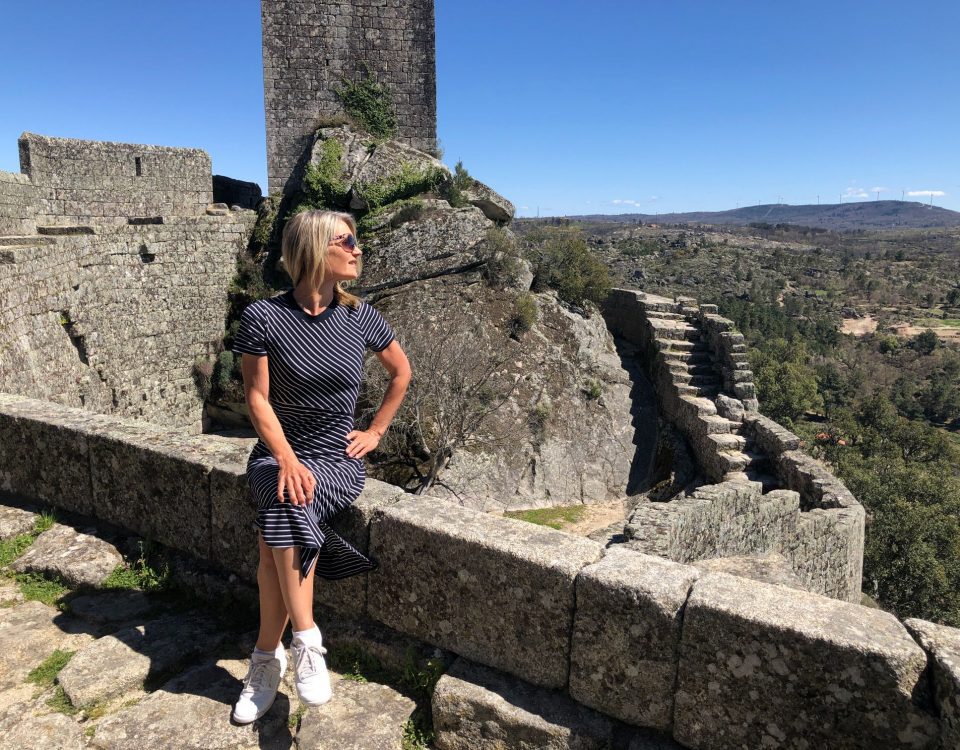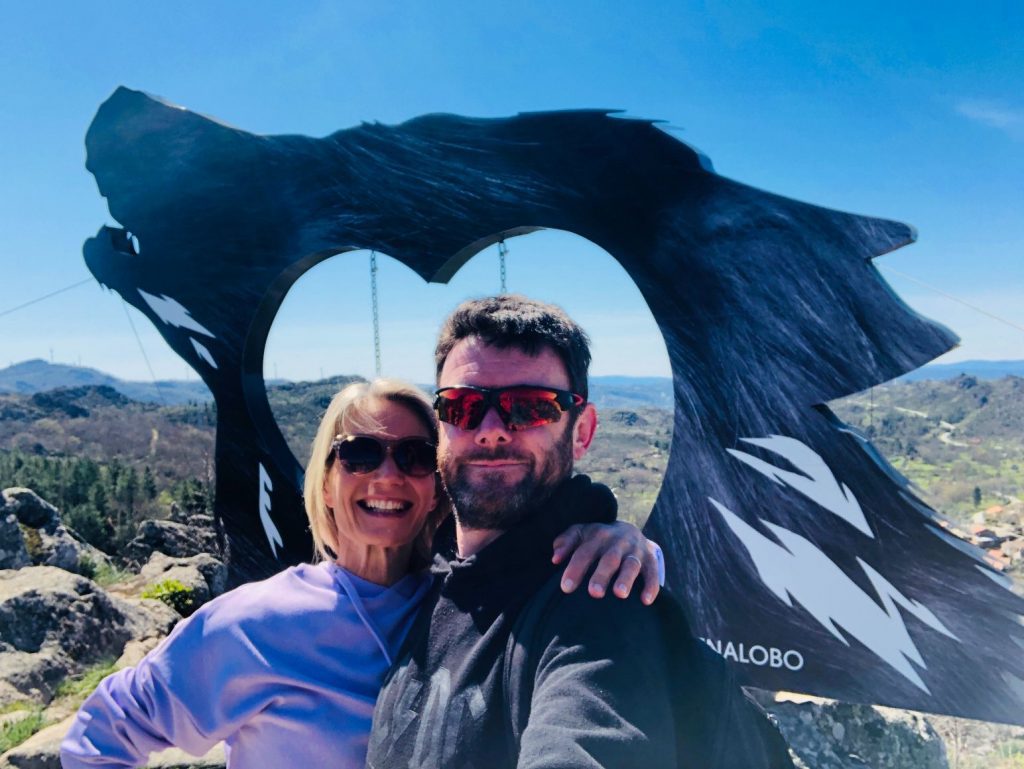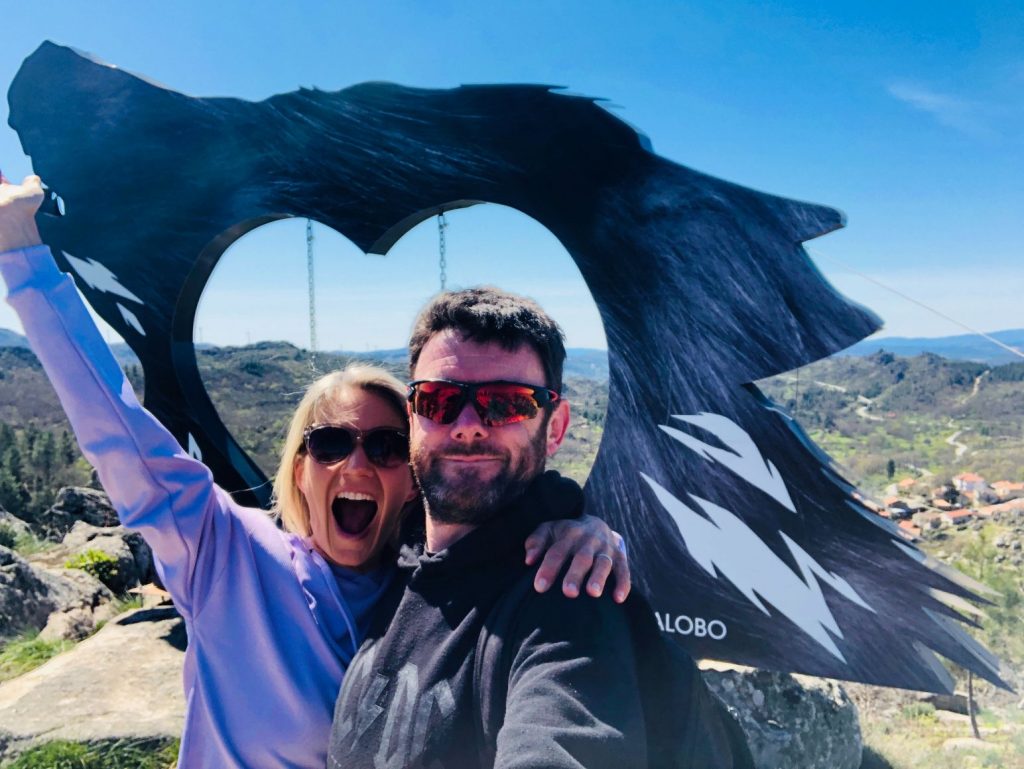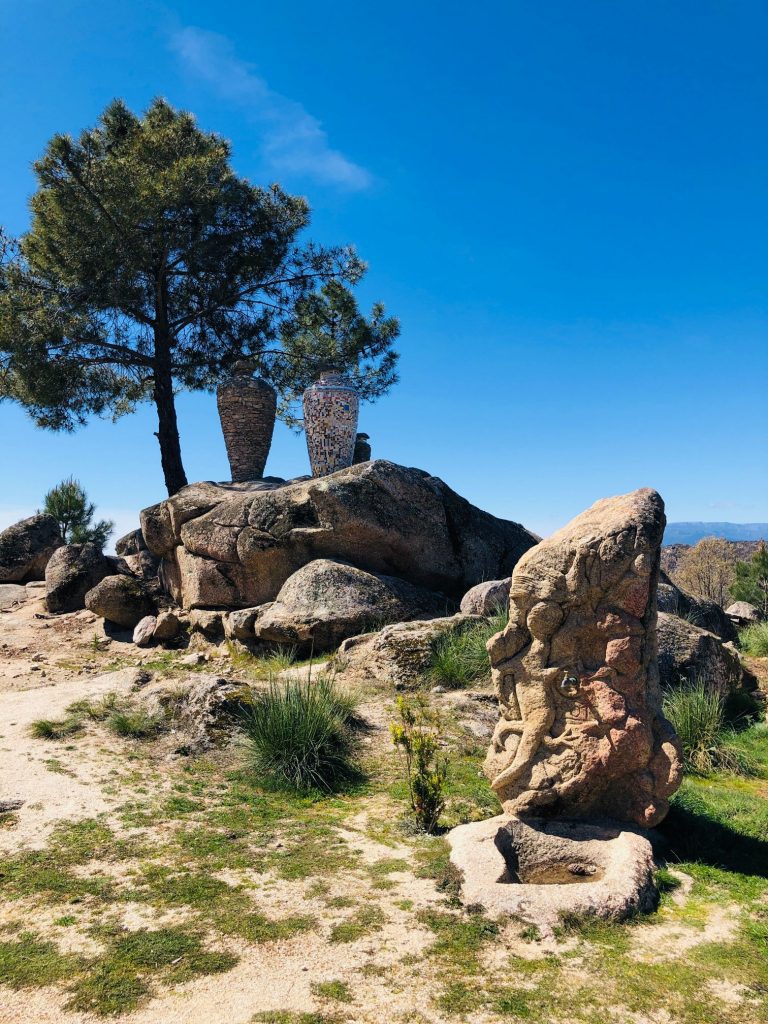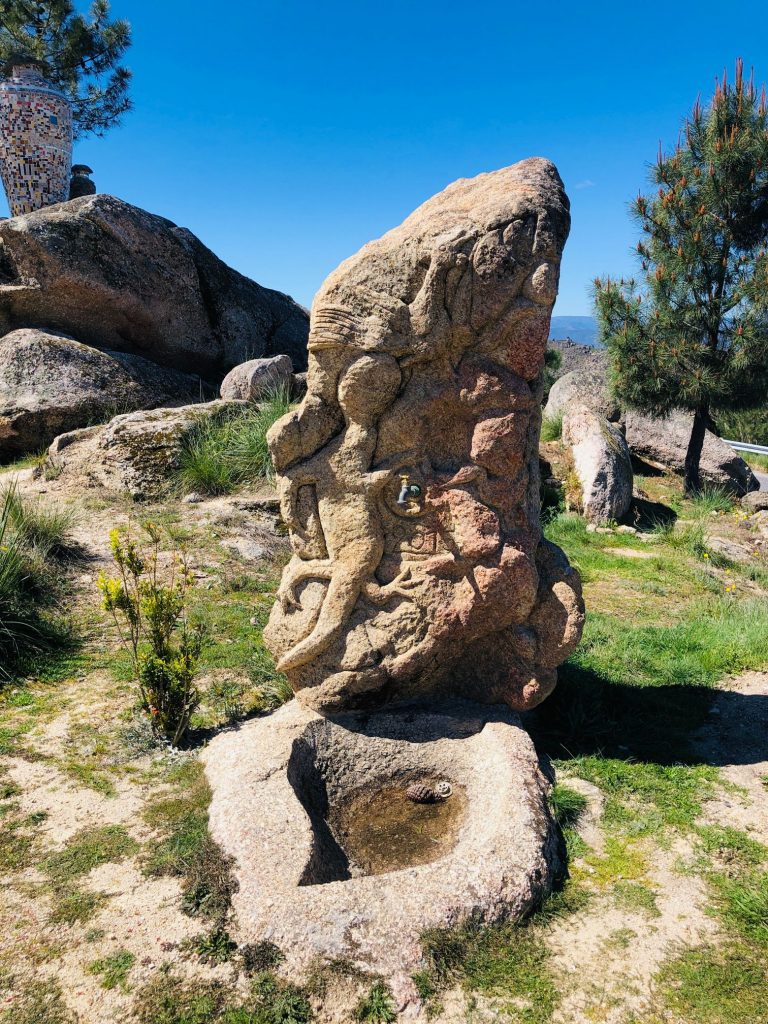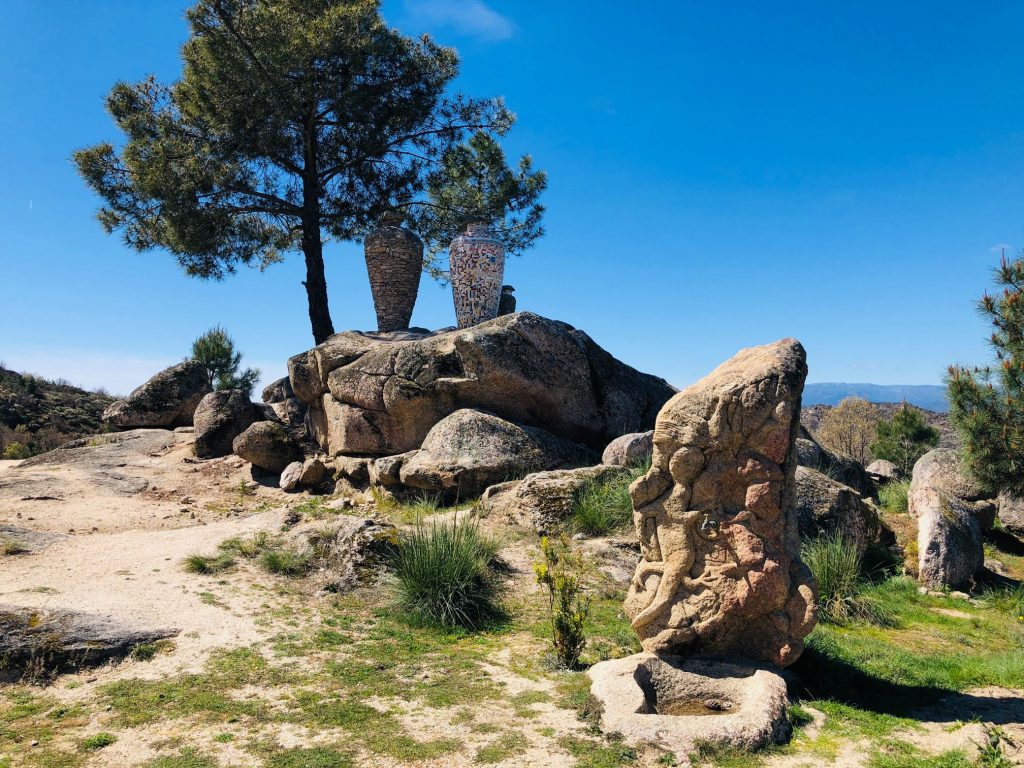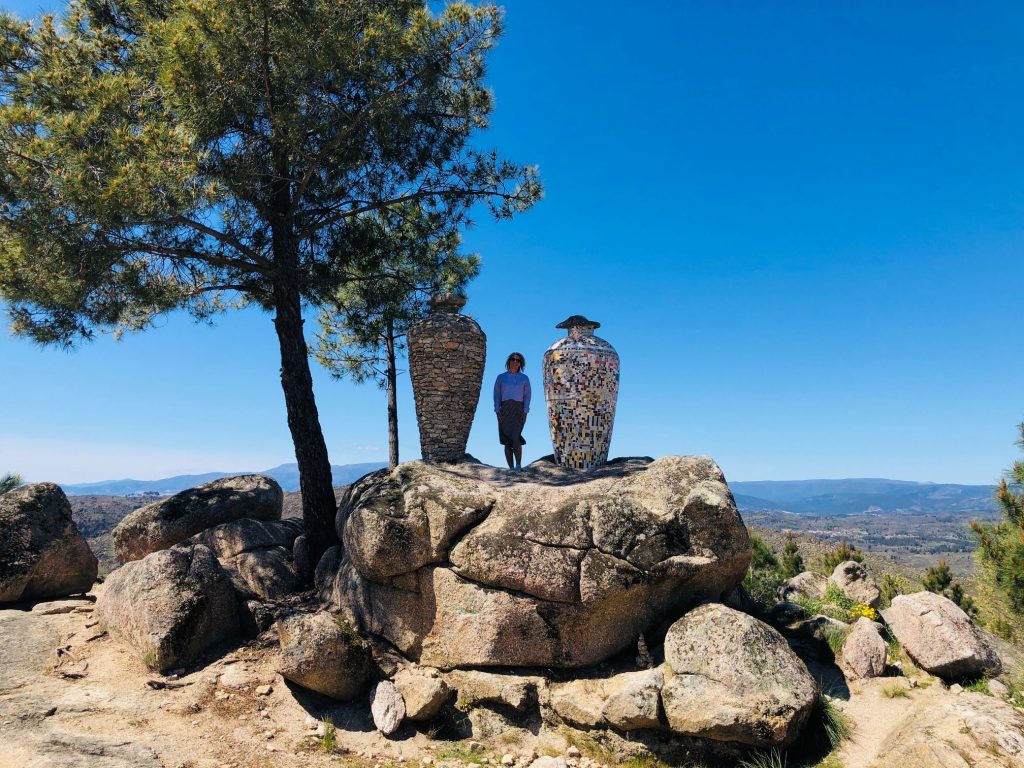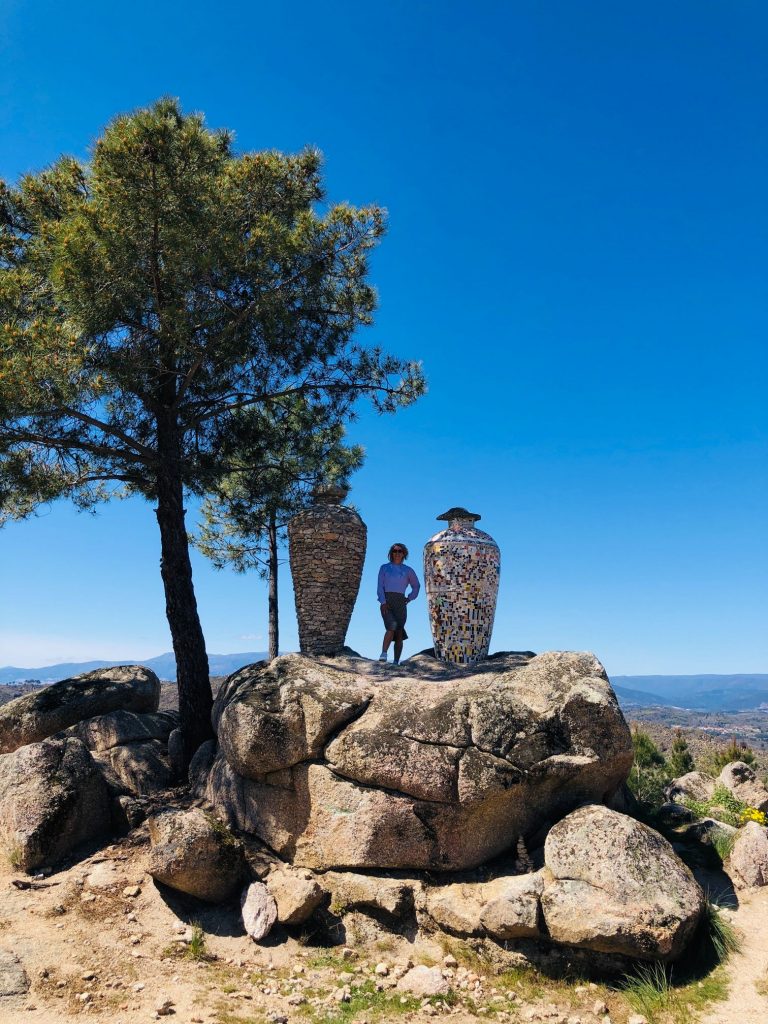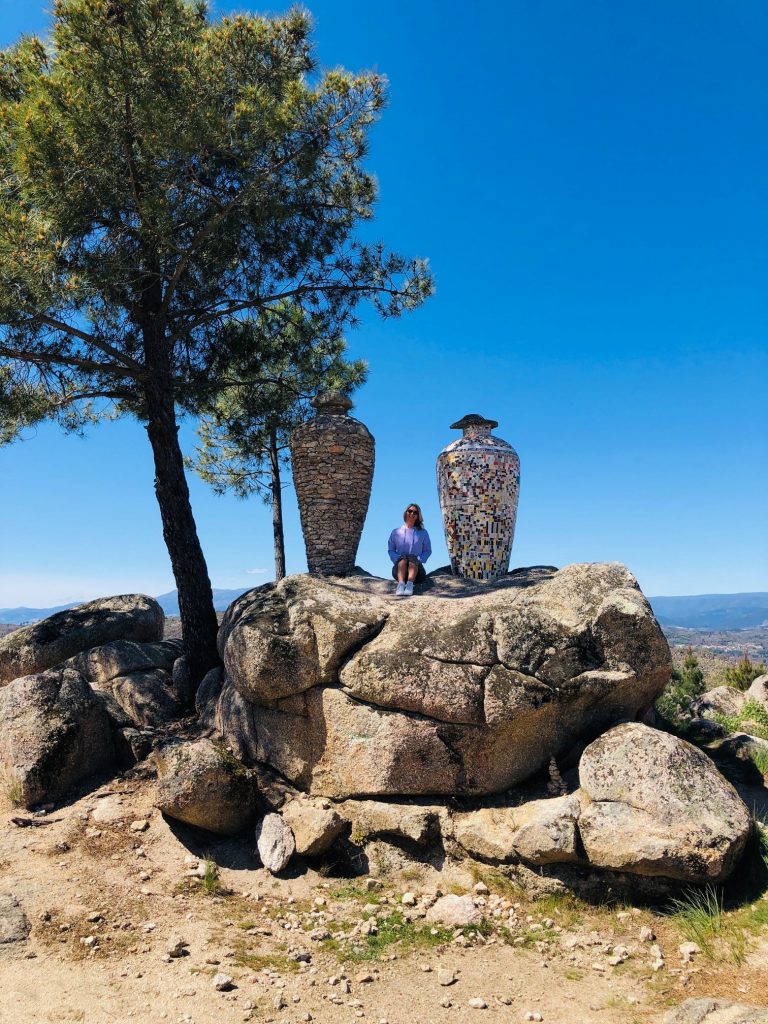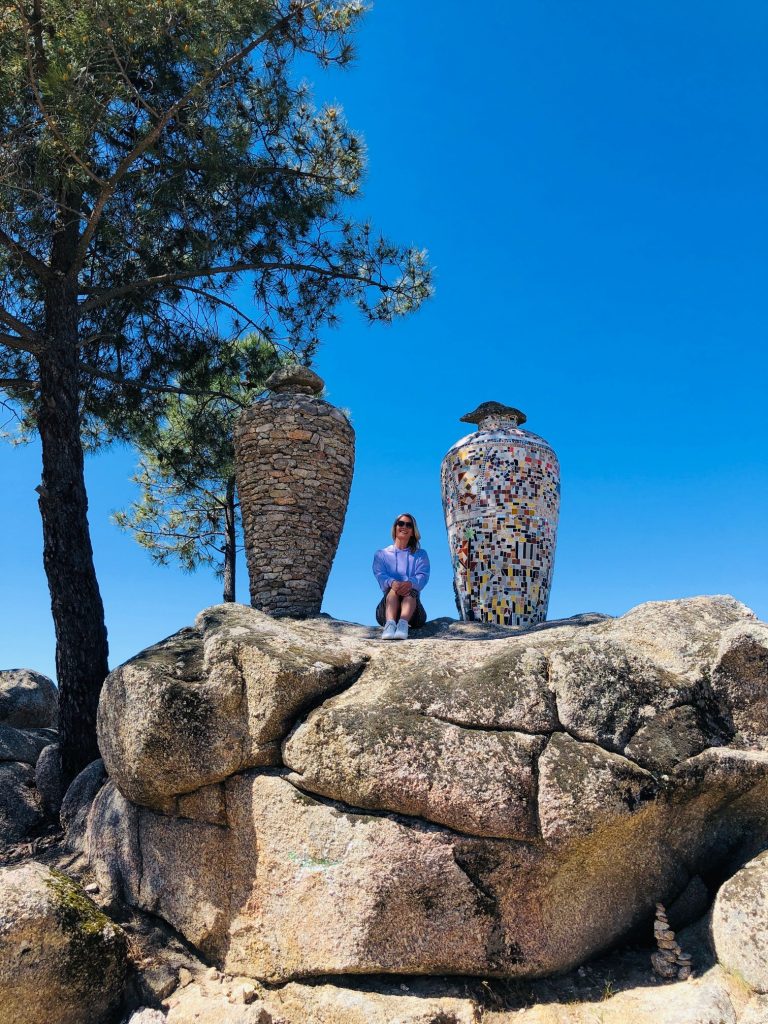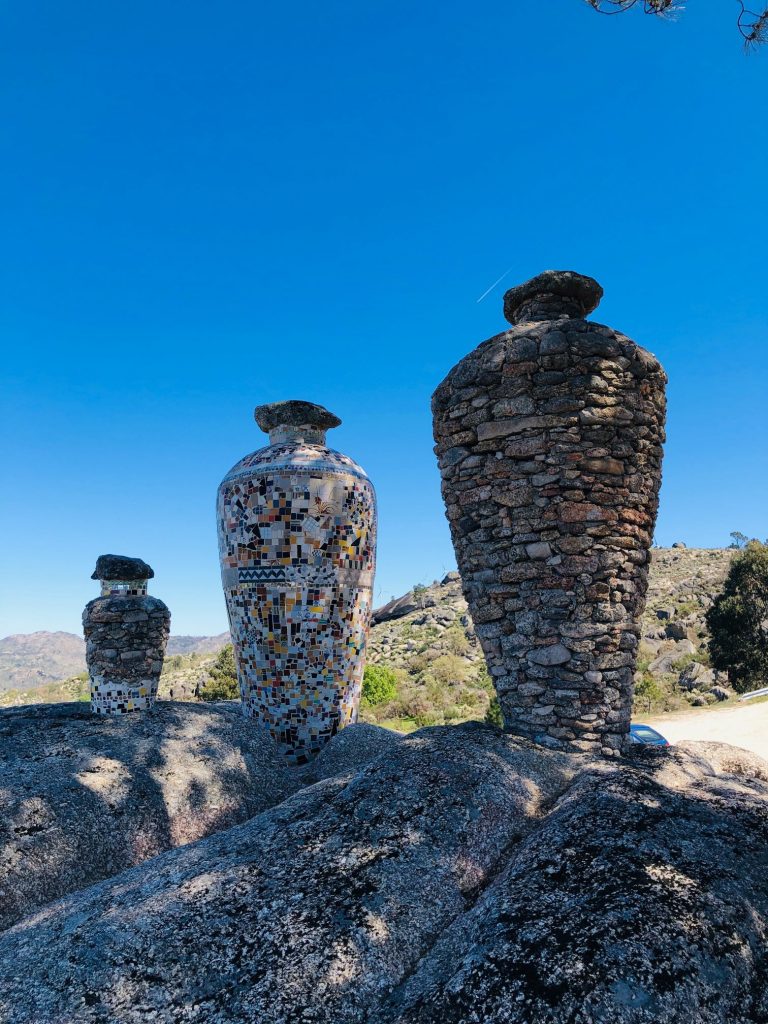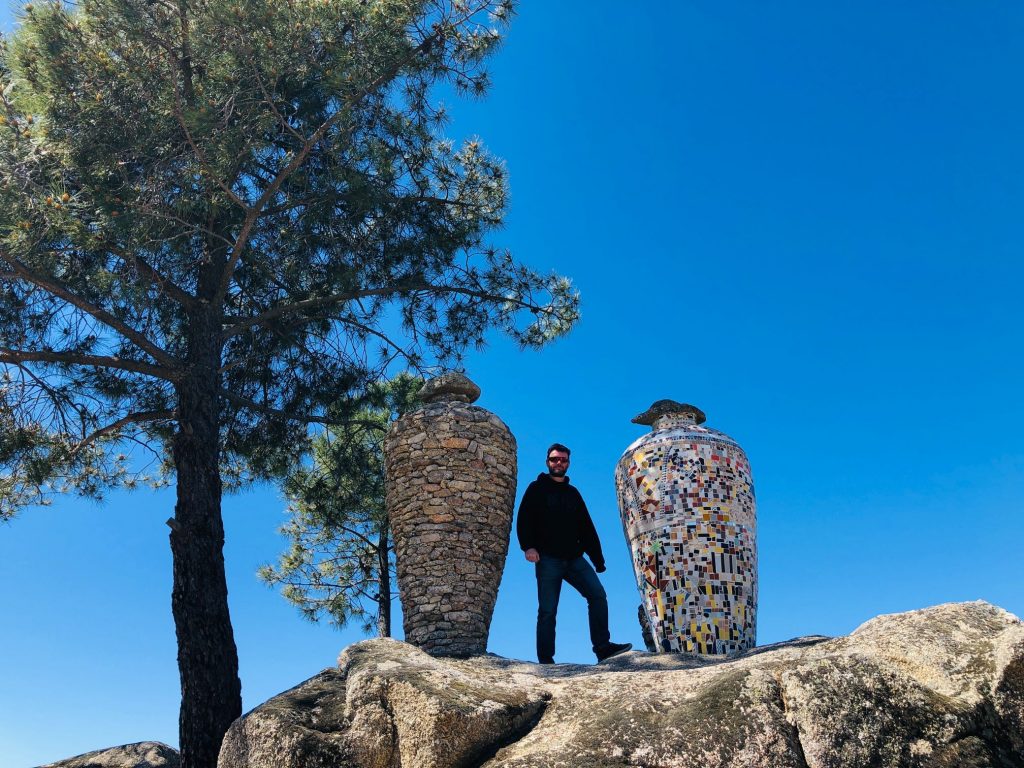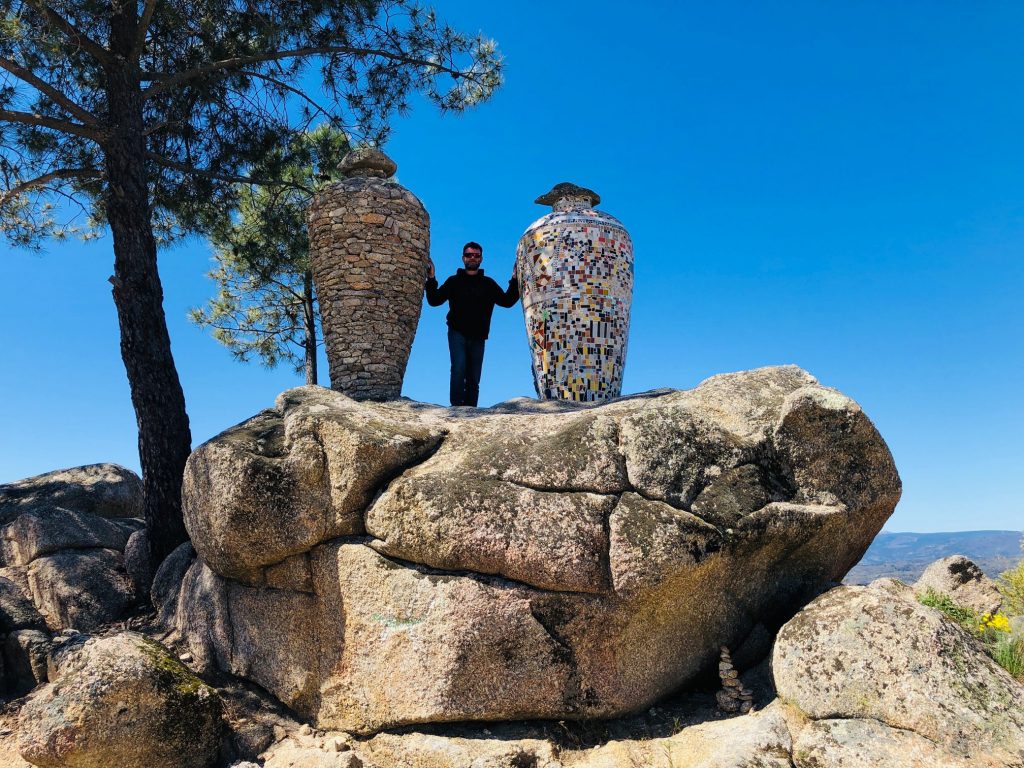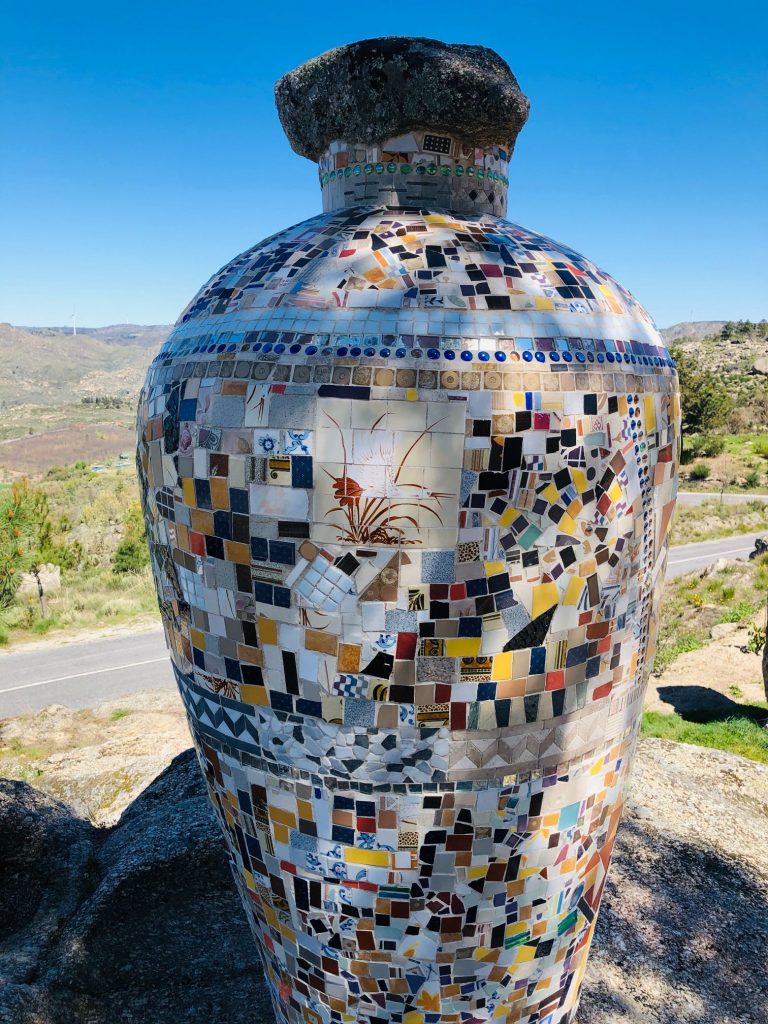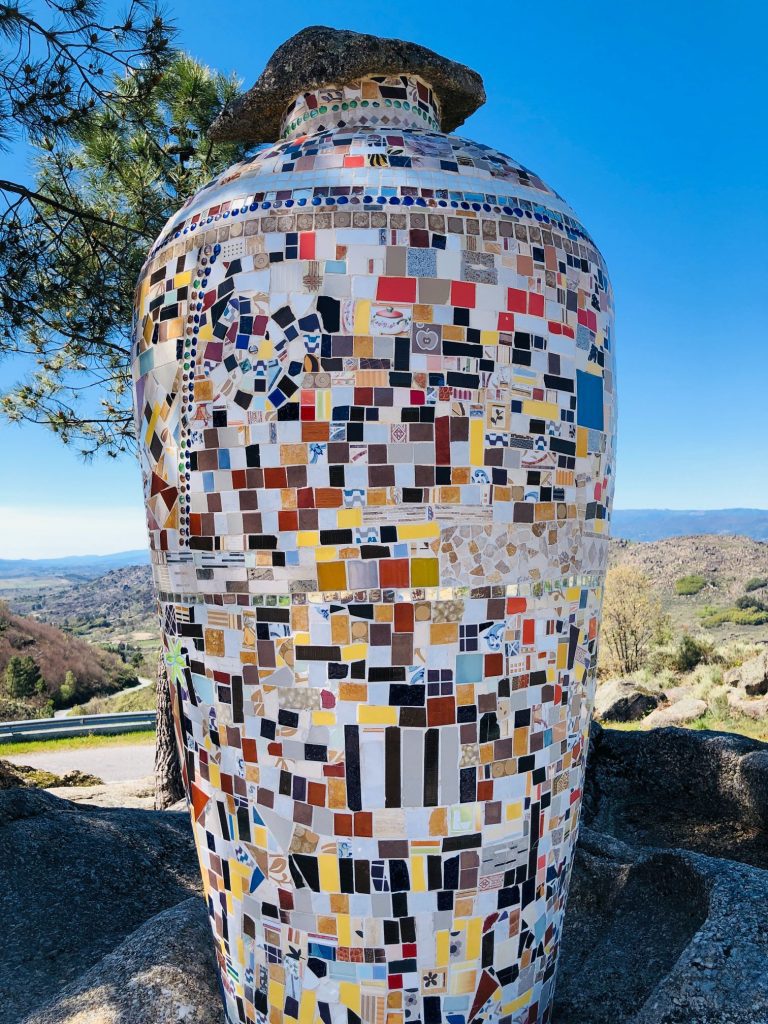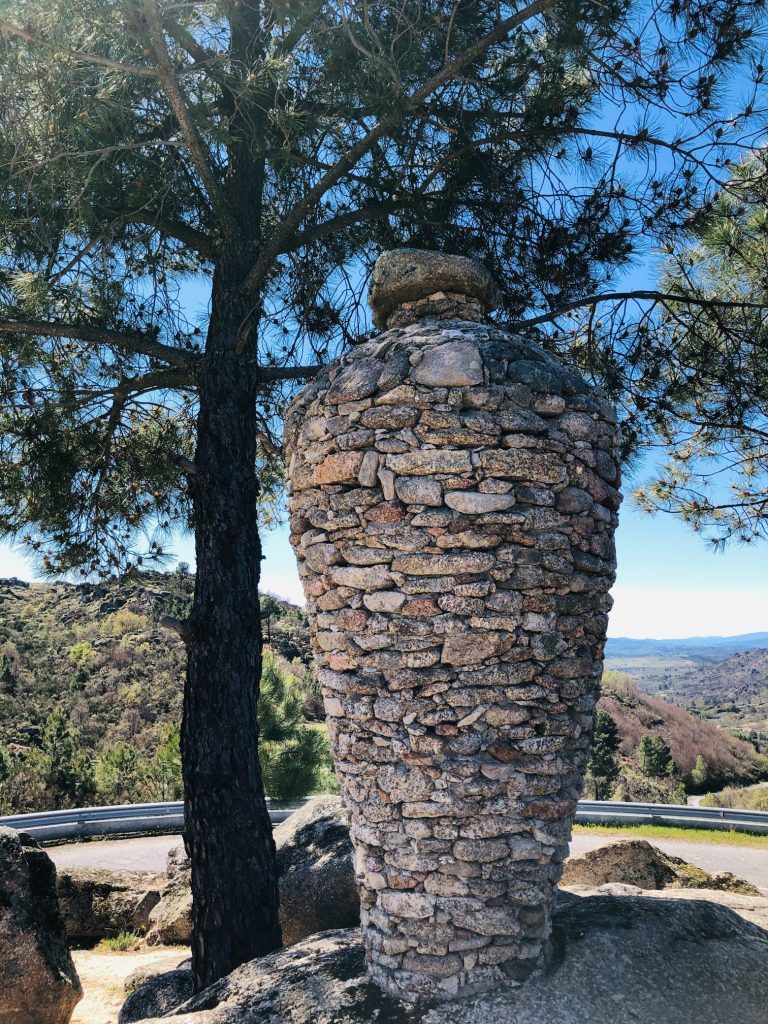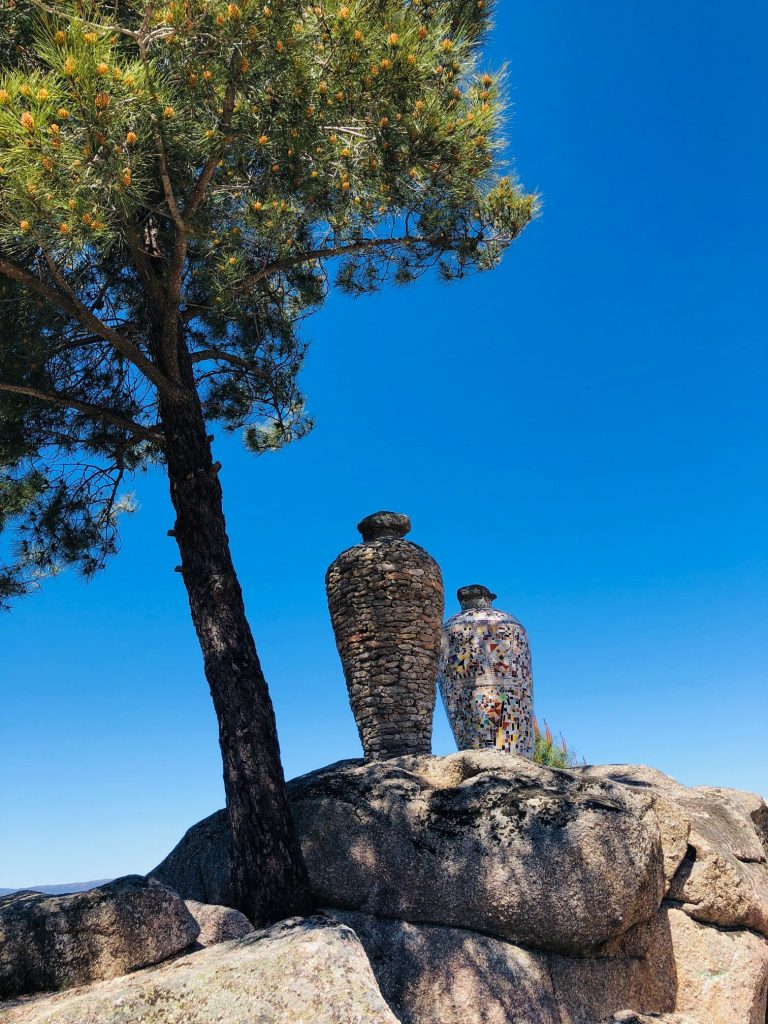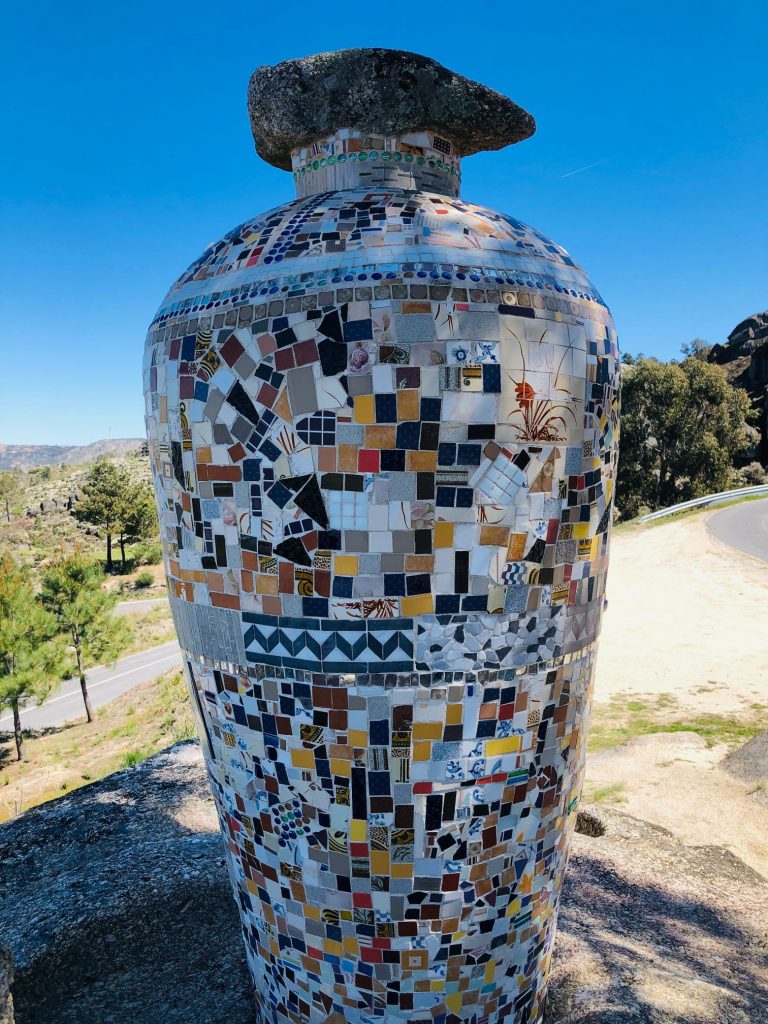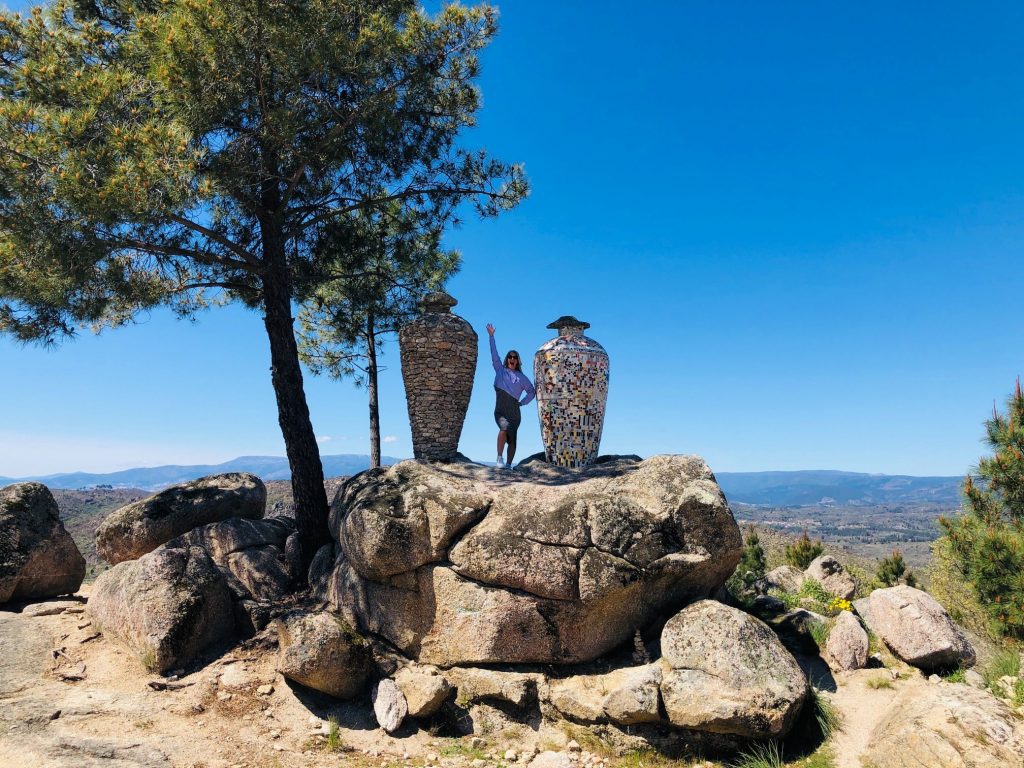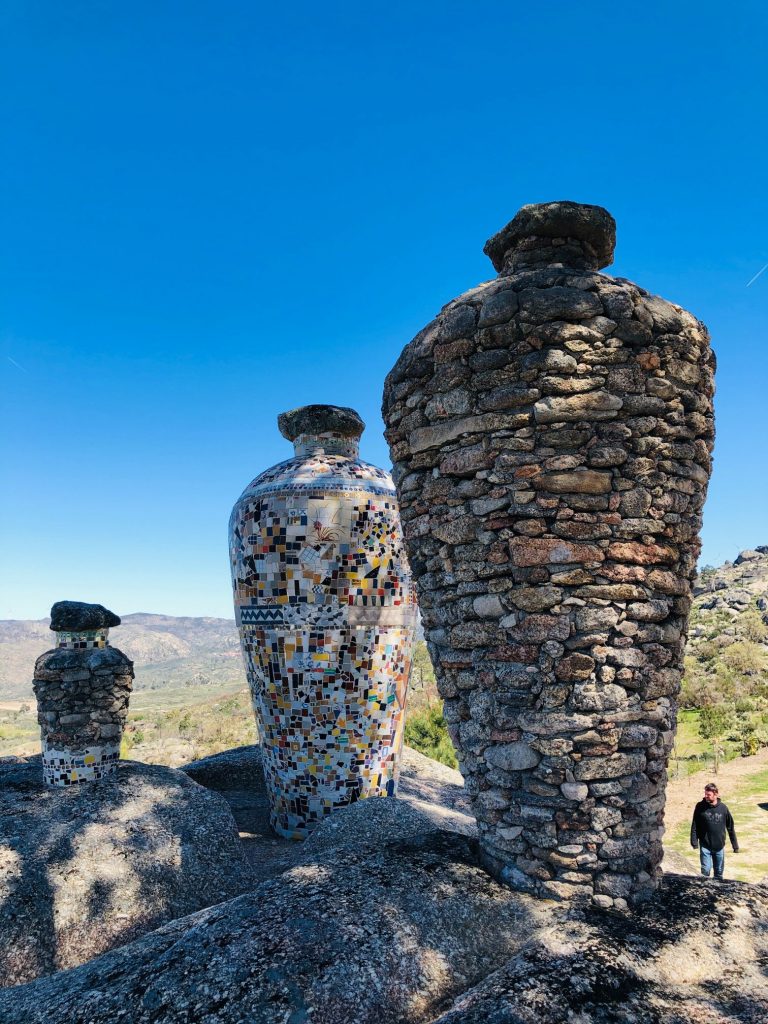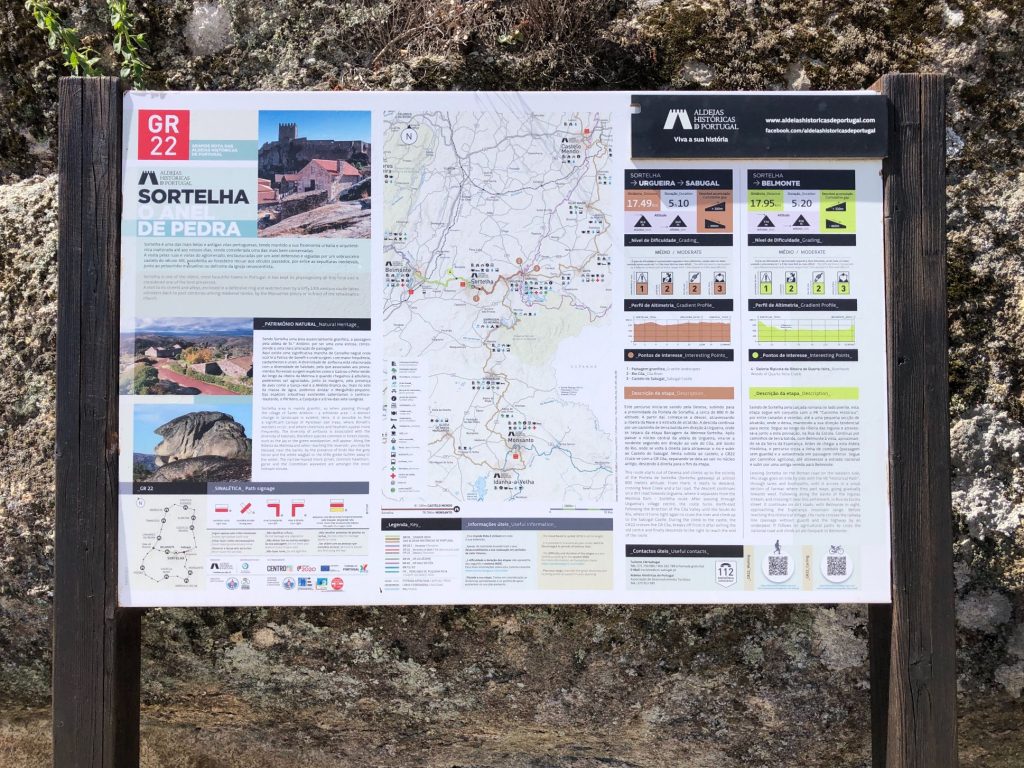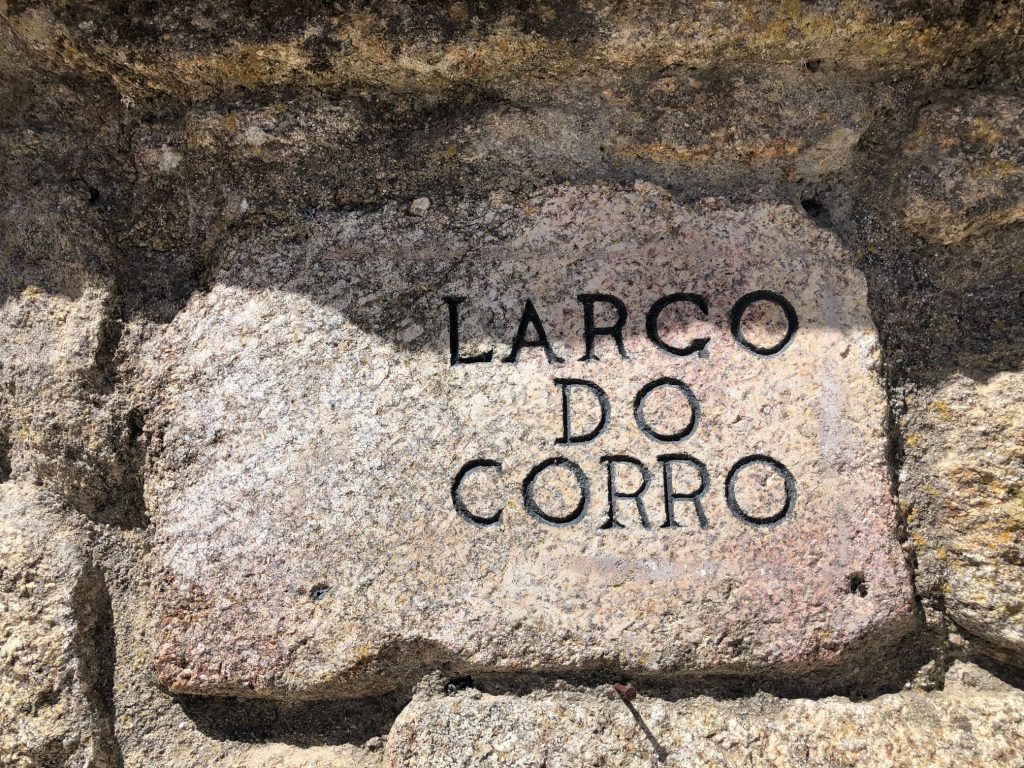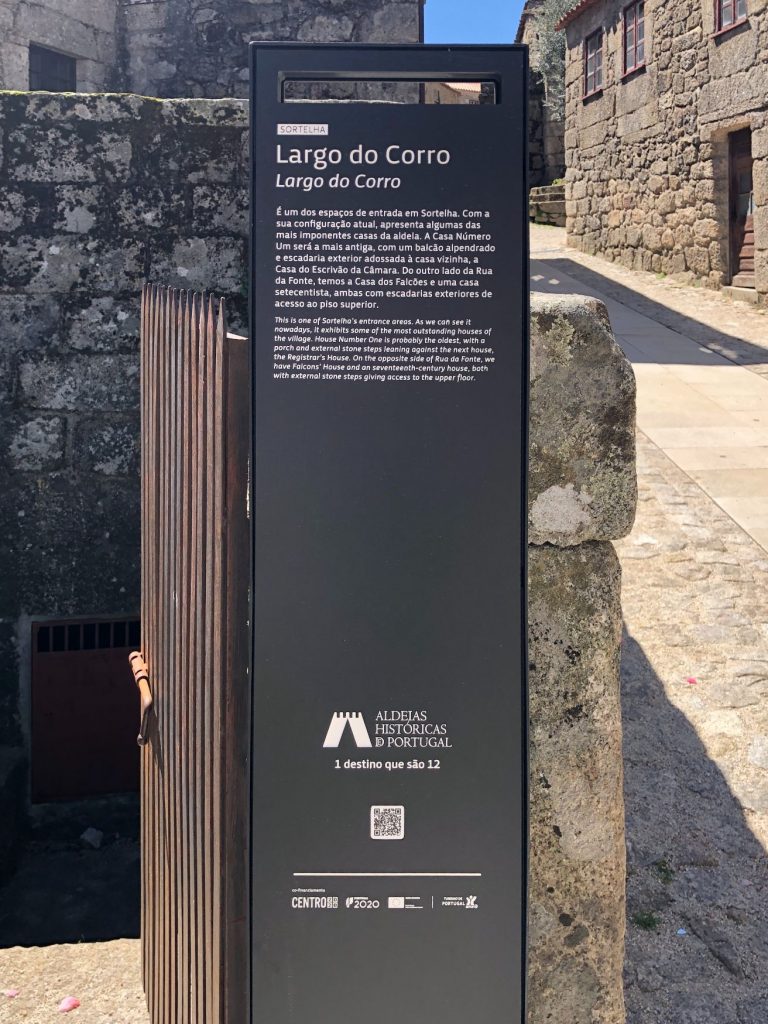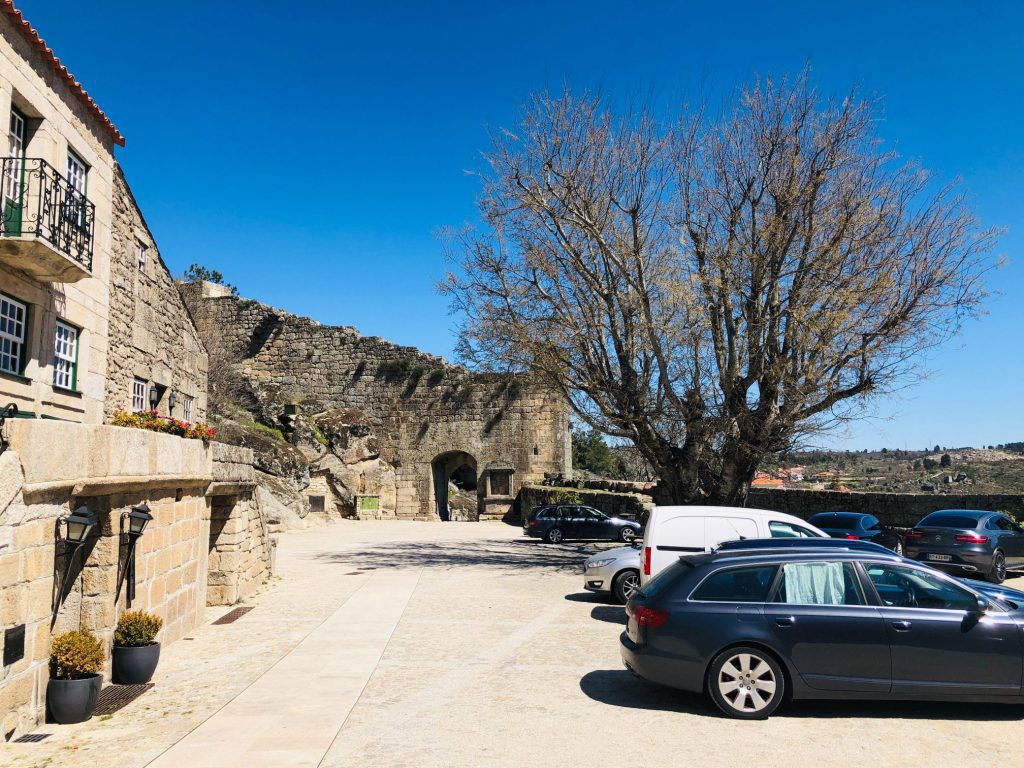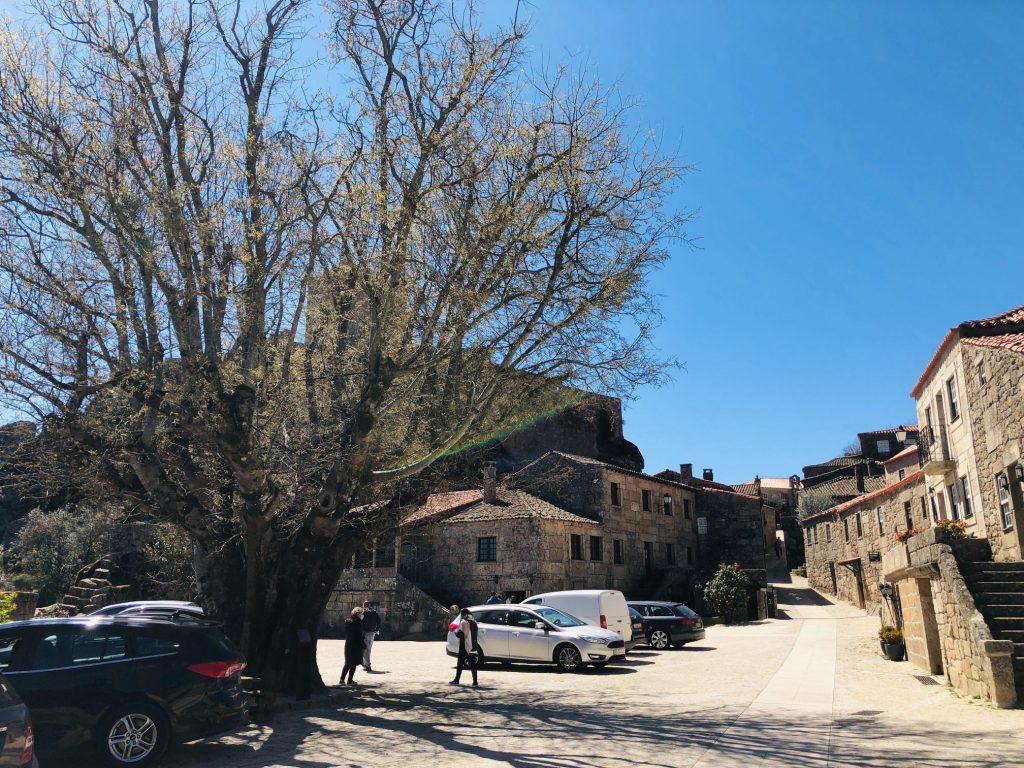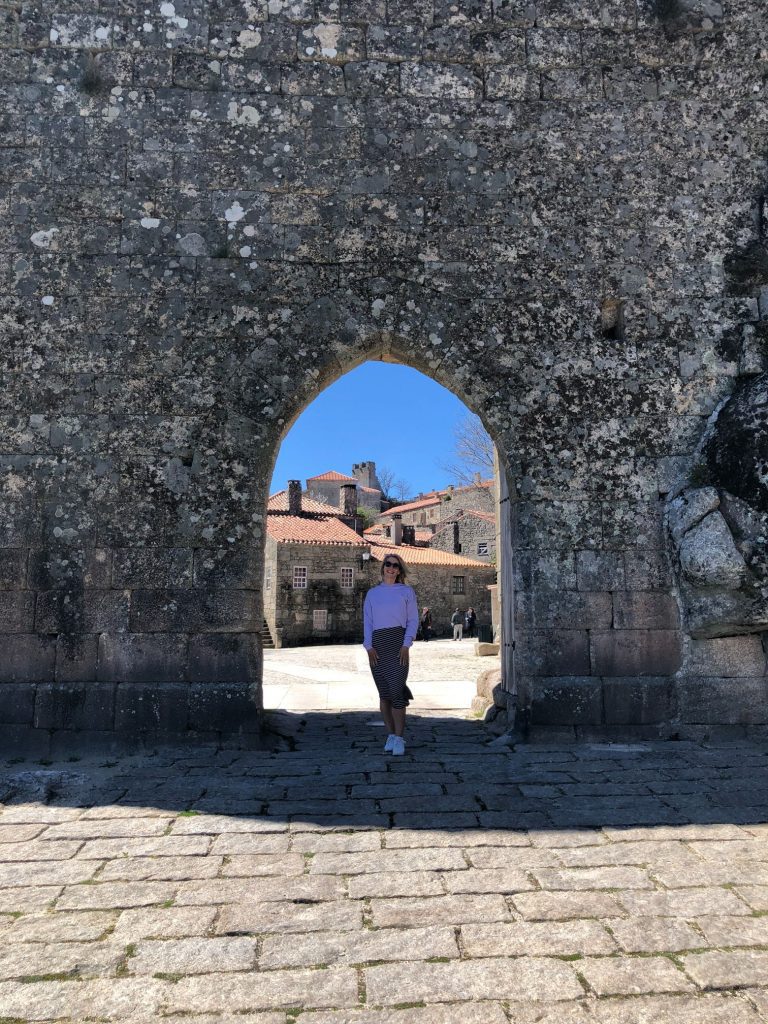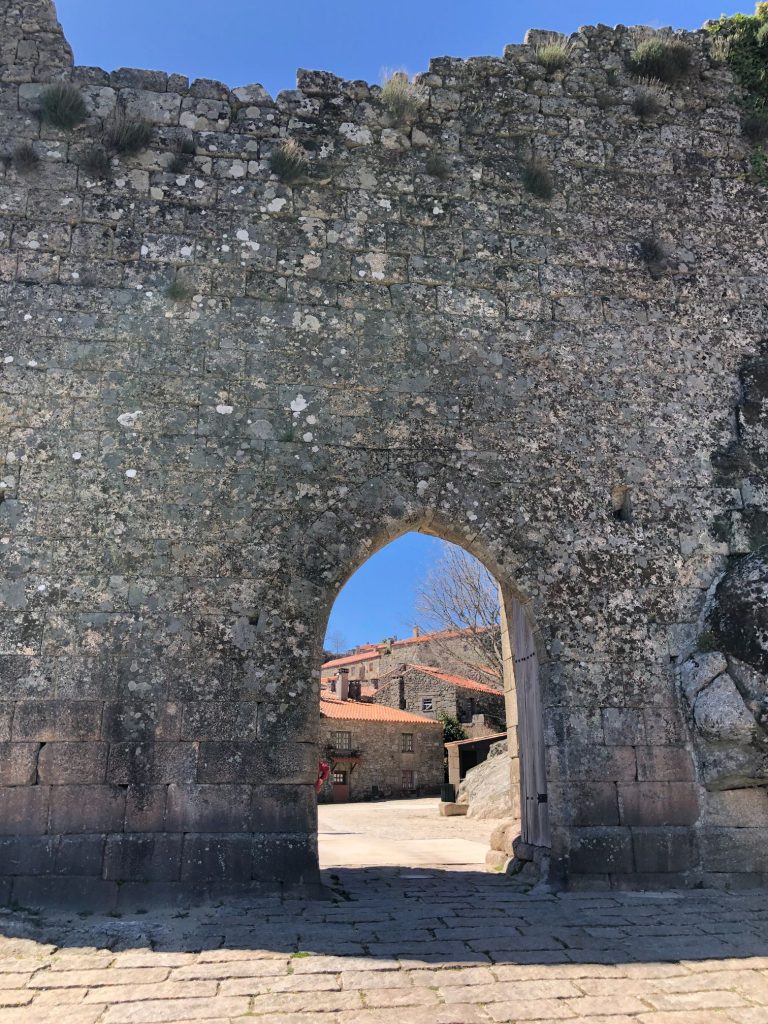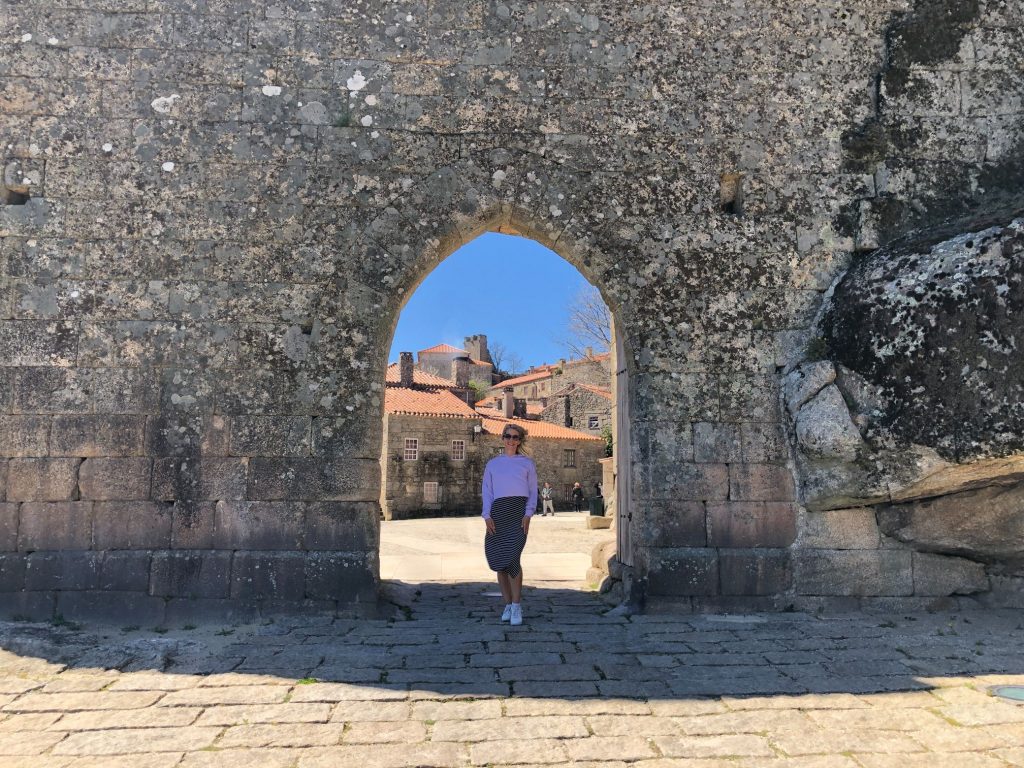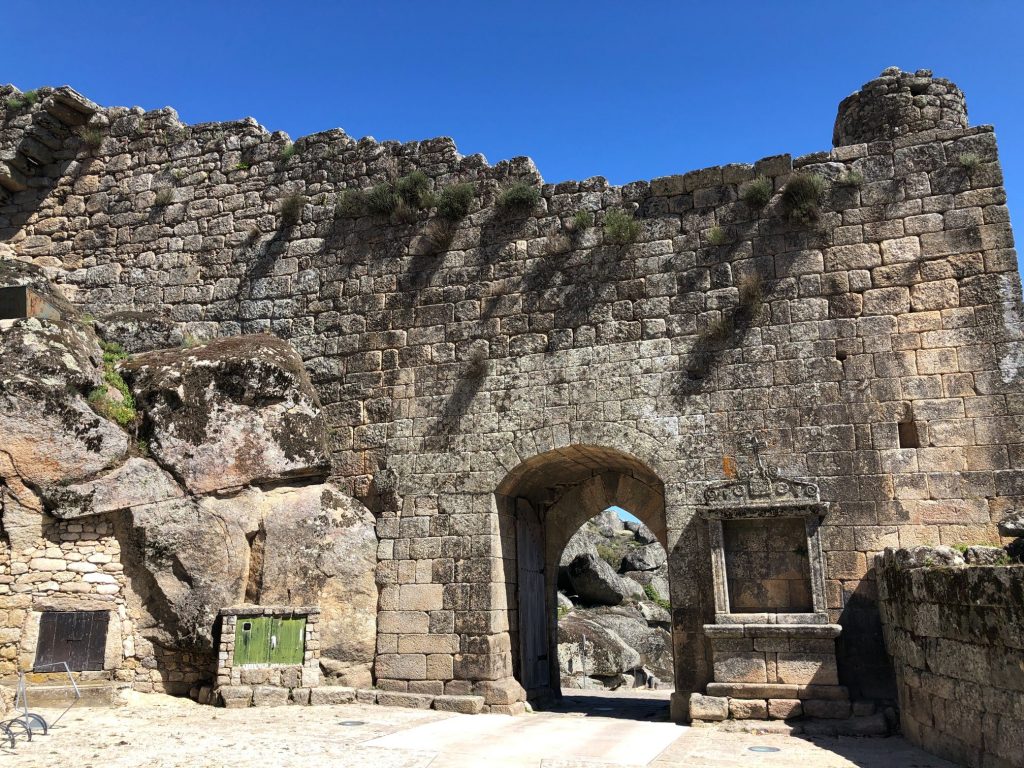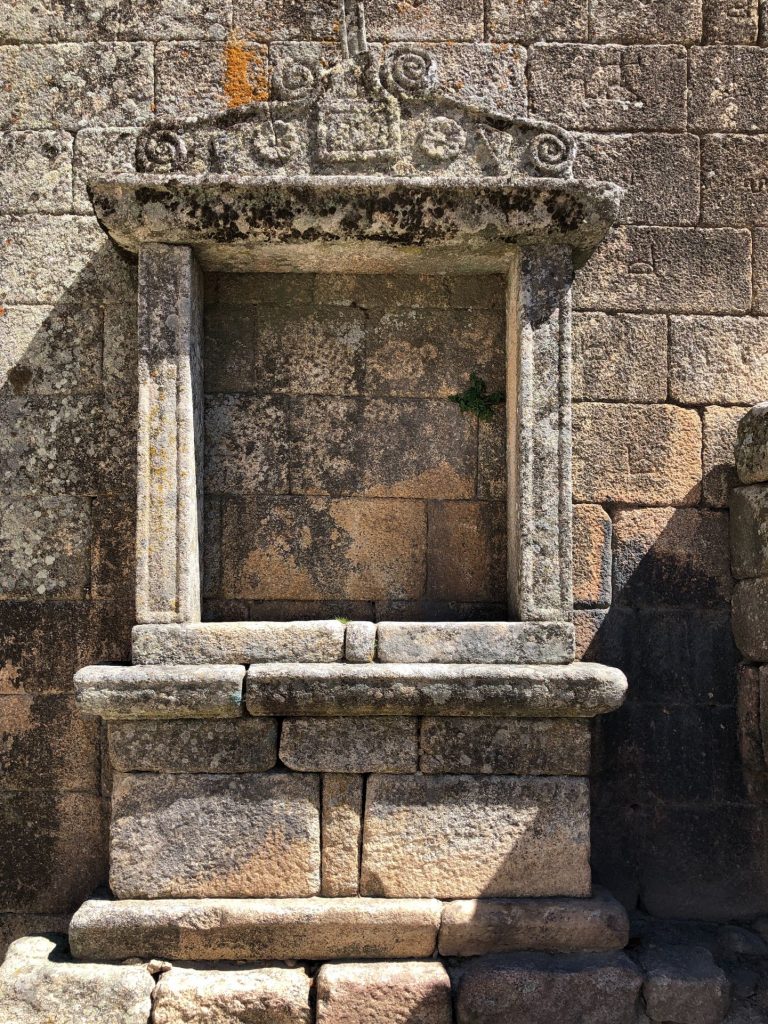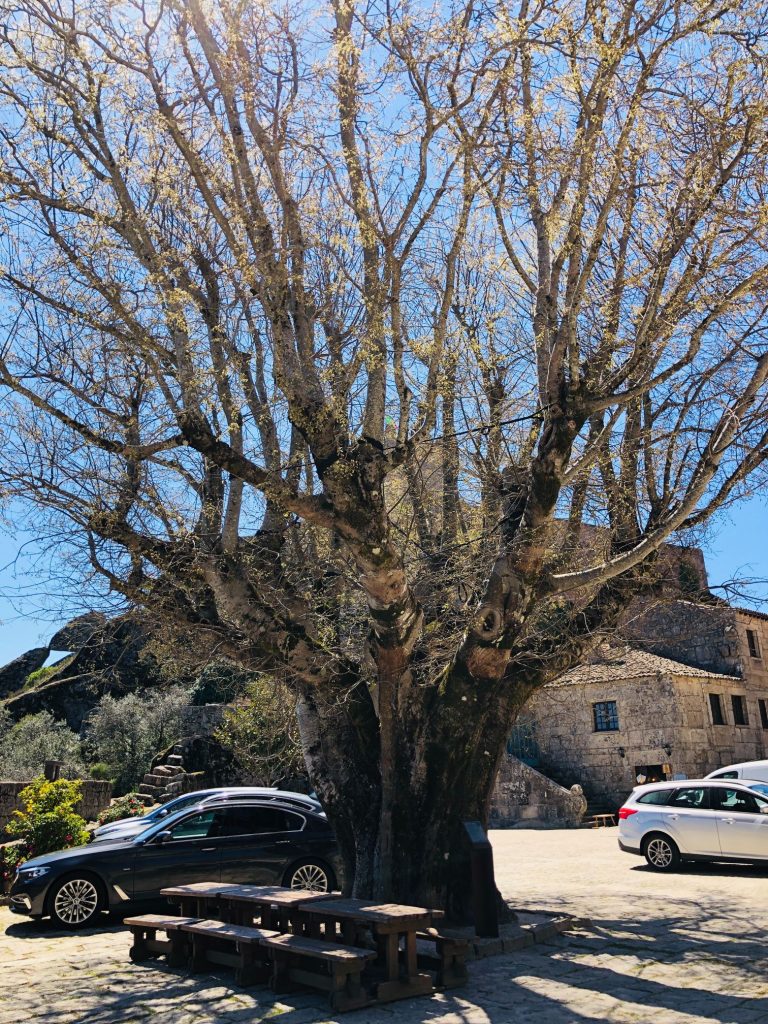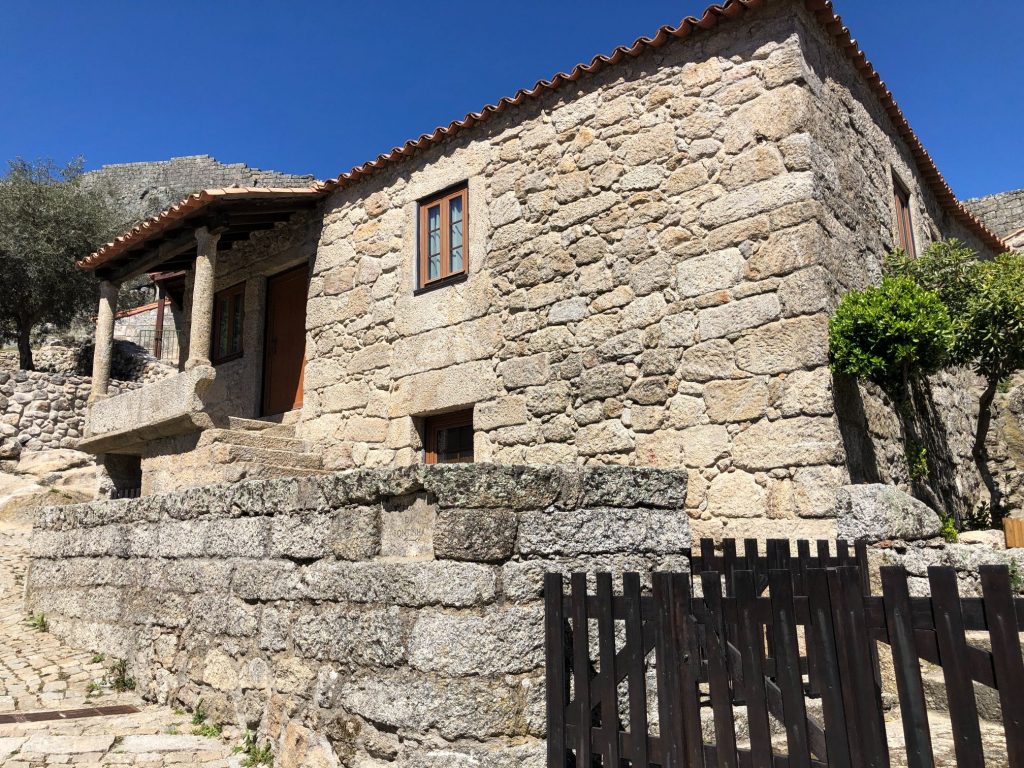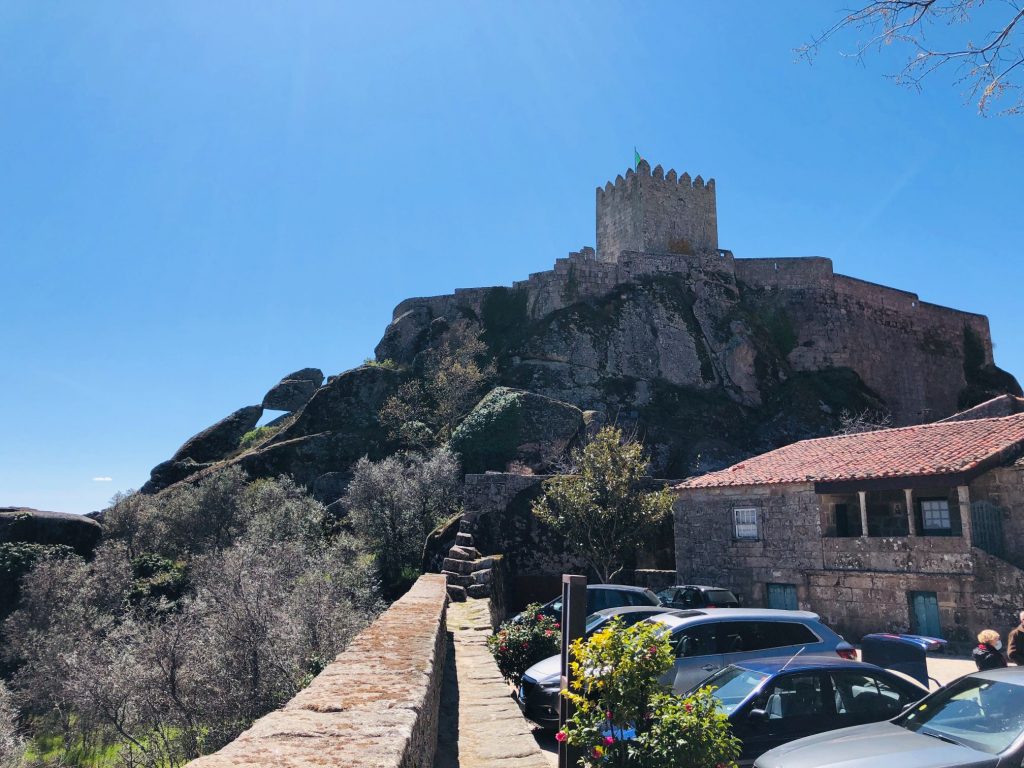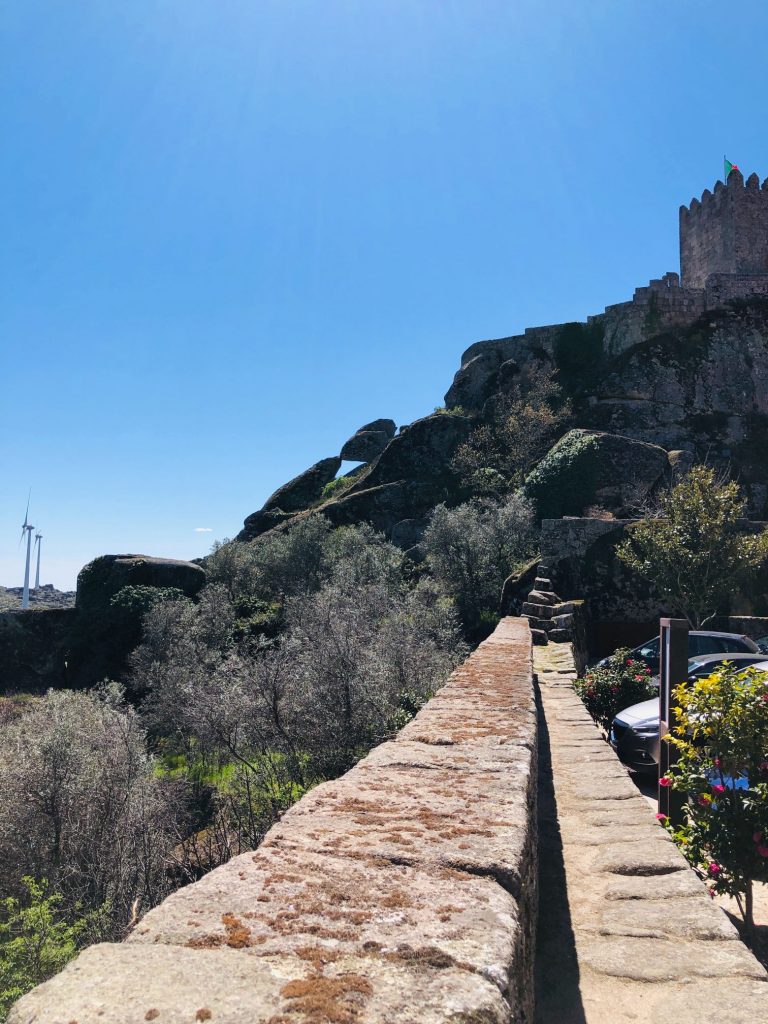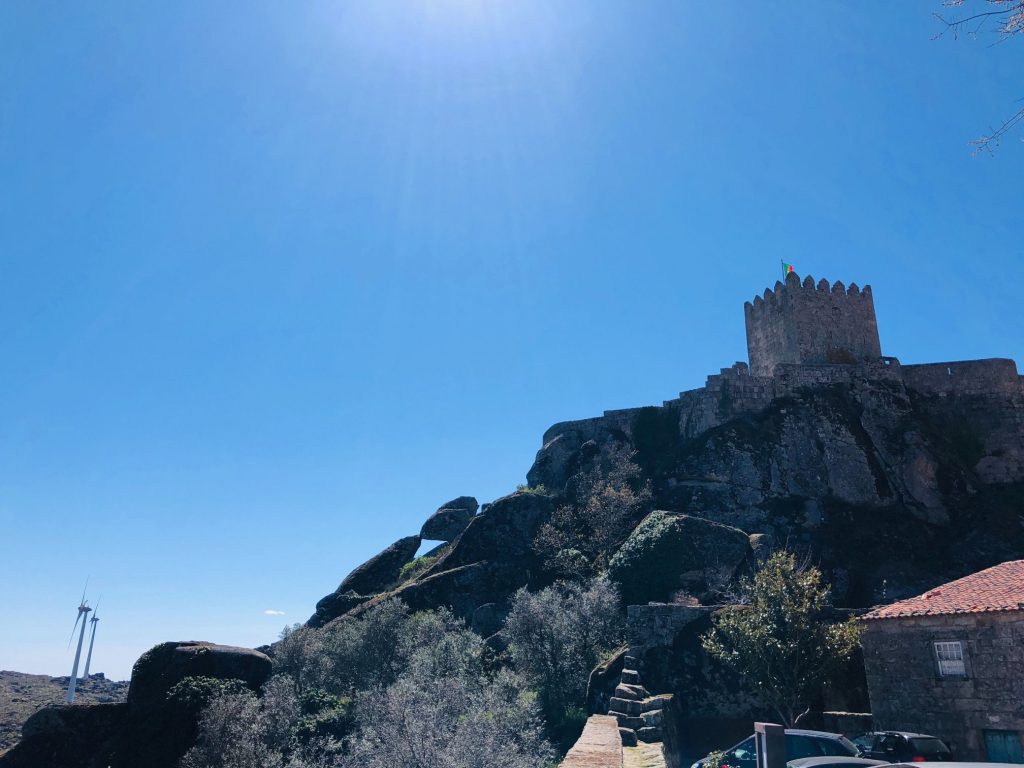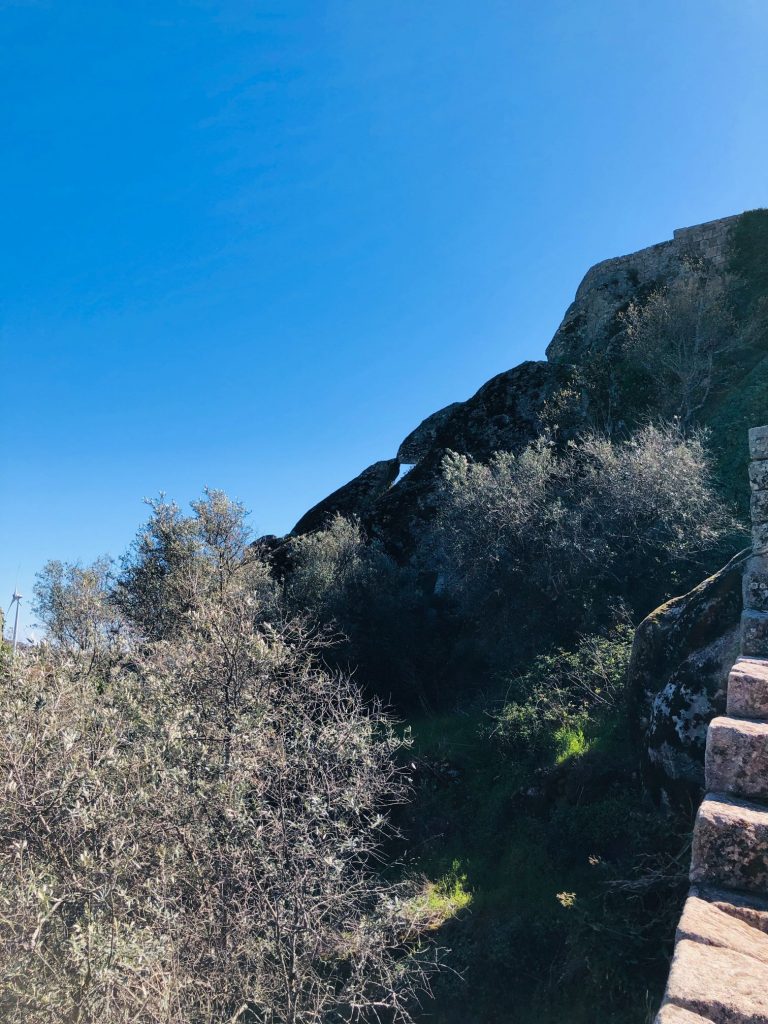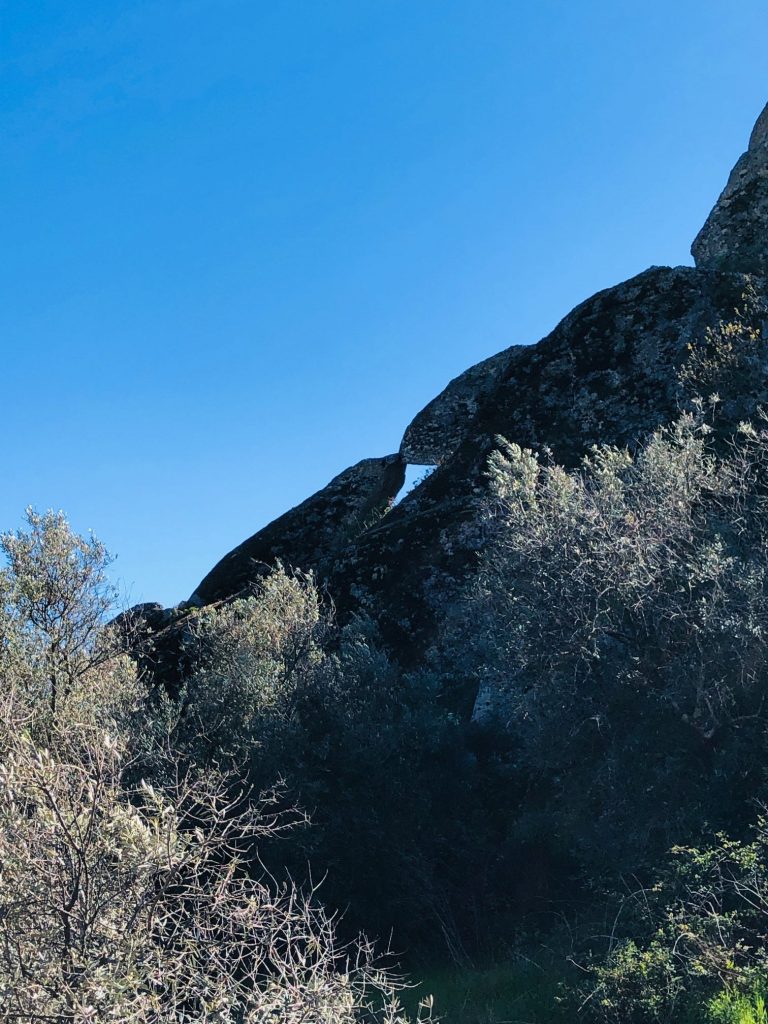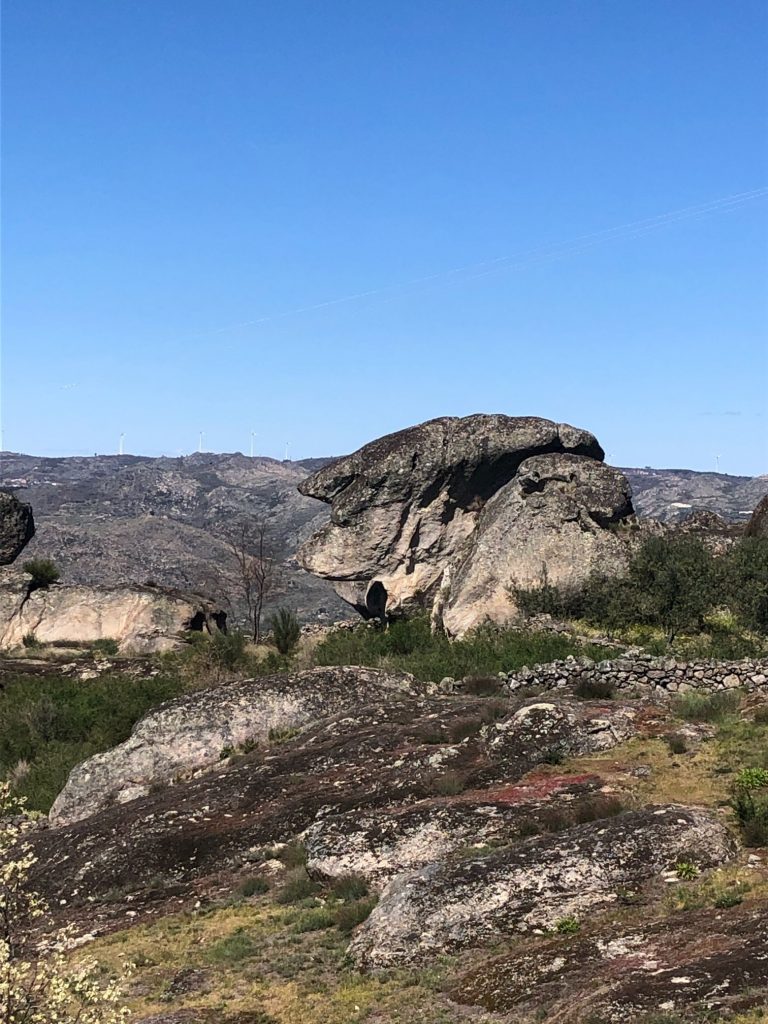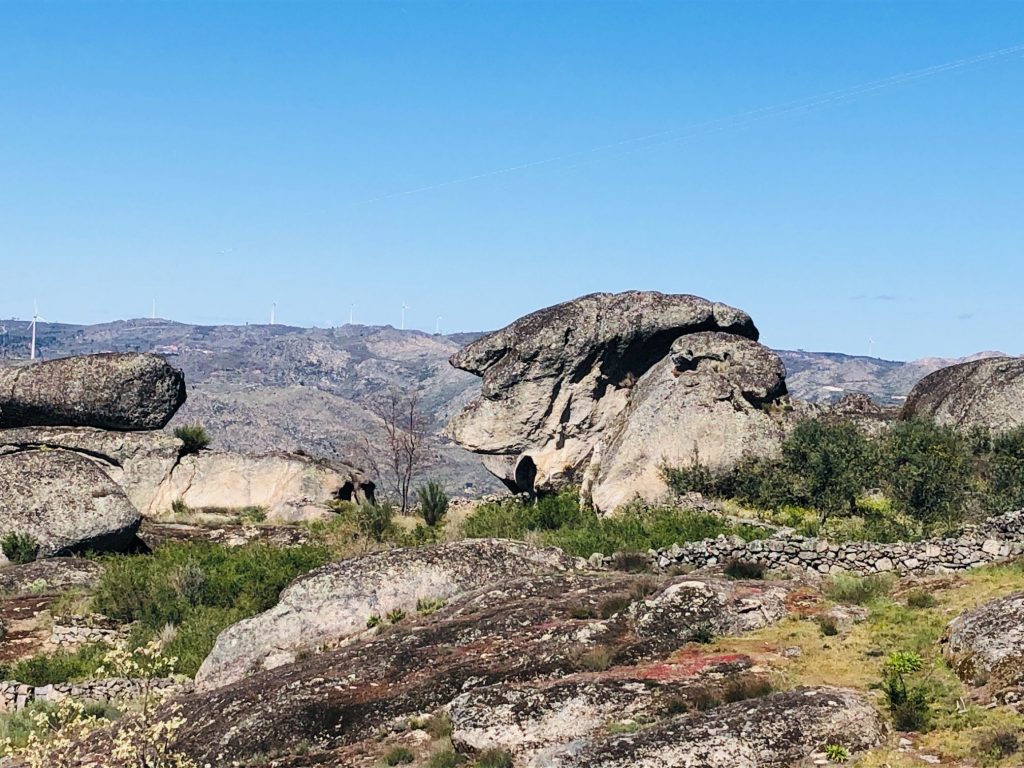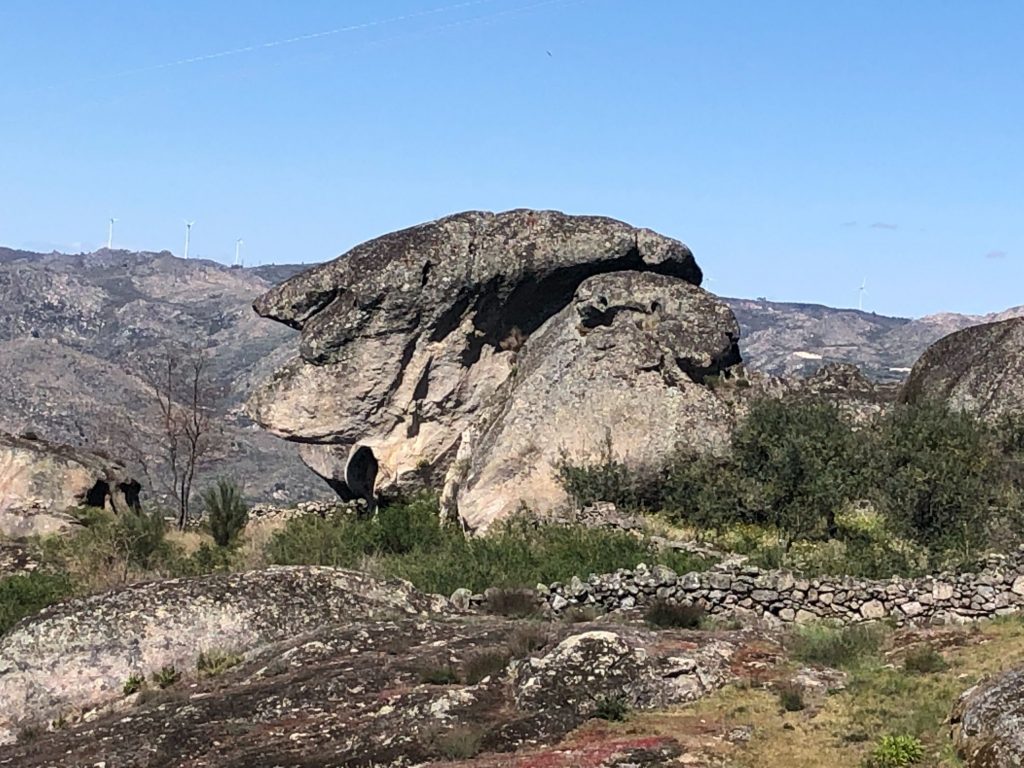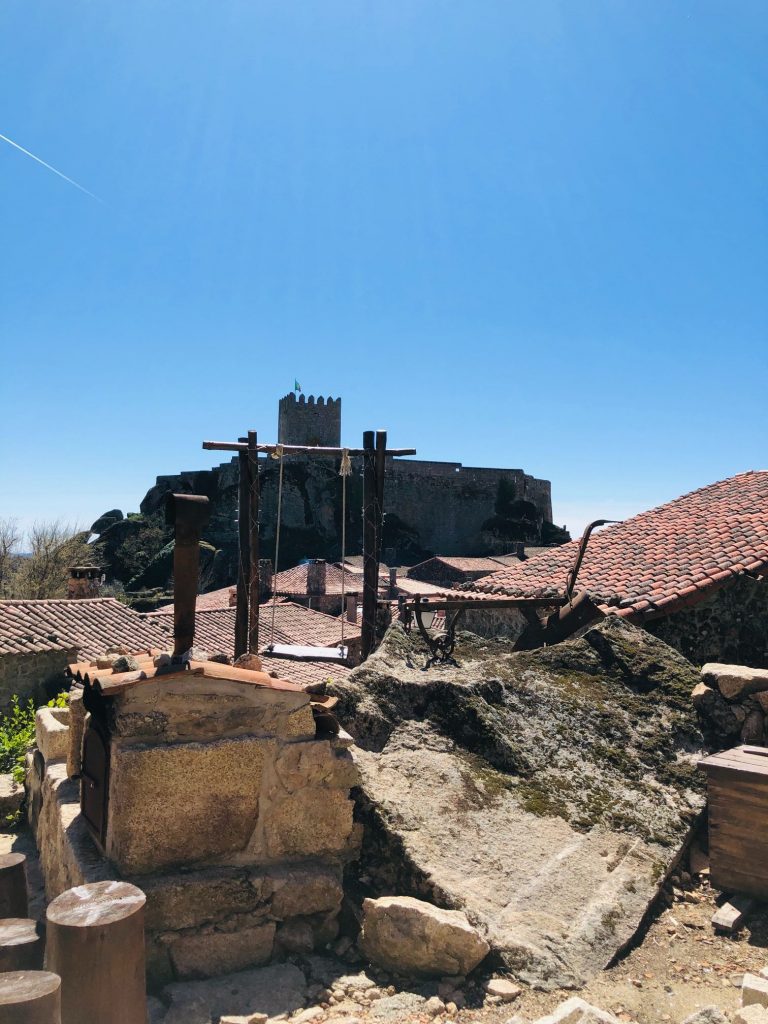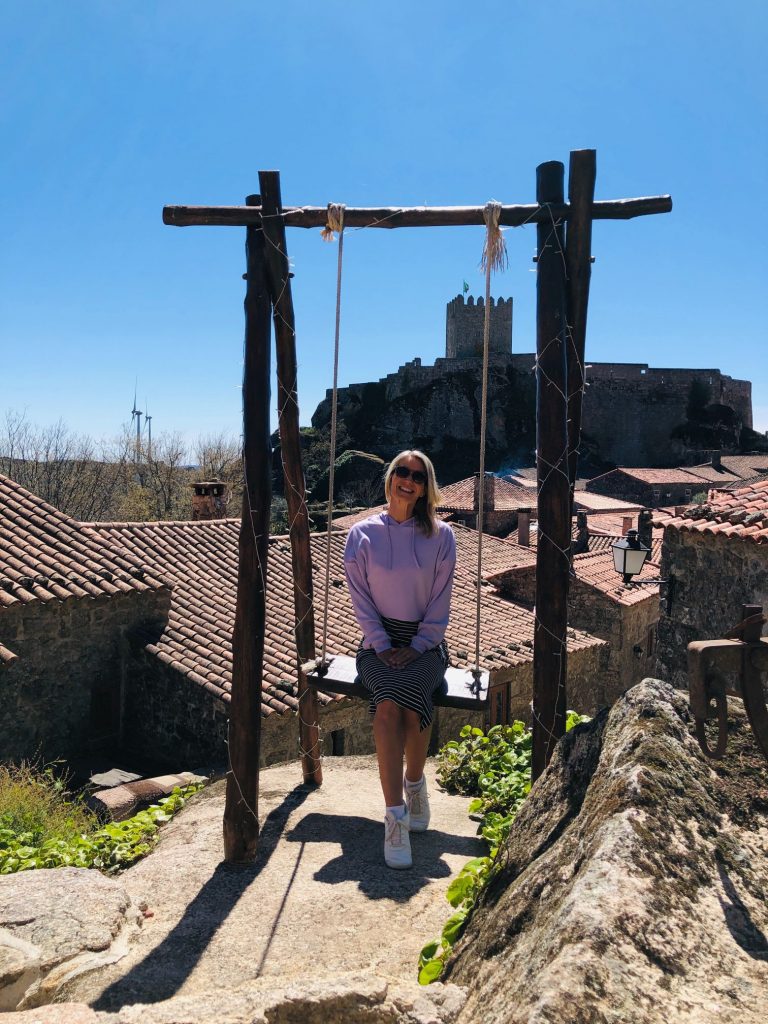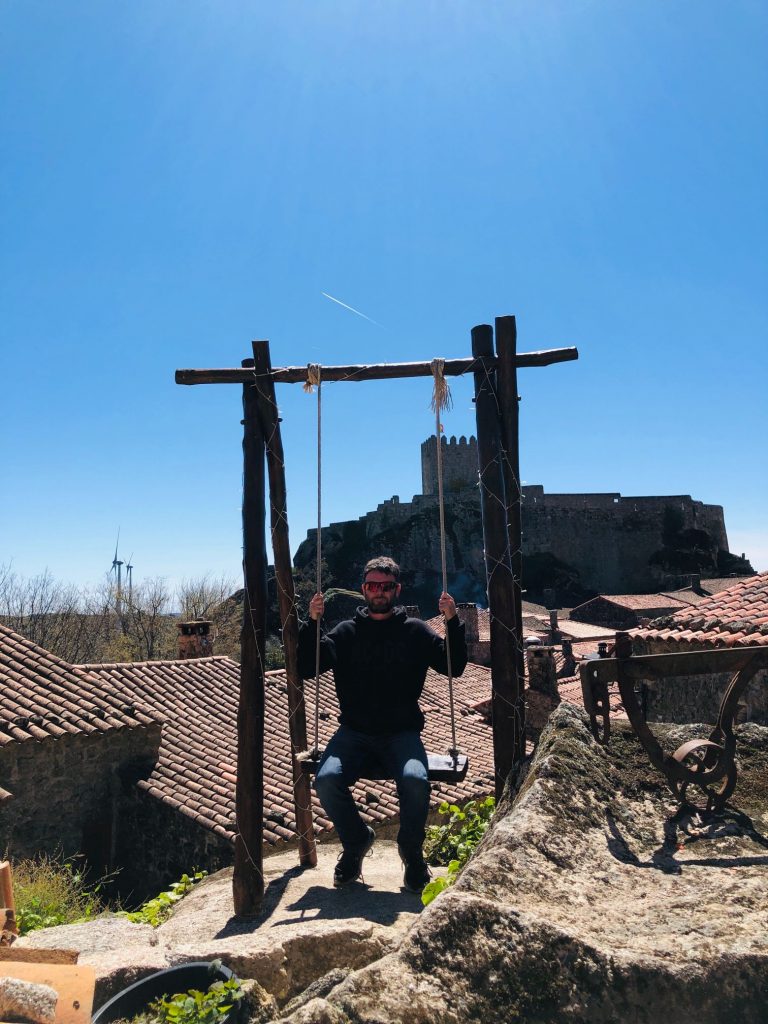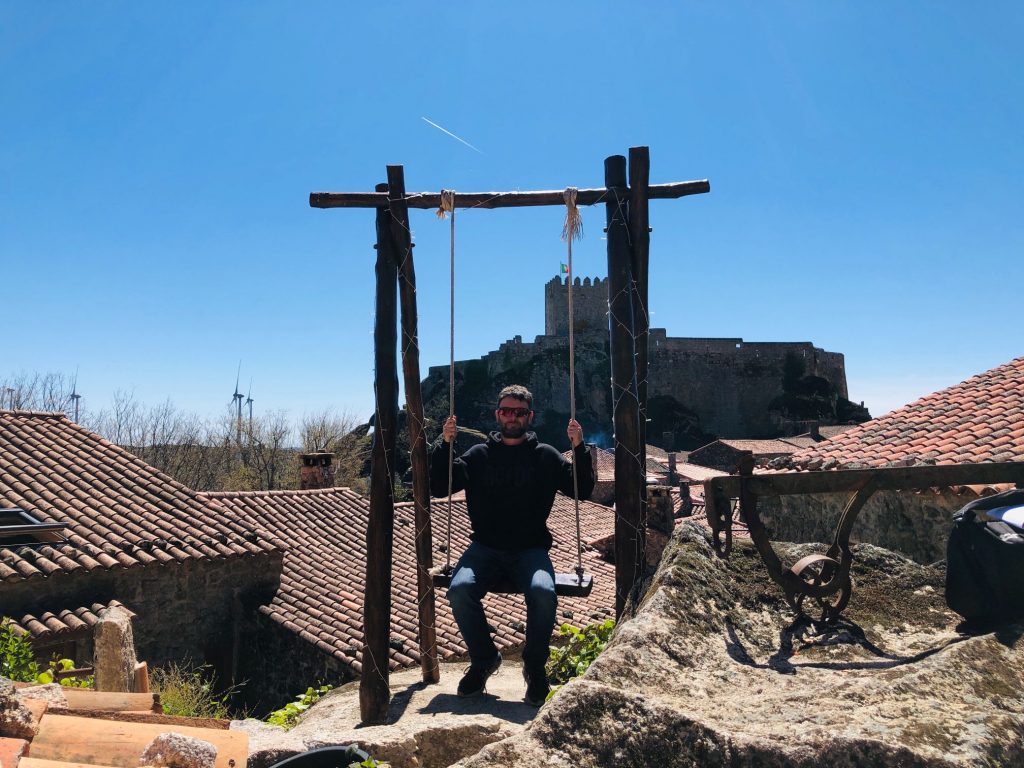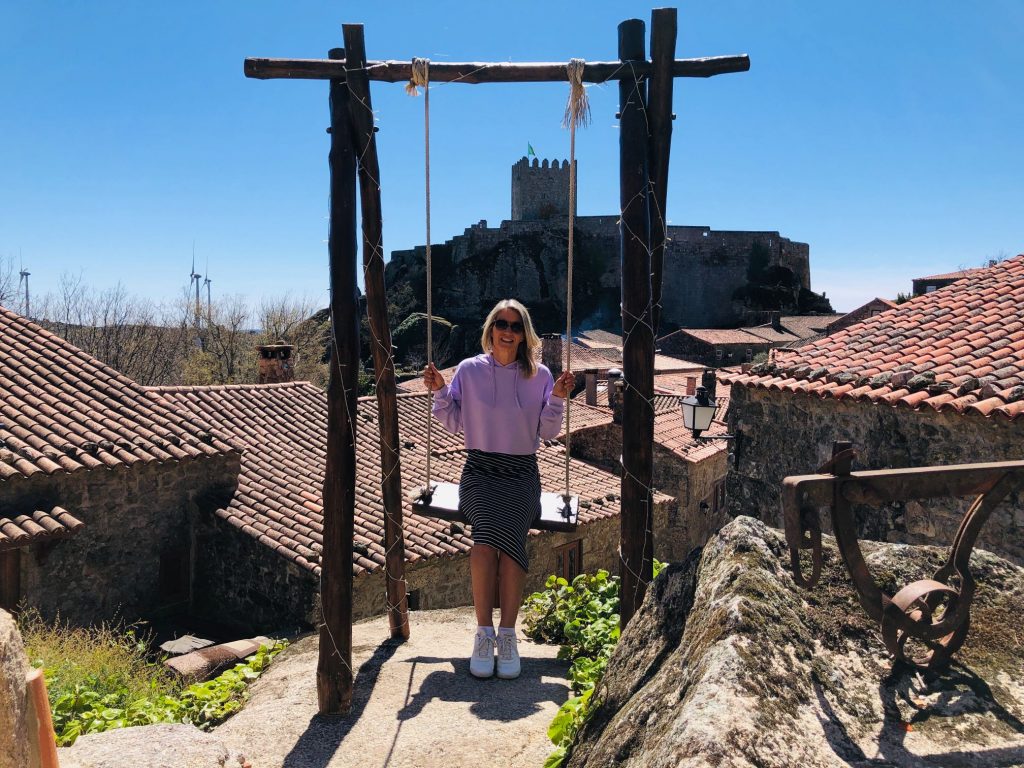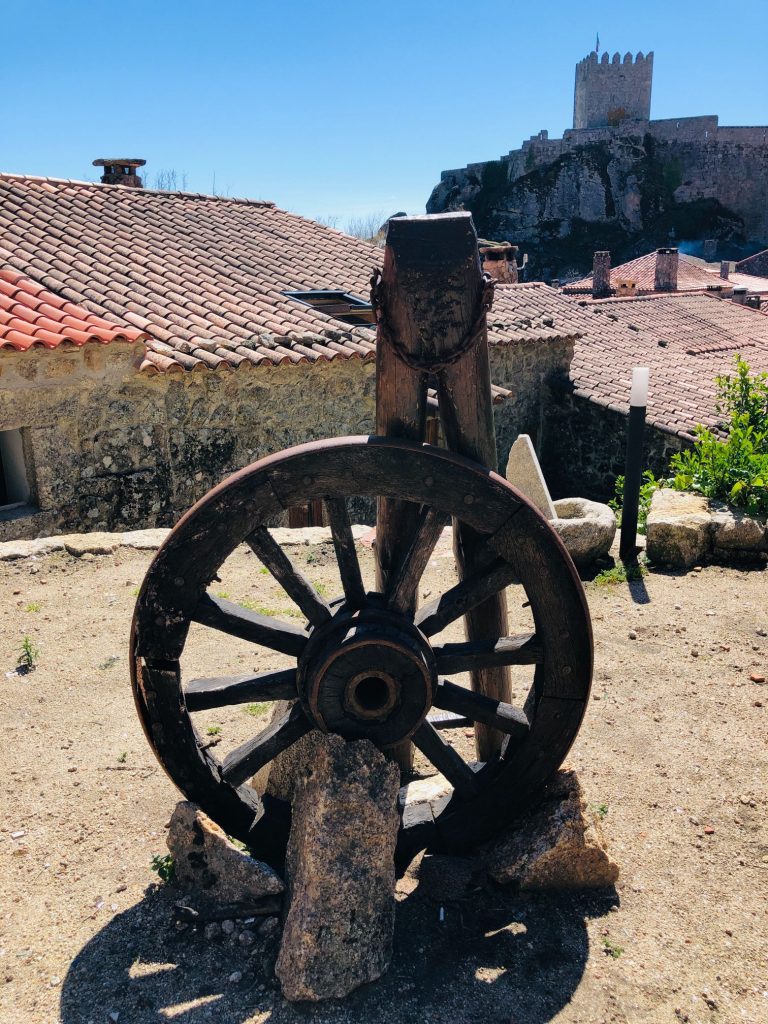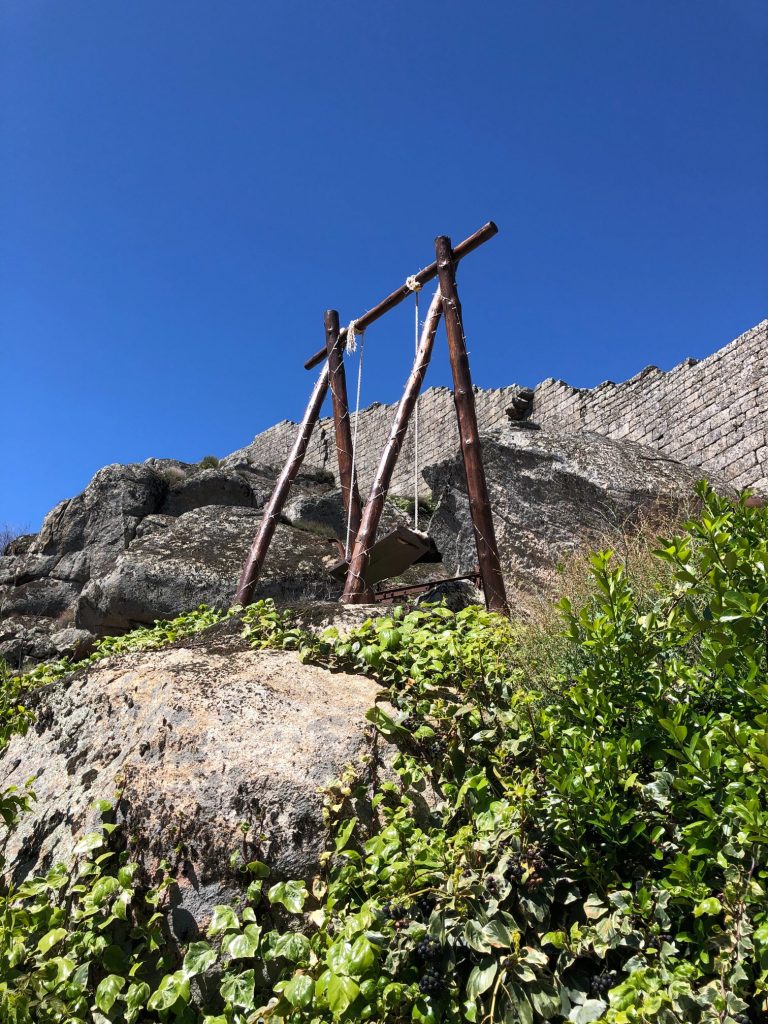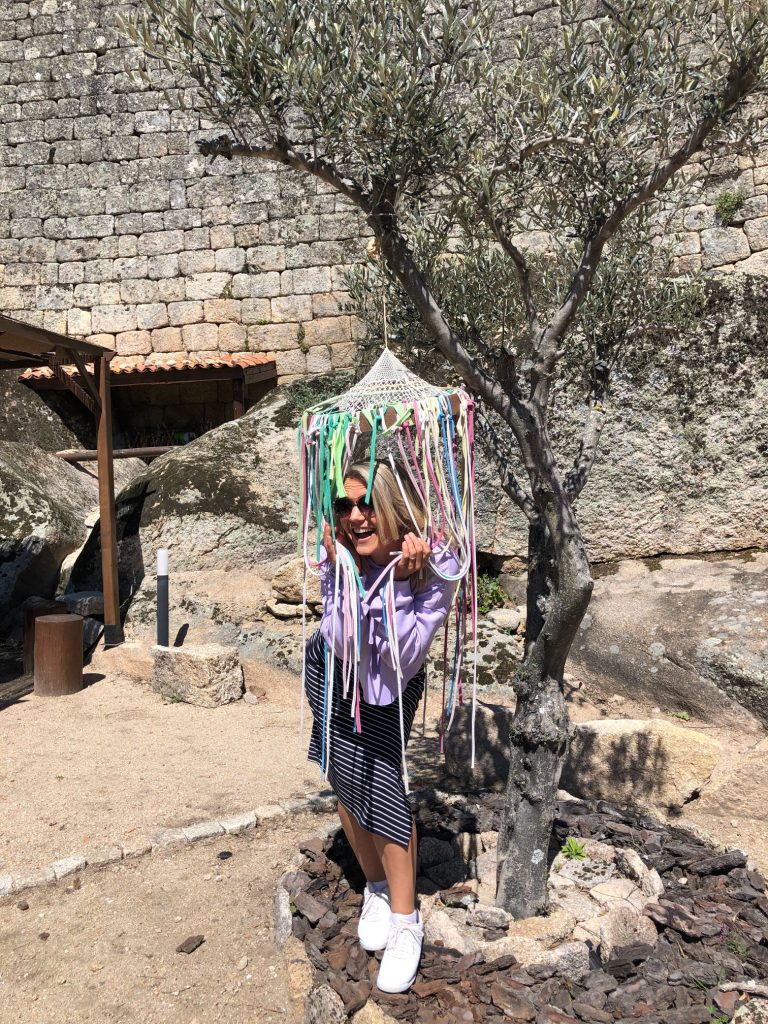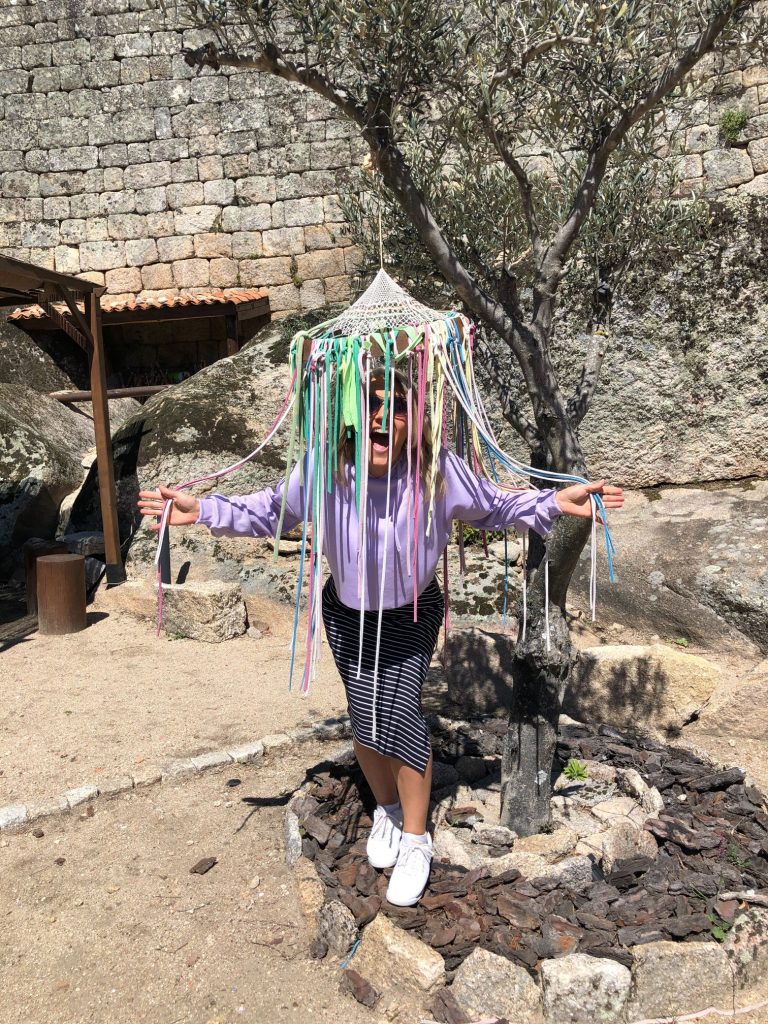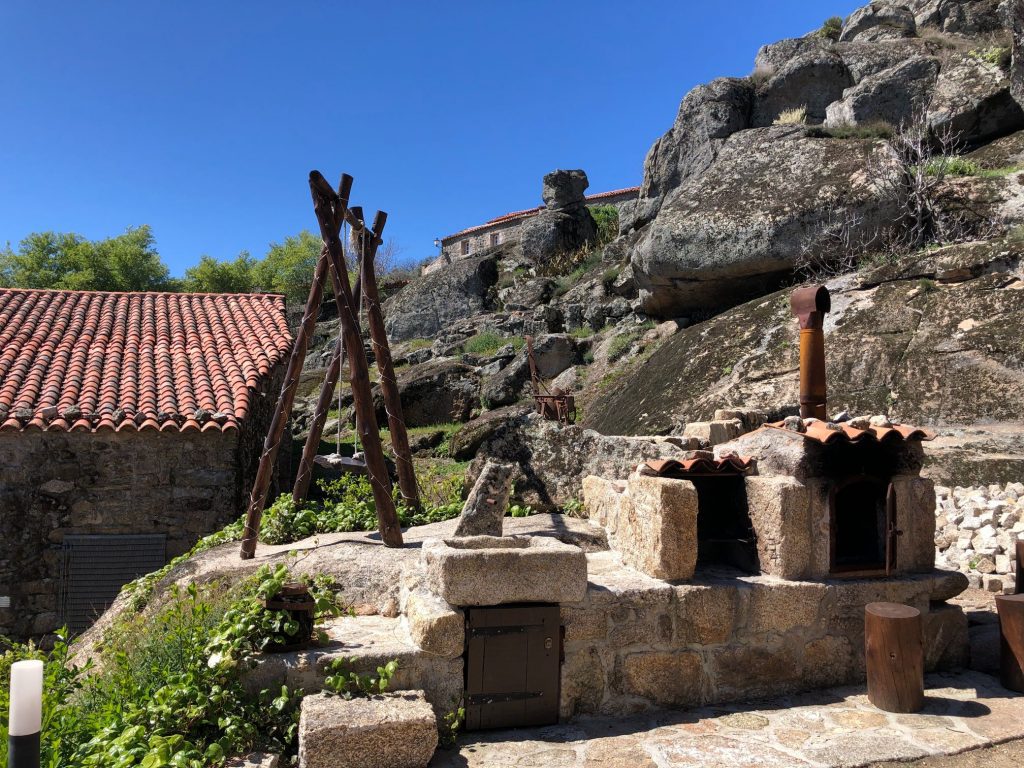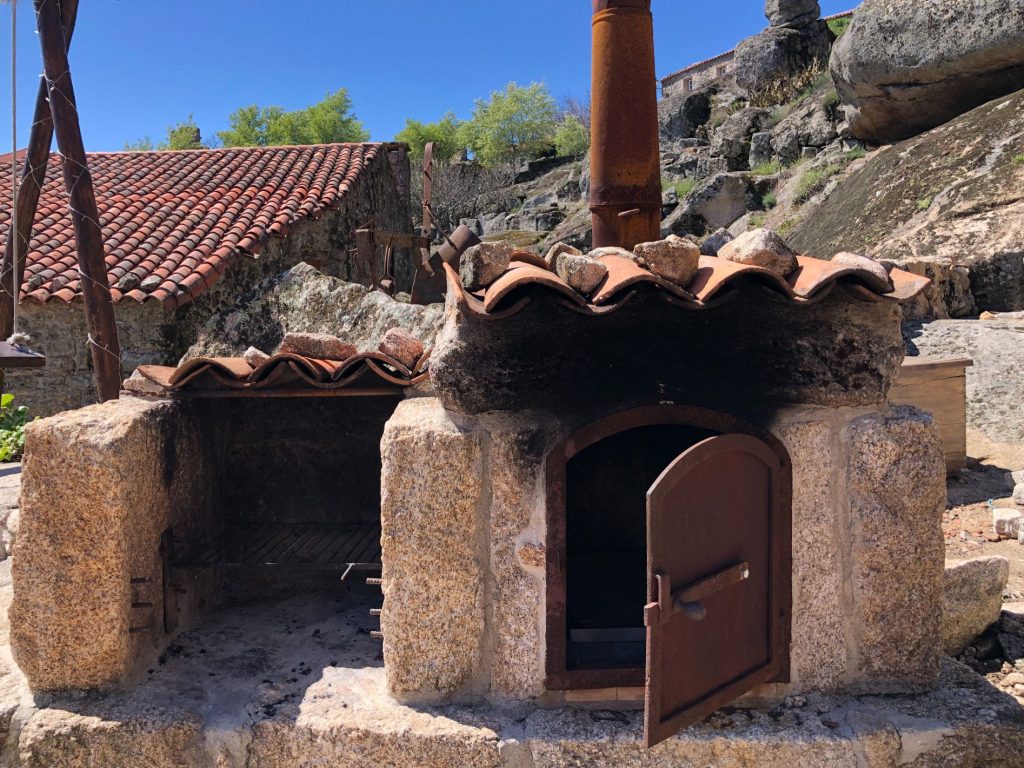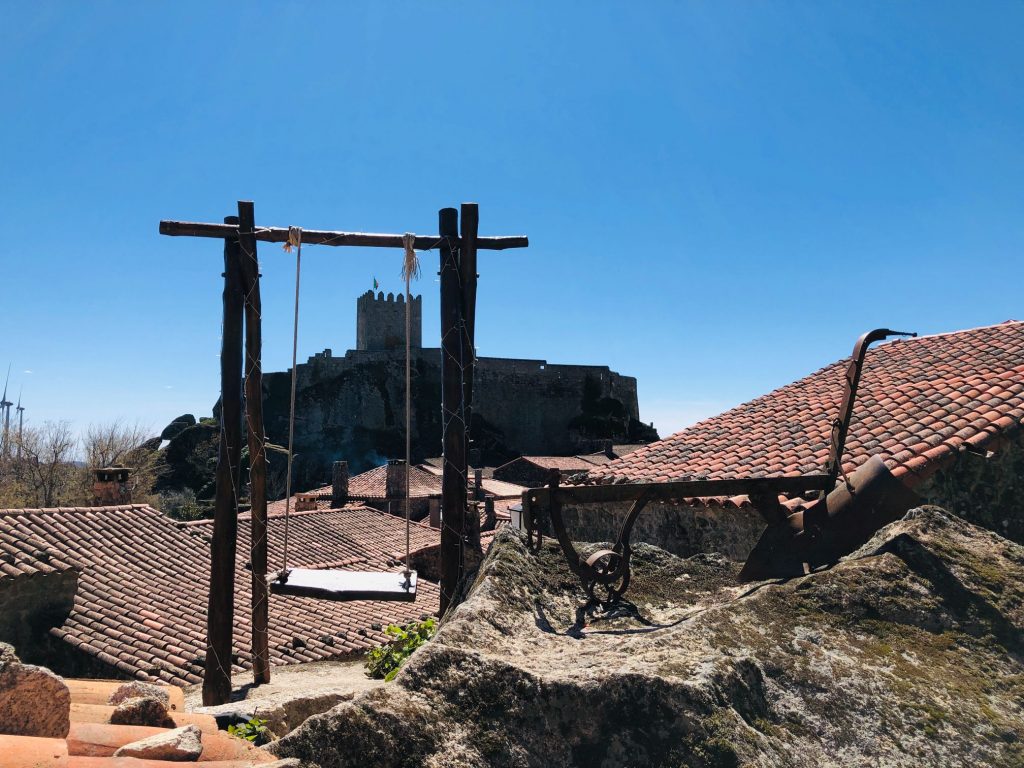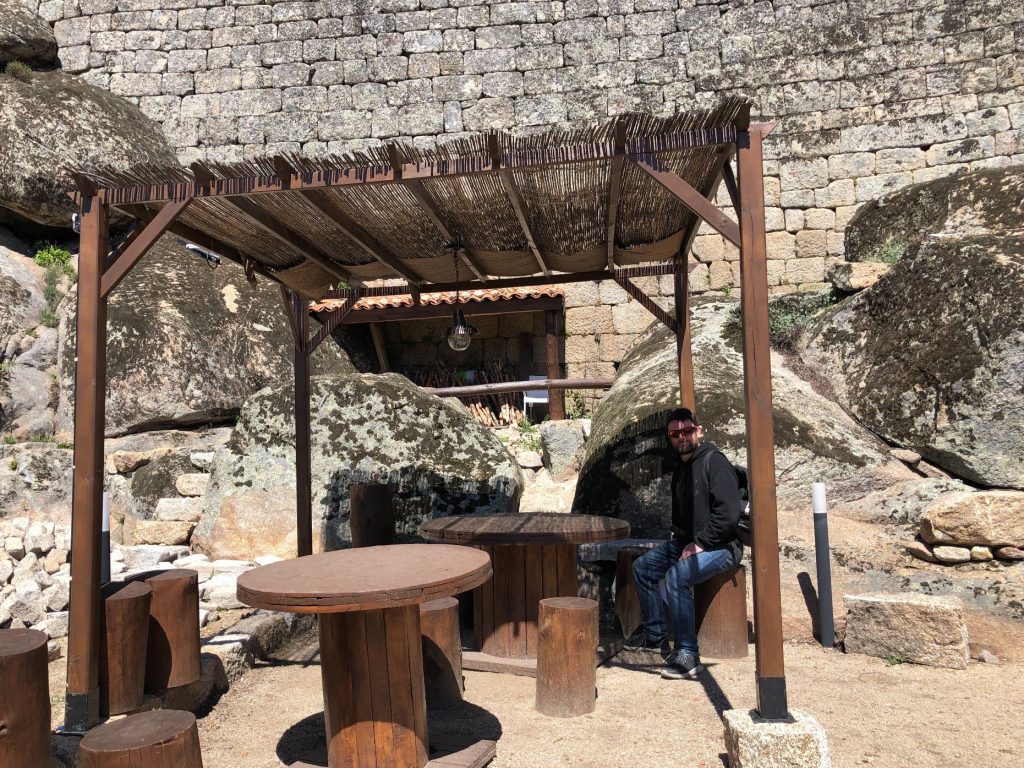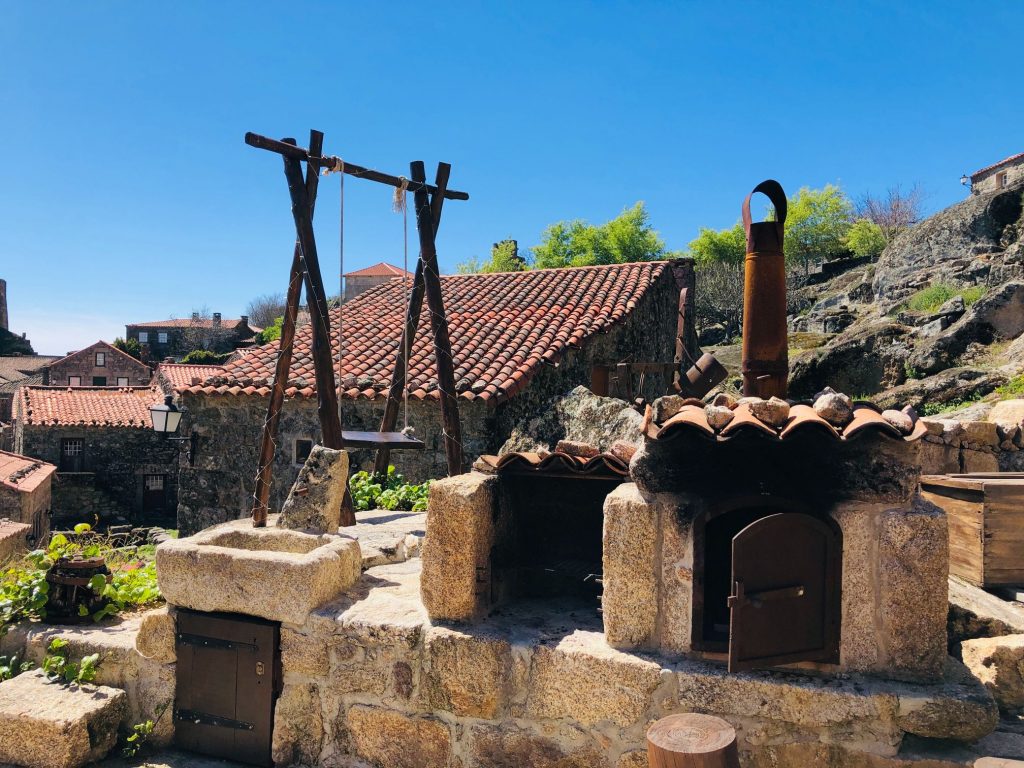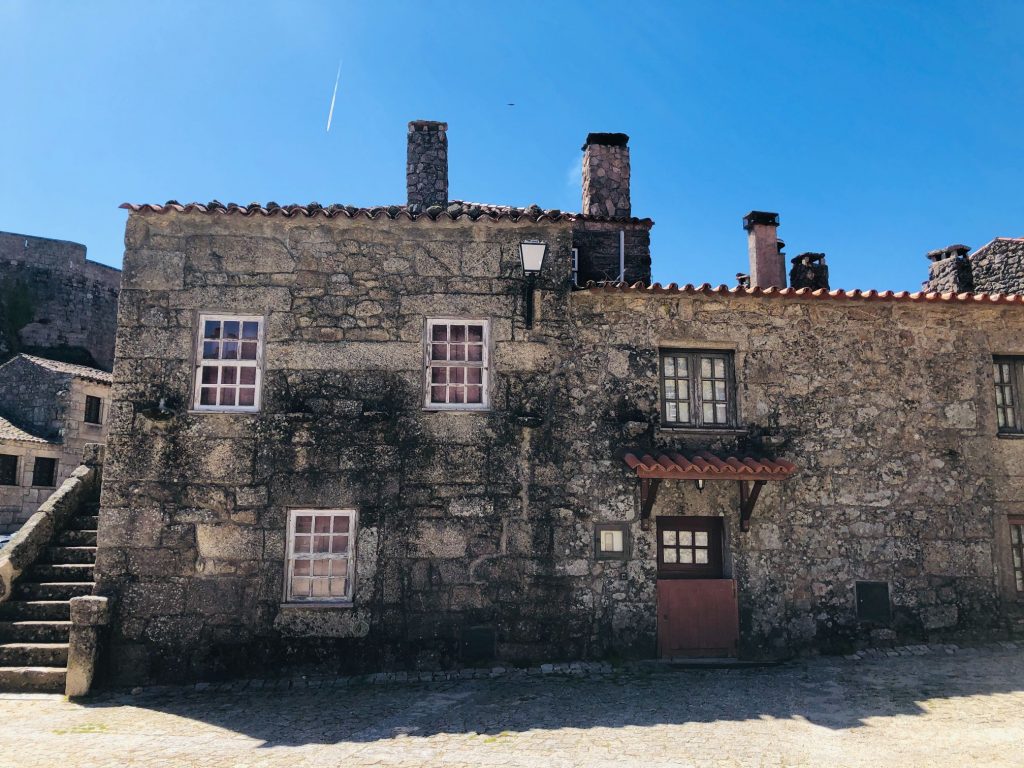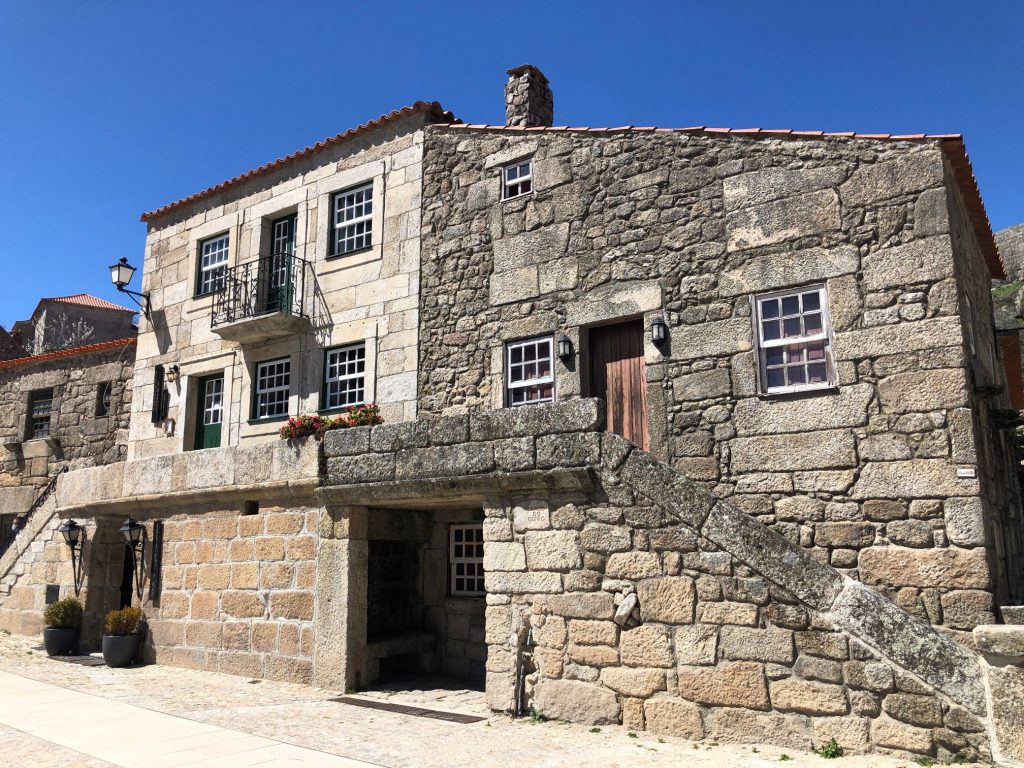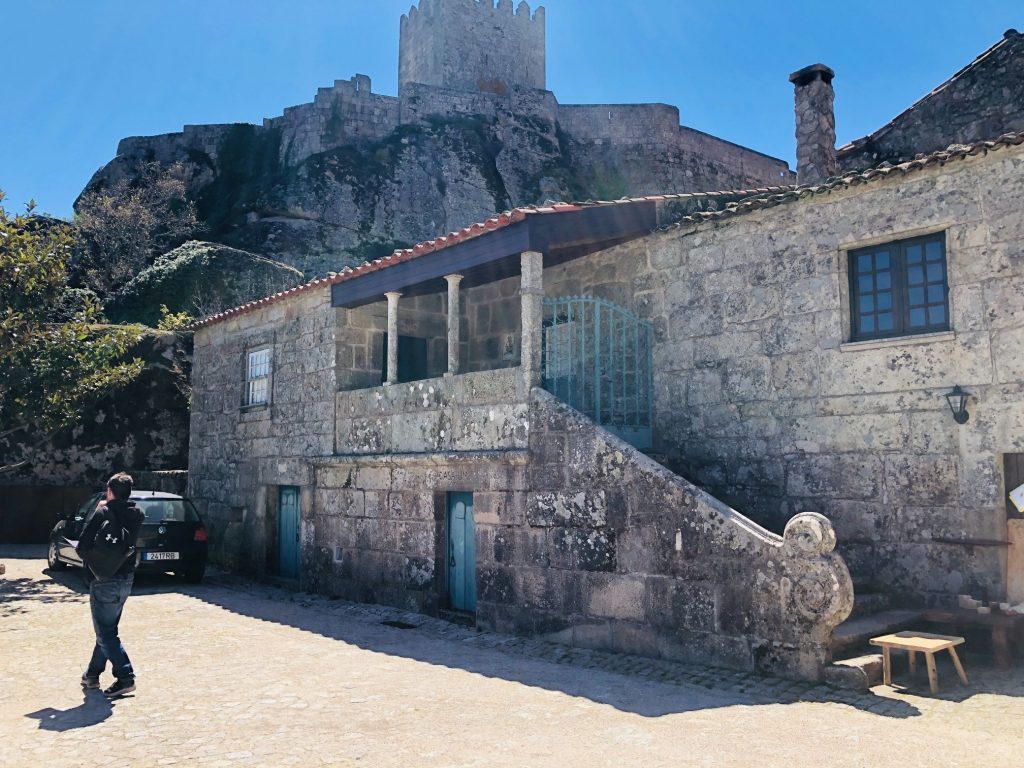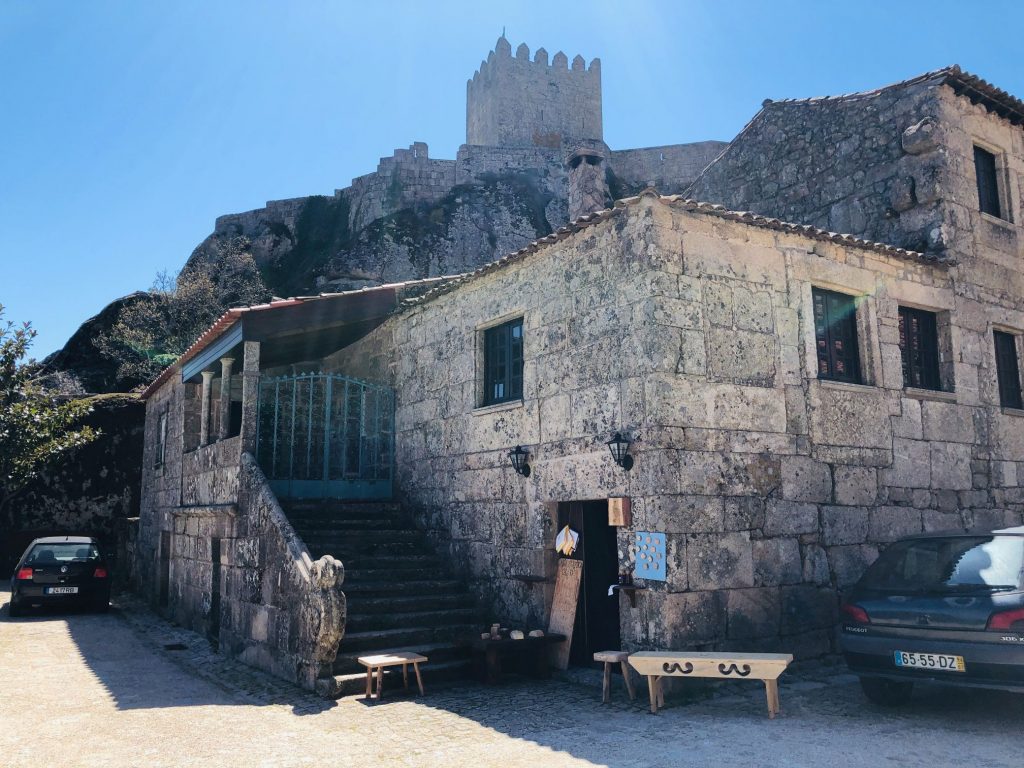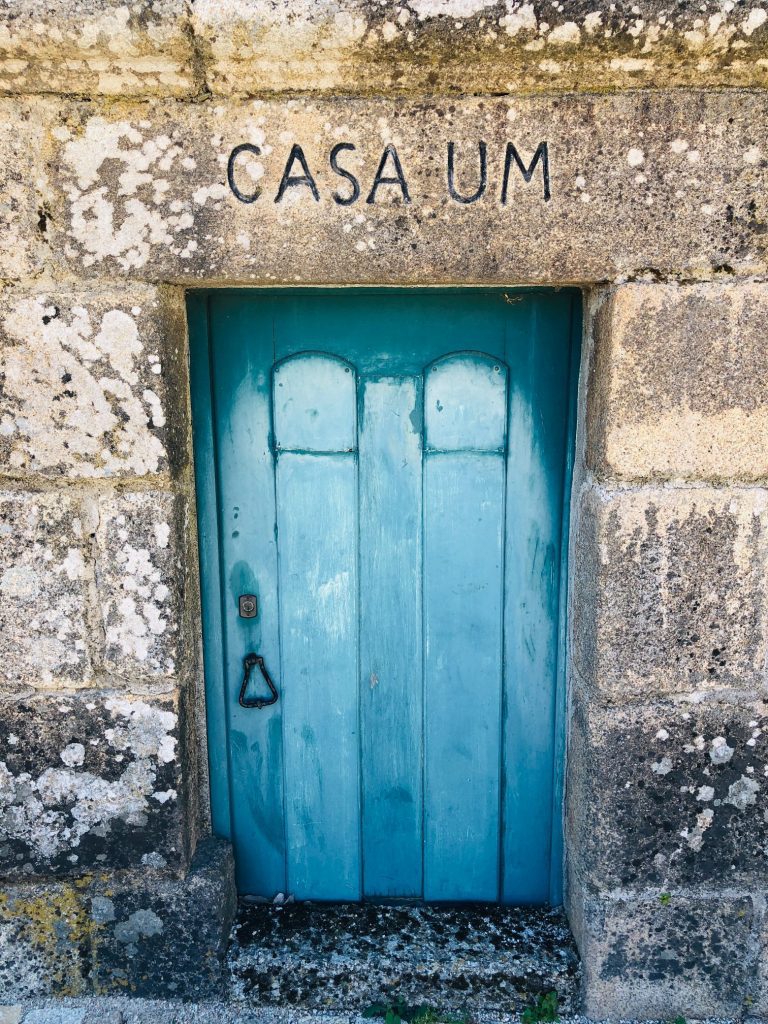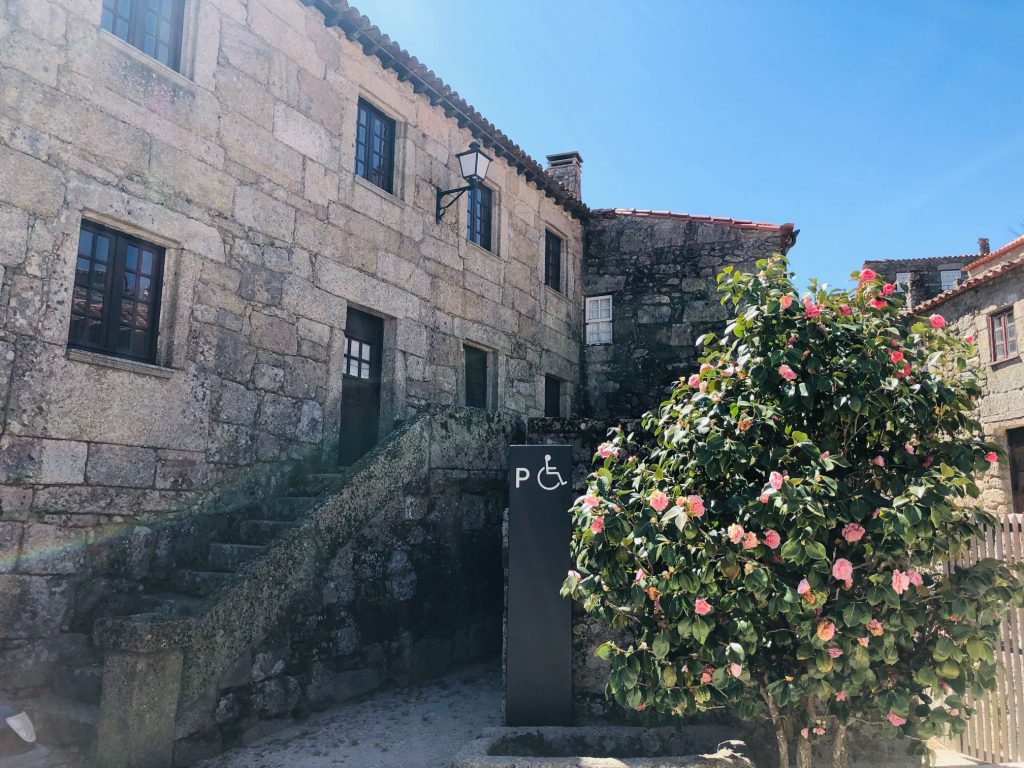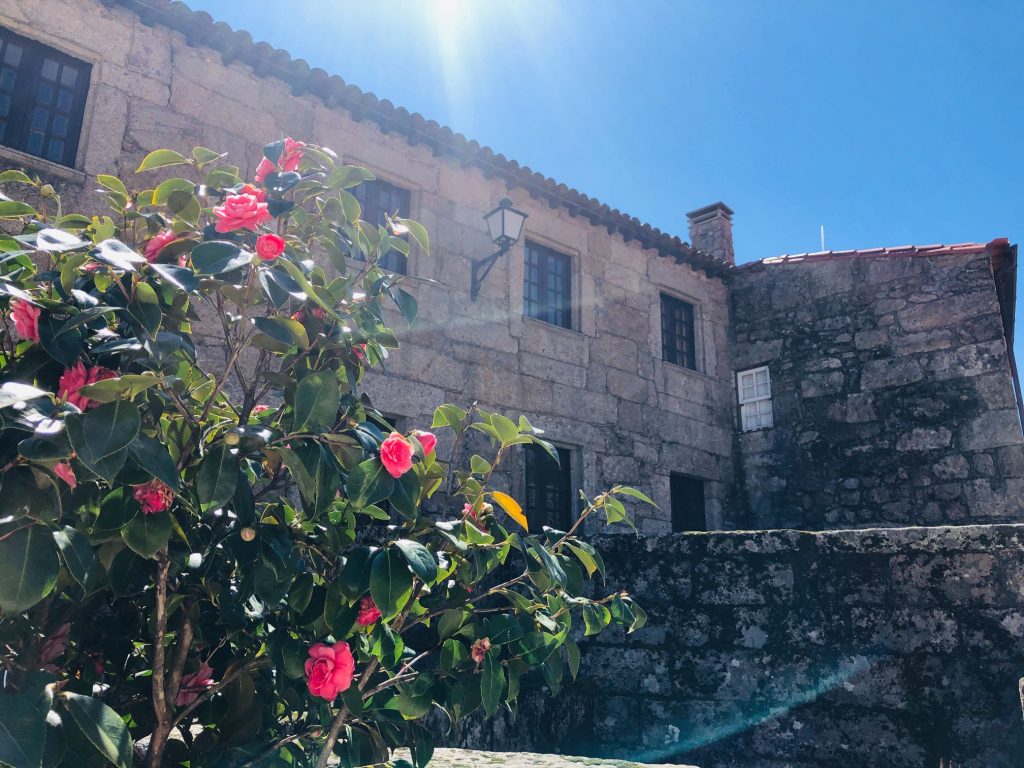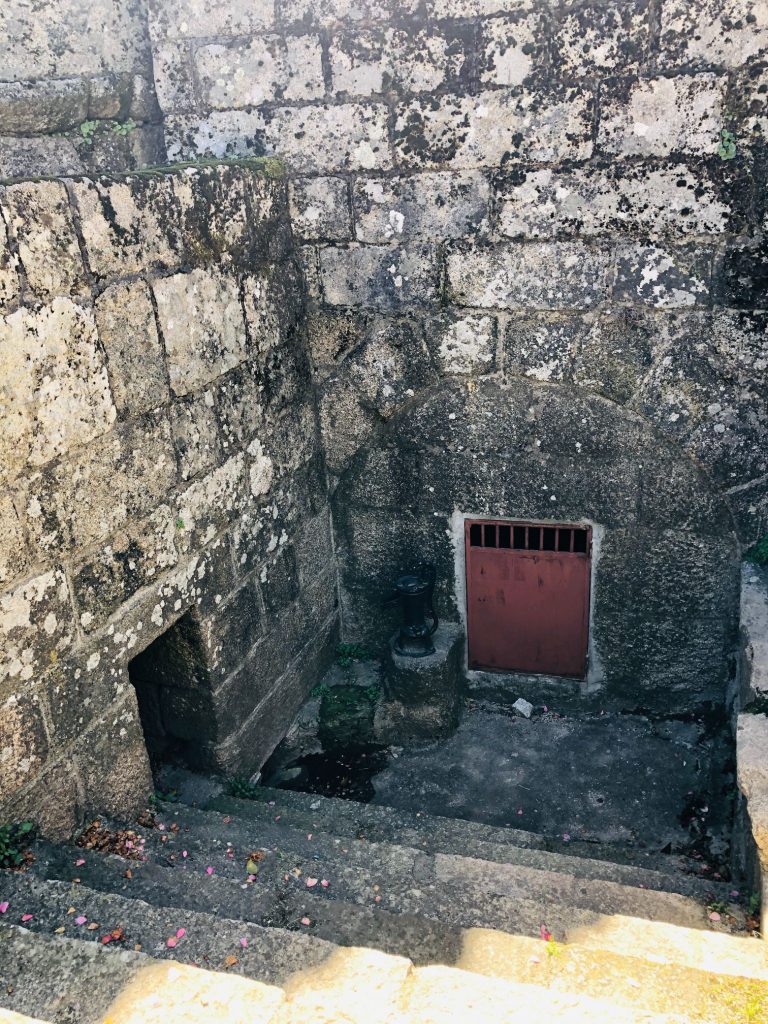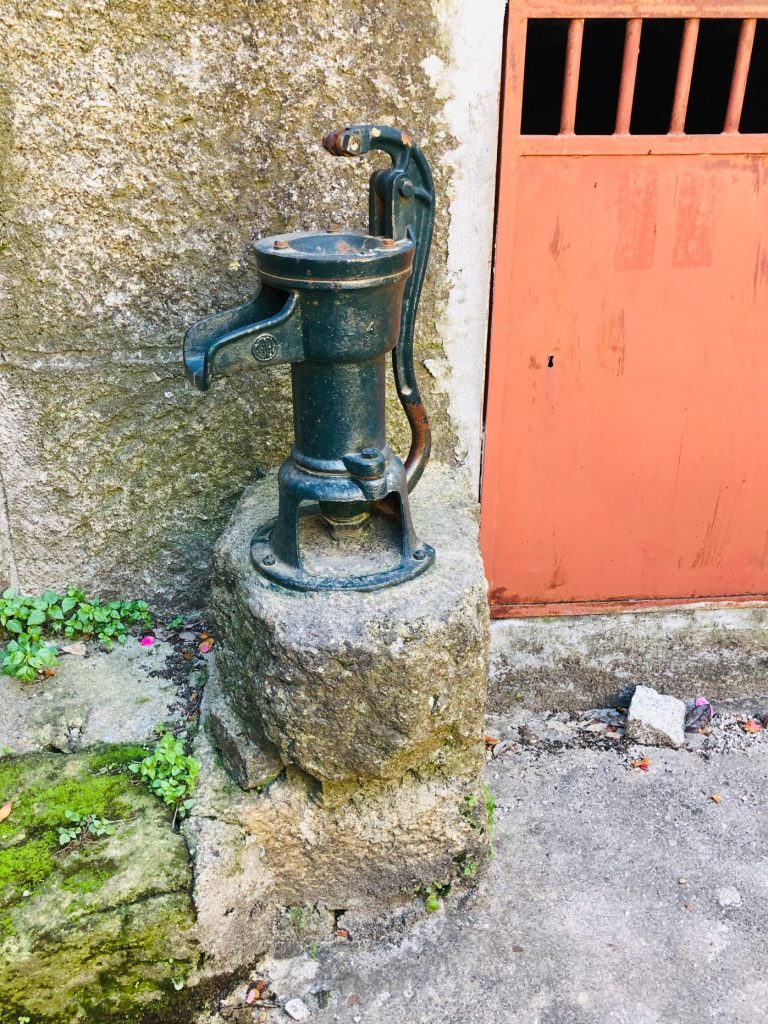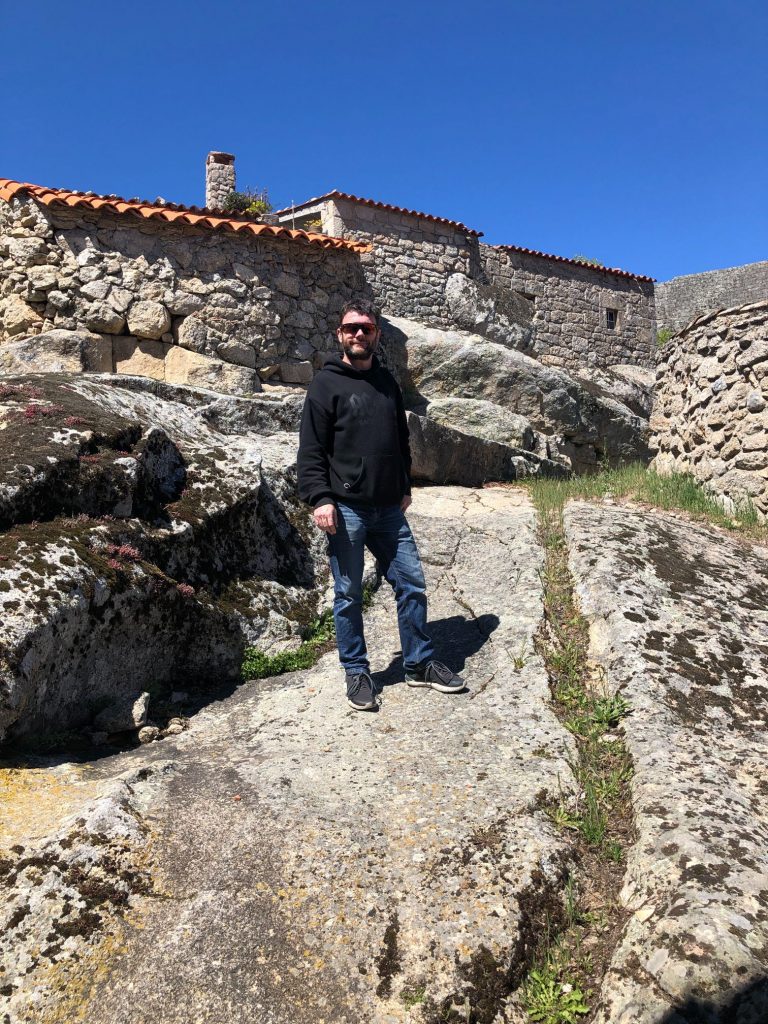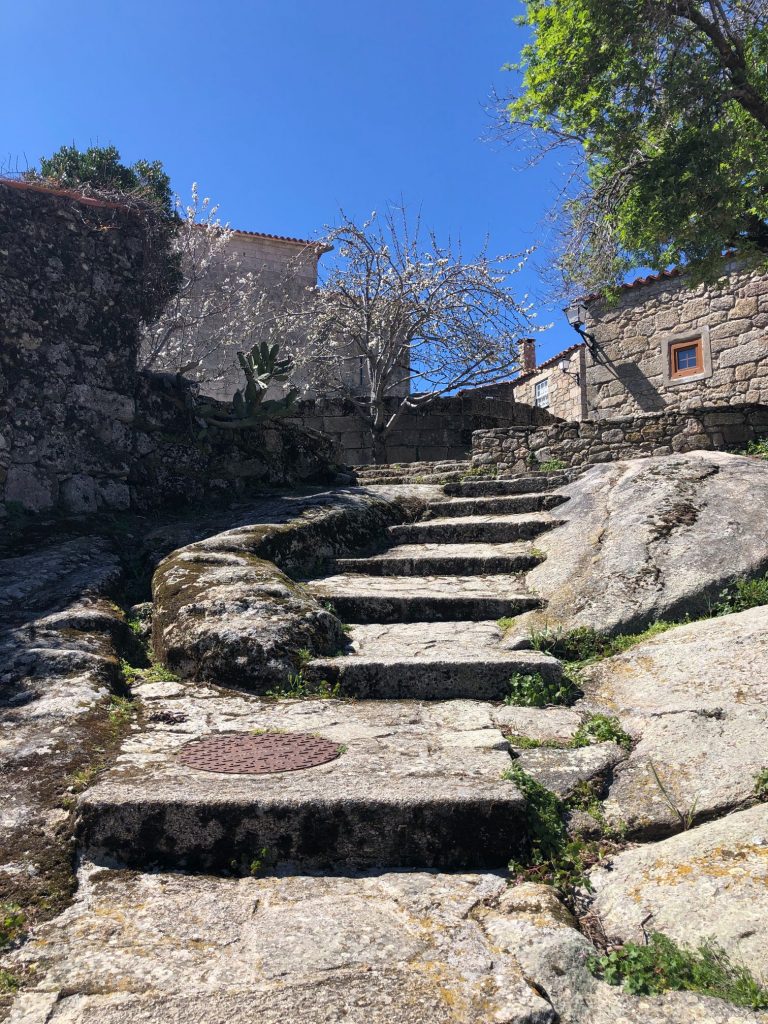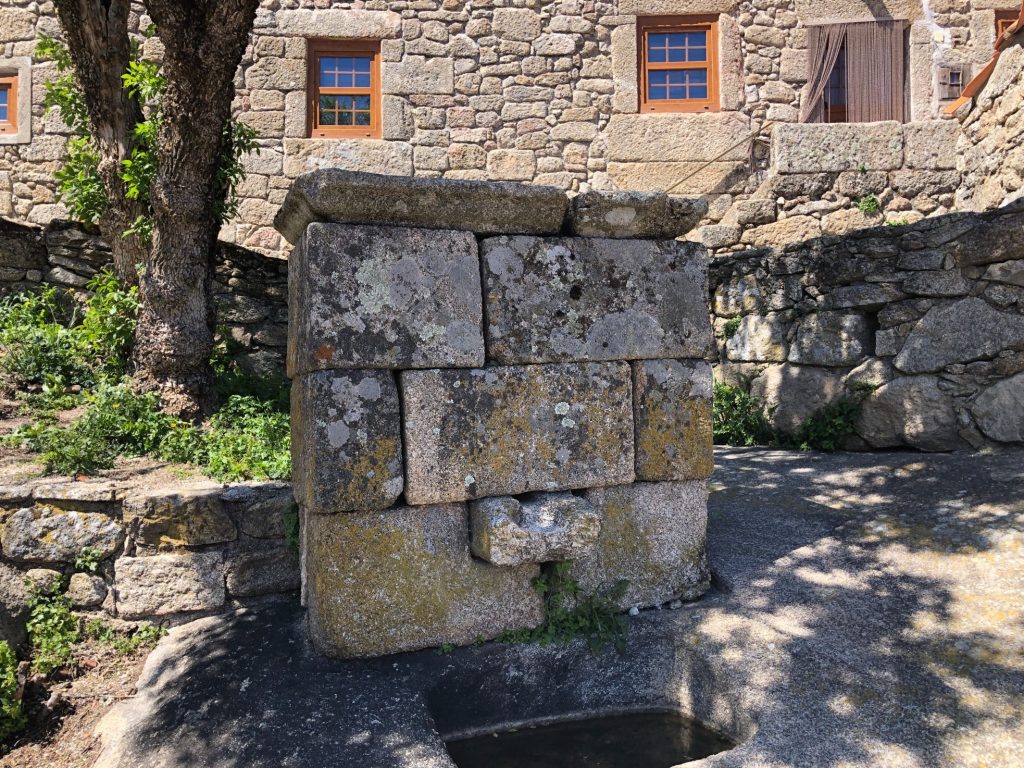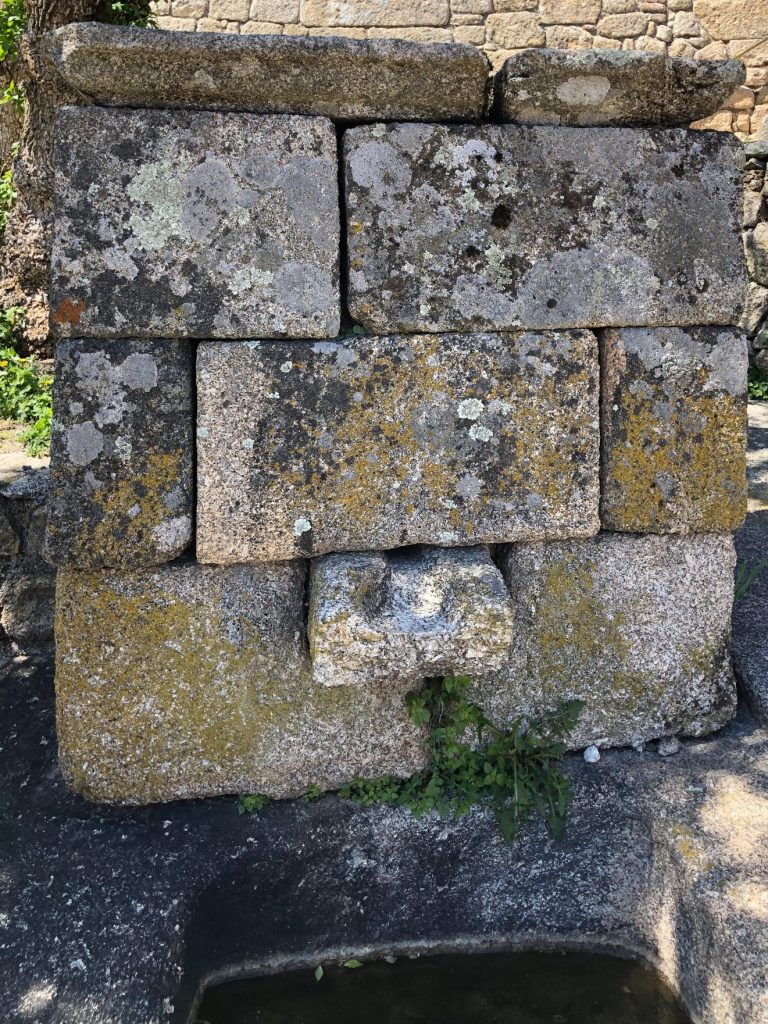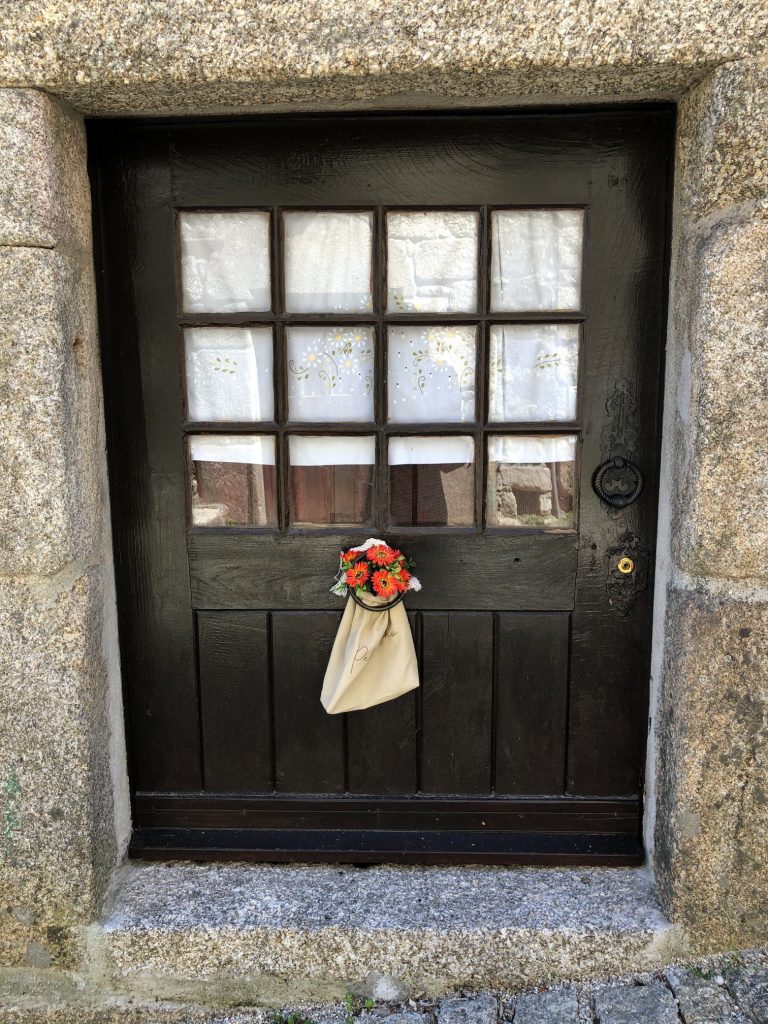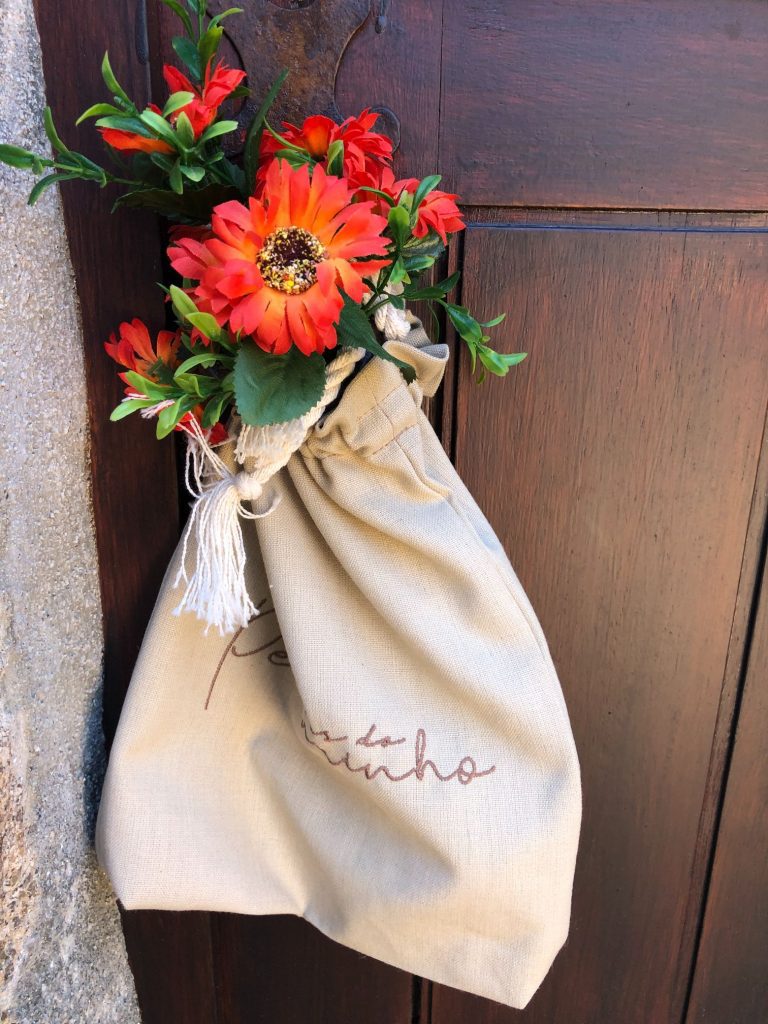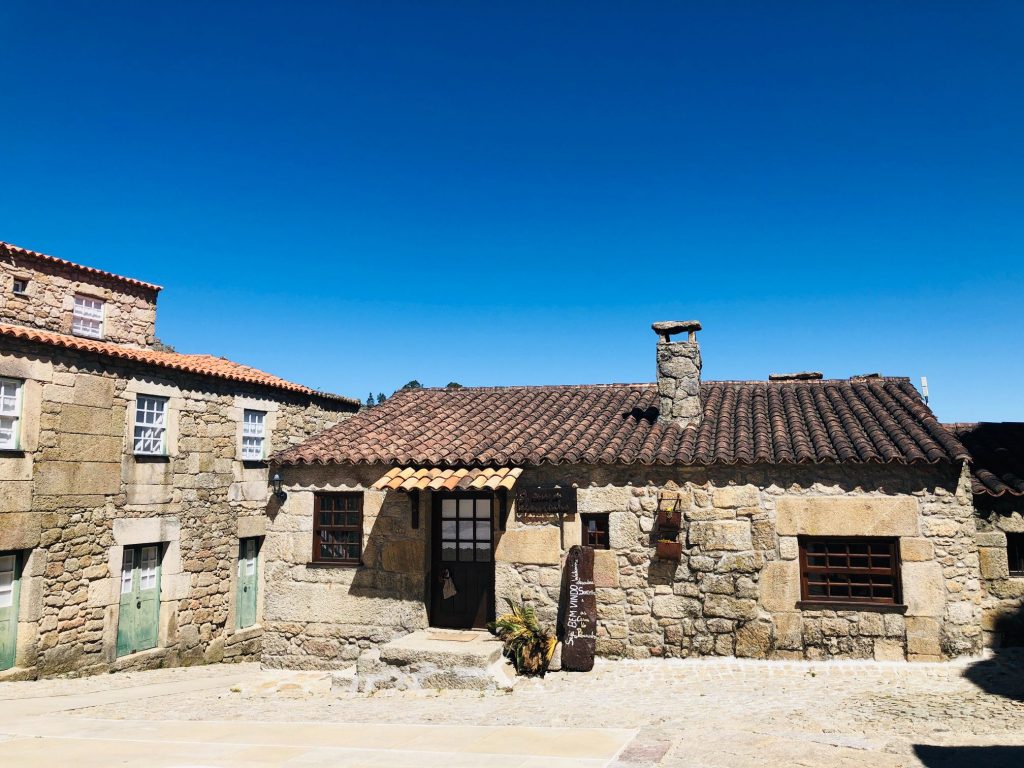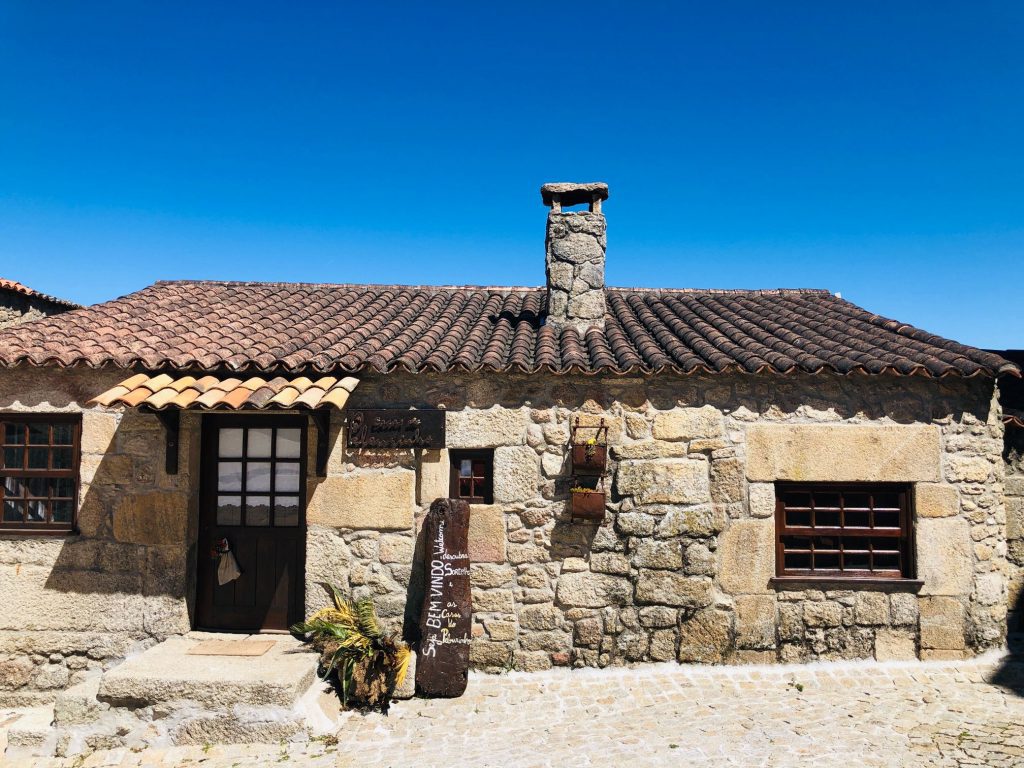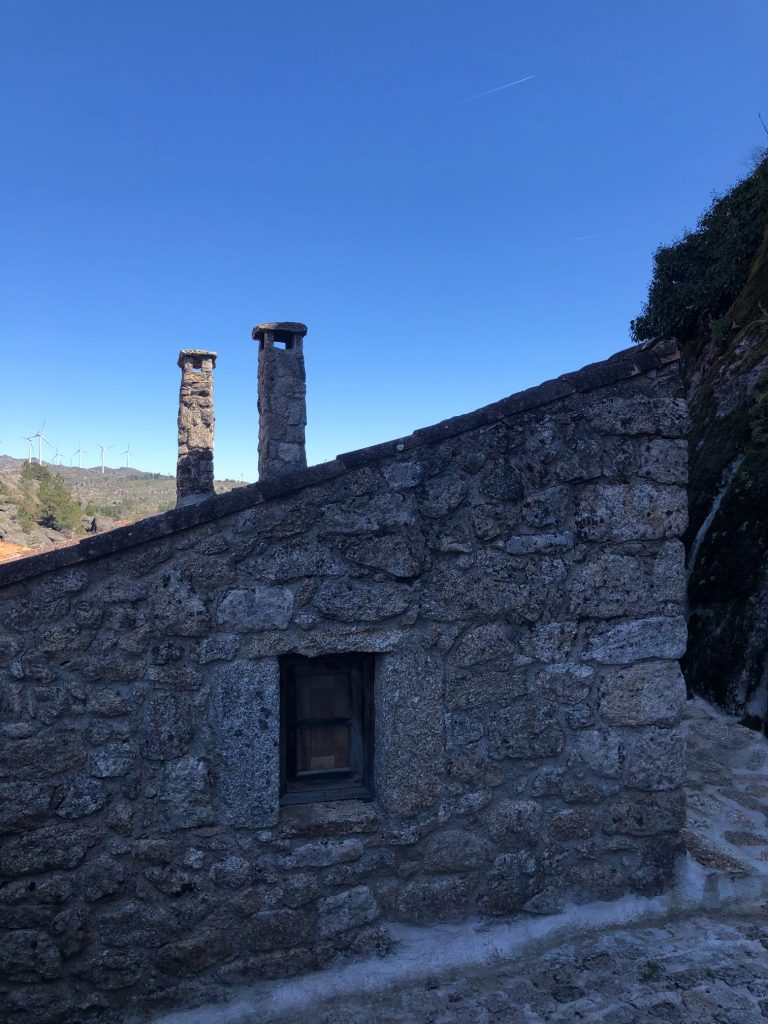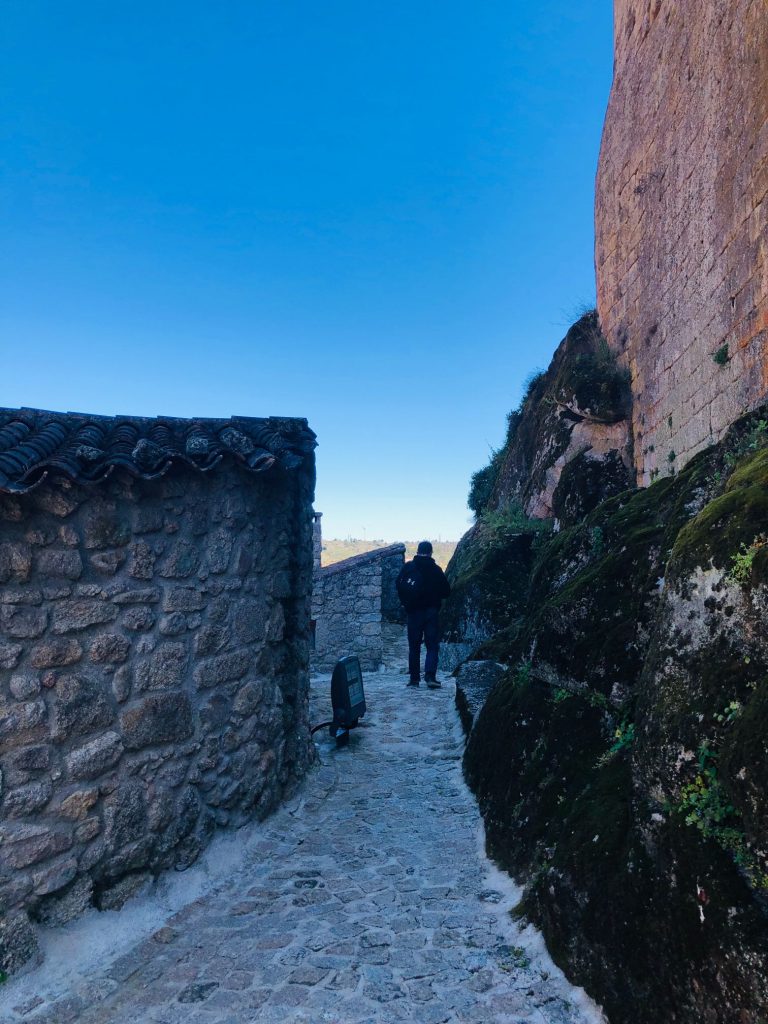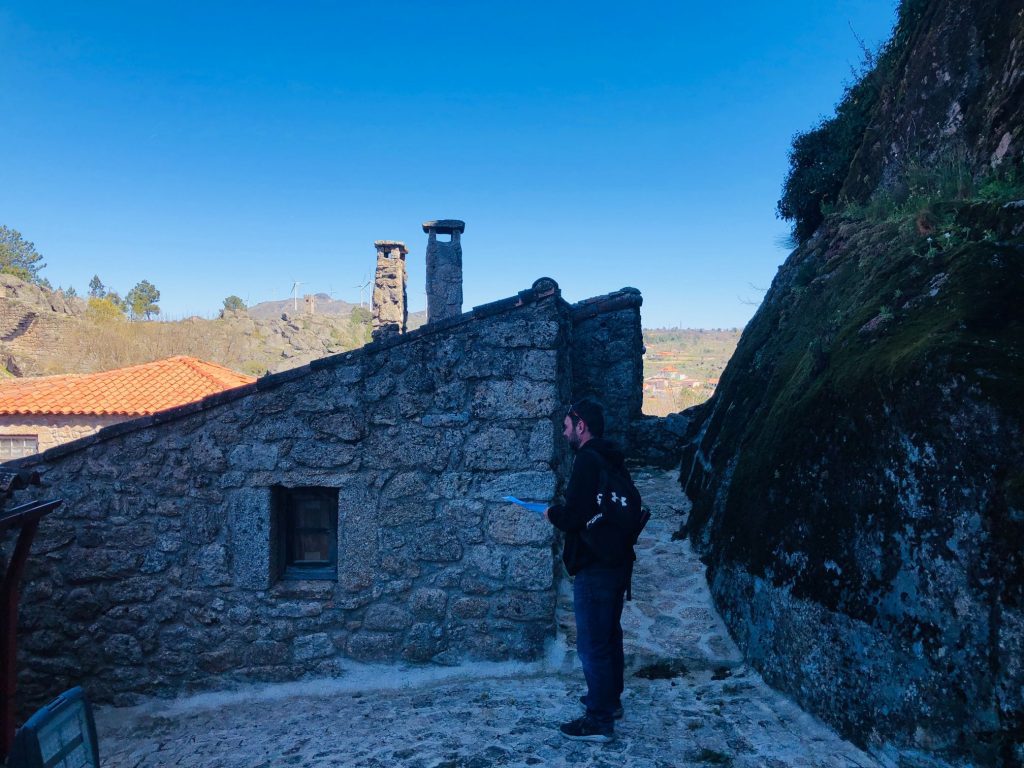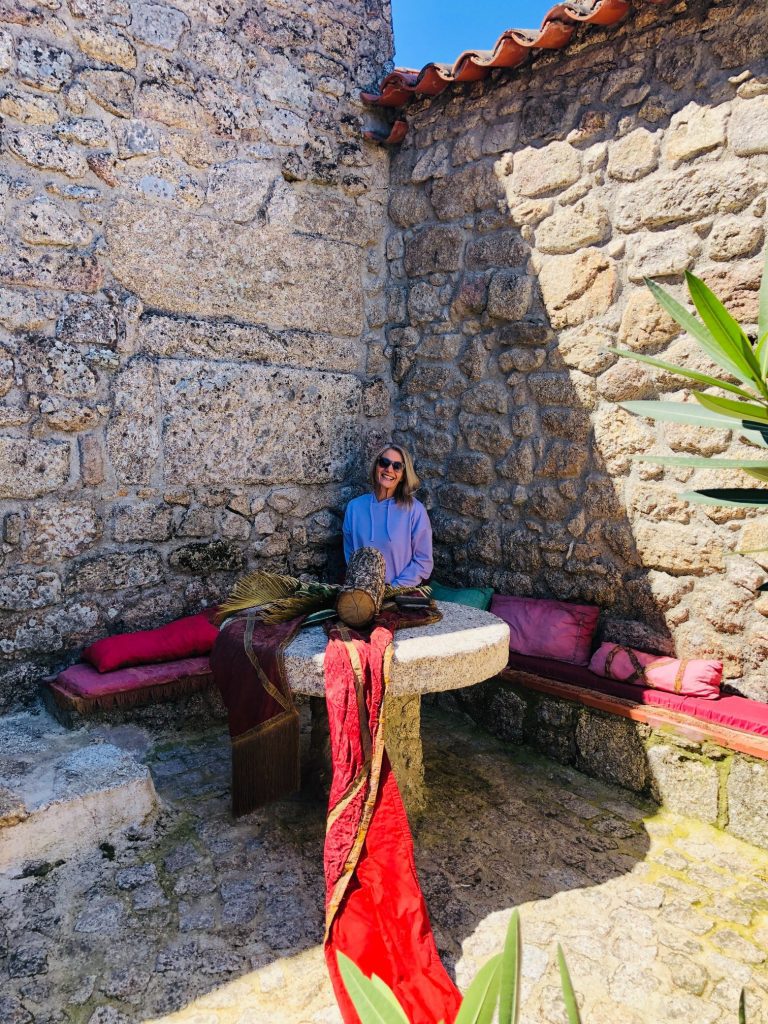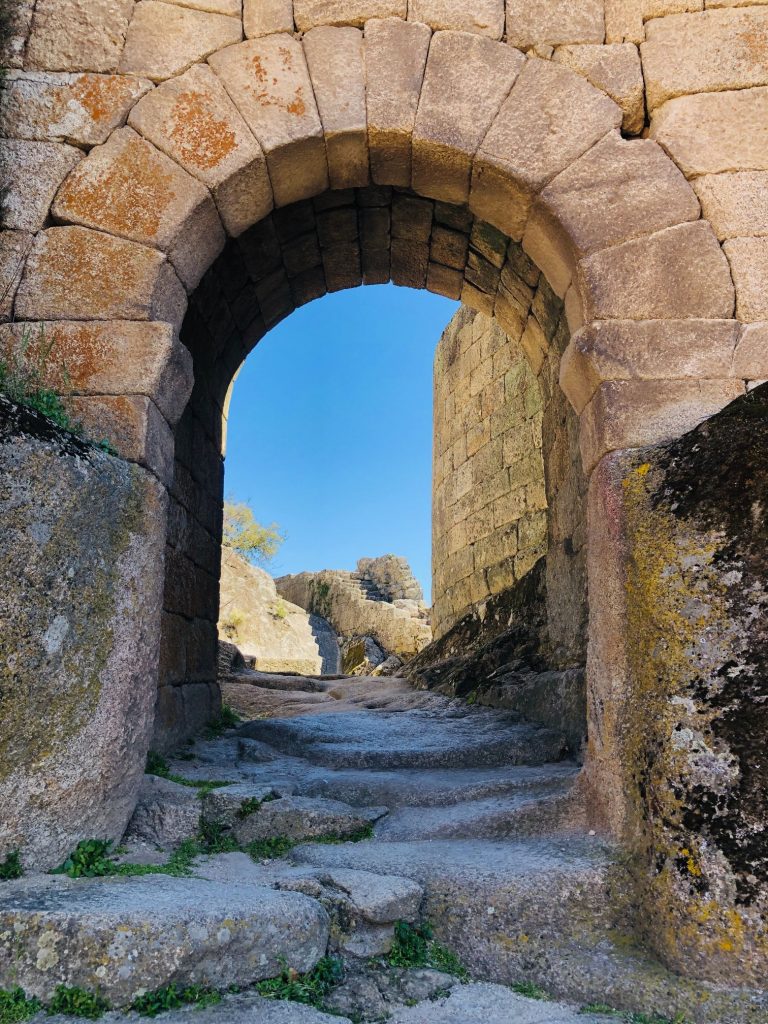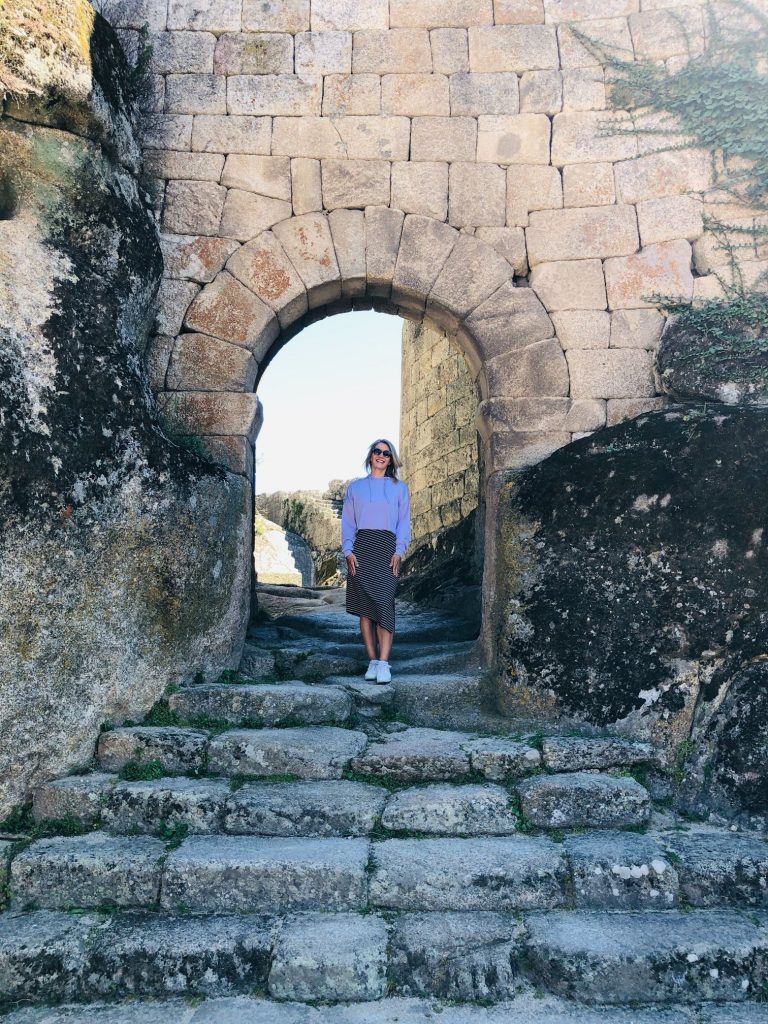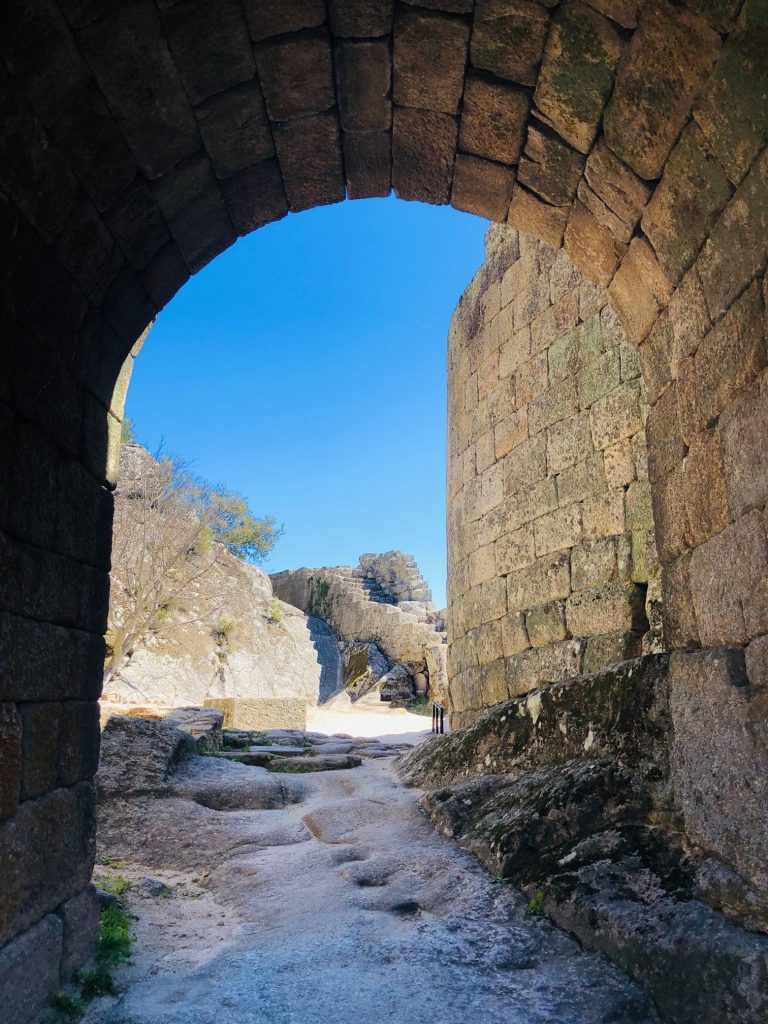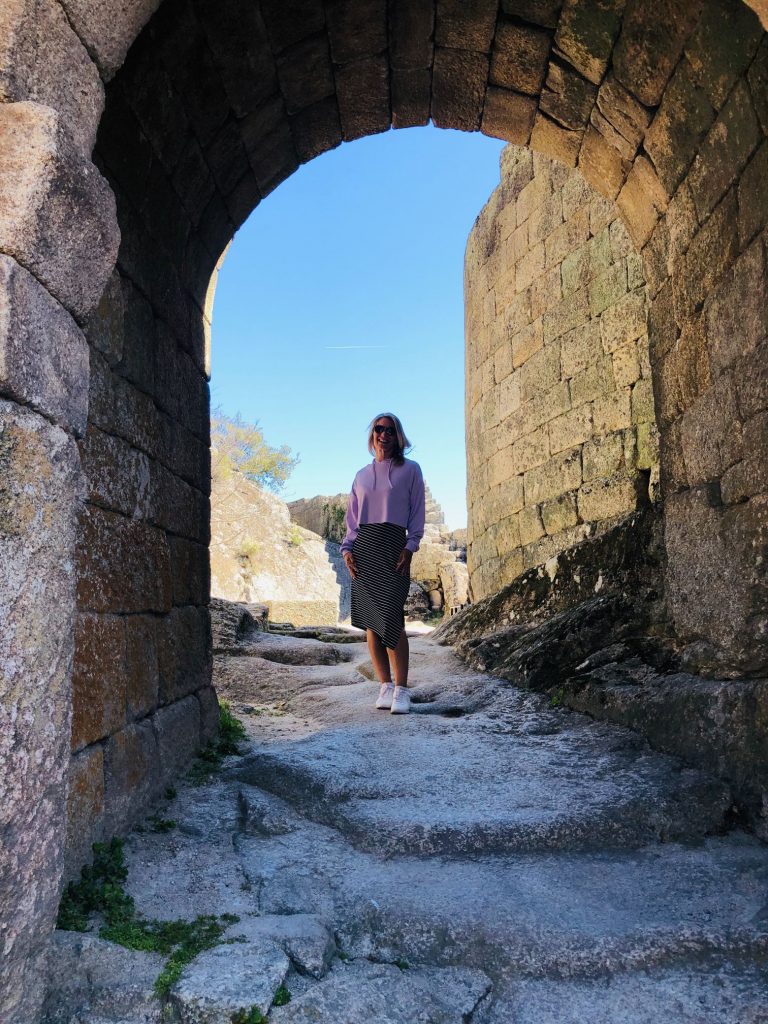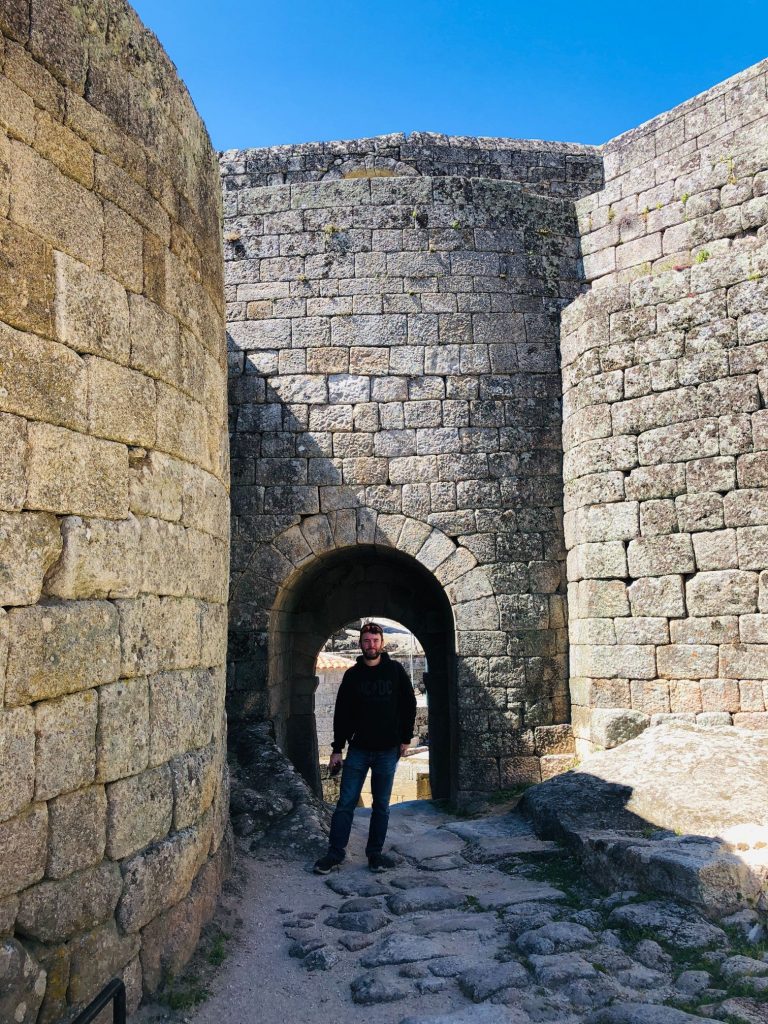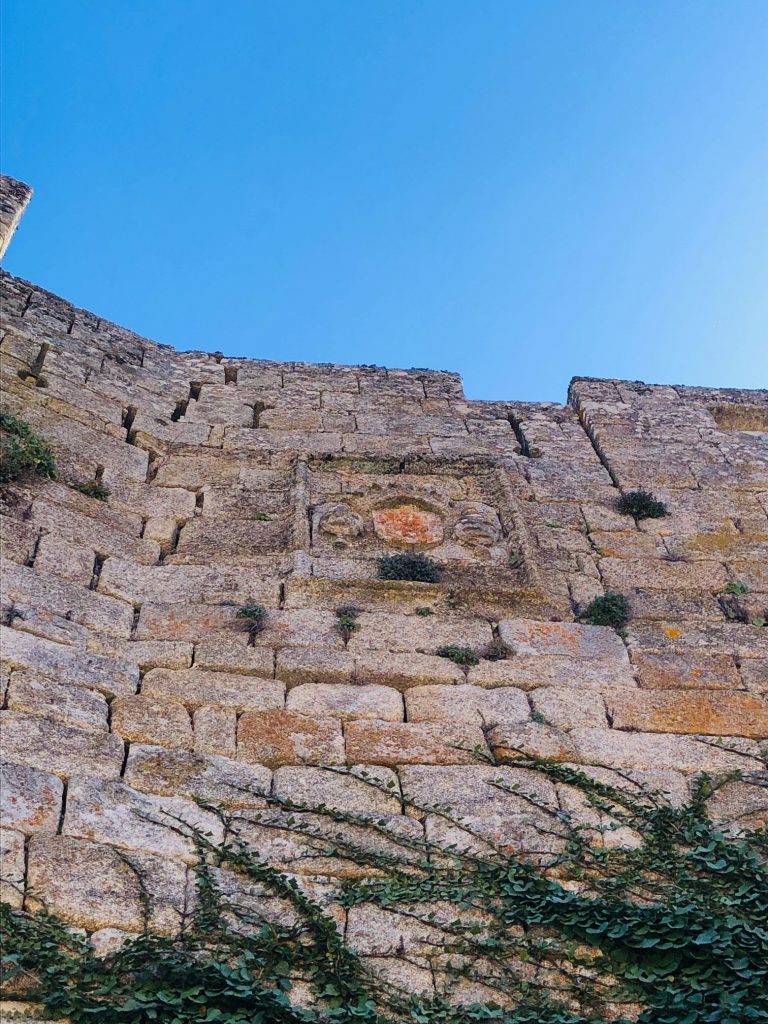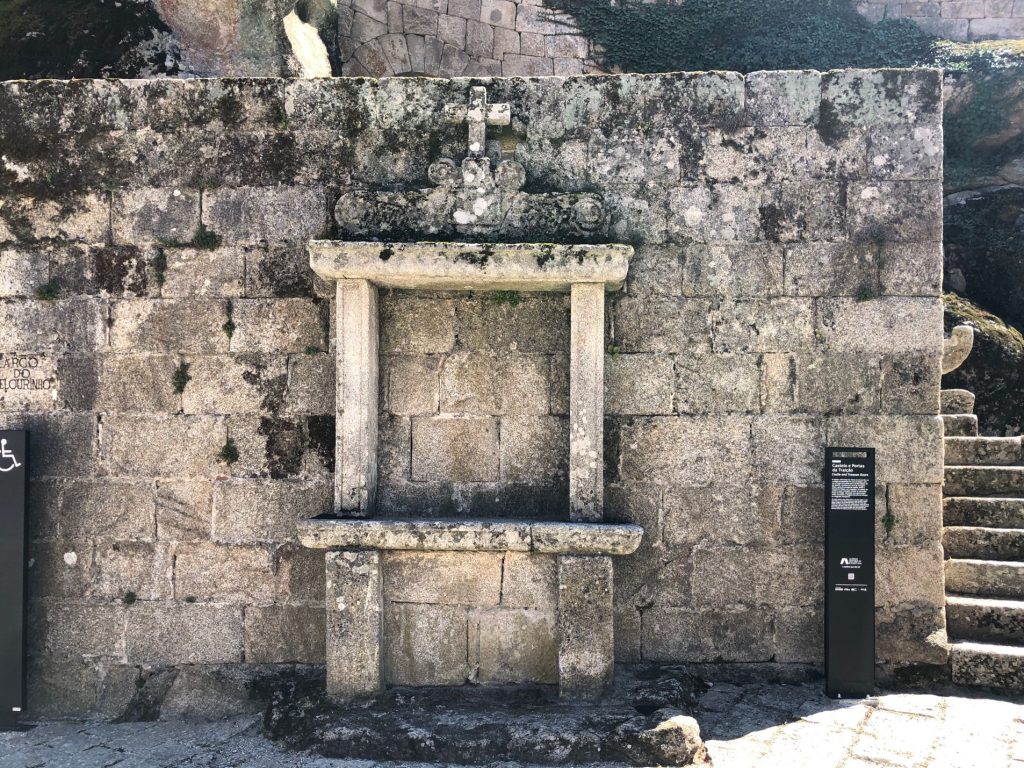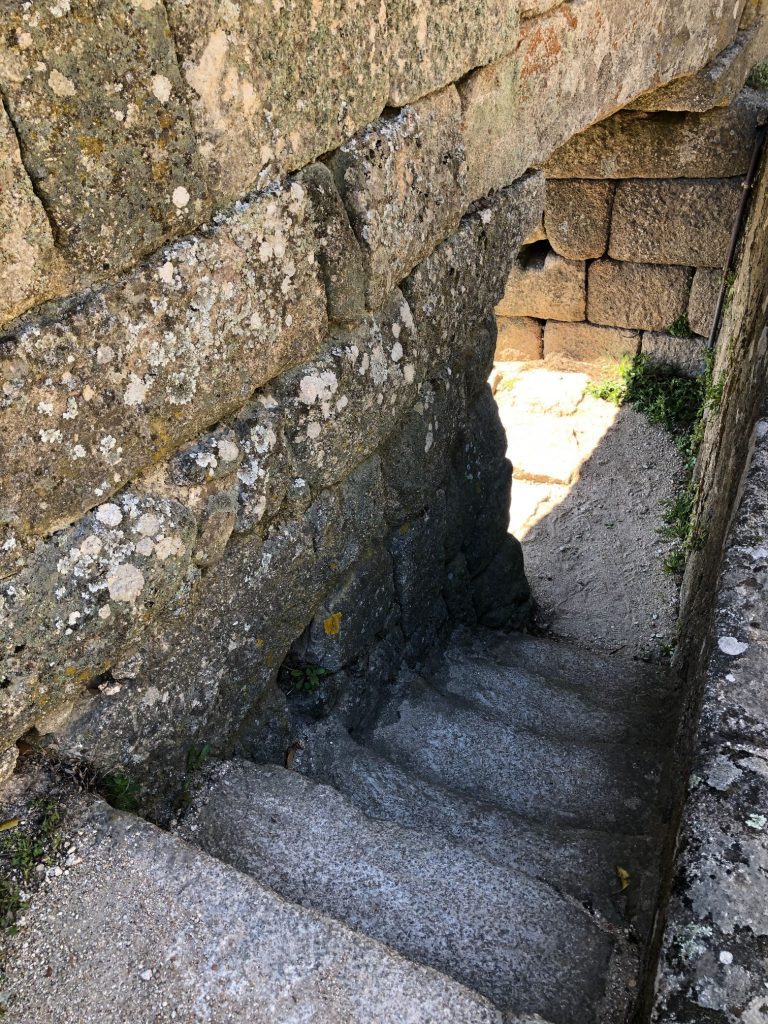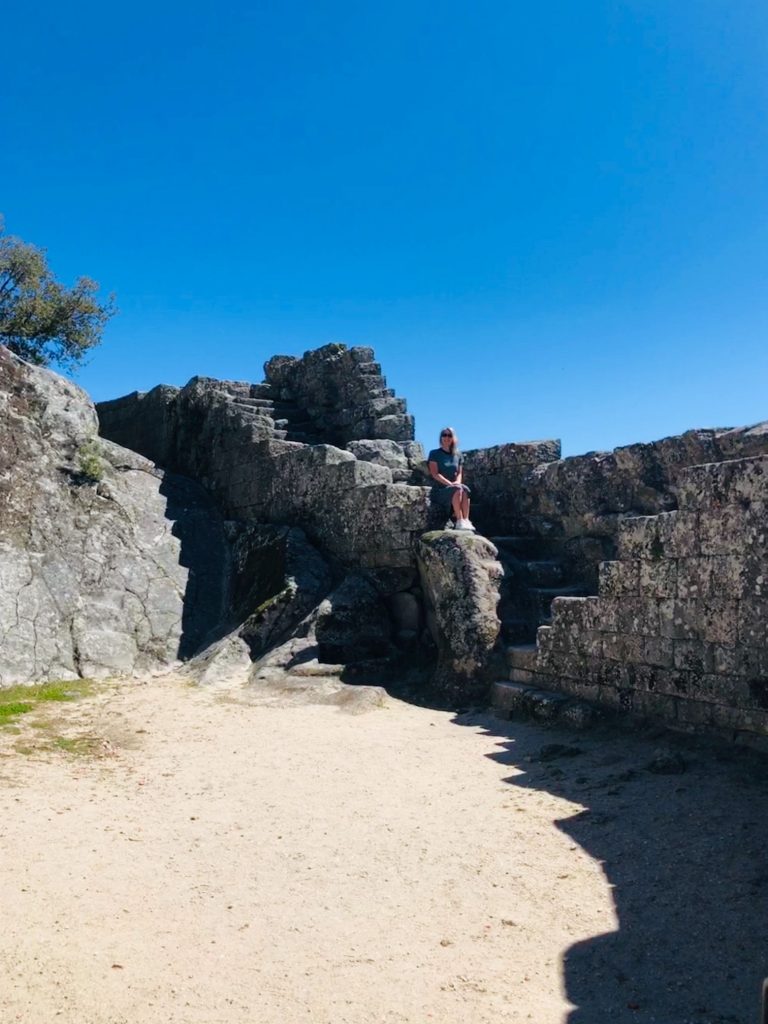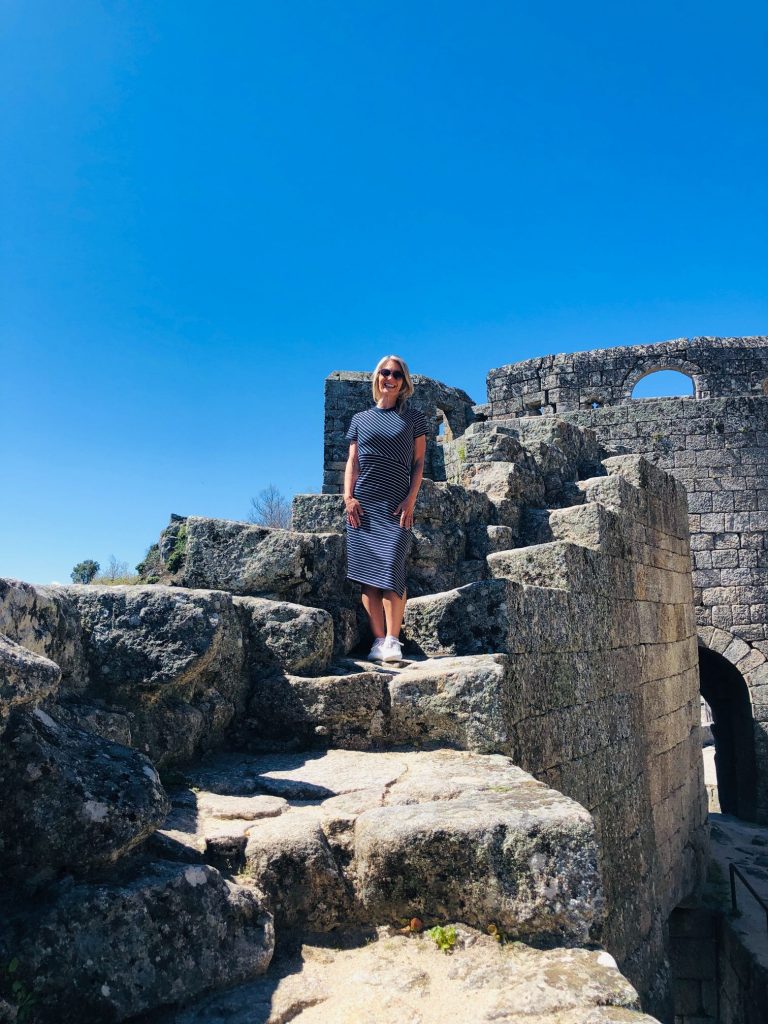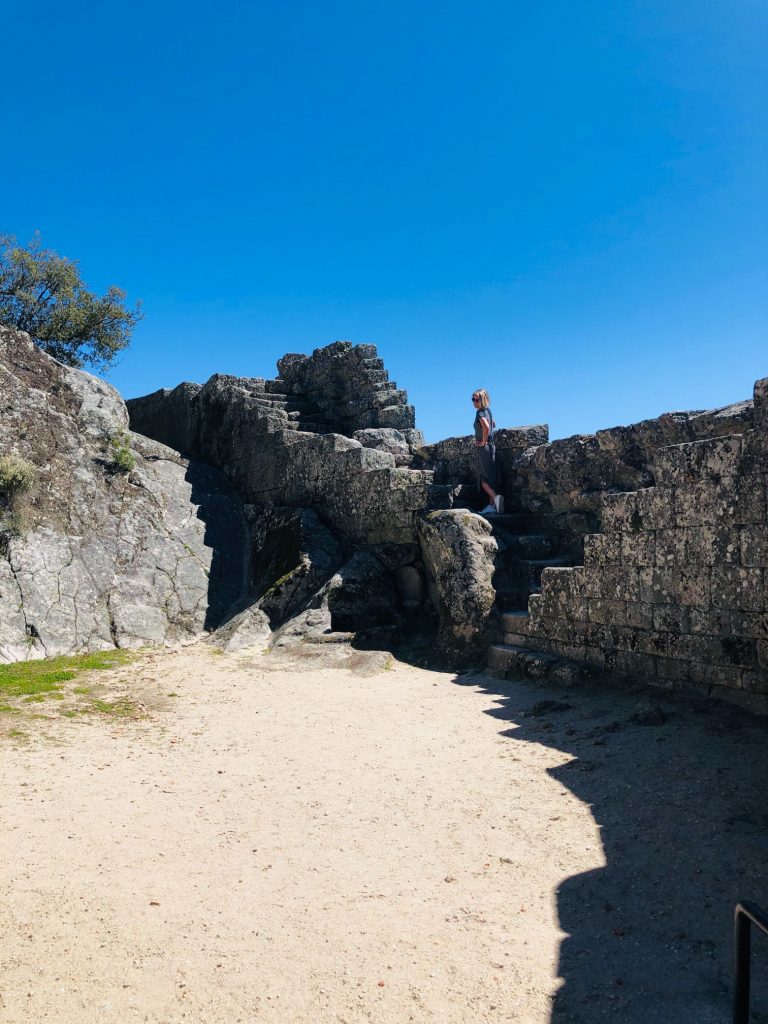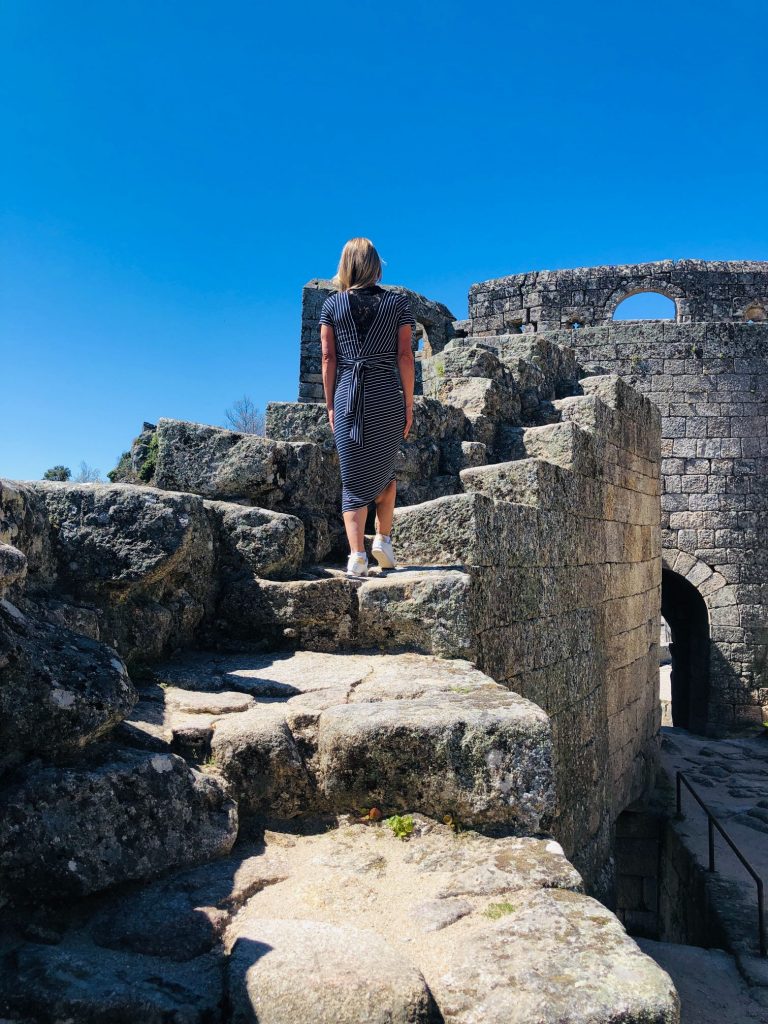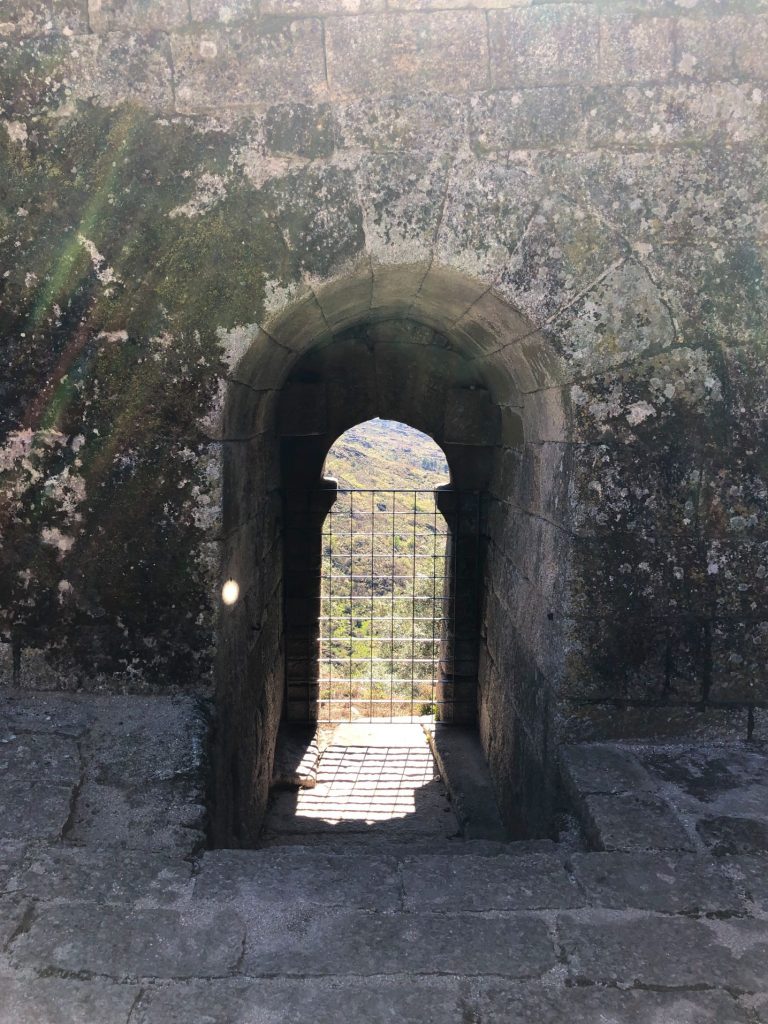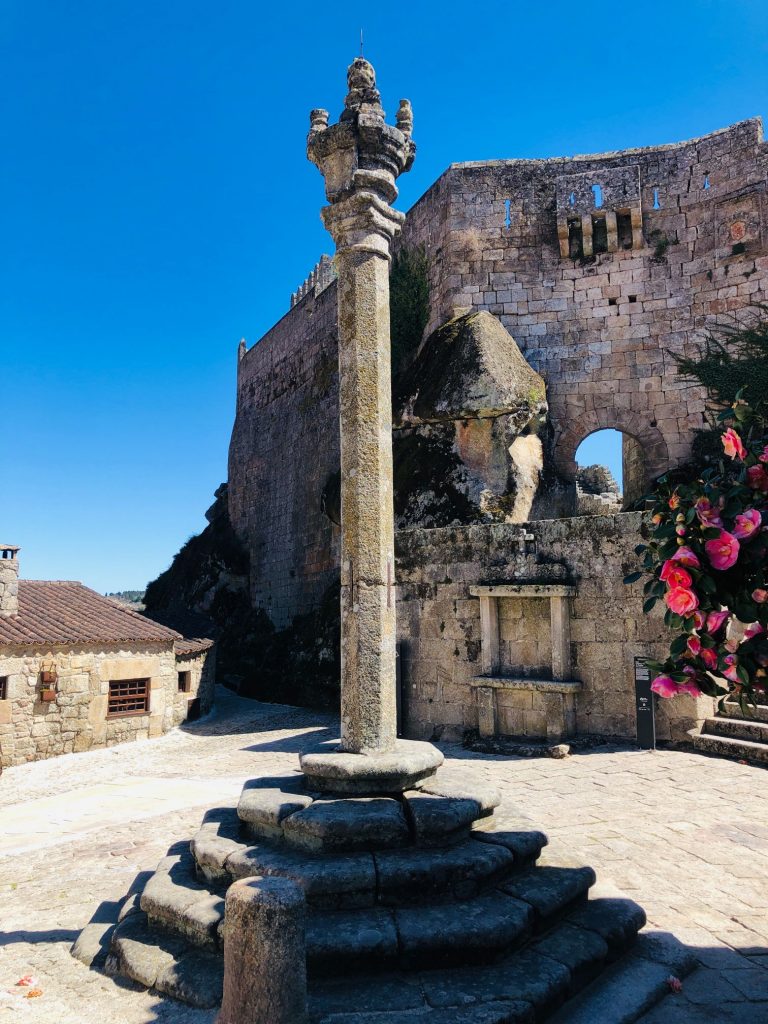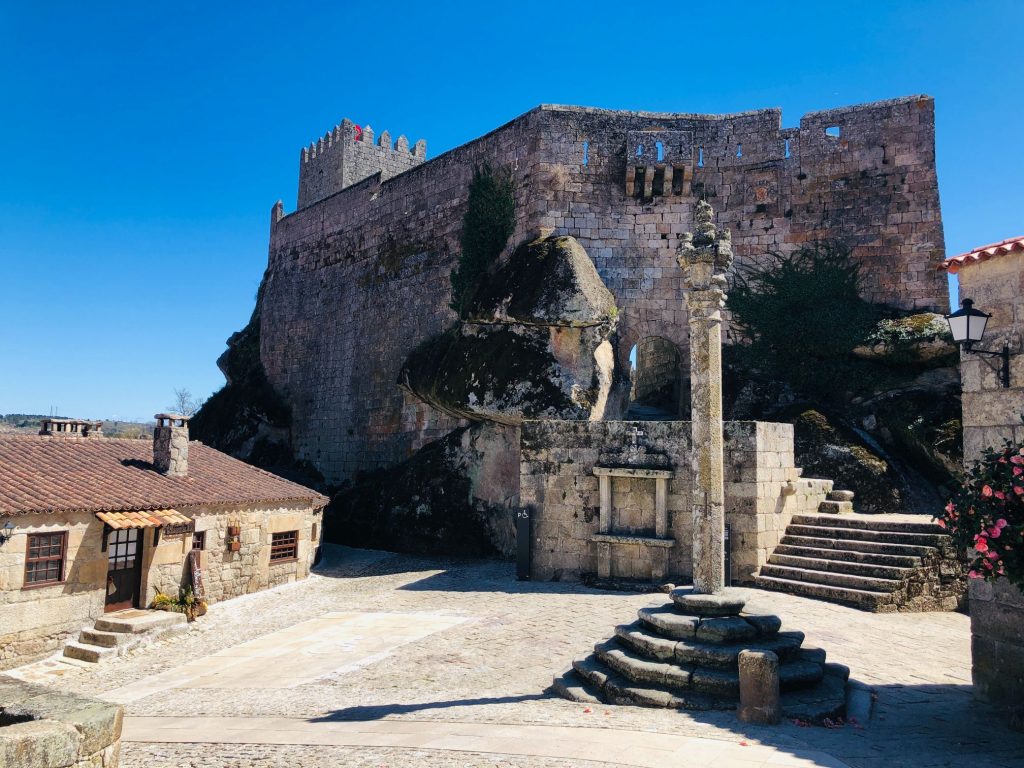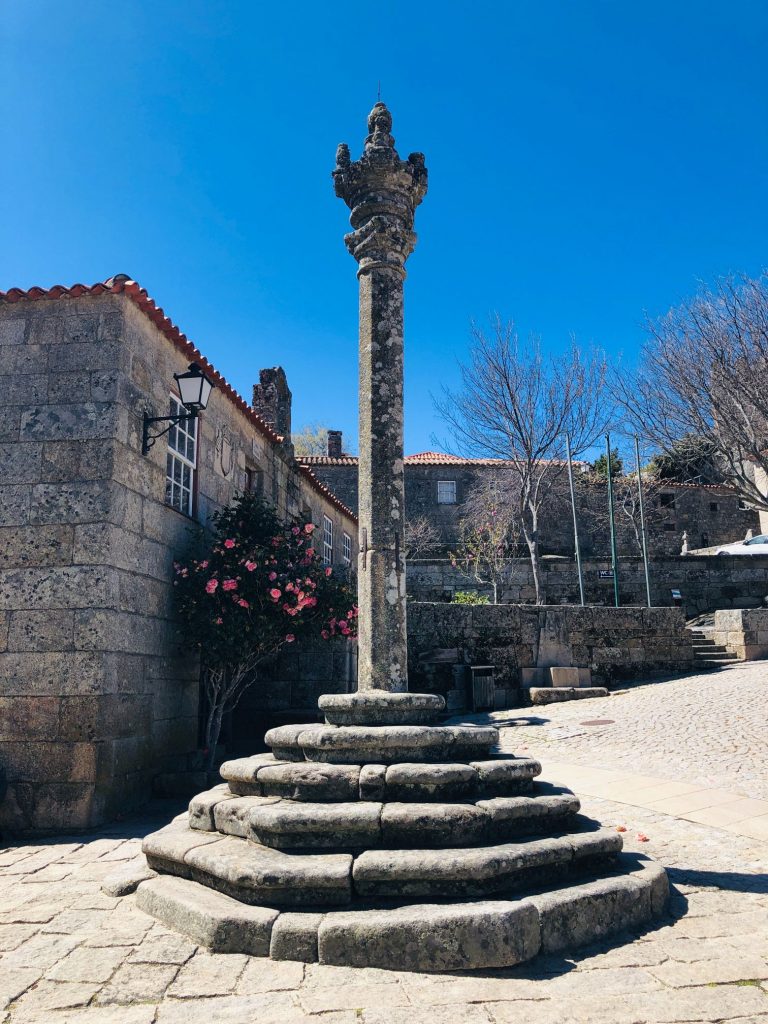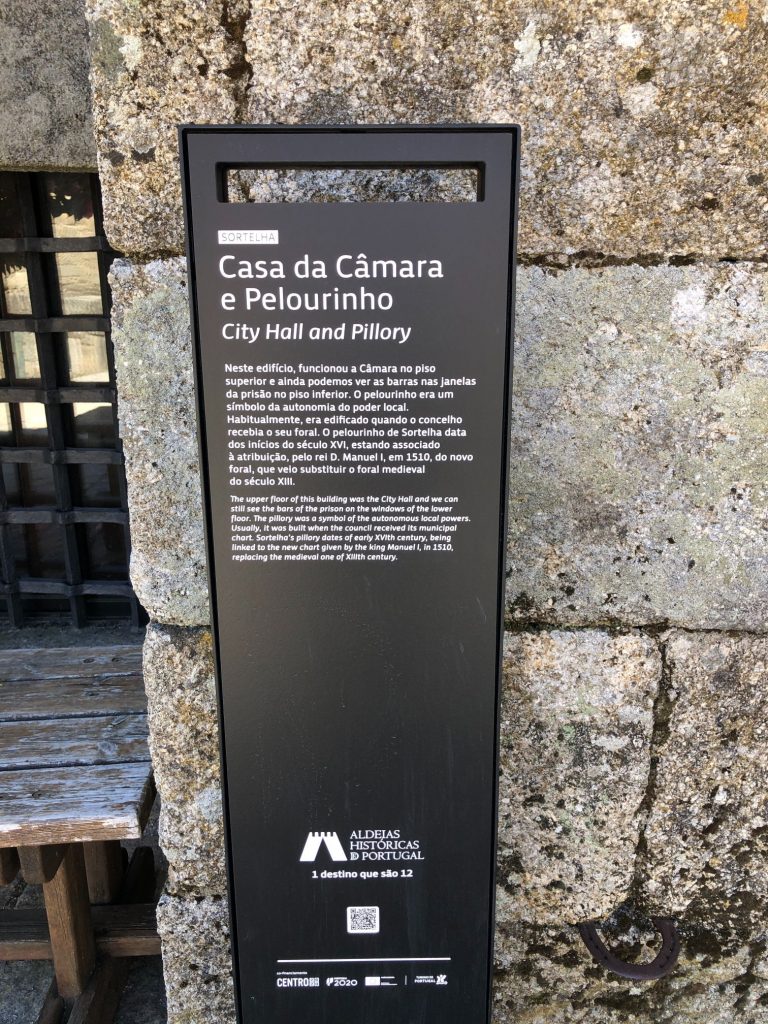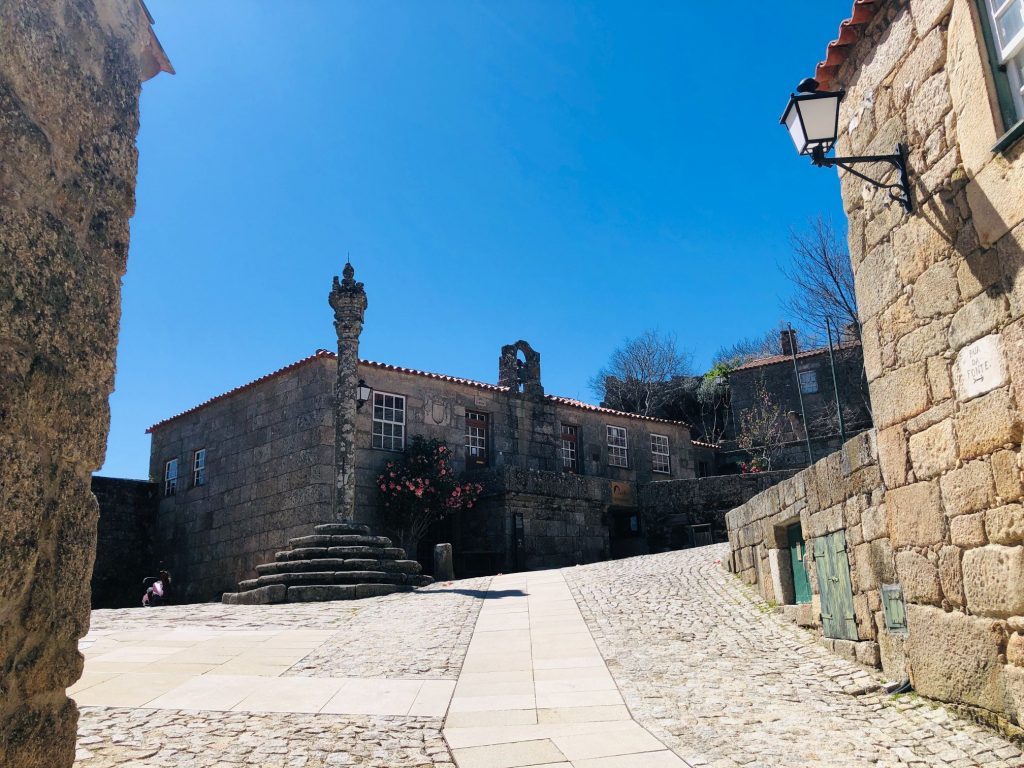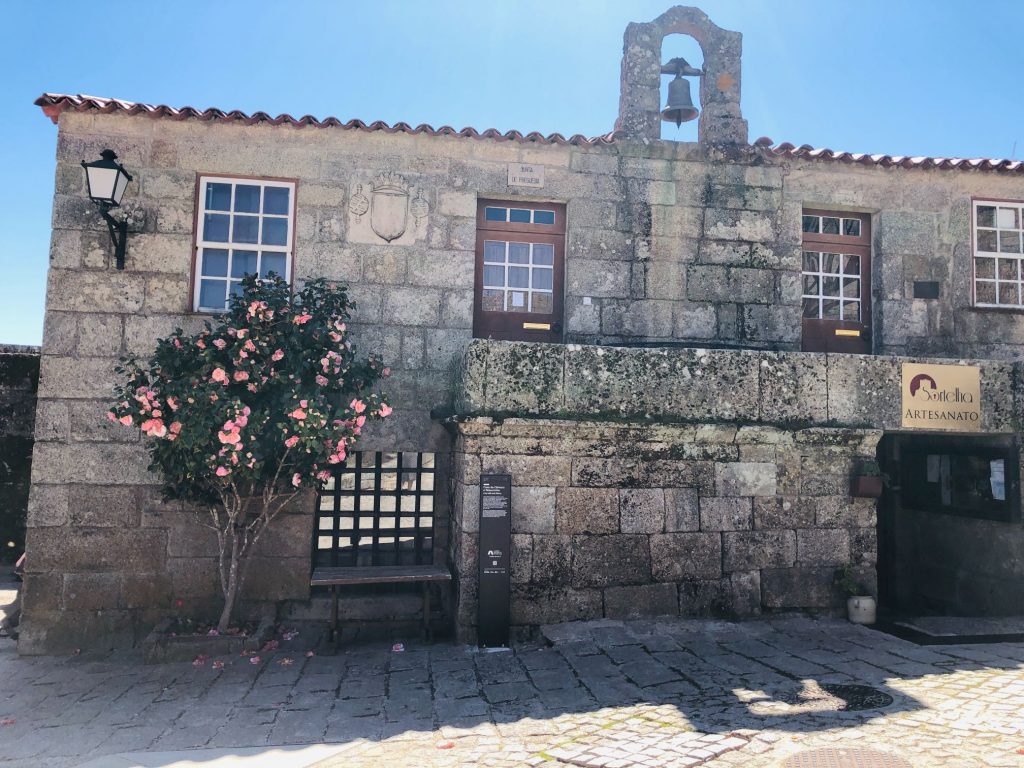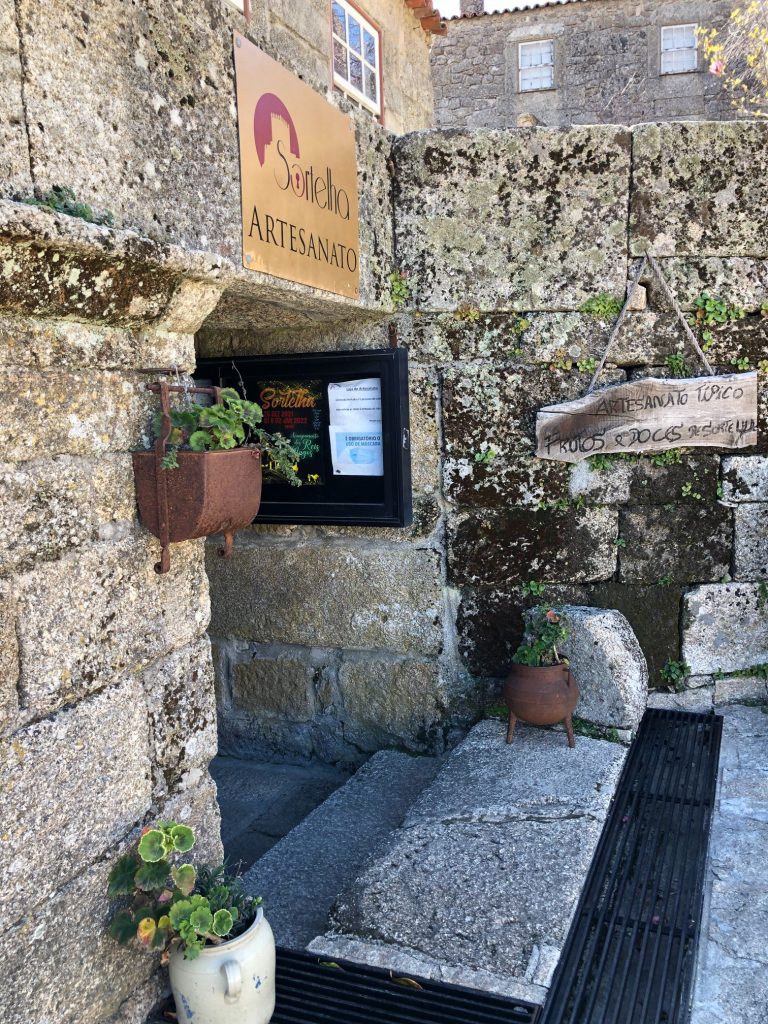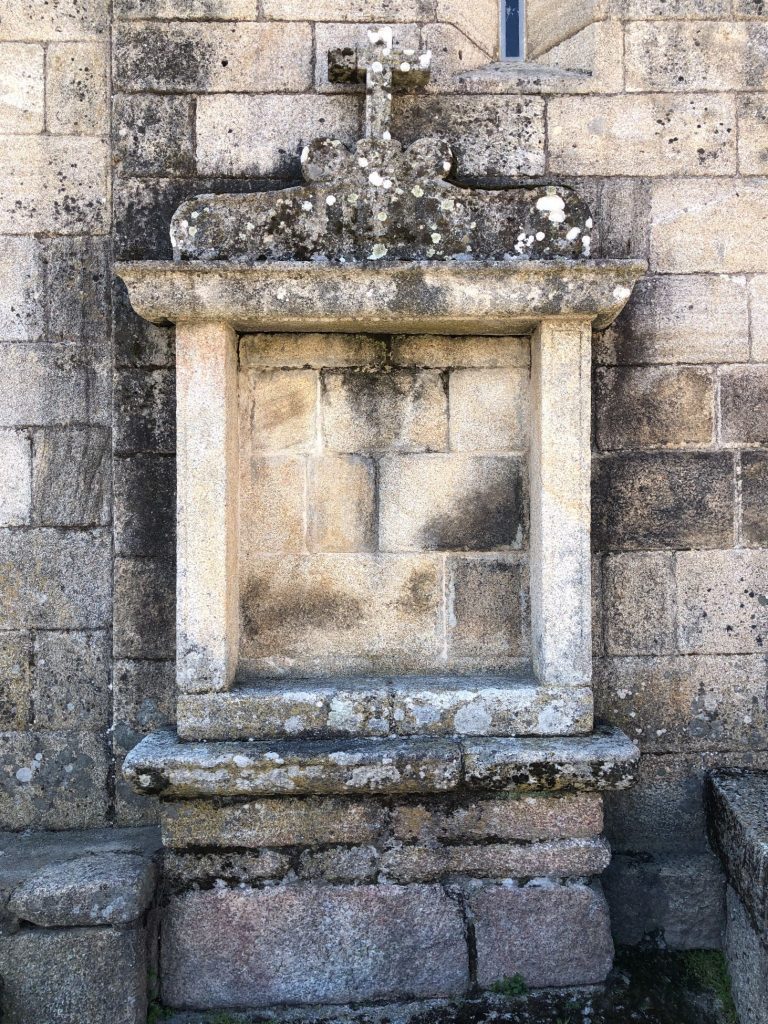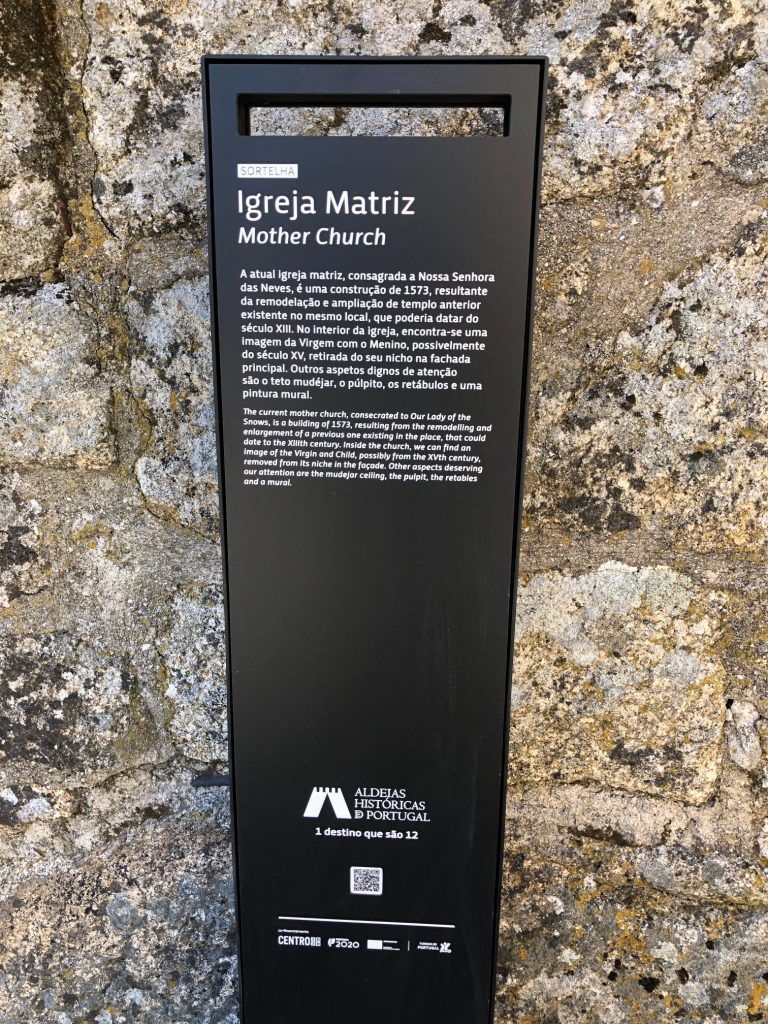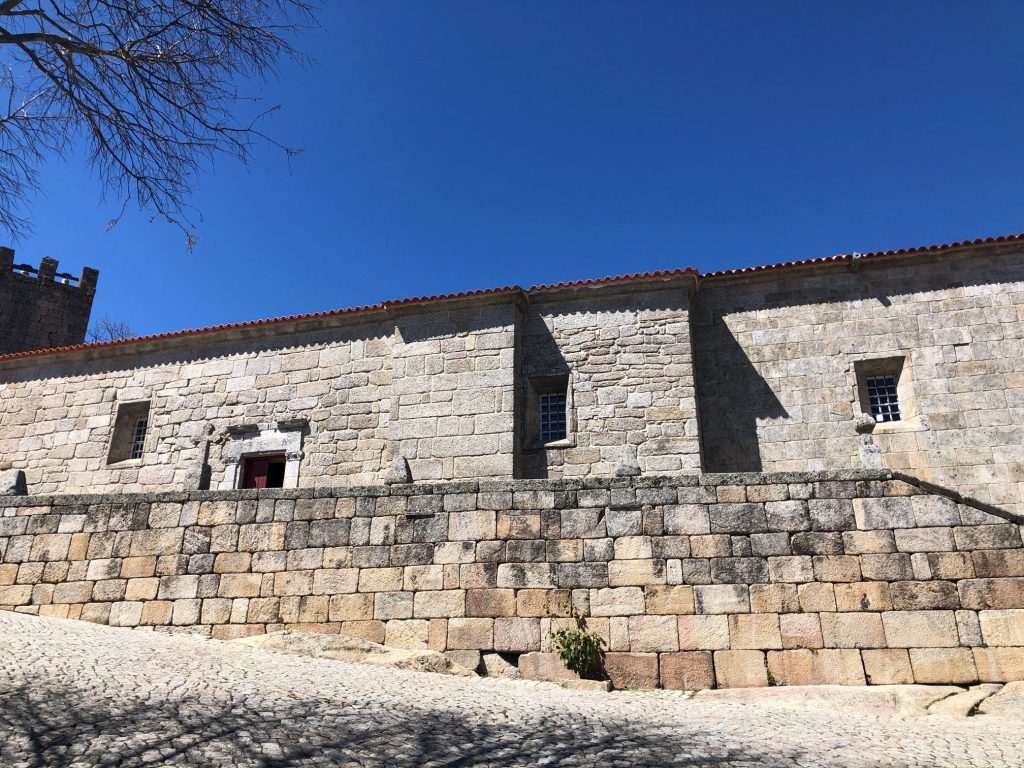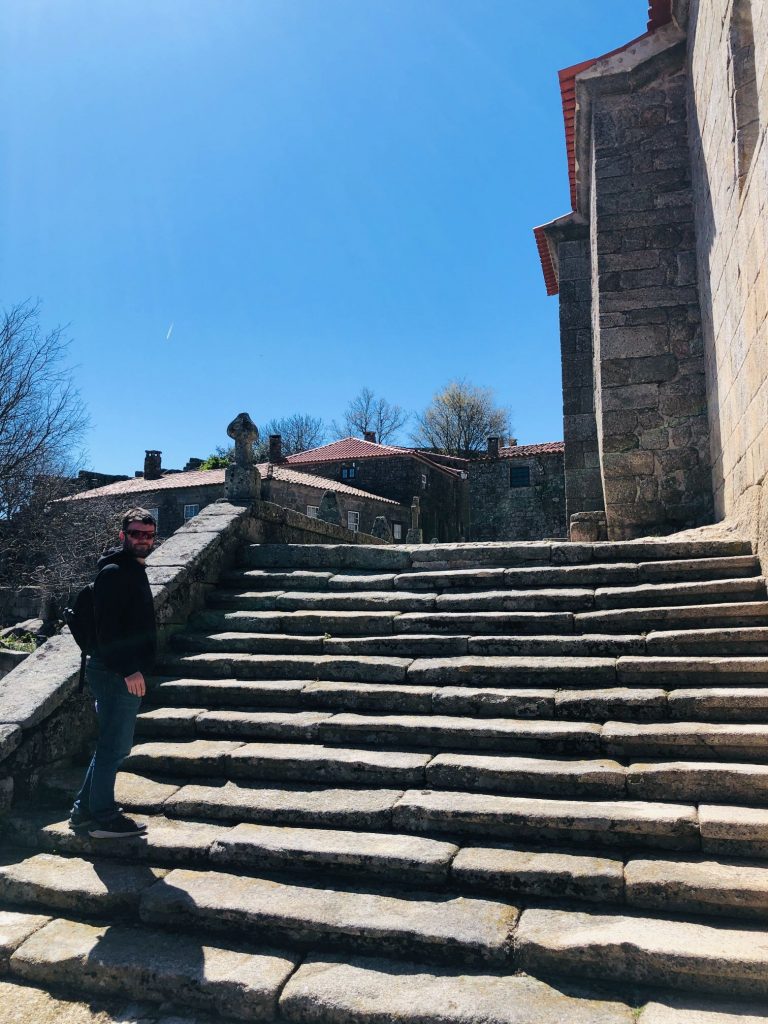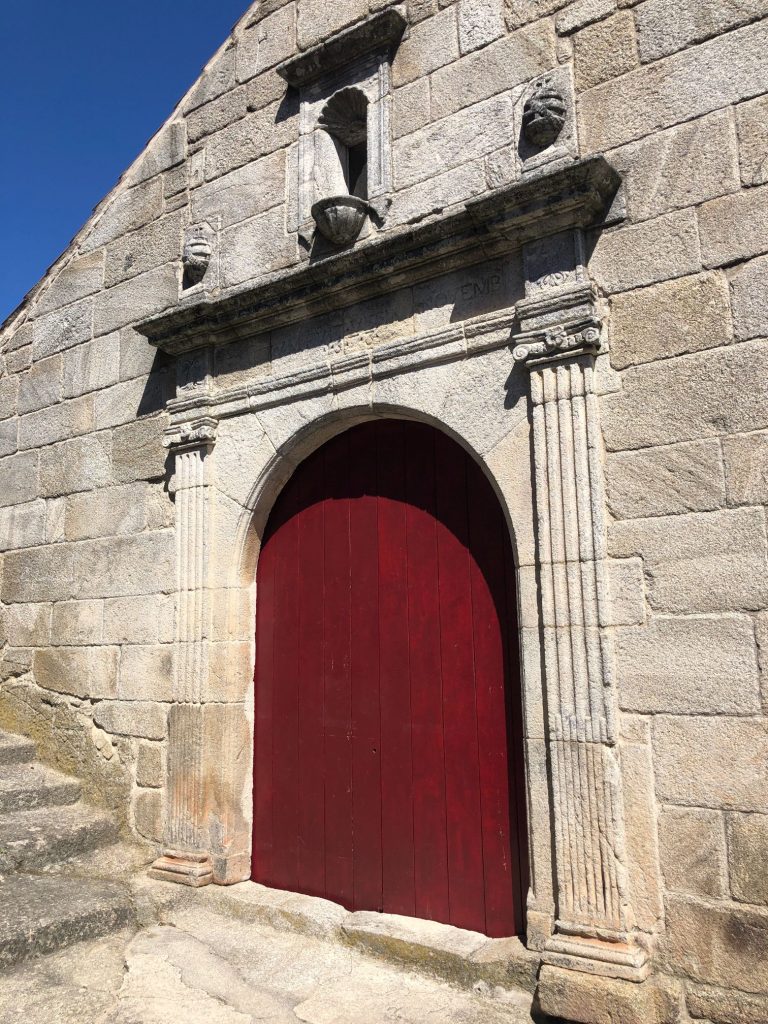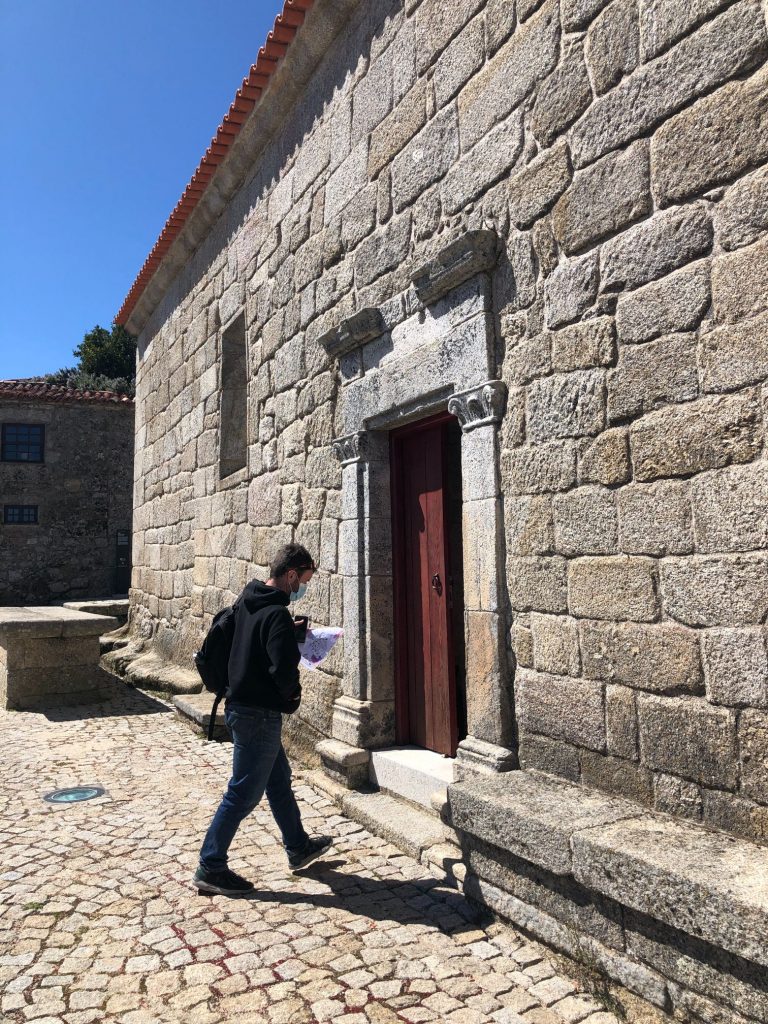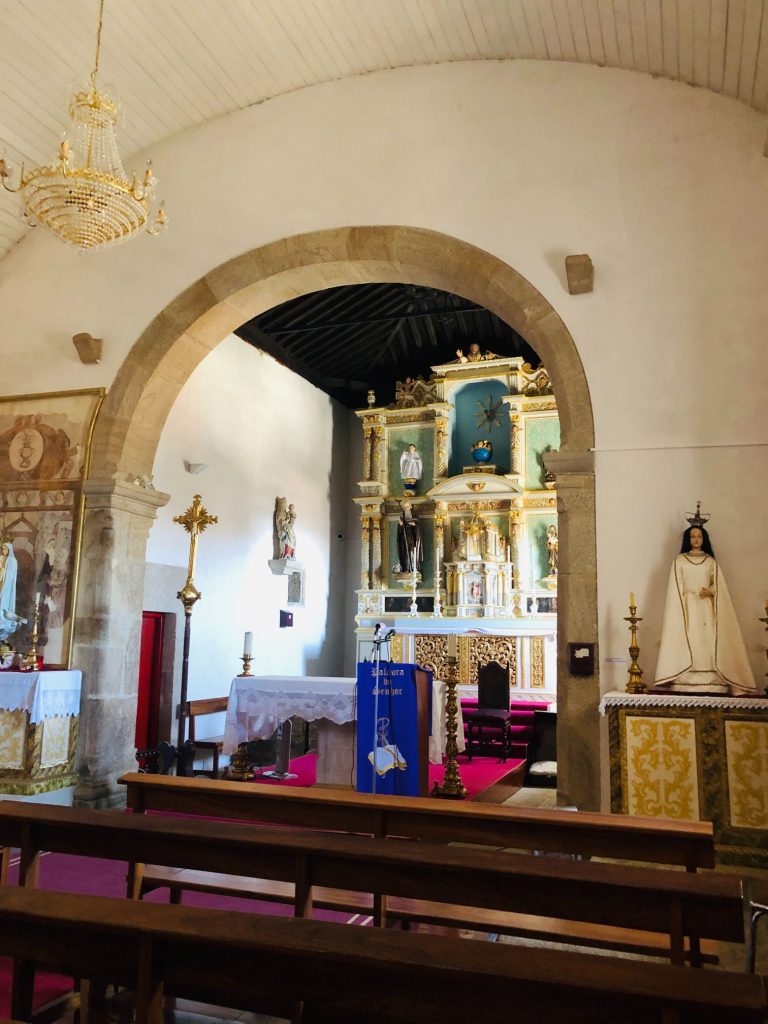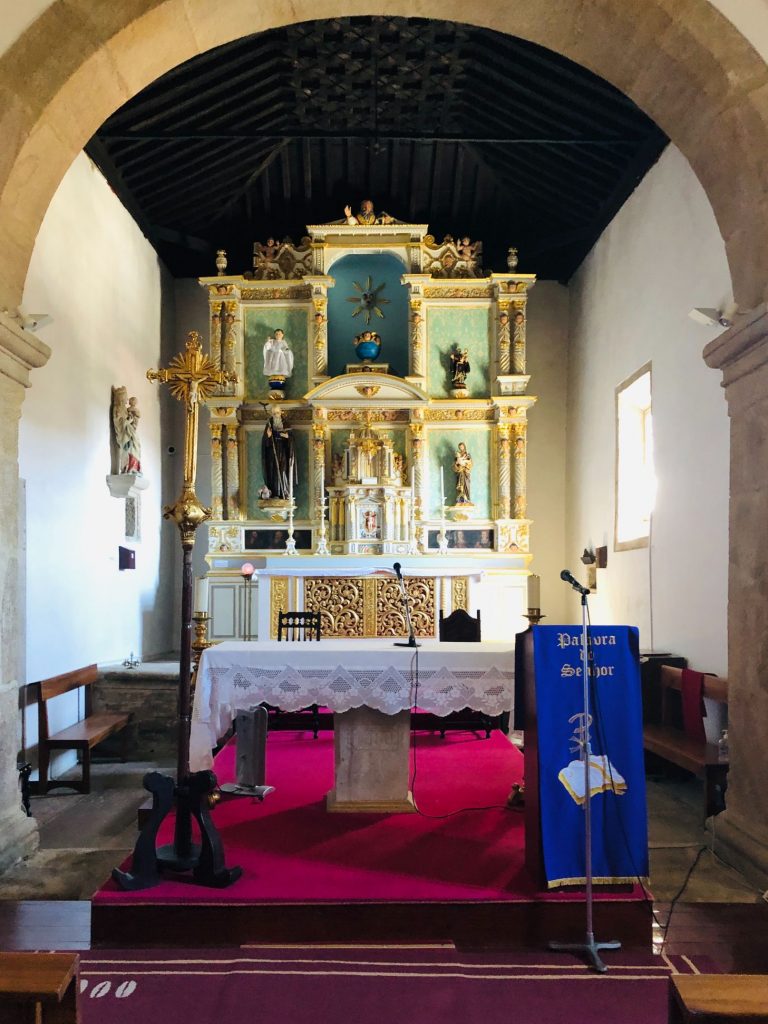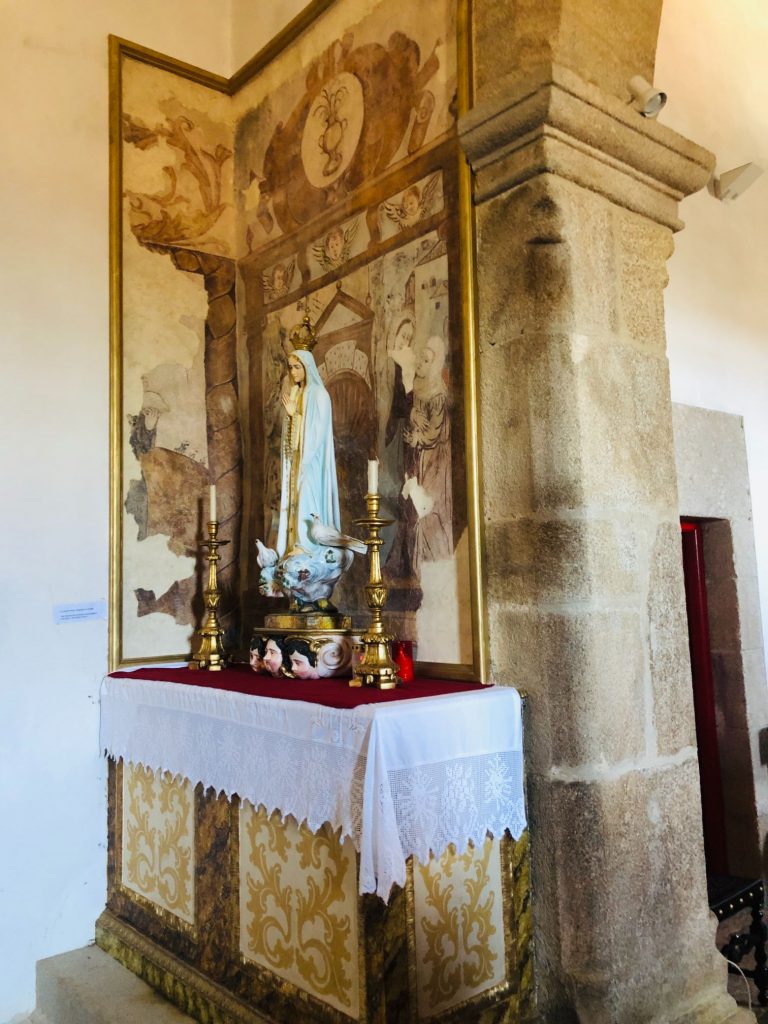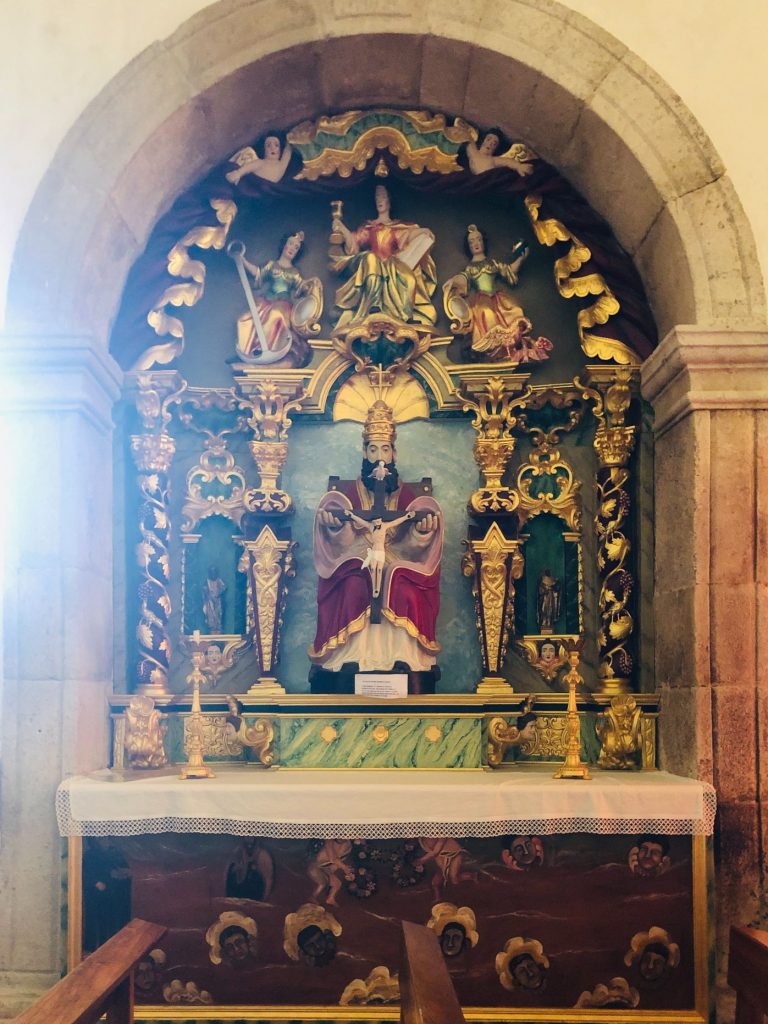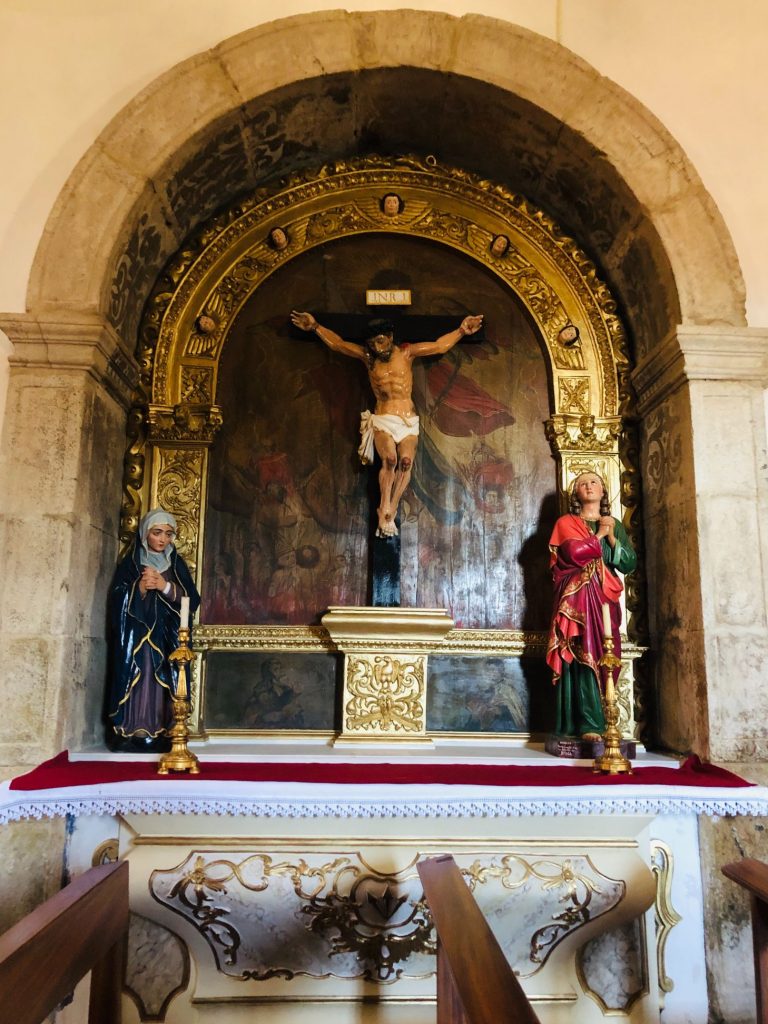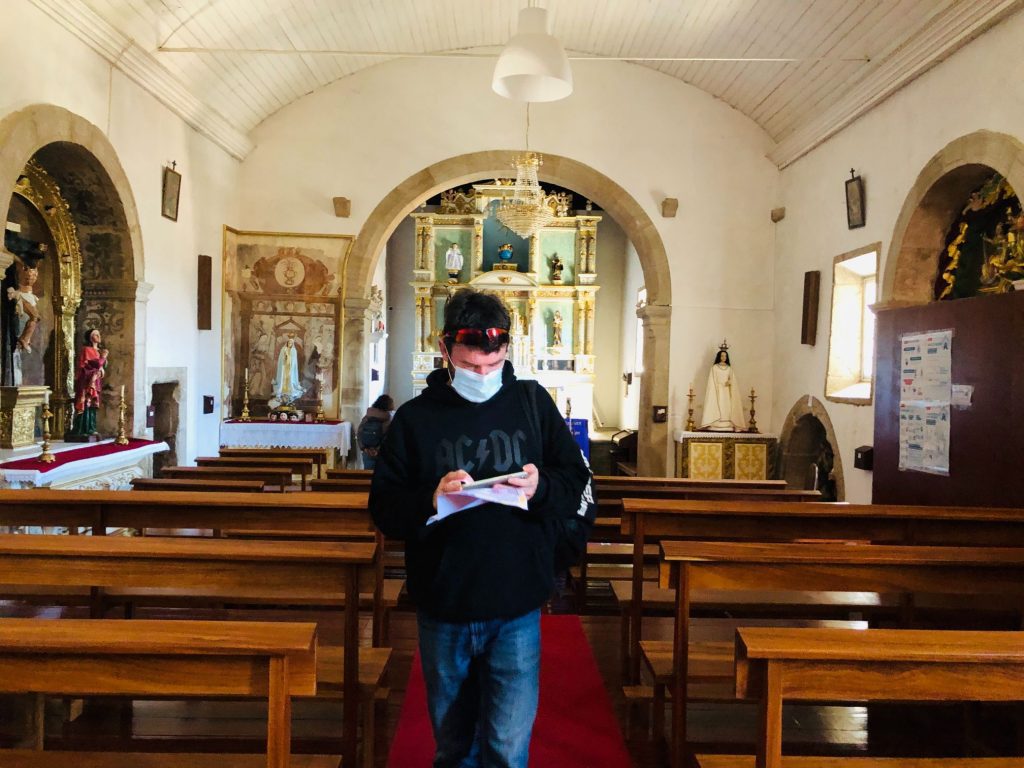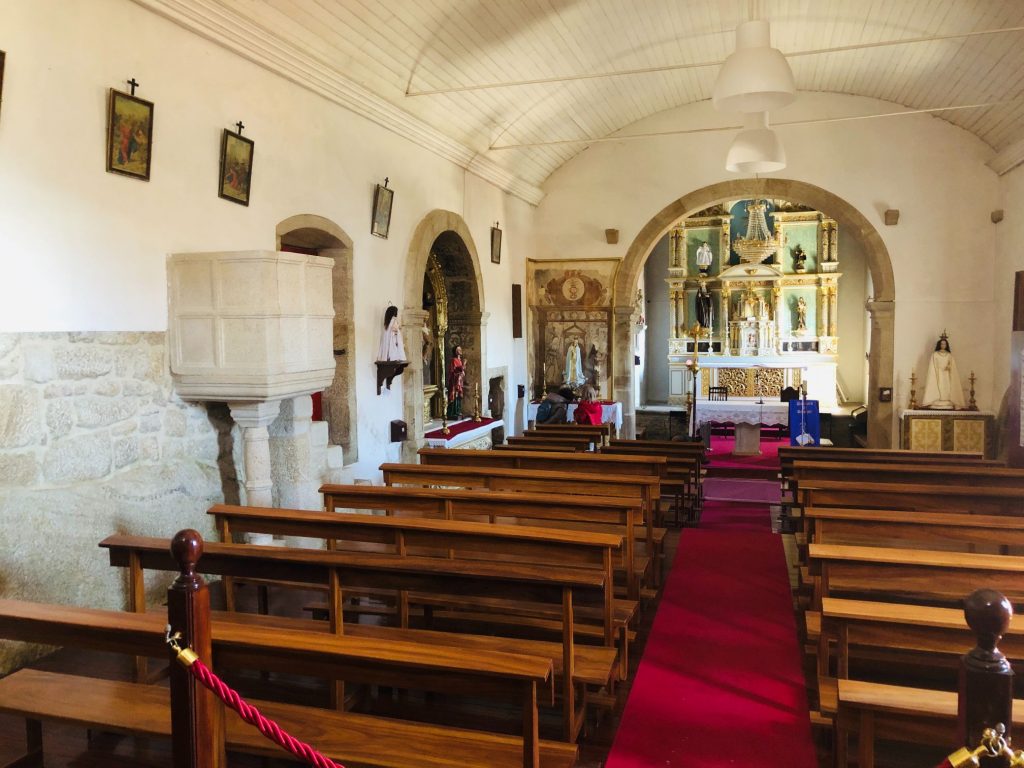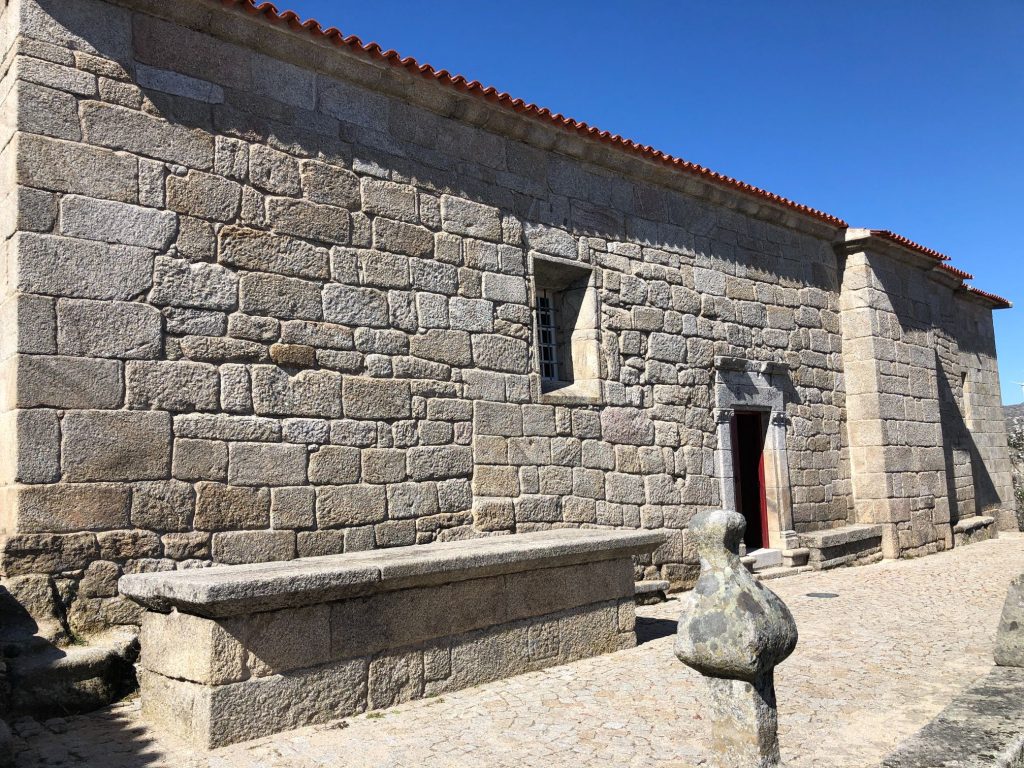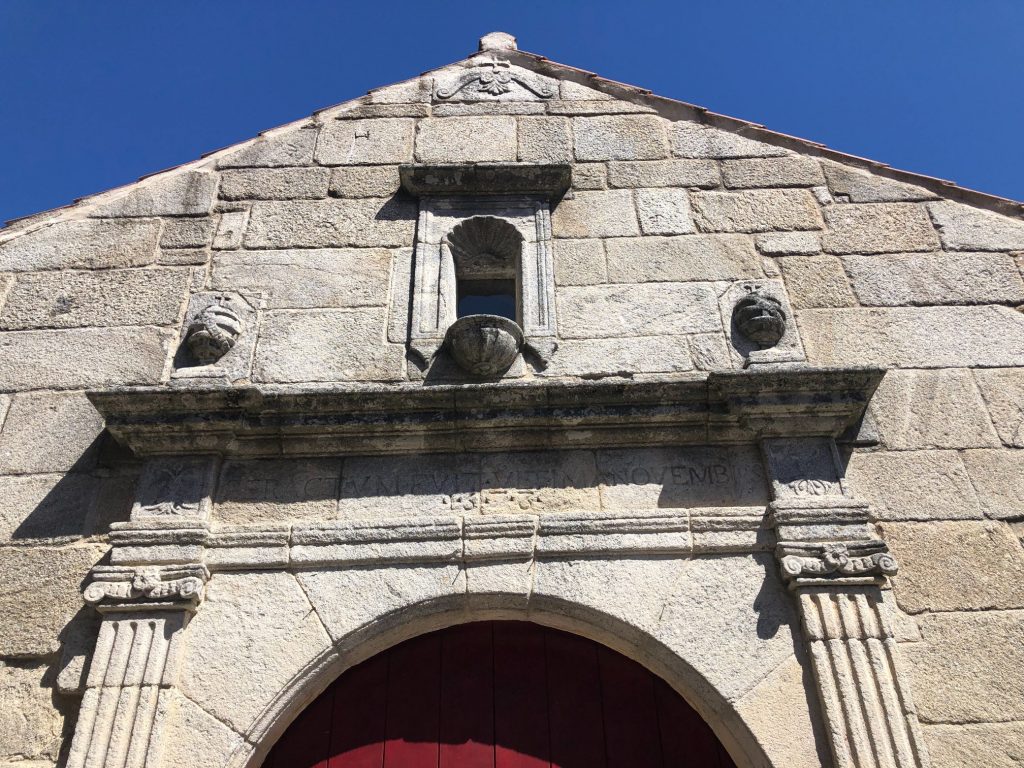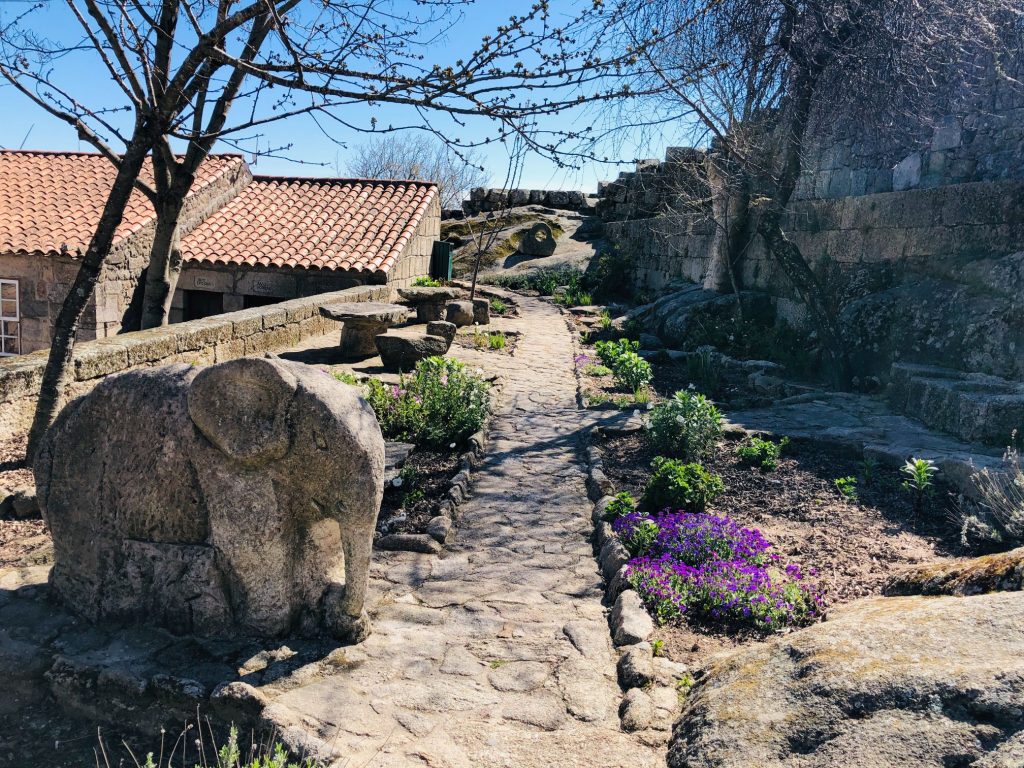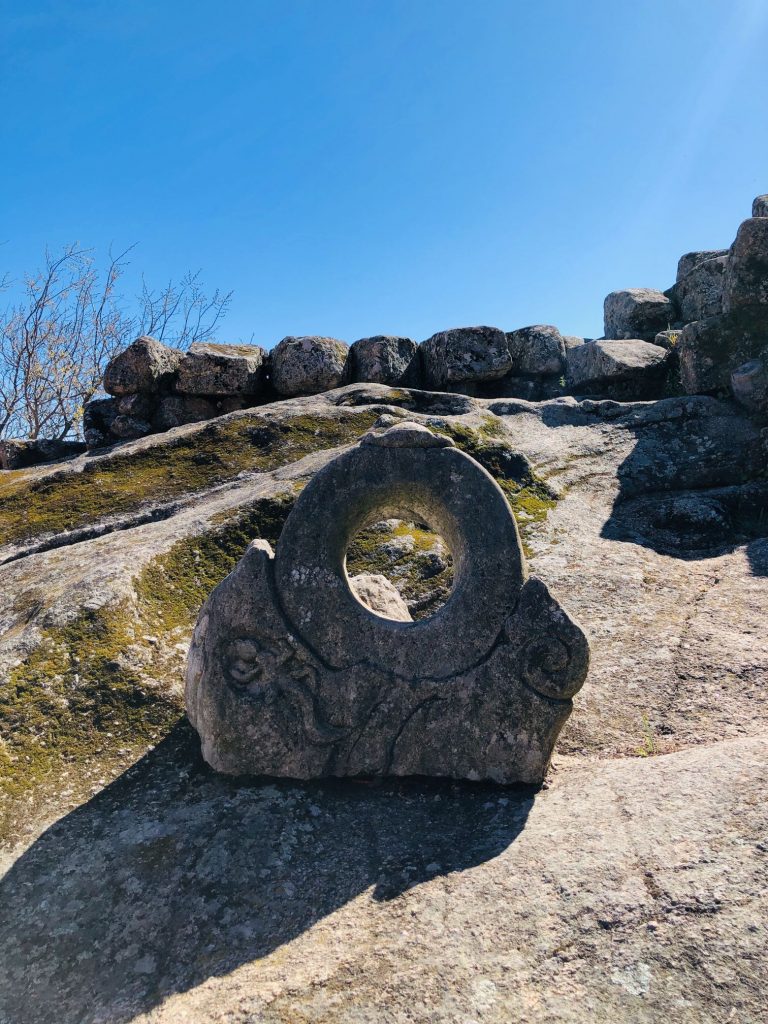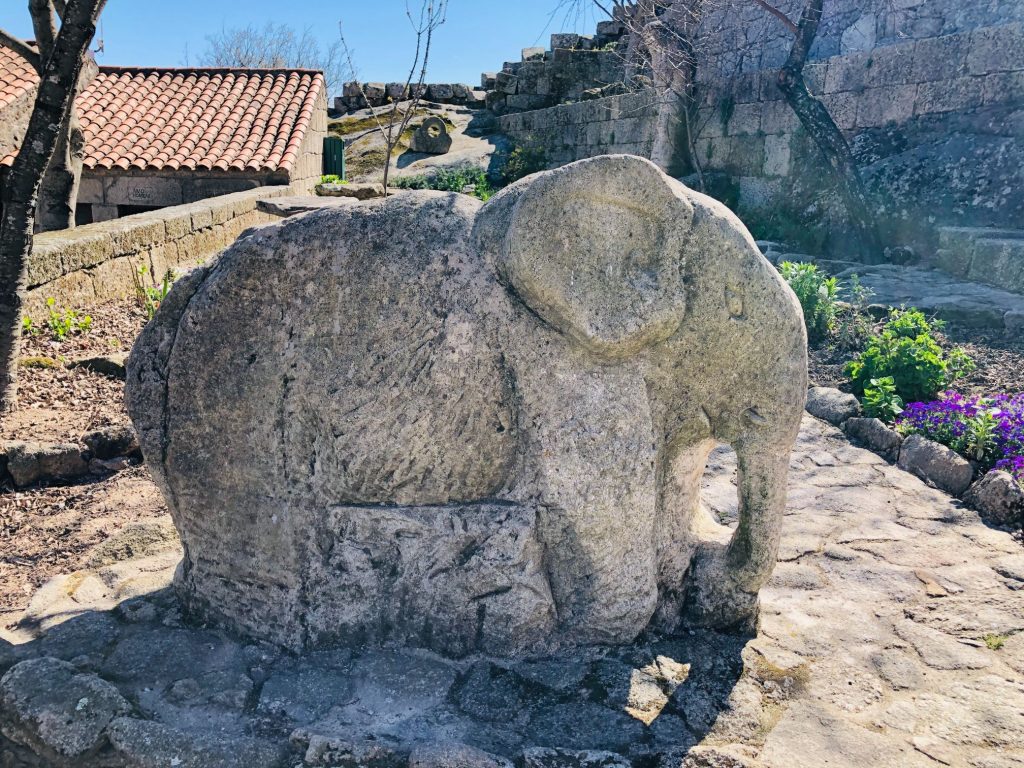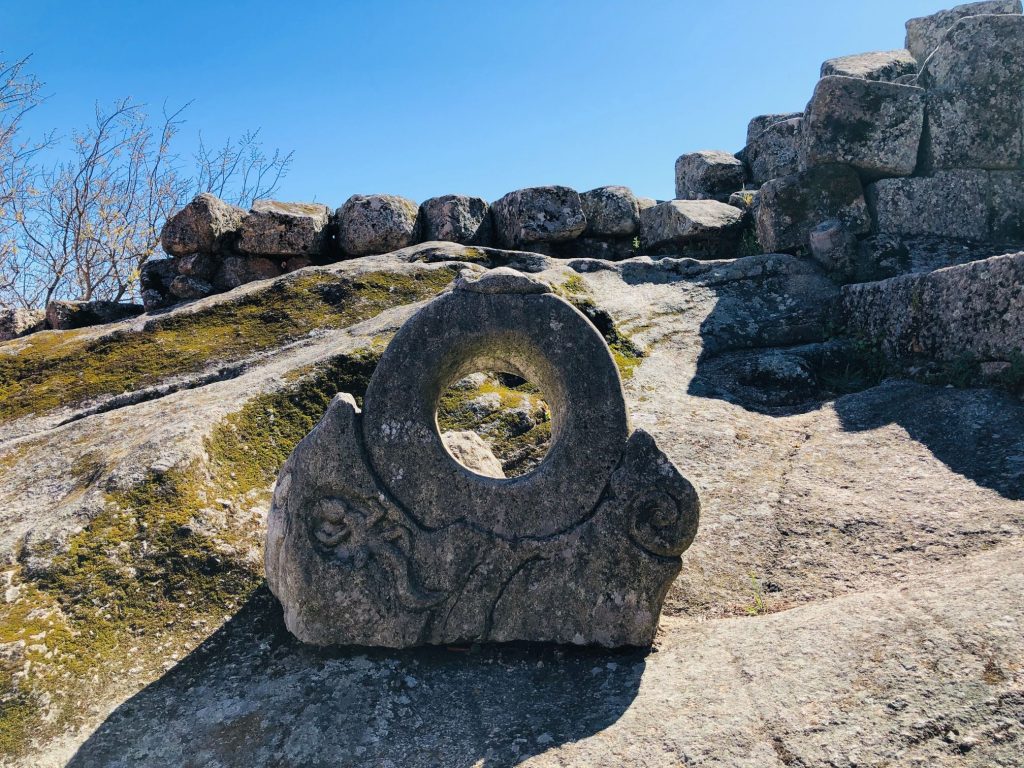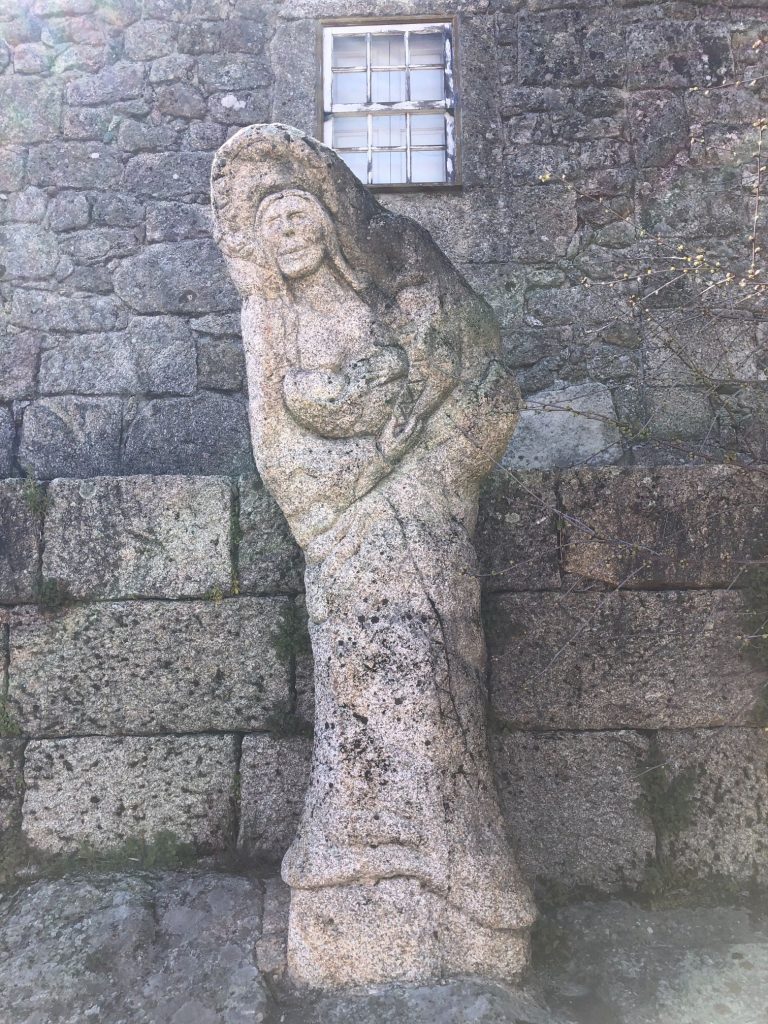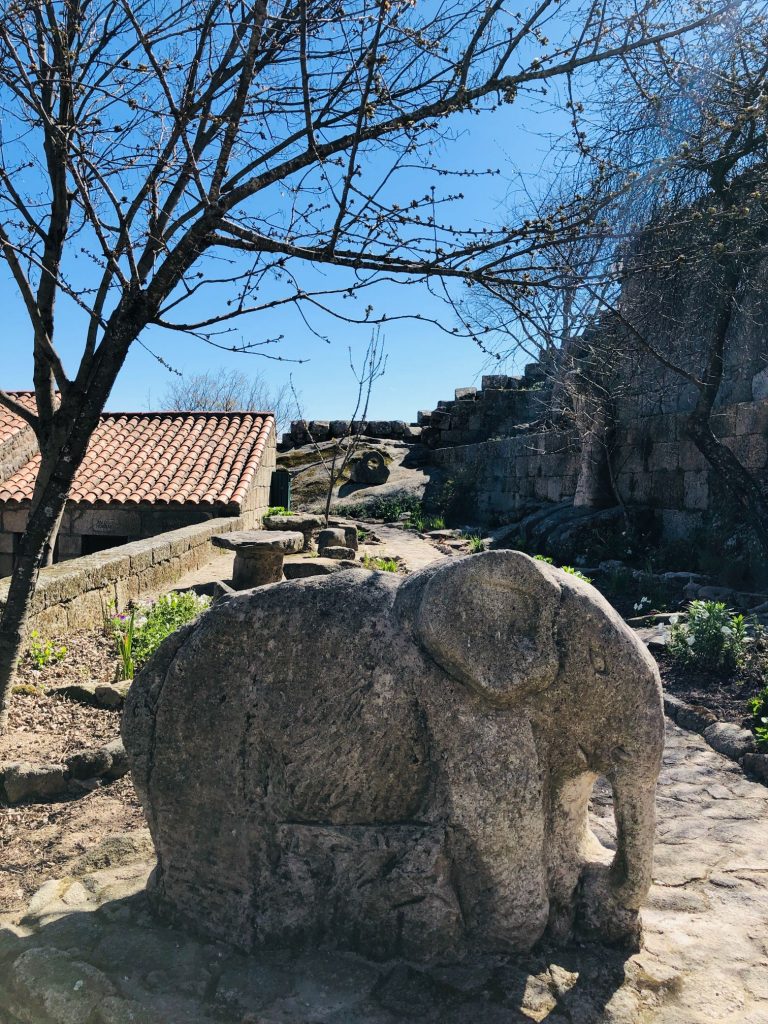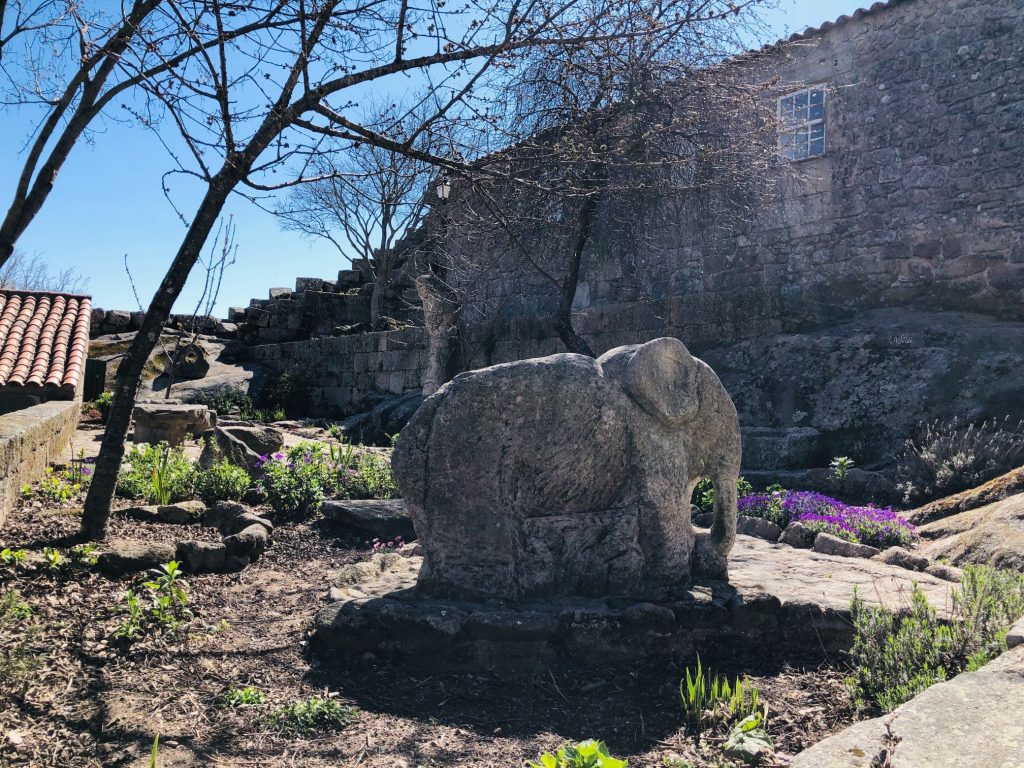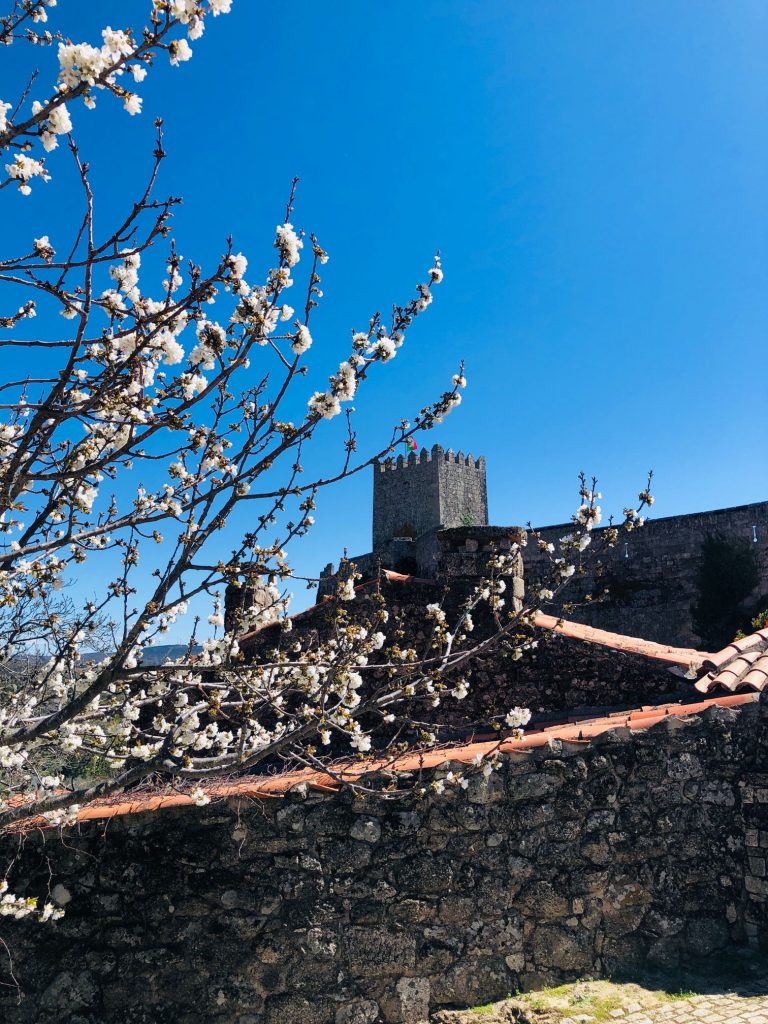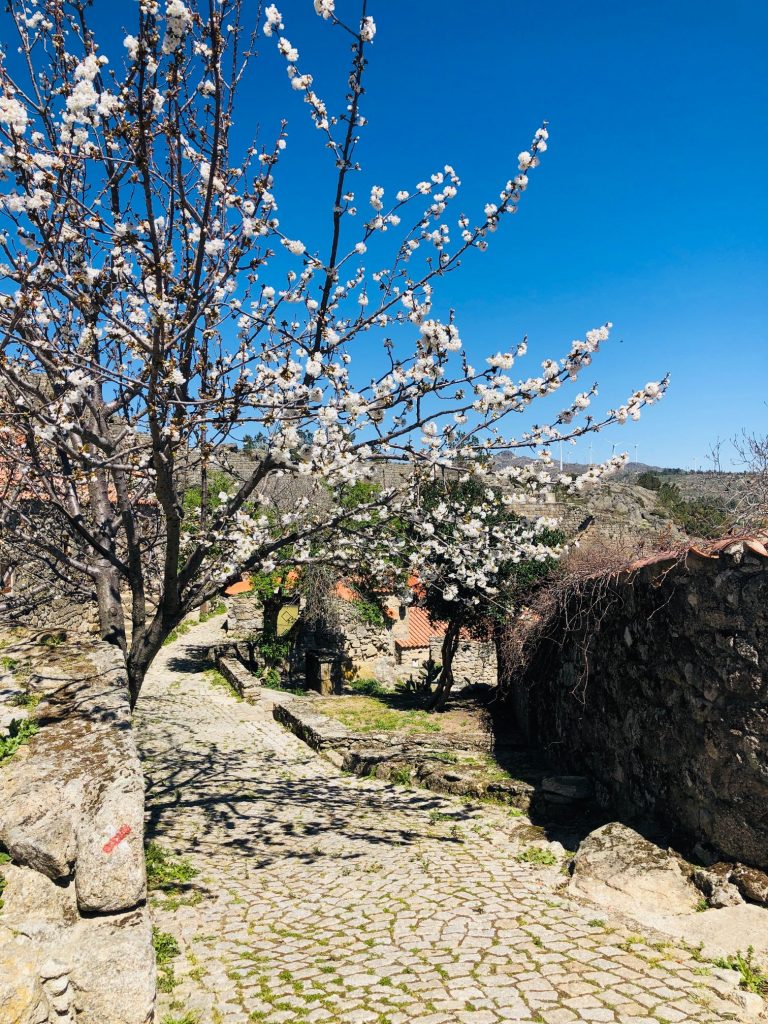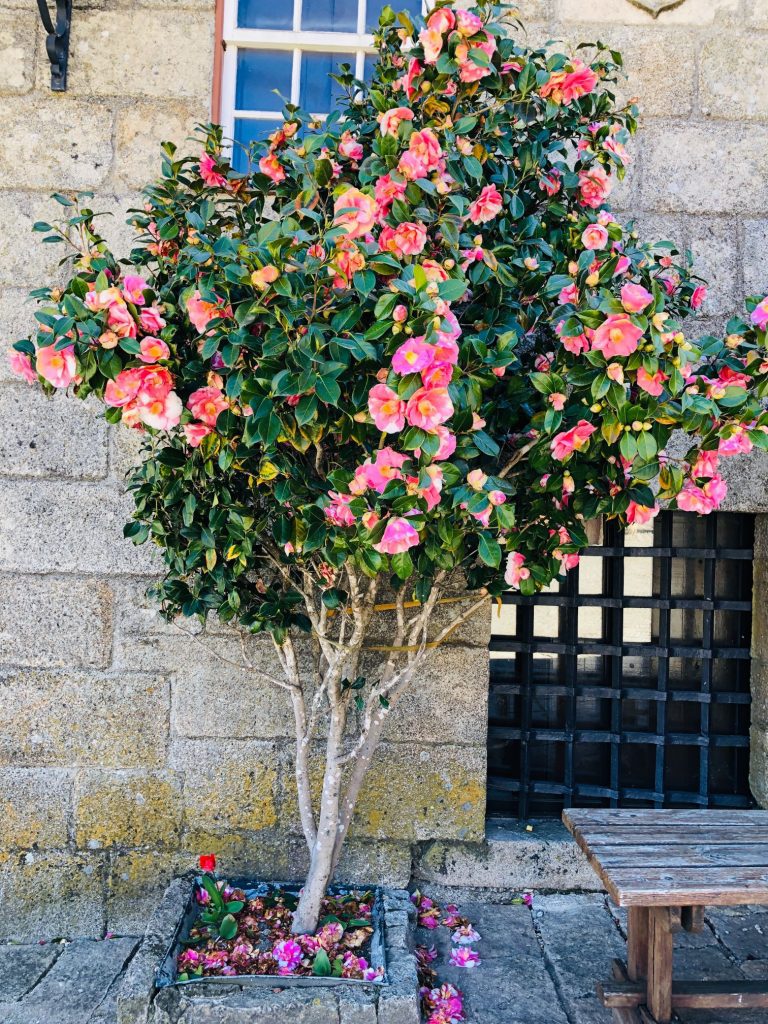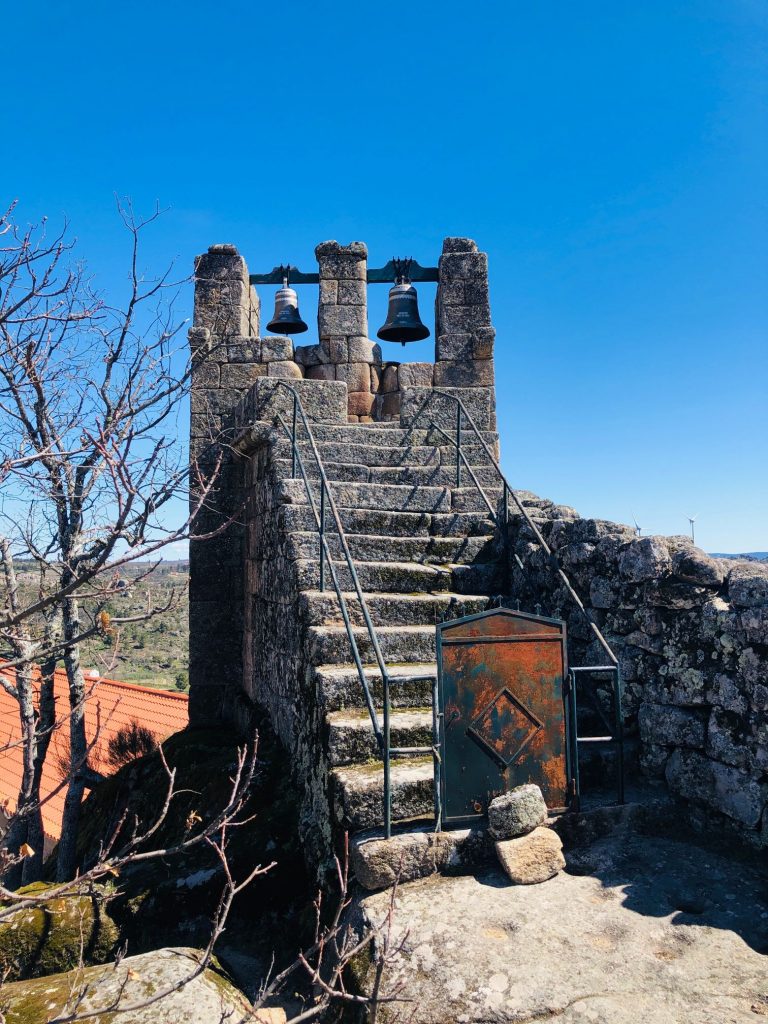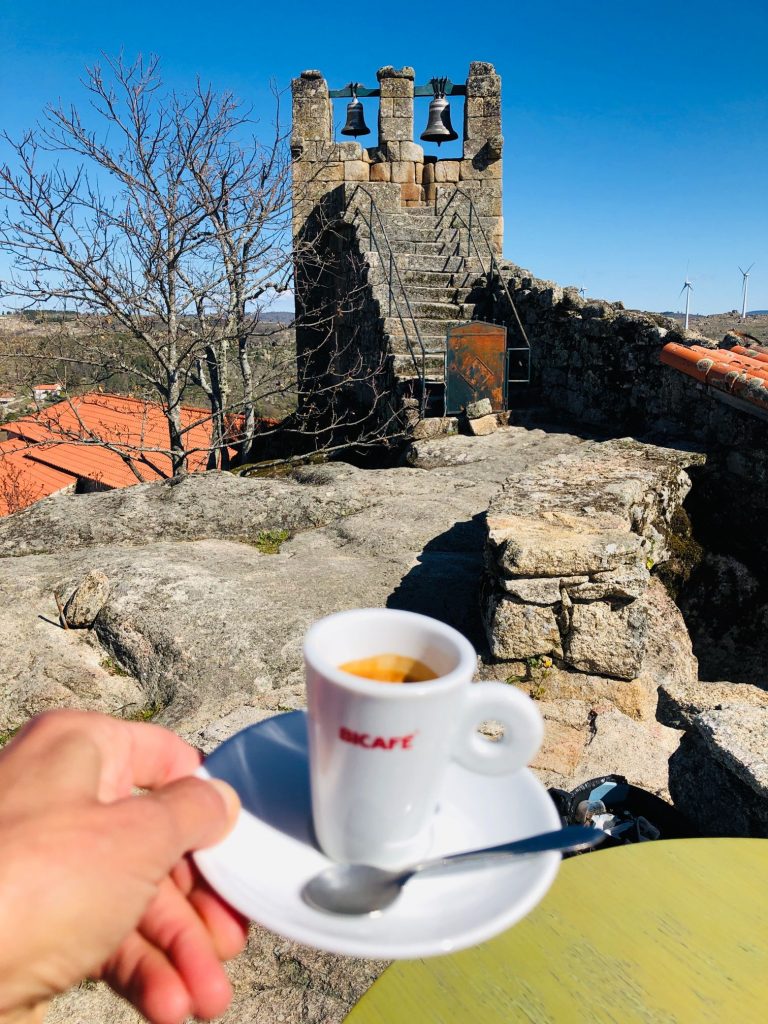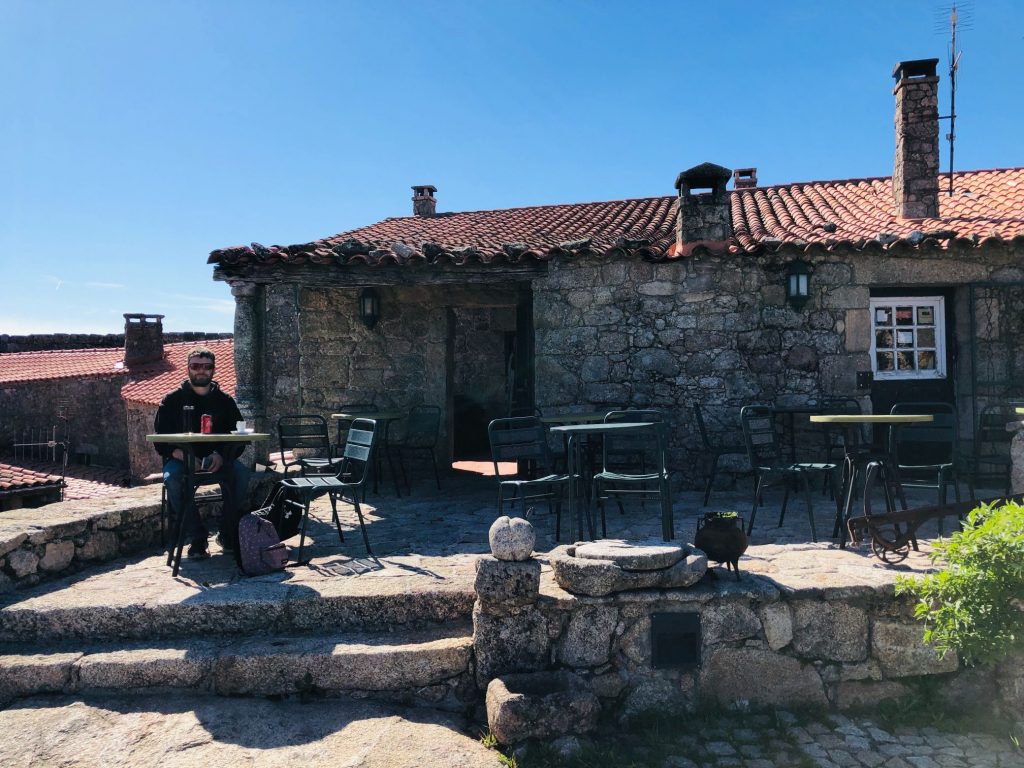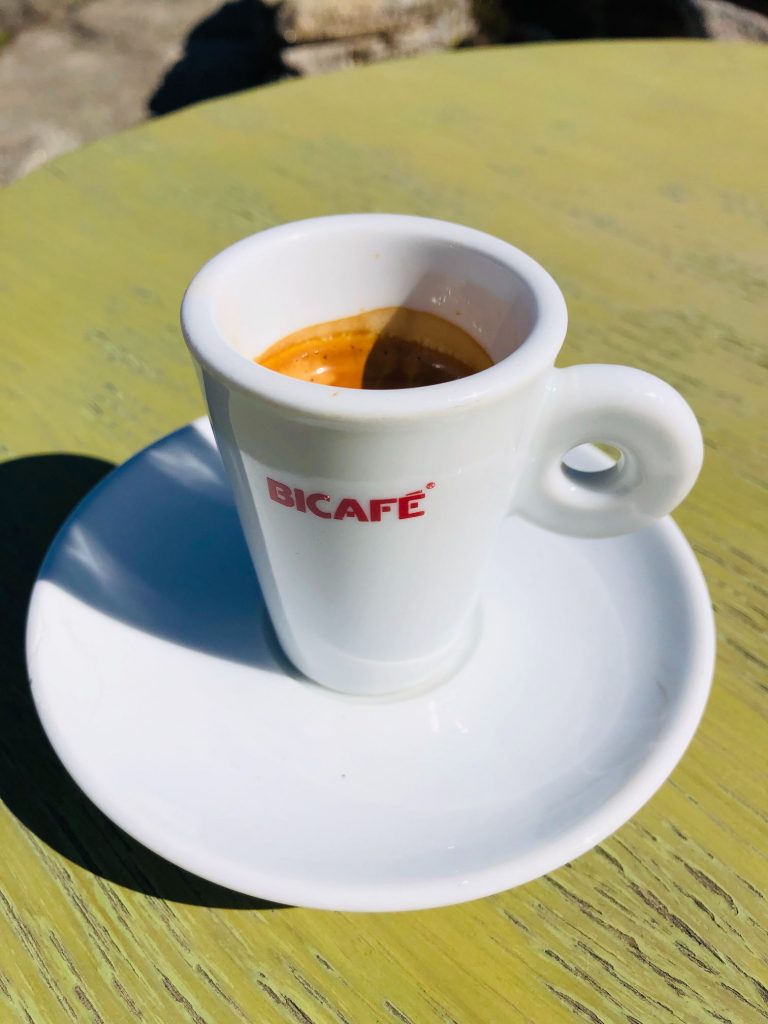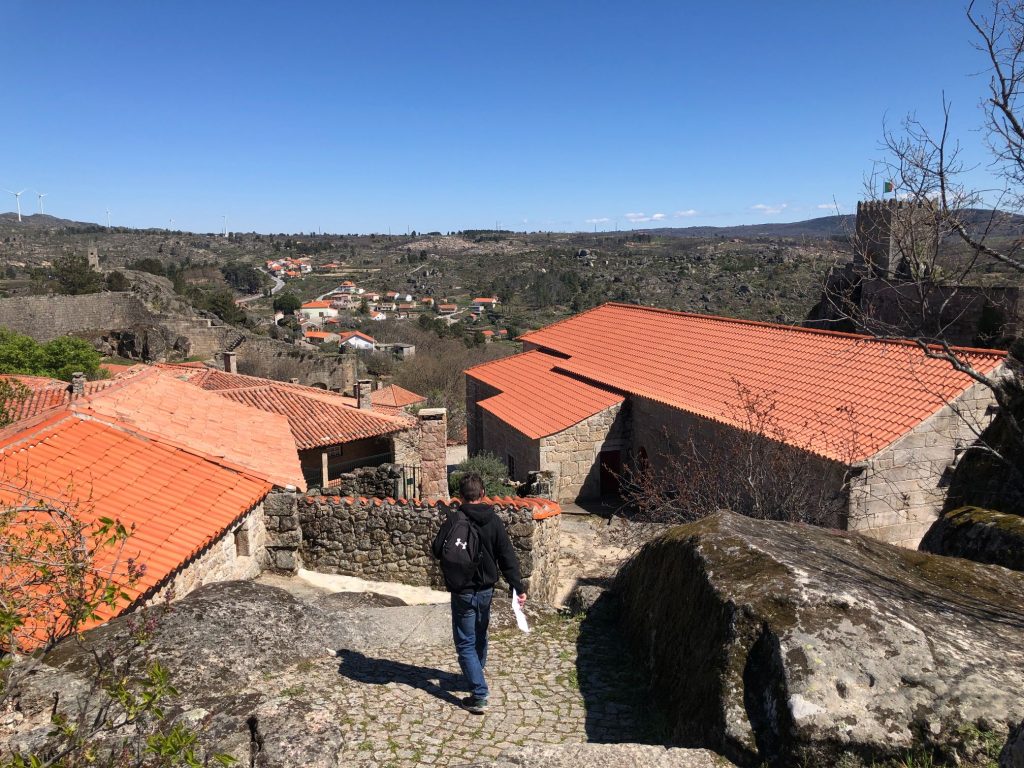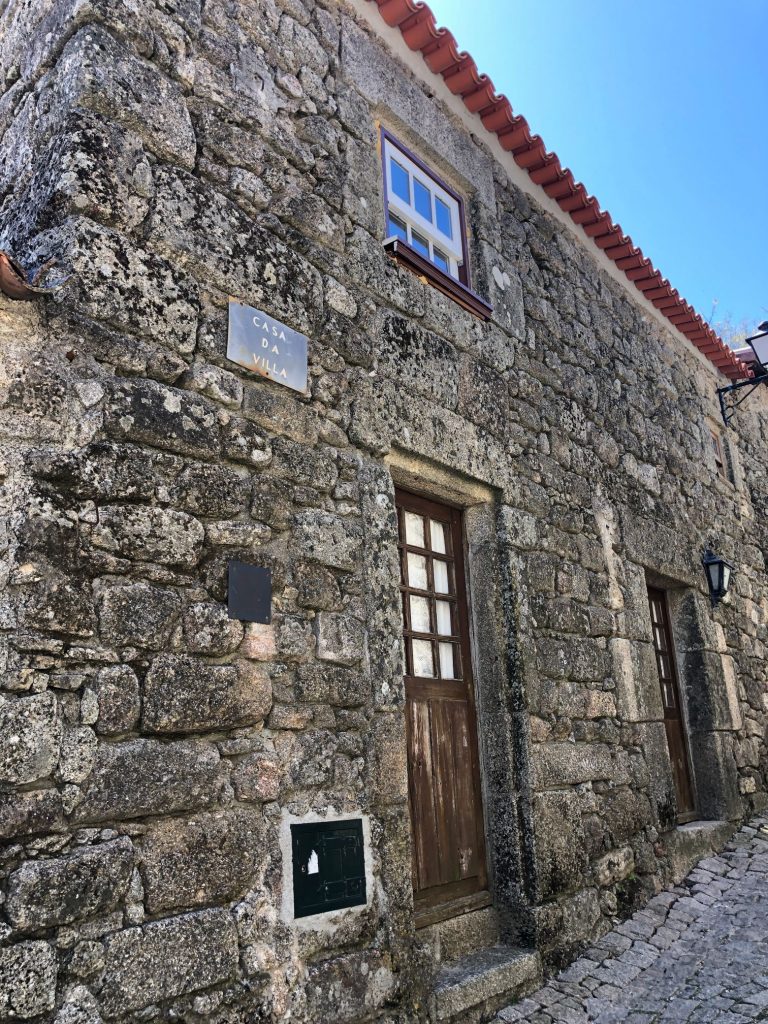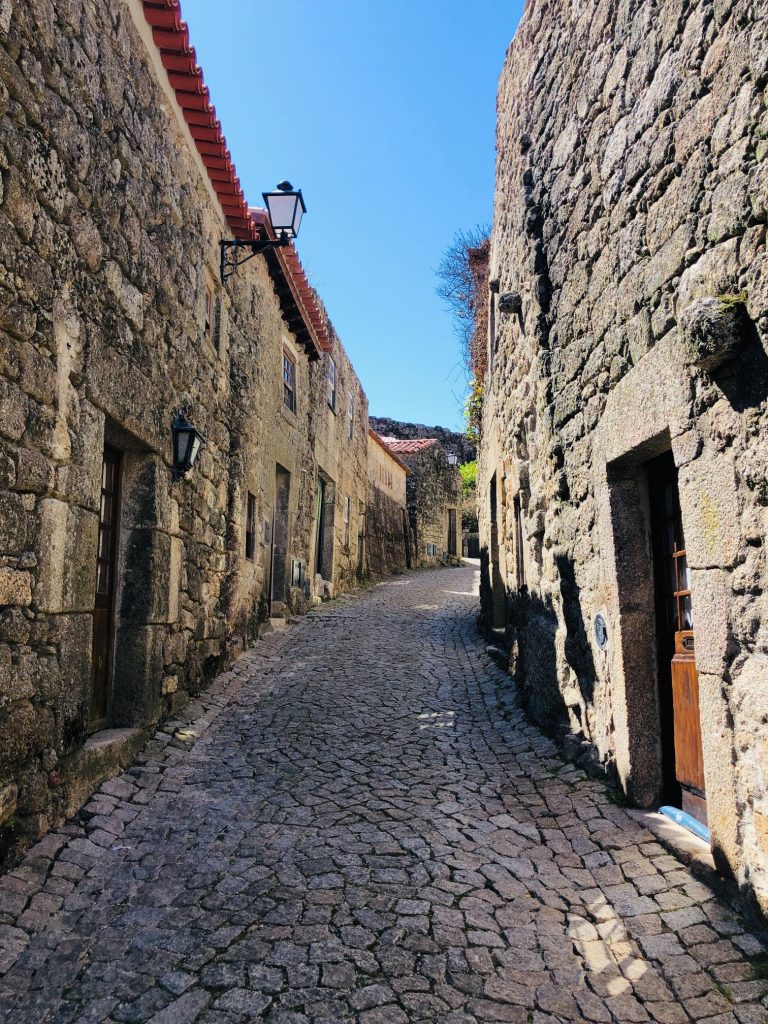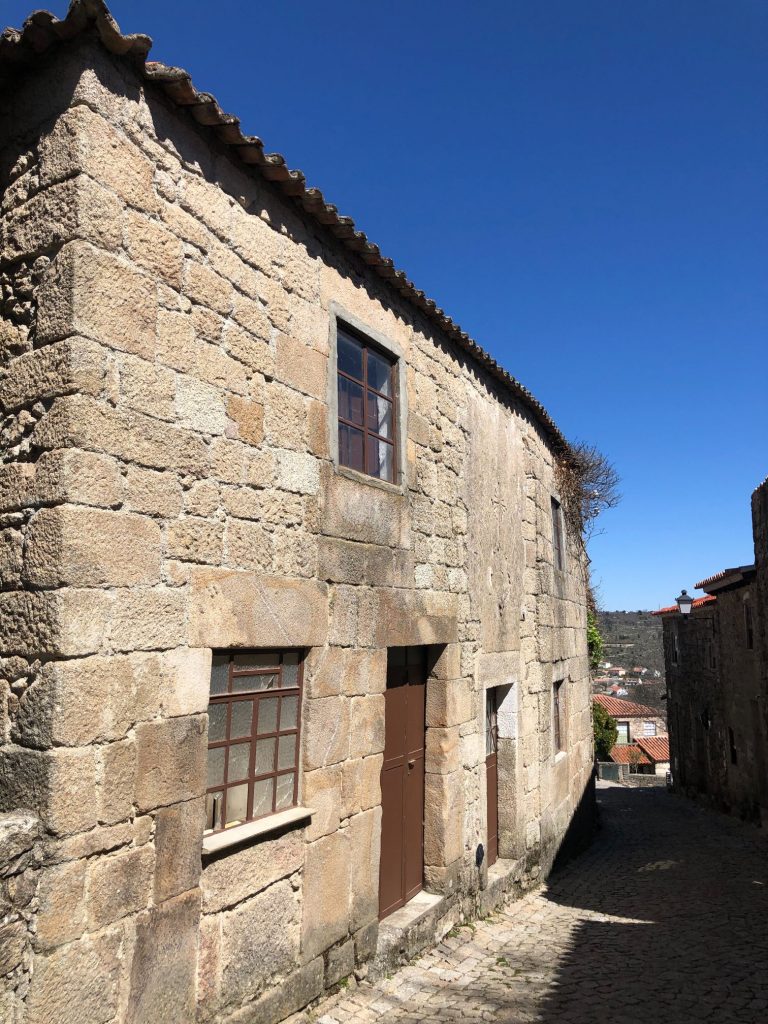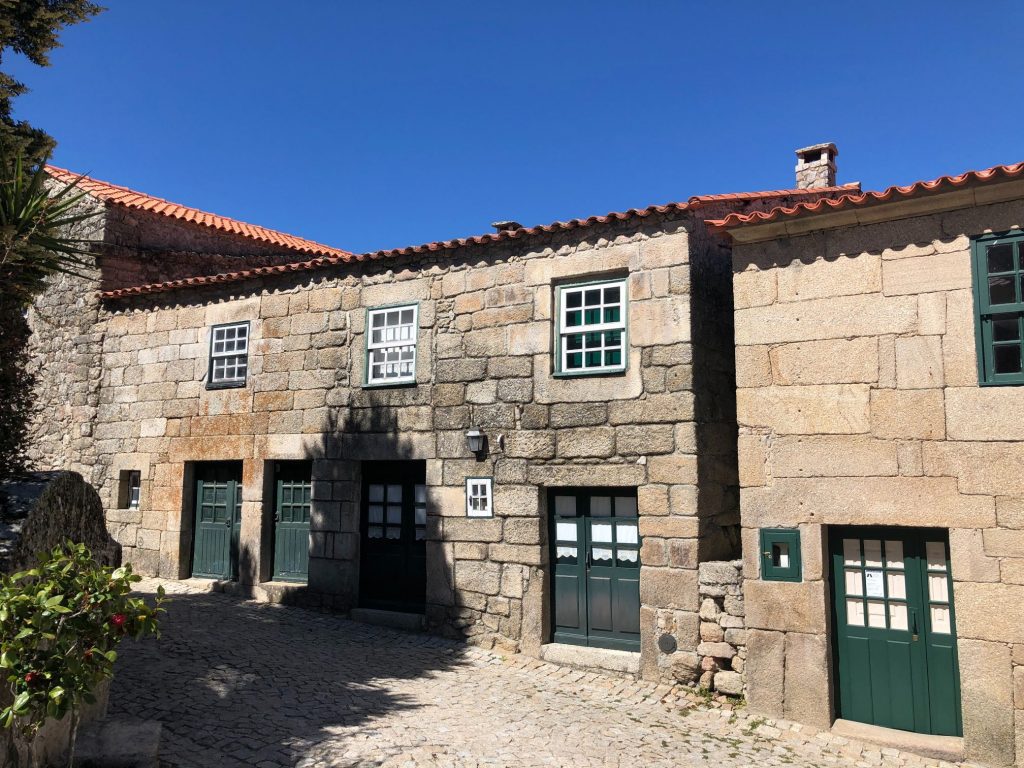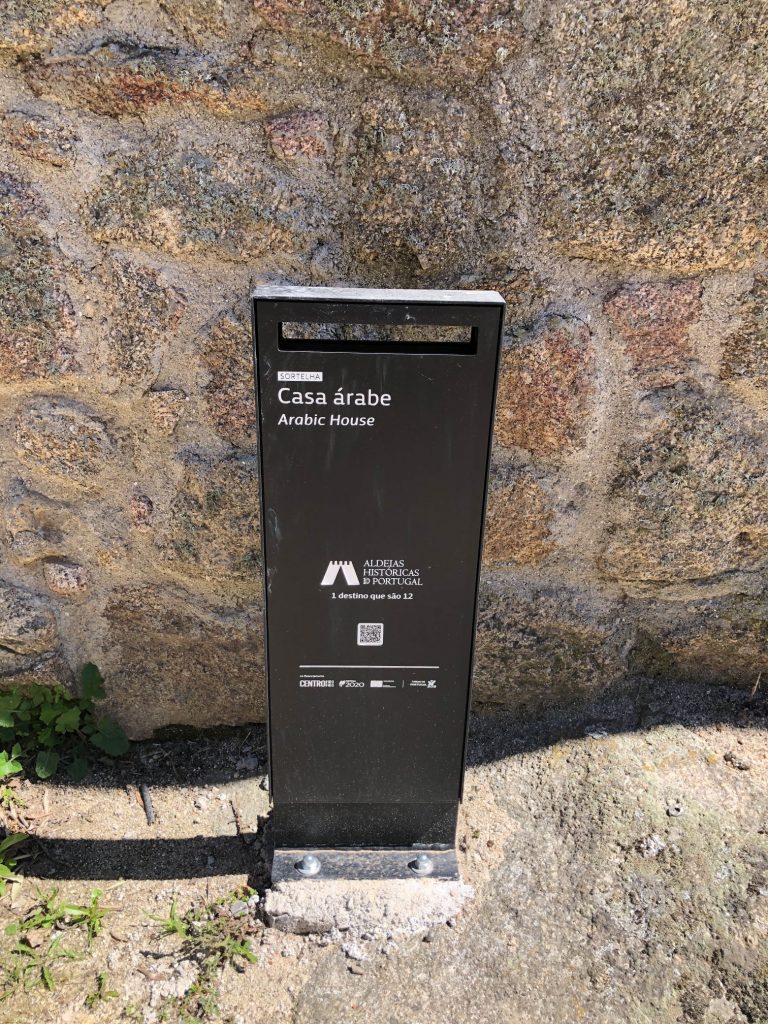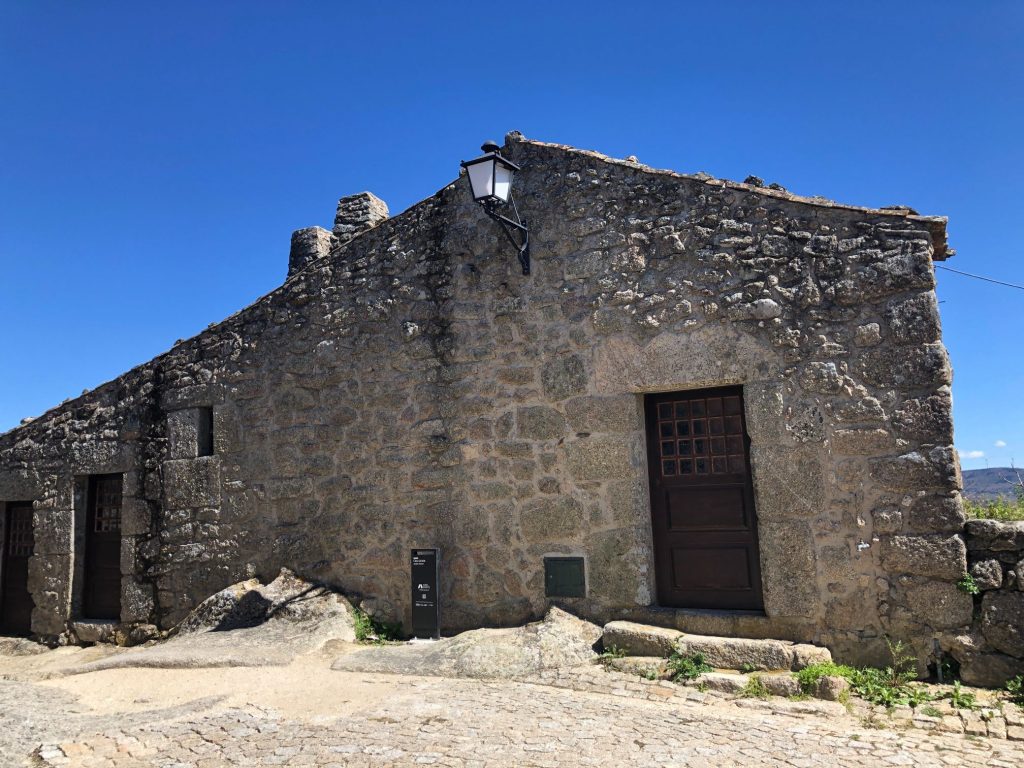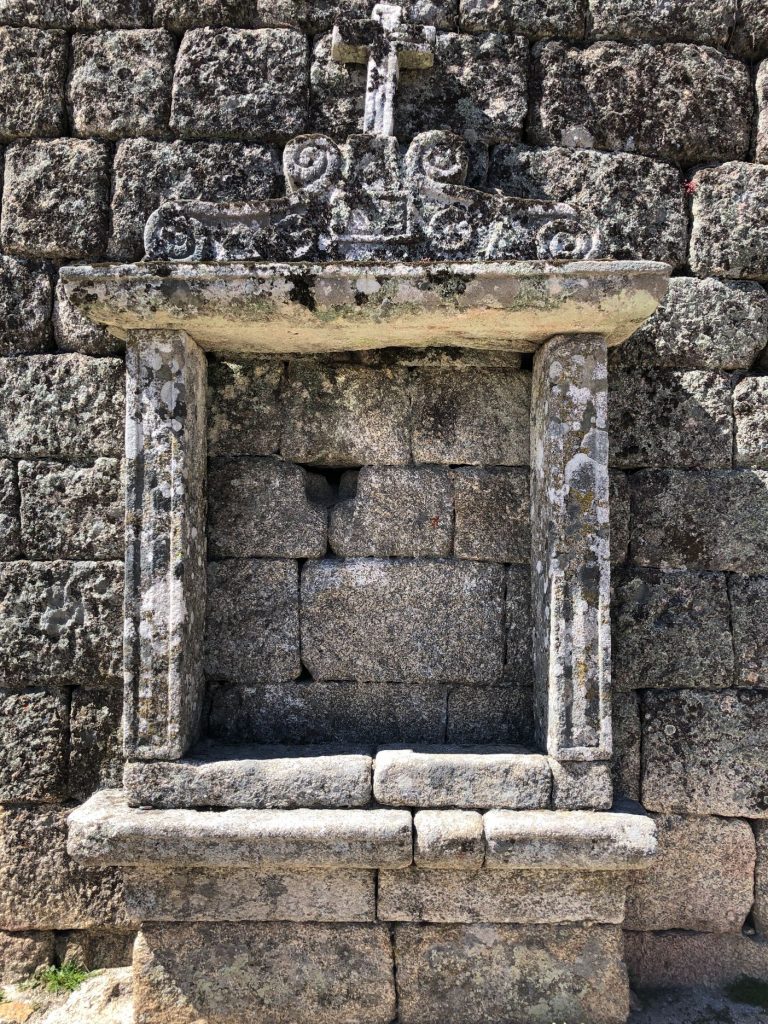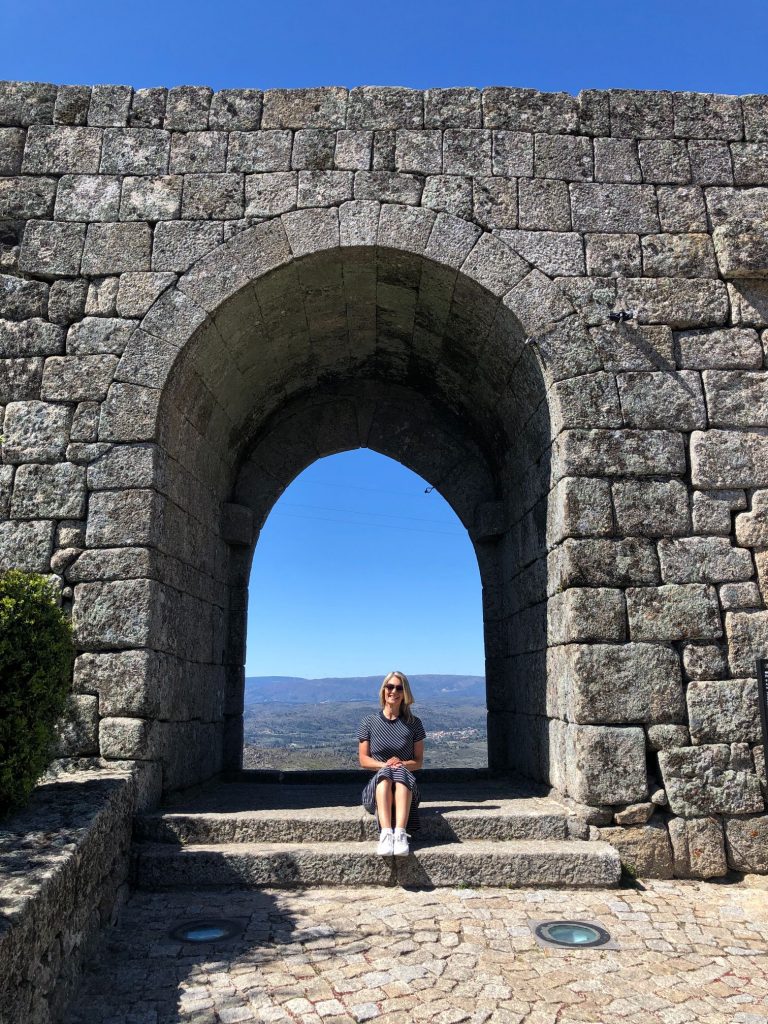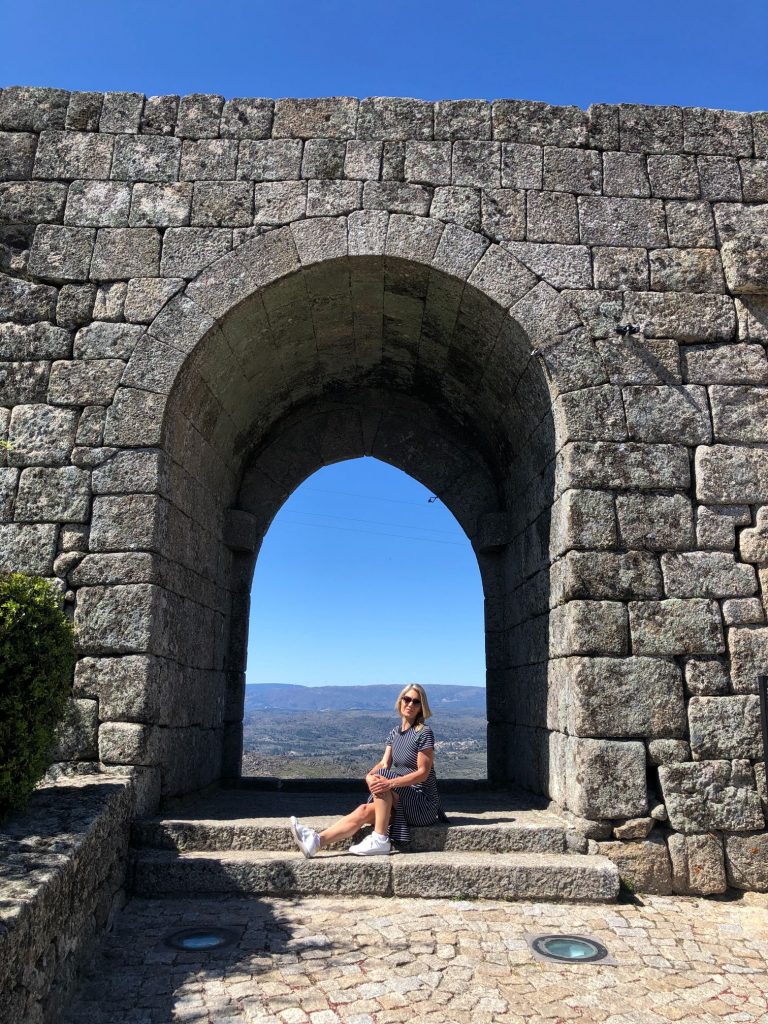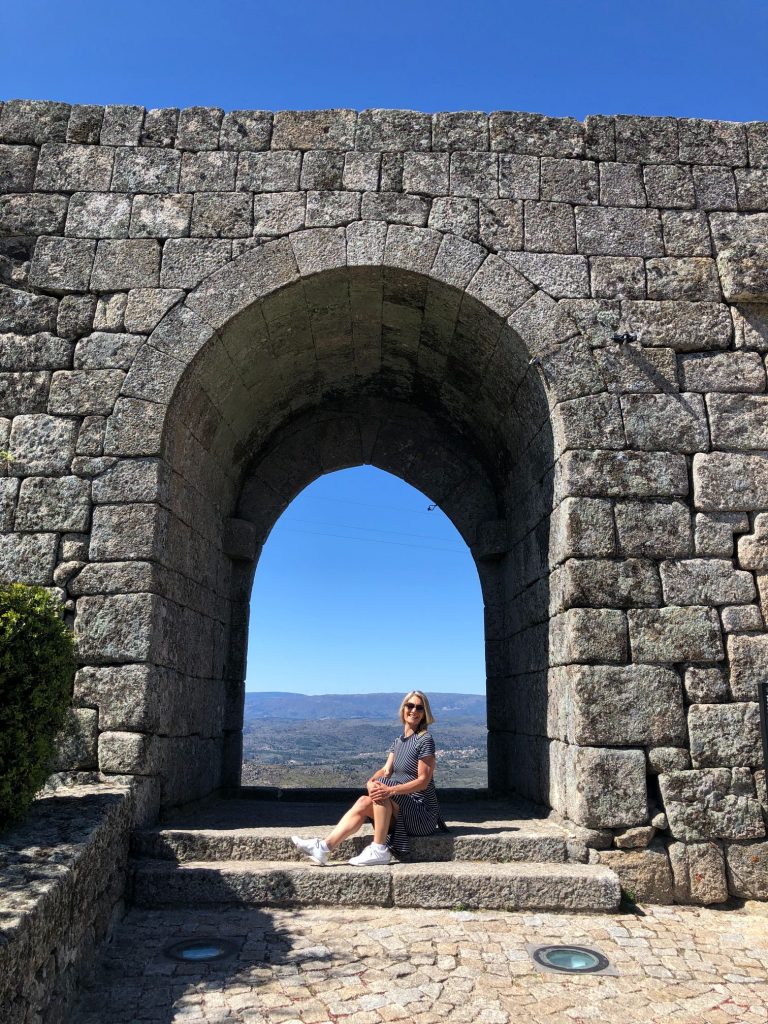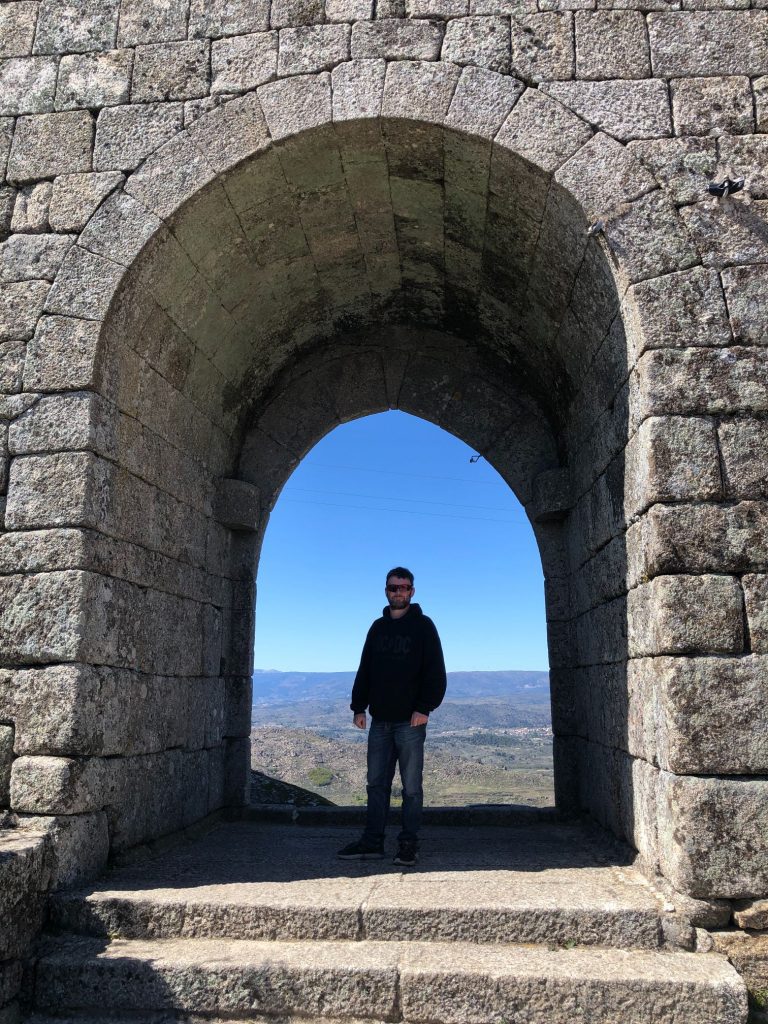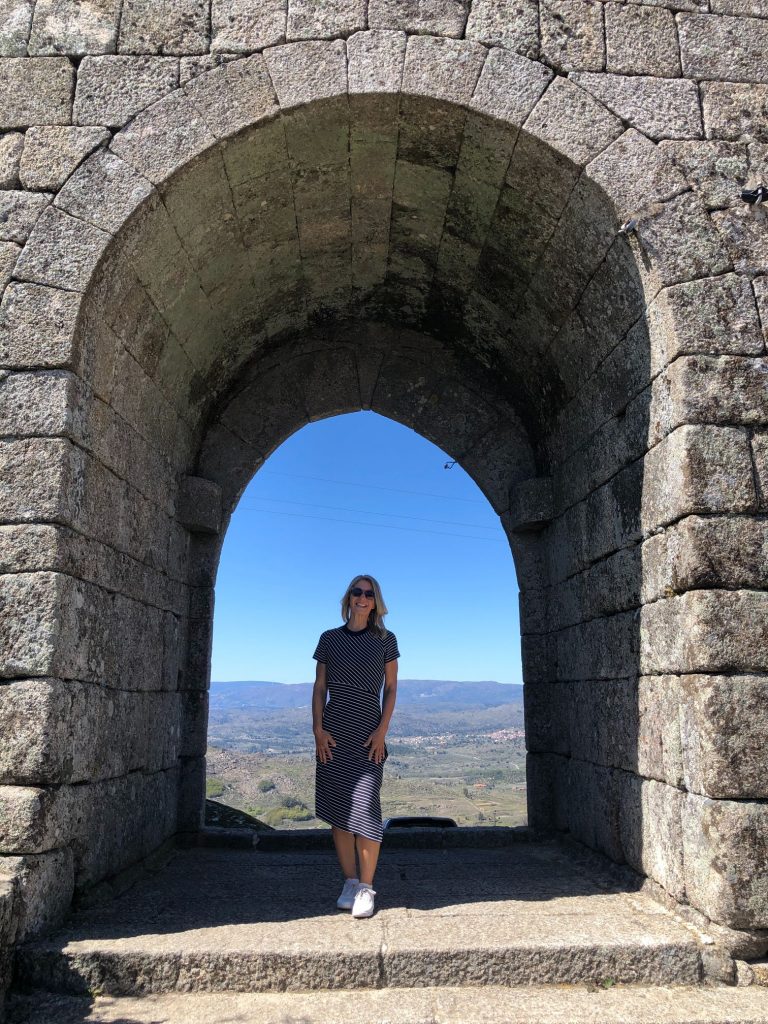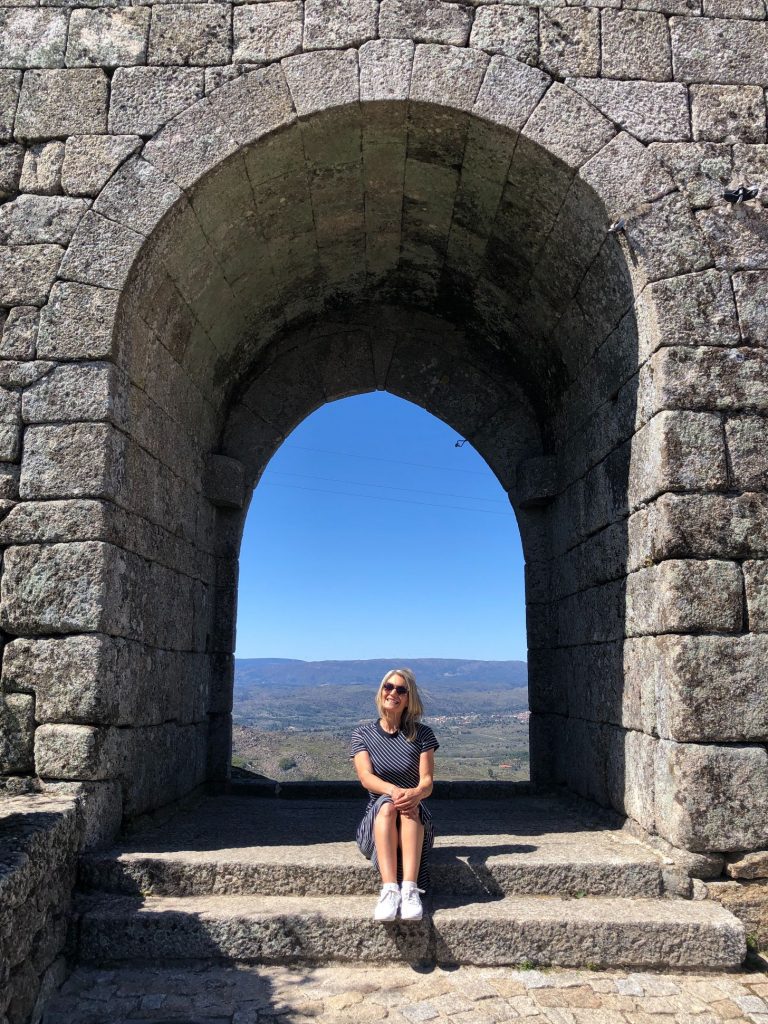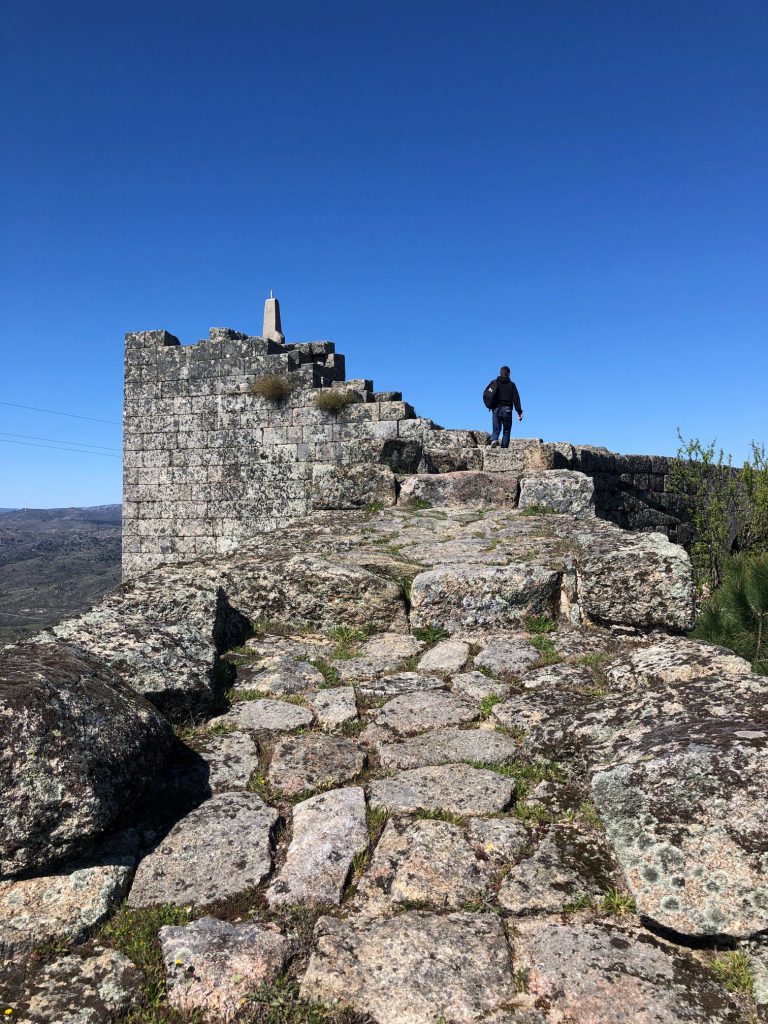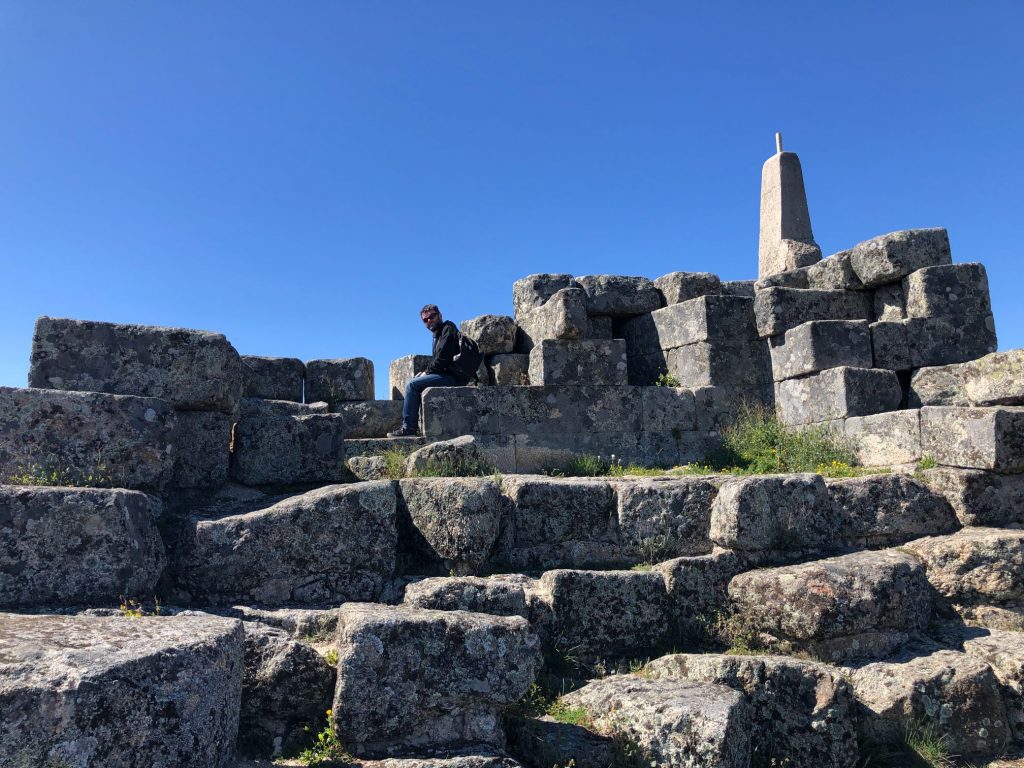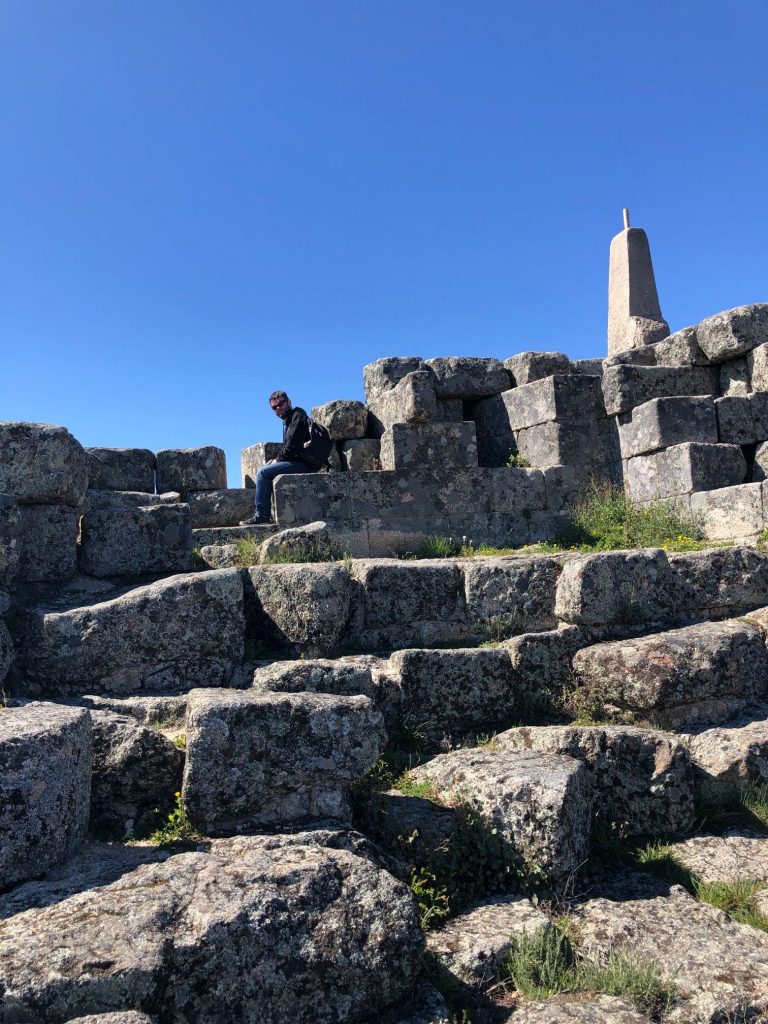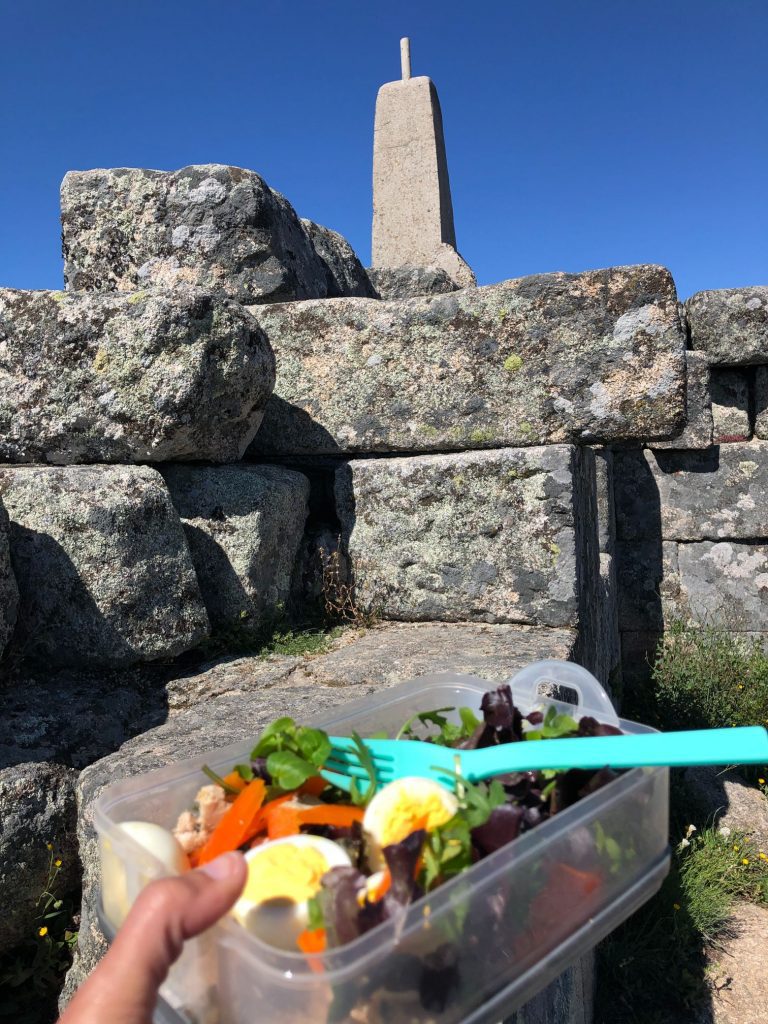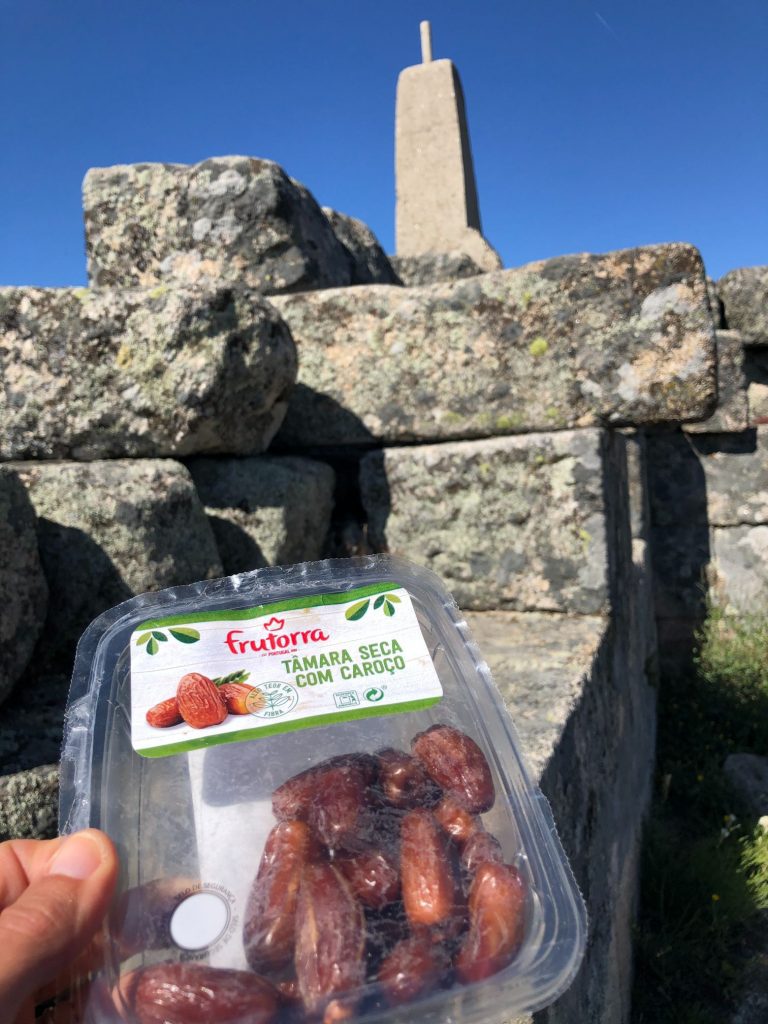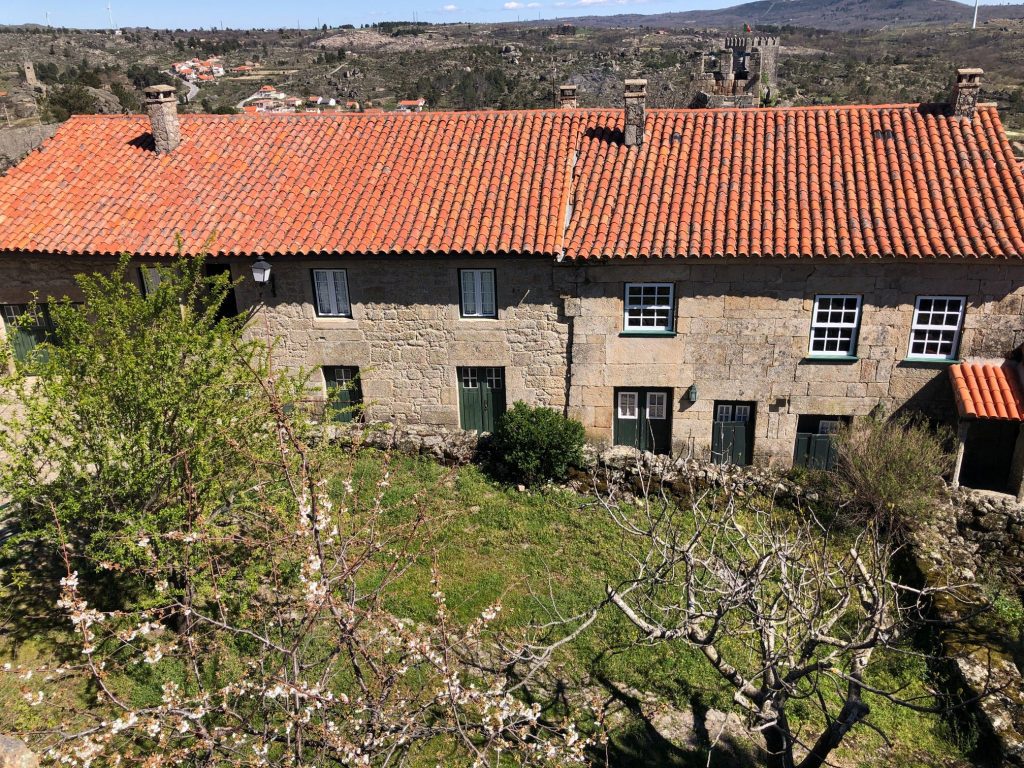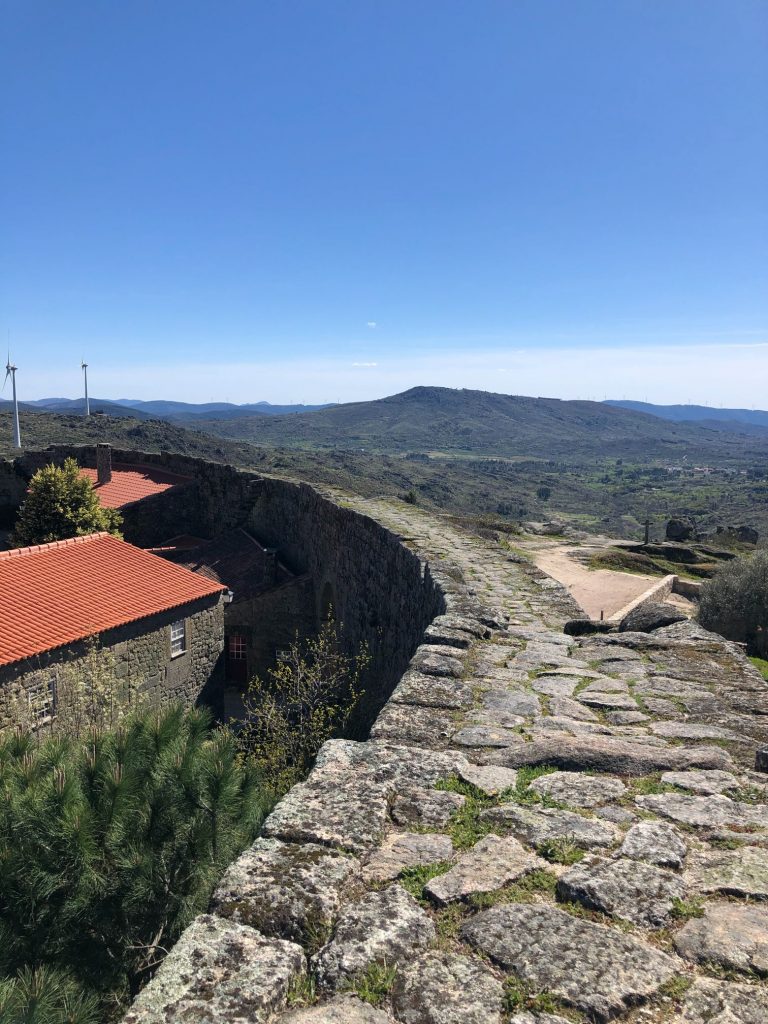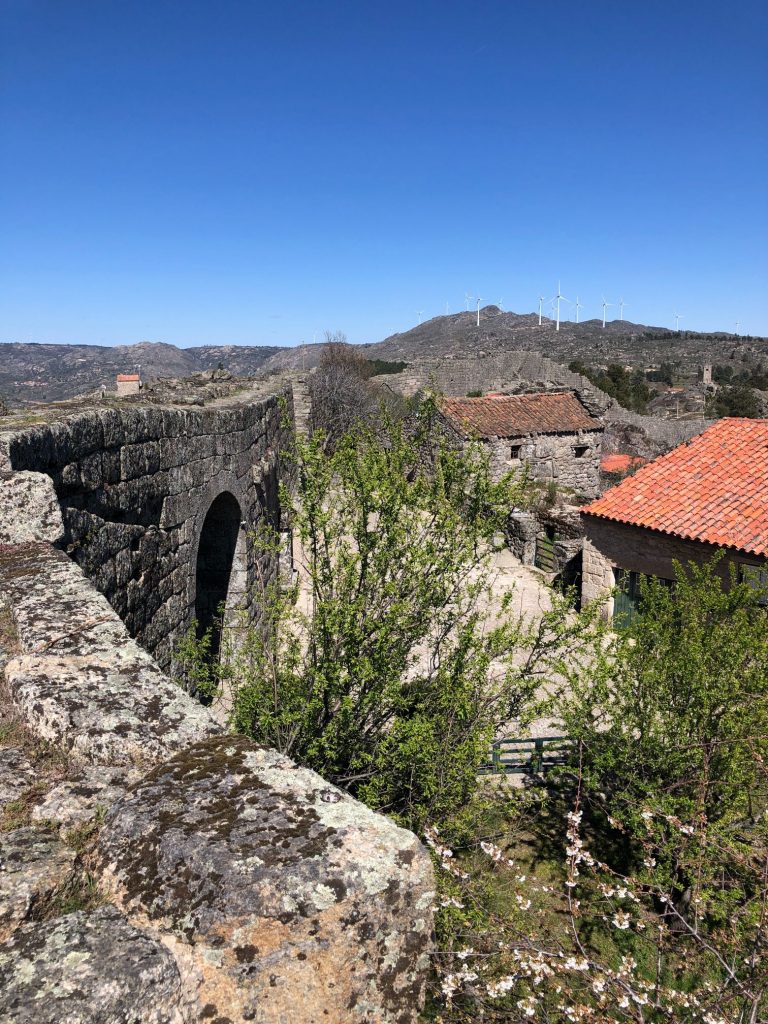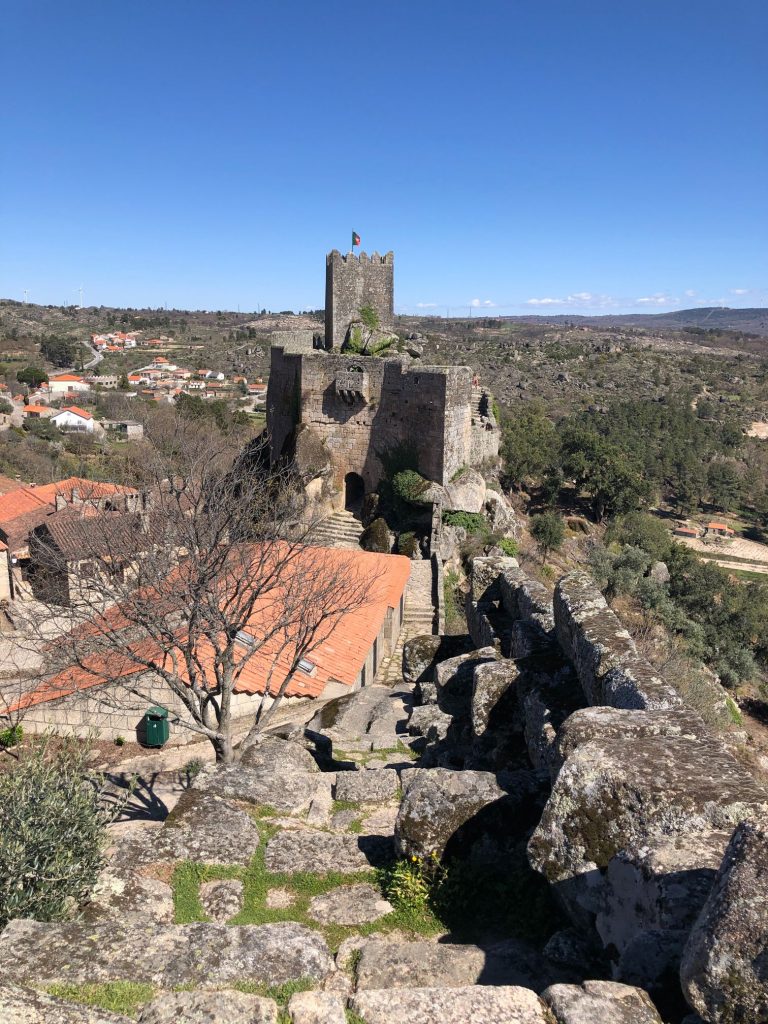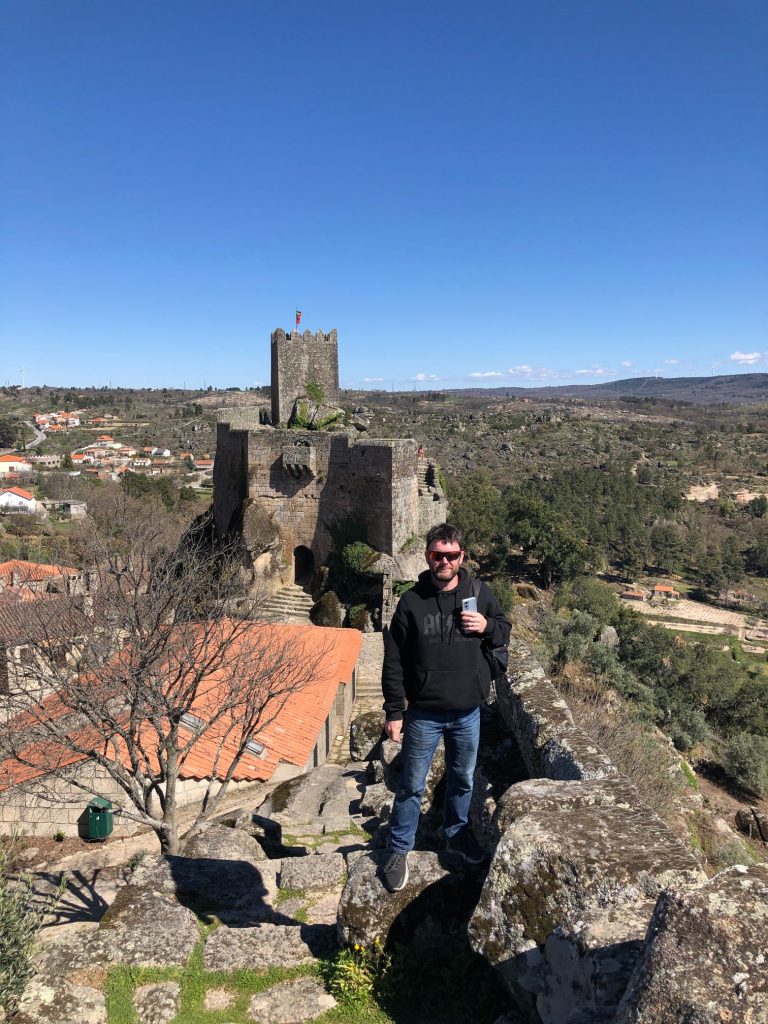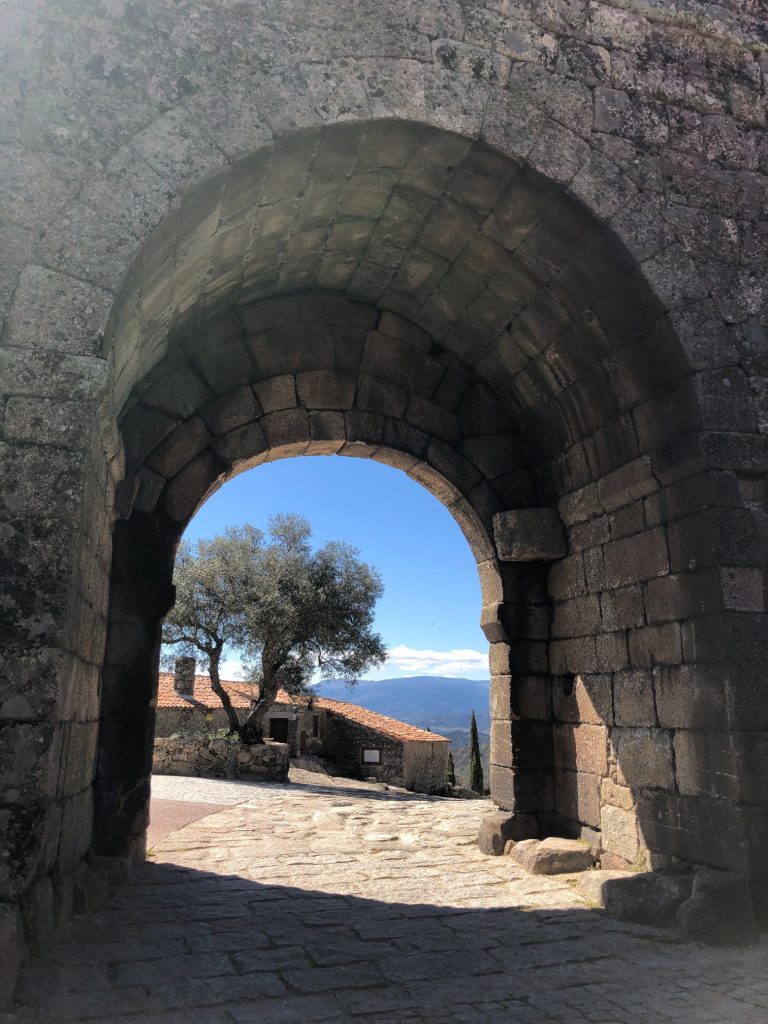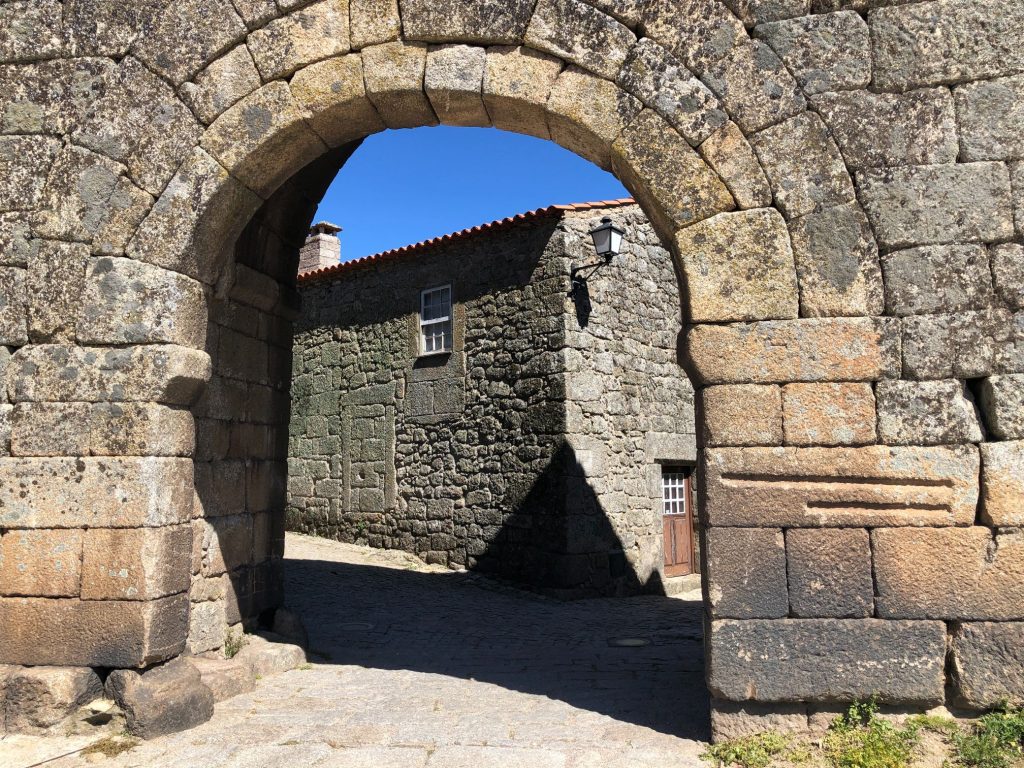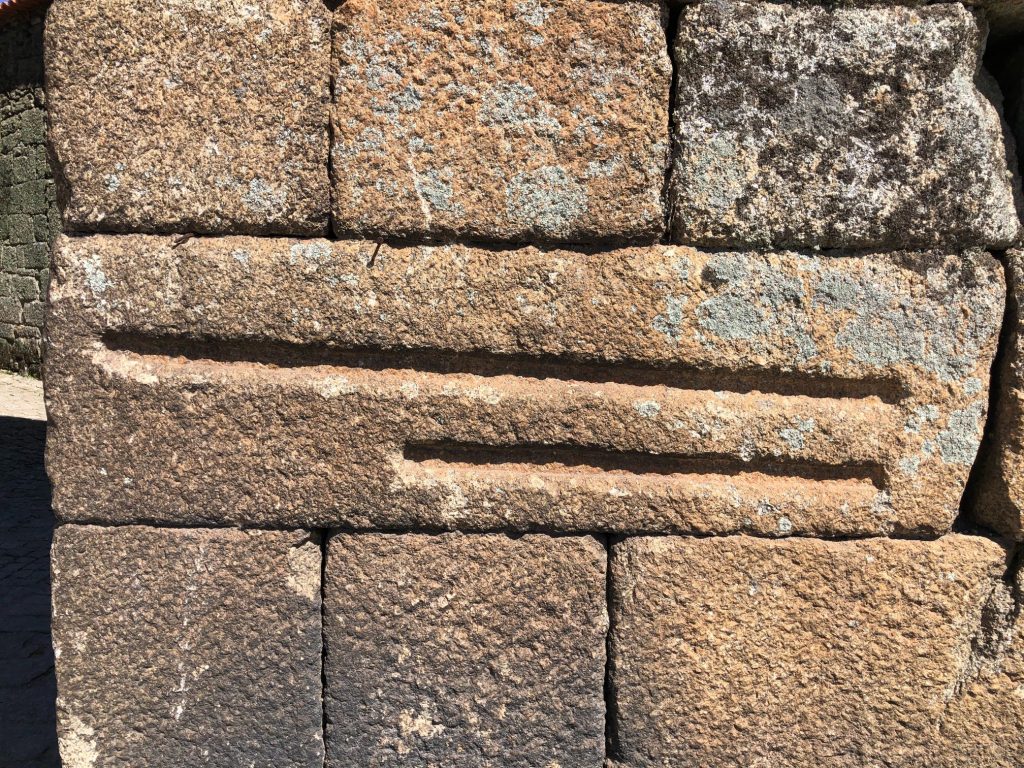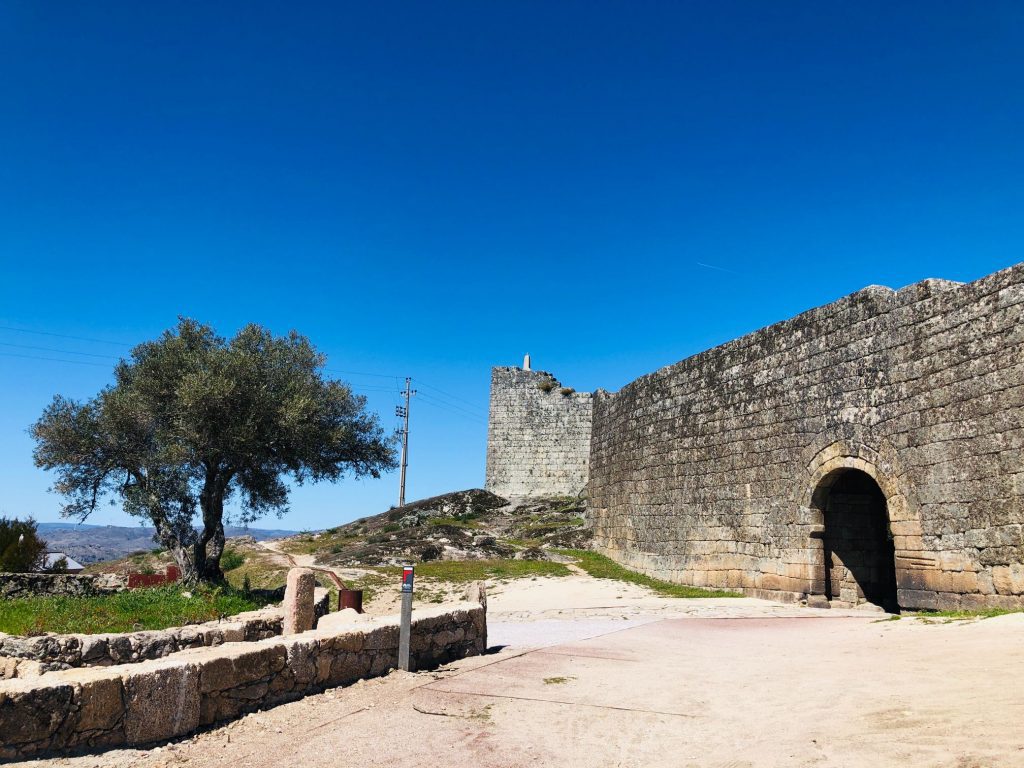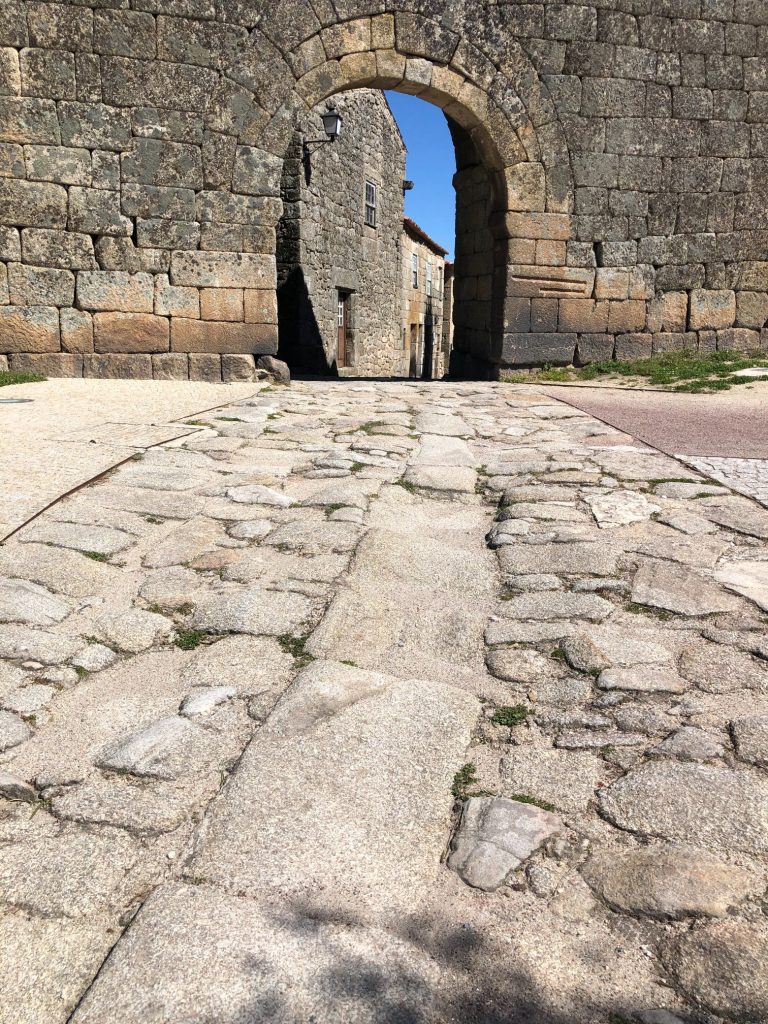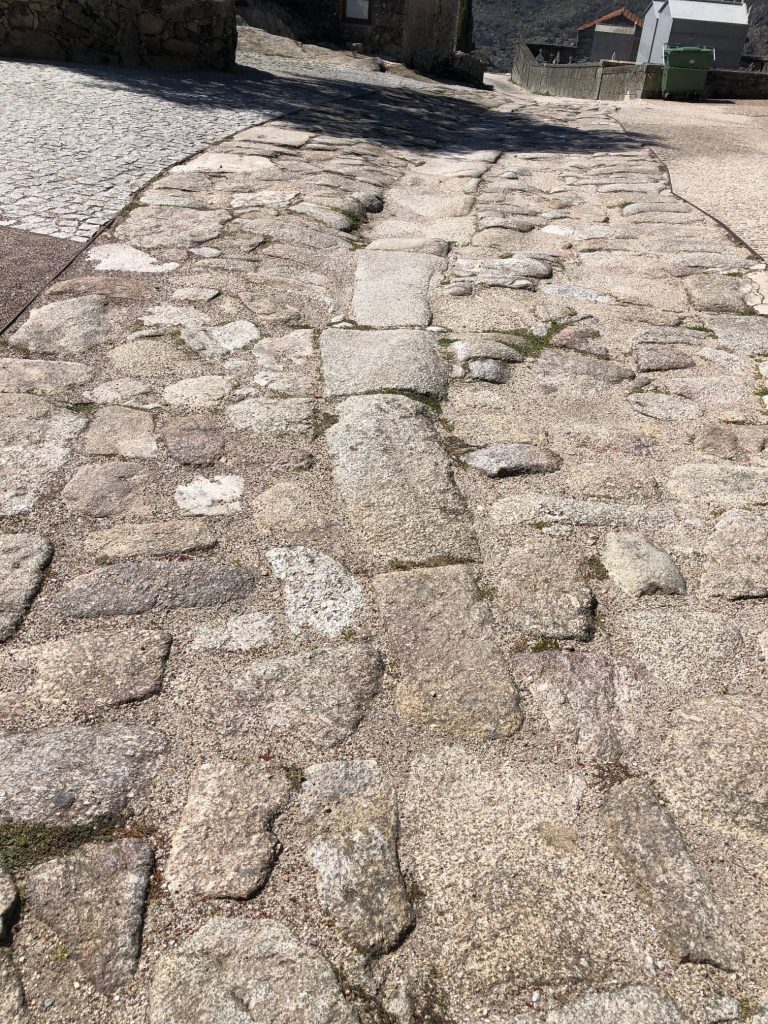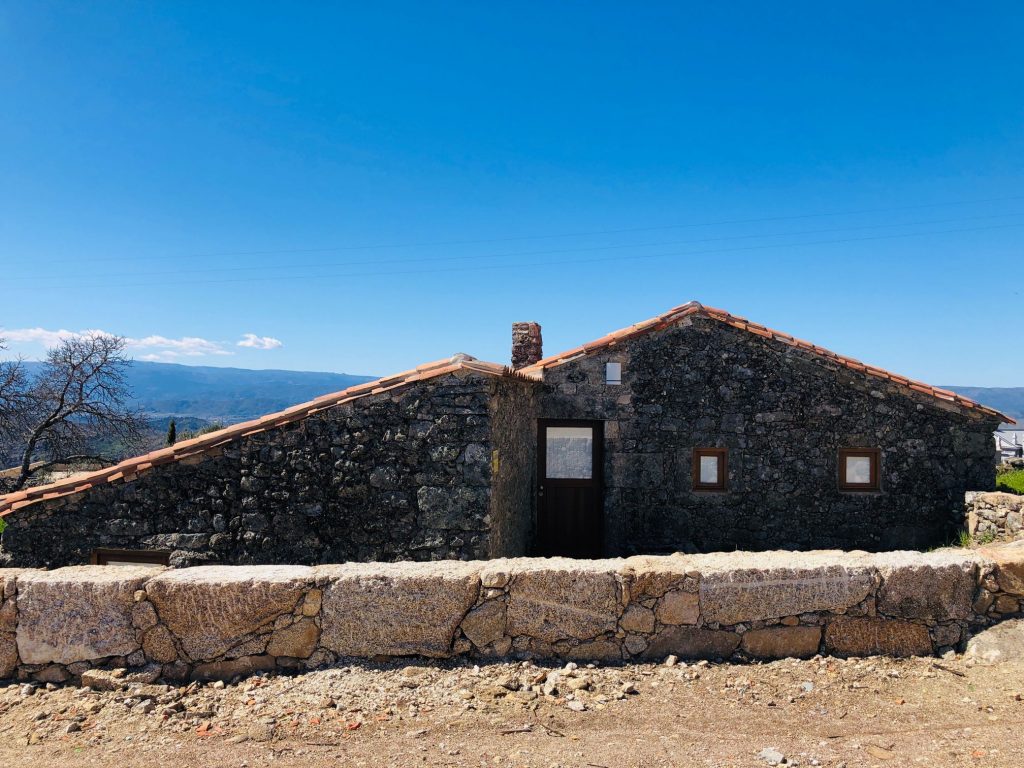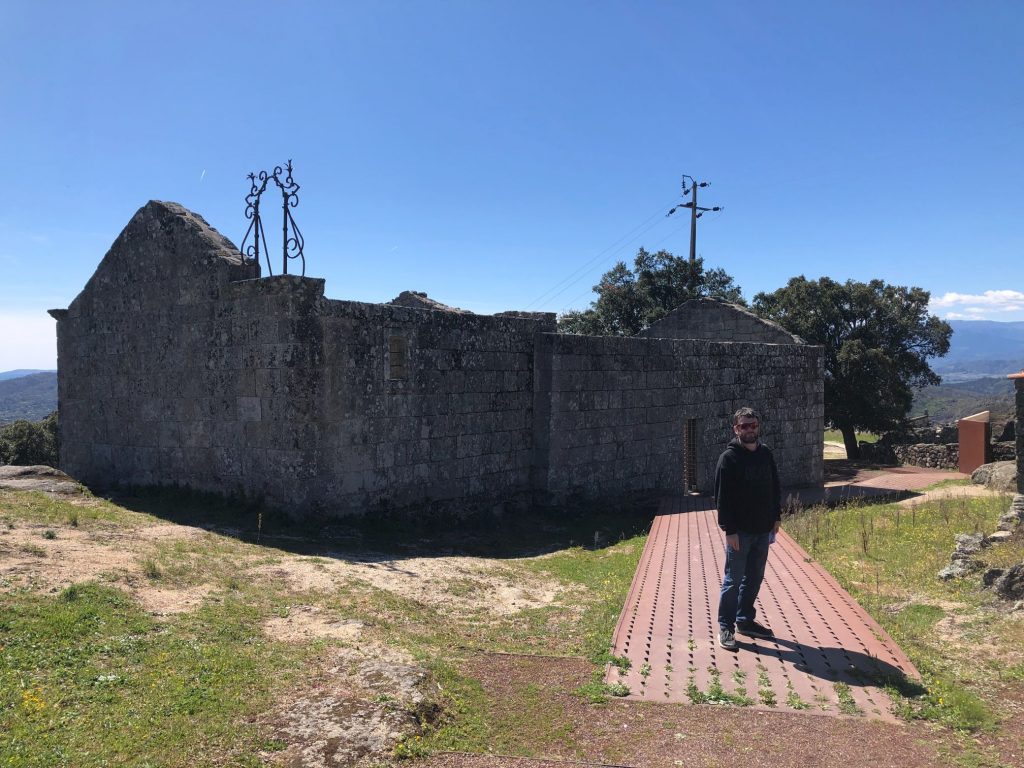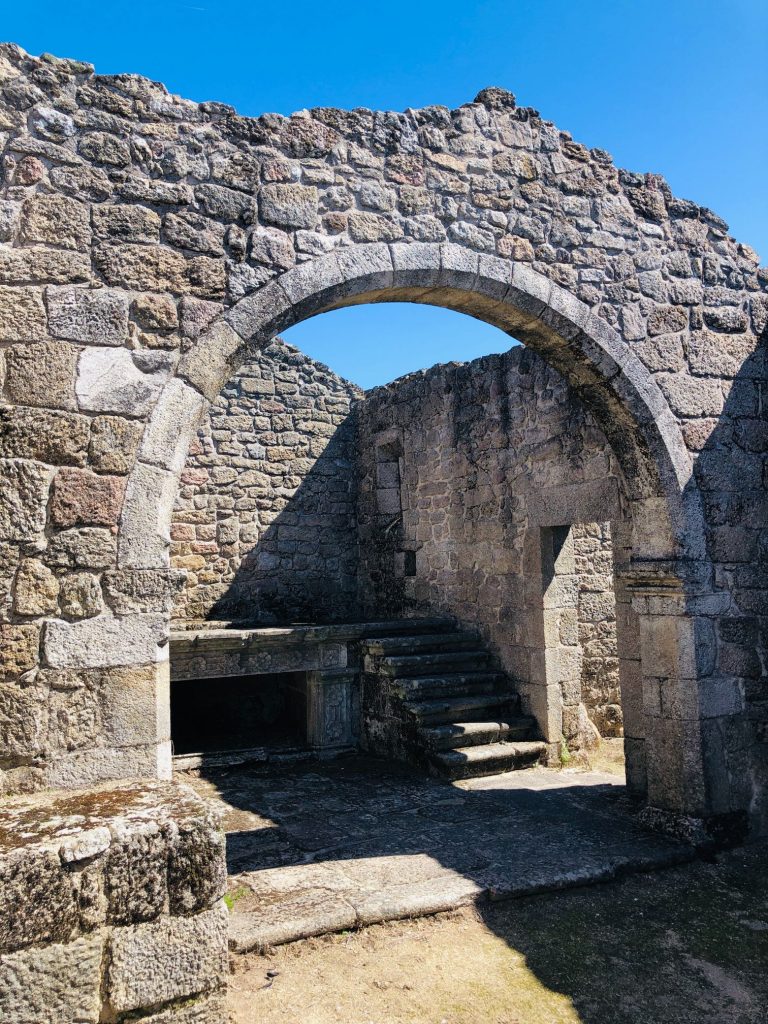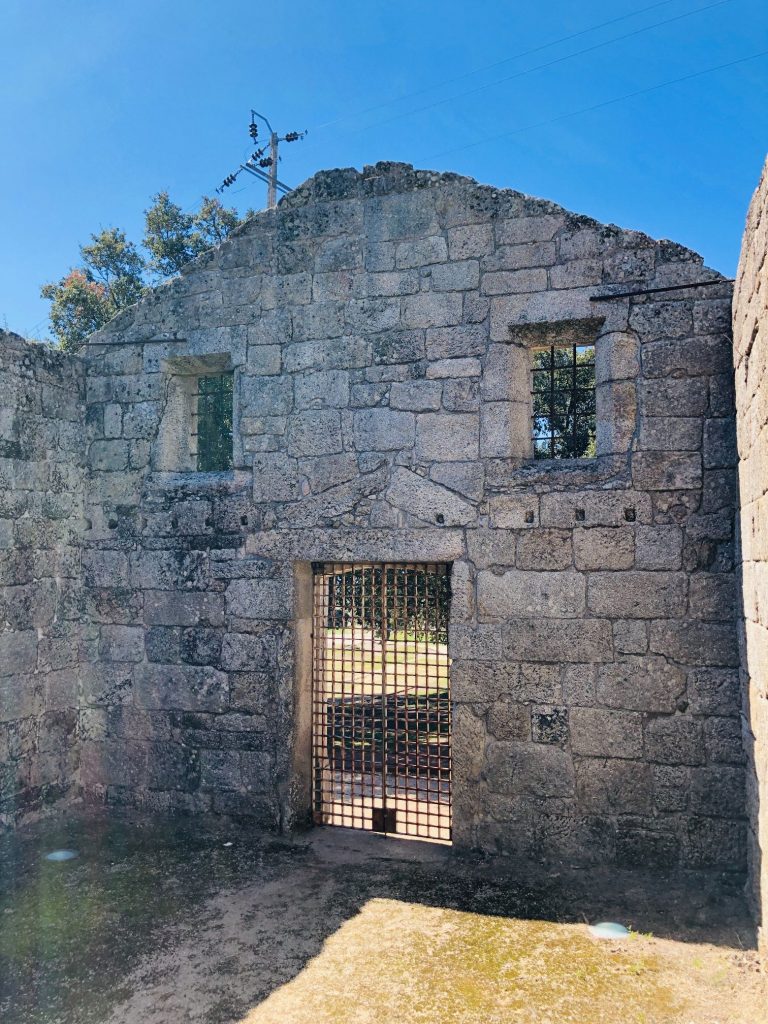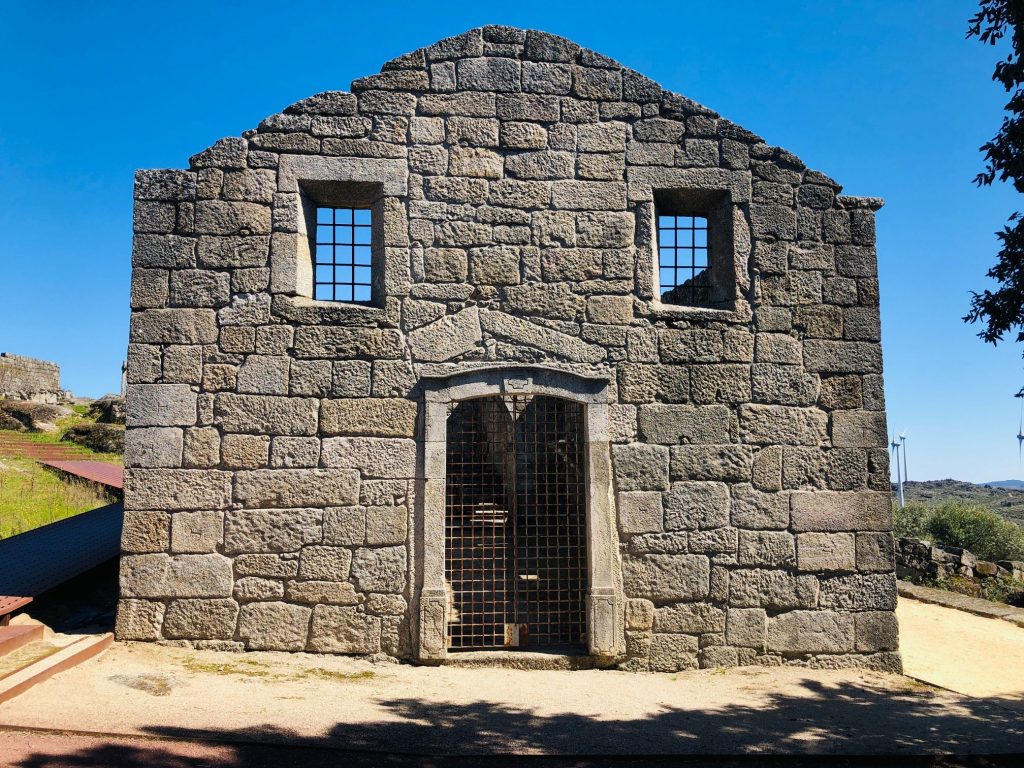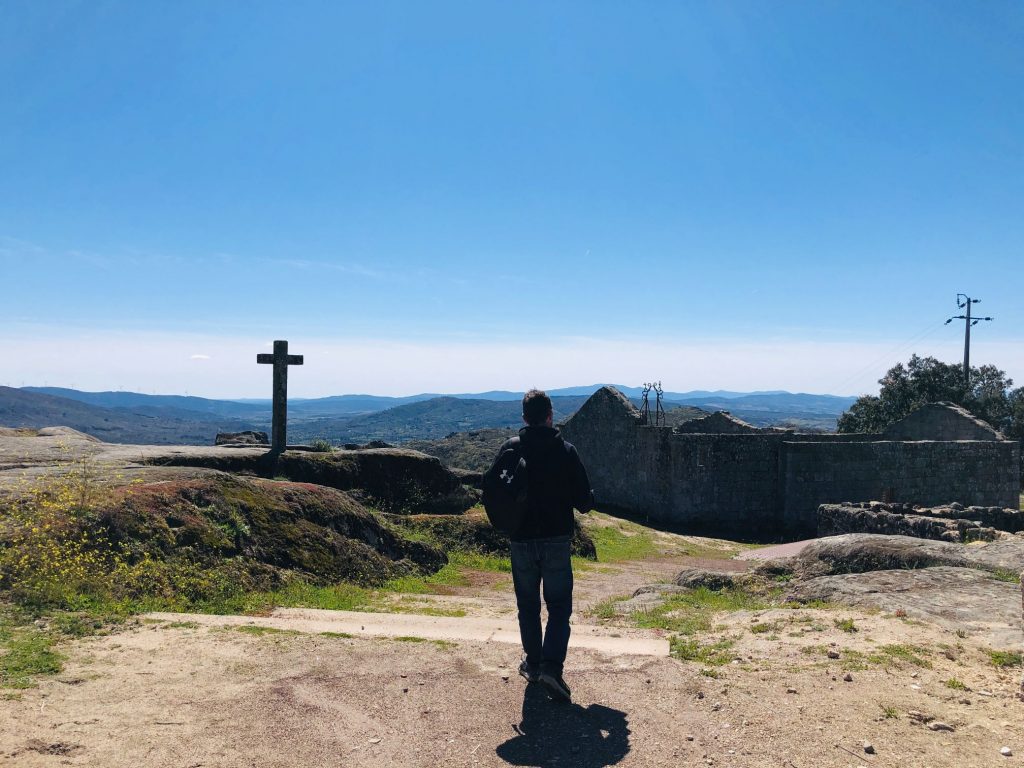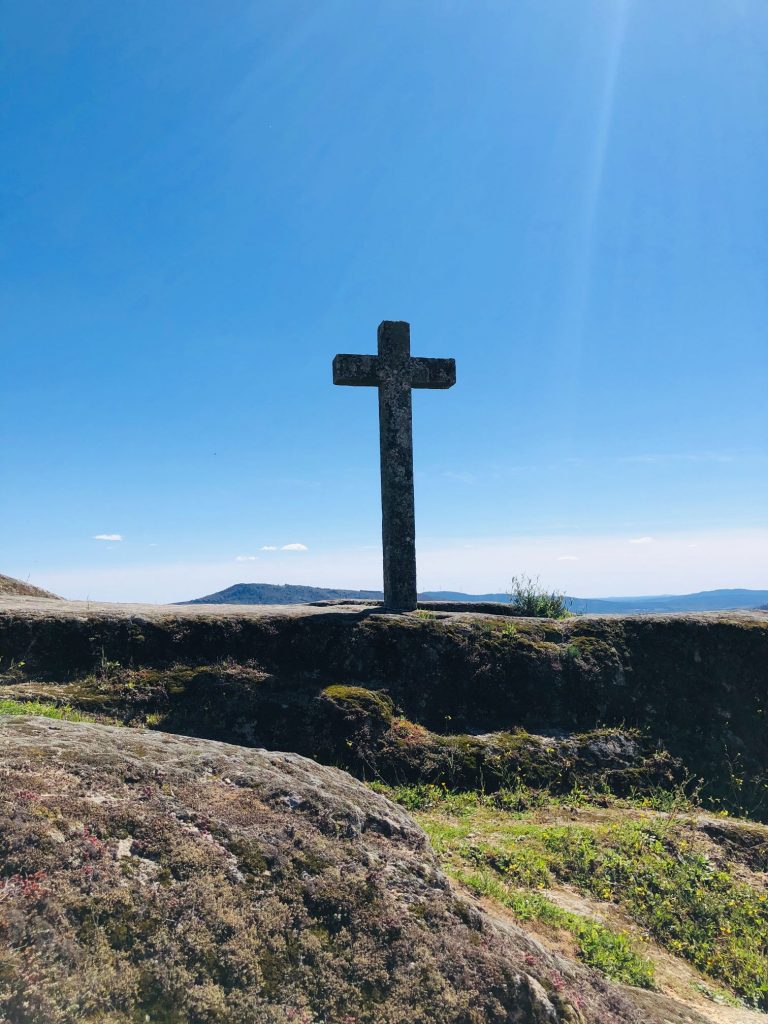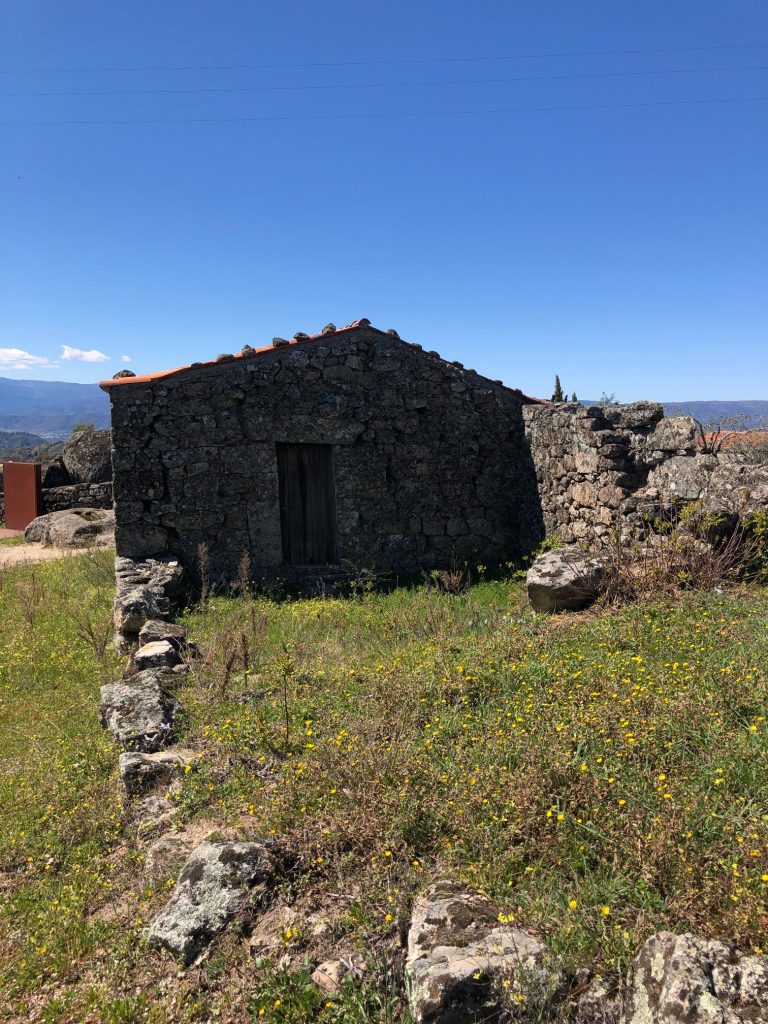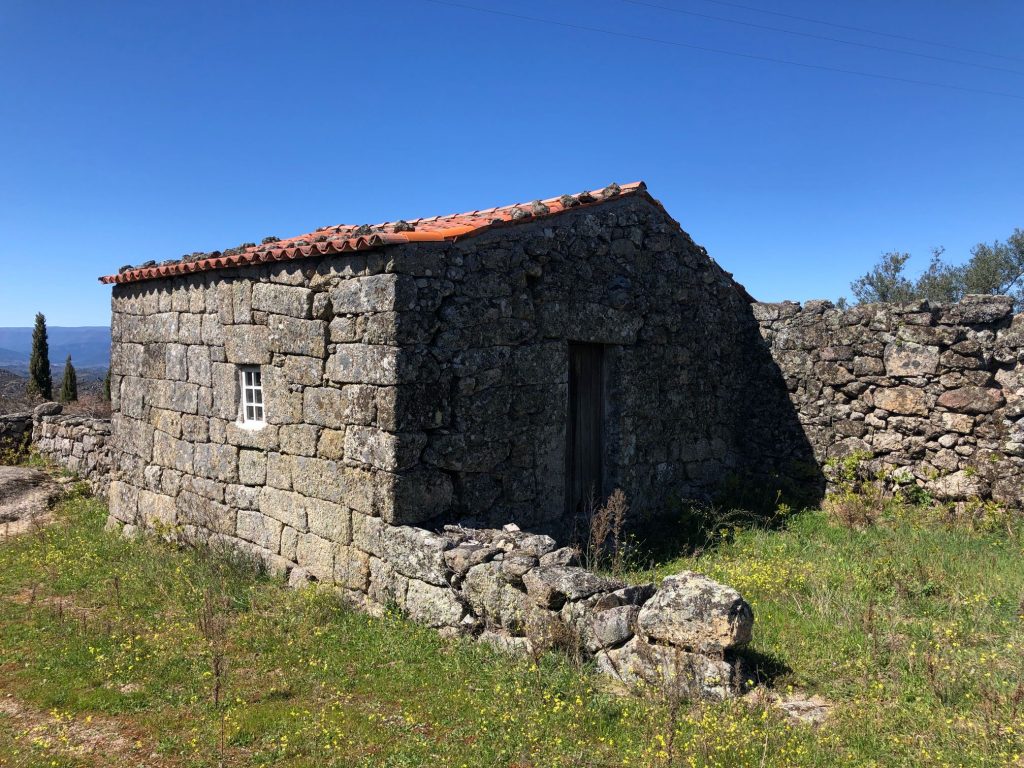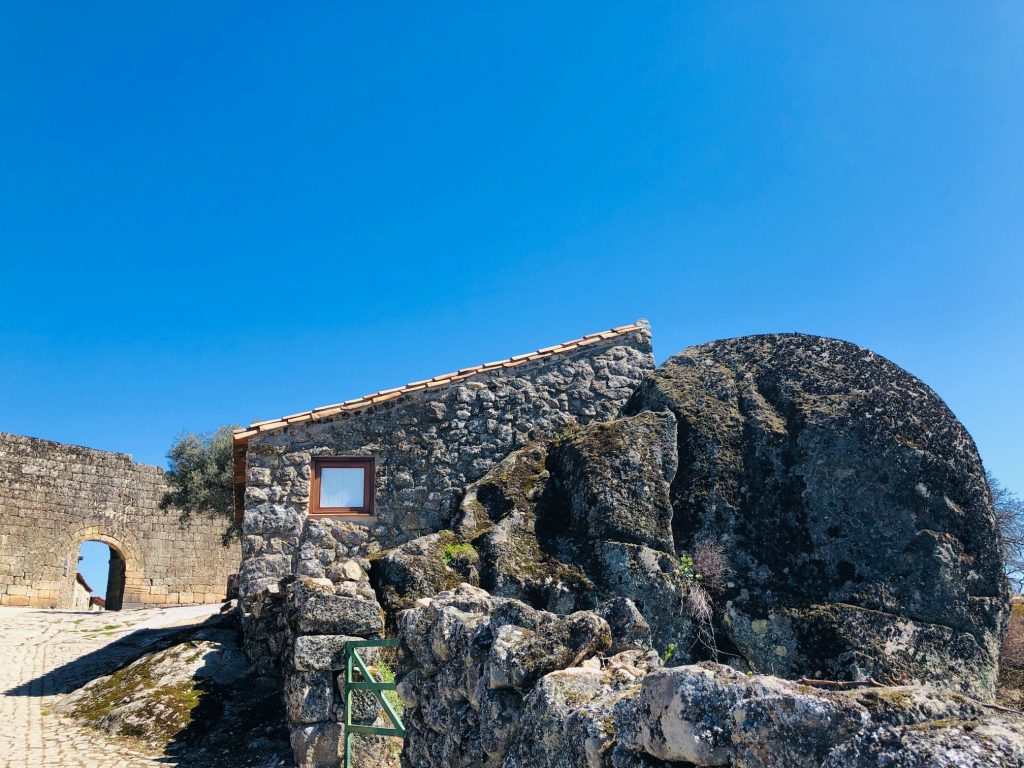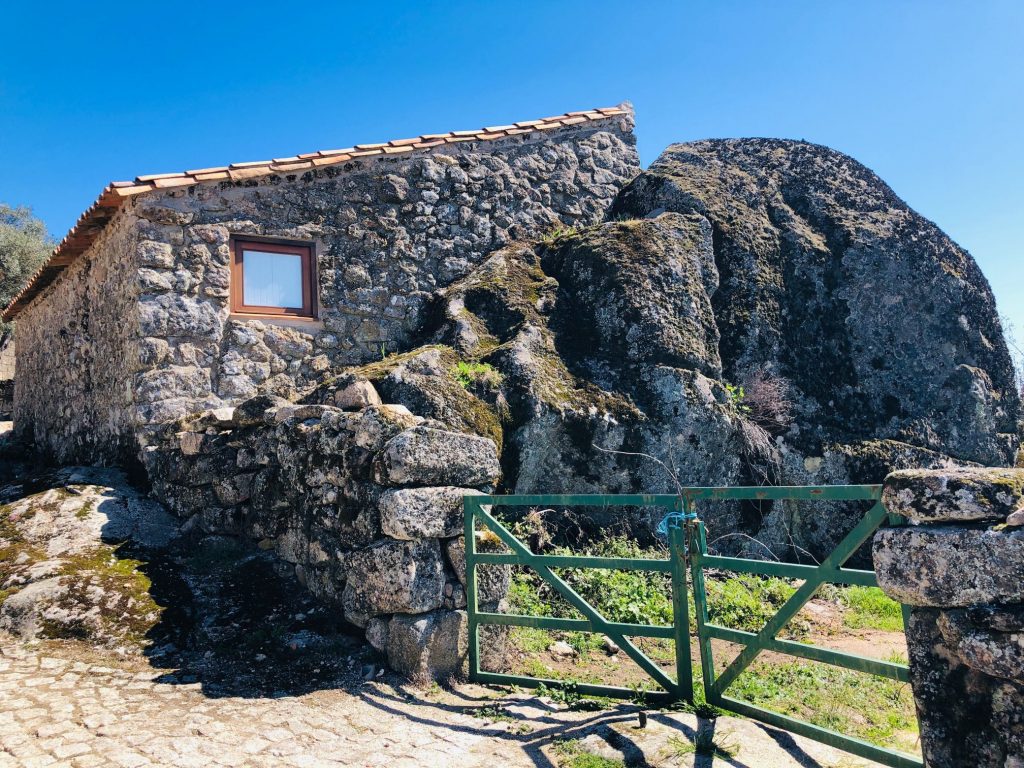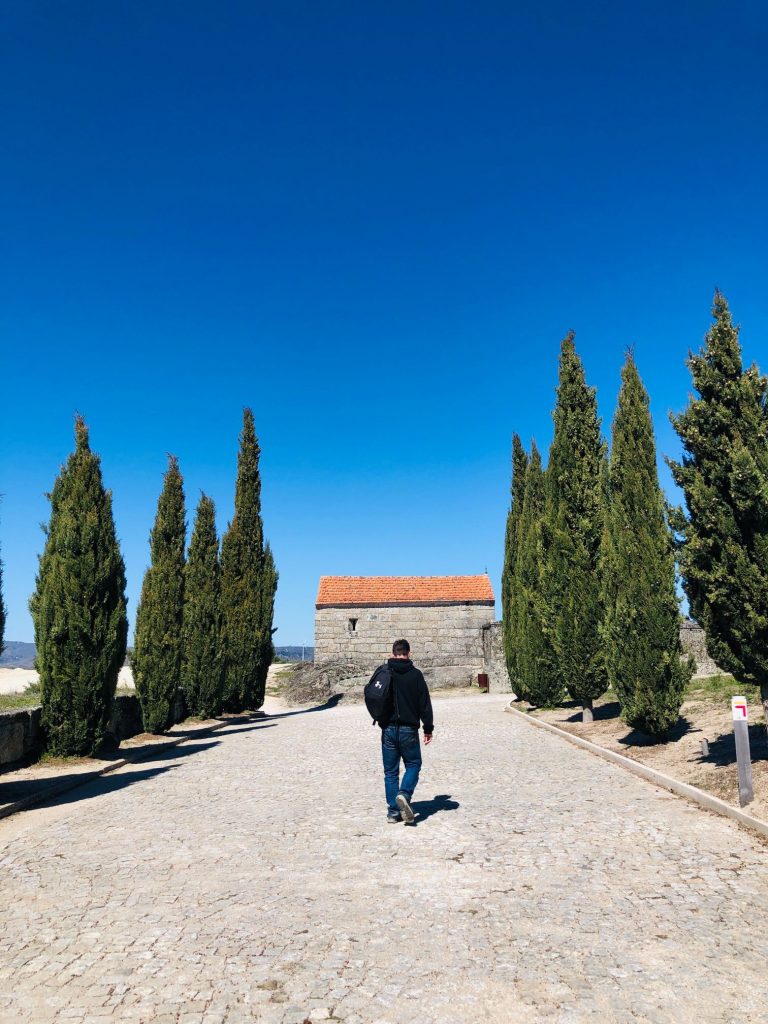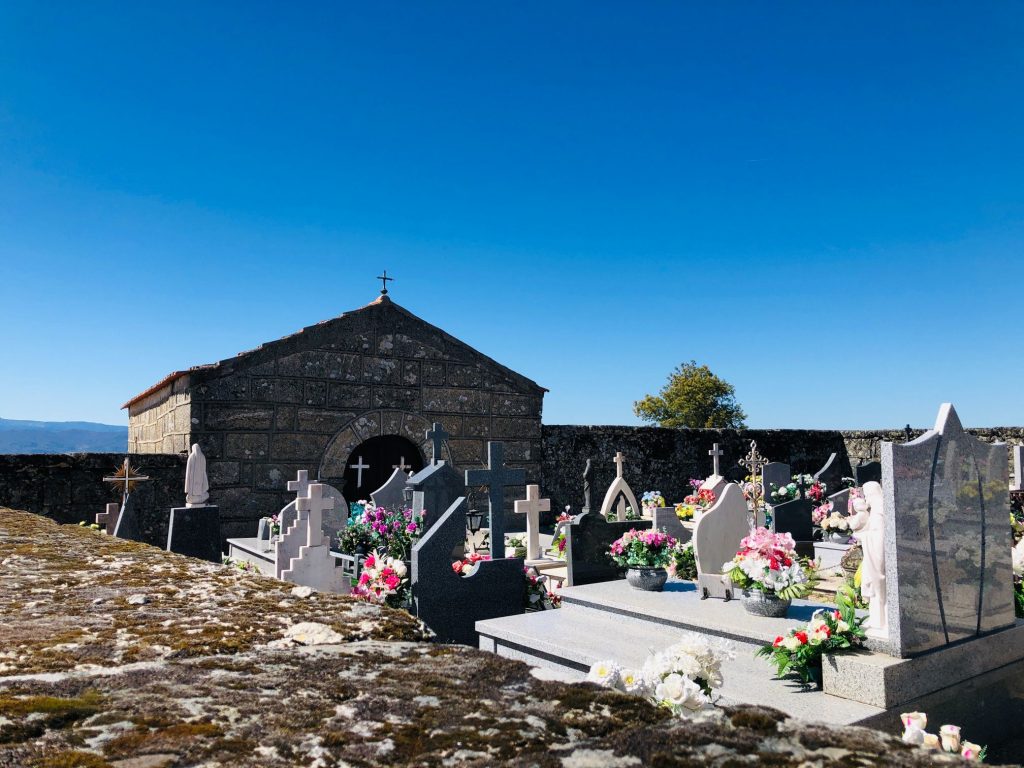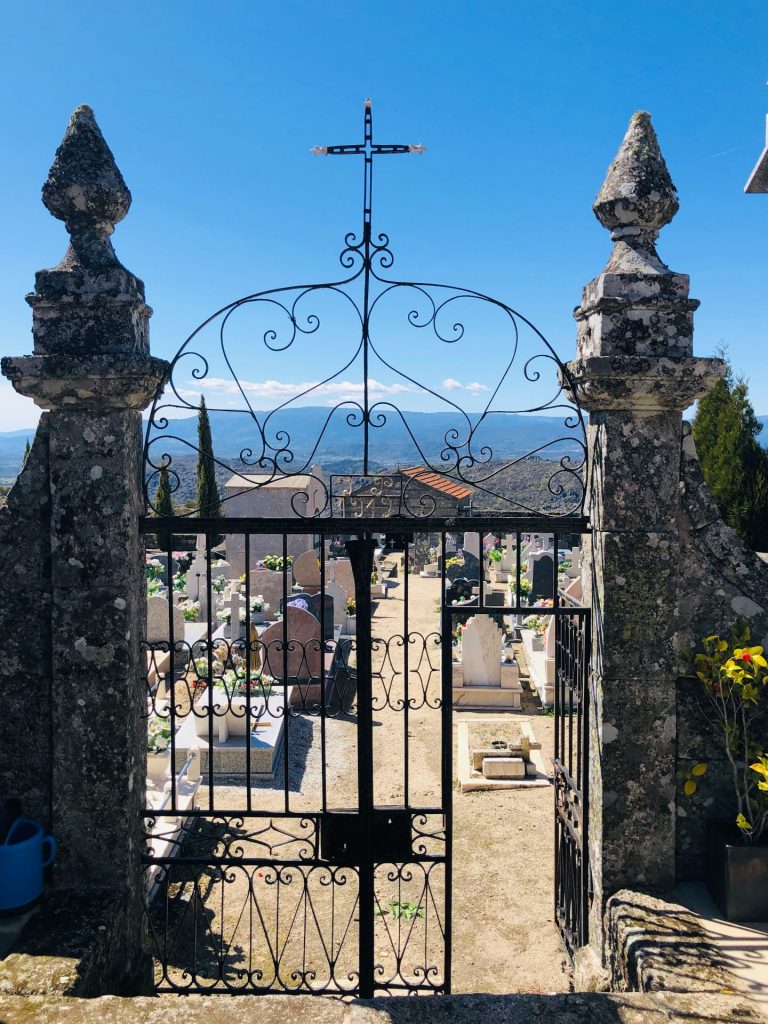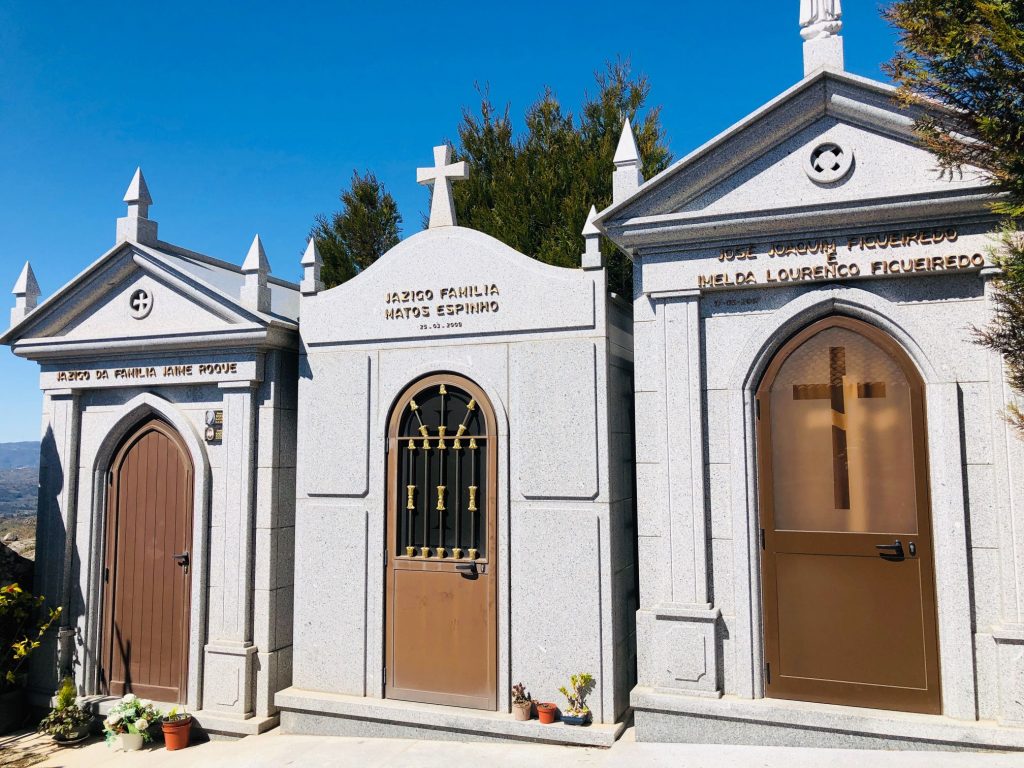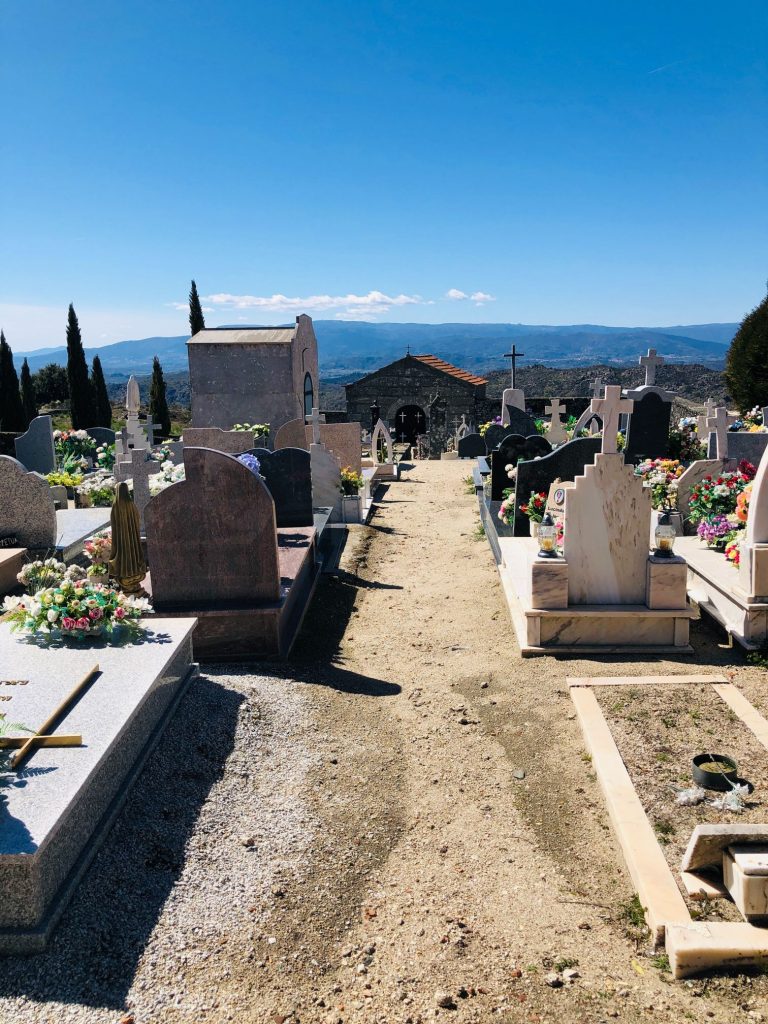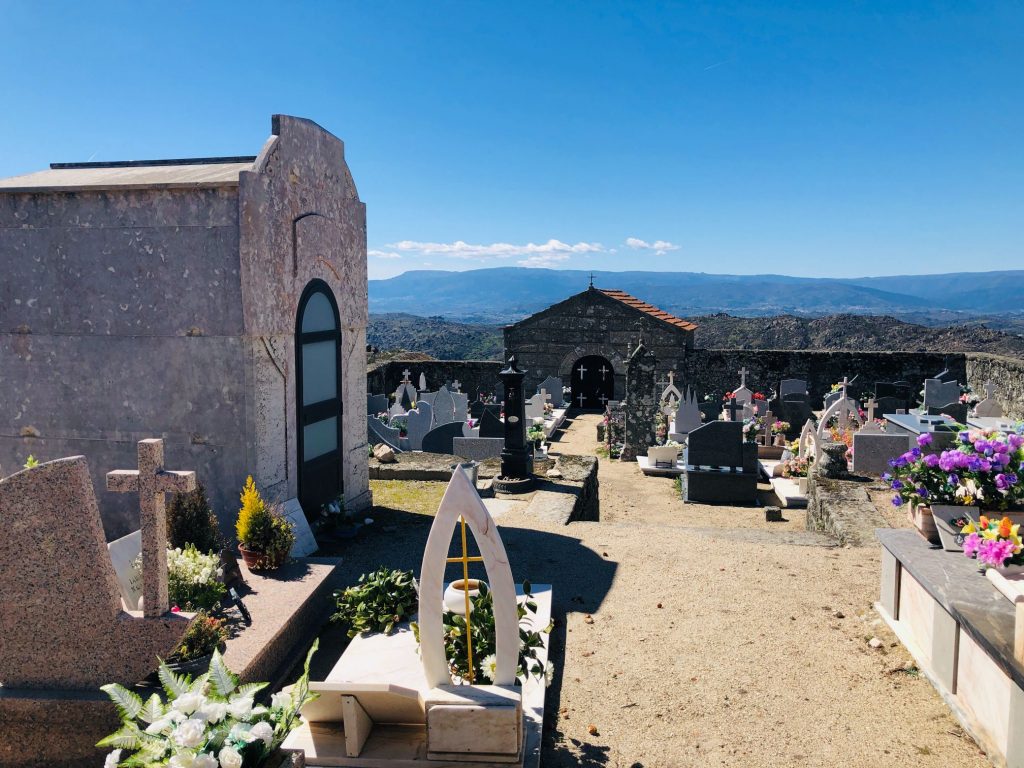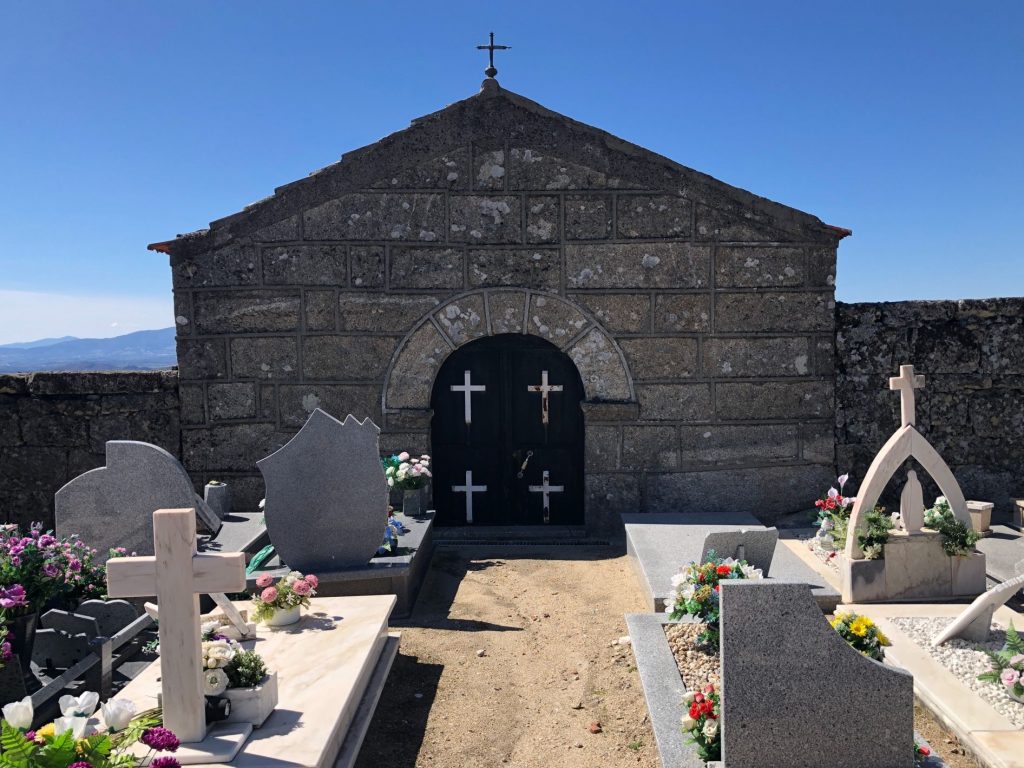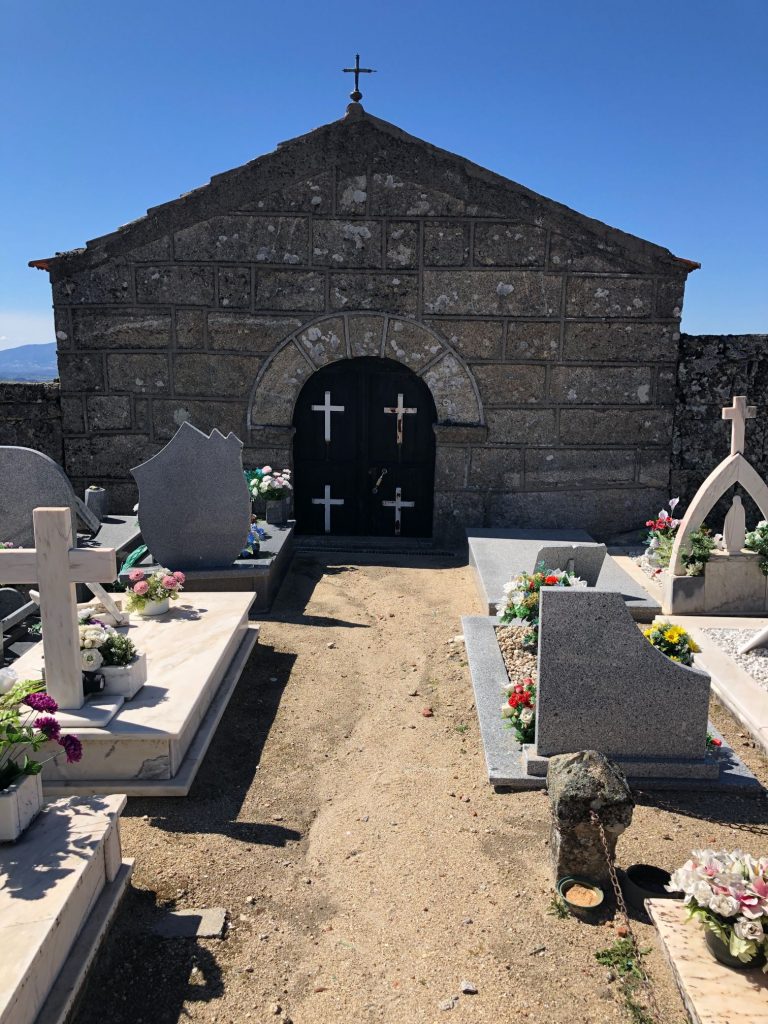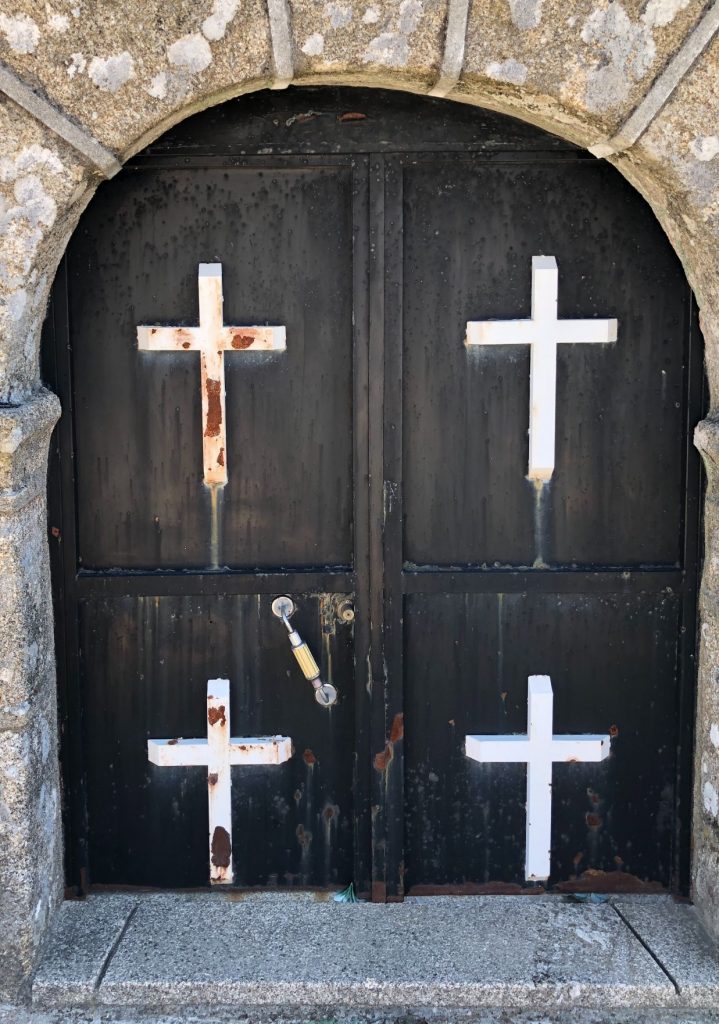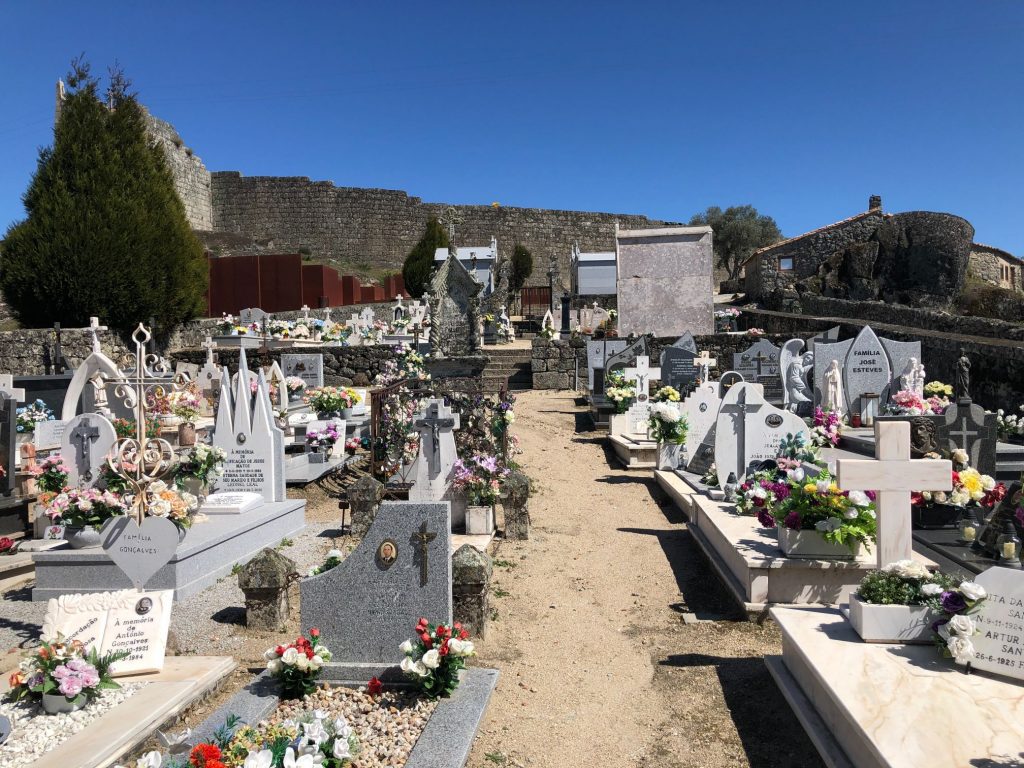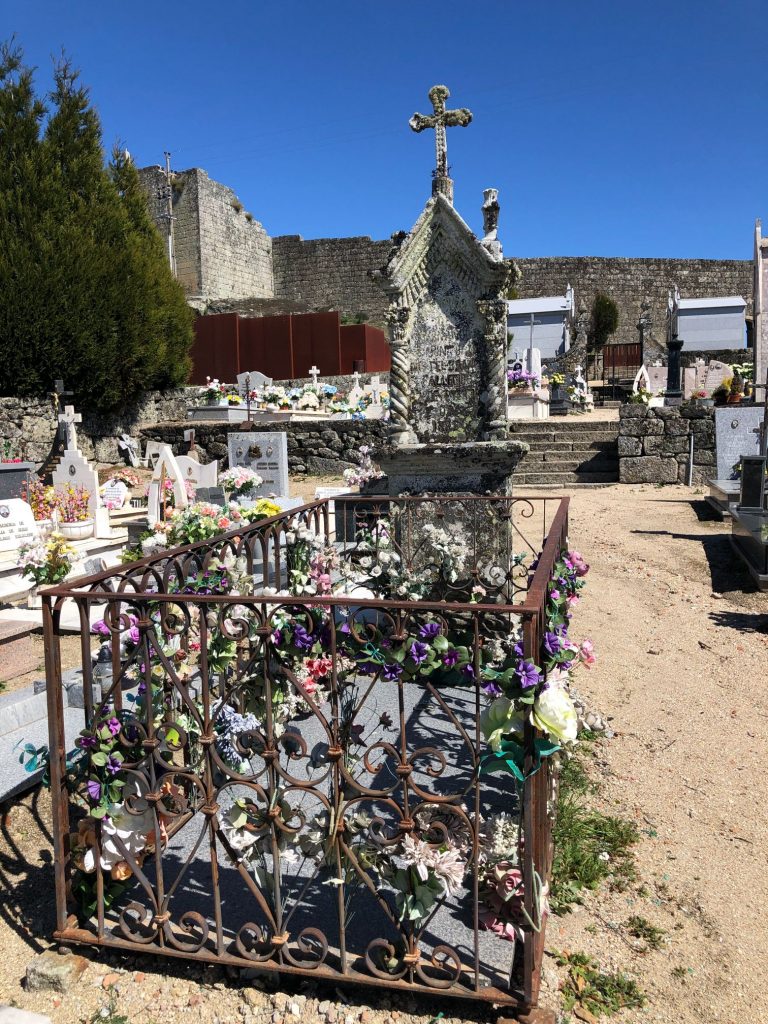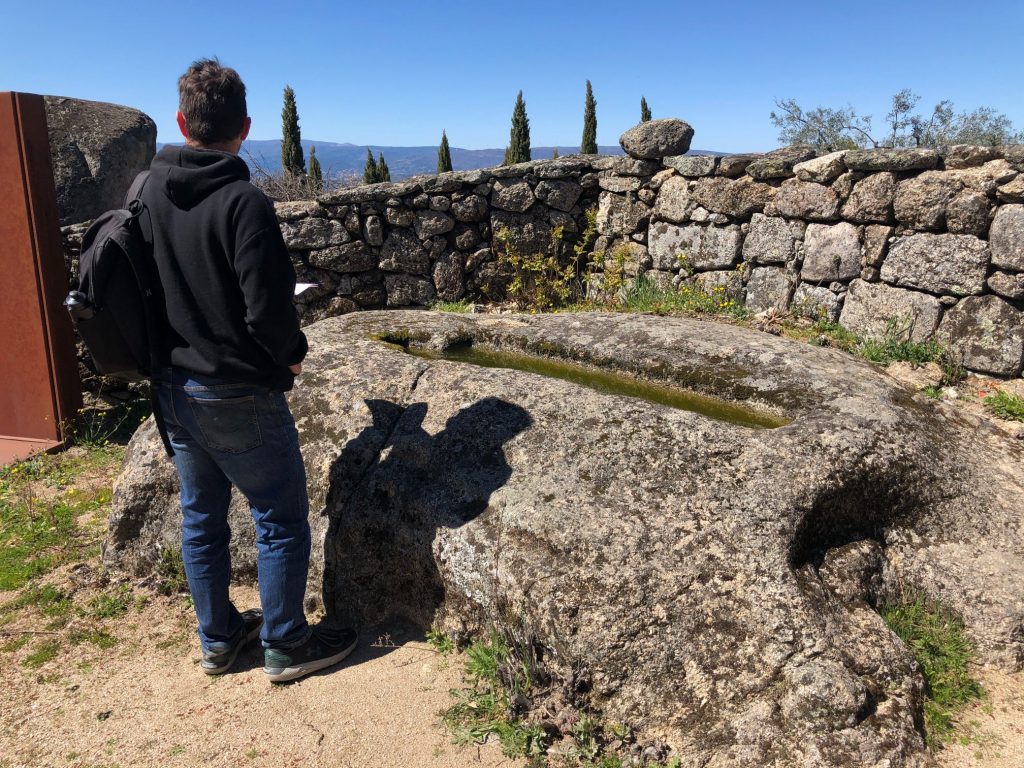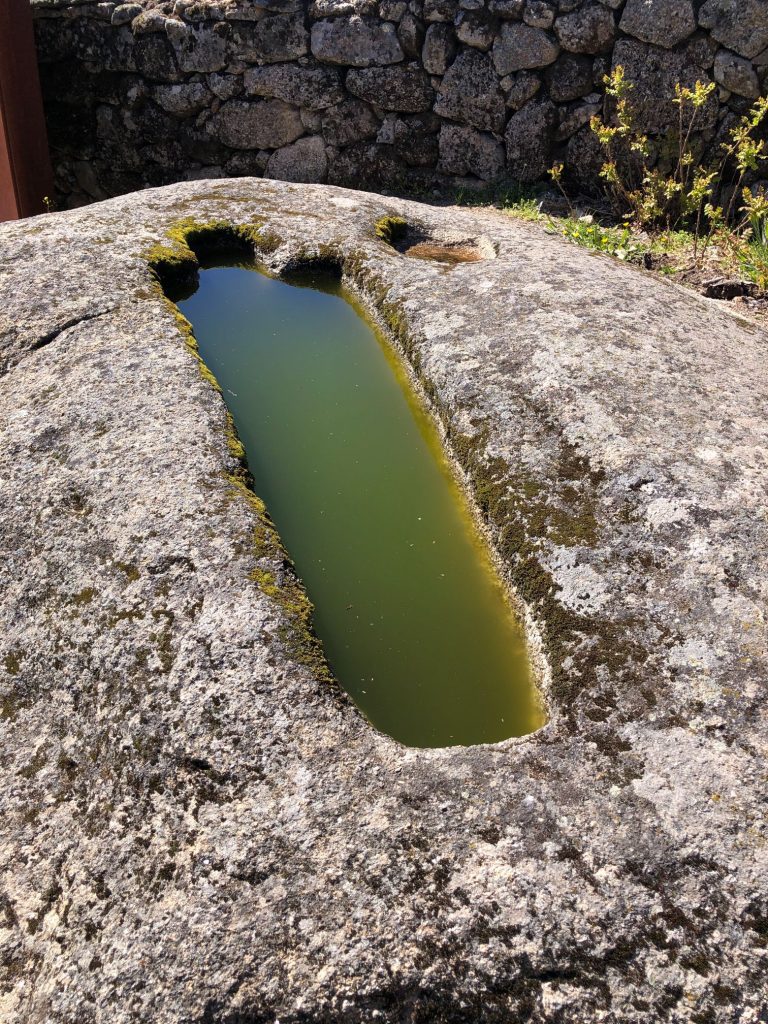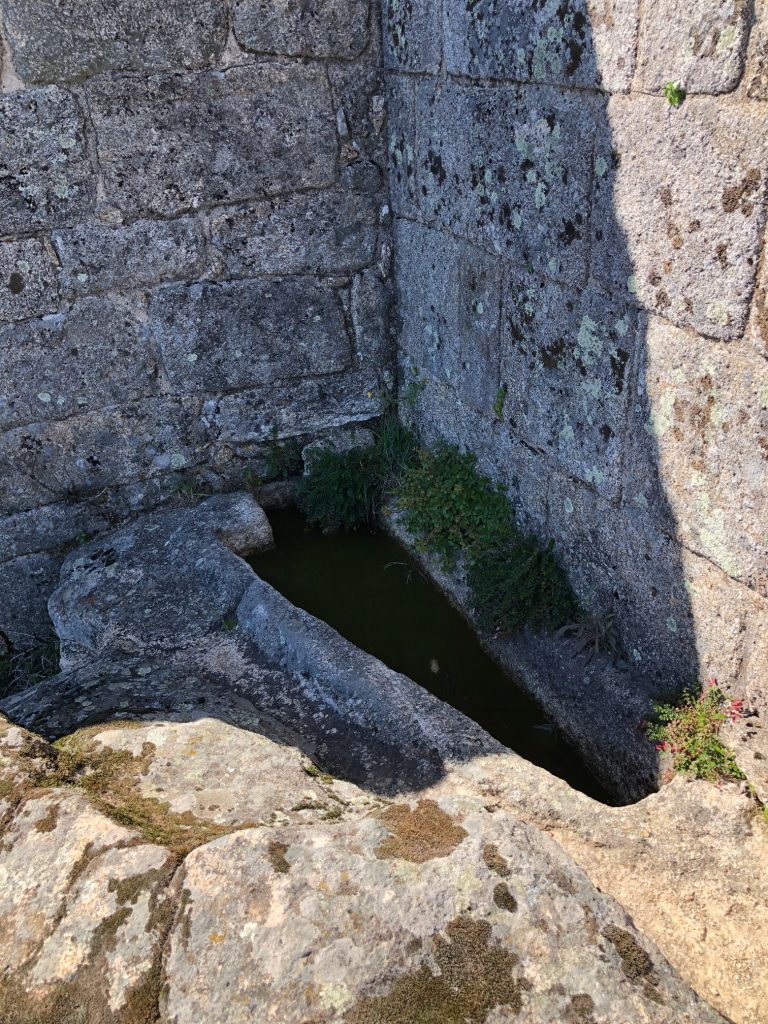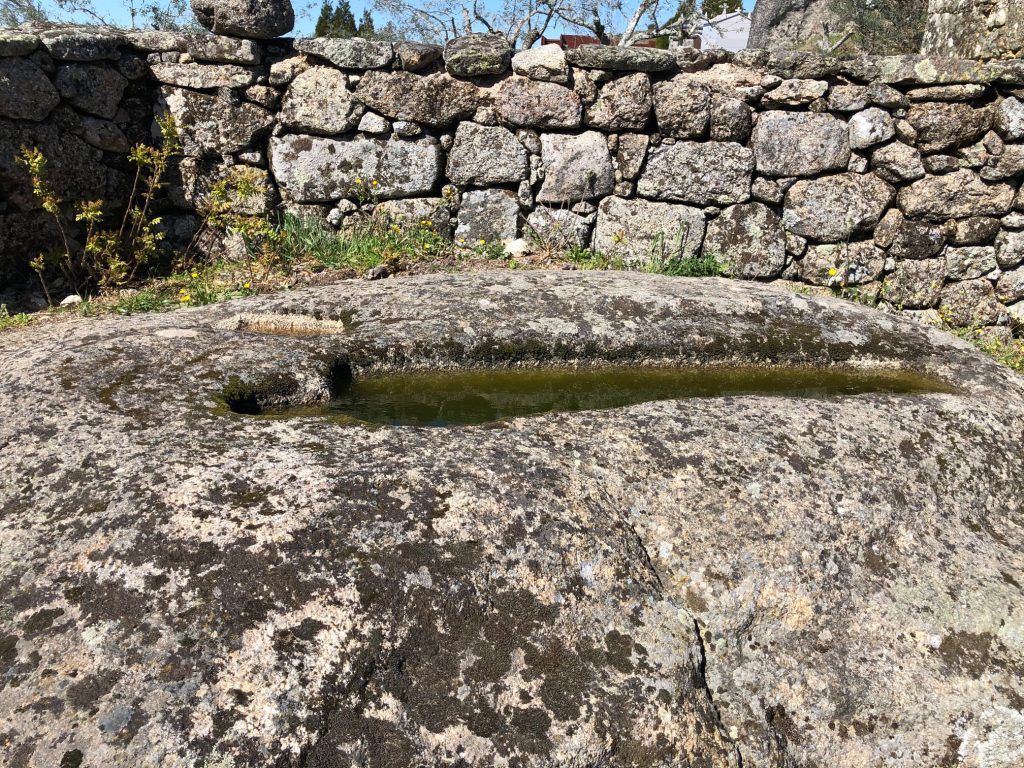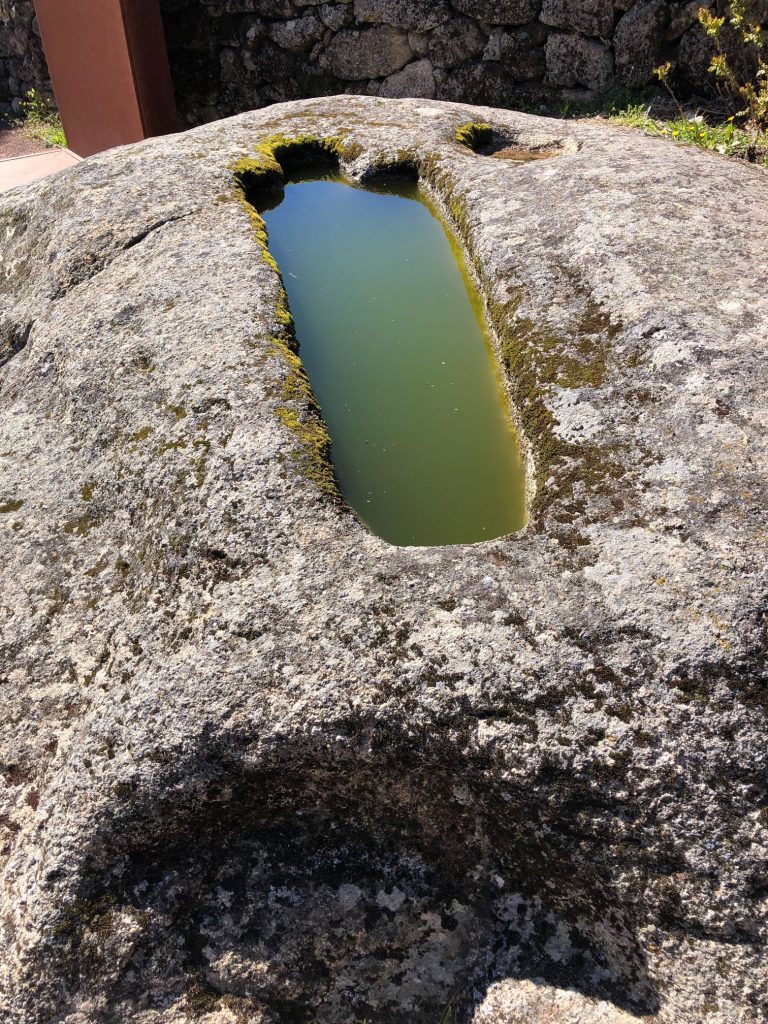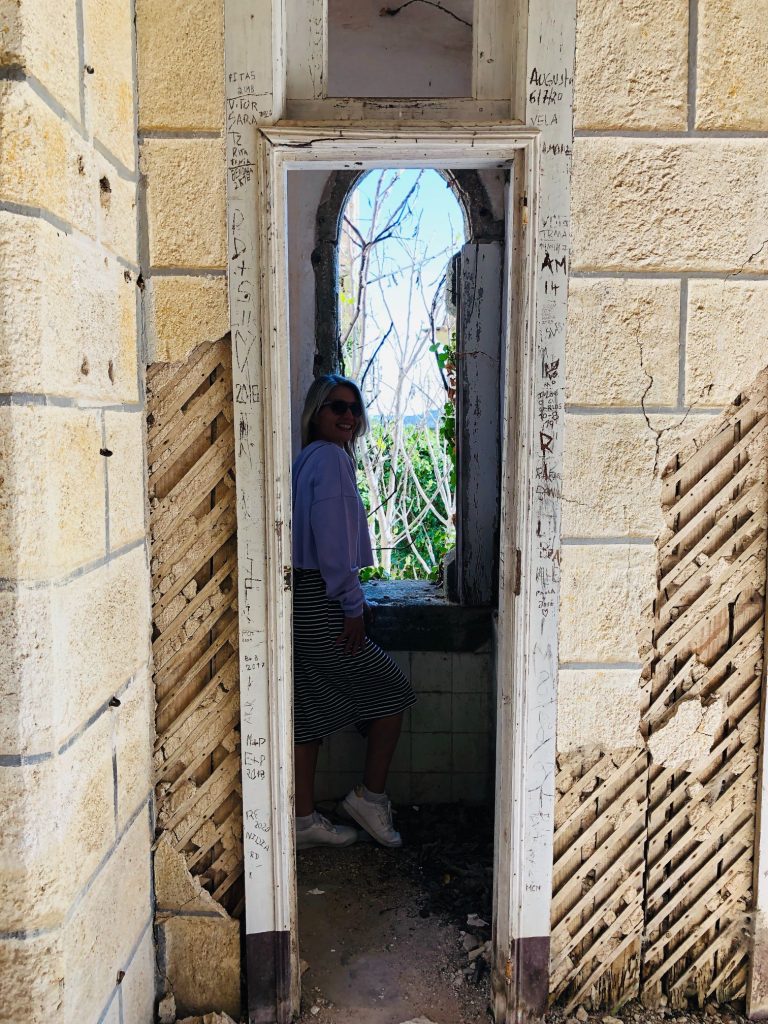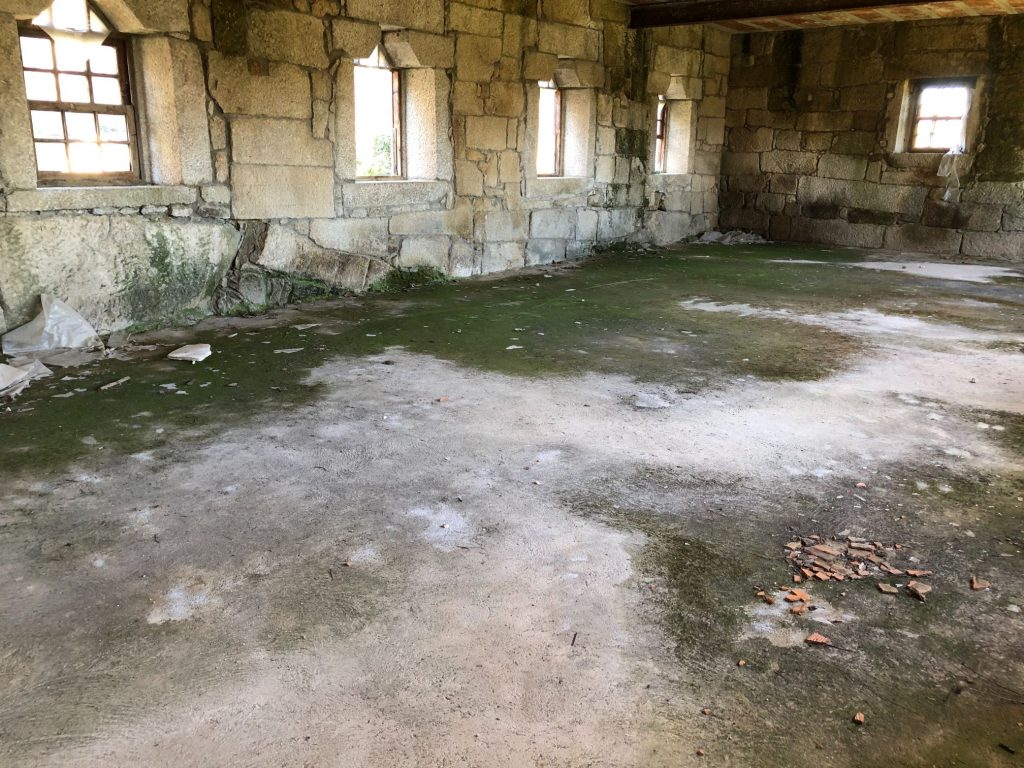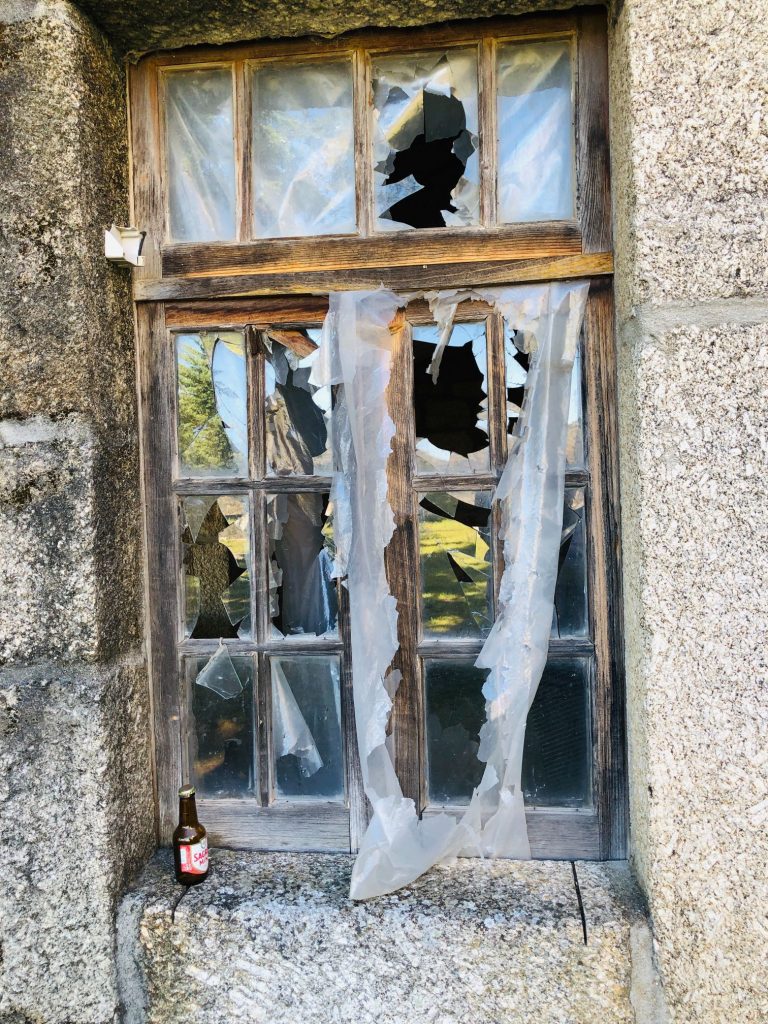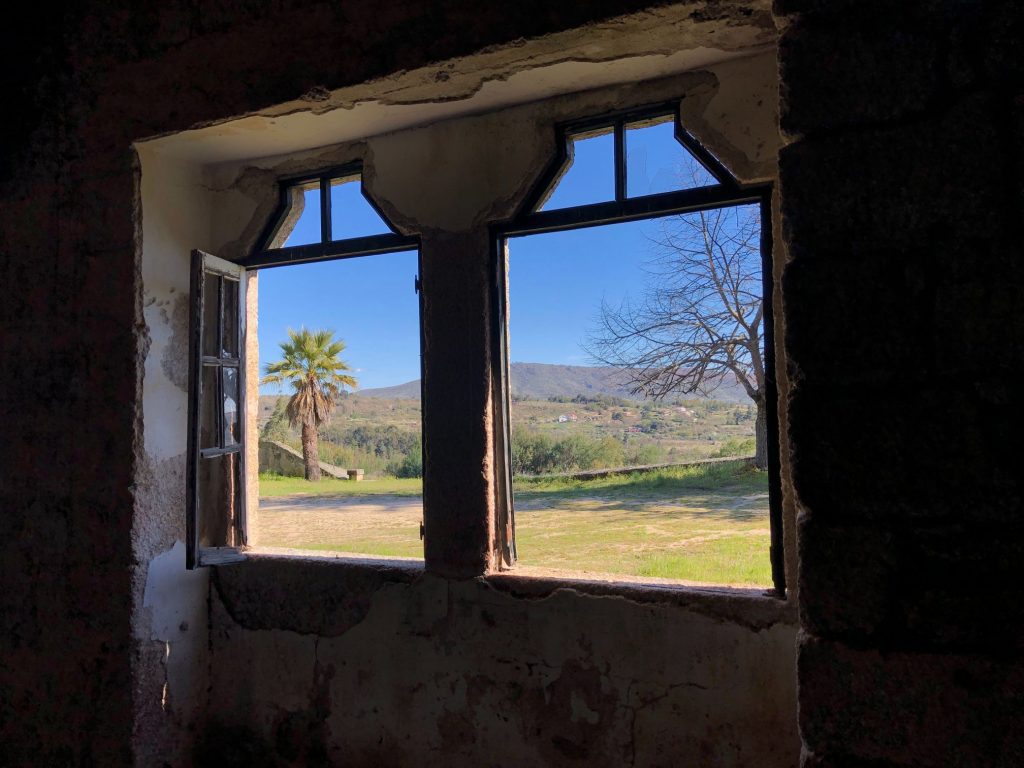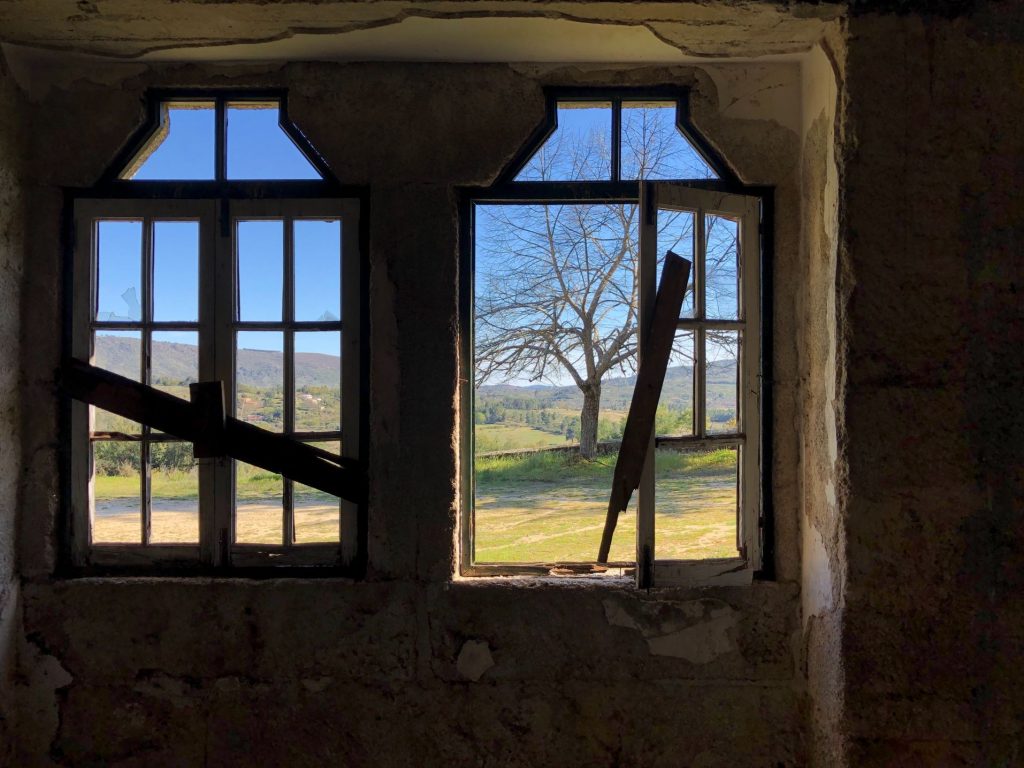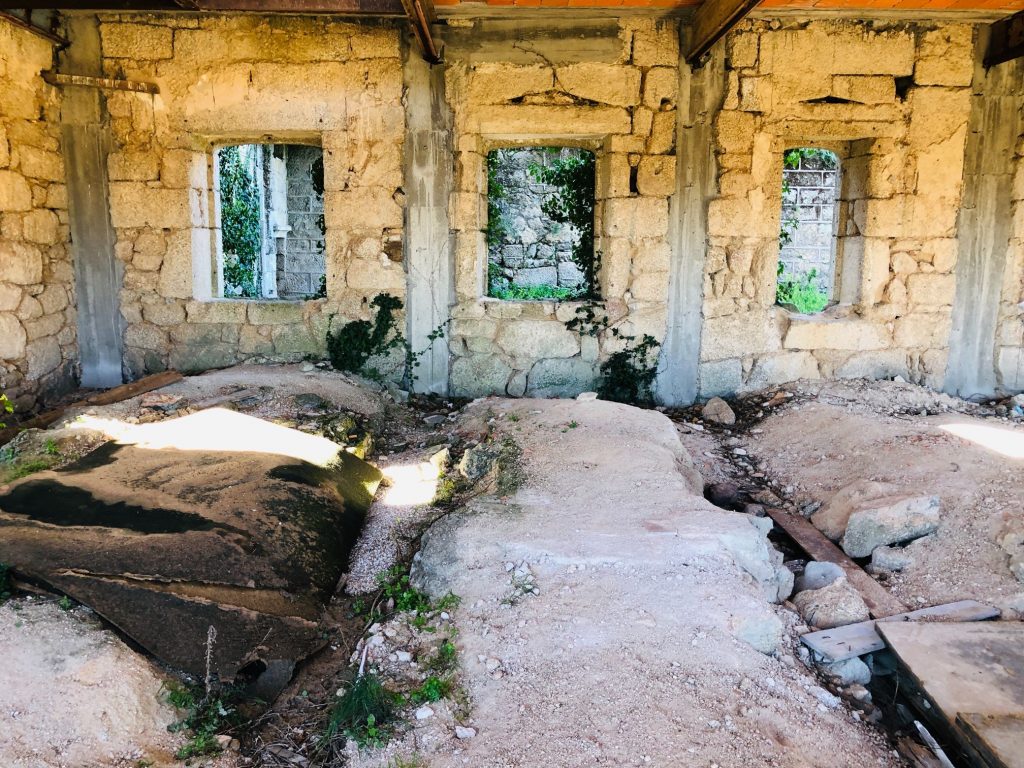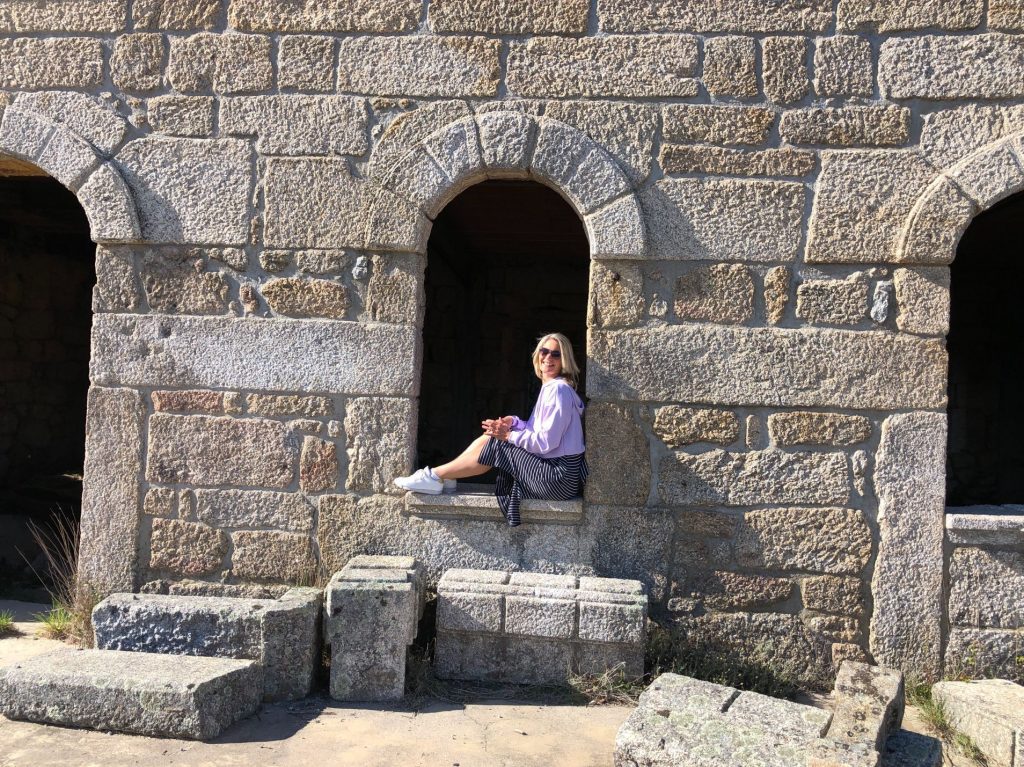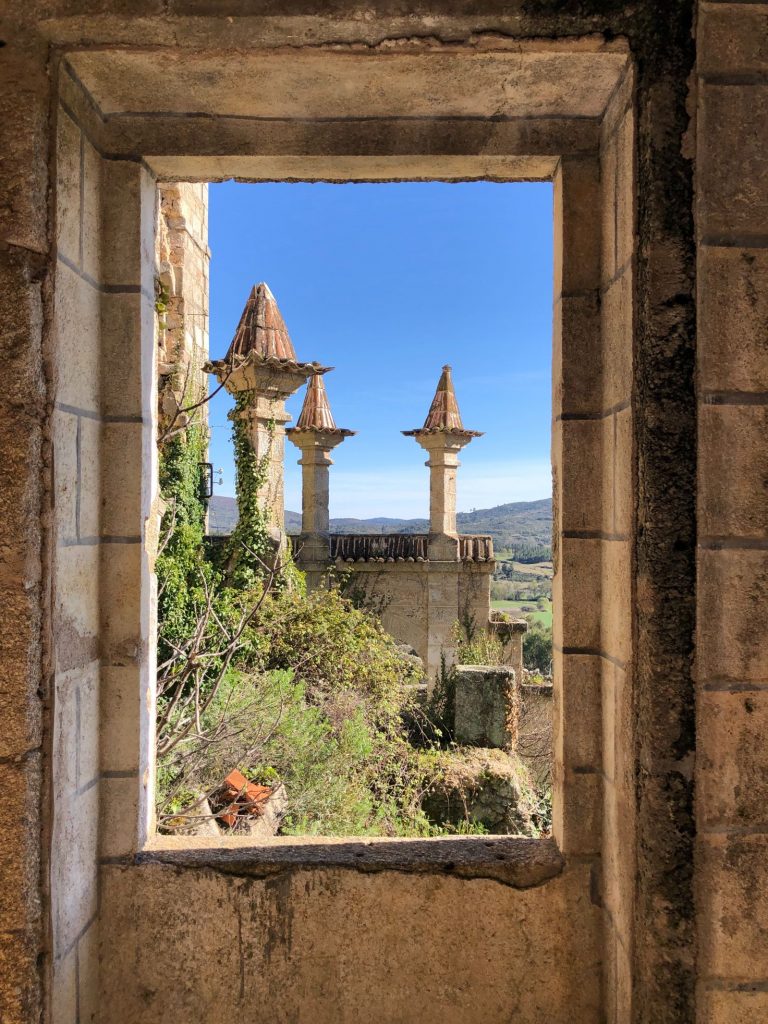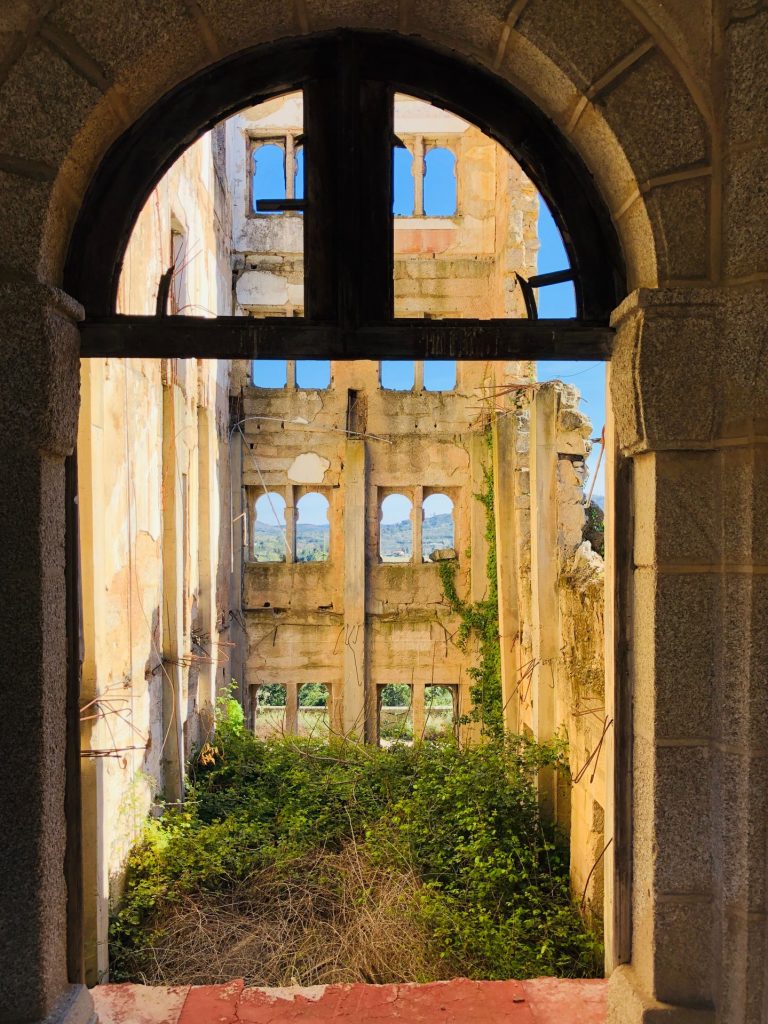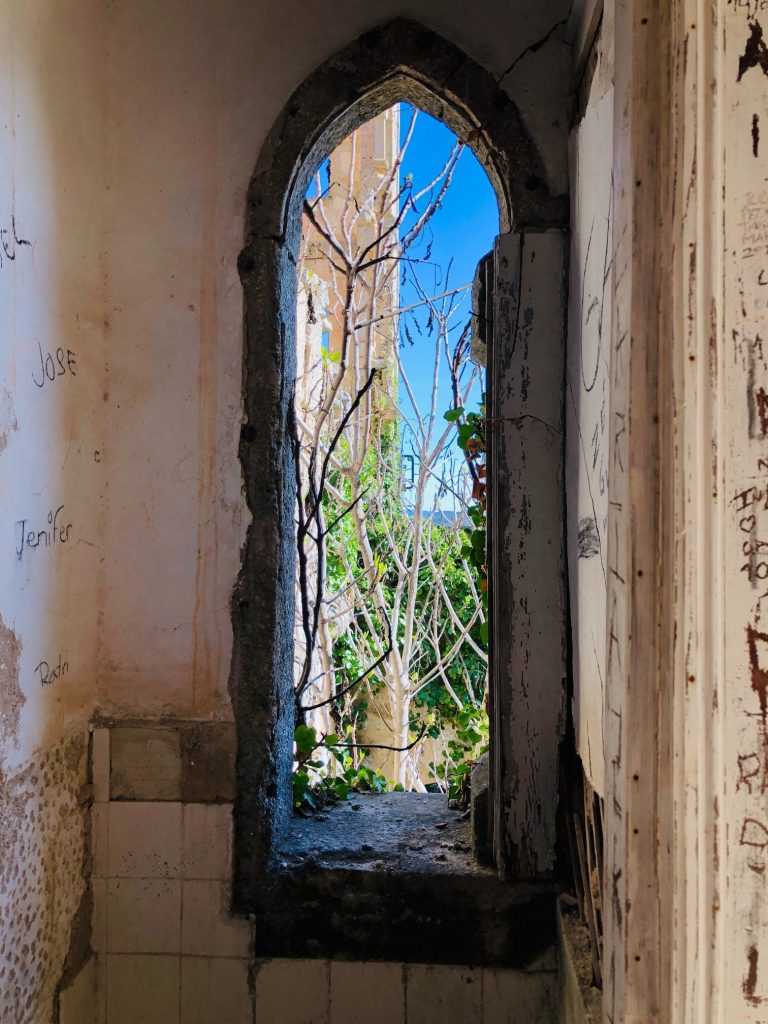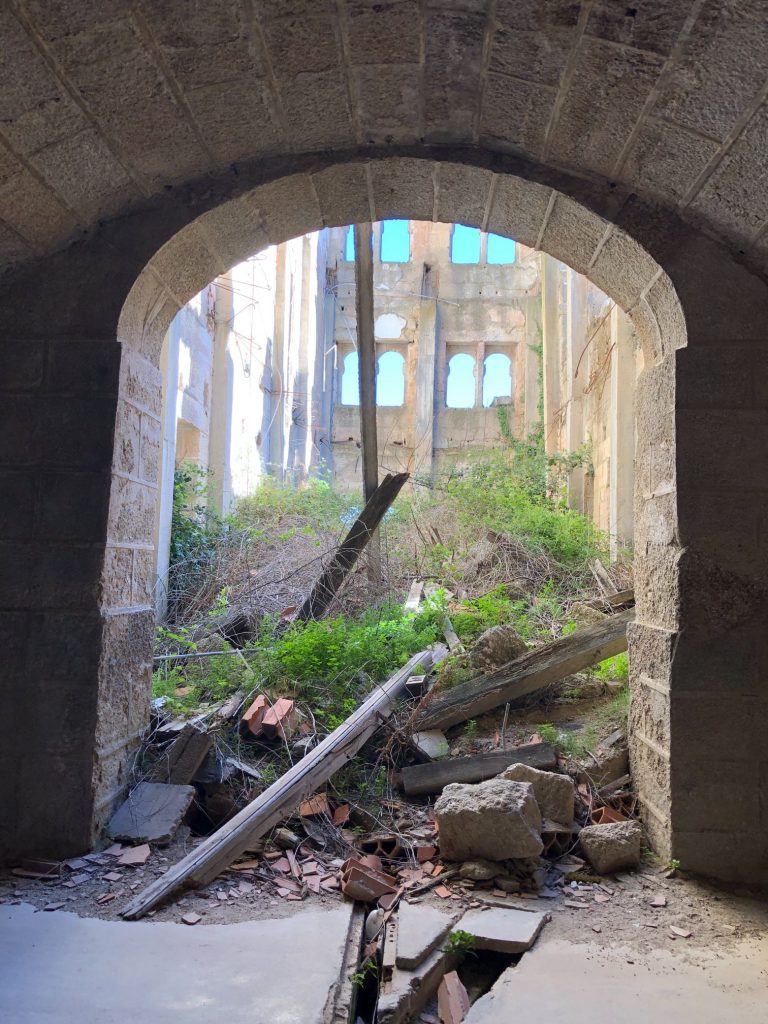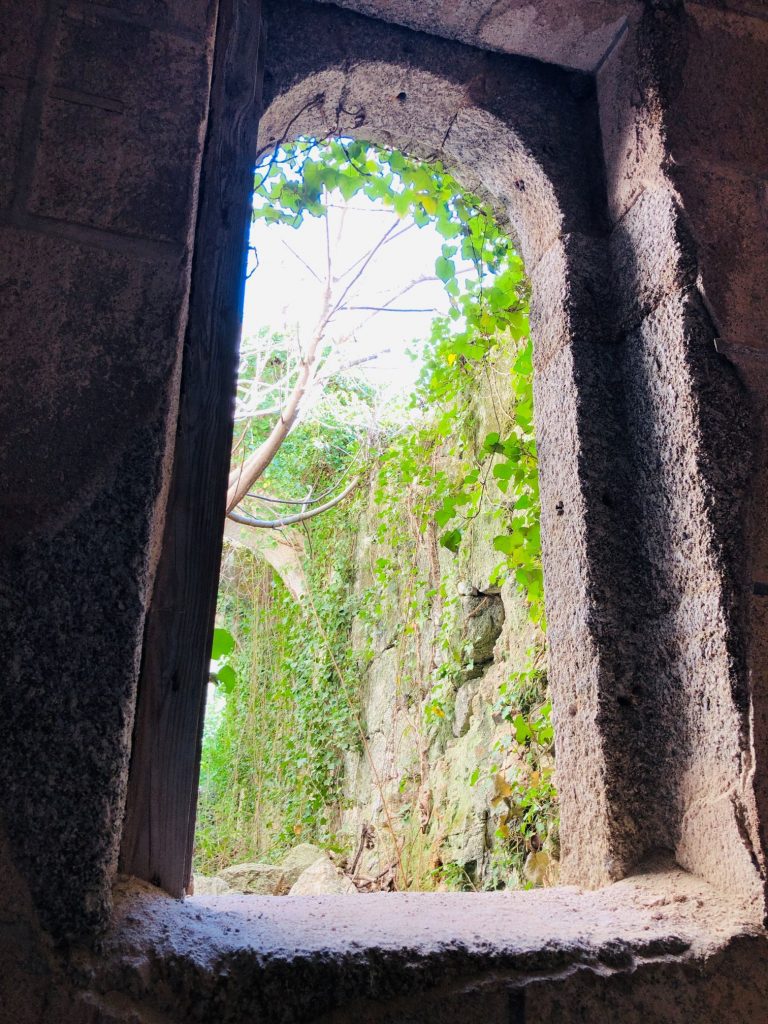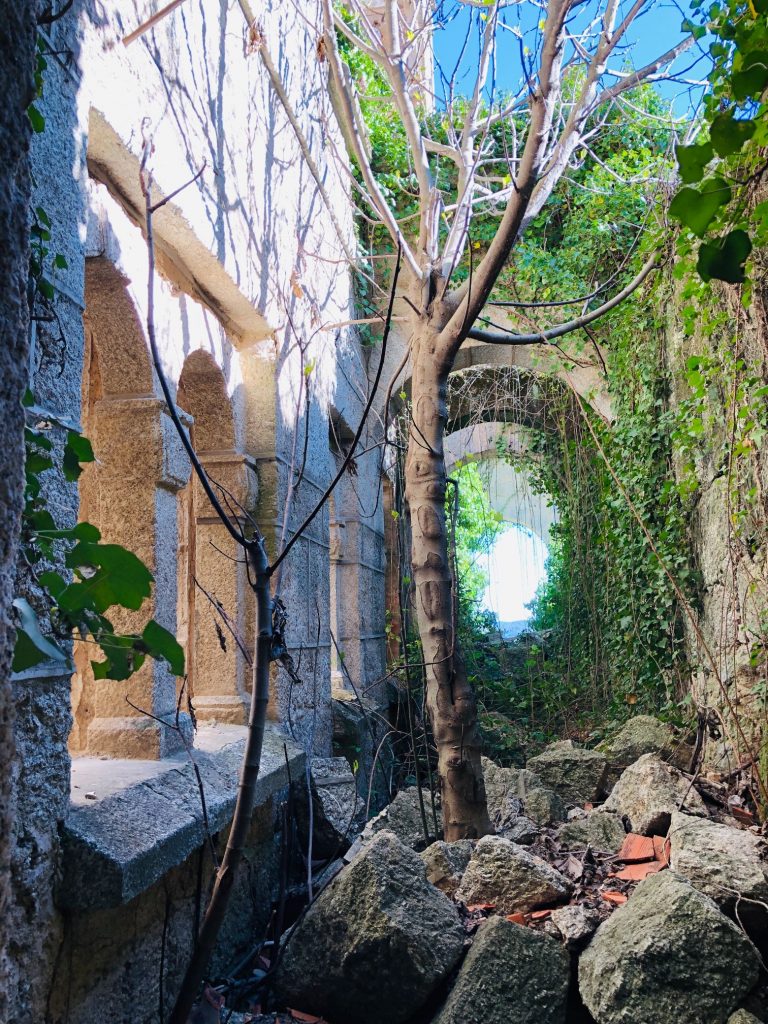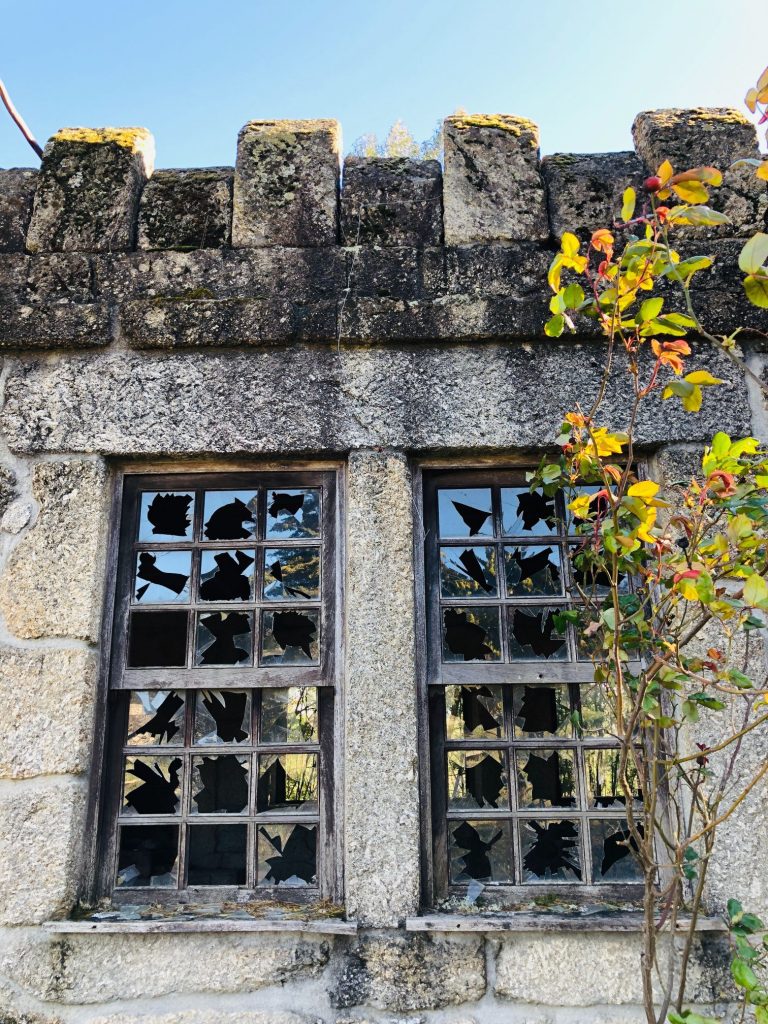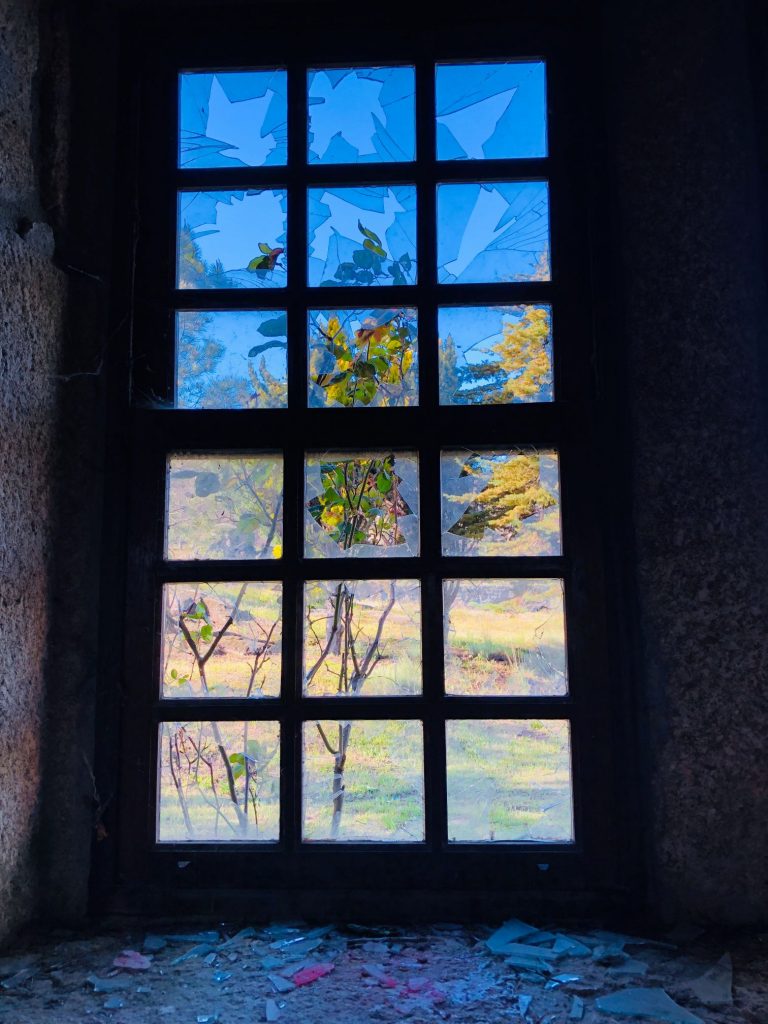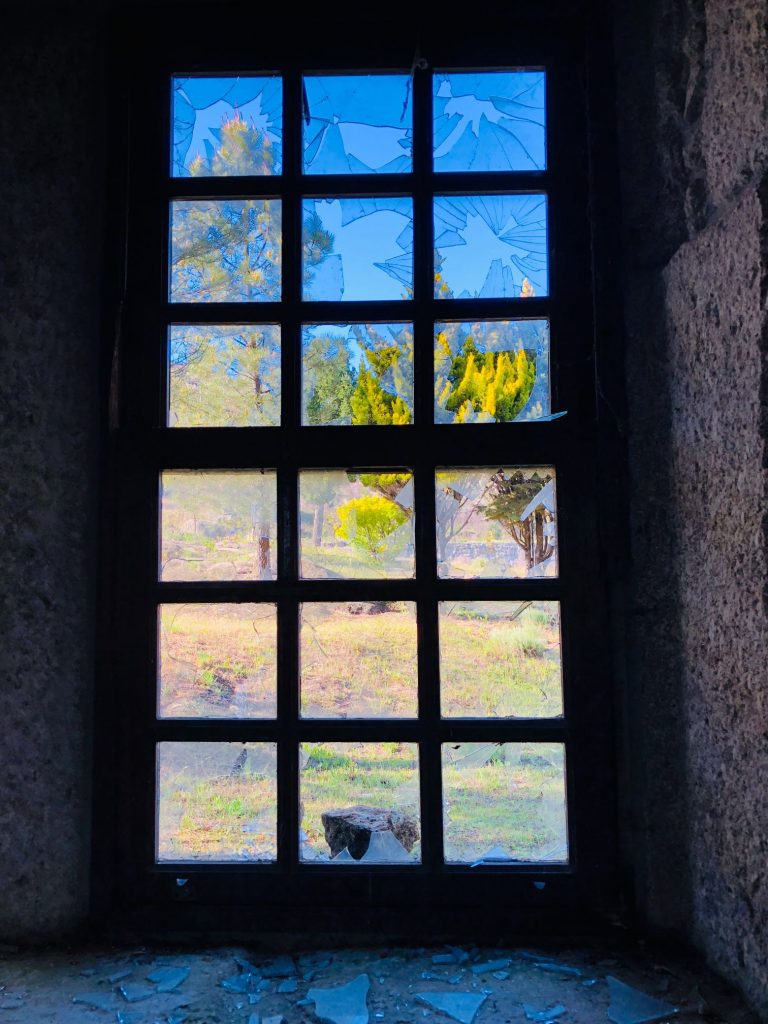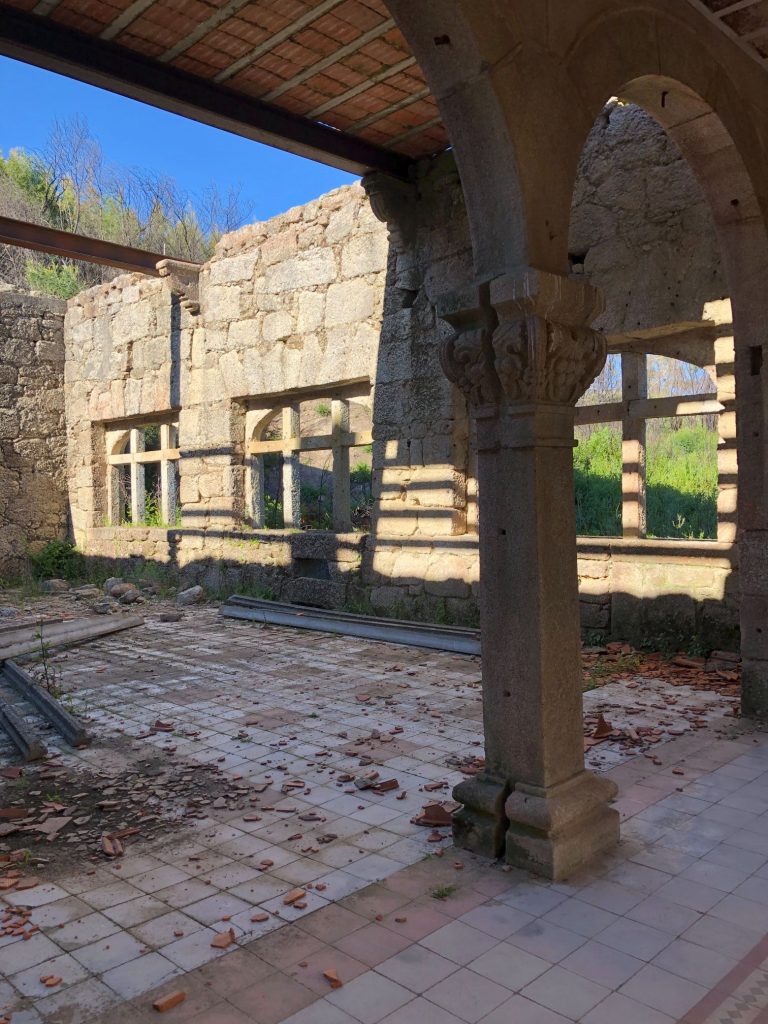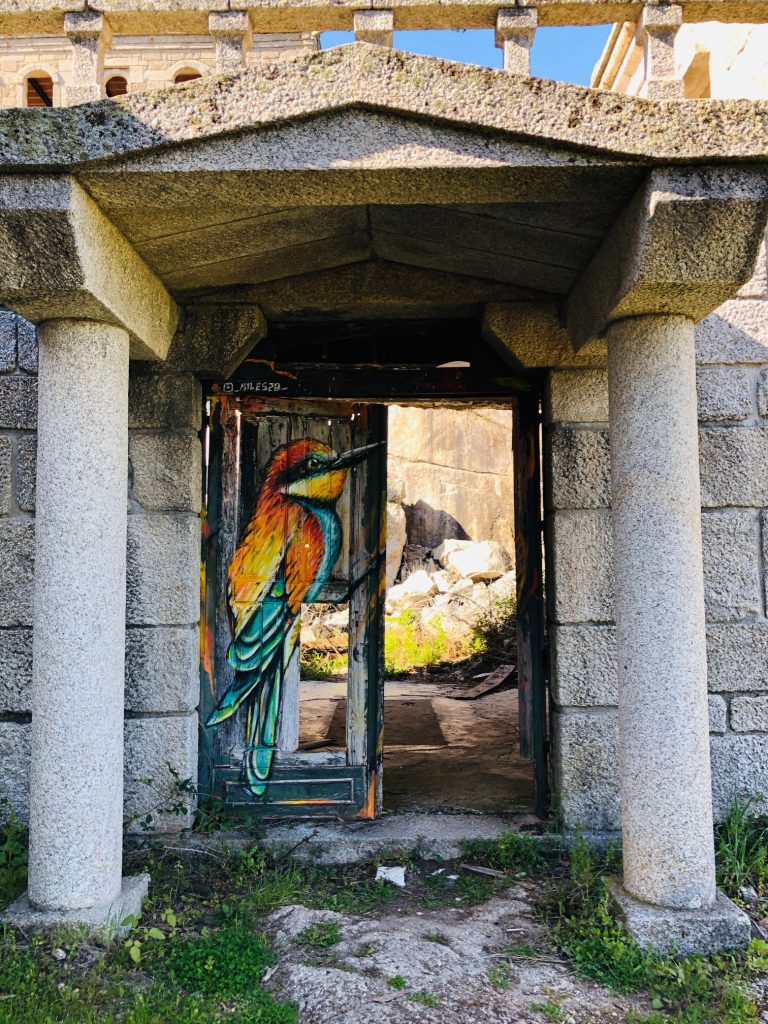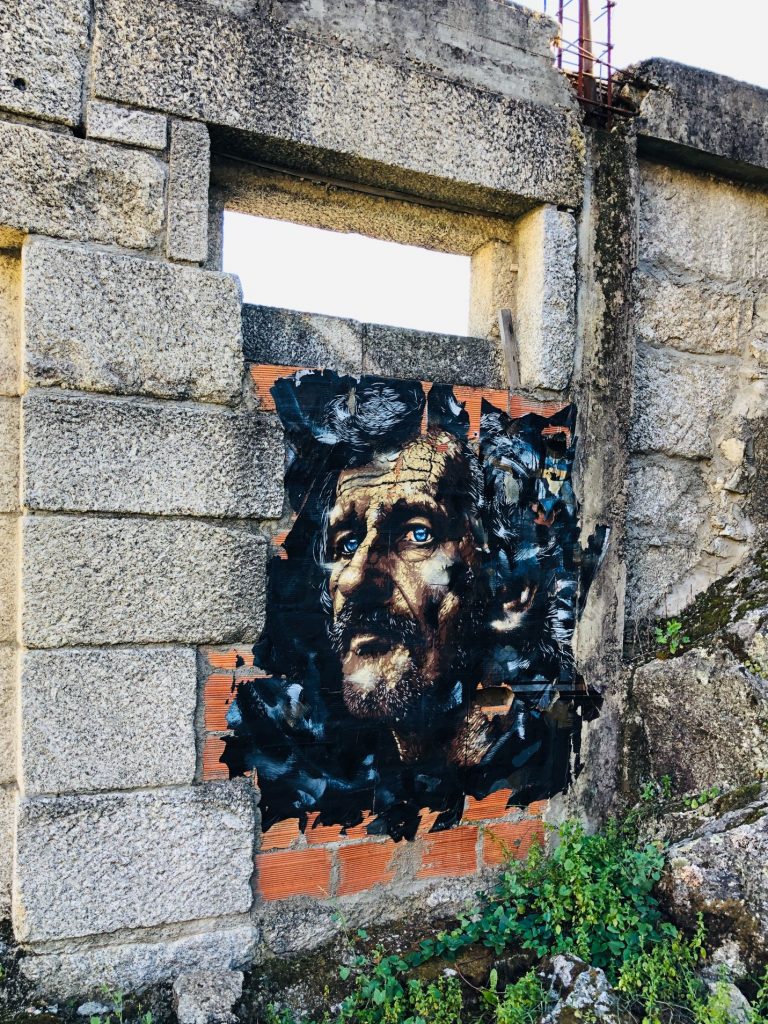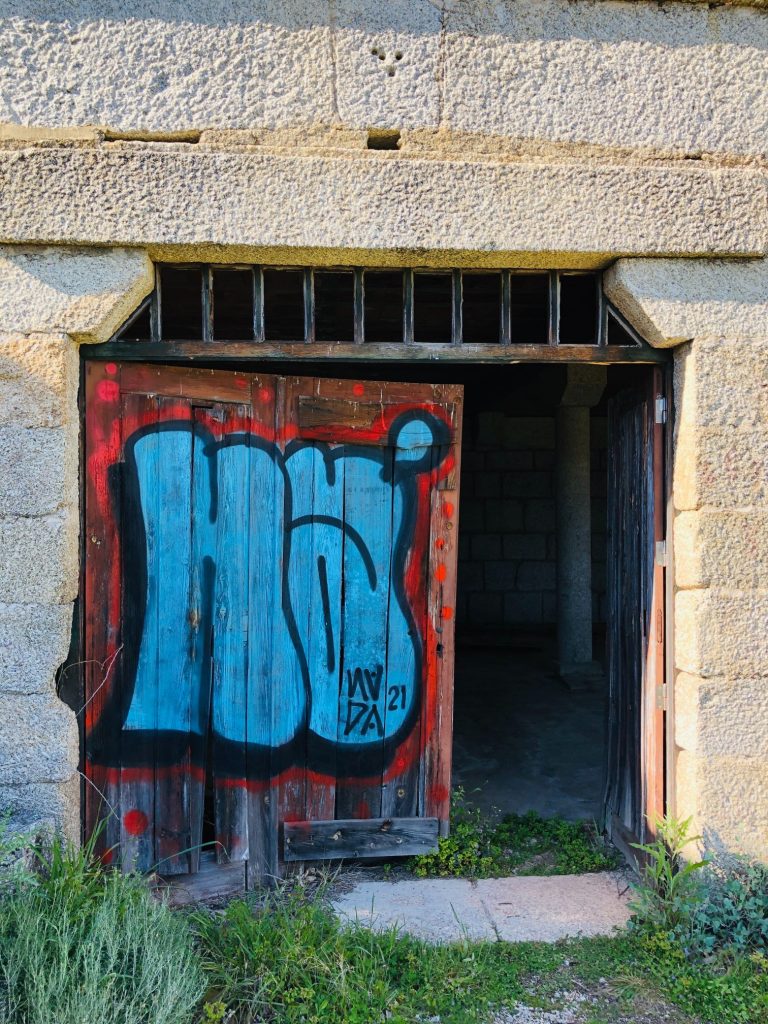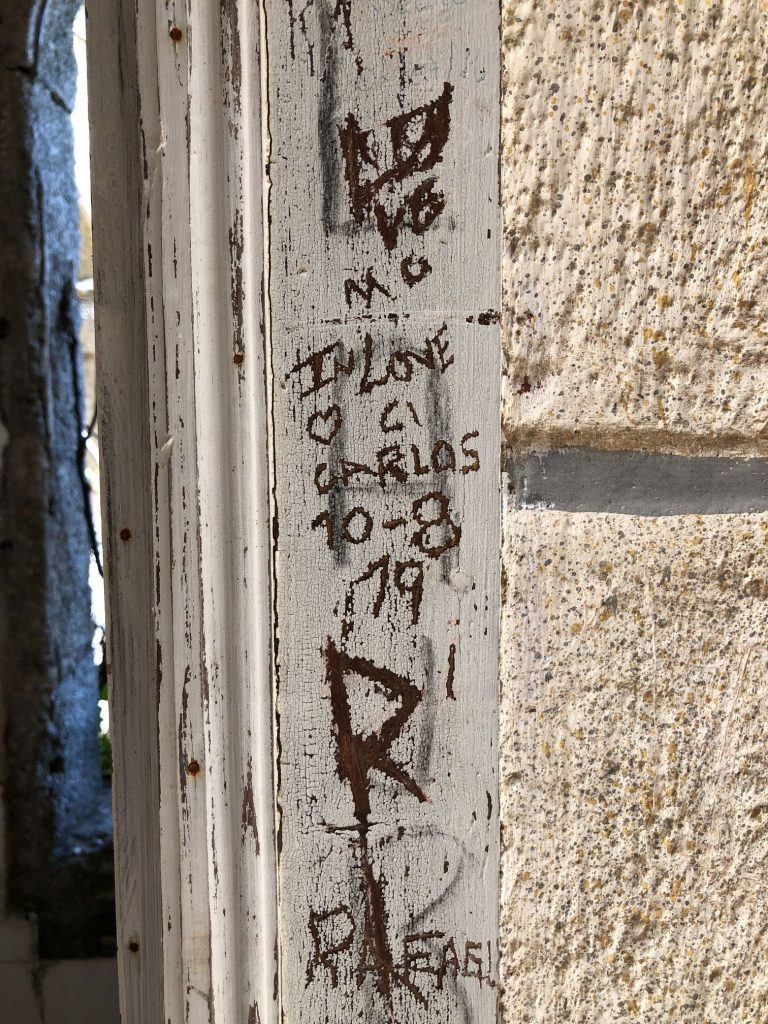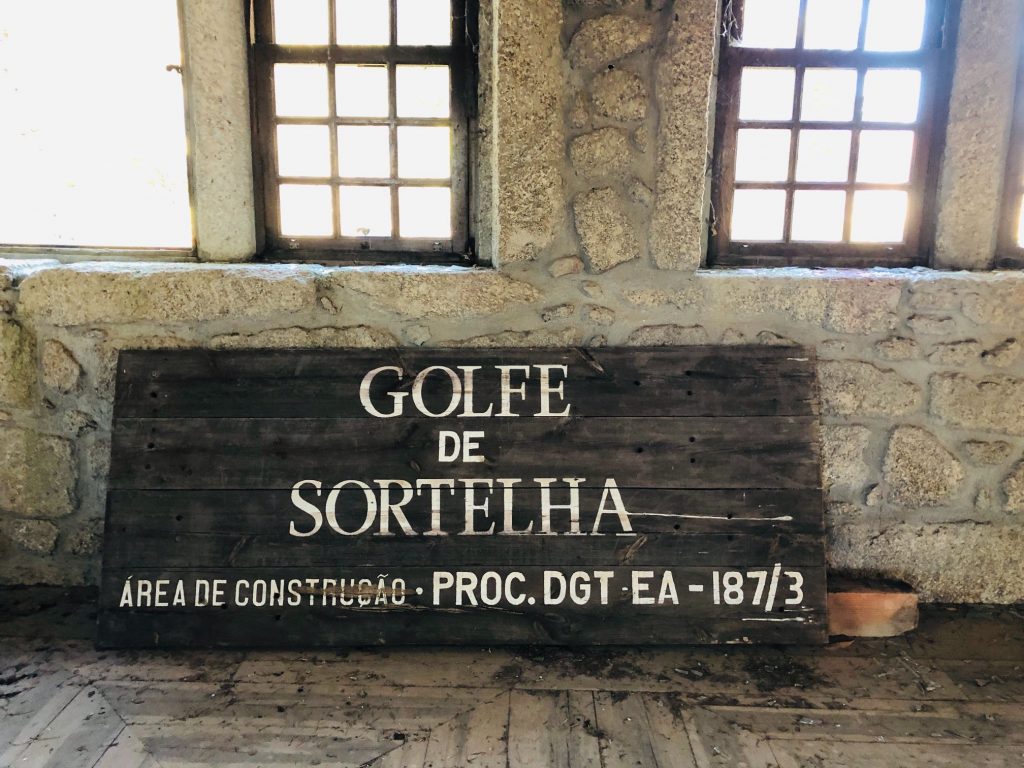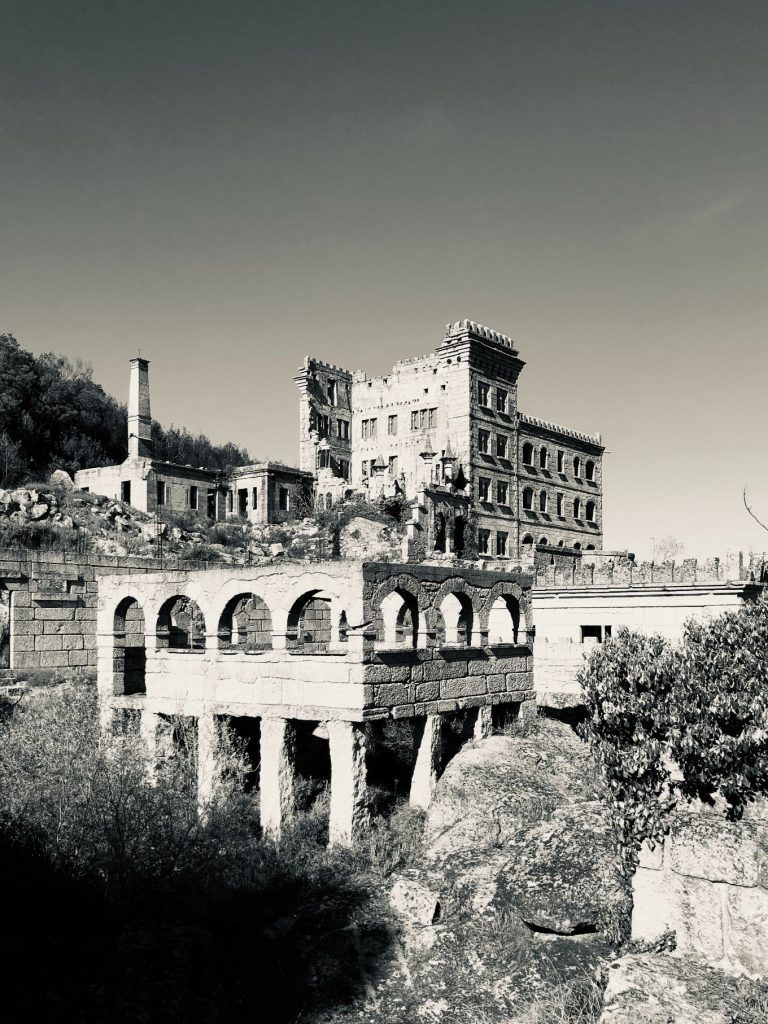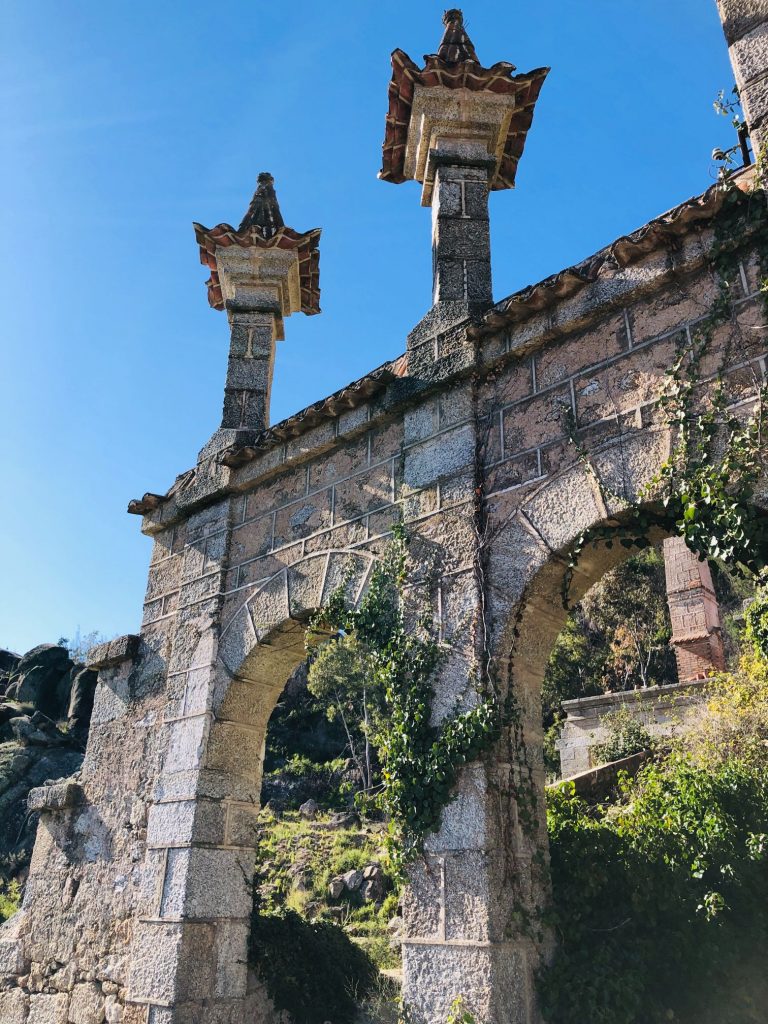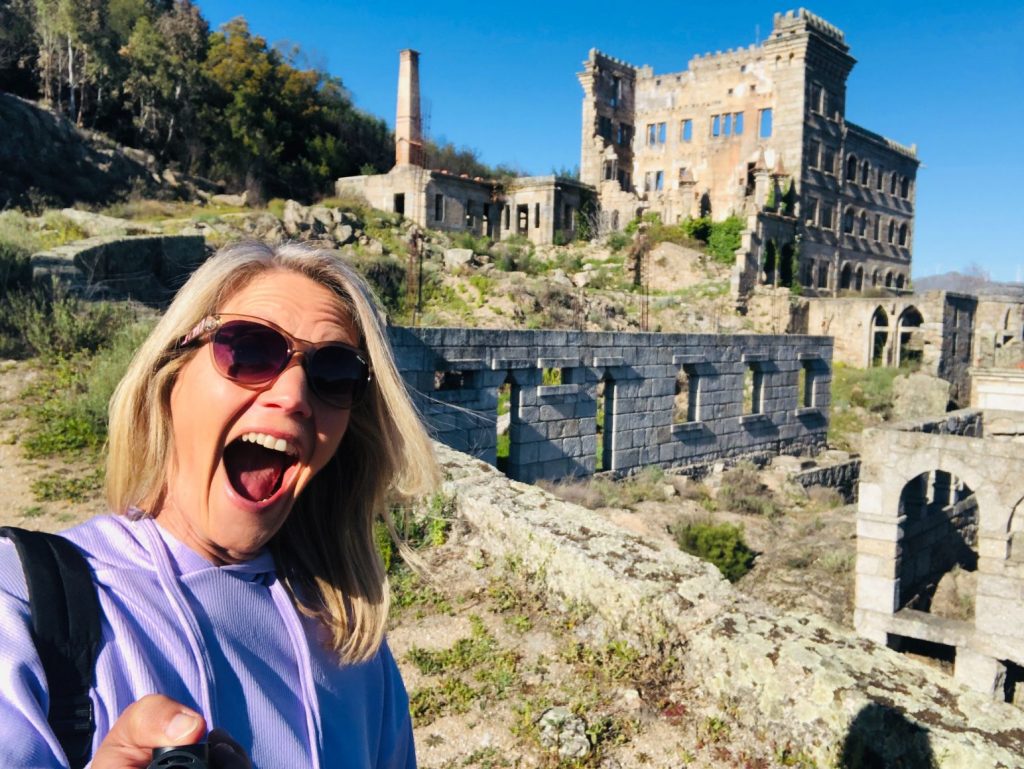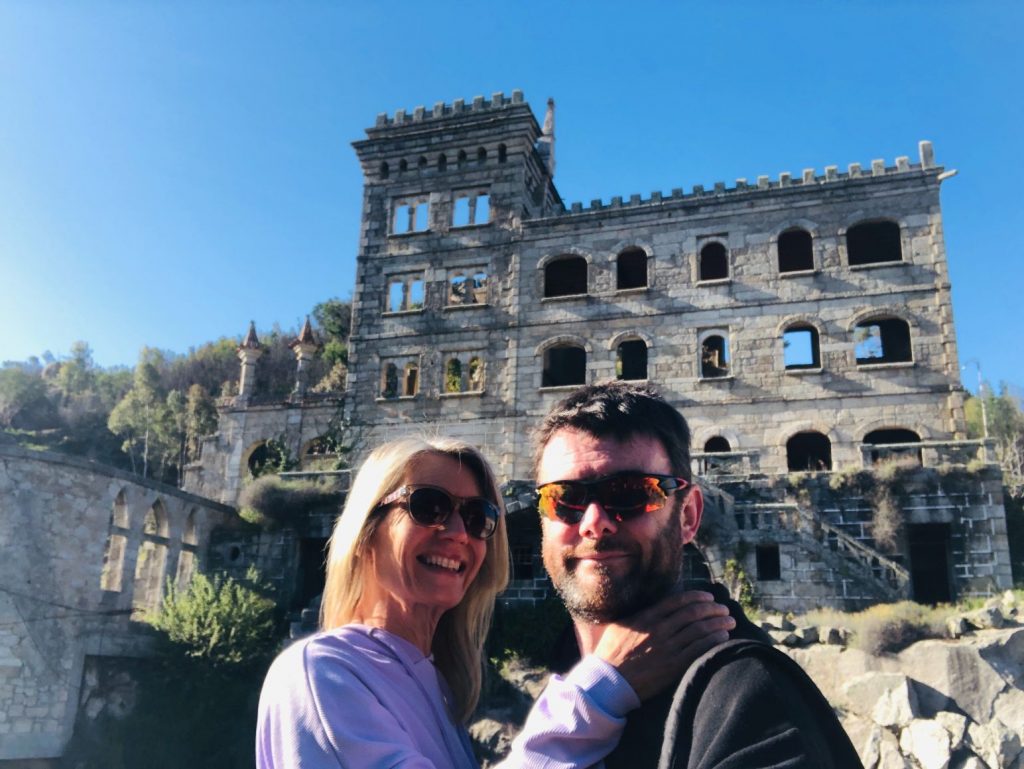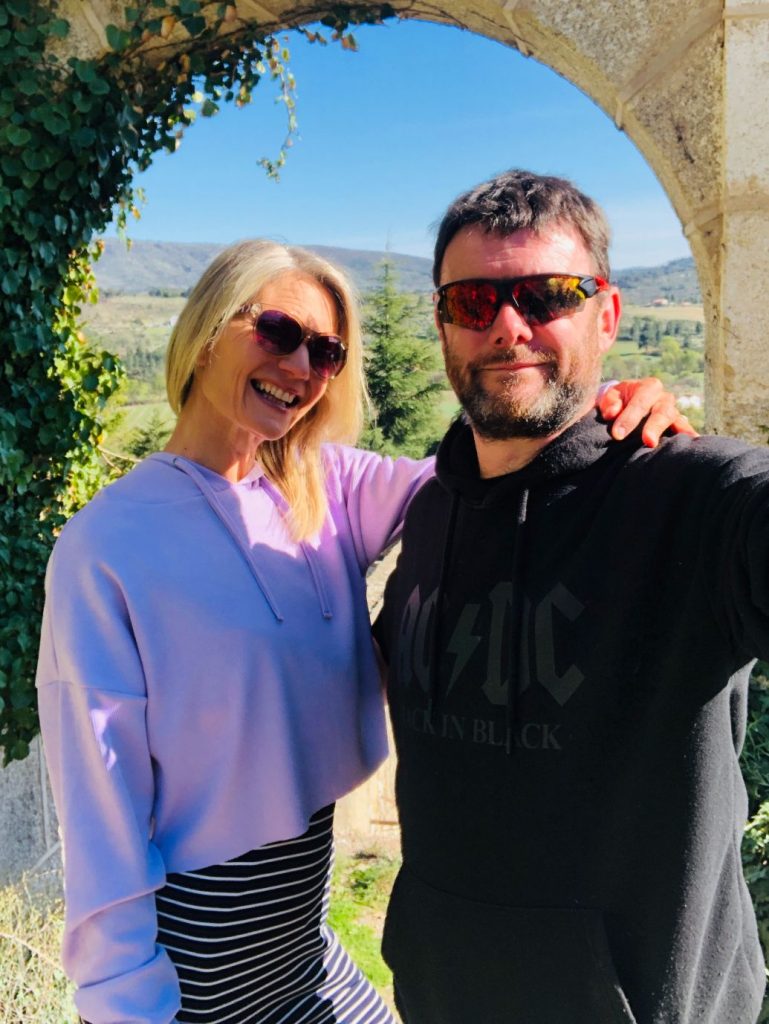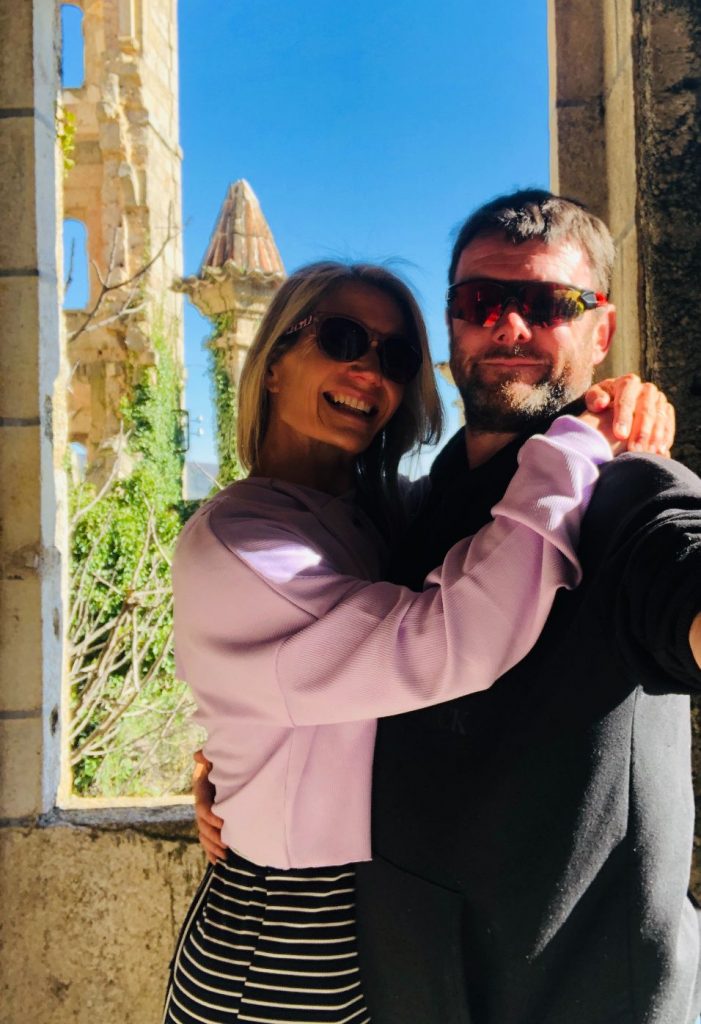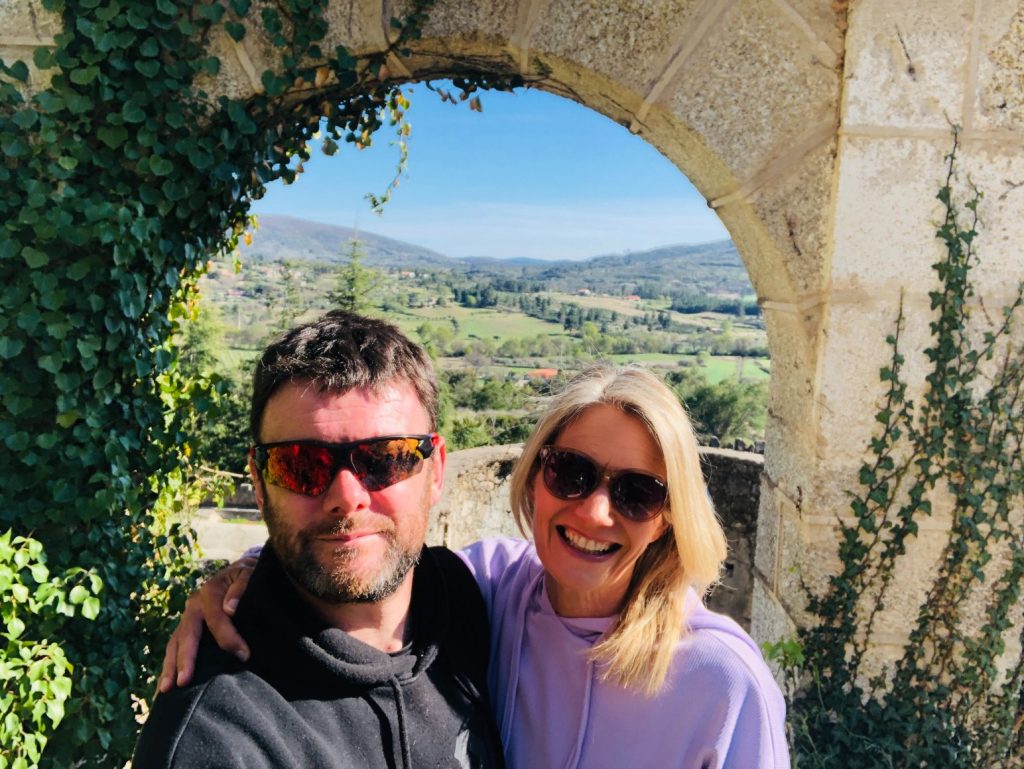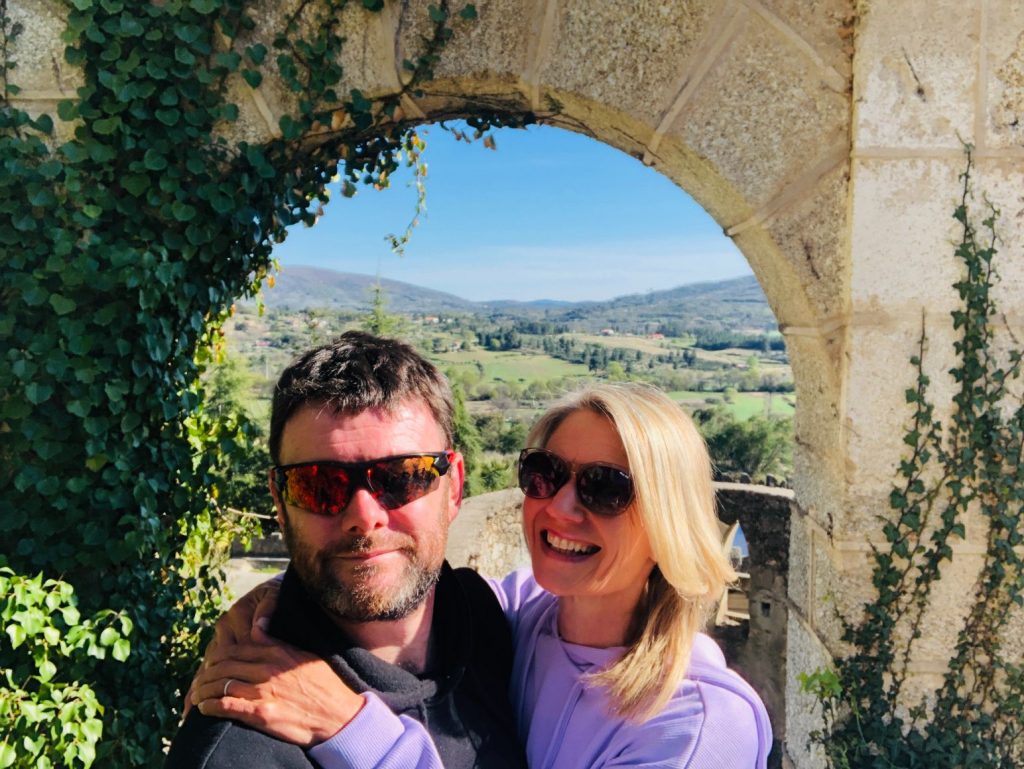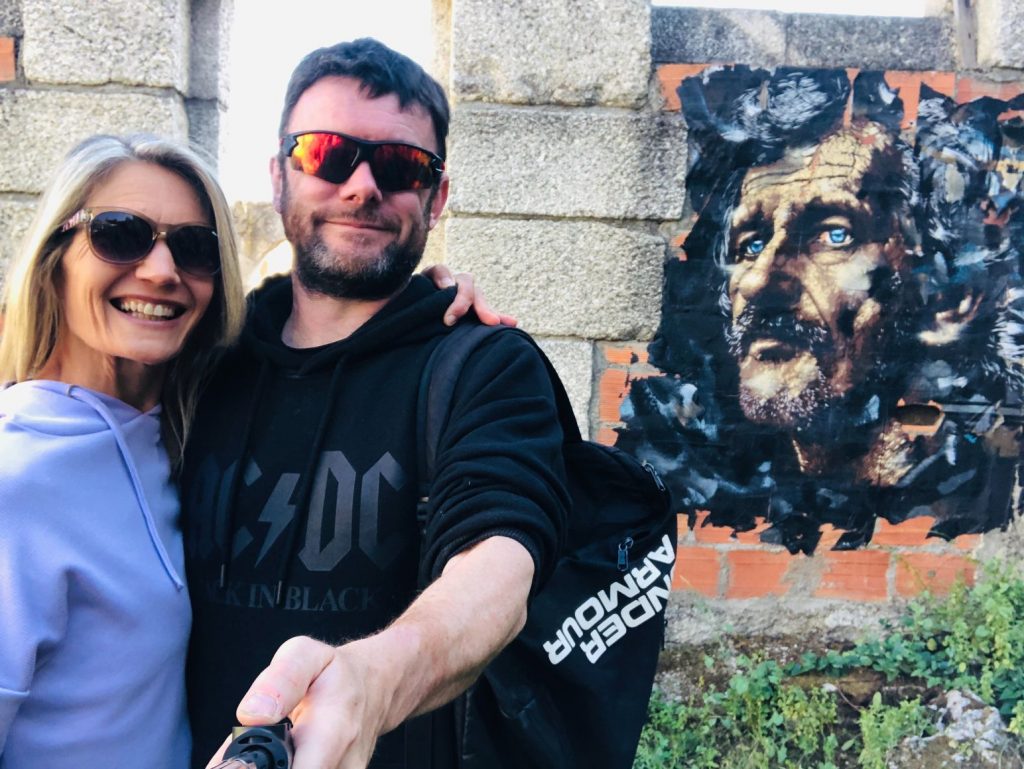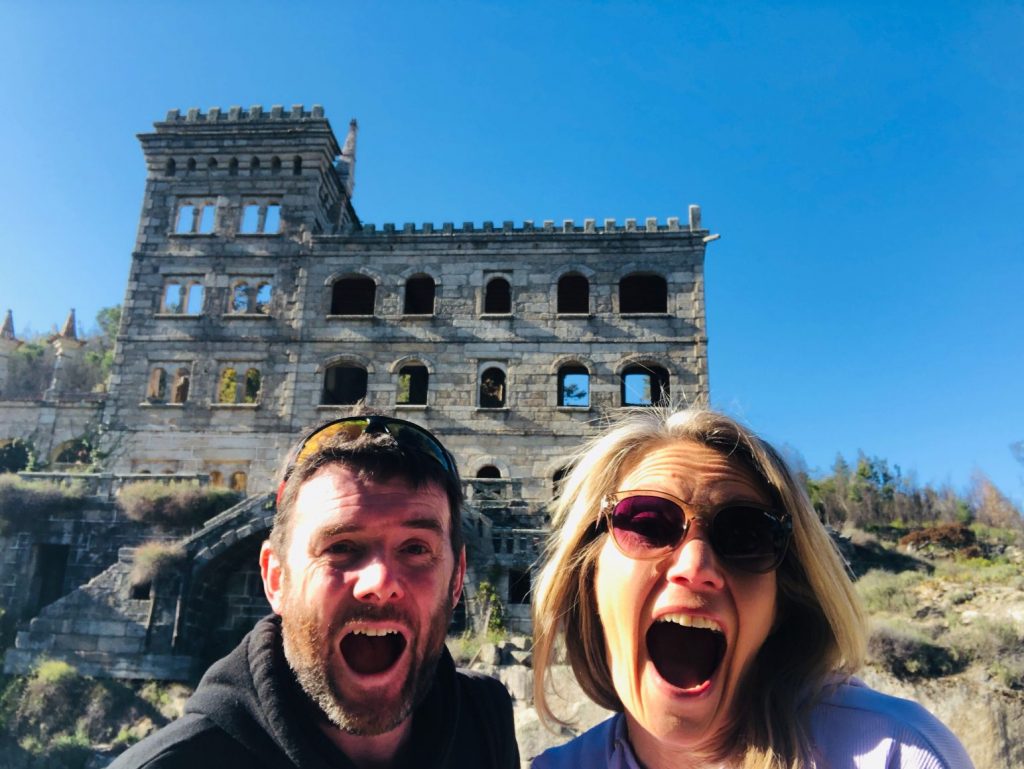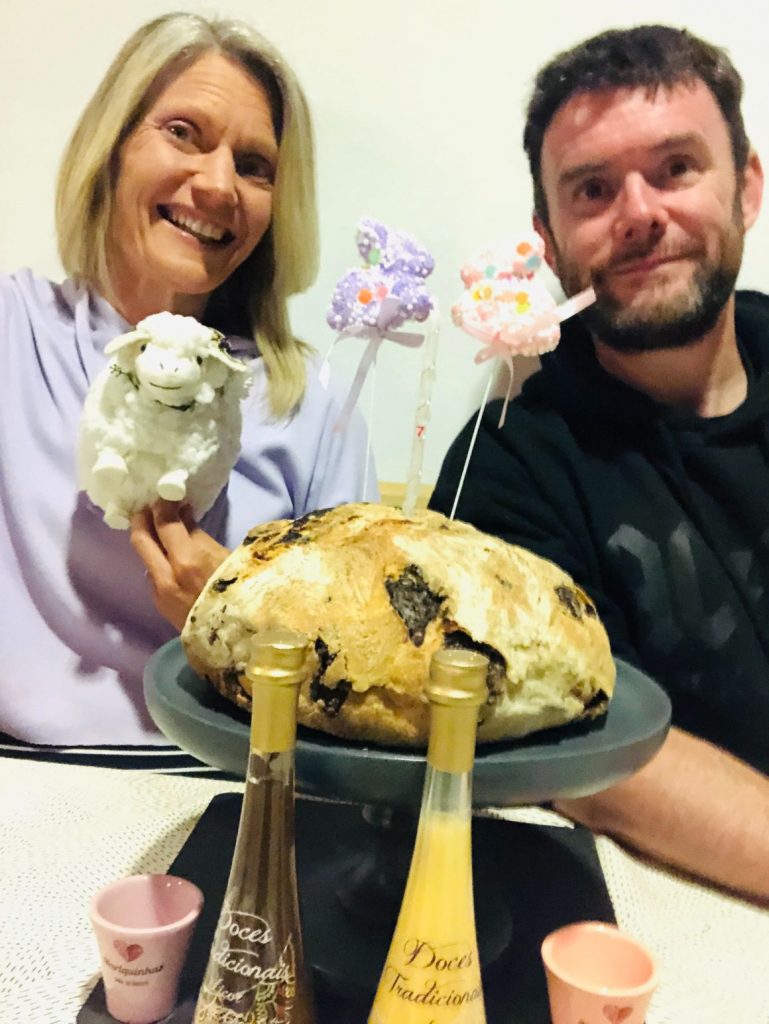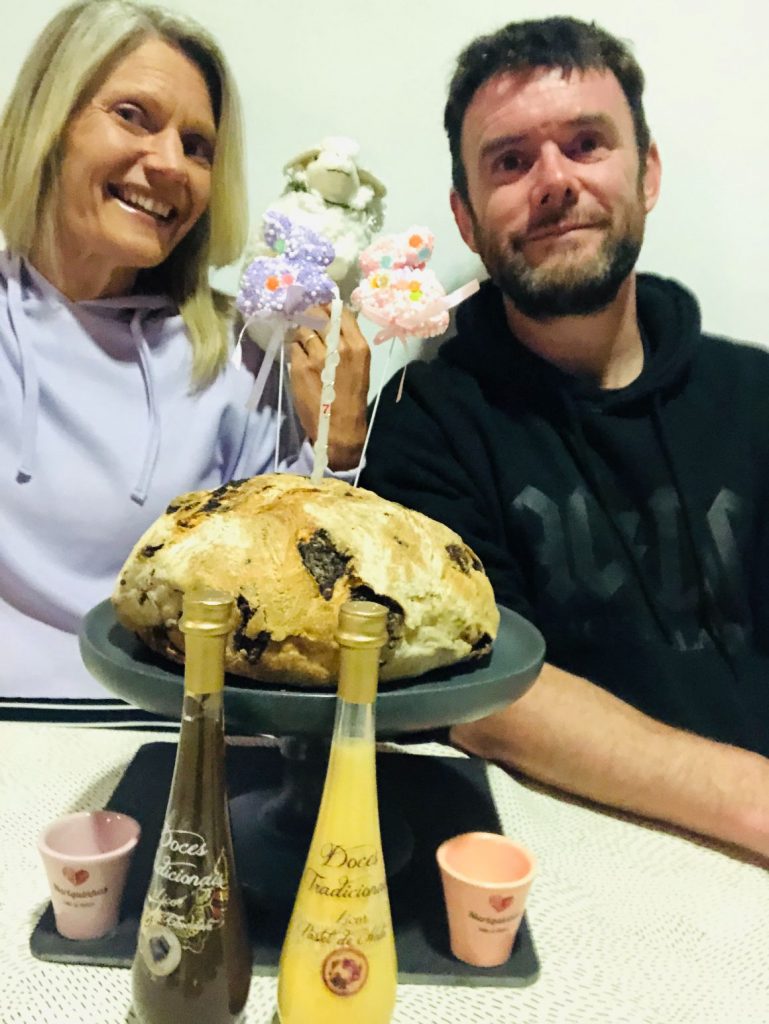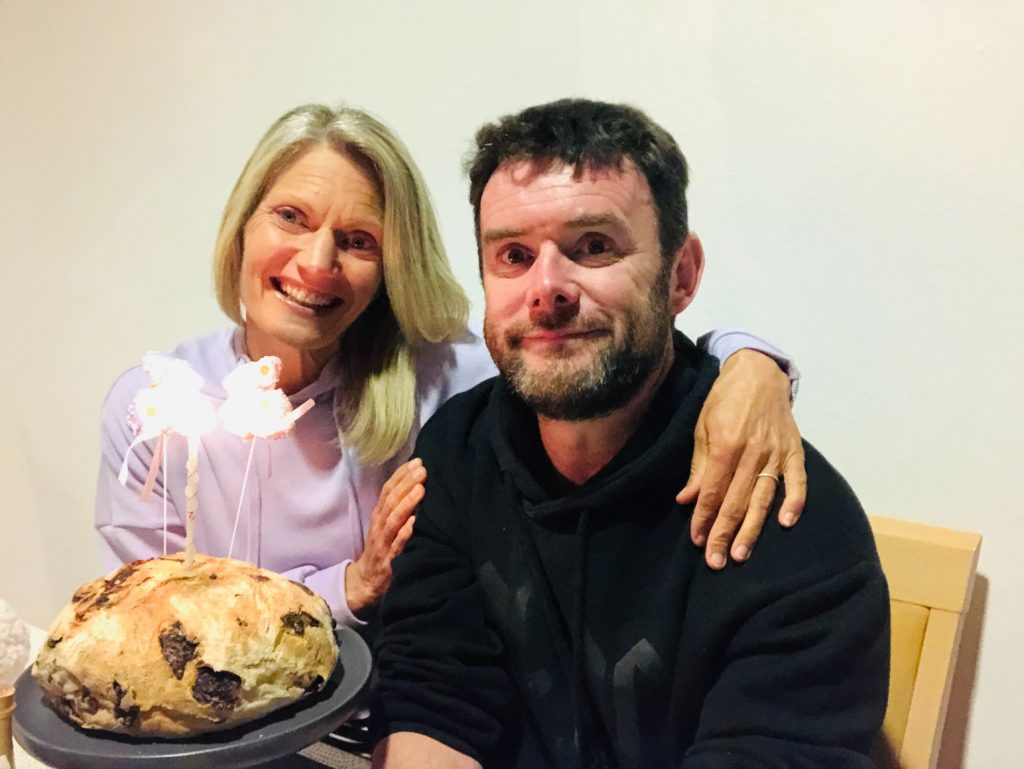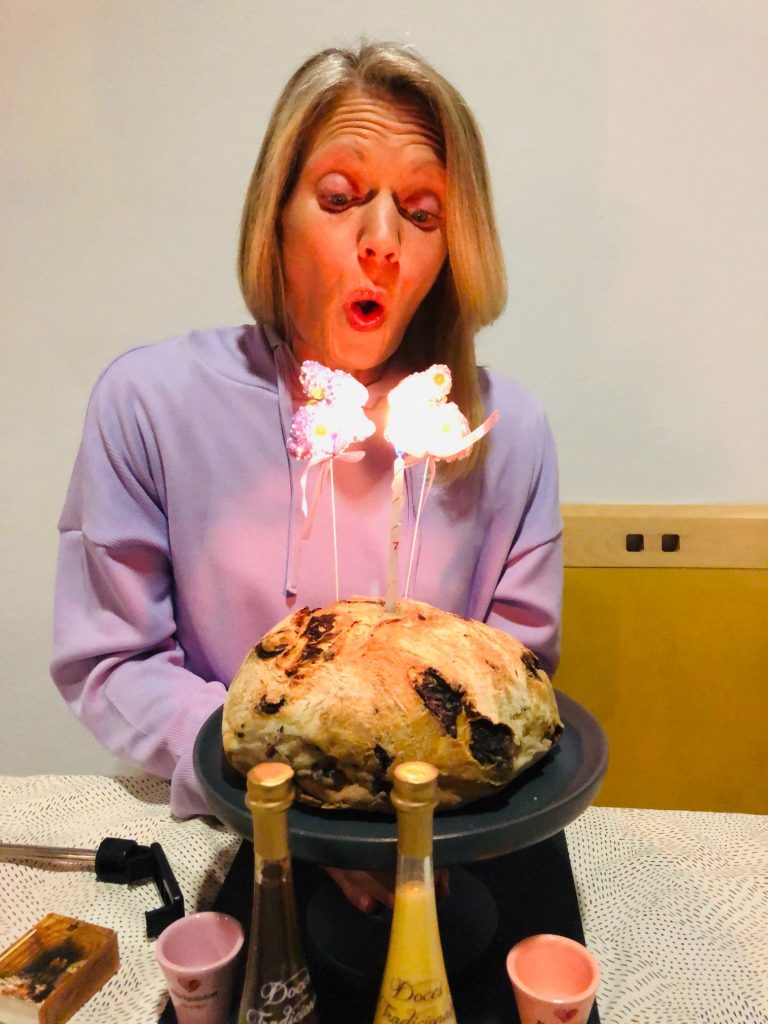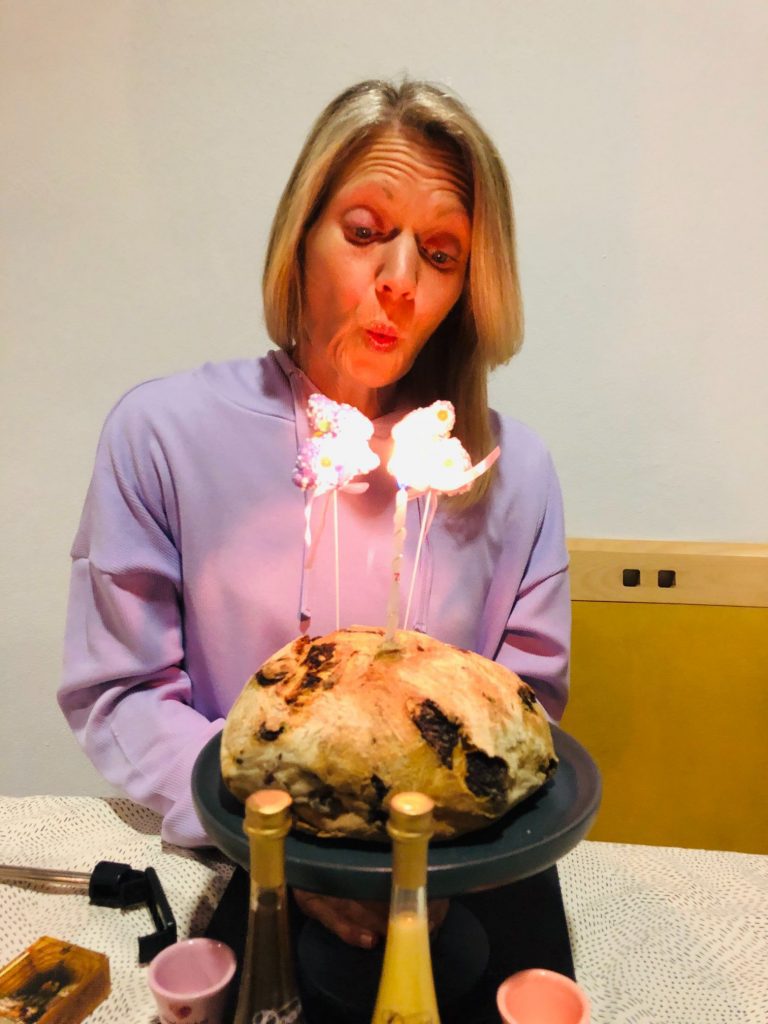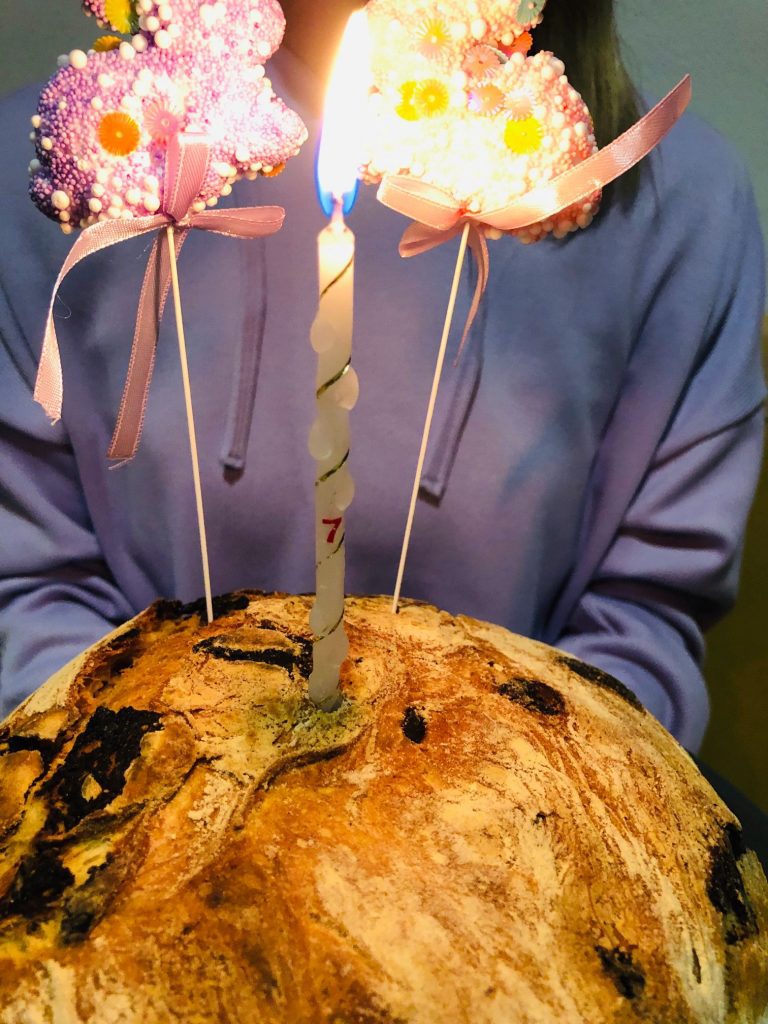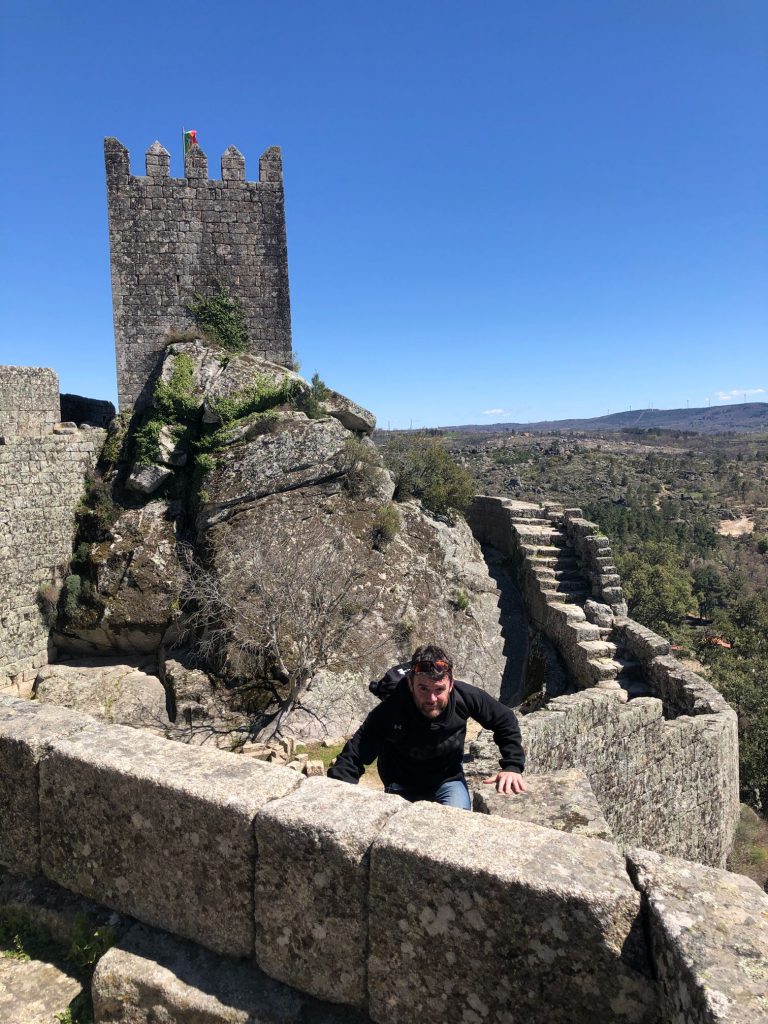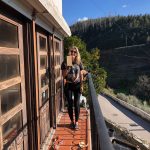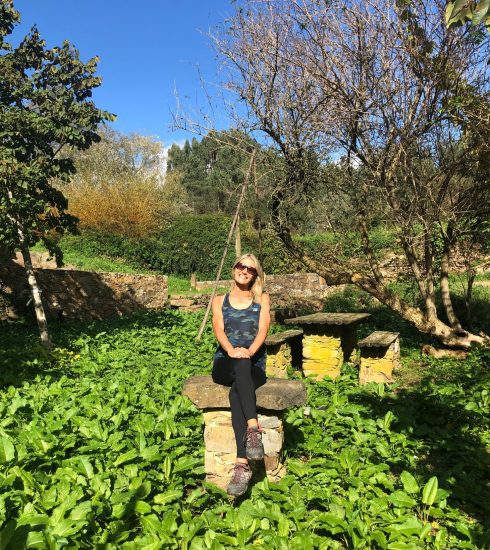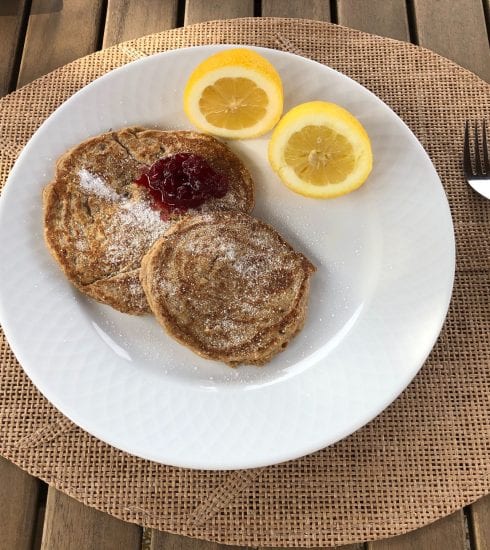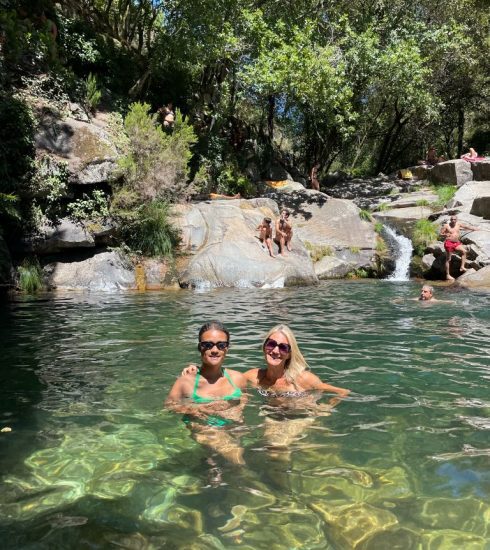CELEBRATING OUR 7 YEAR WEDDING ANNIVERSARY IN SORTELHA
I planned a romantic getaway (day trip) to Sortelha to celebrate our 7th Wedding Anniversary. Sortelha has been a firm favourite on my Portugal bucket list since we relocated here over 2 years ago. I have always wanted to visit this charming medieval village with over 800 years of history. It is one of the most famous and photographed villages out of the 12 Historical Villages which are all connected through a network that shares core moments of Portuguese history. It is also known as one of the most well preserved ancient villages of Portugal maintaining its urban and architectural appearance, unchanged from the Renaissance to the present day. The setting is very unique, the village is encircled by the old walls with 4 magnificent access gateways and is built on a granite massif between boulders and rocks at a staggering 760 metres in altitude. The beauty of this village is the old traditional houses which are made from granite stone.
Sortelha is located in the municipality of Sabugal, district of Guarda and halfway between the Serra da Estrela and Serra da Malcata Nature Reserve. A visit to this awesome village is a true journey through time, bursting with history, culture, Portuguese myths and legends. There is much to explore including the spectacular castle and walls which date back to the 12th and 13th Century, traditional granite houses, 16th Century manor houses, old hospital and prison, Manueline pillory, Renaissance churches, water fountains, Roman tombs and pathways, Anthropomorphic graves and famous stones with Moorish legends and a story or two to tell. There is even a Door of Betrayal! I’m not walking through that door and tempting fate (ha ha). Sortelha is a 2 hour drive from our casa and 115 km so I decided to add a few more delights onto our anniversary day trip including a fantastic viewpoint/scenic swing in the shape of a wolf, gigantic mosaic vases decorated with traditional Portuguese tile (Azulejo) and the ruins of an ancient spa hotel.
Portuguese Pão
As we drove right through Seia we couldn’t resist the opportunity to make a pit stop at the wonderful Pão Museum to stock up on their tasty chocolate bread. In all honesty we could have taken a completely different route to Sortelha but I am addicted to this bread and bought extra because I had a bright idea to freeze a loaf for the future. My theory is that if it defrosts poorly and is not as soft as I like I can always toast it and the chocolate should melt with the heat into an incredible sugar feast. We even took a bread knife with us, picnic plates and a “Number 7” candle to celebrate 7 years of marriage. Who needs a cake when you have chocolate bread. I made hubby put it in the boot of our car away from temptation but we could still smell the freshly baked bread and every time we drove around a corner the bread slid from one side of the boot to the other and we got a waft of the sweet, yeasty aroma, simply divine.
Baloiço de Penalobo (Penalobo Swing)
On route to Sortelha we visited an amazing panoramic swing and viewpoint: Baloico de Penalobo. It is located in the village of Penalobo and the municipality of Sabugal next to the Mosqueiro leisure complex which has a tranquil river beach. I have always wanted to visit this swing but it is a 2 hour drive from our casa. When I realised that it only added on a short 15 minutes to our Sortelha day trip, I just had to add it to our itinerary. I was a little anxious that it might be packed full of tourists as it is a popular destination but I had nothing to worry about. There wasn’t another soul in sight so we got the whole place to ourselves which was just magical. The leisure complex is very pretty and would make a great spot for a summer picnic and dip in the water. This swing is gorgeous and is located right at the top of a slope, between rocks. The metallic frame depicts the head of a wolf with a heart shape and can be seen from afar. The enchanting view encompasses the entire village and extends across the mountains of Serra da Estrela and Serra da Gardunha. We spent some quality alone time here relaxing and relishing in having the whole place to ourselves. We took multiple photos as it’s rare to not have a queue at scenic swings. The swing is not that stable – a bit like me (ha ha) and I nearly fell off at one point. It was also a tad windy so high up so my hair is a sorry sight, this is why I need to invest in a lady hat fit for Ascot (ha ha). I adore flying high into the bright blue Portuguese sky with the enthusiasm of a 5 year old swinging my heart out over the mountainside. We even had a swing together and it held both our weight. An absolutely perfect idyllic spot in the heart of nature, I didn’t want to leave.
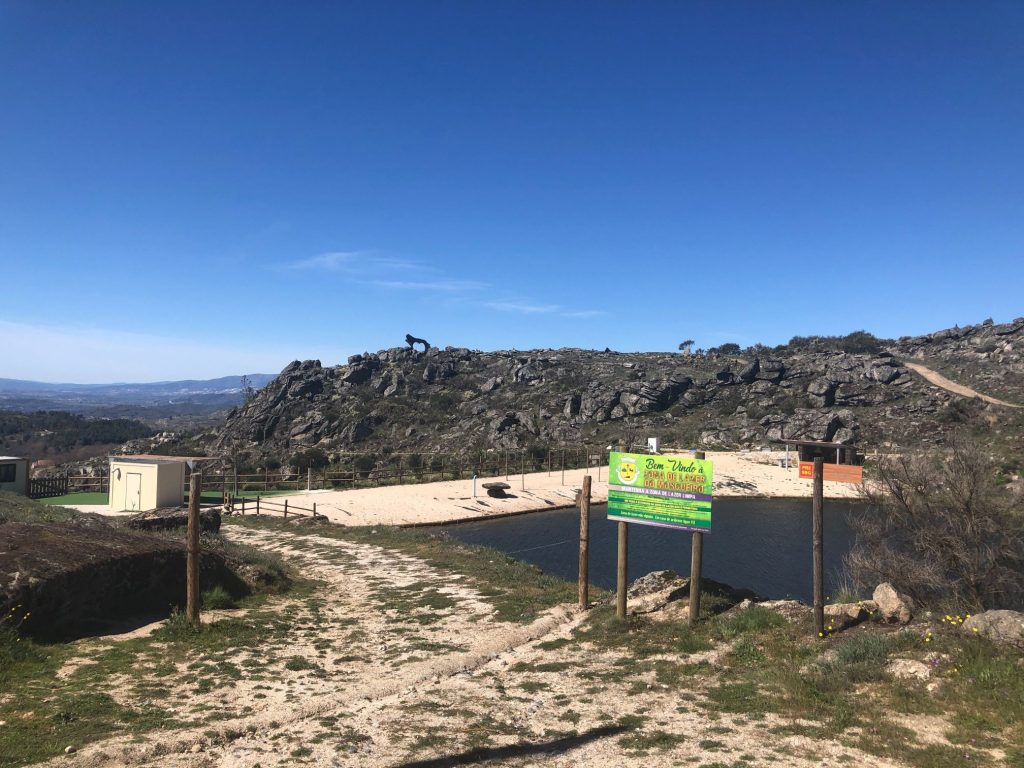


You can see the swing in the distance 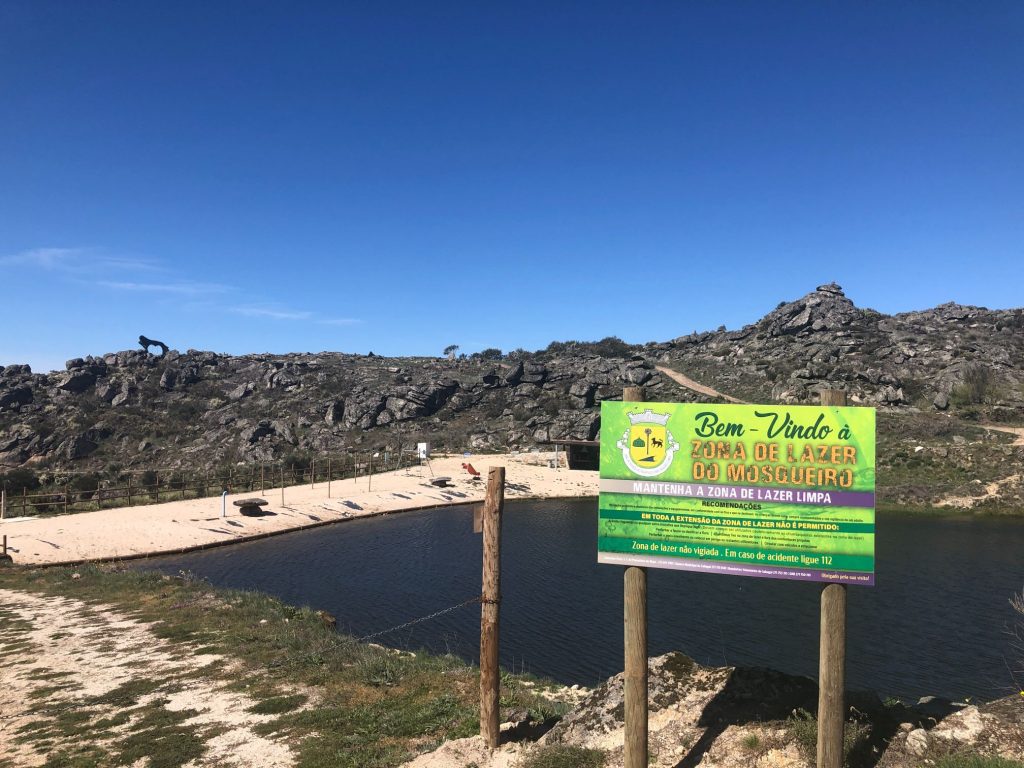


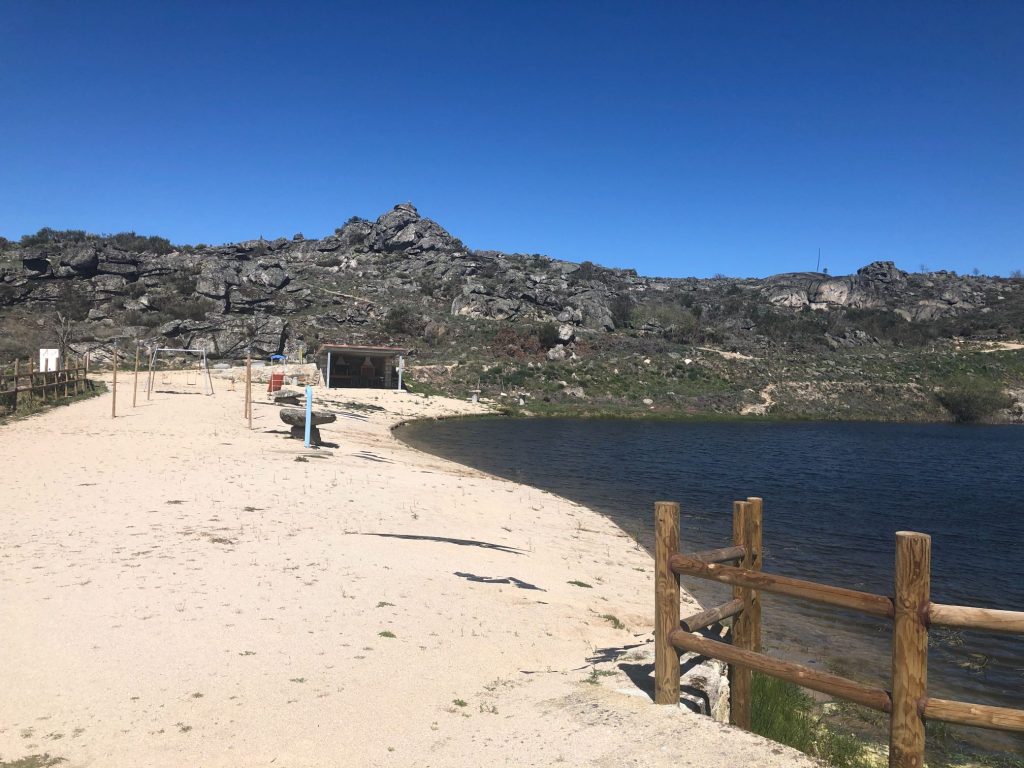


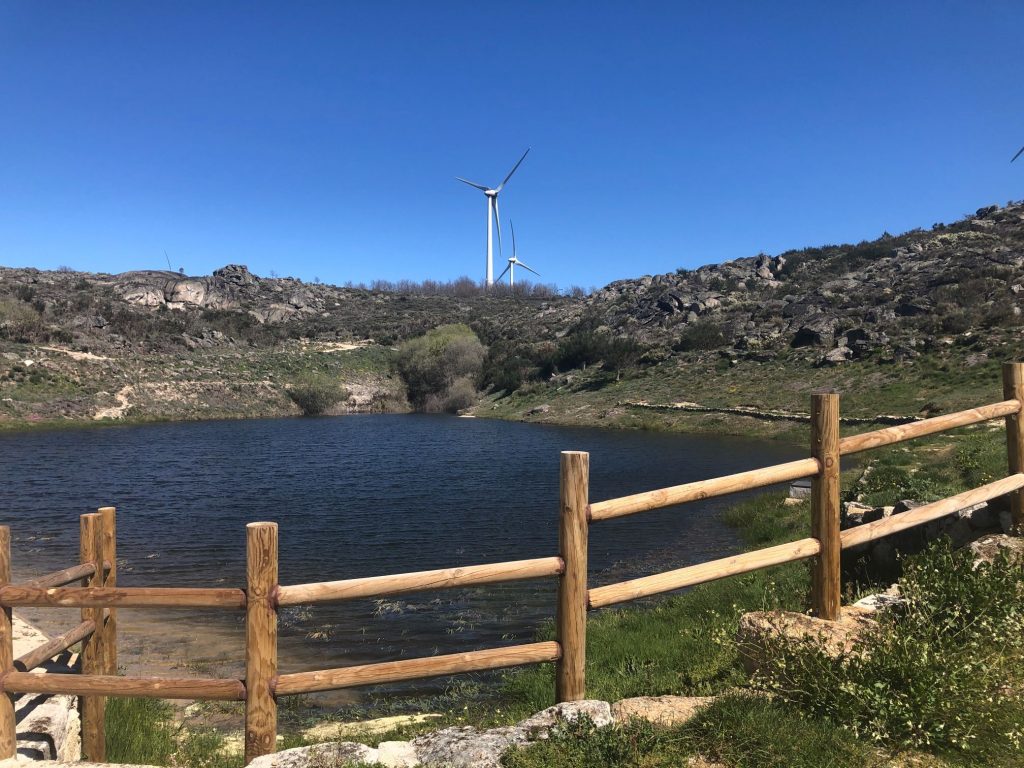


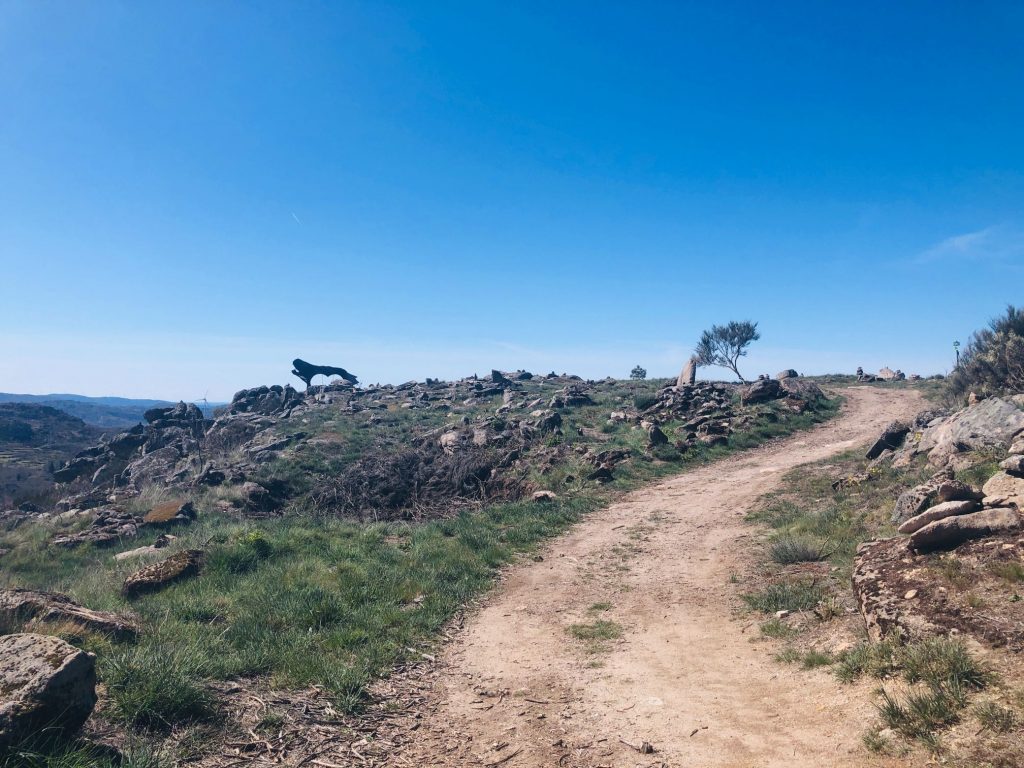


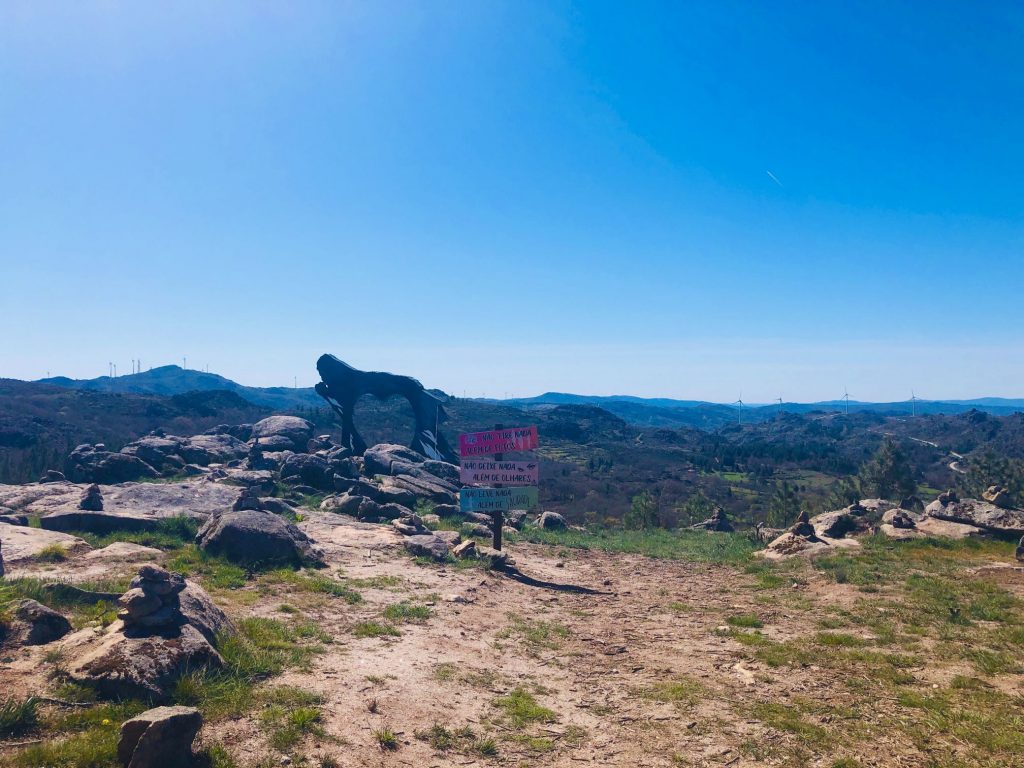


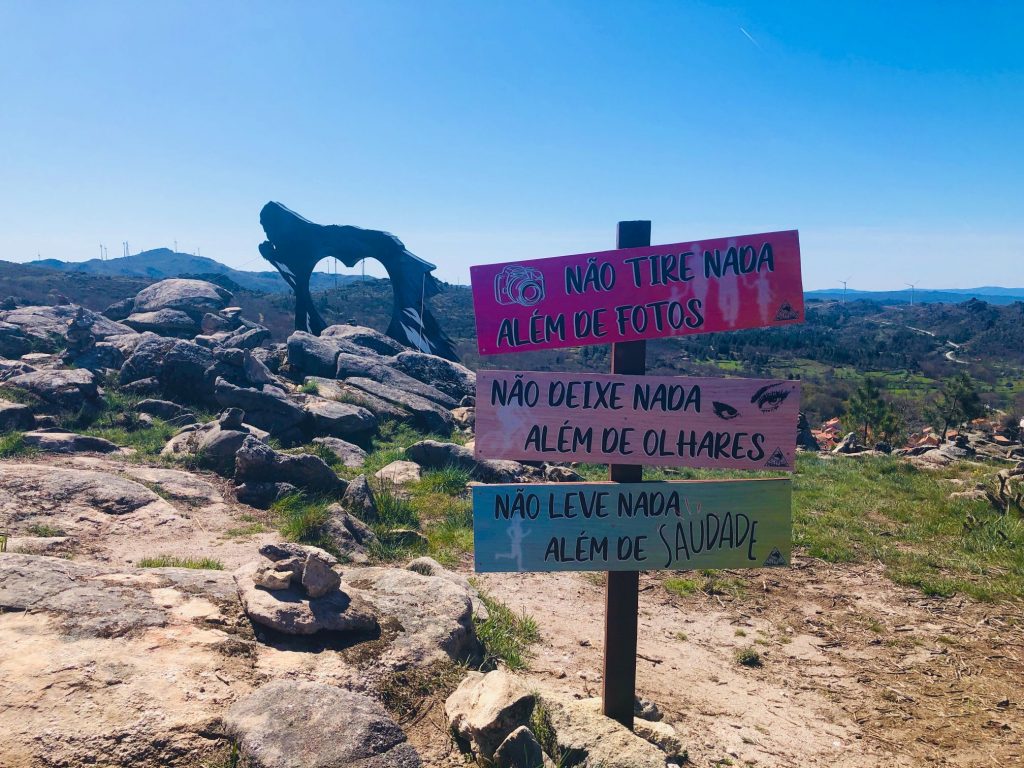


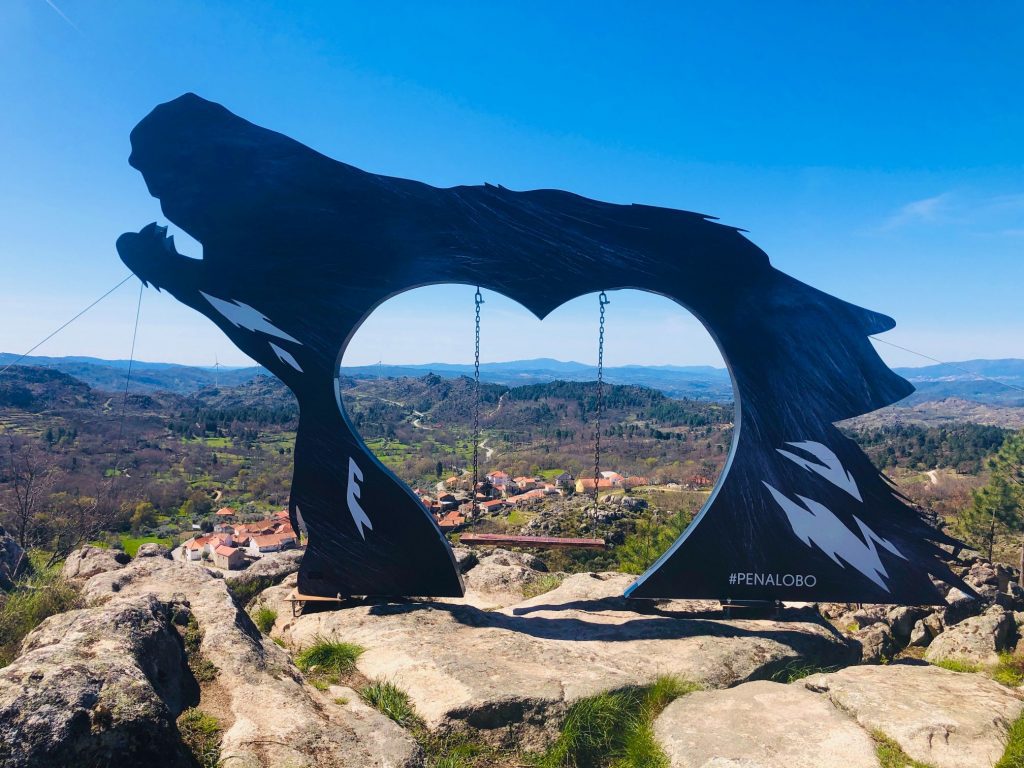


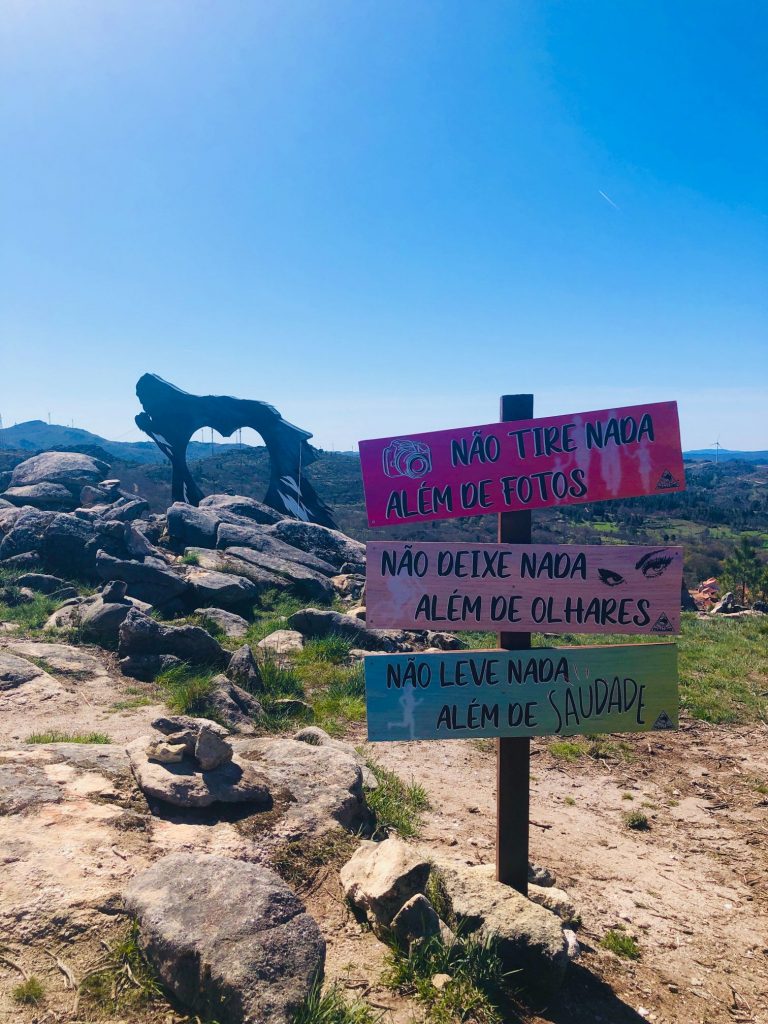


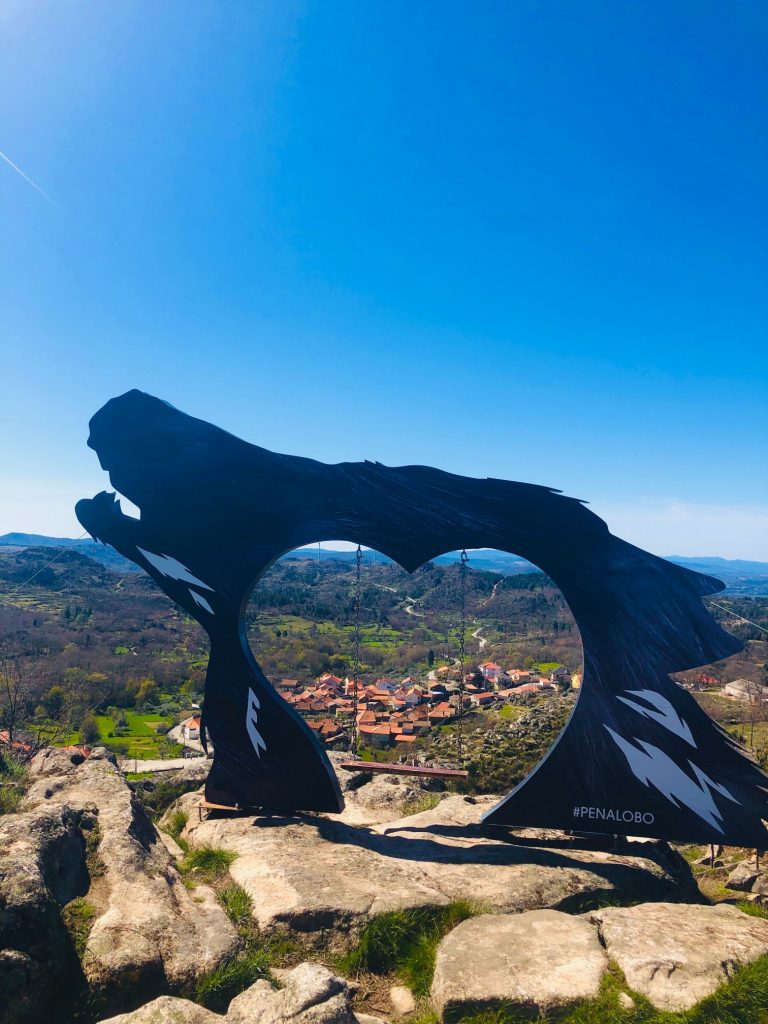


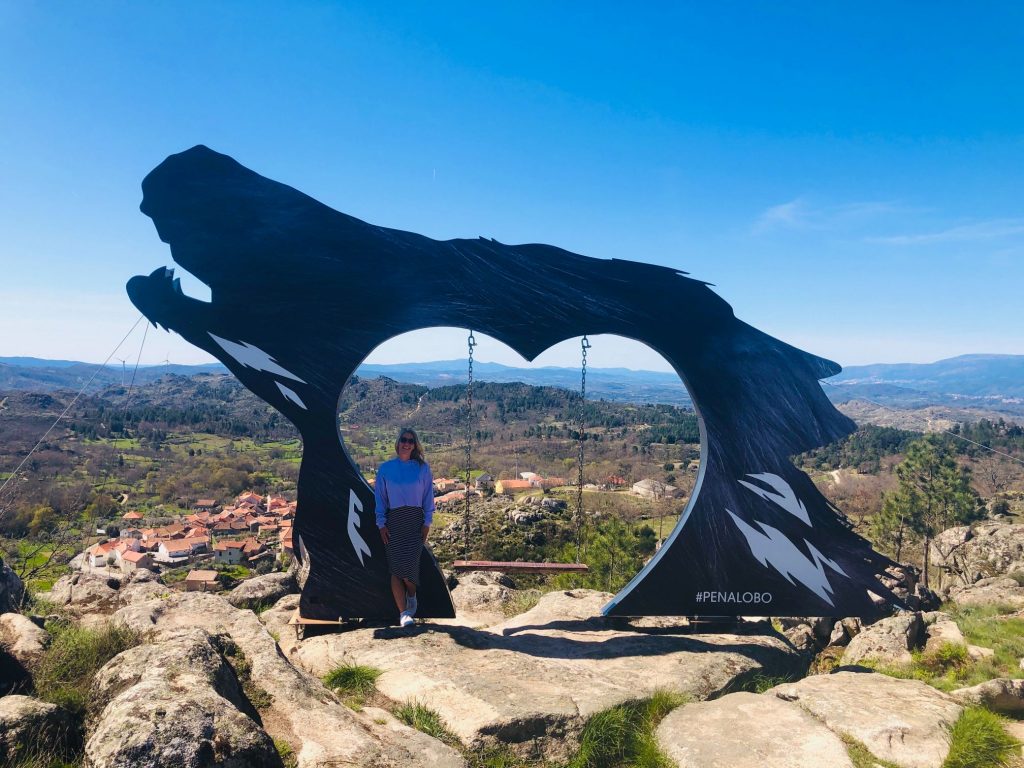


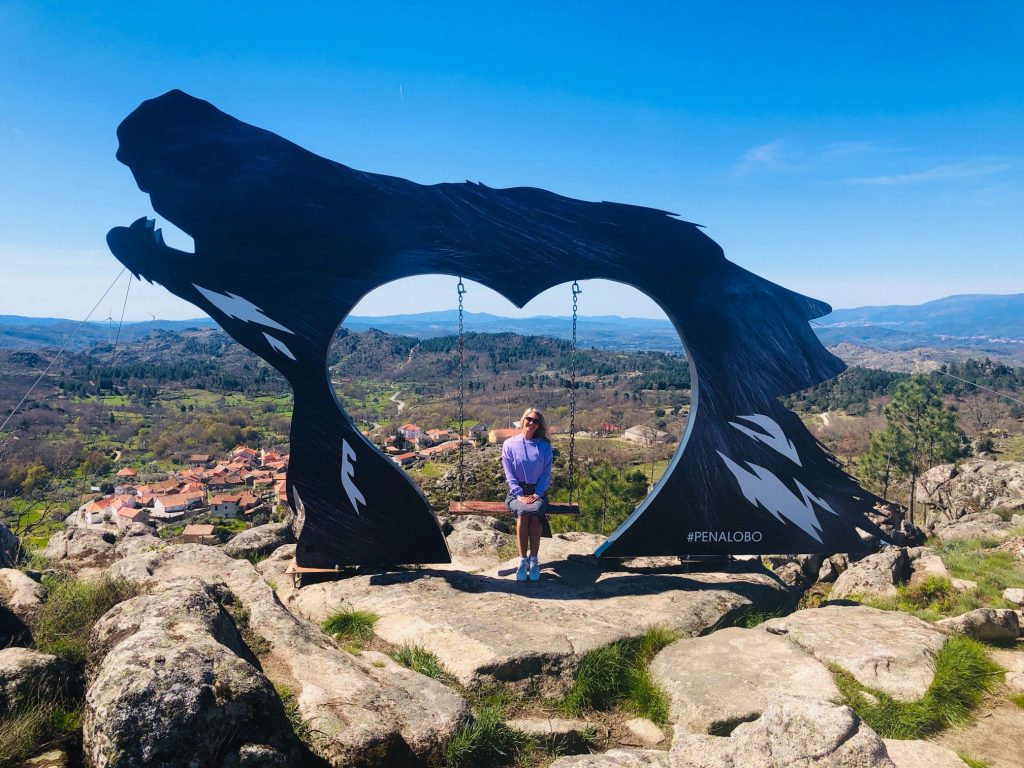


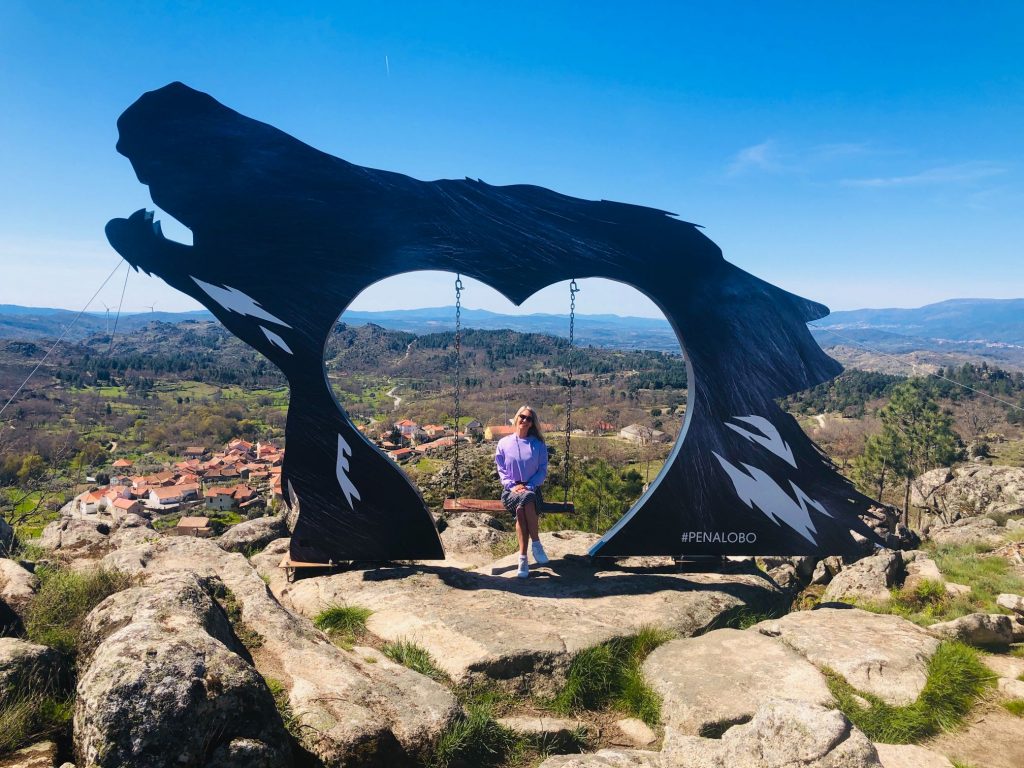


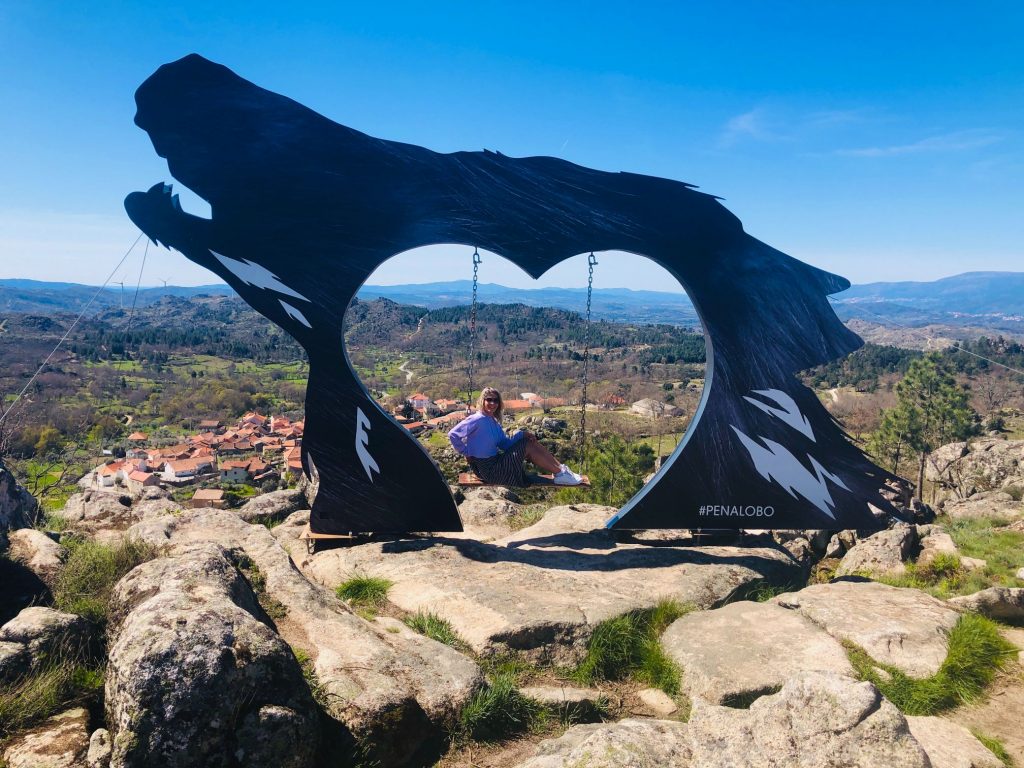


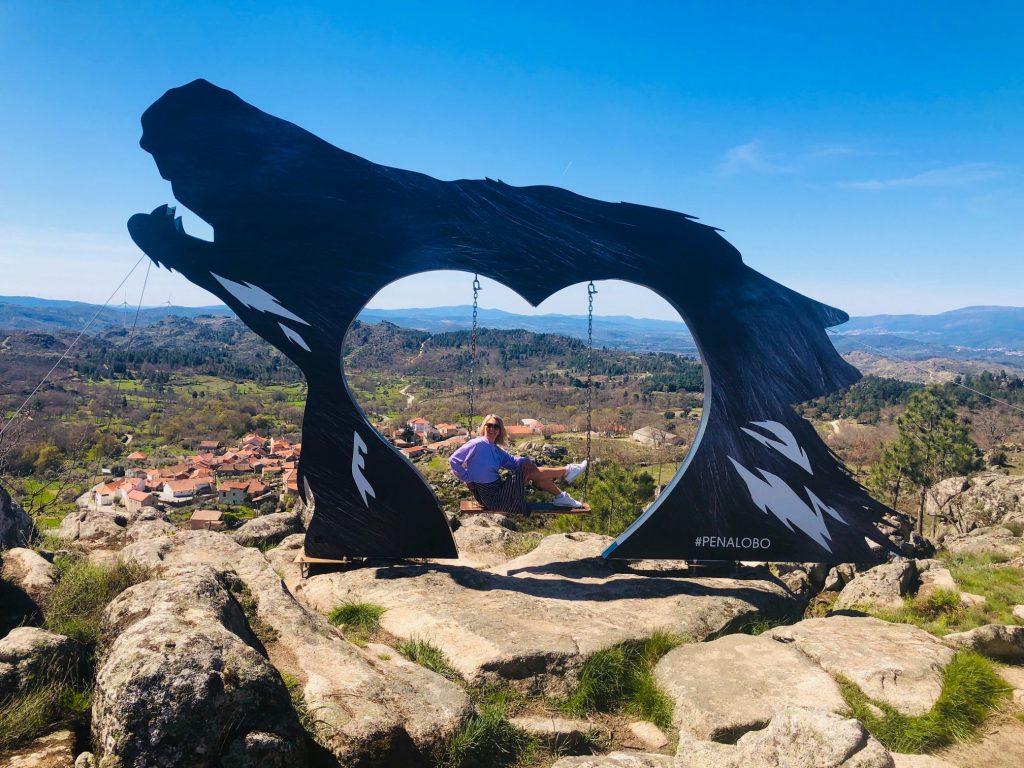


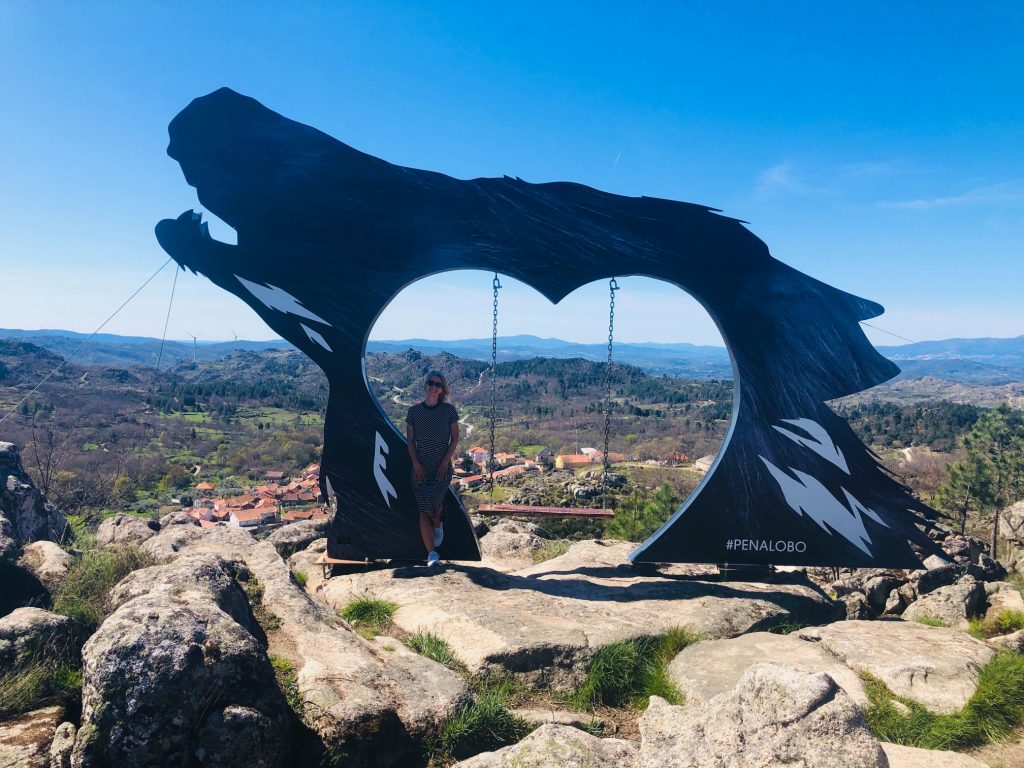


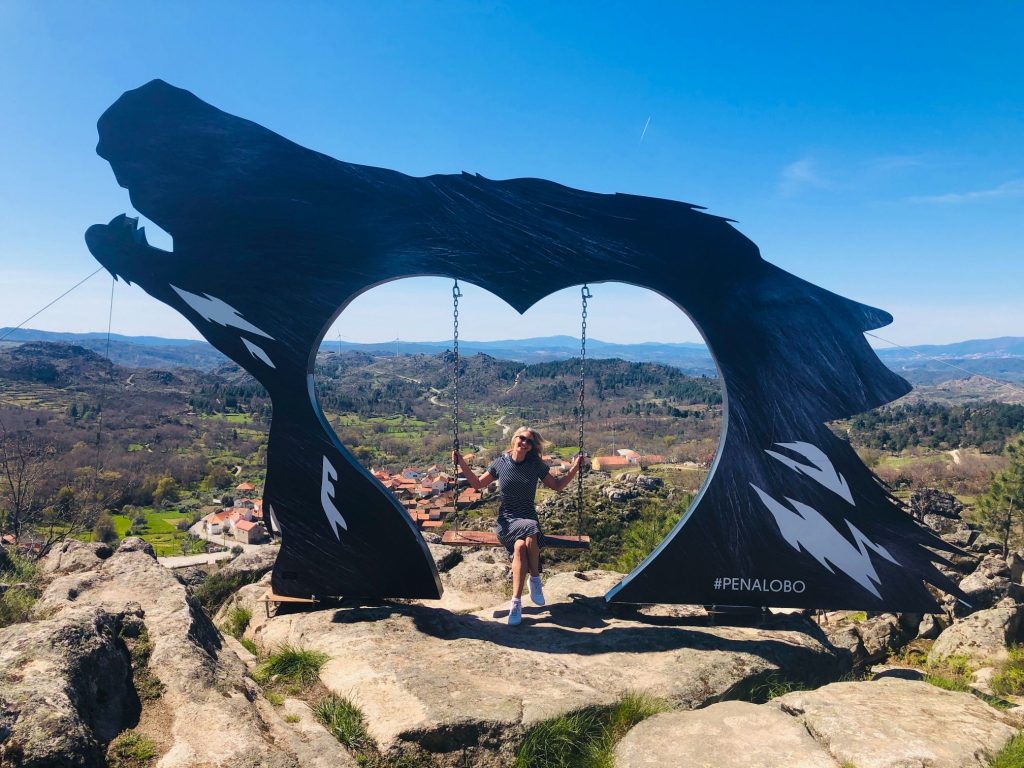


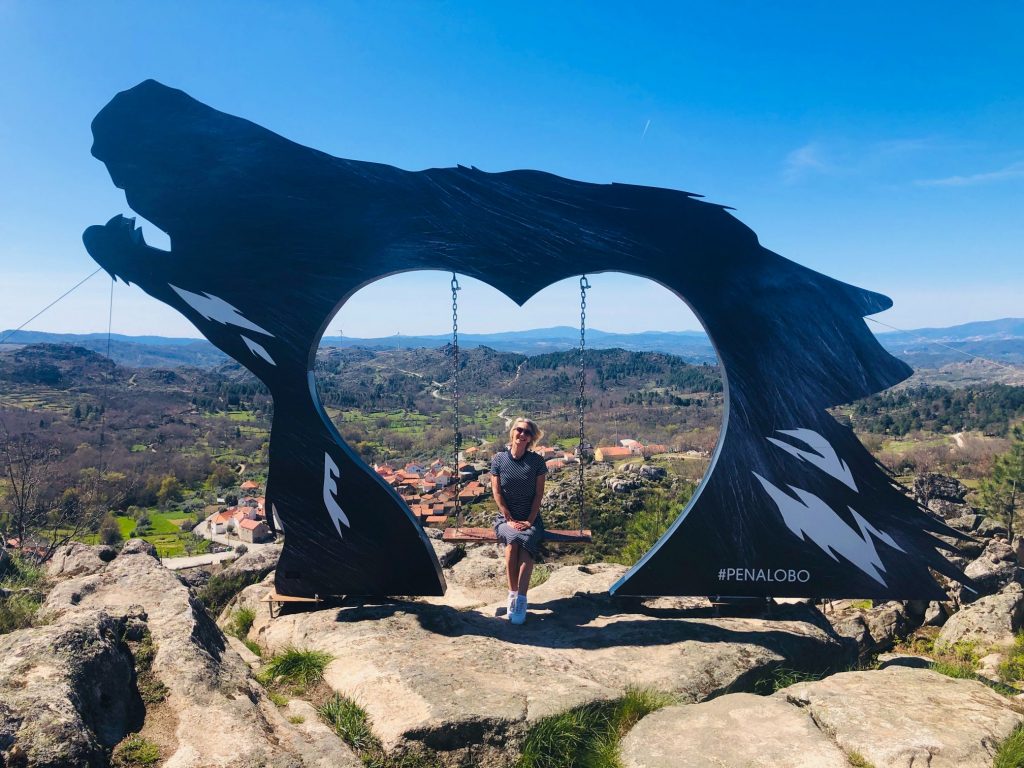


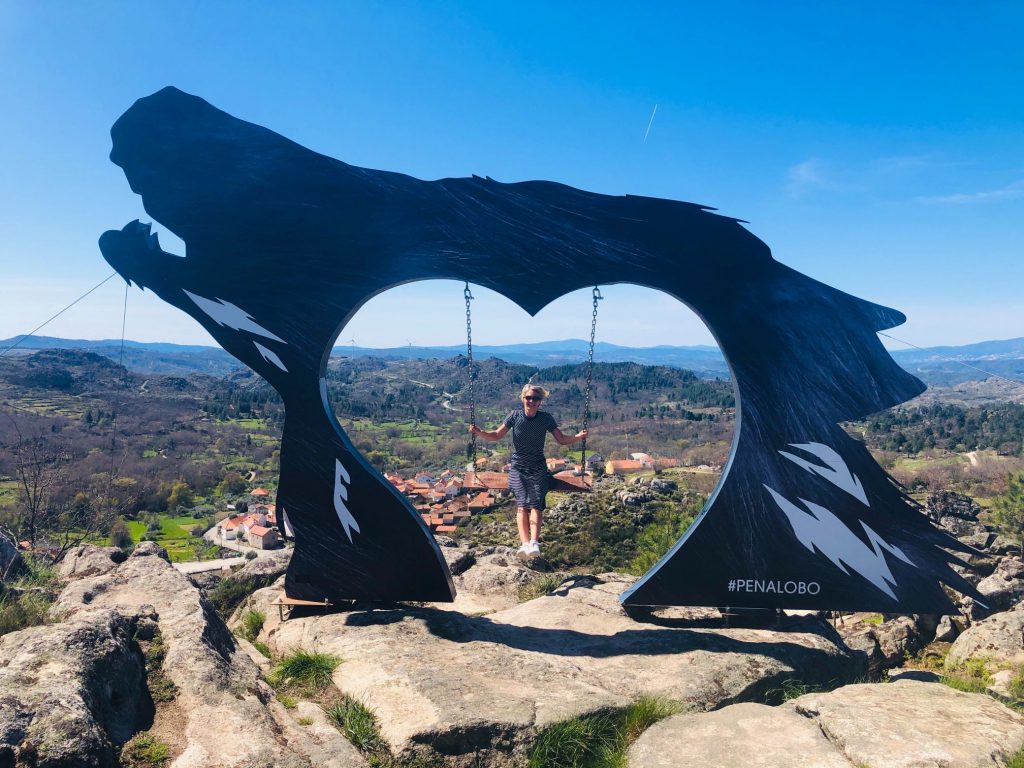


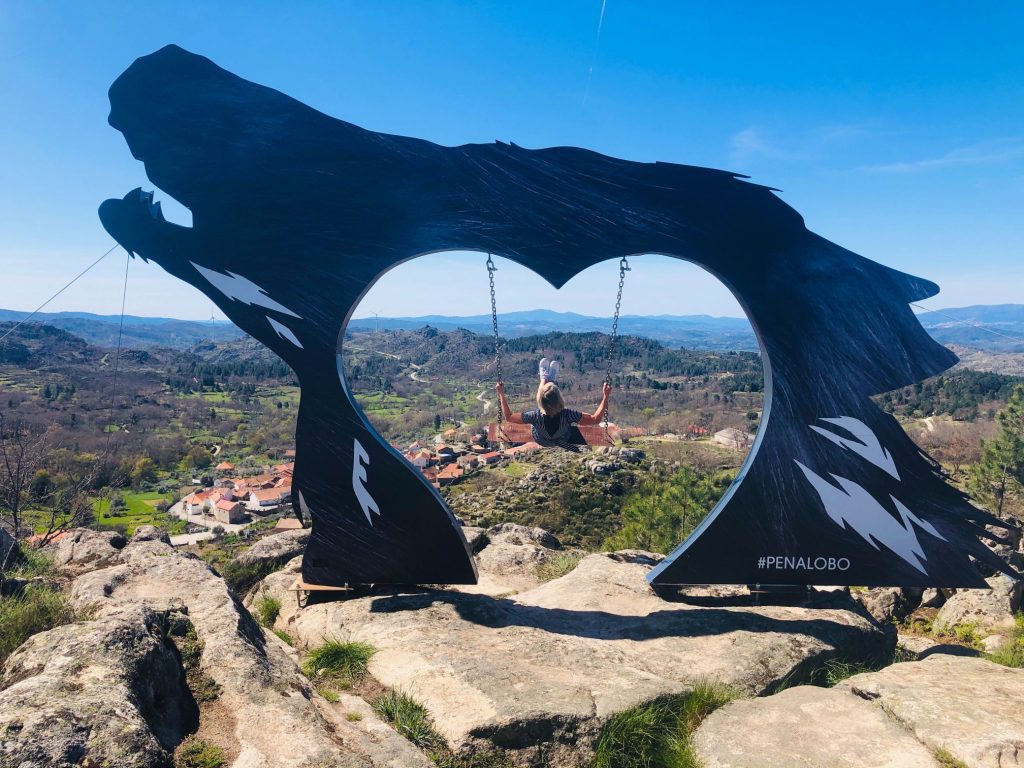


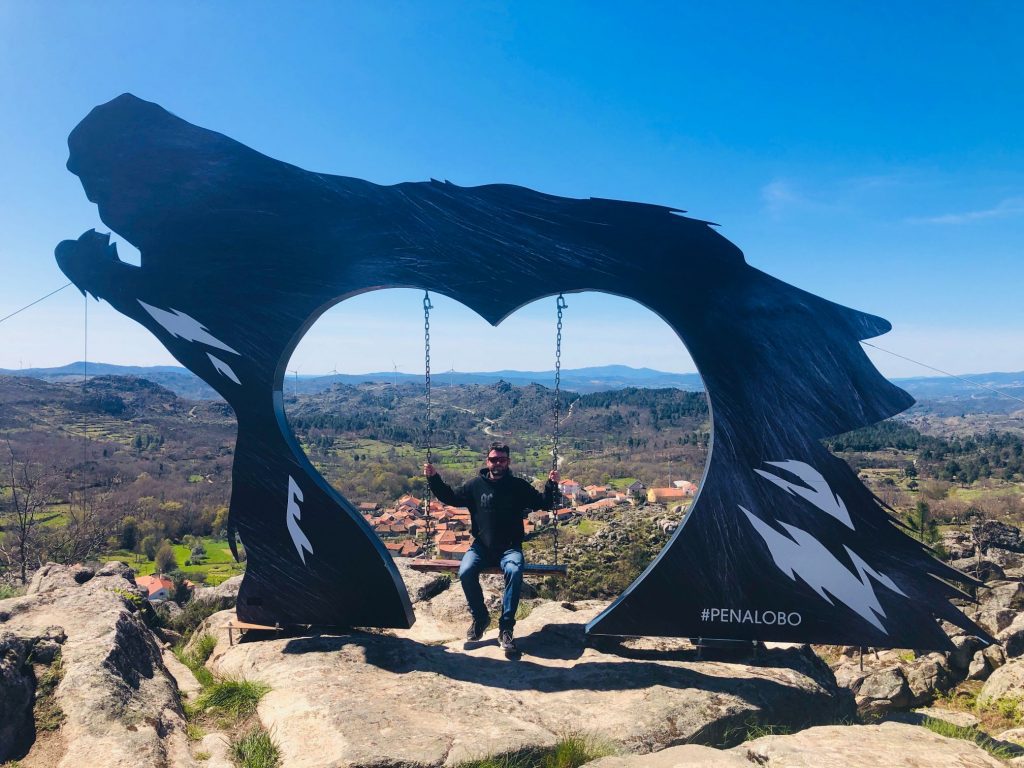


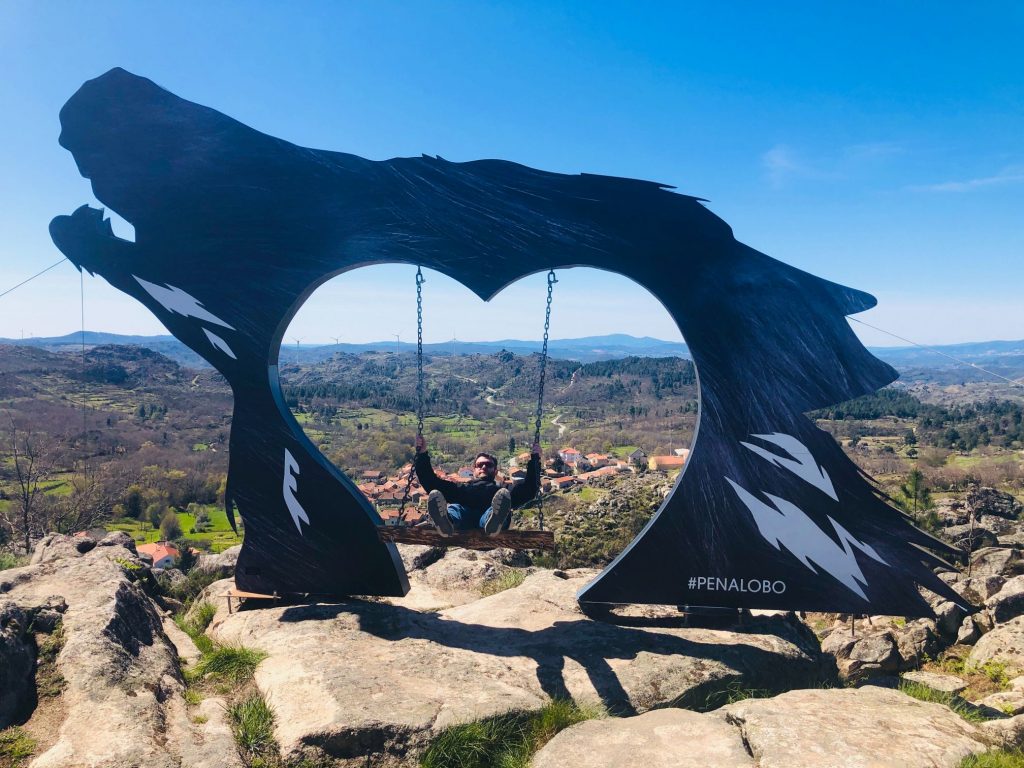


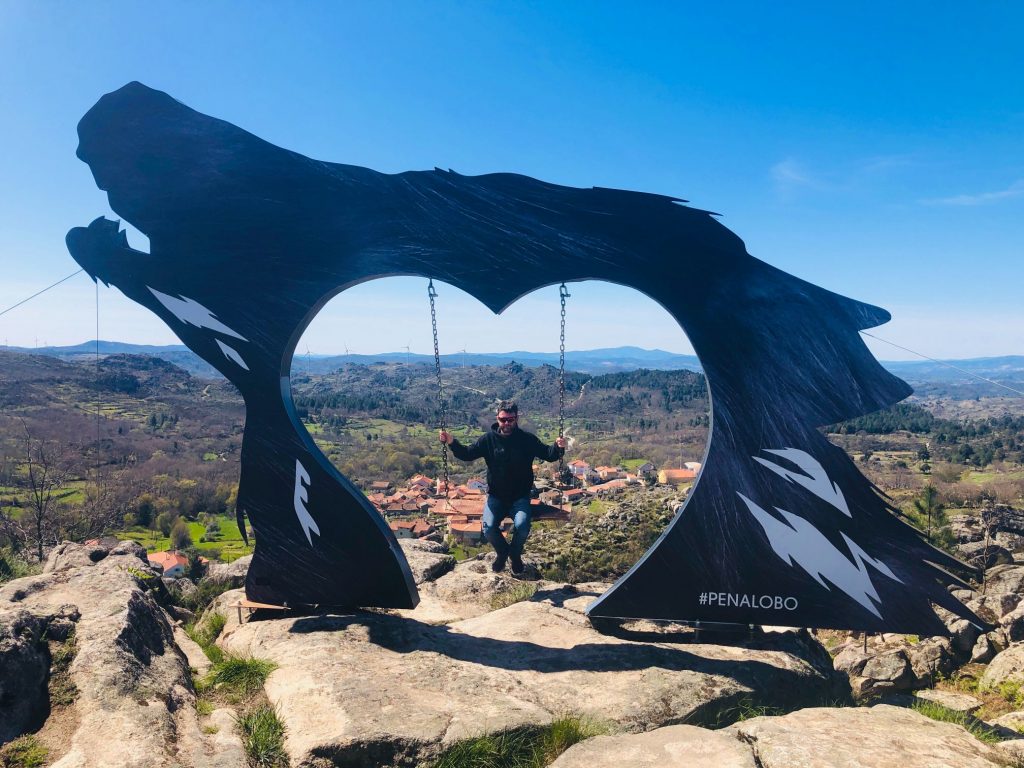


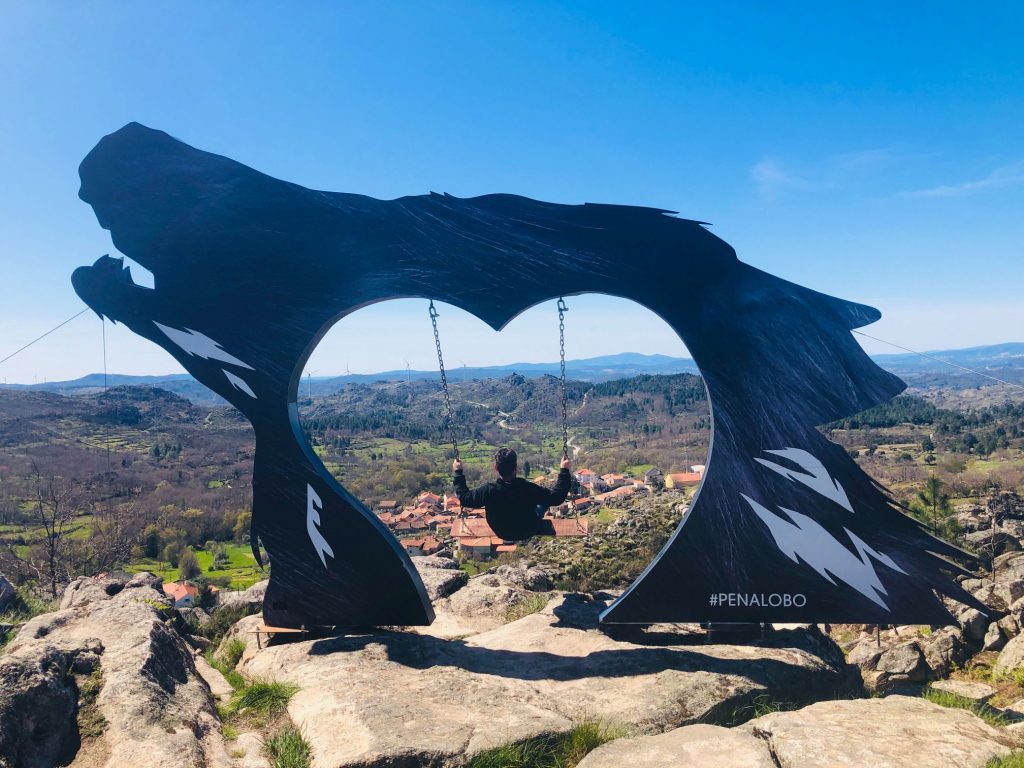


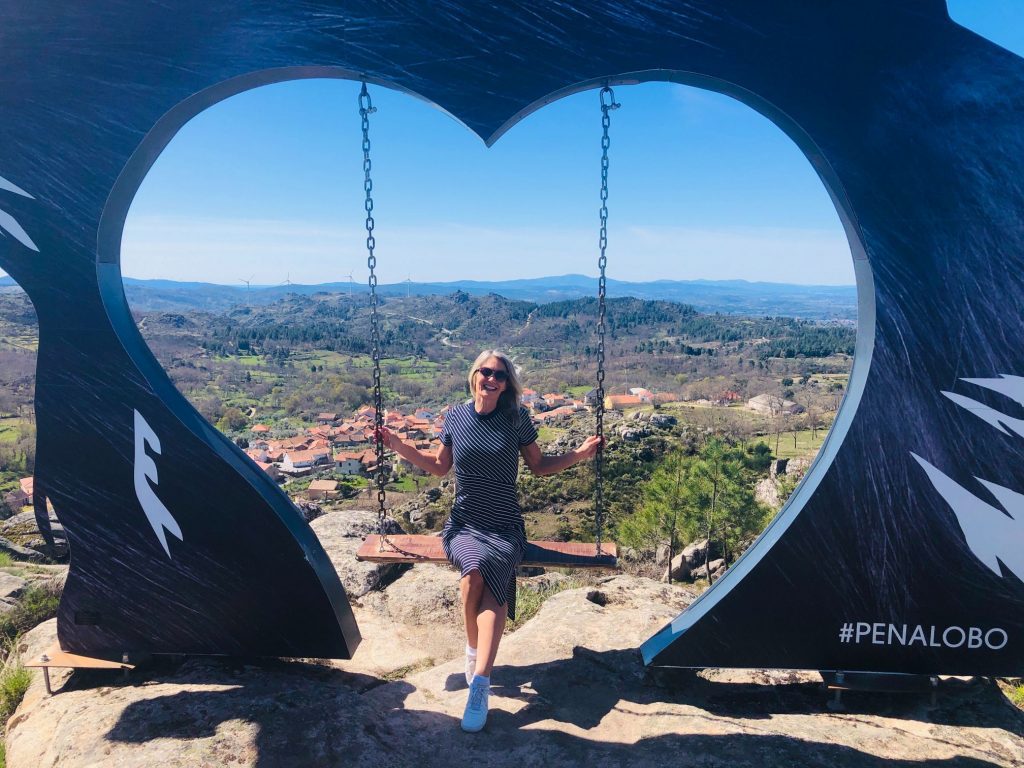


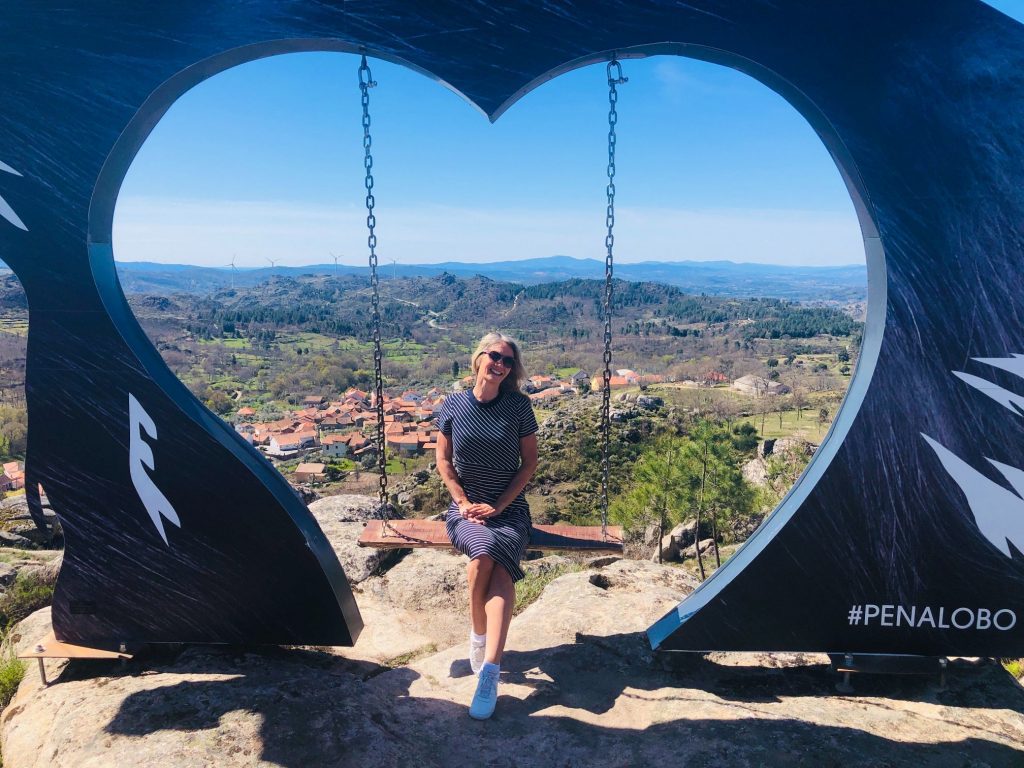


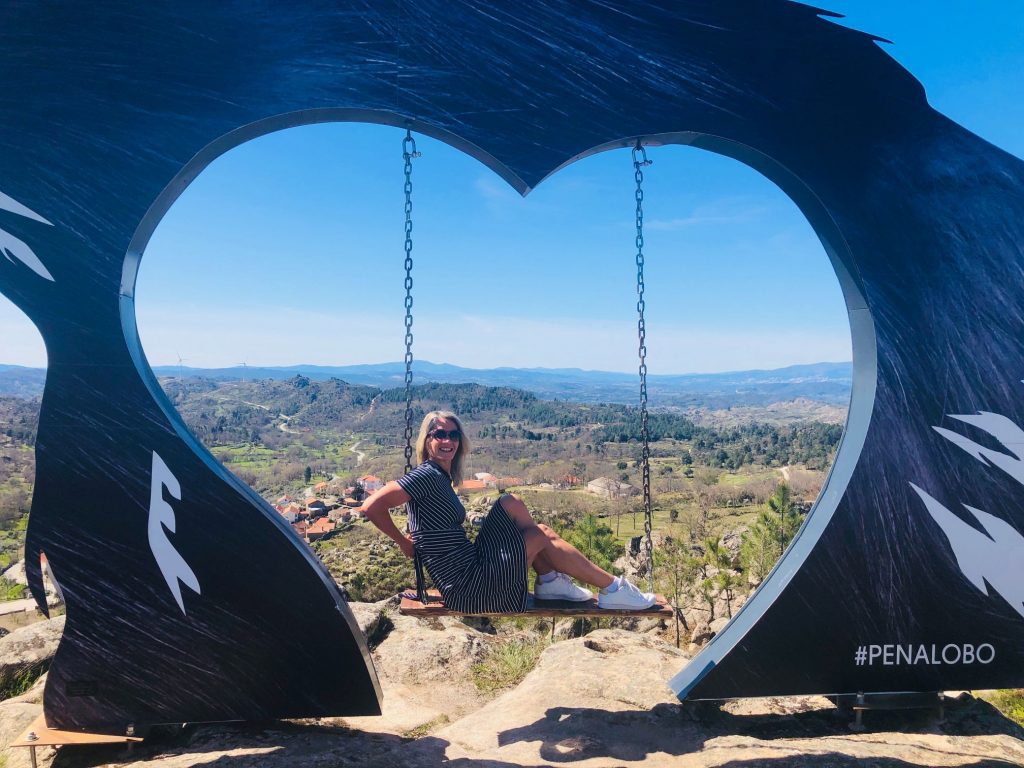


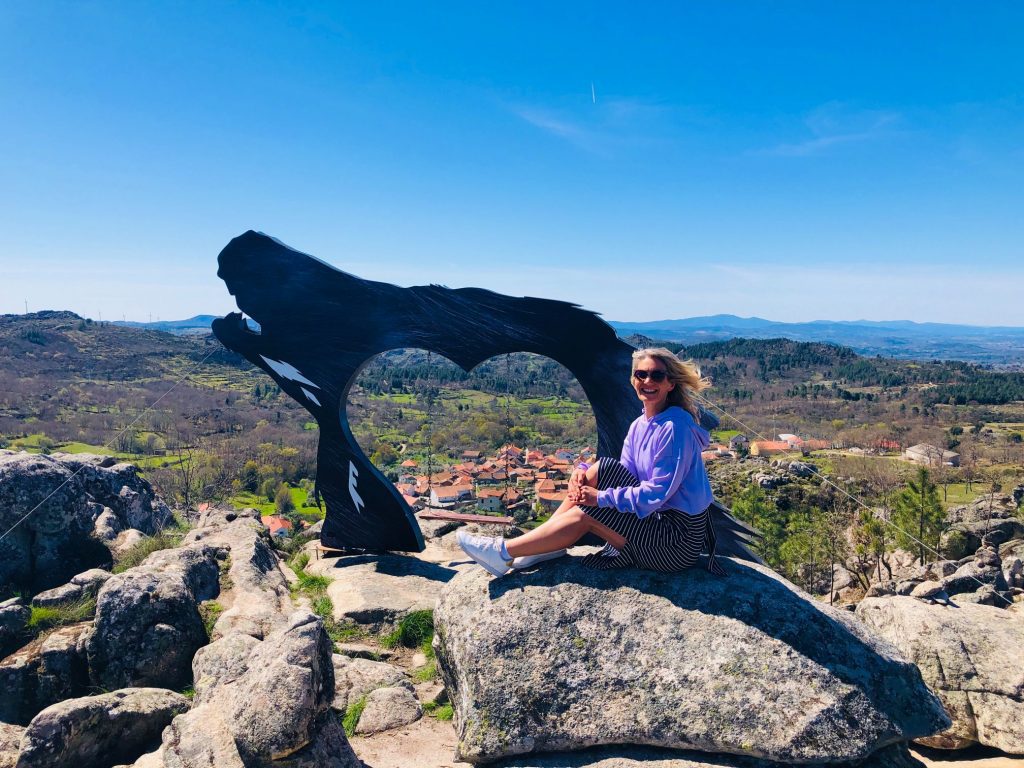


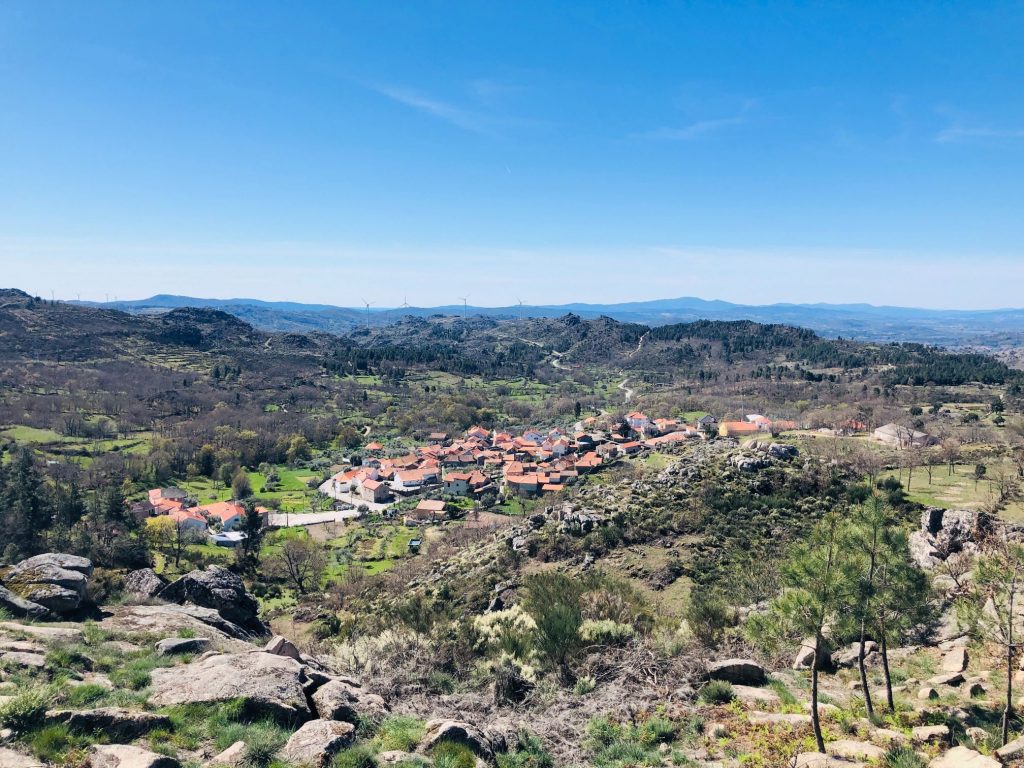


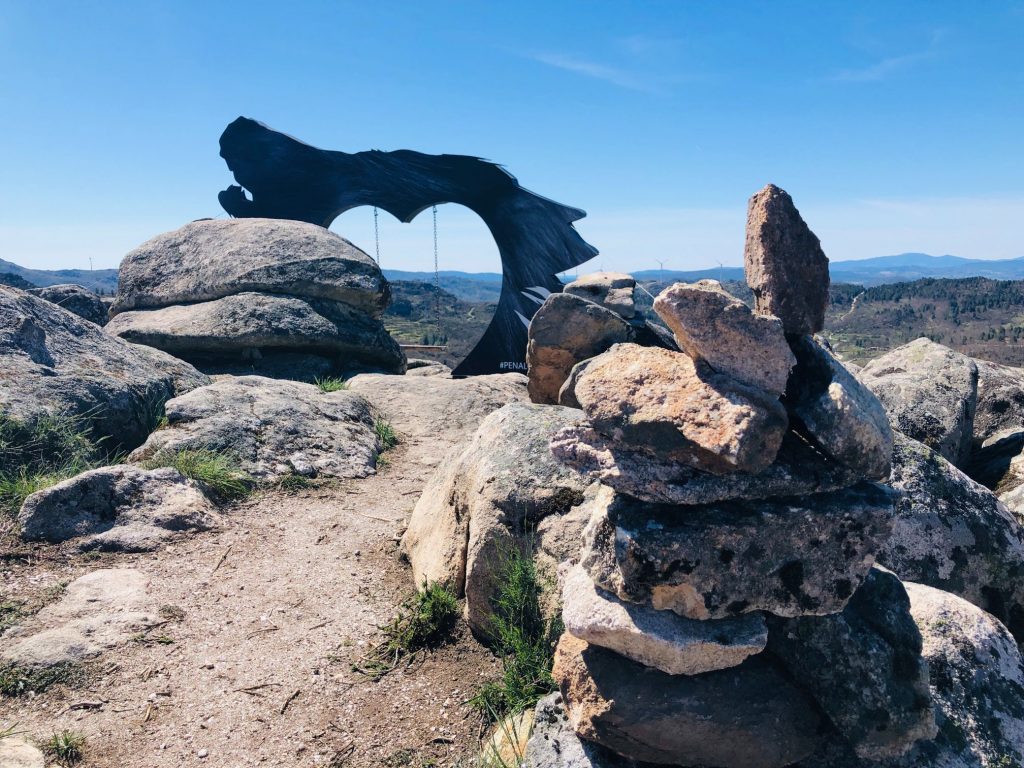


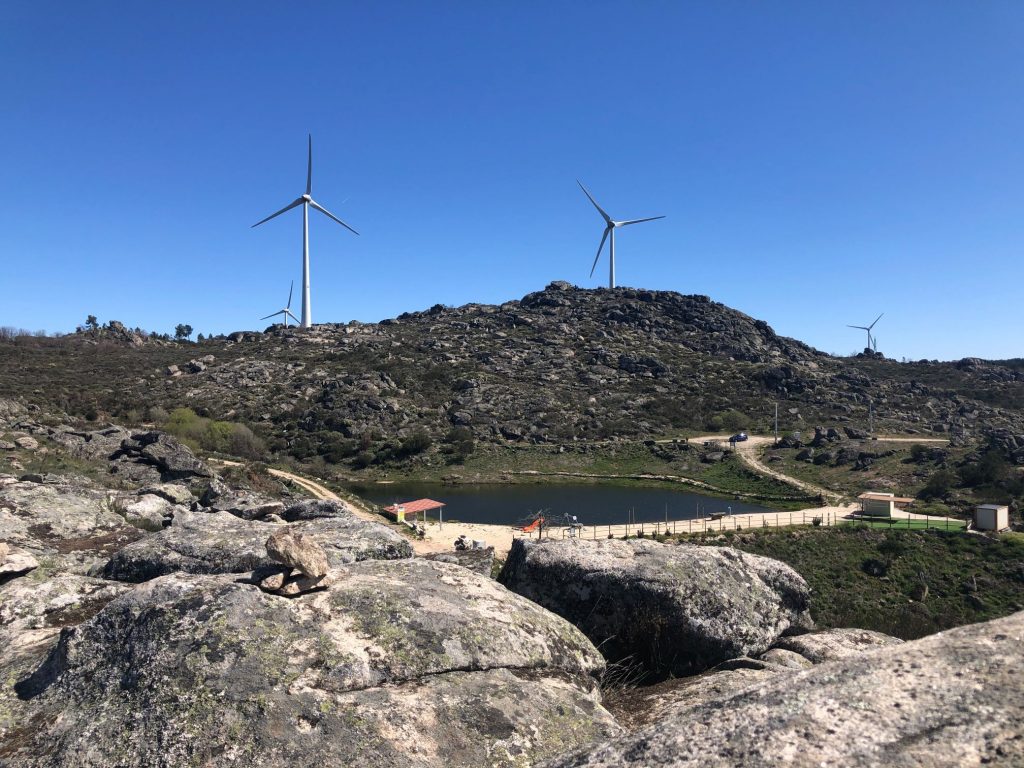


Swing Selfies
Exposicao Mosaicos (Mosaic Vases) Nature & Art
I’m not going to lie, it took me quite a while to find the location of these stunning creations of art. I’ve seen photos on Instagram but I was unsure of the actual Portuguese name of the vases so I had to view a birds eye google earth map until I found them. I have zero patience so handed this tedious task over to nerdy hubby who found them. He was on a mission and would not accept defeat (ha ha). It transpires that we would have driven right past them anyway on the way to Sortelha. The vases are located right next to a main road surrounded by lush greenery and there is a little parking area to safely leave your car. I absolutely adore Portuguese tiles (azulejos) and they are truly a work of art and not to be missed. I am not sure of the artist or what the story is behind their existence which is a huge shame. It would be beneficial to have a notice board with relevant information. I couldn’t find any info on the Sabugal Municipal website so it remains a mystery. The stretching views were an absolute pleasure to view. A very appealing place and two of my favourite things combined: Nature and Art.
Matchstick Man
I love this photo of hubby, he didn’t even know I was taking this photo. I was actually taking a shot of just the vases against the pure cloudless blue sky when he abruptly walked into view (ha ha).
GPS Coordinates for Sortelha: 40°19’45.1″N 7°12’56.0″W
Sensational Sortelha – The Kingdom of Silence
As we drove through the winding roads of the mountains towards the village we got to see many shepherds with their grazing cattle and rows of wind turbines dotted on the horizon. Our first glimpse of Sortelha was a magnificent view indeed. A splendid sight, totally unspoiled perfection of a little village nestled on the hilltop. Sortelha is said to have 500 inhabitants but only 3 live inside of the walls which I found very interesting. Sortelha is known as the “Kingdom of Silence” until the crazy loud Brit arrived (ha ha).
There is a Tourist Information Centre where you can obtain a map but it was closed when we arrived. I always do my research before I visit anywhere so as not to miss any wonderful sights. I found a few maps online but decided to follow one from the Sabugal municipality website as I found it the most comprehensive and I added a few extra points of personal interest:
Points of Interest:
- Porta da Vila (Town Gate)
- Passo de Vila Sacra (Stations of the Cross) located in the wall all of the Town Gate
- Casa do Vento Que Soa (House of the Wind that Scatters) – There is an ancient legend linked to this house
- Largo do Corro (Square)
- Centenary Nettle Tree
- Baloiço da Sortelha (Swing)
- Casa dos Falcões (Falcões House)
- Casa Selecentista (Select House)
- Casa Numero Um (House No1)
- Casa do Escrivão da Camara (House of the Clerk of the Chamber)
- Fonte de Mergulho (Diving Fountain)
- Azenha Fonte (Watermill Fountain)
- Casa com Janela Manuelina (Manueline Window House)
- Casa Quinhenlista (16th Century House)
- Casa das Almas (House of Souls)
- Forno Comunitario (Community Oven)
- Castelo (Castle)
- Pedras Beijoqueiras (Eternal Kiss Stones)
- Porta do Castelo (Castle Gate) Royal Coat of Arms of King Manuel I carved above the Castle Gate
- Passo de Vila Sacra (Stations of the Cross) located at the castle’s entrance in Pillory Square
- Porta da Traicao (Betrayal Door)
- Casa da Câmara e Cadeia (House of the Chamber and Jail) Camara (Parish Council/Old Town Hall used to be Old Prison)
- Largo do Pelourinho (Pillory Square)
- Passo de Vila Sacra (Stations of the Cross) located at the Main Parish Church
- Igreja Matriz (Mother Church) Also known as The Church of Our Lady of the Snows
- Jardim do Anel (Ring Garden)
- Torre Sineira (Bell Tower)
- Casa da Vila (Village House)
- Residência Paroquial ou Passal (Parish Residence)
- Casa do Governador (Governor’s House)
- Casa do Juiz (Judge’s House)
- Casa Arabe (Arabic House)
- Passo da Vila Sacra (Stations of the Cross) located next to the False Gate
- Porta Falsa (False Gate)
- Torre do Facho (Beam Tower)
- Porta Nova (New Gate)
- Troca de Calcada Medieval (Medieval Walkway/Pavement) outside of Porta Nova (New Gate)
- Hospital da Misericordia (Ruins of the Old Hospital of Mercy)
- Igreja da Misericórdia (14th Century Church of Mercy) – Surrounded by a necropolis of anthropomorphic graves/tombs carved from rocks
- Capela de Santiago (Chapel of Santiago) Only accessible through the cemetery
- Sepulturas Antropomórficas (Anthropomorphic Graves/Tombs excavated in the rock/Rupestrian Necropolis)
- Cabeça da Velha (Old Woman’s Head)
History in a Nutshell (From Sabugal Municipal Website)
In 1228, King Dom Sancho granted a charter to Sortelha and decreed the construction of the castle, which became part of the fortifications that, on both sides of the Côa river, protected the border this king had defined. After the border was redefined, the town faced long years of decadence, due to the loss of its military importance. With D. Manuel the town once again received some royal attention, being granted a new charter in 1510 in an attempt to promote its repopulation and economic development, having also carried out some improvements in the castle, as proven by the royal coat of arms flanked by the armillary spheres on the front gate. Other traces of this period include the pillory and some houses with distinctive architectural elements. Its distance from the border and the poverty of the area caused the town to lose importance, until the council was extinguished in 1855, being integrated into Sabugal.
Fun Festivals
I am itching to attend a festival in 2022. I’m still paranoid about Covid and rarely leave my house but I want to experience a festival. I didn’t attend the recent local Cheese Festival and I regret it now. I’m not a massive cheese fan but after the event I realised that they had other delights including liquor in chocolate cups so I missed an opportunity. Every year on the 3rd weekend of September Sortelha celebrates one of the most spectacular medieval themed theatrical fairs from the middle ages “Muralhas com História” (Walls with History). Included in the fun is music, dance, actors in traditional dress and artisan markets including yummy local food stalls. I would love to attend this festival. There is something very fitting about a couple of middle aged folk enjoying the middle ages era.
If you have a sweet tooth then during weekends in November, visitors can enjoy activities and shows related to the month-long Mostra de Doces e Compotas (Show of Sweets and Jams). This event often includes exhibitions such as stone painting and a tour of the village. Inspired by the legend of The Eternal Kiss, Sortelha hosts the annual Cycle “12 em Rede”. A day full of activities and surprises for inhabitants and visitors of the Historic Village. The program integrates music, gastronomy, guided experiences, staged guided tours, among other activities. With free admission, the ‘Beijo sem Fim’ (Endless kiss party) is a unique opportunity to discover this Historic Village. Various activities throughout the day evoke the famous legend and recall curiosities and stories about the people and the Historic Village of Sortelha.
GR22 Great Route – Historical Villages of Portugal
Sortelha is part of the GR22 Great Route of Historical Villages of Portugal covering all 12 villages and a route of 600 km. I think I will stick to my PR (small) hiking routes as I have a bad foot.
Largo do Corro (Square) & Parking
This is one of the Sortelha’s entrance areas and you will instantly find yourself in the square as soon as you enter the Porta da Vila (Town Gate). It is home to many of the famous houses in the village as well as the Centenary nettle tree. There were about 10 cars parked in the car park when we arrived. I expected to see a lot of tourists in the village but we only saw a handful of people on our whole trip. I really did expect it to be much busier on a Saturday but again we got lucky and almost had the whole village to ourselves!
Porta da Vila (Town Gate)
The Town Gate faced northeast and was the main entryway to the walled village. The gate has a pointed or ogival arch at the front and lowered on the back, covered with a barrel vault. An opus isodomum replaced an earlier Romanesque door. It was built after the original wall. The initialled stones of the outer ashlars, especially on the right side, are especially noteworthy.
Once we had parked I walked back outside of the Town Gate to experience a grand entrance of walking through the Gothic arched gate. As soon as I stepped through the Porta da Vila I instantly felt like I was transported back in time. One word “WOW”. The magic starts here!
Awesome Architecture
You will find a wide mix of different architectural design and decorative elements including Gothic, Renaissance, Mannerist and even Joanine periods (late Portuguese Baroque). My favourite spectacular examples of unique architecture are in the village’s Gothic gateway and the Baroque gold gilded altar inside the Parish church.
Passos da Via Sacra (Stations of the Cross)
The Stations of the Cross were built in the 18th Century and display decorative motifs in the Baroque style: a niche with a straight lintel, crowning with volutes, rosettes, triangles and a protruding lintel, very similar to a cornice. The stations consist of five stages, similar to each other, located throughout the village, always adjacent to walls: in the São Sebastião Chapel, on the wall of the Town Gate, at the Castle’s entrance in Pillory Square, at the Main Parish Church and another station next to the False Gate, on Rua Dá Mesquita.
Passos da Via Sacra (Stations of the Cross) Located at Town Gate
Centenary Nettle Tree
I love trees and the centenary tree located in Corro Square is a rare beauty. Classified as a Tree of Municipal Interest since September 2017. It can grow to an impressive height of between 20-25 metres and may reach an age of 600 years. It’s a shame that cars are parked all around such spectacular nature.
Casa do Vento Que Soa (House of the Wind that Scatters)
House with an overhanging balcony and a Portuguese secret legend.
Got a Secret, Can you Keep it? The Legend of the Wind That Makes Sounds (Echoes)
You will be pleased to know that this is not an ancient famous legend about hubby’s terrible flatulence which is often very loud and echoes (ha ha). It’s a story about the wind of mother nature, not the wind of bottoms. There once was a man and on his deathbed he requested a visit from his son Zé do Feijão. The dying man gave his son a valuable piece of advice, wise words which are worth more than all the money in the land. “If you have a secret, that you don’t want the wind to spread, don’t tell a single soul. Keep it because a true secret is kept in the heart”. The young man accepted his fathers advice but he was a little confused (like Helen) so decided to test his fathers theory by leaking a false secret.
A local man had lost his prized falcon whilst hunting in the mountains. The wealthy man offered a huge reward to anyone who found and returned his bird. Zé had found the weak falcon and instead of instantly claiming the reward he told his best friend that he had found the bird and accidentally killed it. So not to be caught he had cooked the bird and served it for lunch to his friend. His friend was very upset, maybe he was a Vegan (ha ha). He didn’t want to betray his best friend so he went to the river and whispered to the reeds “Zé do Feijão killed the falcon”. A shepherd passed by the reeds and stopped to cut one to make a flute. When he started to play the flute and blew into it he heard the words, “Zé do Feijão killed the falcon”. Before long villagers were knocking on Zé’s door to accuse him of killing the bird. Zé was able to present the bird, prove his innocence and claim his reward. Zé learned the true value of his father’s advice and last words before he died.
Helen’s take on this legend: The moral of this story is to learn the value of keeping a secret. Don’t tell fibs about killing and eating rare birds as your bestie will grass your ass up and be careful of the mountain wind as it has ears and is magical (ha ha).
Famous Stones – Pedras Beijoqueiras (Eternal Kiss) & Cabeça da Velha (Old Woman’s Head) – Portuguese Myths and Love Legends
I was delighted to see Pedras Beijoqueiras (Eternal Kiss) & Cabeça da Velha (Old Woman’s Head) Stones. The Moor and the Christian Story Time commences: Legend has it that a Christian mayor lived in the castle of Sortelha, married to a lady who practised witchcraft skills. The couple had a beautiful daughter betrothed to a wealthy man. The maiden was not pleased with this arrangement as in her heart she had fallen in love with the chief of the Moors. The Moors were on their way to take siege of the castle. The prince was a handsome man and the maiden spent many an hour perched on the walls exchanging loving glances with the enemy.
They sent gifts to each other and started a long distance love affair. One fateful day they decided to meet, which was a huge mistake. The maiden’s mother followed her daughter and caught her kissing the Moor. She was so angry and full of hate that she used her magical powers to set a curse and made the lovers disappear by turning them into stone and here they remain forever, two boulders embracing lips to lips. Without their prince, the Moors retreated, but the mayor was traumatised by the disappearance of his daughter so he abandoned the castle and with his people, found a new settlement at the bottom of the valley. It is not known whether the “Old Woman” accompanied him. The Old Woman’s Head carved in granite, as if watching over those who arrive in Sortelha can be found located between Porta Nova and the third entrance to the village of Sortelha, Porta Falsa. The Old Woman looks a lot like me except she is toothless. I luckily have all my own teeth for now, thank god (ha ha).
Bounce and Bruise
The accident prone me had a little mishap viewing the Eternal Kissing stones. I climbed up a bench to reach the wall for a closer look and upon my descent the whole bench flipped and hit me in the back, calf and wrist. I shouted one word which starts with S and ends in T with Hi in the middle! There was a small group of American bikers next to the nettle tree and one bloke did laugh. I looked him directly in the face and without thinking as I was still in shock said “Well that nearly bloody killed me” (ha ha). In all fairness I could have blurted out the F word or much worse, it was a slightly embarrassing and painful experience and hubby was second hand embarrassed for me. This was my only accident which I’m surprised at because the castle walls were death defying with no safety barriers and with my clumsy ass I could have fell off the edge into the abyss. Apparently it’s not about how high you can climb but how well you bounce. I don’t bounce, I just bruise (ha ha).
Baloiço da Sortelha (Swing)
This spectacular scenic swing is tucked away in a cute little area. It has seating, an old traditional oven, old wheel and colourful art sculptures hanging from the trees which I had a lot of fun with, can you tell? The best part is the far reaching views over the rooftops and the mesmerising castle as a backdrop.
Casa dos Falcões (Falcões House)
The Falcões House is a 16th Century building which was renovated in the 18th Century. Implementing architecture of a strong Beira character, it has a square floor plan, with two floors, the ground floor for commercial purposes and the first floor for residence, accessible through a staircase with a framed landing. At the beginning of the 20th Century, it had two floors and a hipped roof.
Casa Selecentista (Select House)
I think the house on the left is Select House.
Casa Numero Um (House No1)
Its construction presumably dates from the 13th Century, as it belonged to the Ferreira Ferraz family, former mayors of Sortelha. Although the building does not have any proven medieval elements, apart from a small window opening, its construction could possibly date back to the 16th/17th centuries. It has traditional and classical influences and an exterior staircase, adjacent to the adjoining house and openings with straight lintels, with only one window having a smooth, protruding frame. The building’s name comes from an inscription on one of the doors on the ground floor.
Casa do Escrivão da Camara (House of the Clerk of the Chamber)
Fonte de Mergulho (Diving Fountain)
In the village, there is a Diving Fountain capped with an Alminha (“Little Soul”)/Cross. The diving fountain has an arch in a barrel vault and for hygiene reasons it has been closed. Its construction dates back to the medieval period, but was remodelled in the 19th Century, as shown by the inscription “1865/69” followed by the initials “A. M.”
Azenha Fonte (Watermill Fountain)
Fountain with a smooth back wall with cornice, a channel-shaped spout and rectangular tank carved into the rock.
Casa com Janela Manuelina (House with Manueline Window)
Residential building built in the 16th Century, with a two-storey rectangular floor plan. It has an exterior staircase with a stone guardrail, a balcony and openings with straight non-protruding lintels. It features a Manueline window decorated with an ogee (a pointed arch formed by two convex and two concave curves) and a door with bevelled doorframes. It is also decorated with a corbel to support vases and an engraved cross. My spell check wanted to change Ogee to Orgy! That’s a whole different kind of blog post that I’m not willing to share (ha ha).
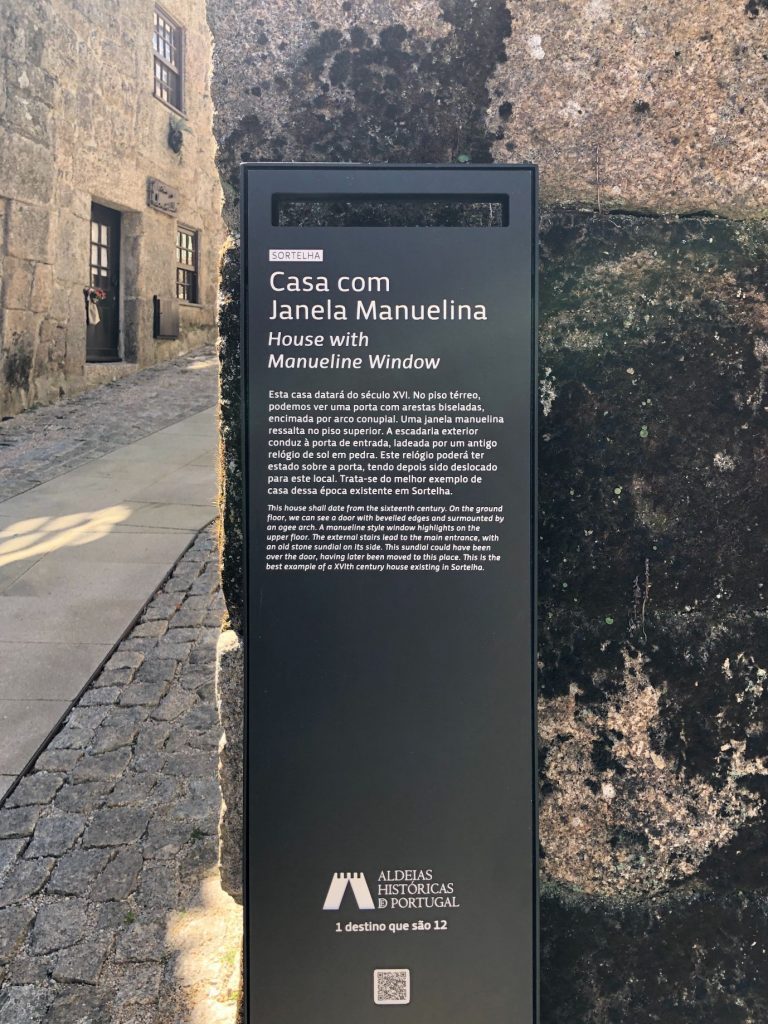


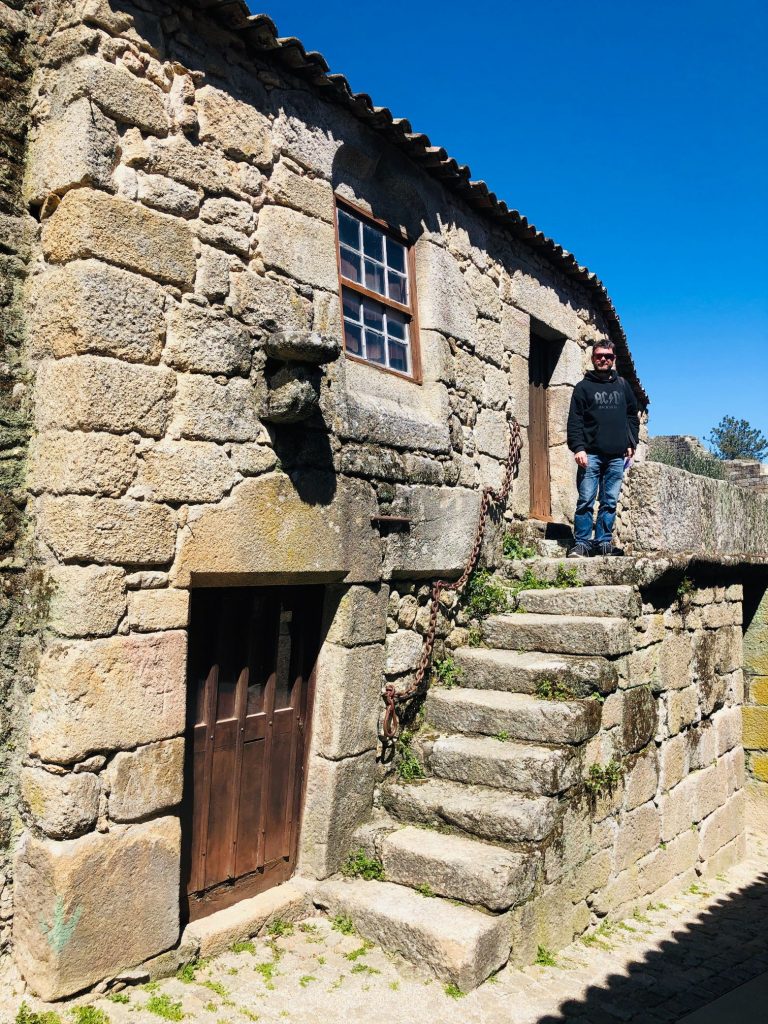


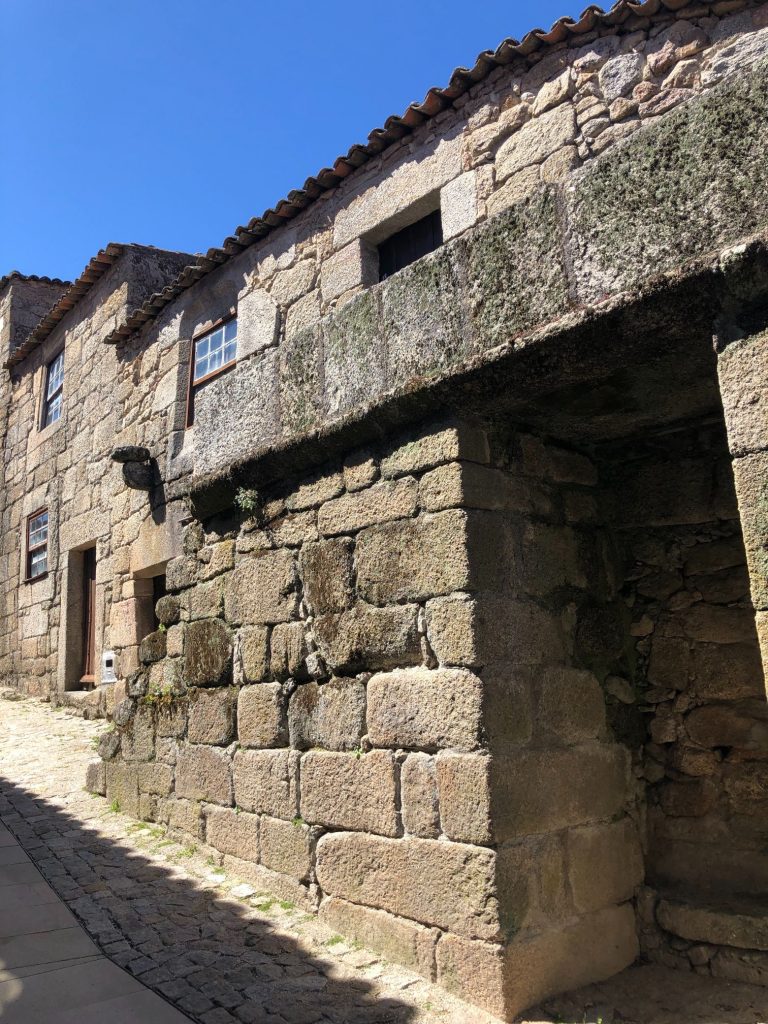


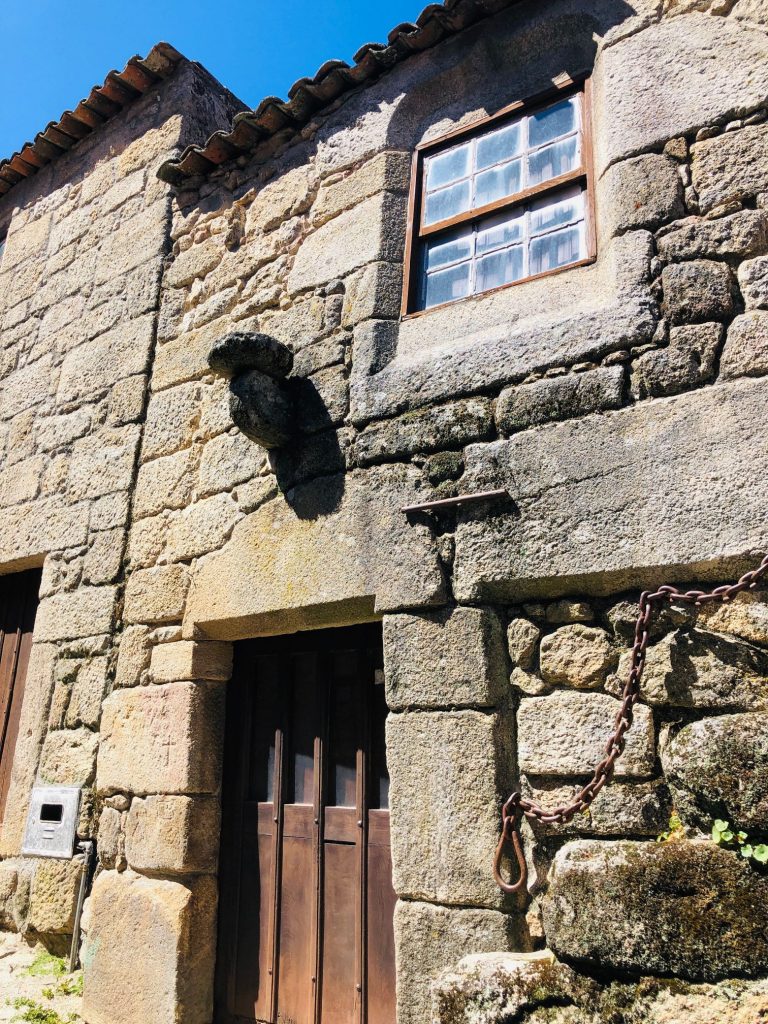


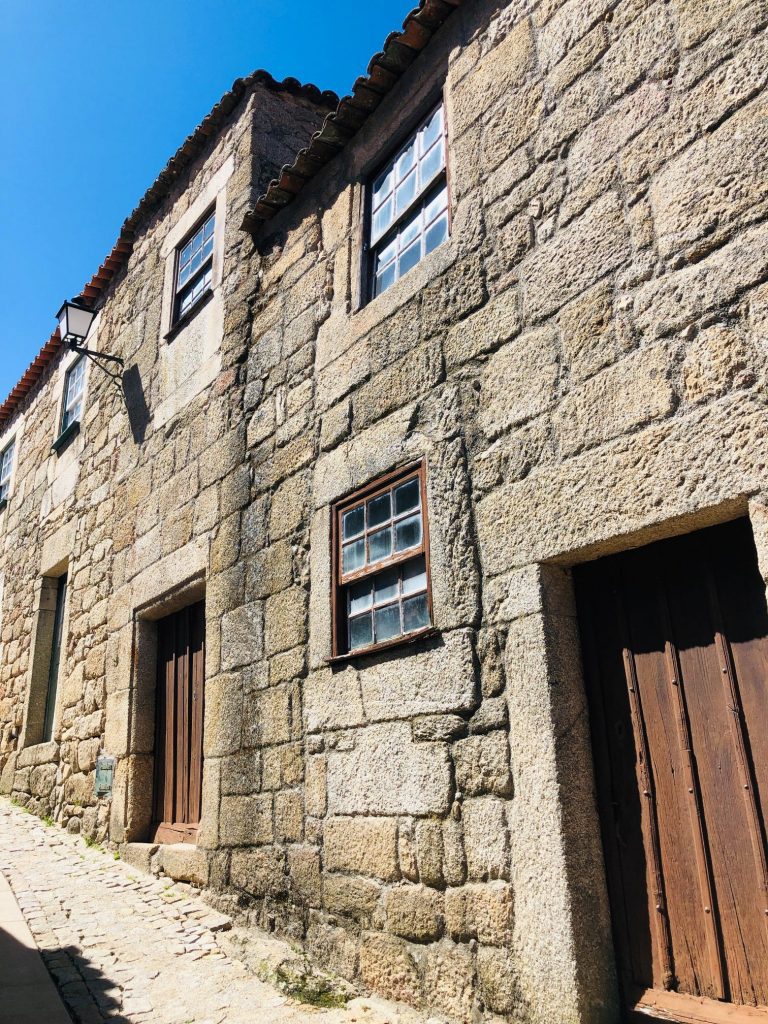


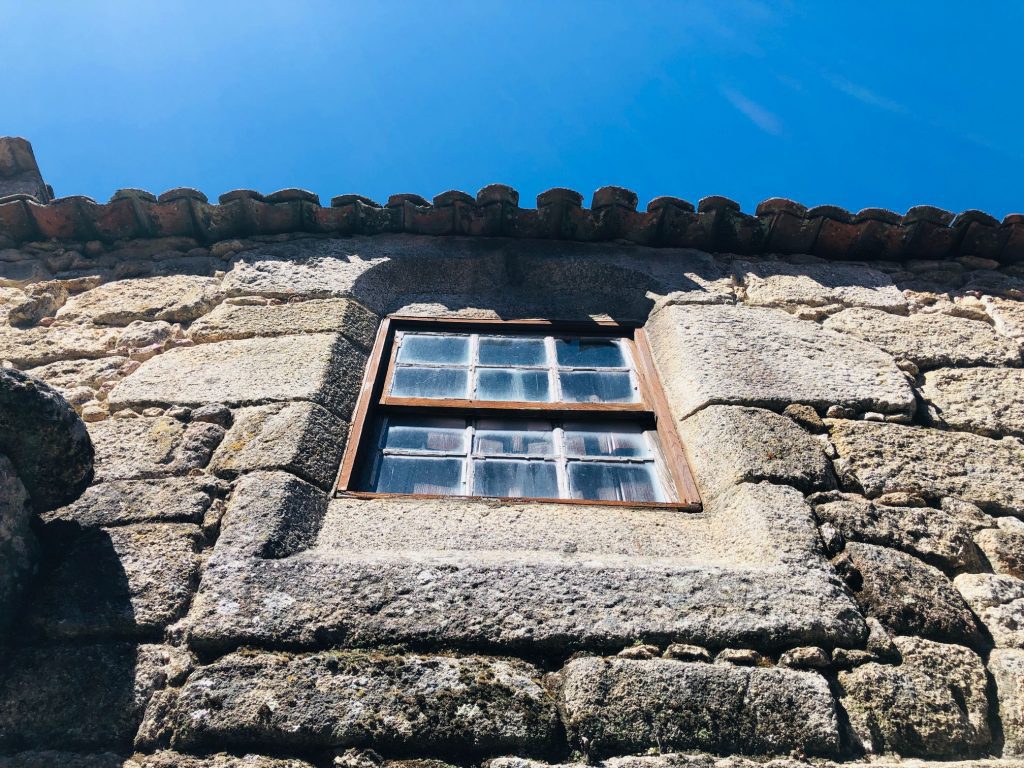


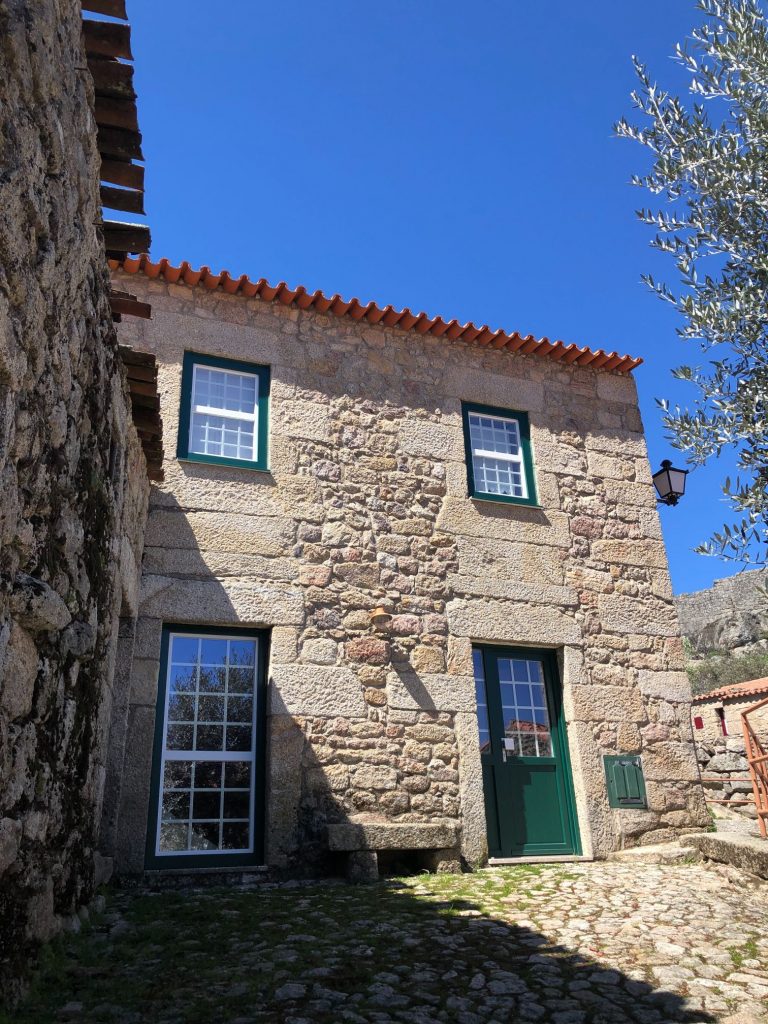


House that adjoins
Cute Cloth Bread Bags
I love the cute pretty bread bags that locals hang on their doors.
Casas do Pelourinho (Pillory House Accomodation)
Forno Comunitario (Community Oven)
Porta do Castelo (Castle Gate)
The Castle Gate faces west towards the town’s central square which contains the town hall and pillory. It is partly carved out of the rock and has a rounded arch around 2 metres in height. The stone has some stonemason’s marks as found nowhere else in the town and also a cross on its right side.
Royal Coat of Arms
Carved out of the rock above the Castle Gate you will find the Royal Coat of Arms of King Manuel I.
Passo de Vila Sacra (Stations of the Cross) Located at Castle’s entrance
Castelo (Captivating Castle)
Back in the day Sortelha was part of an important defence line of border castles and the castle fort perched on the hill is a spectacular sight. It was classified as a National Monument in 1910. The Castle is mostly in ruins with the exception of The Walls (built in a circular shape) and the Tower/Keep of the 13th Century Castle. The architecture is a mixture of Romanesque and Gothic even though it was built in the Manueline period. Carved above the castle gate you can find the royal coat of arms of King Manuel I. There is a balcony which has secret openings in the floor which were used to attack intruders. There is a fascinating cistern, which served the water supply. We had so much fun wandering around the Castle and had the whole place to ourselves. It is a health and safety nightmare and I had to be really careful with my stepping as the stones underfoot are very uneven and I am super clumsy. There are no safety handrails so caution is paramount. I just love all the castle ruins and how you are allowed to roam around them to your hearts content and all for free. The majestic ruins are absolutely amazing, it was such a wonderful experience.
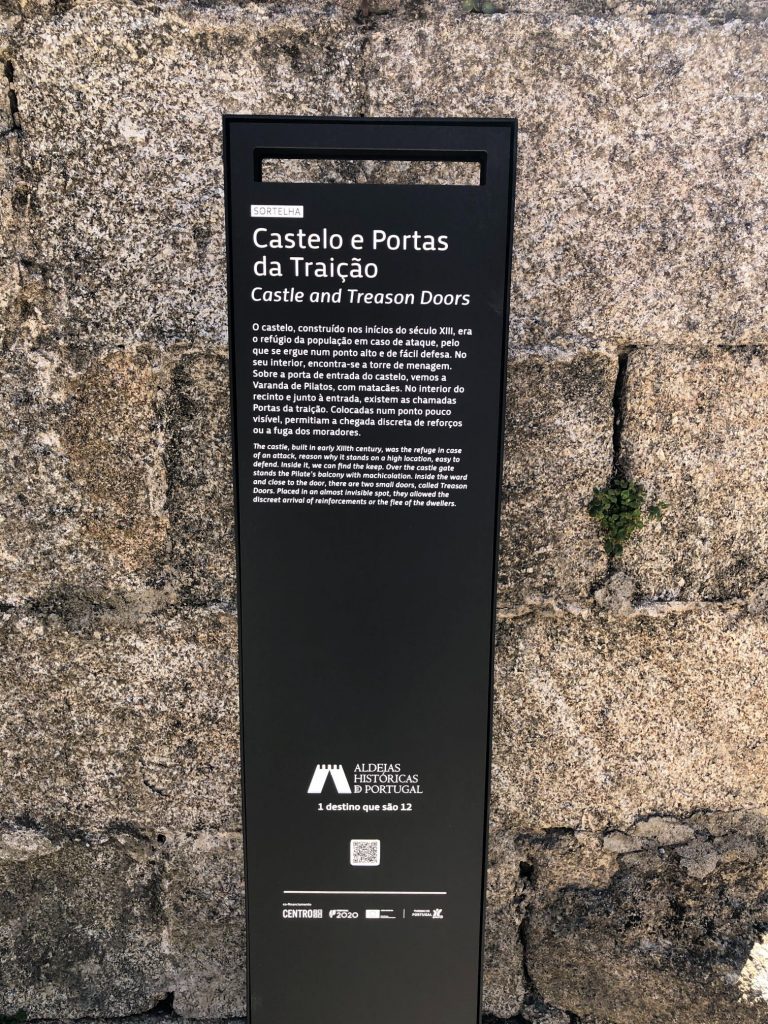


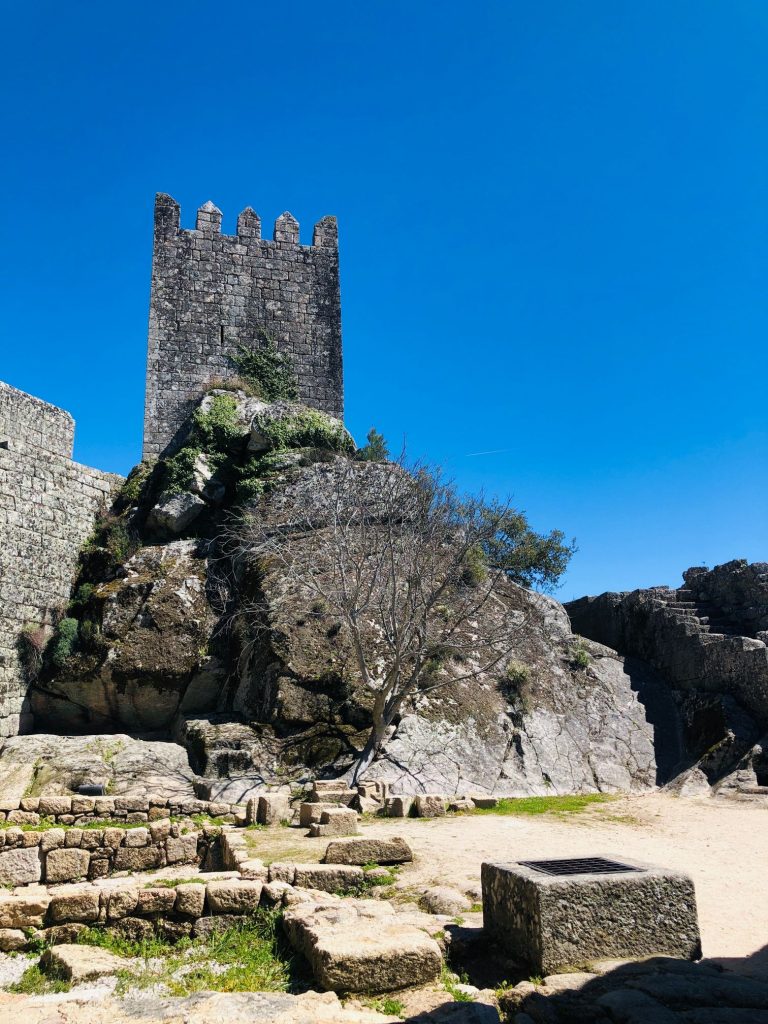


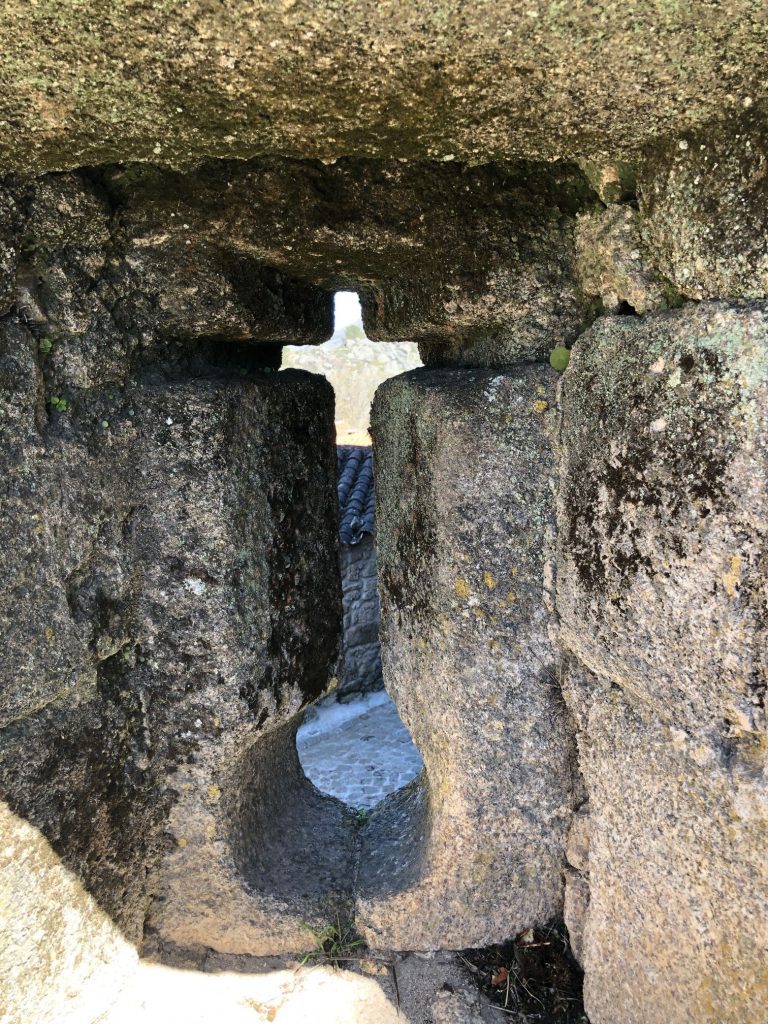


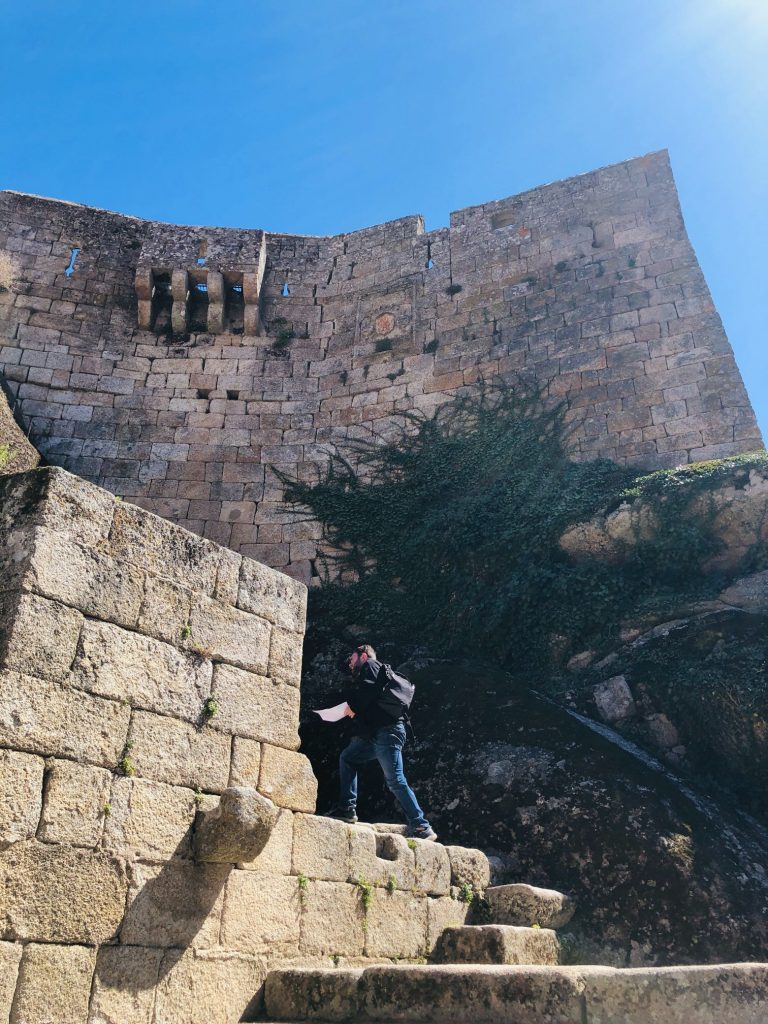


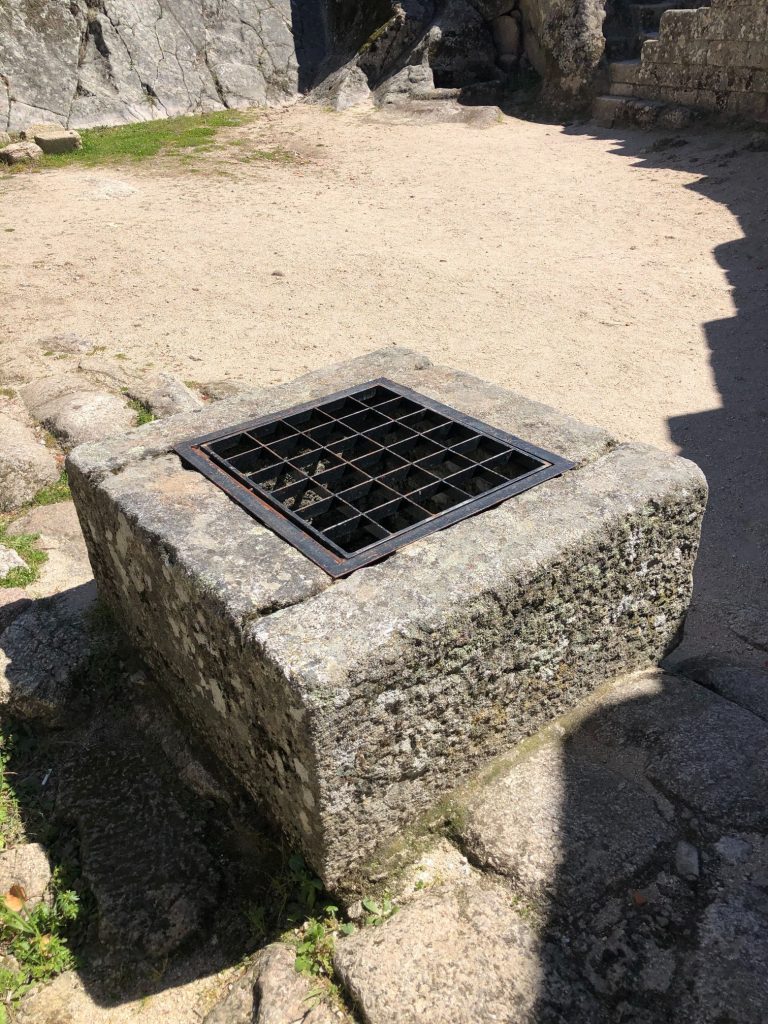


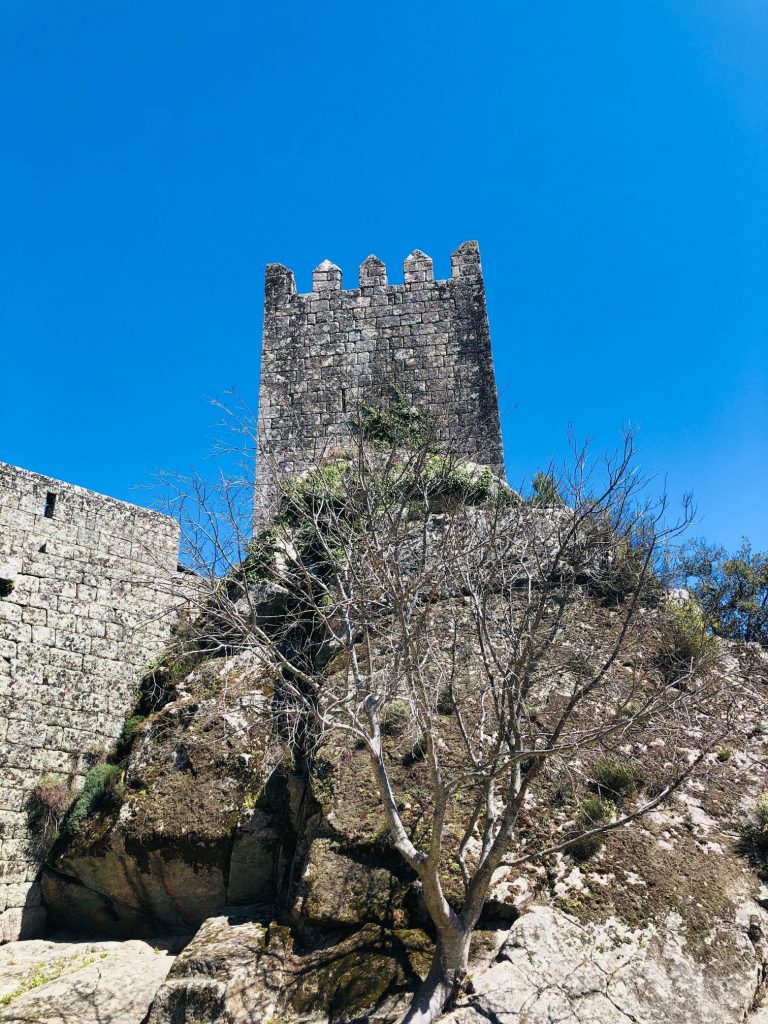


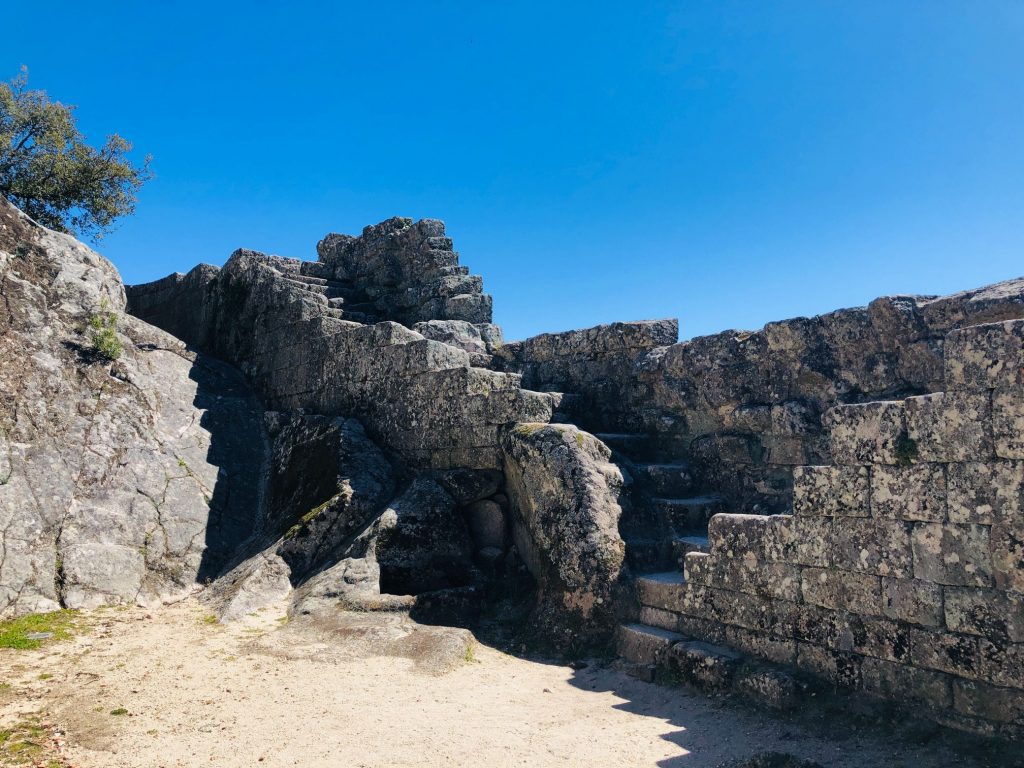


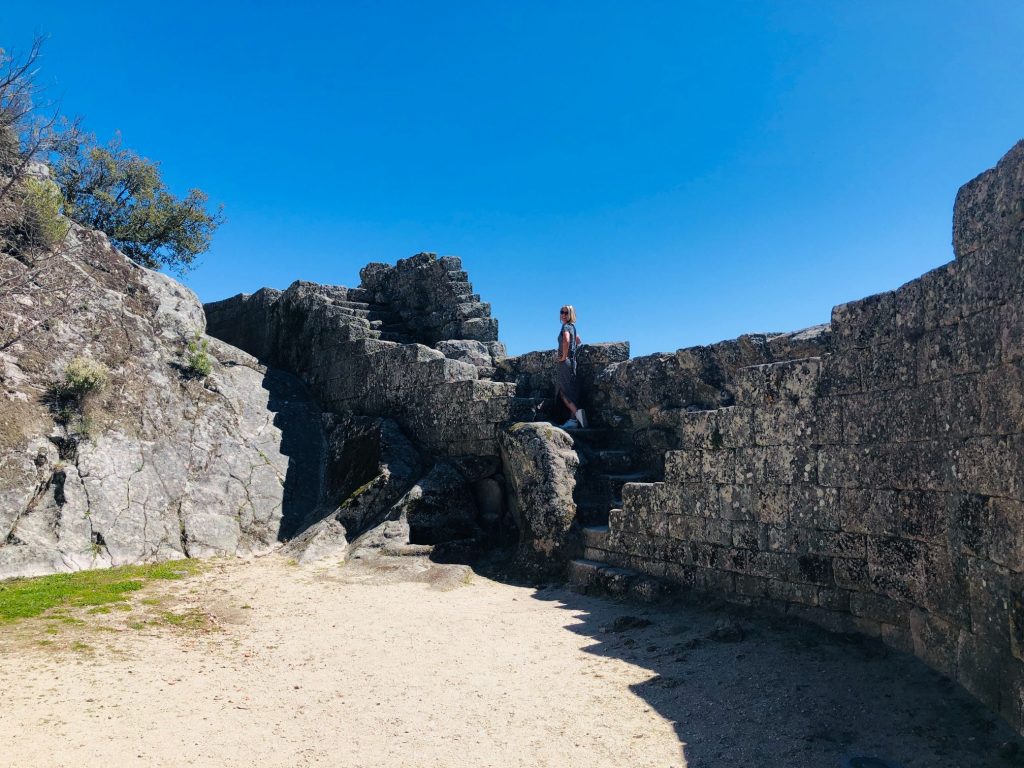


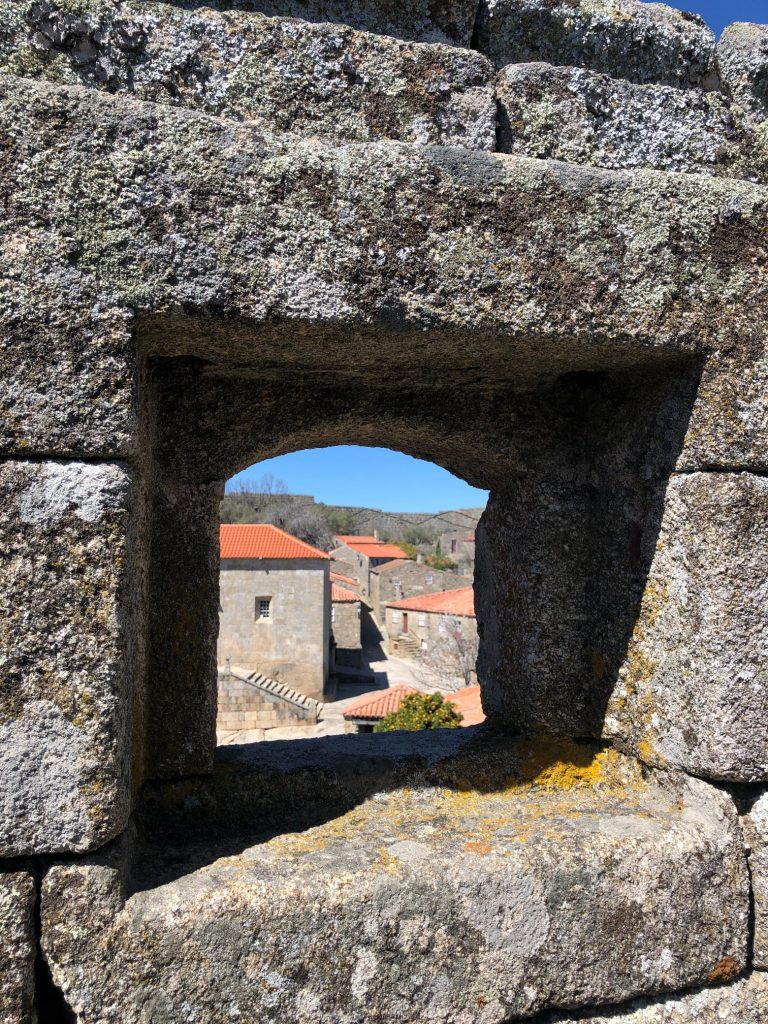


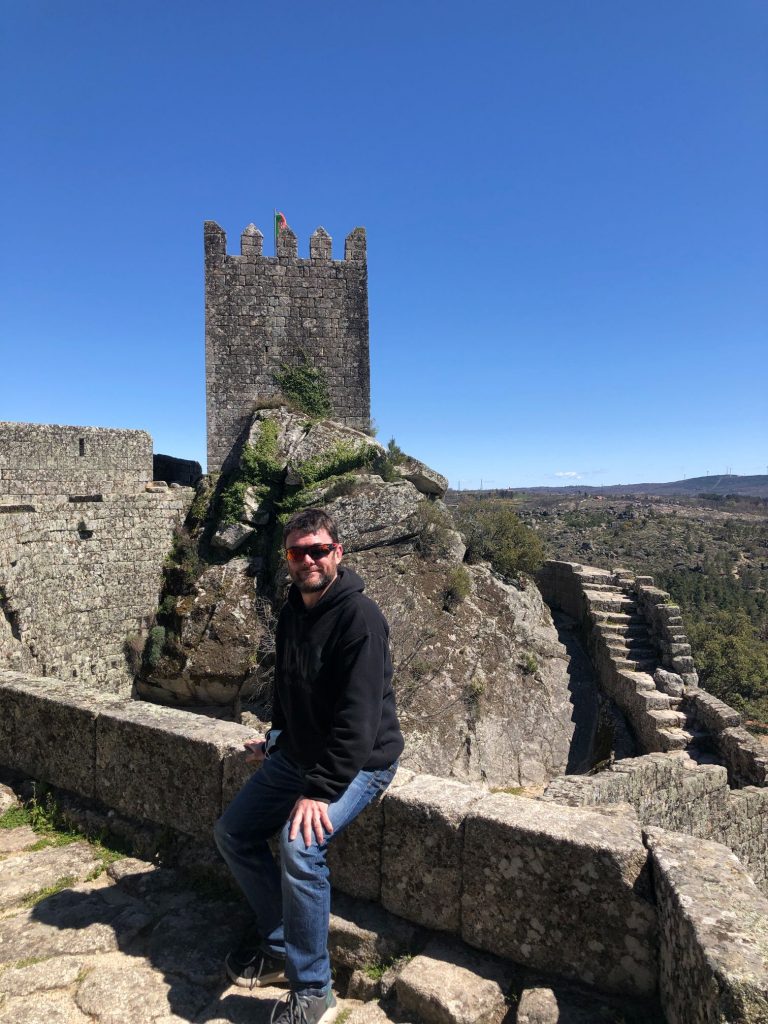


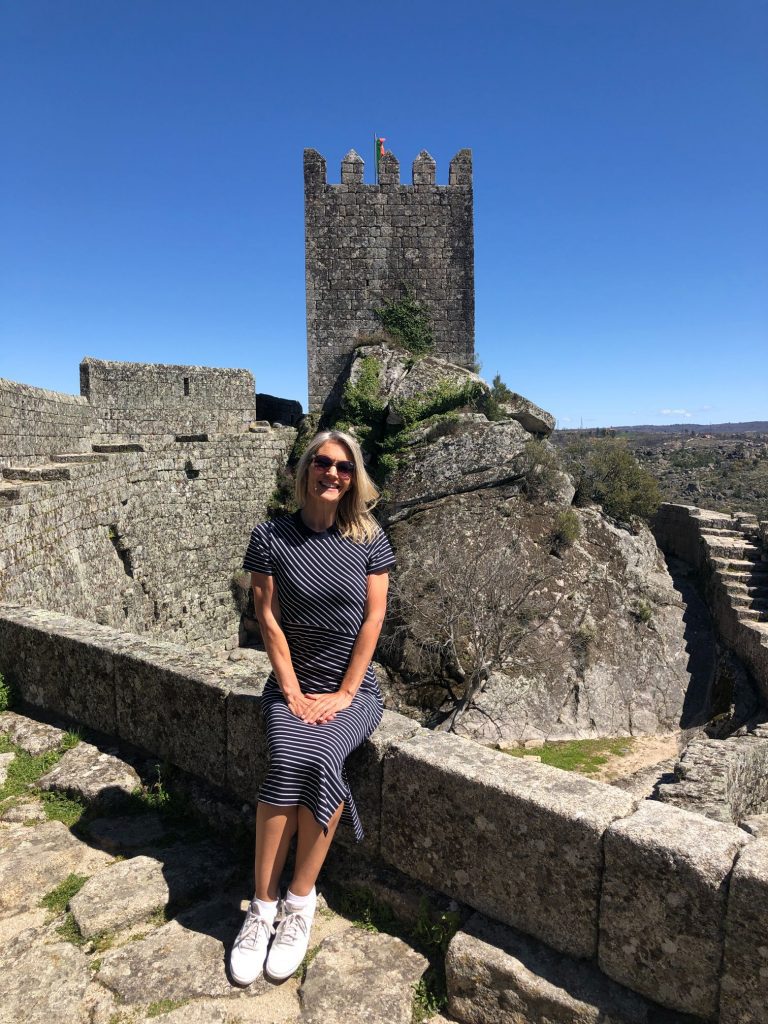


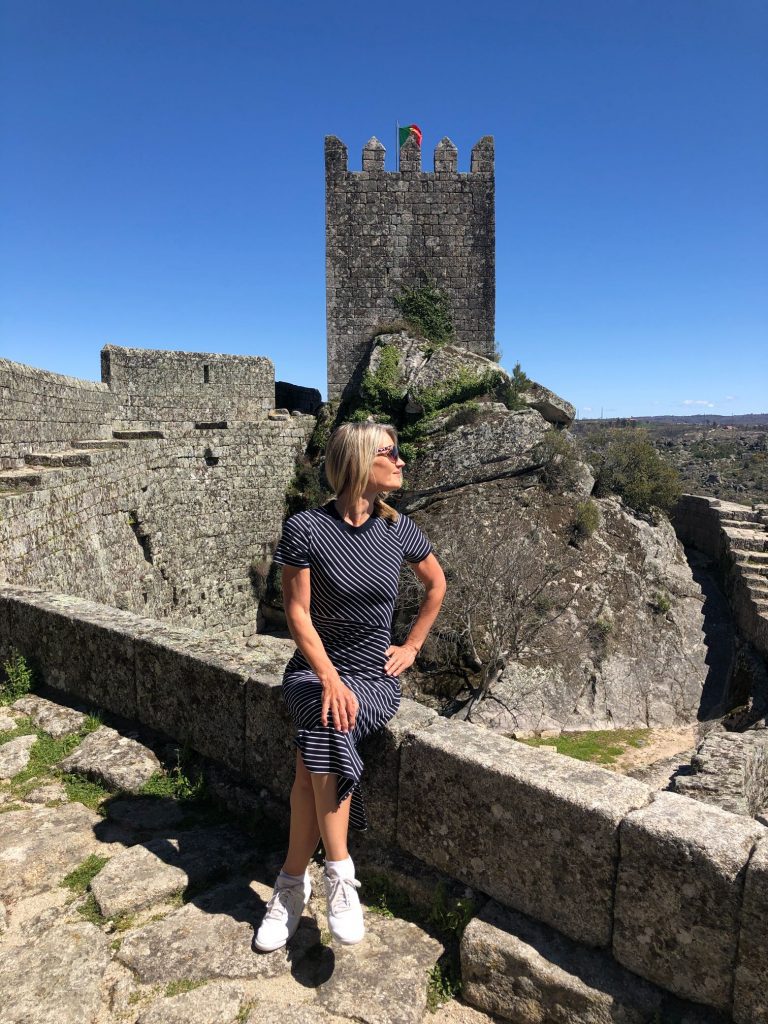


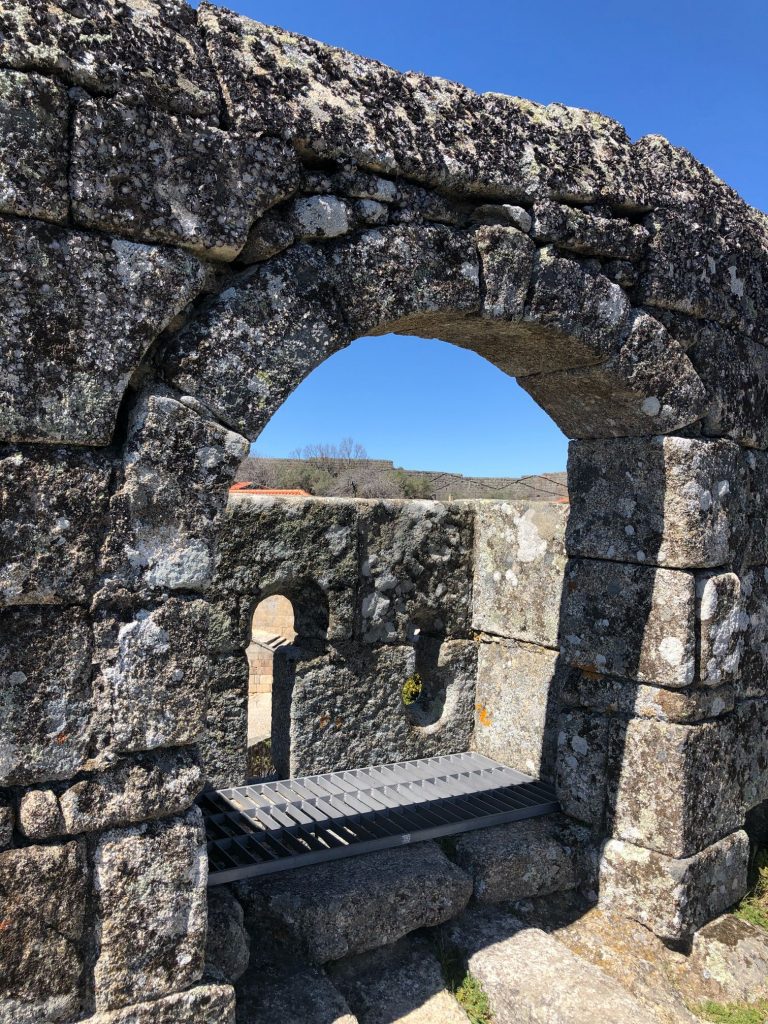


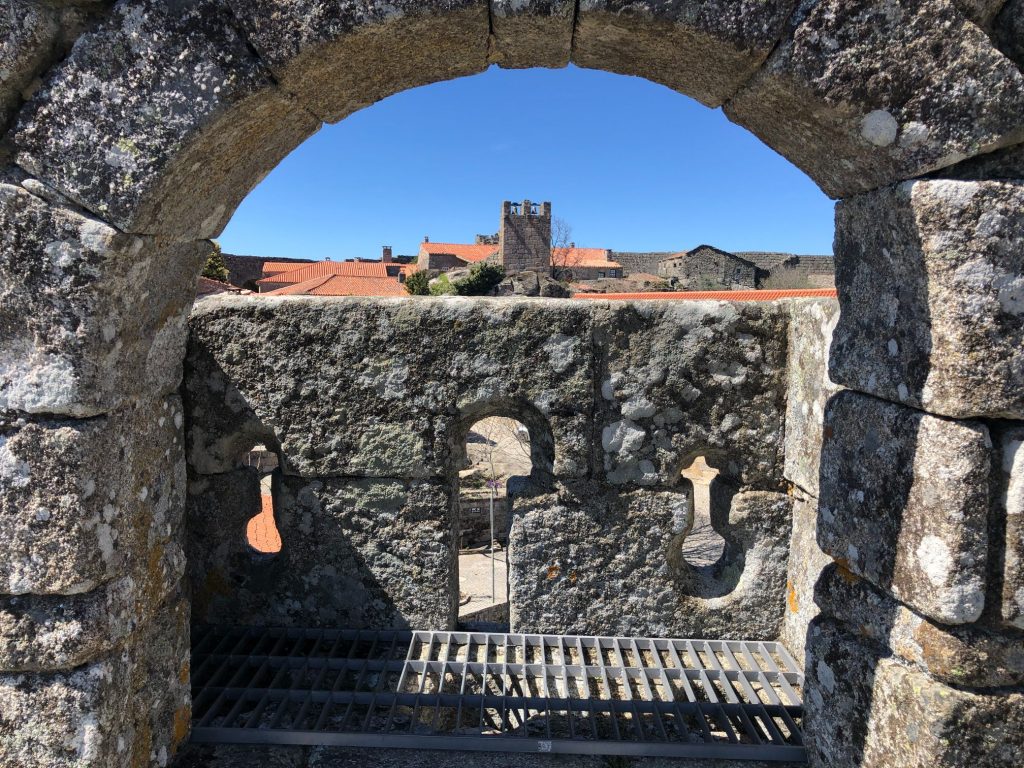


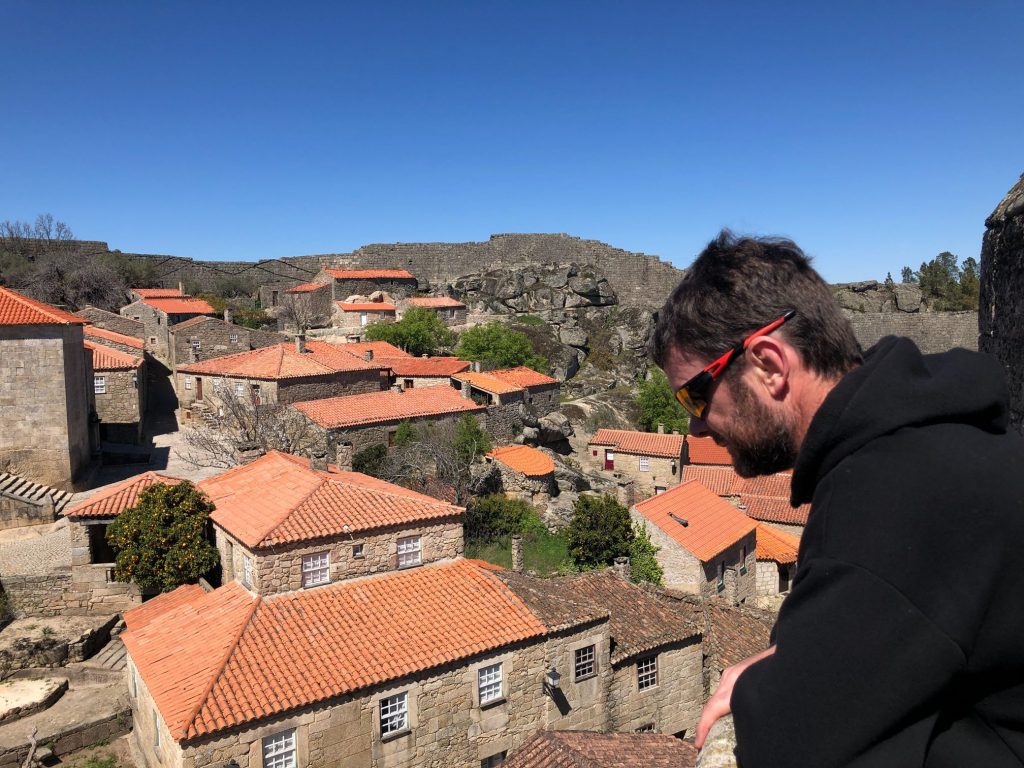


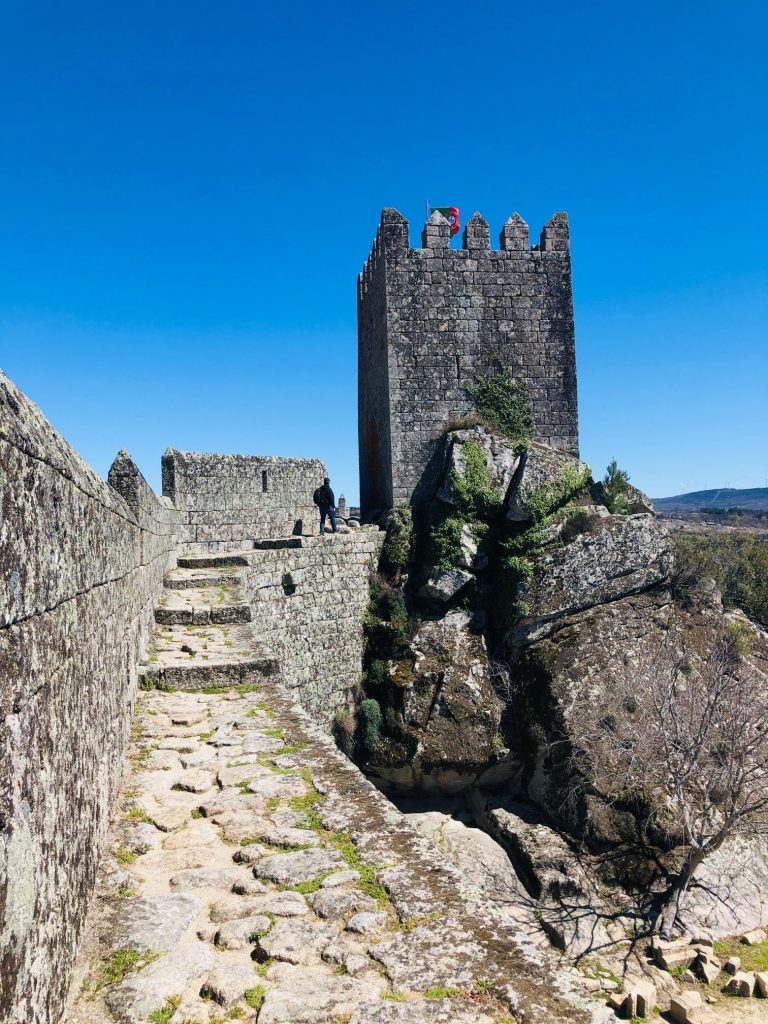


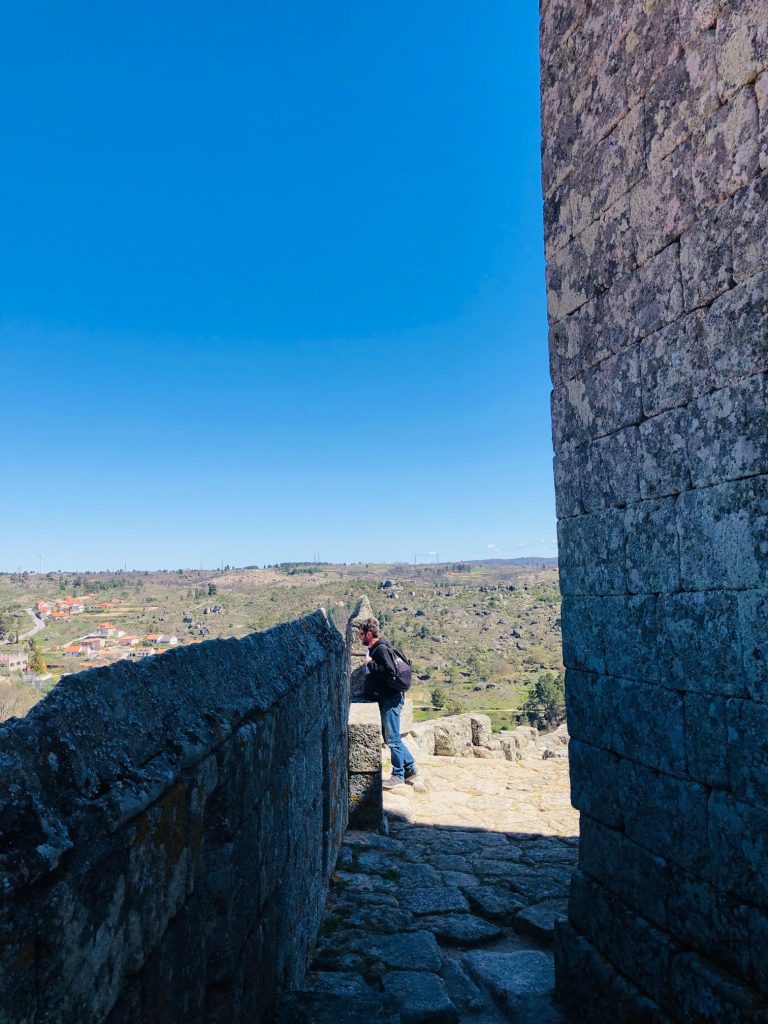


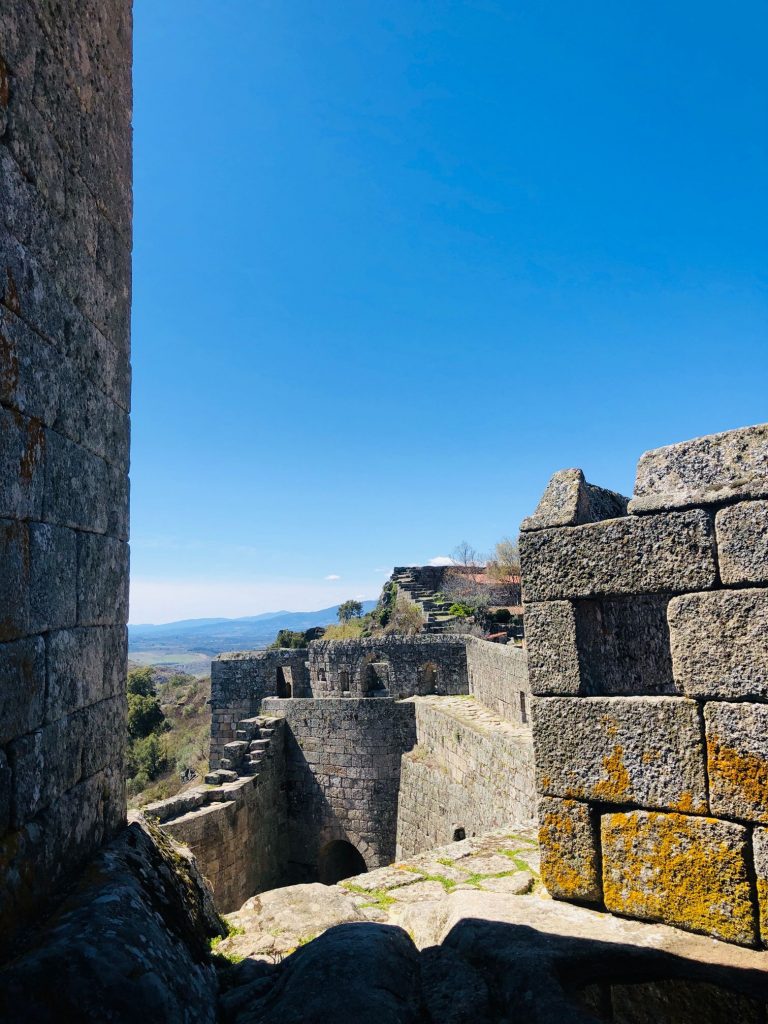


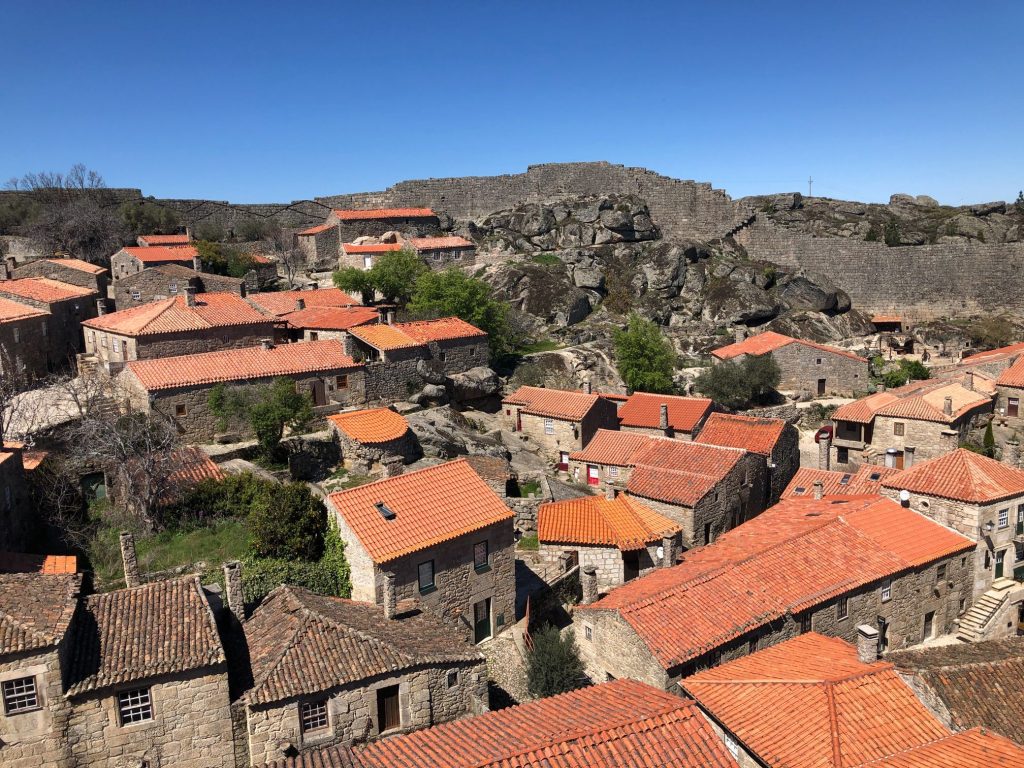


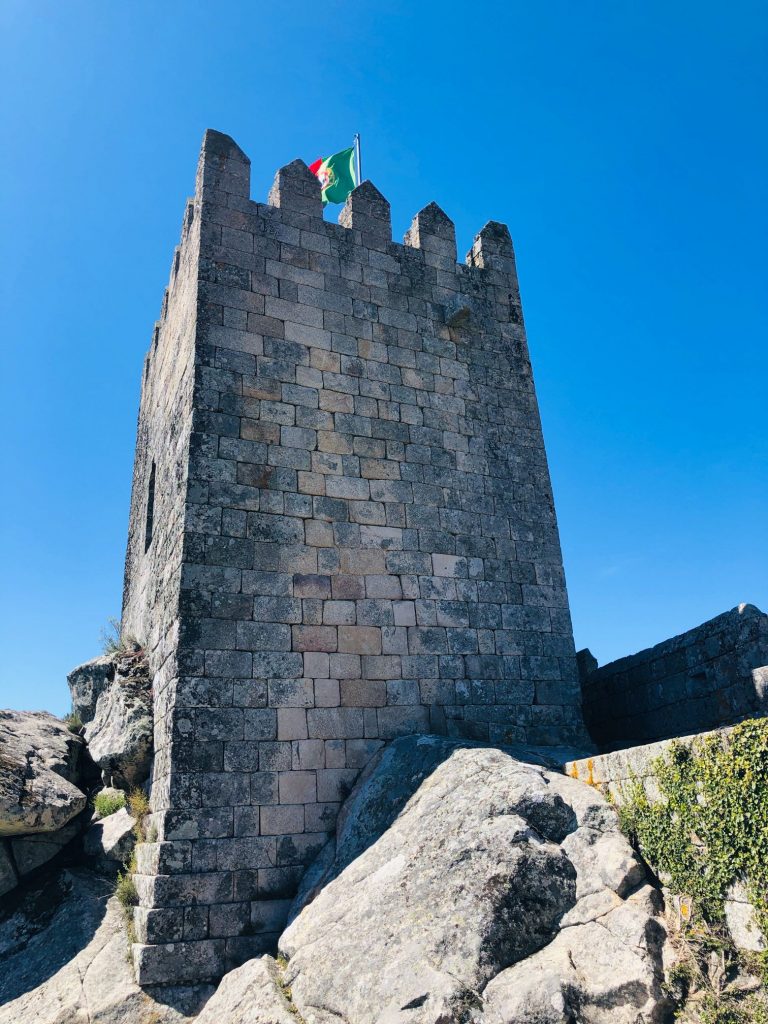


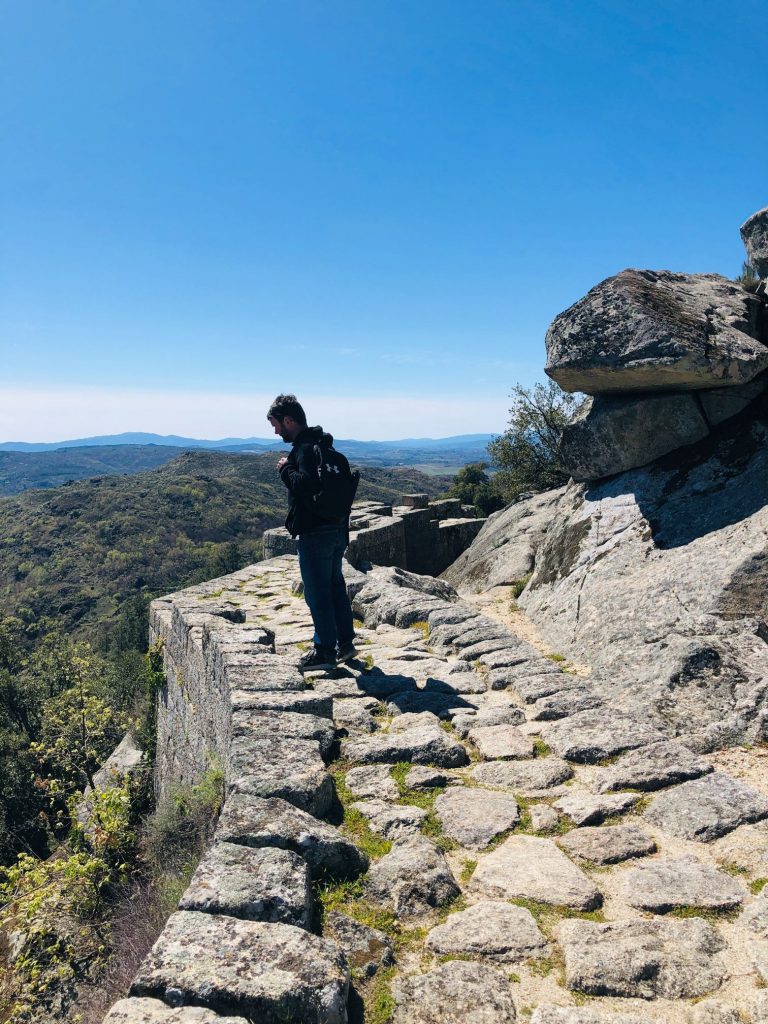


It’s a long way down! 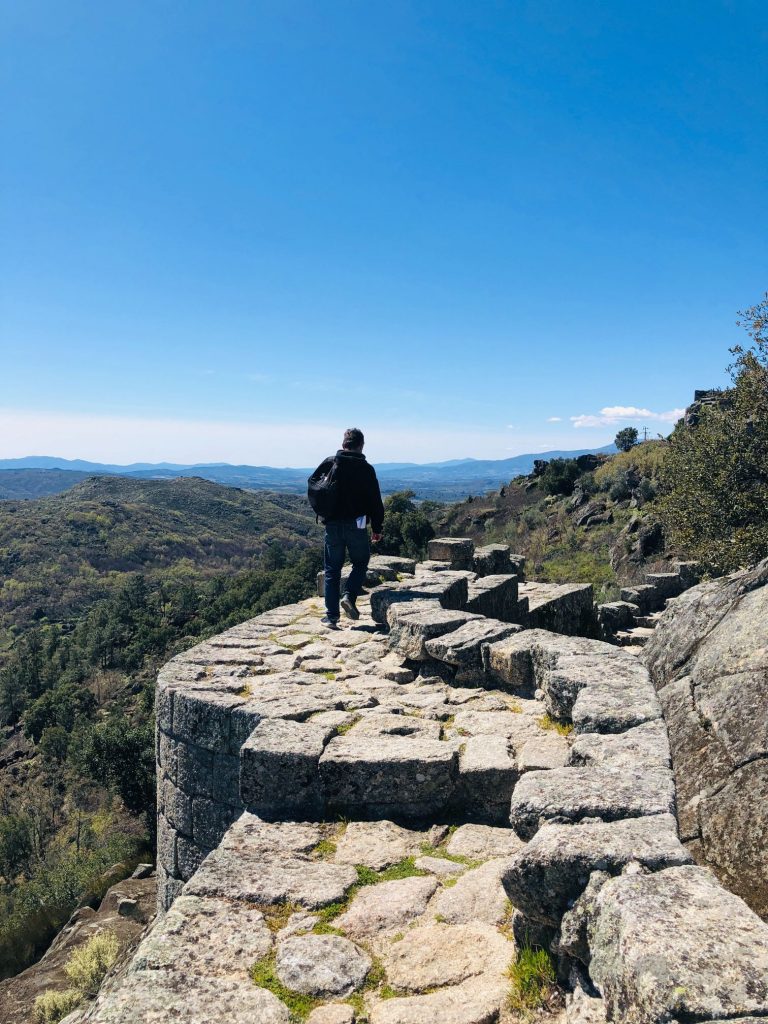


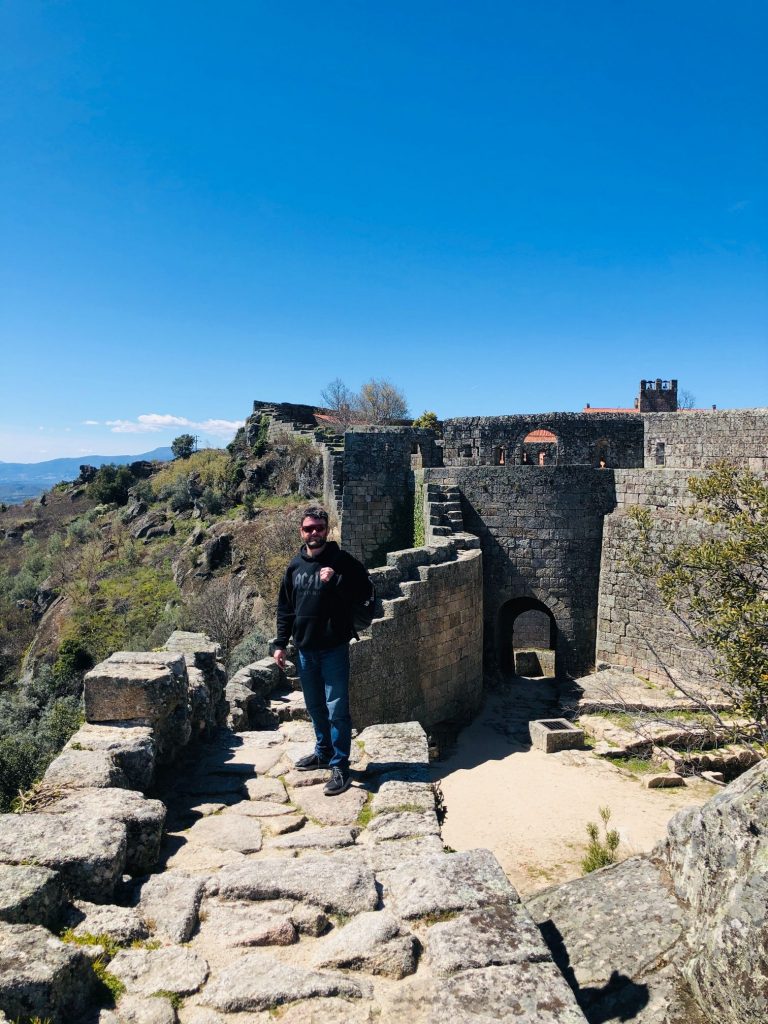


Secret Passageways
Princess Helena
I’m a Princess just for a short while (ha ha).
Porta da Traicao (Betrayal Door)
Located behind the Pillory and placed in almost an invisible spot which allowed the discreet arrival of reinforcements or the flee of the dwellers.
Largo do Pelourinho (Pillory Square)
The Manueline pillory, with an abacus, was built in 1510 as a commemorative and symbolic act celebrating the attribution of the Manueline Charter. It is located in the square in front of the Town Hall and Prison, at the foot of the castle, forming, together with these buildings, the village centre and an image of power. It has six octagonal steps, the column has no base and the capital is fluted with a circular section. On top of this there is a piece, in the shape of a diamond, with curved sides. The top pieces are placed on an abacus, resulting in an image with a circular section, due to the overlapping of crescent-shaped rings, where four small finials stand. At the top is an elongated armillary sphere crossed by an iron spike. This square is so gorgeous and the pink camellias in full bloom next to the castle just made it look so dreamy.
Casa da Câmara e Cadeia (House of the Chamber/City Hall and Jail)
The building housing the Old Town Hall and Prison is located in the Pillory Square and its construction dates back to the 16th Century, considering the Manueline weapons and the dating of the pillory. The building has two floors, the lower floor being the jail, where the original latrine has been preserved, and the upper floor being the Town Hall. The floor plan, of great simplicity, has two compartments per floor. The openings are made with straight lintels without a protruding frame. Interestingly, the lower floor incorporates the city wall into its structure. In 1855, with the extinction of the municipality of Sortelha, the building was transformed into a primary school, recently closed. Currently, it is used as the offices of the Sortelha Parish Council.
Beautiful Bracejo – Land of Hospitable People and Ancestral Traditions
Sortelha is a mythical and magical environment where it is still possible to find some of the ancient traditions such as the art of weaving the Bracejo (Brachypodium phoenicoides). The ancestral tradition was passed down from mothers to daughters for centuries. A local plant which grows wild in clumps in dry terrain. It is popular fodder for cattle and locally sourced from the countryside and the raw material is woven into baskets, hats, rugs and mats, it is also used to make brooms, perfect for my broomstick because I am a witch (ha ha). The handicraft shop (see photo below) sells many artisan crafts and local produce such as baskets, wool rugs, wooden sculptures, liquors, honey, jams, preserves, sweet tasty treats, wooden sculptures and many souvenirs handmade from beautiful crochet and lace. You may be lucky to see a local lady sitting in the street hand weaving bracejo.
Passo de Vila Sacra (Stations of the Cross) Located at Main Parish Church
Igreja Matriz (Mother Church) – Crime doesn’t Pay Helen
The Main Parish Church, dedicated to Our Lady of the Snows, is located in the Church Square, within the walled perimeter. Originally it was a Romanesque church, probably founded in the 13th Century, and of which important remains have been found in the archaeological excavations inside. The Bell Tower, isolated and located on a higher cliff, is also from this time. The original baptismal font may correspond to a piece currently preserved in the courtyard of a neighbouring house. The year 1573, is carved into the current portal, which corresponds to the time of its expansion, resulting in its current appearance. It has a longitudinal plan, a single nave, cornice and cannon gargoyles. The main portal, in the Renaissance style, is characterised by a full arch, fluted pilasters, Ionic-inspired capital and armillary spheres. Inside the chancel, there is a Hispano-Arabic (Mudejar) lacquered ceiling, with a few fragments of tile work of the same style decorating the church’s baseboard from its 16th Century renovation. The Renaissance pulpit, the national Mannerist style altarpieces and the mural painting on the gospel side from the same period, along with the baptismal font, based on three steps, apparently from the Church of Mercy, are also noteworthy. On the side wall of the chancel there is a Gothic sculpture of Our Lady of the Snows with the baby Jesus in her arms. According to legend, the head of the sculpture was cut off by a Napoleonic soldier who wanted to ascertain whether the image was made of gold. It was the Deanery of the Royal Patronage and Commendation of the Order of Christ. In 2000, during the restoration work of the Historical Villages of Portugal programme, the columns that supported the choir, originally from the Church of Mercy and now preserved on the ground floor of the Parish Council, were removed. Until the 1940s, the church’s central structure was plastered on the outside in white, and only the chancel had exposed stone.
I was so excited to see the interior and graceful decor of the Main Parish Church, especially the gold gilded altar which was my favourite feature. I already told hubby that if it were closed I would be committing a crime and breaking in. I was not driving all that way to miss the amazing wonders of the inside especially with the rise in recent fuel prices. I was willing to scale walls (I wore comfy trainers) and use my hair grips to pick locks. What can I say, when I commit myself to a task I see it through to the bitter end. Thanks to god, literally and much to hubby’s relief the church doors were open for tourists (ha ha).
Jardim do Anel (Ring Garden) and Village Name
A pretty small garden with stone sculptures including a ring. I loved the Elephant sculpture and bright coloured flowers. The village’s name derives from the Castilian word “Sortija”, which translates to “Ring” which was used in an ancient medieval game, in which knights had to make arrows pass through the centre of a ring. Others say that the village is named after the circular shaped walls which are built in the shape of a ring.
Beautiful Nature
It’s that time of year where the blossom is blooming and everything looks so pretty and bursting full of life.
Torre Sineira (Bell Tower) – Cafe Culture & Lizards
The Bell Tower is located on top of a boulder in front of the main façade of the Main Parish Church. It is a Romanesque construction, which is accessed from the church by a staircase, whose steps are carved into the rock. It has two windows with bells. Do not ring the bell in the bell tower as it is used to alert villagers of a fire. I’m so glad I read this in advance as I often try to ring the bell in abandoned castles if I get the chance. Can you imagine the sheer panic I would have unveiled (ha ha). We enjoyed some beverages at the cafe opposite whilst admiring the tower. We were the only ones visiting the cafe which was a lovely tranquil experience to relax in the sunshine with an espresso in hand soaking up the ambiance of this incredible village. I sent hubby back inside to buy me another coffee as I needed the caffeine fix. I love that Portugal tourist places don’t rip you off, a meer 70 cents for a coffee! I know I always say this but if this was the U.K you would be charged an entrance fee, a cost for parking and a map then there would be tacky merchandise everywhere and you would be ripped off in the restaurant for sure. I love that we just need a tank full of petrol then everything is free as the wind that scatters the legends.
The inhabitants of the village are often called by the nickname “Lizards”. This is due to the village layout which receives maximum sun exposure. To be honest I’ve been called a whole lot worse in my time and I adore lizards and reptiles. We have a gecko living between our bathroom window and shutter. He is now another pet and we call him Leeroy. I think I have officially lost my marbles as when I go to brush my teeth each night I shout out “Goodnight Leeroy”. He doesn’t respond, which is just plain rude (ha ha). We also have another gecko living outside our bedroom window. This one we named “Leonna” and I can’t help wondering if these 2 gecko’s know about each other’s existence. Maybe I should play matchmaker and send them on a blind date. We are currently renovating our house and doing a lot of DIY on our windows. Hubby recently removed the window for me to paint and weatherproof it and disturbed poor Leonna. He said to Leonna “Your beautiful” which made me laugh as I don’t think he has ever uttered those 2 words to me ever, I’m not bitter that he loves a gecko more than his wife (ha ha). We had a lovely time acting like lizards sat next to the bell tower soaking up the sunshine and savouring our coffee and every moment of the Vitamin D in my face.
Rooftops and Stretching Views
I love this photo of hubby strolling down the cobbled alleyways.
Casa da Vila (Village House)
Residência Paroquial ou Passal (Parish Residence)
The building that was used as a parish priest residence, located on Rua Direita, is one of the most notable buildings in the village. It has a square floor plan, with two floors. Originally from the 16th Century, it underwent renovations in 1756, according to the date engraved on the lintel of the main door. On top of this, a stucco decorative element features a pearly cross and a Maltese Cross, which can be explained by the fact that one of the vicars was a Commander of the Order of Malta. One of the upper-floor windows has a small cross engraved on the outside of the sill. It also has an interesting cruciform mark on the right side of the frame, resting on the anagram of Christ, IHS.
Casa do Governador (Governor’s House) and Casa do Juiz (Judge’s House)
The Governor’s House of the Sortelha Municipality was built, or remodelled, in 1645, according to a beautiful inscription on the upper floor’s lintel. Interestingly, the date is followed by the @ symbol, which in the 17th Century meant ad diem (until the day), but in other contexts it was interpreted as an arroba, a measure used in commercial transactions. The archaeological excavations carried out in the courtyard of this house have made it possible to study an old well, 10.5 metres deep. Inside the well, a very rare thermal water bottle from the Caria Radium Water Thermal Baths was found. It is currently on display at the Municipal Museum of Sabugal. Inside the house, there are two built-in cupboards and a granite slab. The Governor’s House is the one on the right.
Casa Arabe (Arabic House)
Located on Rua Dá Mesquita, named after a family with this surname, near the False Gate and Beam Tower, is the Arab House. It is a simple building with traditional architecture, with a single floor and frames with straight lintels. The following inscription appears above the front door: “IHVS AVE MA” which means “Jesus Ave Maria”. Its date goes back to the time when the house was built (15th/16th Century), considering the bevelled door posts and the aforementioned inscription in cursive Gothic style. Currently, the house is used for local tourism.
Passo da Vila Sacra (Stations of the Cross) Located next to False Gate
Porta Falsa (False Gate)
This gate acquired this popular name for being a replicate of the entrance to the walled village. Being a False Gate, it should lead to a dead end. However, it does not. It has a slightly pointed arch, bevelled on the outside, with a vault, no imposts, but with a bevelled frame. Its existence, so close to the New Gate, can only be explained as a way of dividing invading soldiers to weaken them. Its original functionality is unclear, having remained closed at least since the Restoration War (1640-1668).
Torre do Facho (Beam Tower) – It’s a Date
The only tower adjacent to the Romanesque wall faces west, which better flanked and controlled access to the interior of the village. The tower considerably increased the fortification’s field of vision for the entire transition region from Meseta to Cova da Beira, up to Serra da Estrela, enabling visual contact with the surrounding castles of Belmonte, Covilhã and Monsanto. It is because of this characteristic that the Tower gained its traditional name of the Beam Tower – in memory of the torch lit at night there, or the smoke from a fire during the day, which allowed visual contact with these nearby fortifications. The tower has a rectangular plan and is about 10 metres high, being completely covered with numerous stonework marks dating back to its foundation during the reign of King Dinis or King Fernando.
There are fabulous views from the highest wall point: Torre do Facho, which got its name as it used to have a torch/fire to send a smoke signal to alert other fortifications of an imminent enemy attack. The views were so awesome we decided to make this our perfect picnic spot to enjoy our lunch. Hubby treated me to some Portuguese dates which were so very yummy so it turned into a date lunch with dates. We climbed up to the tower to admire the glorious stellar 360 panoramic views of rugged landscapes scattered with gigantic boulders and wind turbines. As you will know by now I am very accident prone so I took extra care as there are many steep steps, uneven floors and precarious stairways which were very dangerous with no safety barriers and sheer drops.
We enjoyed our picnic in the sun and we stumbled across a couple of restaurants in the village if you prefer a hot lunch: Dom Sancho and O Celta. If you fancy tasting some local cuisine try some tasty Portuguese regional dishes made from lamb, goat and game e.g. Veado Guisado or Perdiz Estufada. I can’t eat a big meal at lunchtime otherwise I need a nap (ha ha).
Porta Nova (New Gate)
Located to the west, it has a round arch with three rows of voussoirs resting on imposts. Despite being named the New Gate it is in fact the oldest gate. It has fascinating old measurements markings carved into the stone: Pedra da Muralha where the Côvado and Vara are engraved which were standard medieval measurements that served as a measurement system for trade in the local fairs and markets.
Troca de Calcada Medieval (Medieval Walkway/Pavement)
The Medieval Walkway is located on the outside of the walls and leads to crosses the Old Hospital and Church of Mercy, passing through the Chapel of Santiago, extending over a section approximately 300 metres long and 5 metres wide. The paving is a marvel and I was very excited to stroll along the historic pathway.
Hospital da Misericordia (Ruins of the Old Hospital of Mercy)
The Former Hospital of Mercy is located in the Santa Rita Square, close to the village’s New Door. Its construction dates back to the 16th Century, although some authors suggest that, in medieval times, it was used as a flower shop or Santiago hospice. It is a single-storey building, with a rectangular floor plan and openings with straight lintels without a protruding frame.
Igreja da Misericórdia (14th Century Church of Mercy)
The Church of Mercy (Also known as Santa Rita or São João Church) is located outside the walled enclosure and has medieval origins. This is known because in 1320 it was taxed at 70 pounds as the Church of São João. The Church of Mercy was transferred to this building in 1626, when it was expanded. The attribution of the name of Santa Rita to this church is possibly related to the community’s great devotion to this Saint and the existence of an image of her in one of the church’s altars. The property has been in ruins for over 50 years and has a rectangular floor plan with a single nave. The main portal contains a basket-handle arch, surmounted by two windows with straight lintels. Inside, the triumphal arch is round, and the base of the pulpit is decorated with scrolls and a medieval anthropomorphic motif. The sacristy is adjacent to the south side, with the wrought iron frame of its primitive bell tower still surviving.
Capela de Santiago (Chapel of Santiago)
We took a lovely scenic stroll to the 16th Century Chapel which is only accessible through the cemetery. Unfortunately it was closed when we visited but we did enjoy the experience of walking through the immaculate kept cemetery and reading some of the tombstones. All the graves are above the ground which is very different to the traditional U.K graves. The headstones are very elaborate and many house the remains of several family members in one area. We both were amazed at the tombs that look like little houses.
Sepulturas Antropomórficas (Anthropomorphic Graves/Tombs excavated in the rock/Rupestrian Necropolis)
Located around the two churches in Sortelha, especially the Church of Mercy there are incredible historic tombs excavated in the rock. The churchyards and surroundings of the churches were, for many centuries, the chosen places for the burial of the deceased. Some of the graves were opened in the granitic outcrop and some have survived well preserved, with anthropomorphic (human), oval or rectangular shapes. Their sizes vary and could have used for adults or children, like the one that is preserved next to the Main Parish Church. Many of them were identified by a circular stone stele, and may present carved Christian symbols.
Hotel das Águas de Radium
When I saw photos of the enchanting abandoned Rádium Thermal Baths Hotel surrounded by rugged beauty with large granite boulders and chestnut forests, I just had to visit. We literally drove right past this place on our way home. It is located on the road that connects Terreiro das Bruxas to Caria near Casteleiro. There is no official signpost with directions and I think some people like to keep the location a secret and a mystery. The ruins was once upon a time a grand bustling hotel and thermal spa complex located at the foot of the Serra da Pena but it has not been a working hotel for over half a century. I was amazed to find out that the hotel provided thermal treatments using radioactive water as it was once thought to have healing powers. It was later established that the radioactive water was very harmful to humans and among the most radioactive in the world! Building a spa hotel on top of a radioactive water source was an epic fail!
There is an old legend linked to the hotel: A Spanish count (Don Rodrigo) came to this area with his daughter, who was suffering a serious skin condition. He found the spring water whilst out hunting and his daughter bathed and drank the waters which magically cured her so he built the hotel and spa. Radium, discovered in 1898, is a chemical element belonging to the alkaline earth metal family. At that time it was promoted as being beneficial to health and the presence of radium in water was considered as therapeutic. The Hotel was originally called Hotel Serra da Pena or Termas de Águas Radium (Radium Water Baths) and built in the Neo Moorish/Medieval style in solid granite between the years of 1910 and 1920. A permit was obtained for the exploration of 3 springs next to the mines where the presence of radioactive elements were found. It was designed to accommodate 150 guests, 90 in a luxury wing and the rest in basic rooms. The hotel offered various spa treatments and therapies including colonic irrigation (no thankyou! I tried this once upon a time and NEVER again). The food at the hotel was prepared by an international chef and the sensational gardens surrounding the hotel were planted with beautiful trees, flowers and shrubs. It also had a bottling plant which sold radium bottled water all over Portugal. The advertising campaign read: “Radium water gives health, vigor and strength”. The Hotel began to decline with few guests and closed it doors in 1945. It was sold to the British and it briefly reopened in 1951 but the devastating affects of radioactive materials were established and it went bankrupt 3-4 years later. It was with World War II and with the knowledge of the harmful potential of radioactivity and atomic energy and also with the devastating consequences of the atomic bomb that radioactivity changed from a miracle to a curse. The manager was said to have not been paid due to the pending bankruptcy so he gutted the place and ripped out all the fixtures and fittings including the copper pipework. In the 60’s the hotel was auctioned off in Lisbon and the new owners ambitious plan was to redevelop it into a modern 5 star hotel with a golf course and 2 villages with villas. Although the plans were approved by the council nothing has ever materialised.
We parked our old banger Jose Miguel (named after the car salesman) at the main road and walked up the ancient Roman medieval road, the same route that pilgrims took en route to Santiago de Compostela. There is no way on earth our car would have made it on the dirt track with all the pot holes. We also had to jump over a huge flooded area so my white trainers are now a glorious nature golden brown. Oh well, a small sacrifice was such an awesome experience. We also saw 2 ladies wheeling a suitcase. I was tempted to say to them “Did you book a room or suite?” (ha ha). I am assuming they had photographic equipment and I was right. I saw them later during a photo shoot. I bet their photos are amazing. I have enough trouble holding my phone camera still as to not get blurry photos and don’t get me started with hubby. He blinks on every photo in the sunshine so I make him wear sunglasses which he loses then finds them on top of his head. 99% of the photos he takes of me I’m not ready at all so my facial expression looks either confused or I’m holding my hair down in the wind trying to control it but more often than not my face just looks like I’m straining to take a dump (ha ha). I’m going to get some nice photos one day, I promise you. I have imminent plans to visit Coimbra shopping mall and I’m going to buy a flowing floral or bright coloured dress and a hat and get some nice photos at a palace or gardens. Watch this space.
We were first met by a reception sign carved into an old stone then the wonder of the dilapidated ruins was magically unveiled. We had endless fun wandering around the derelict granite crumbling building bursting with archaeological heritage. The ruins are gigantic and there are so many different areas to explore. The sun was shining bright and the whole place has an incredible vibe and aura. We had fun playing hide and seek, jumping out on each other and shouting from a far whilst listening to our echoes bouncing off the rustic ruins. The architecture blew my mind! The clean lines, textures, radiant arches draped in overgrown emerald green ivy and stone columns covered in earthy moss blending in with the landscape and gave a wonderful sense of understated elegance, ruins reclaimed by Mother Nature. Who knew that nature, a romantic ancient ruin and the Portuguese sunshine could create such an unforgettable ambiance. I literally stood still for a moment of silence to admire the arches and elaborate architecture. It was achingly sad to see some of the walls intact and only the spine of the hotel over our heads. This hotel would have been splendid back in it’s hey day.
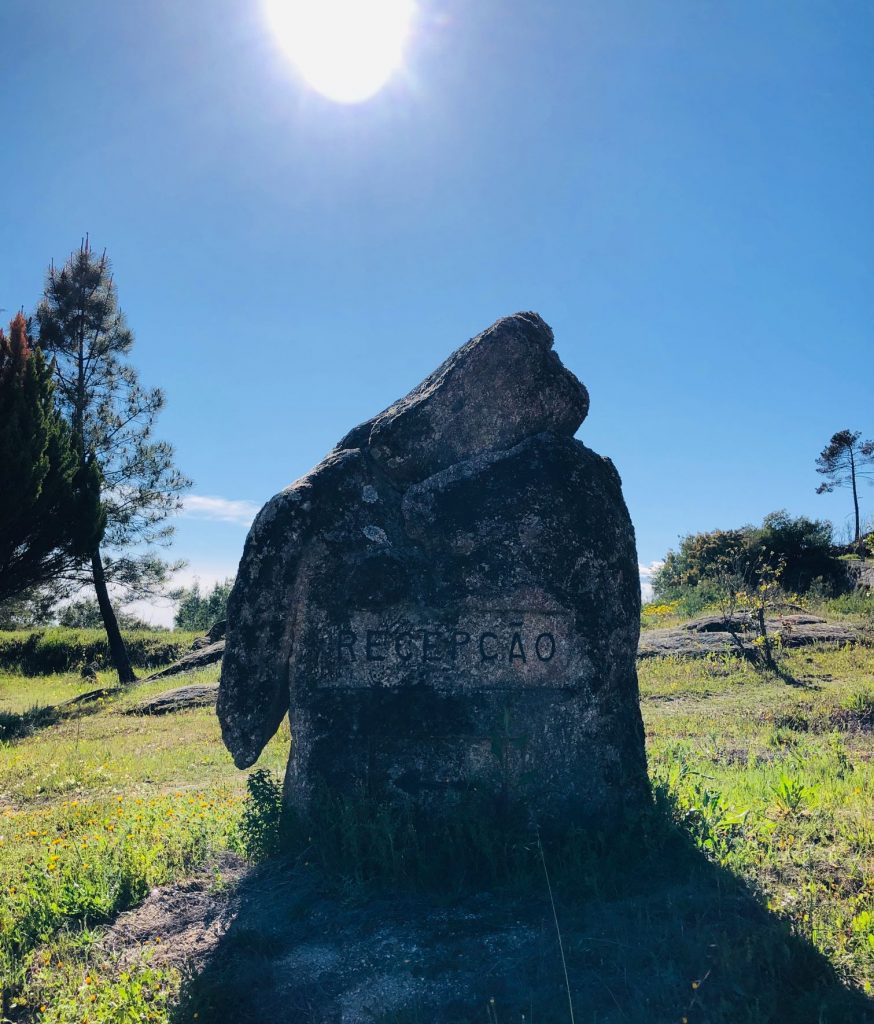


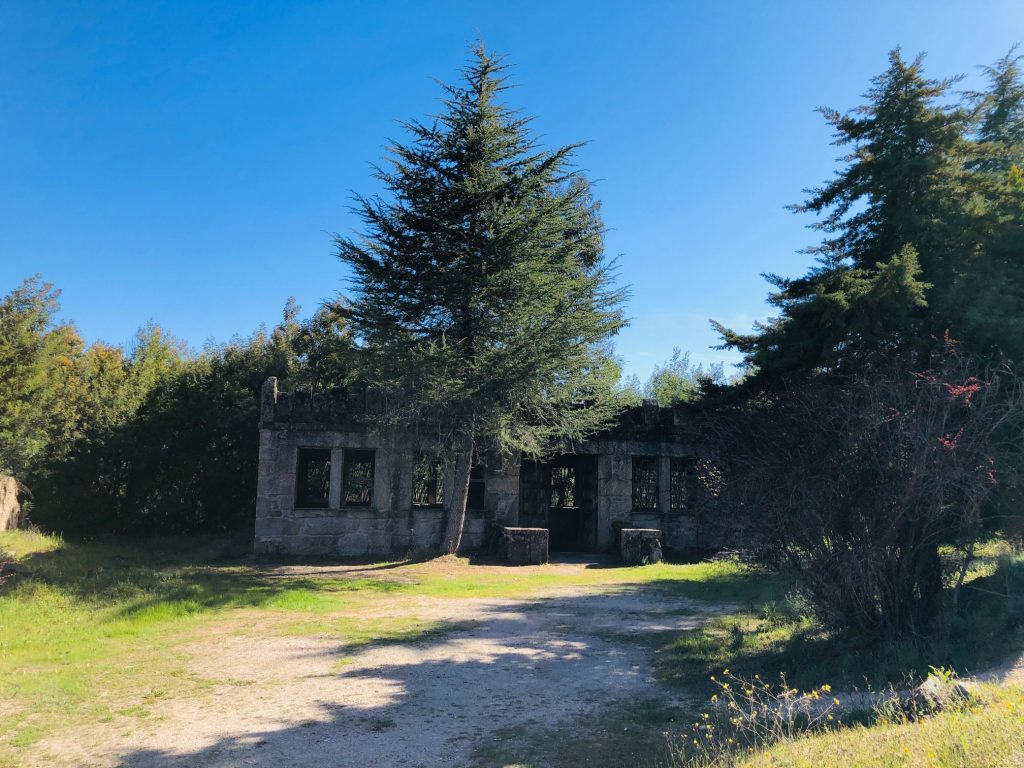


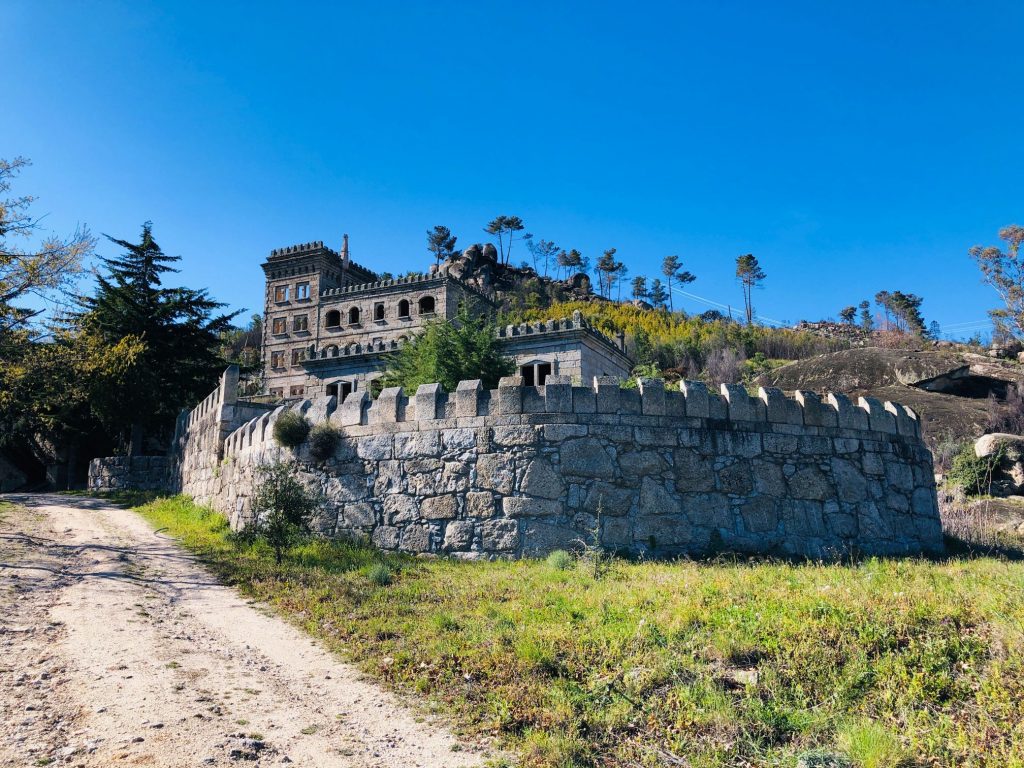


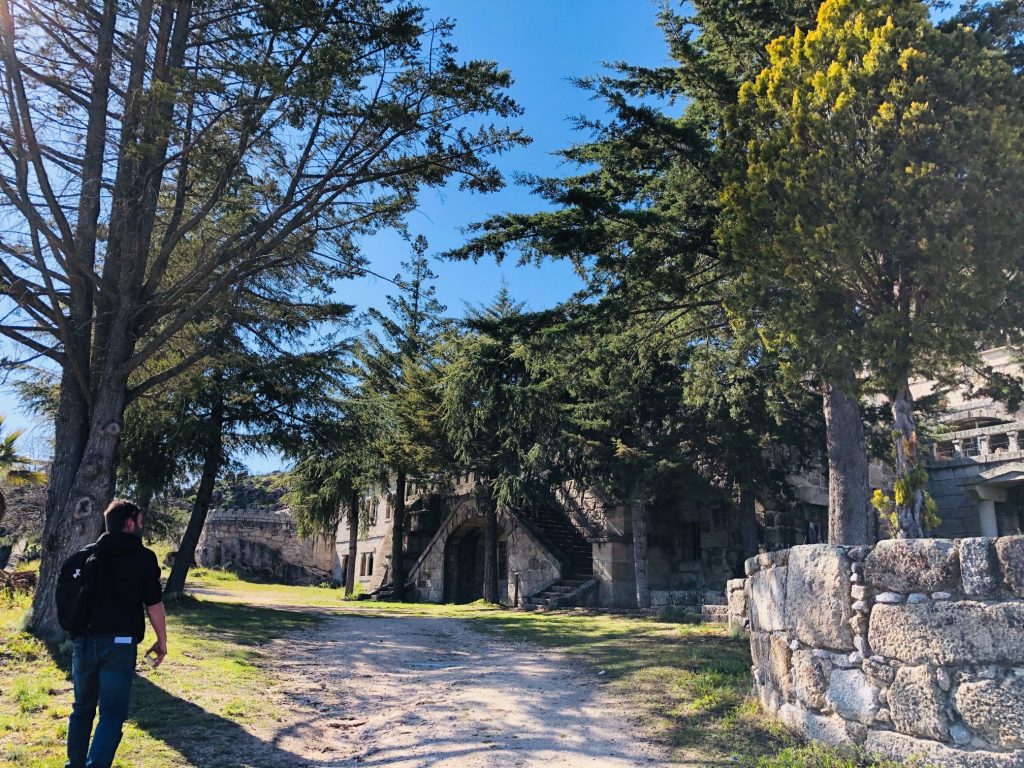


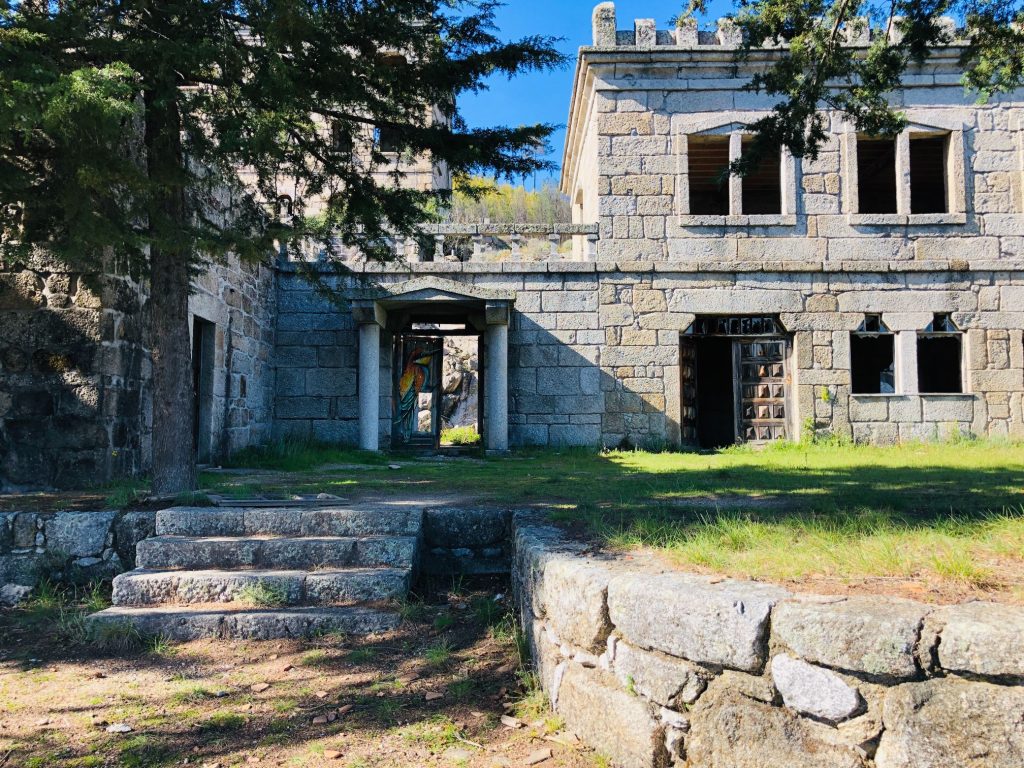


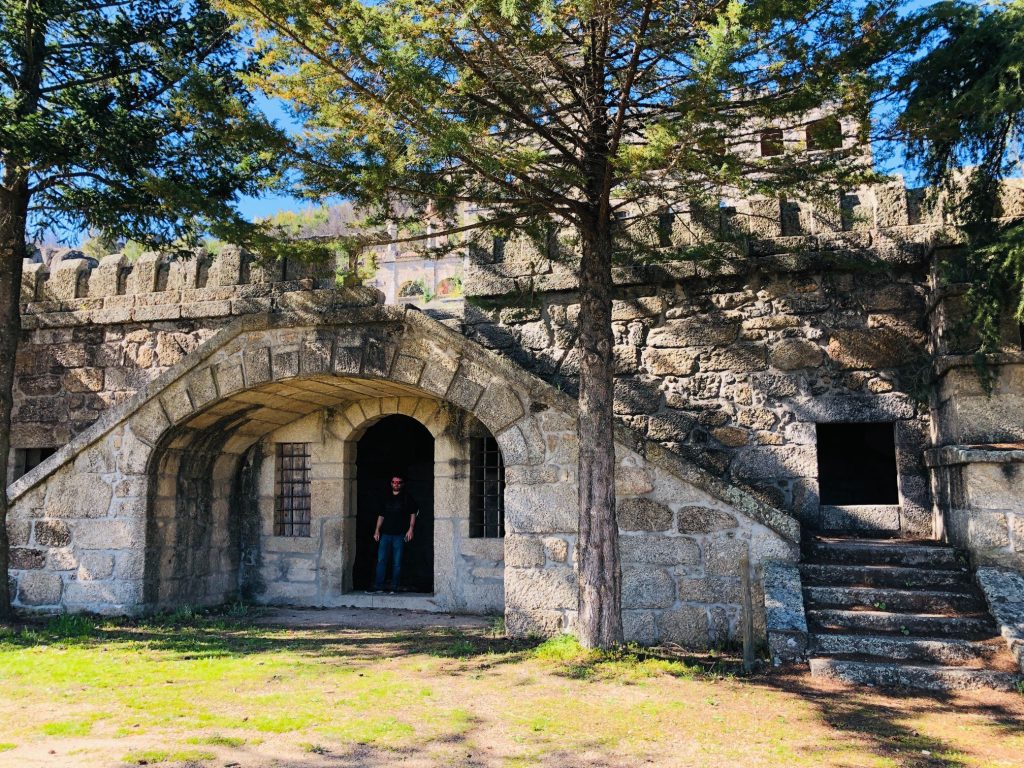


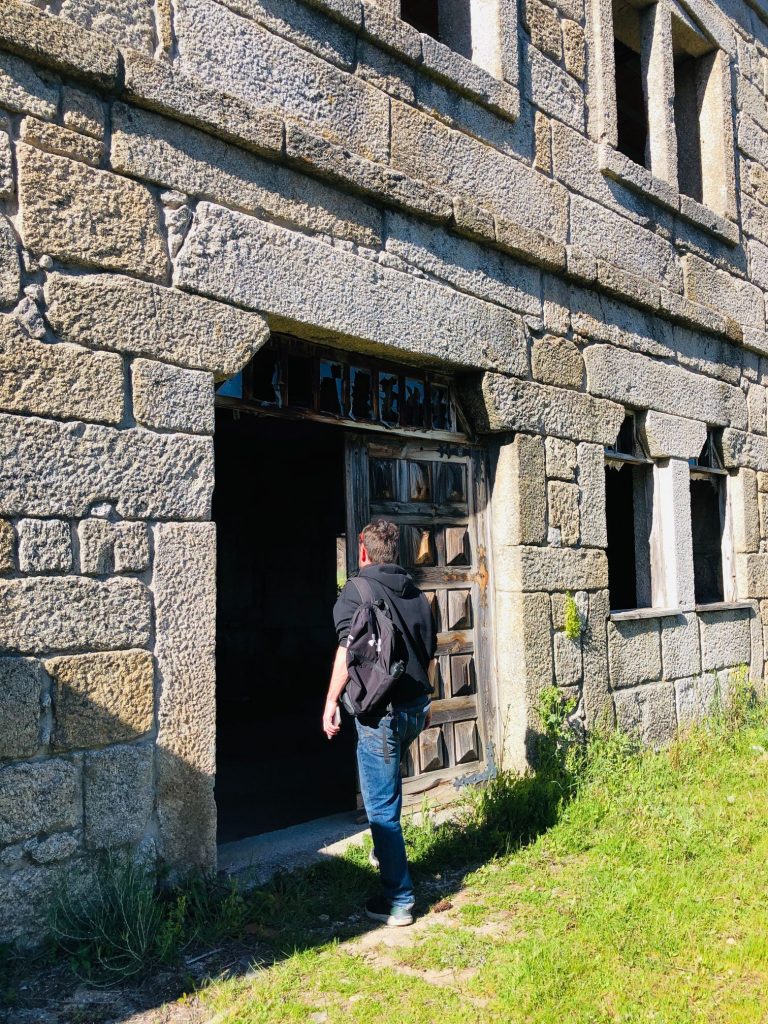


Hubby is appreciating how fabulous this door is! 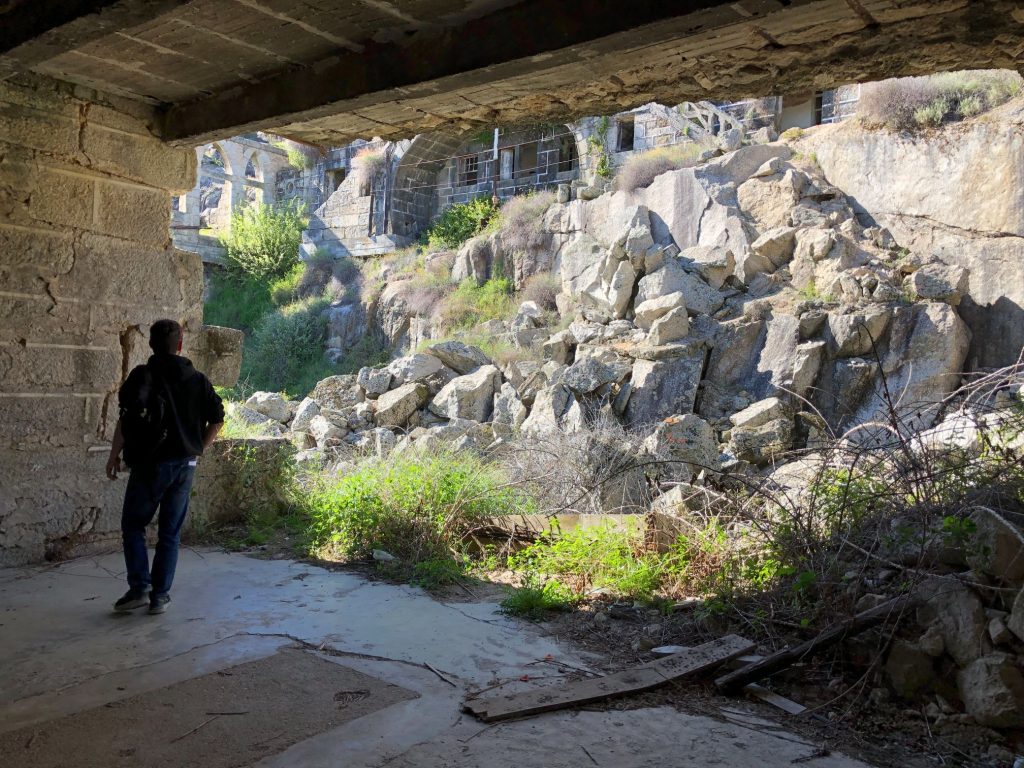


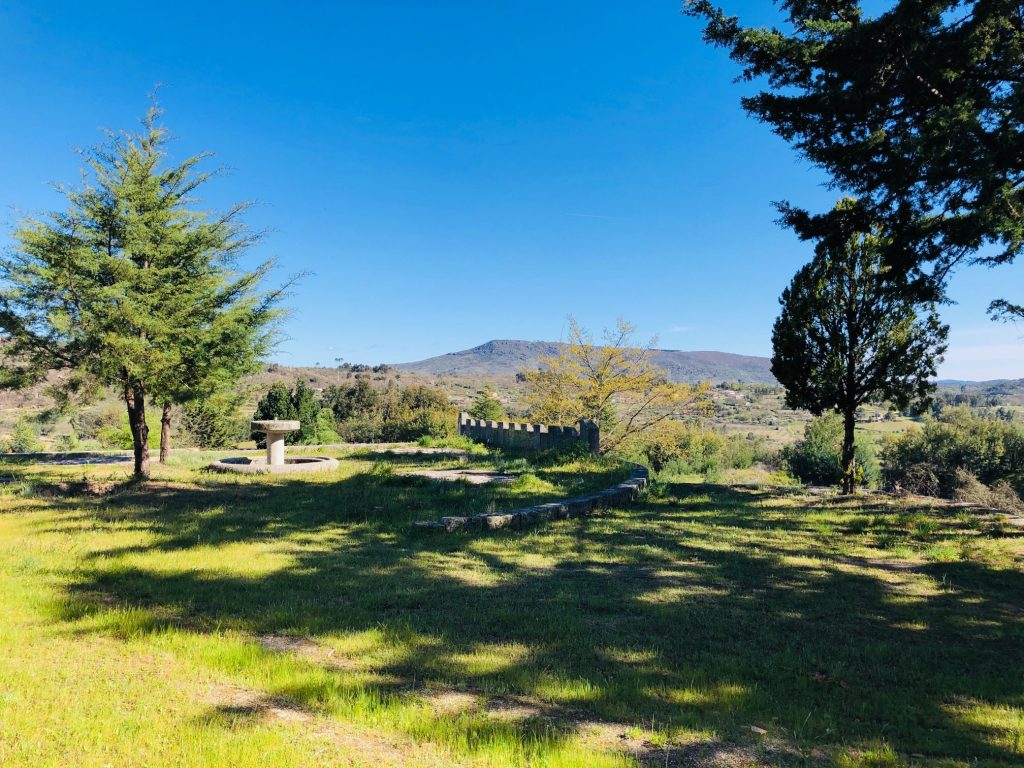


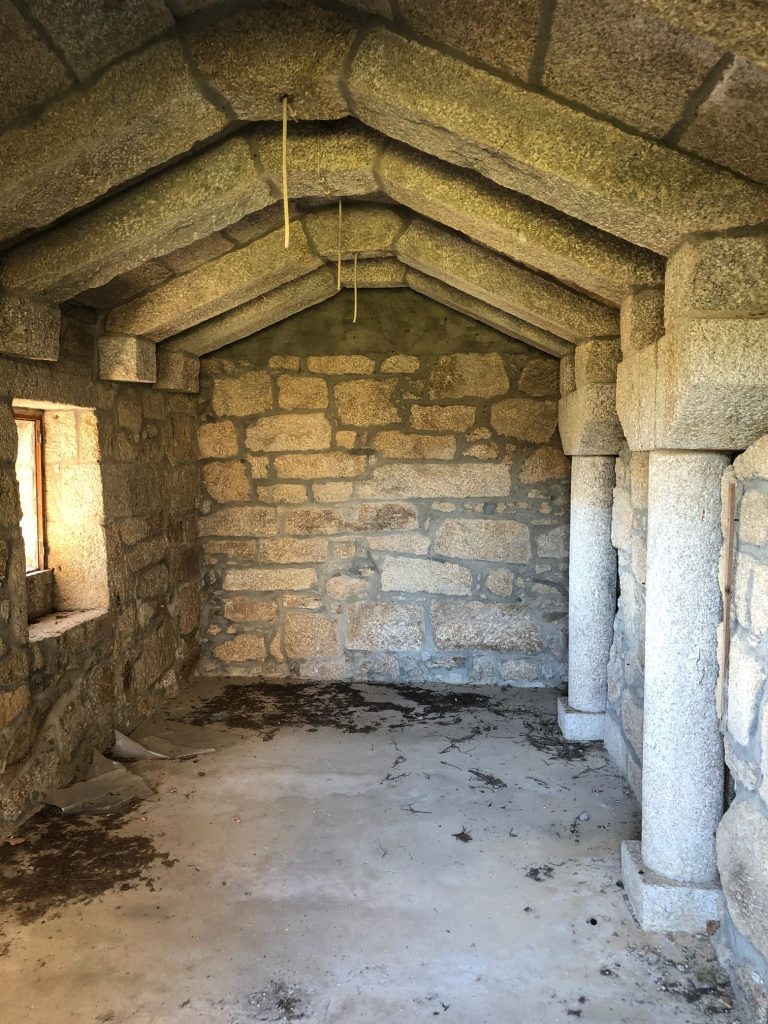


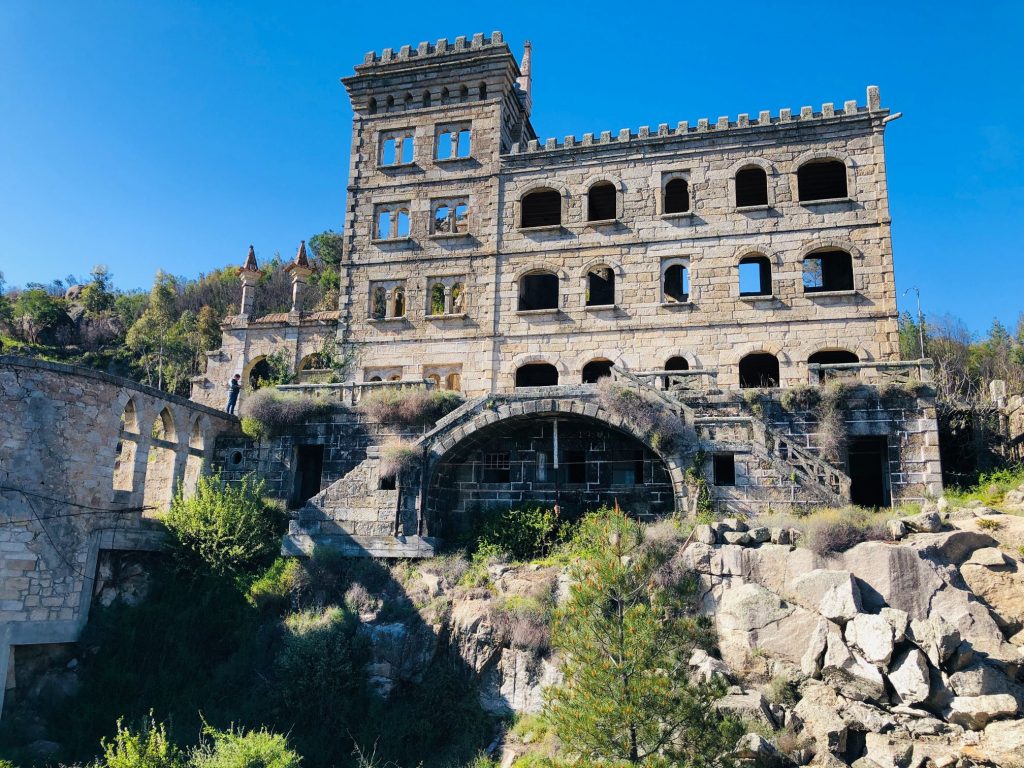


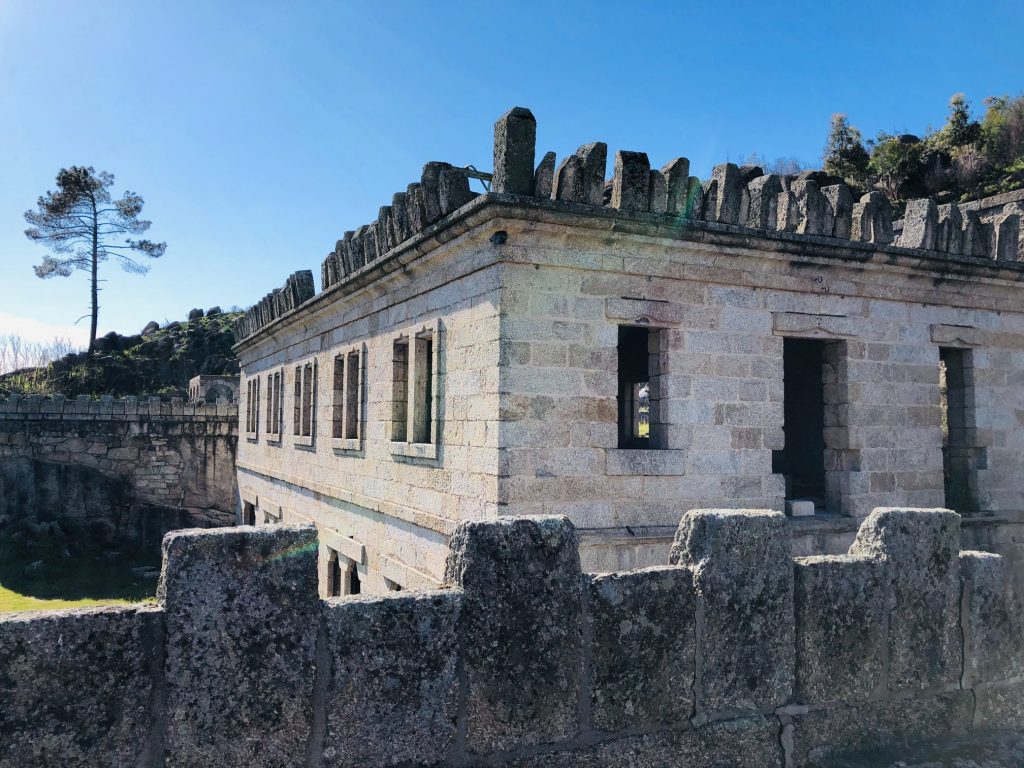


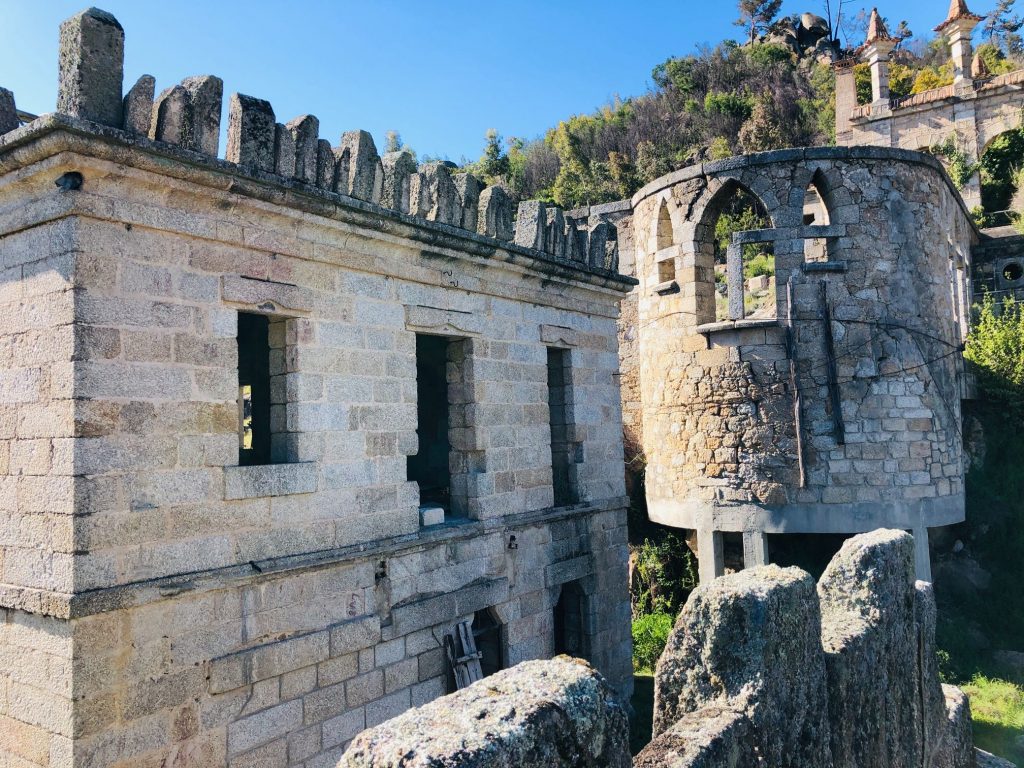


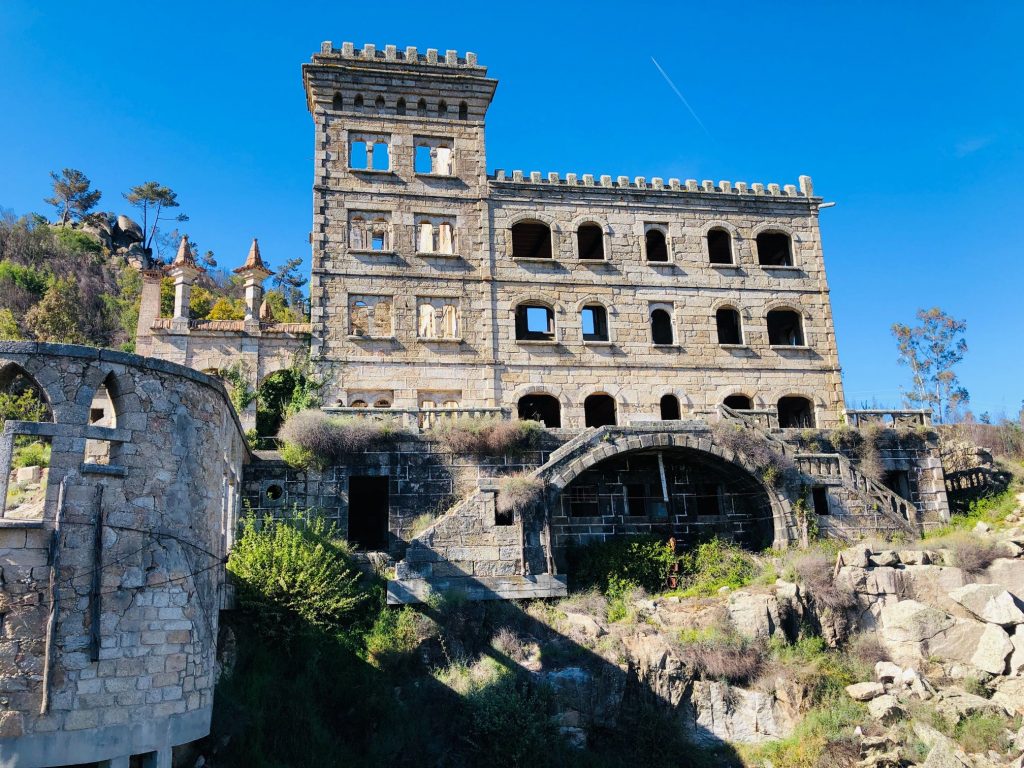


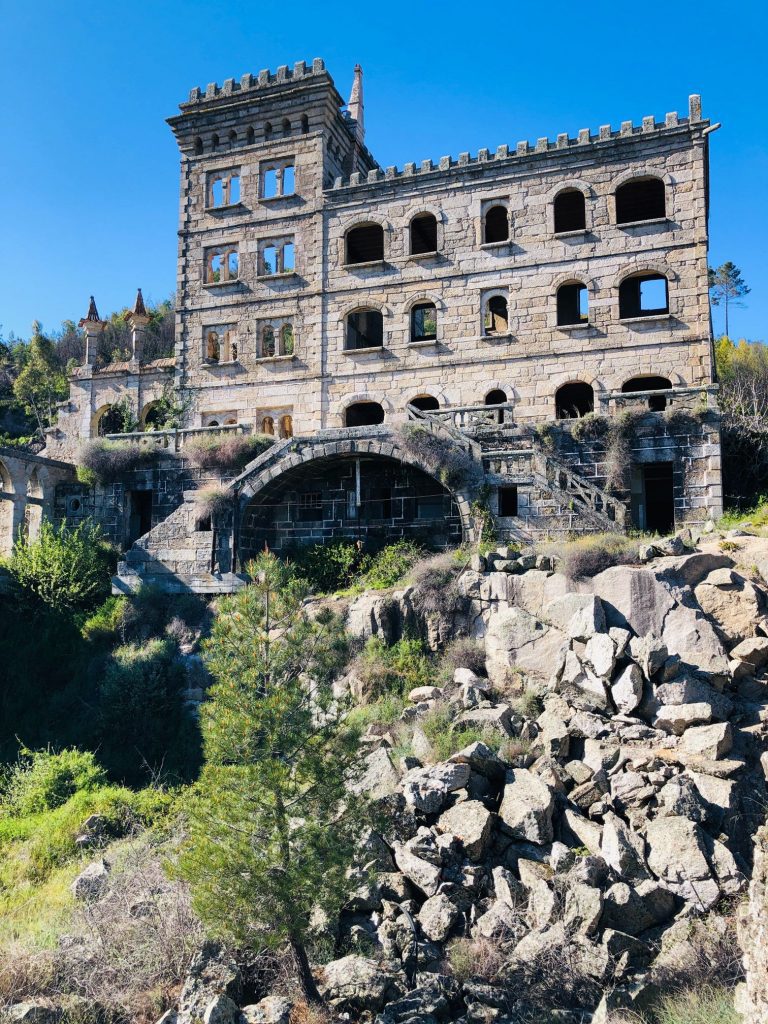


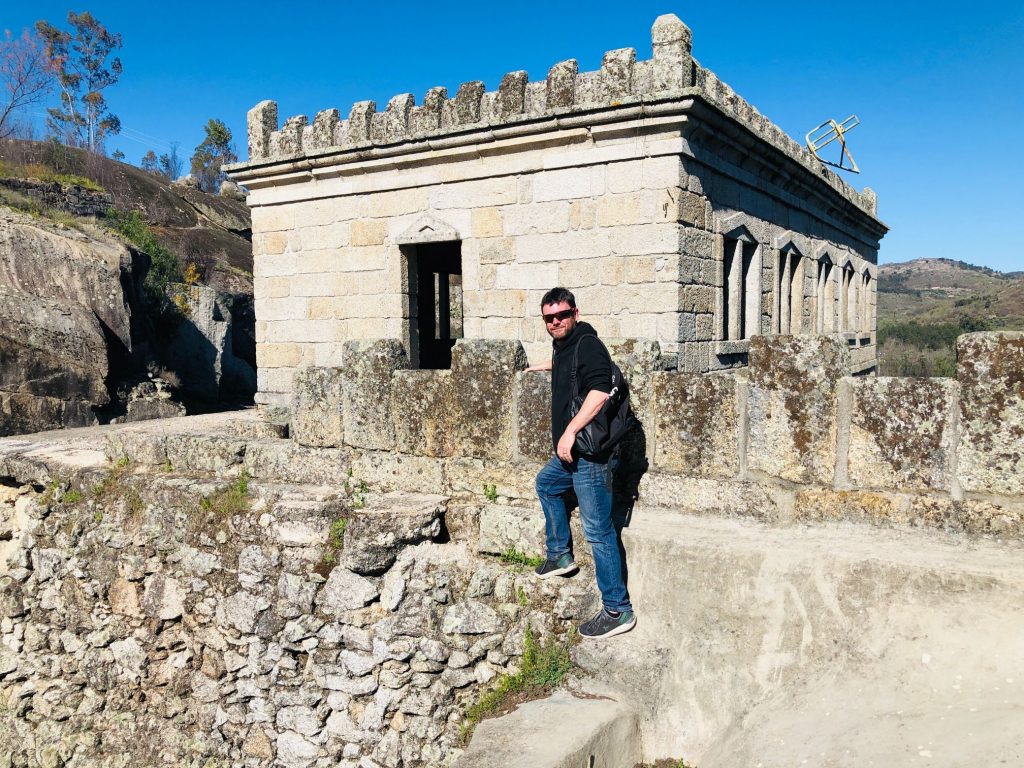


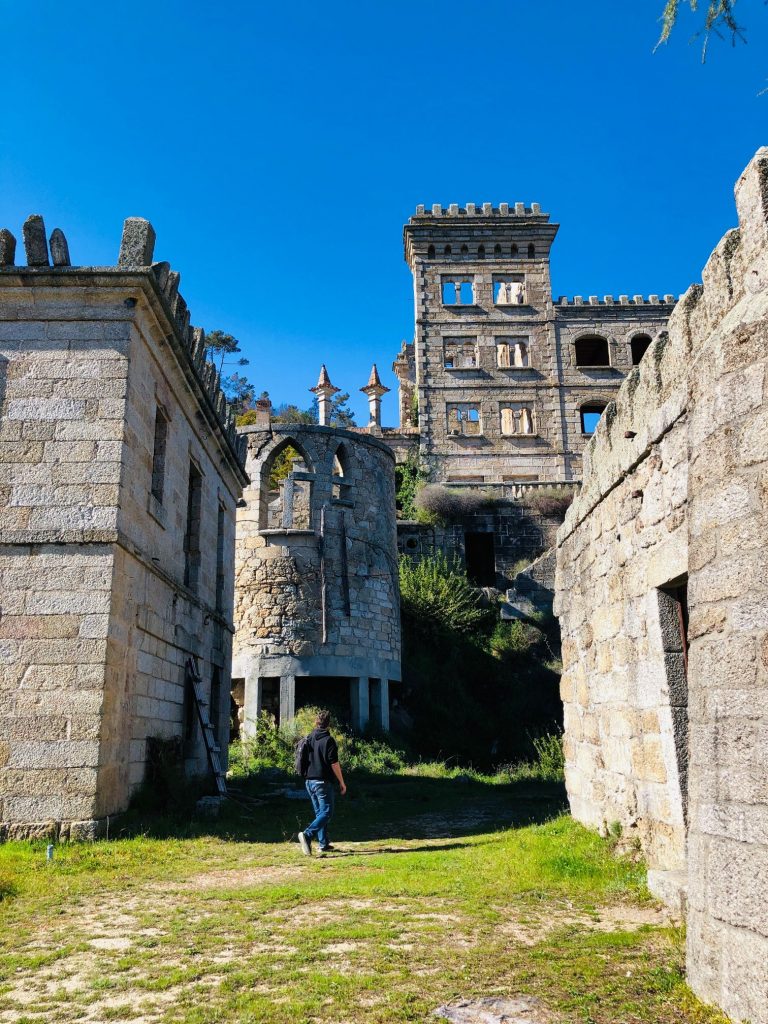


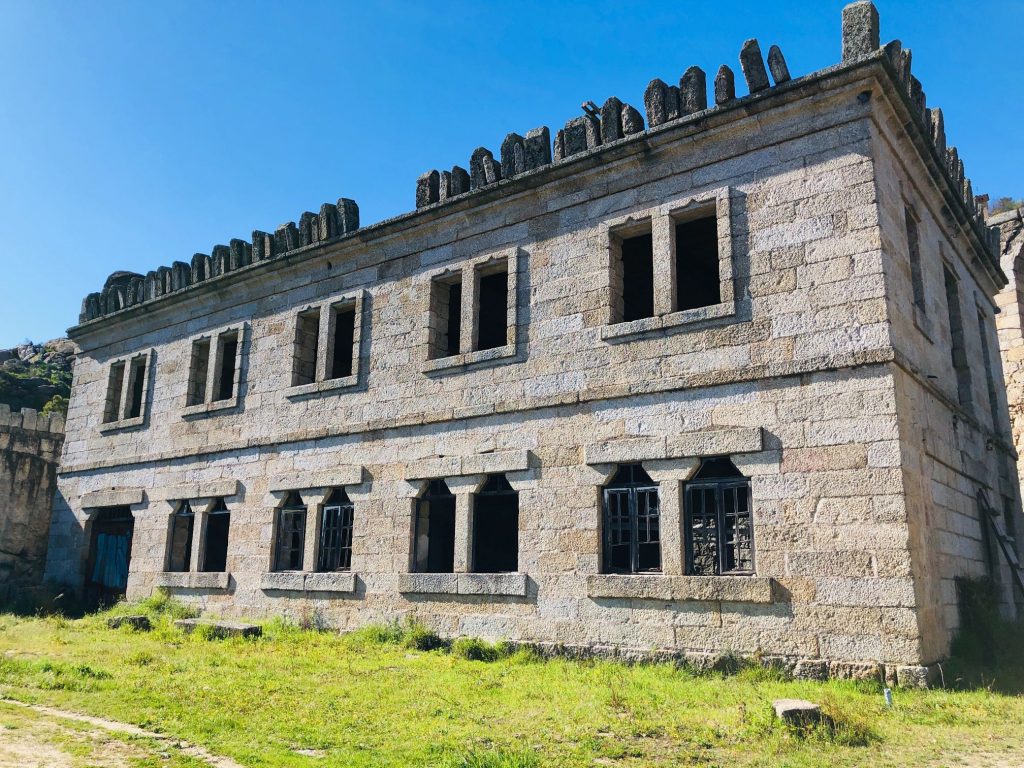


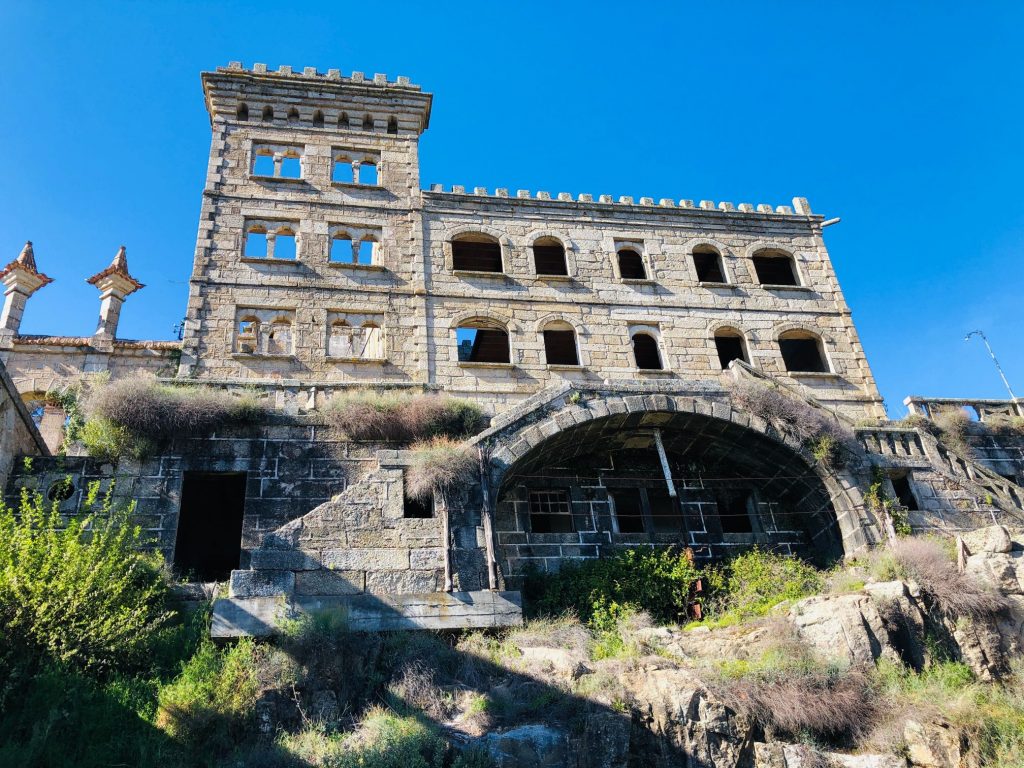


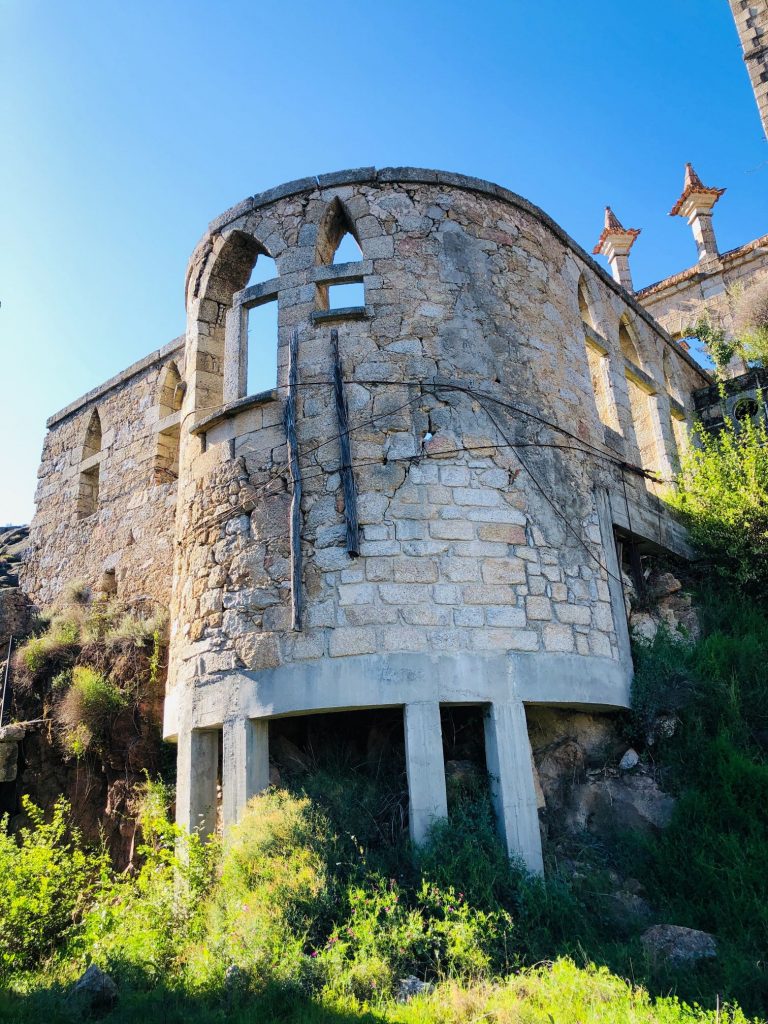


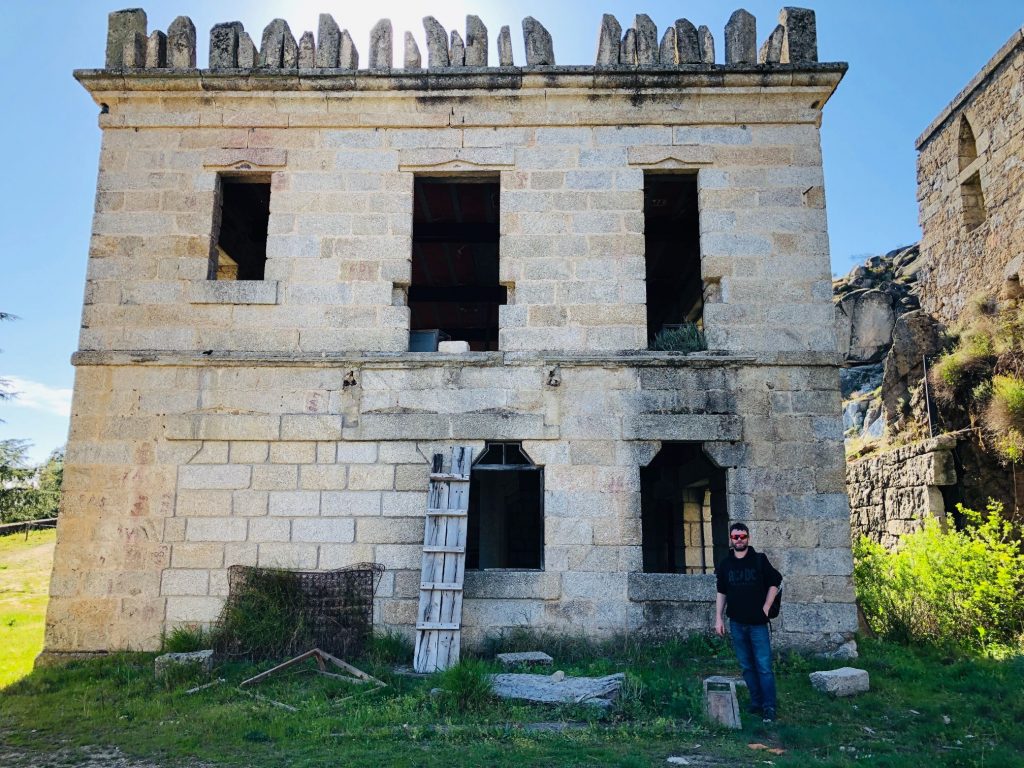


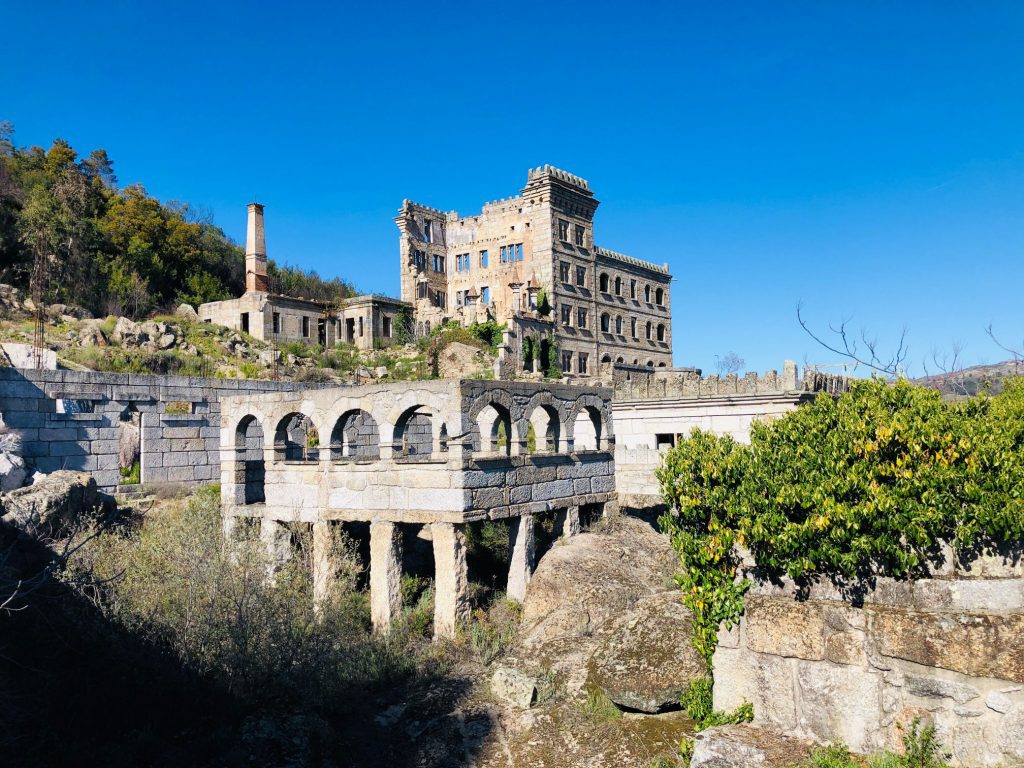


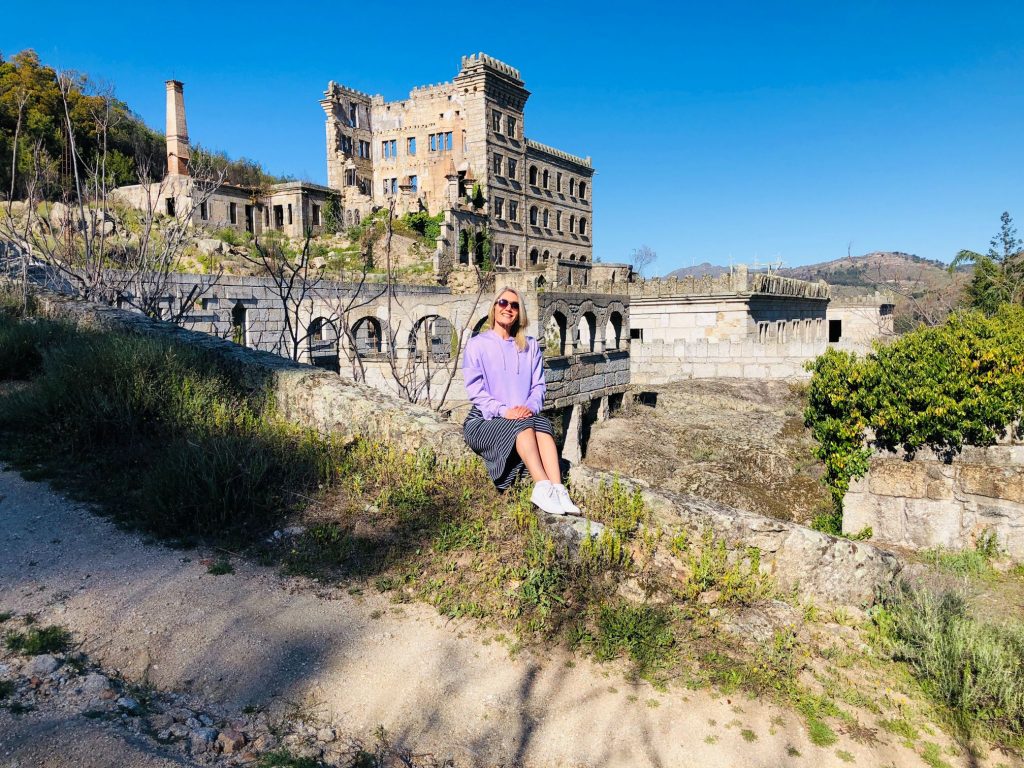


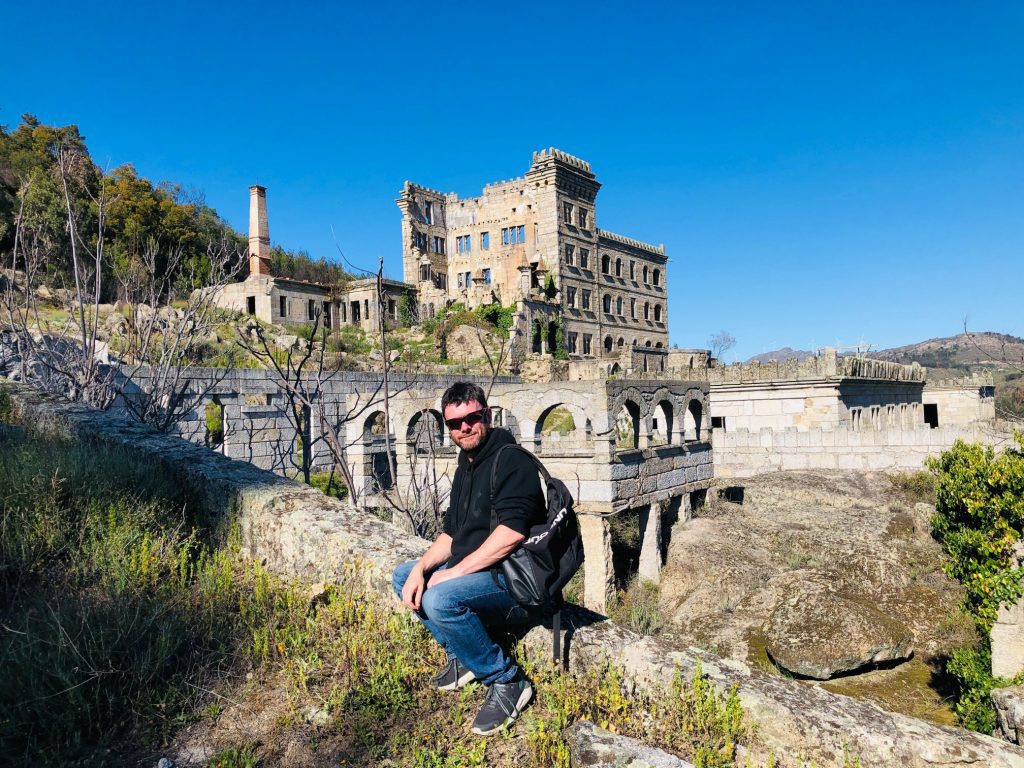


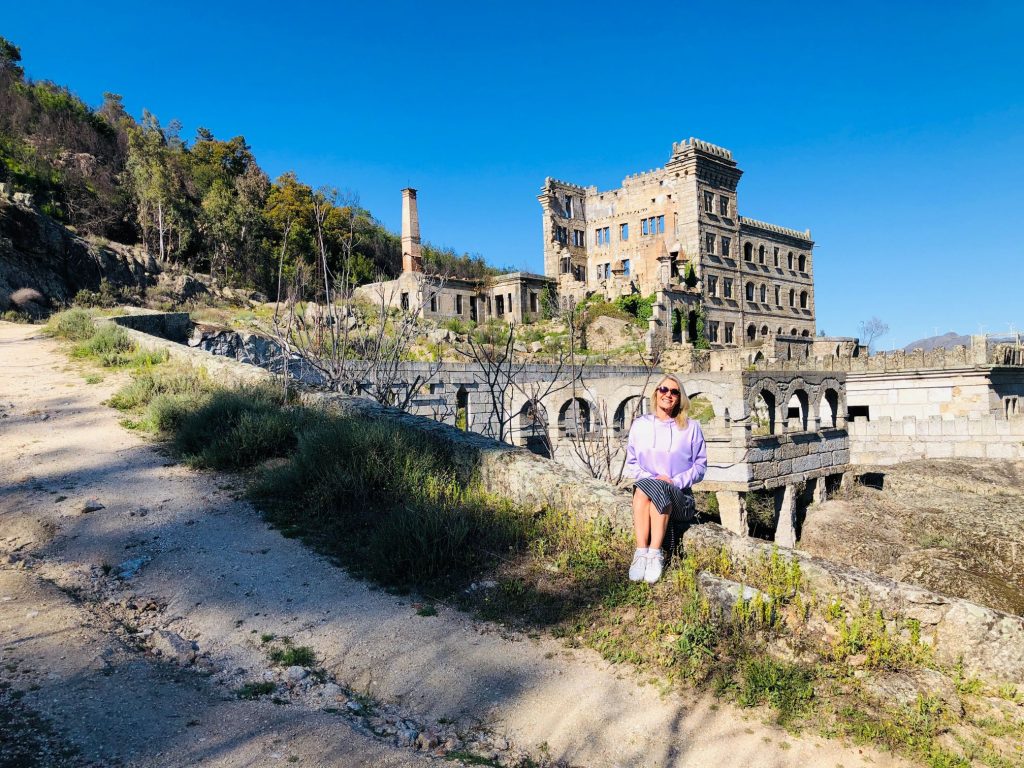


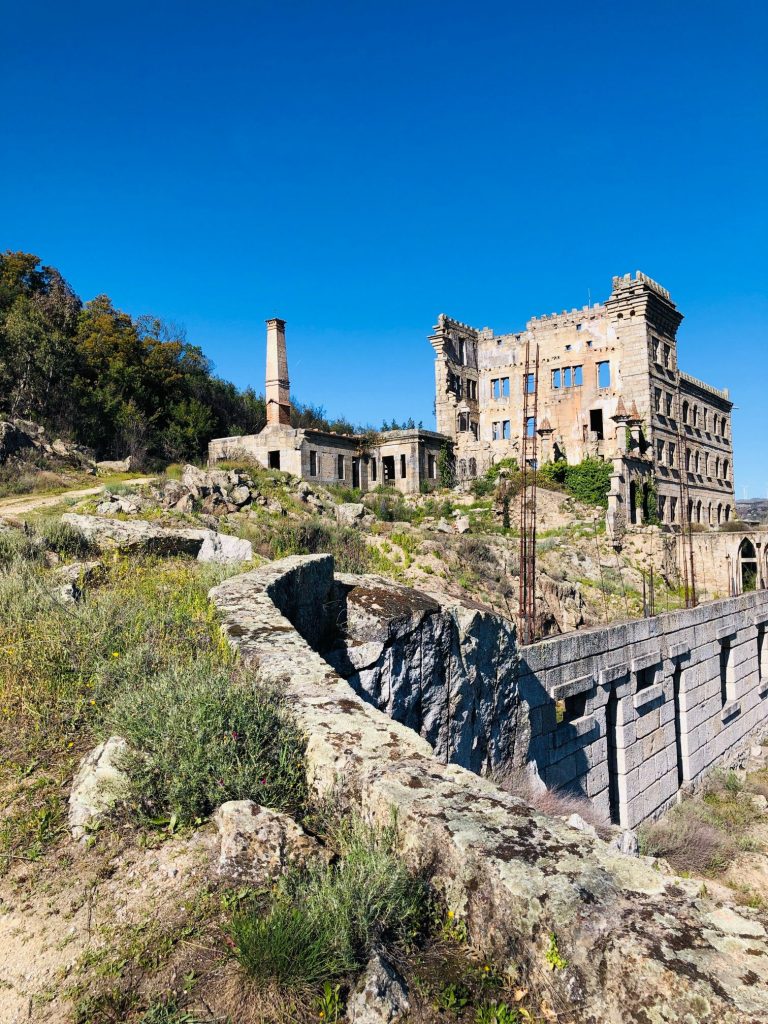


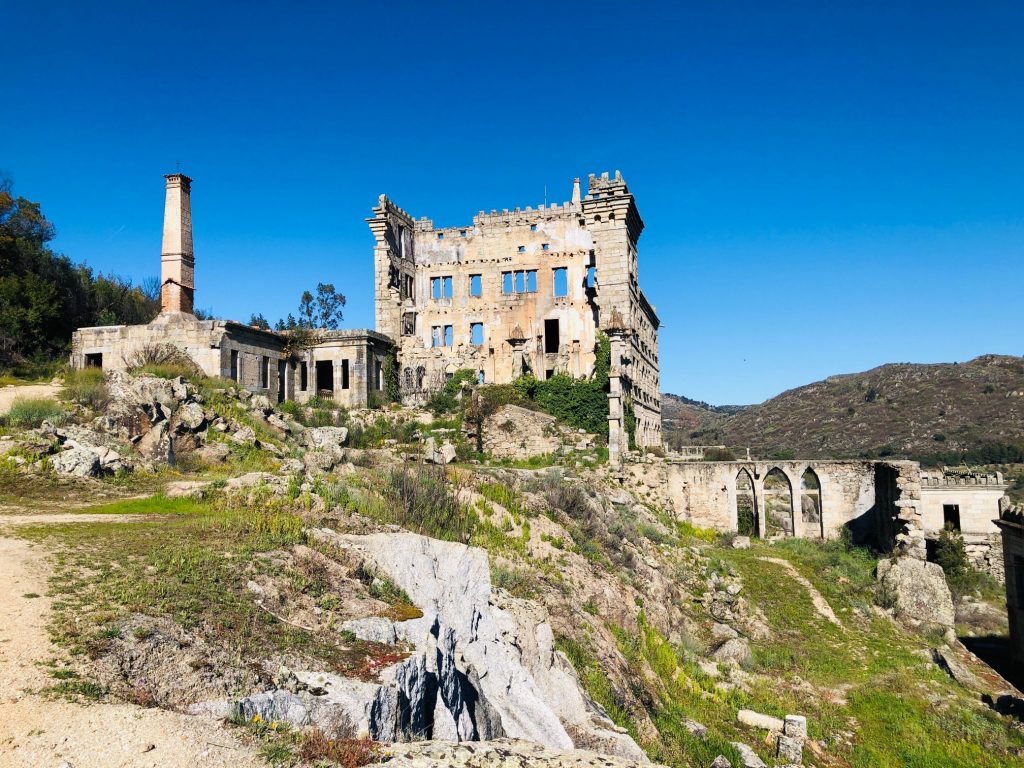


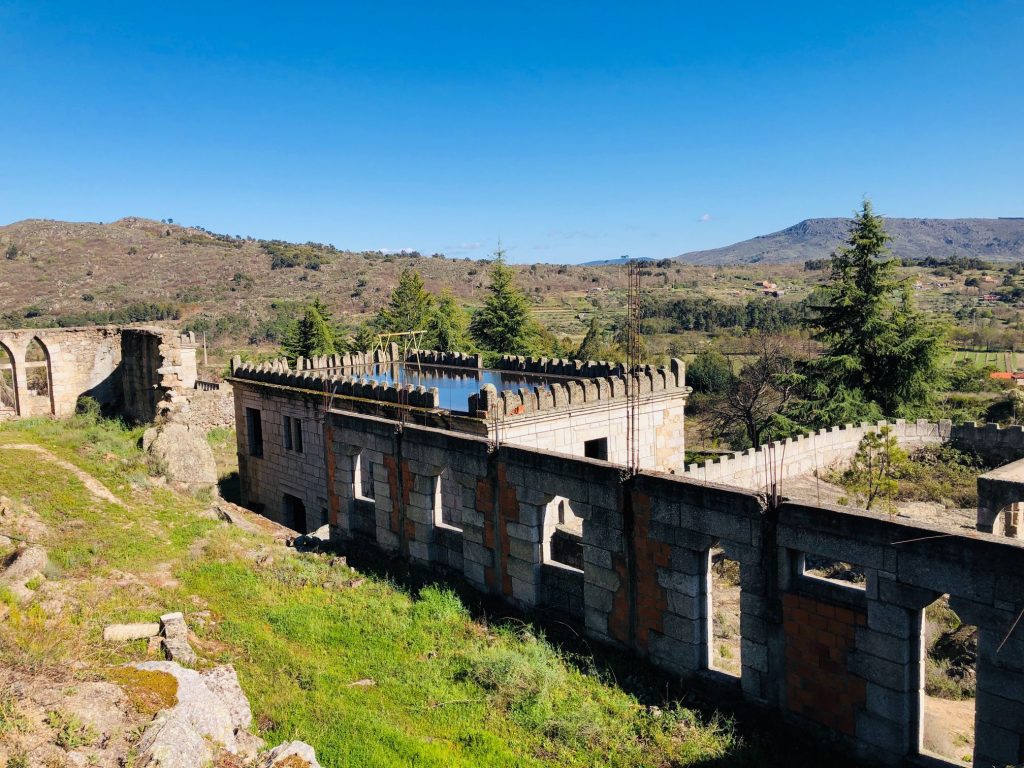


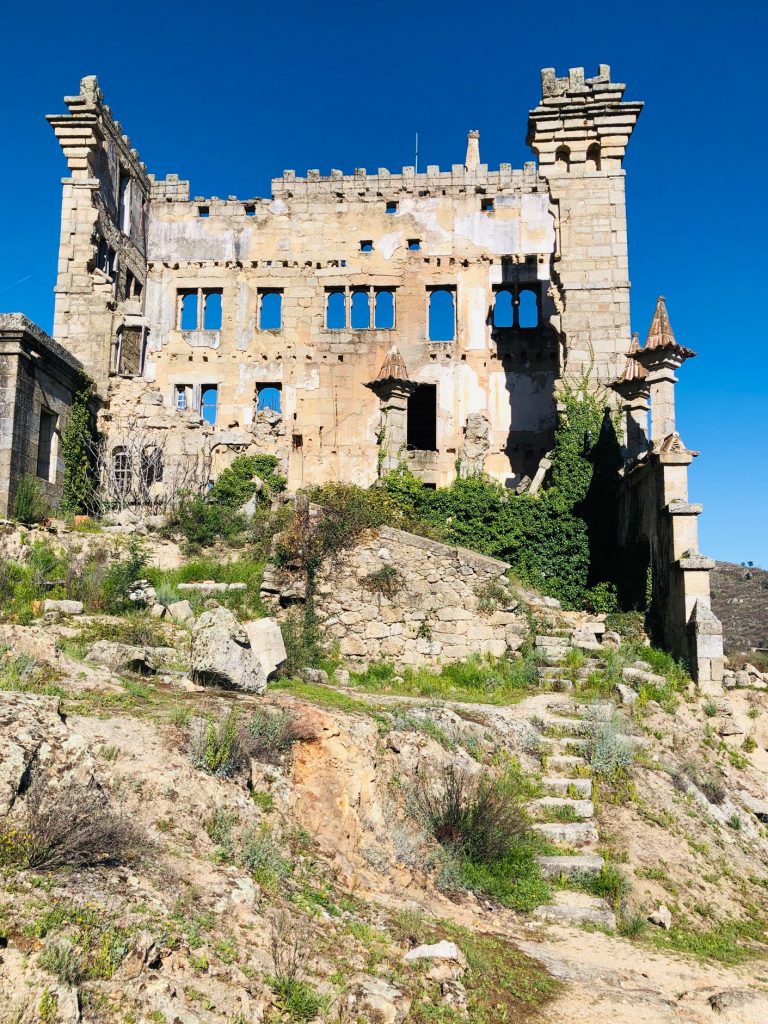


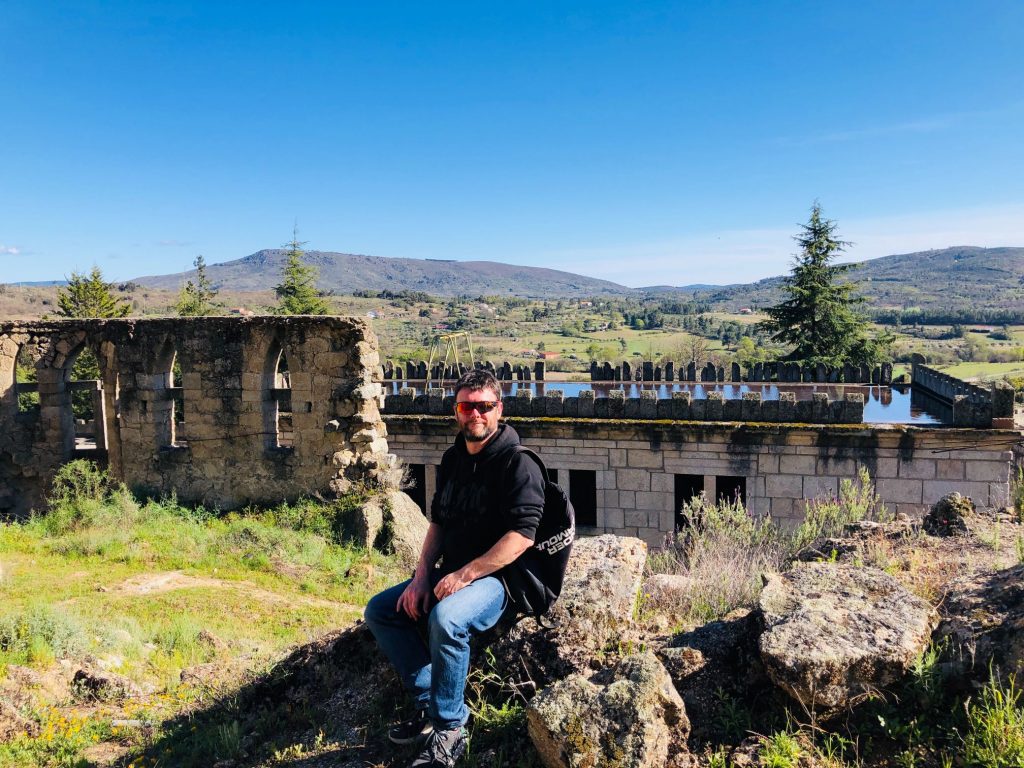


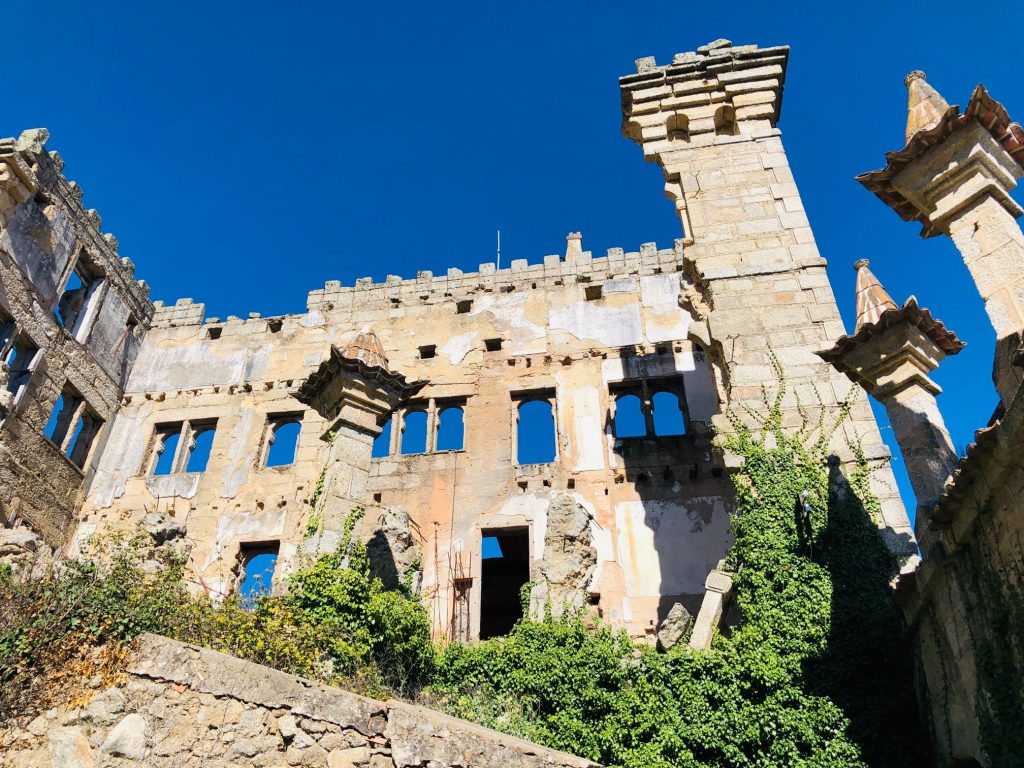


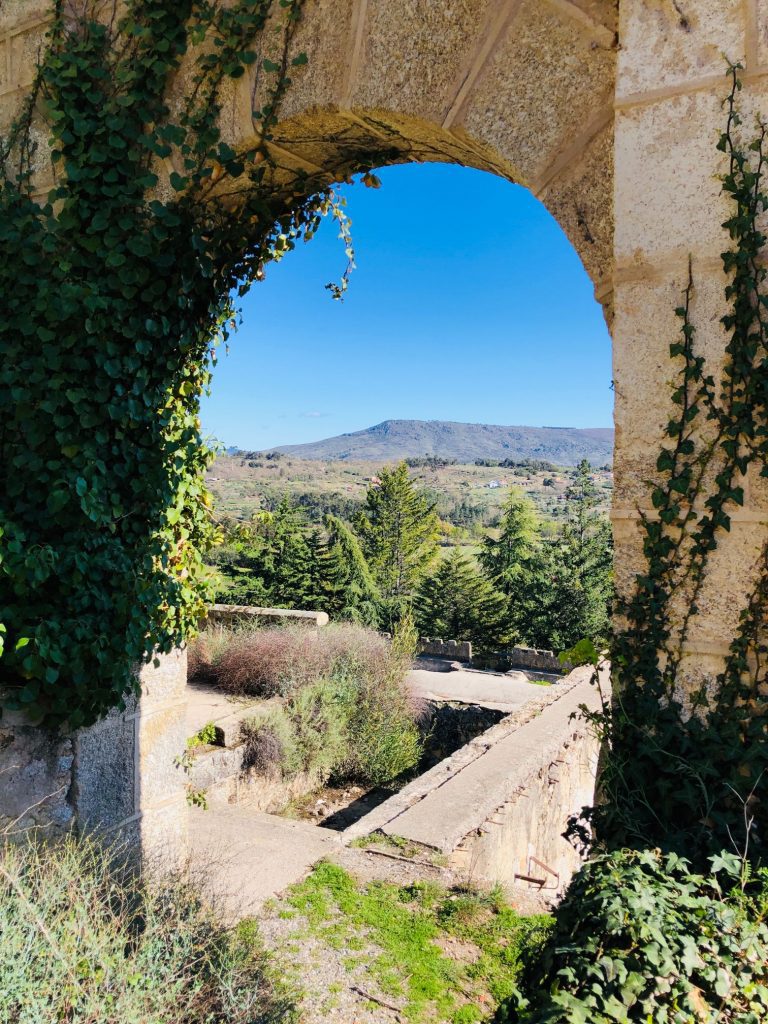


Embraced by Nature – I Love this photo 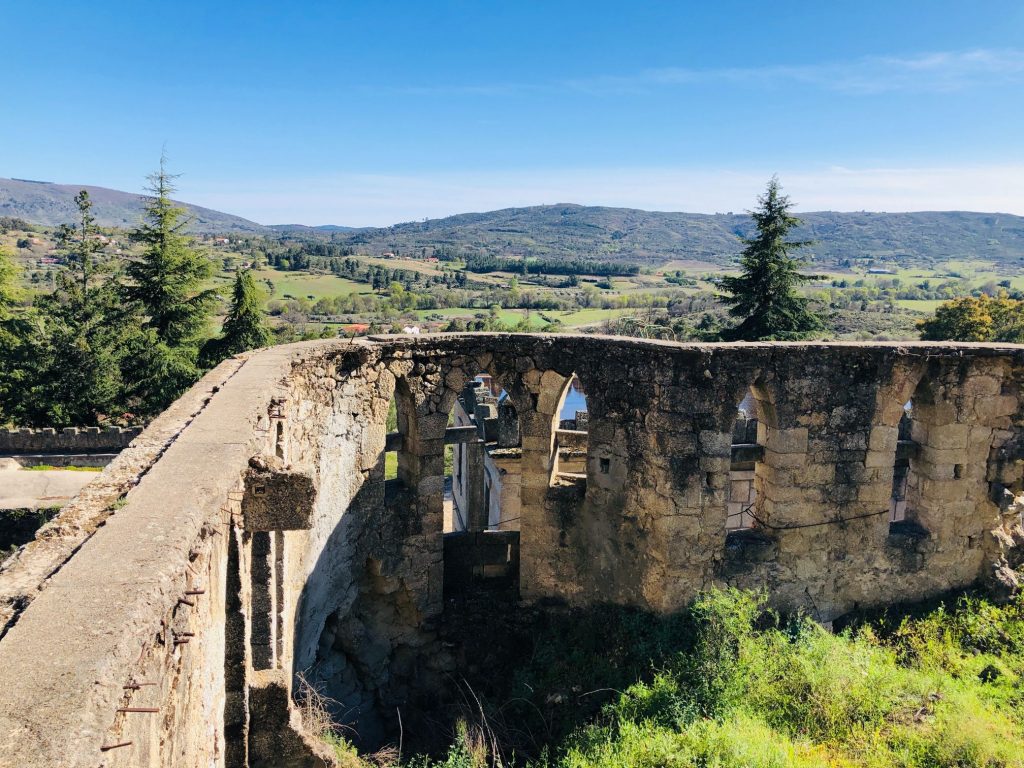


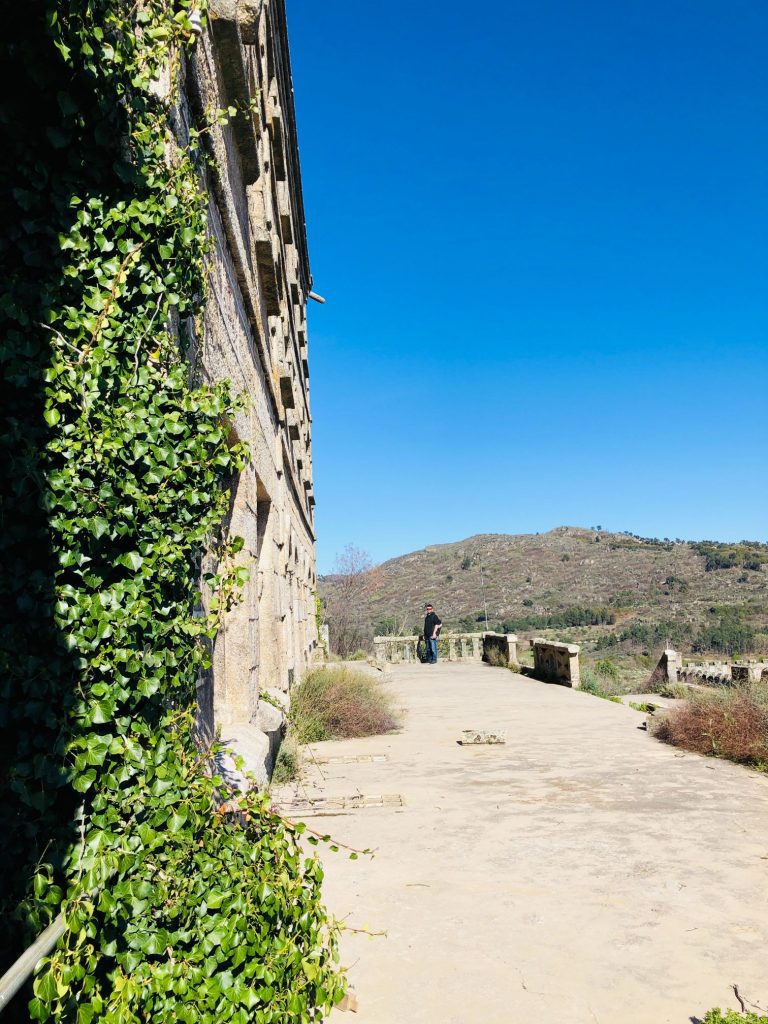


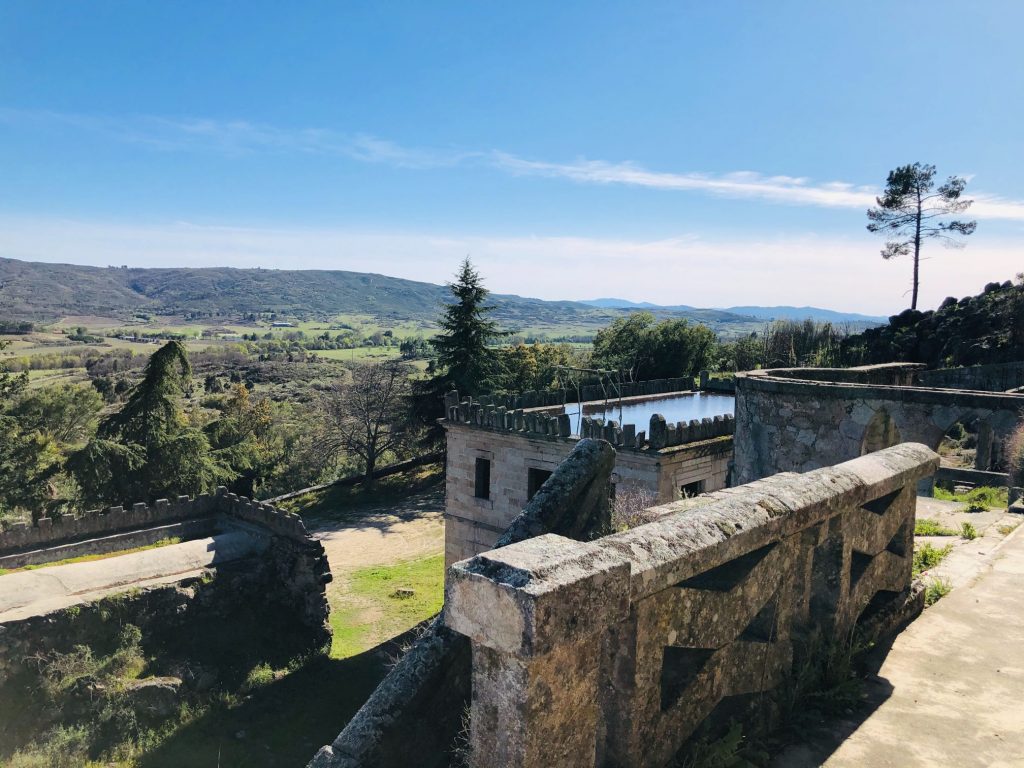


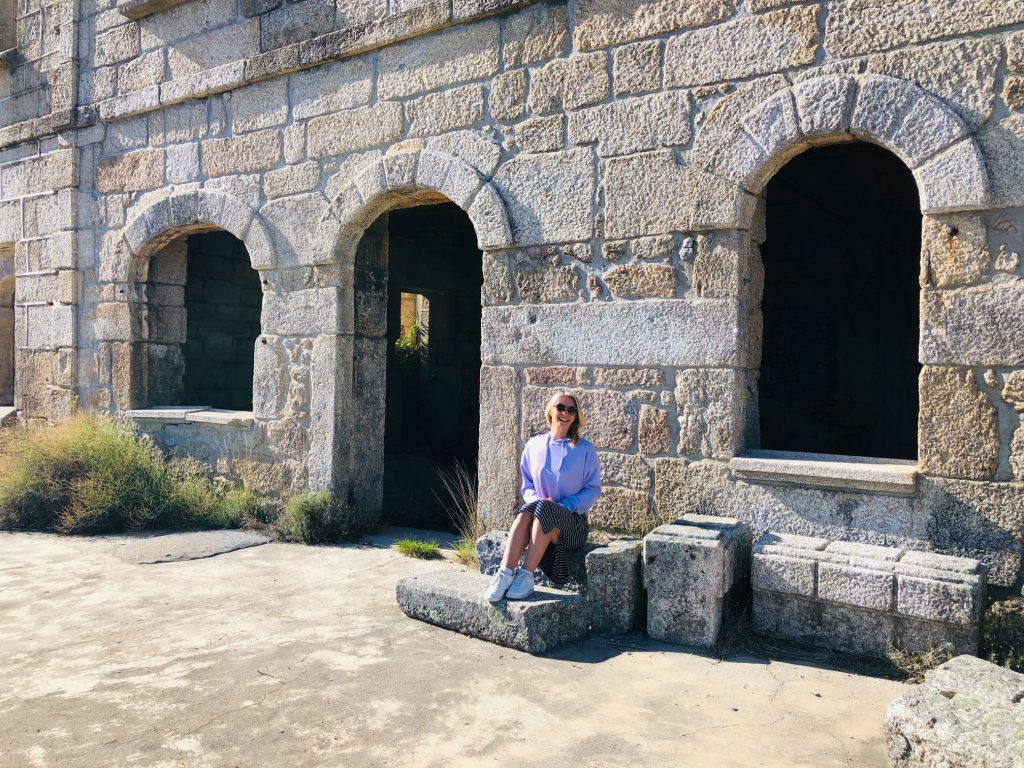


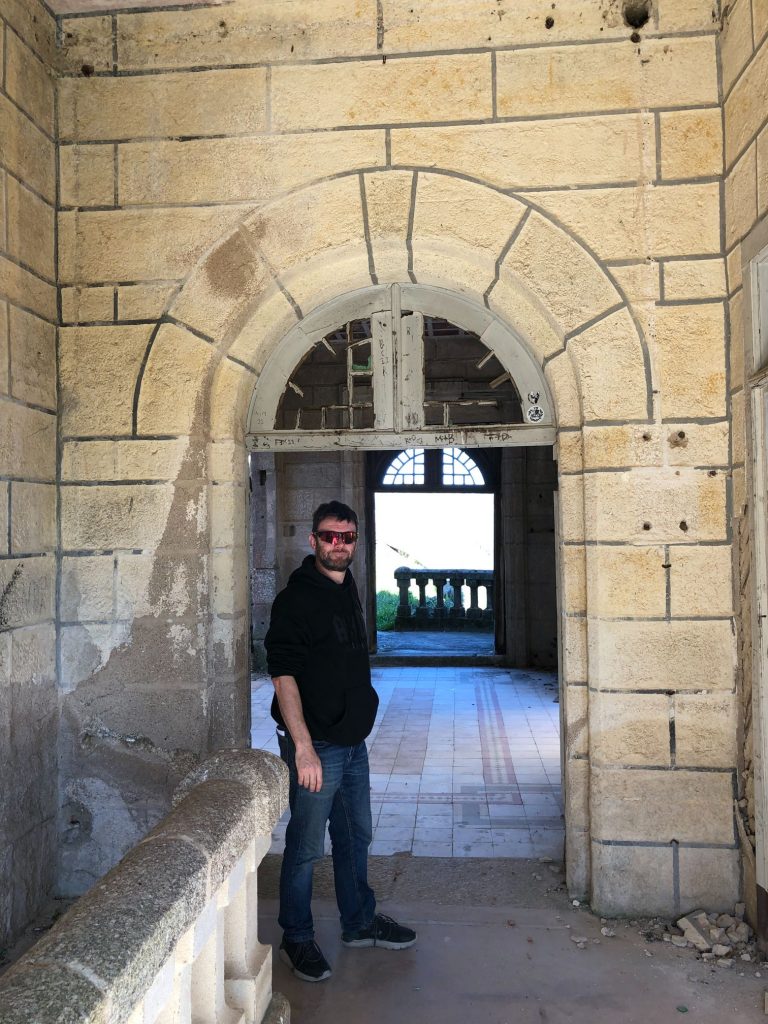


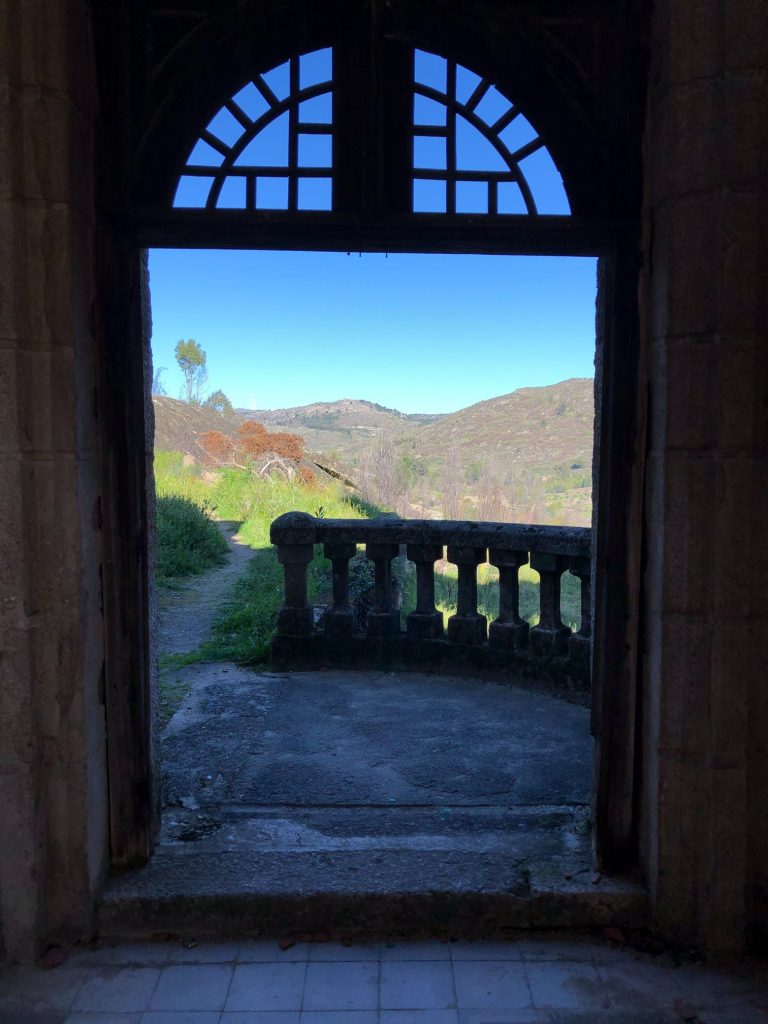


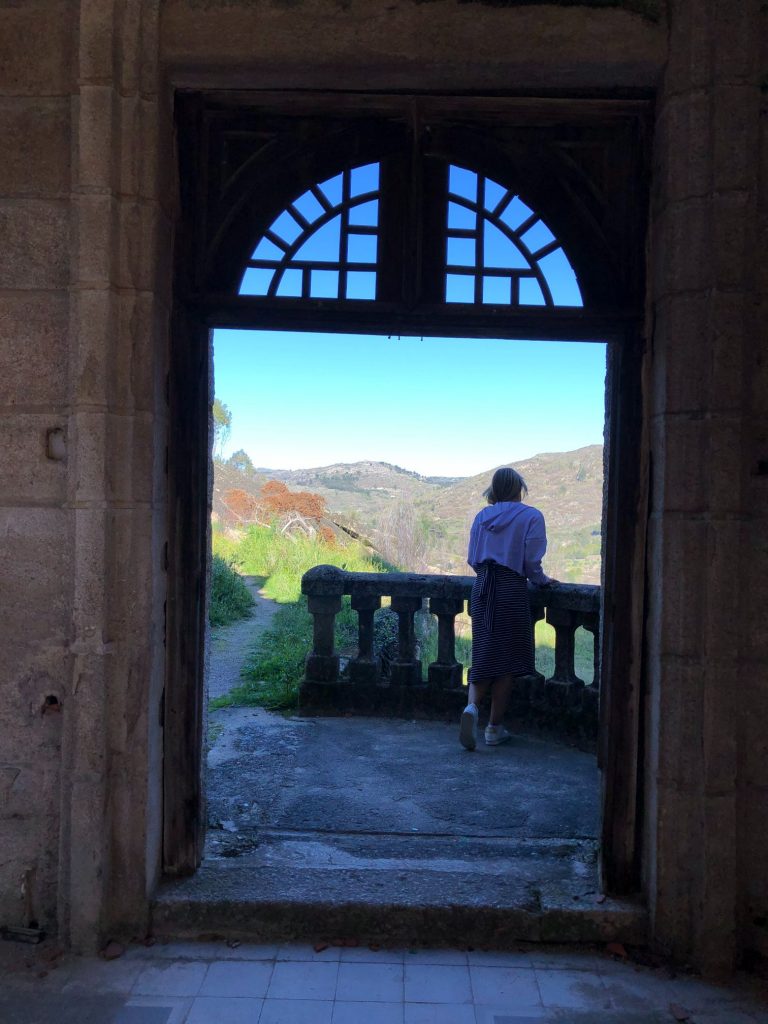


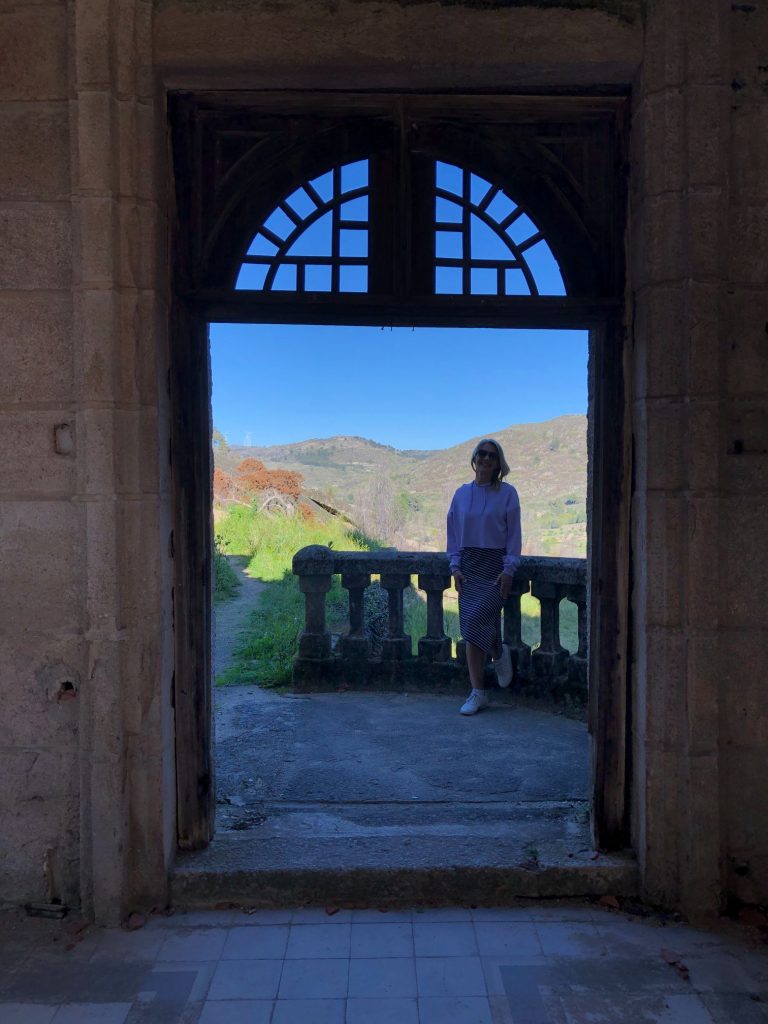


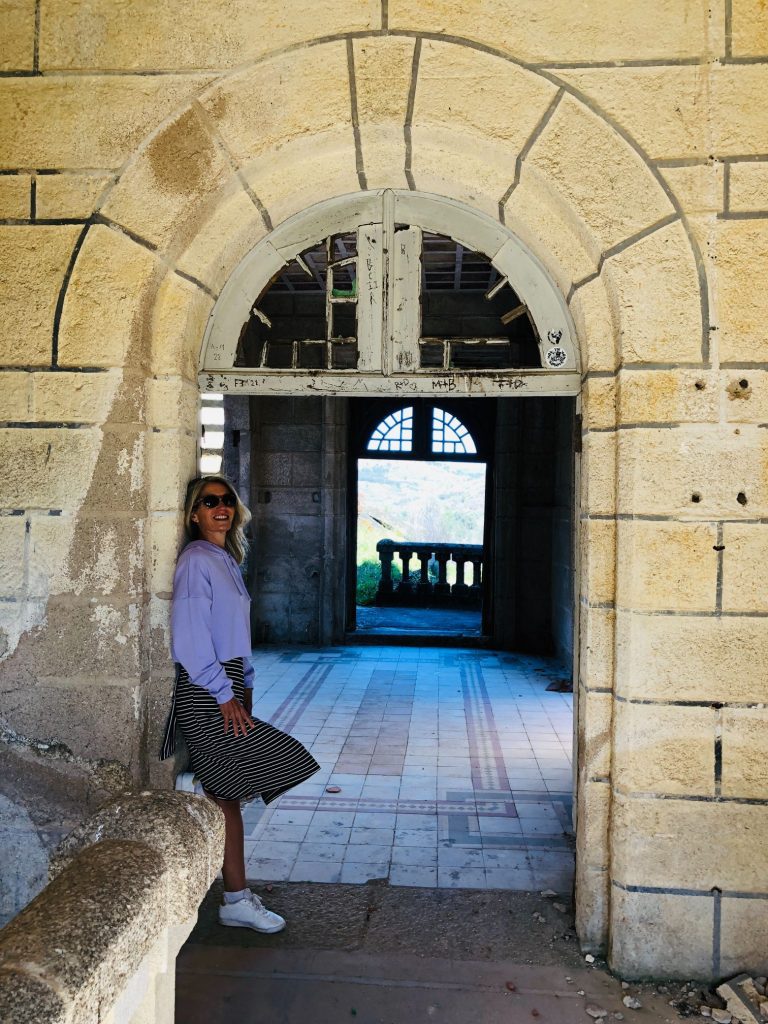


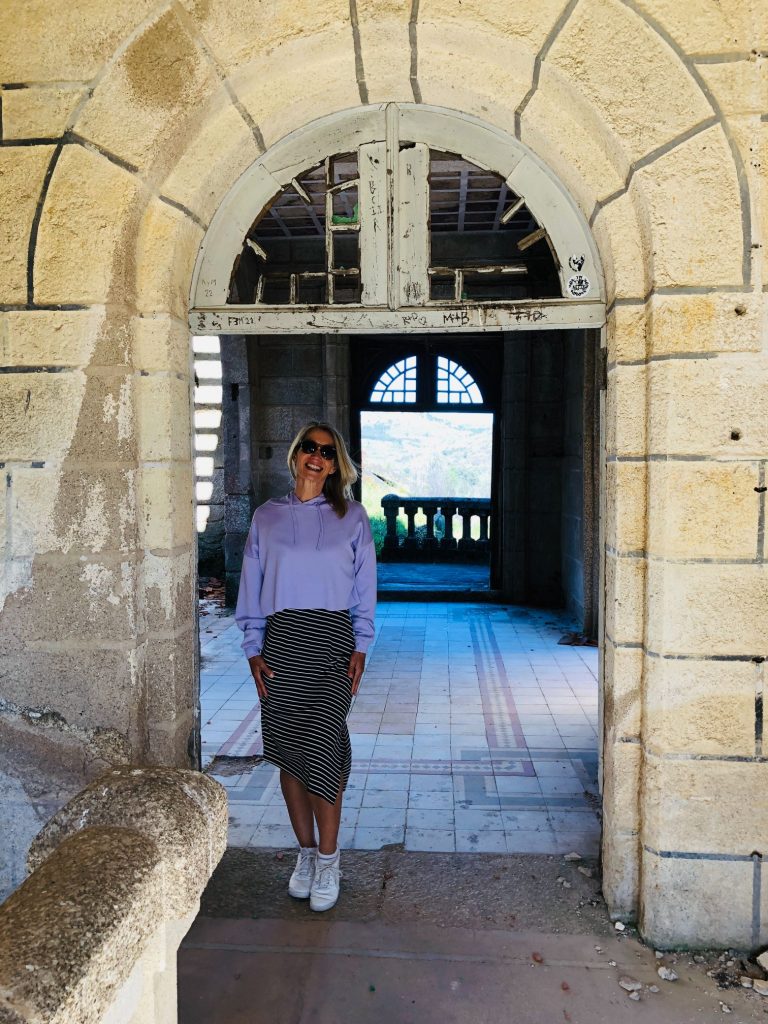


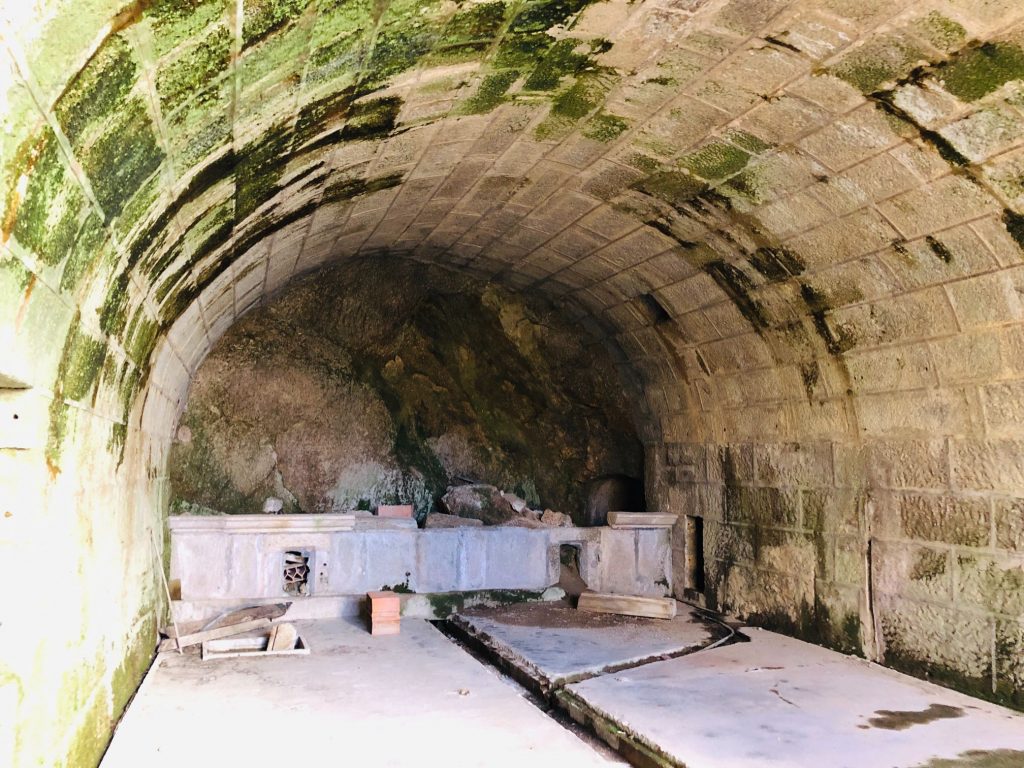


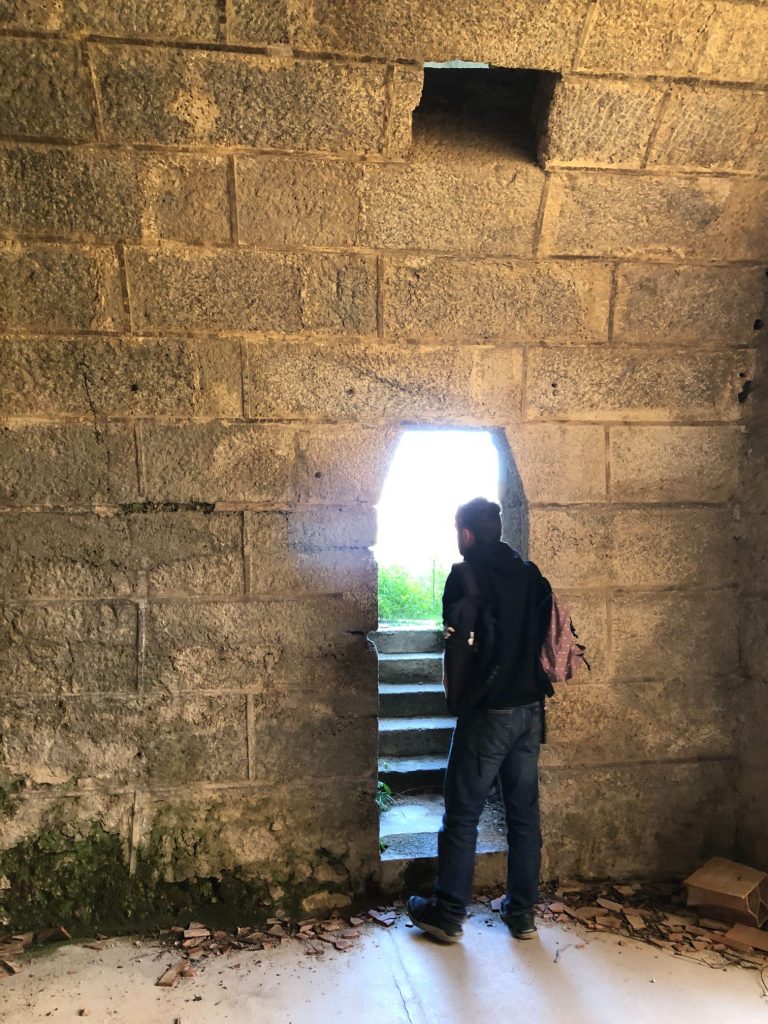


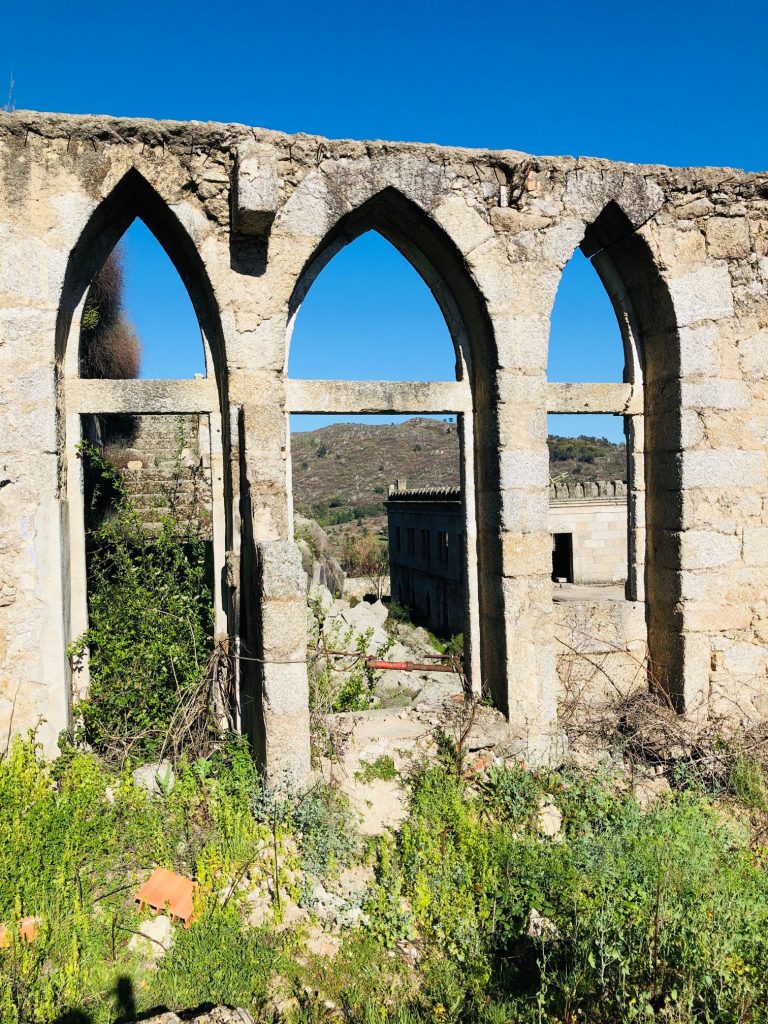


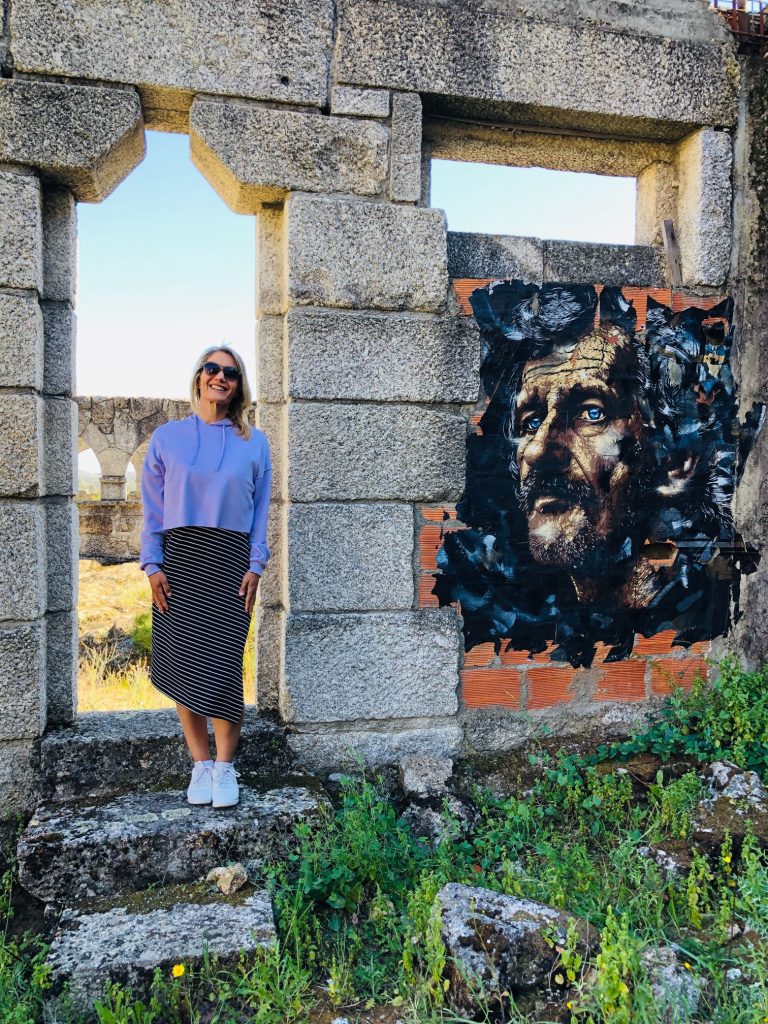


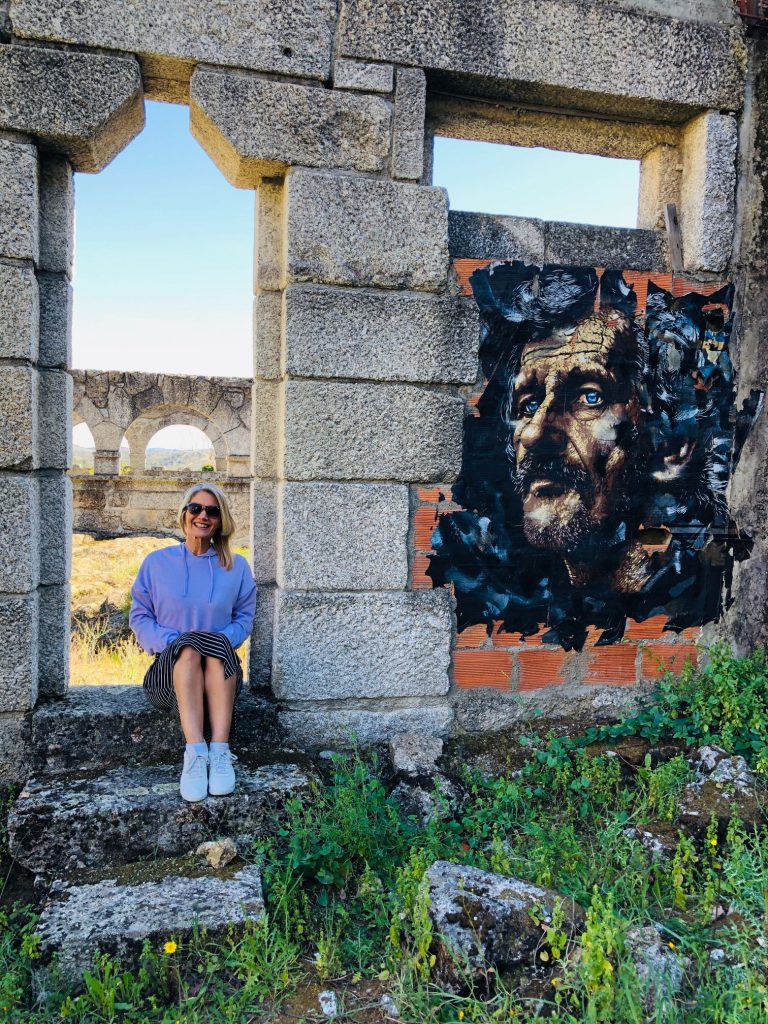


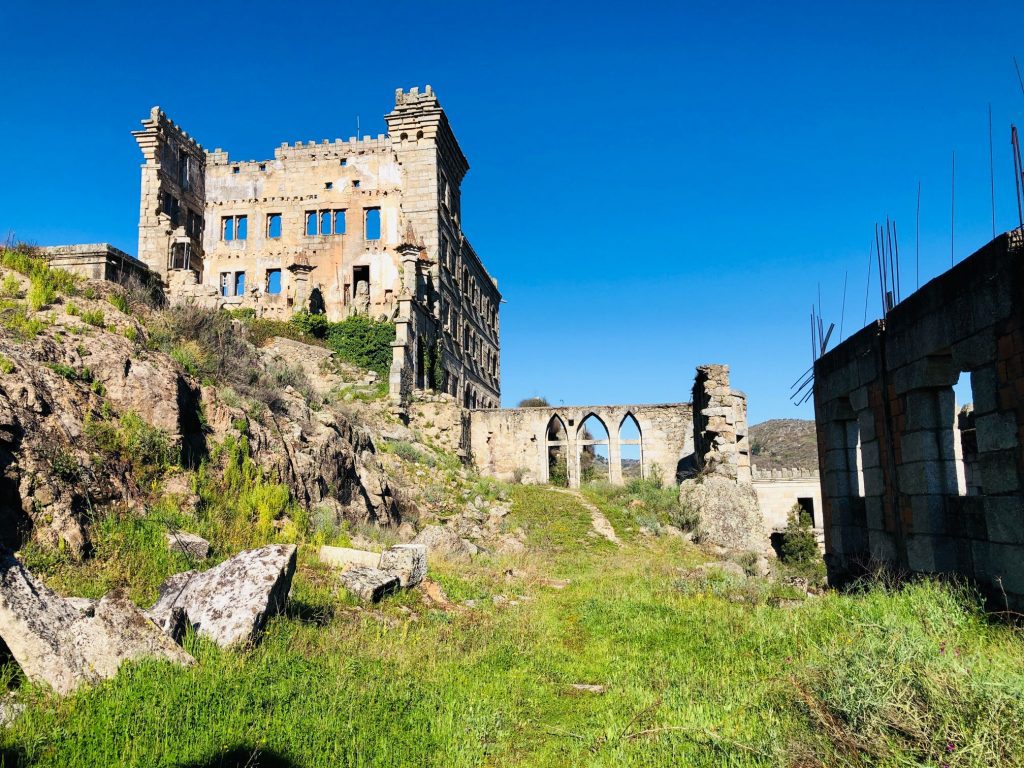


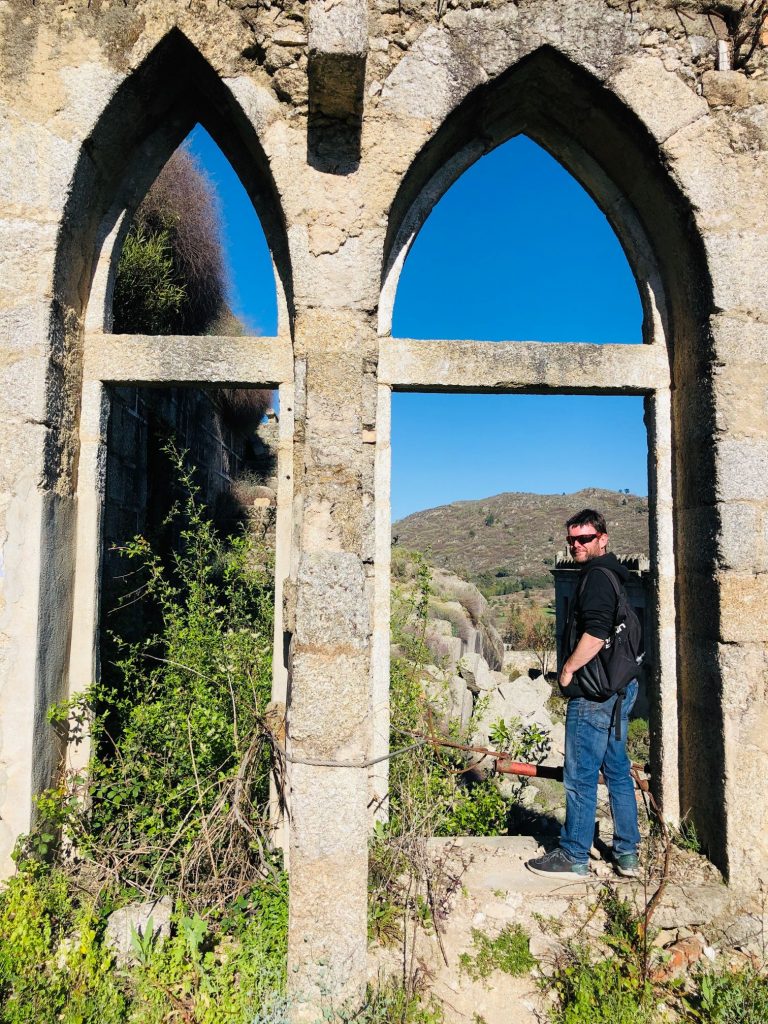


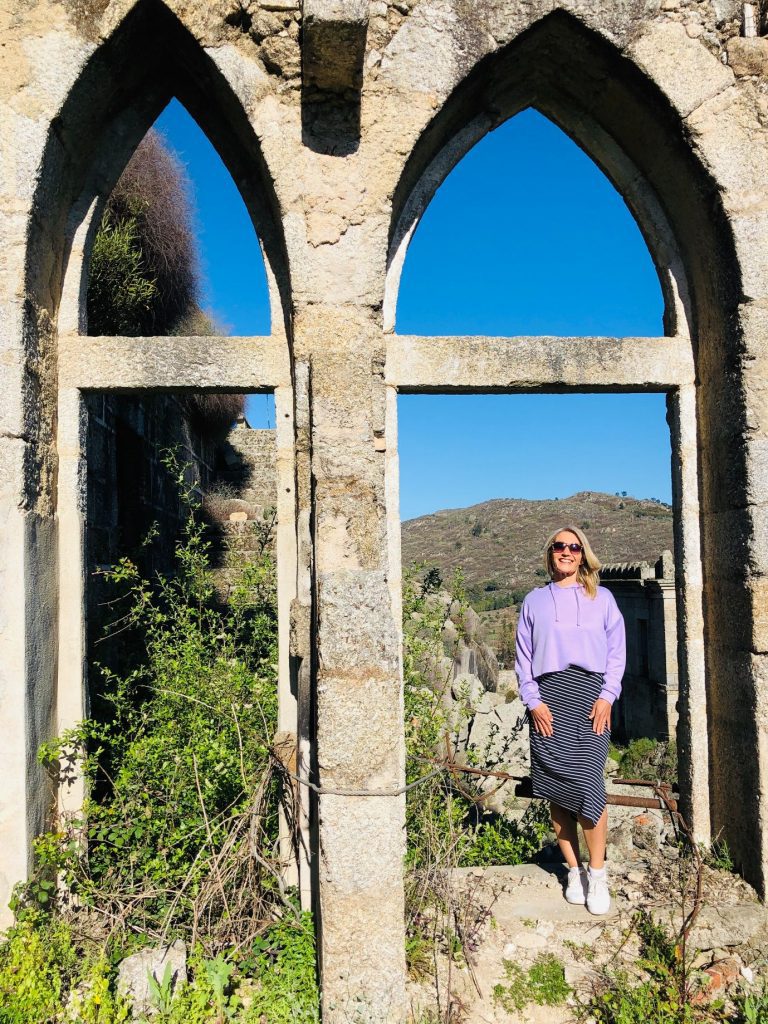


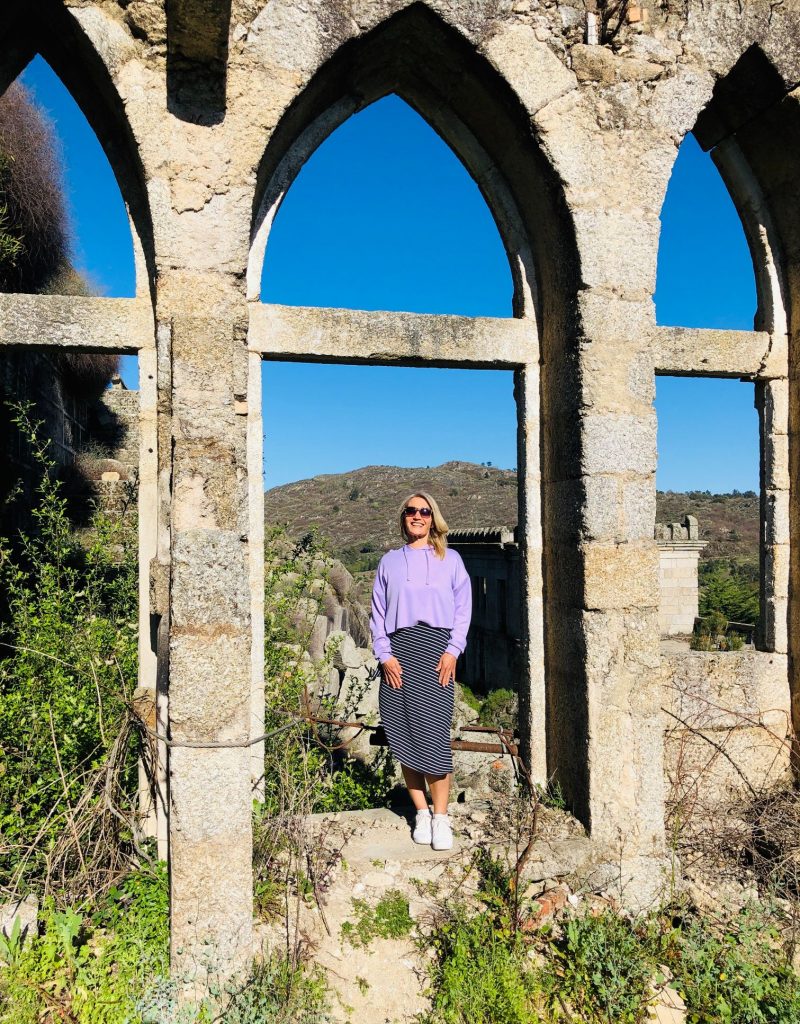


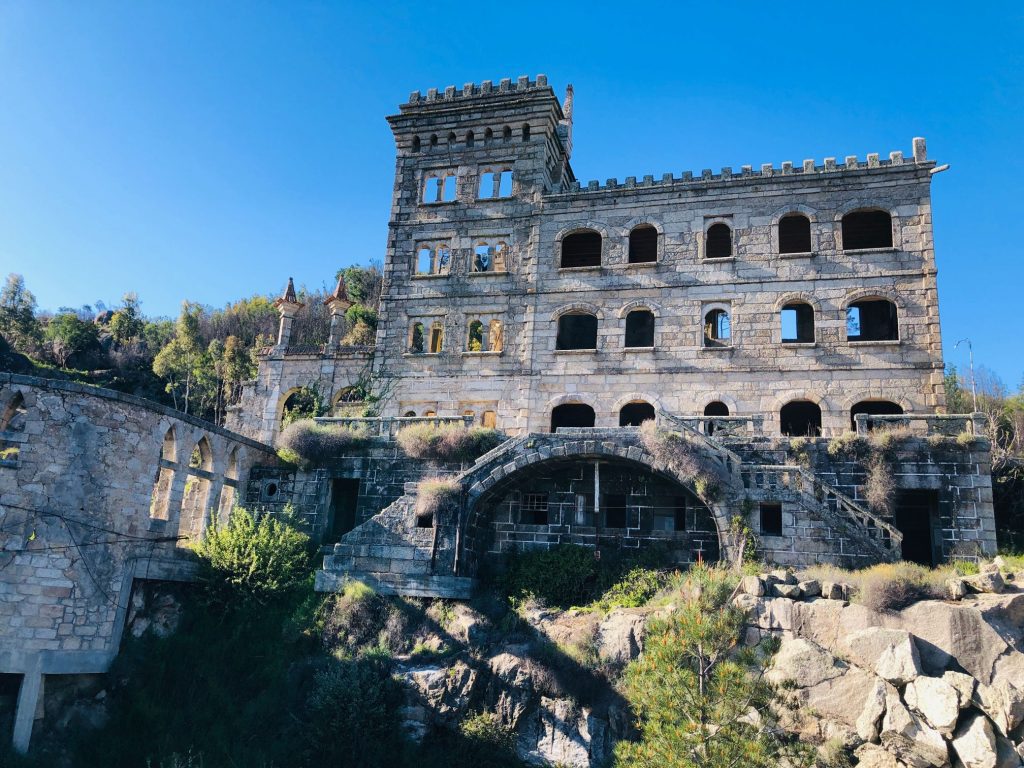


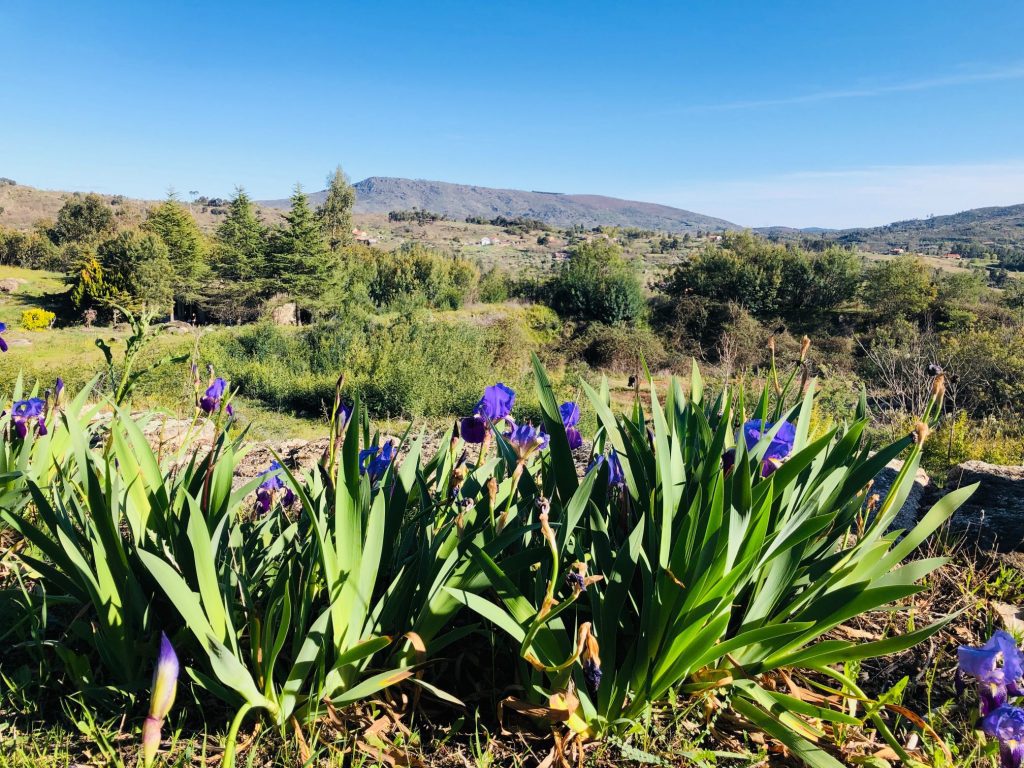


My favourite colour: Purple 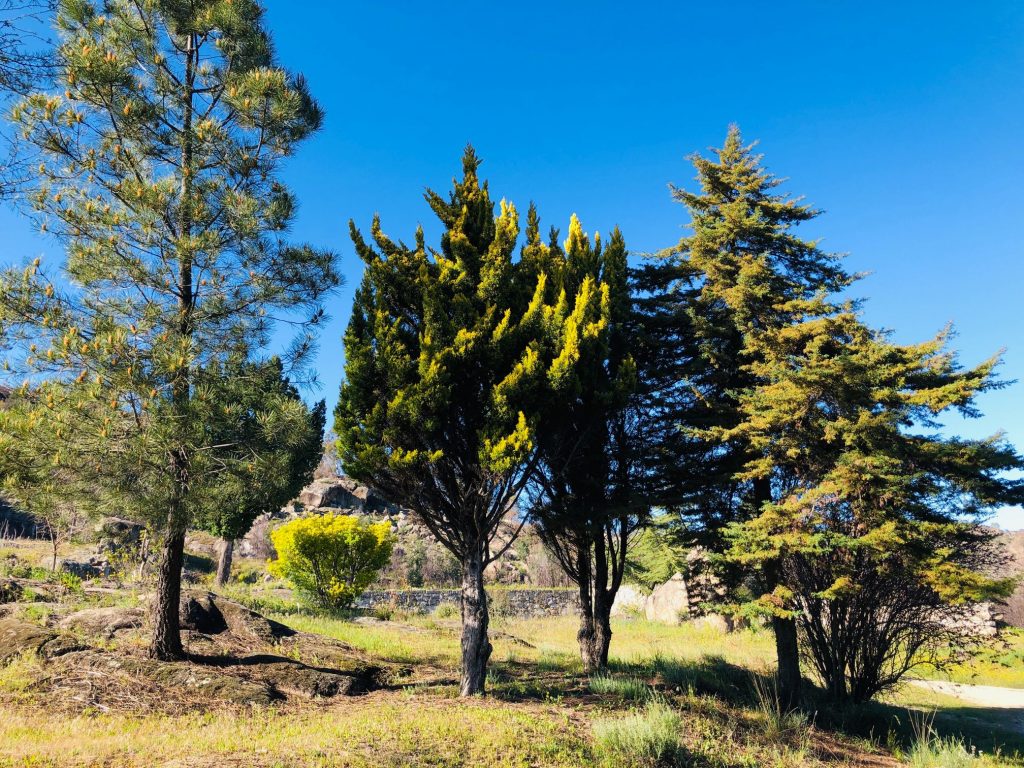


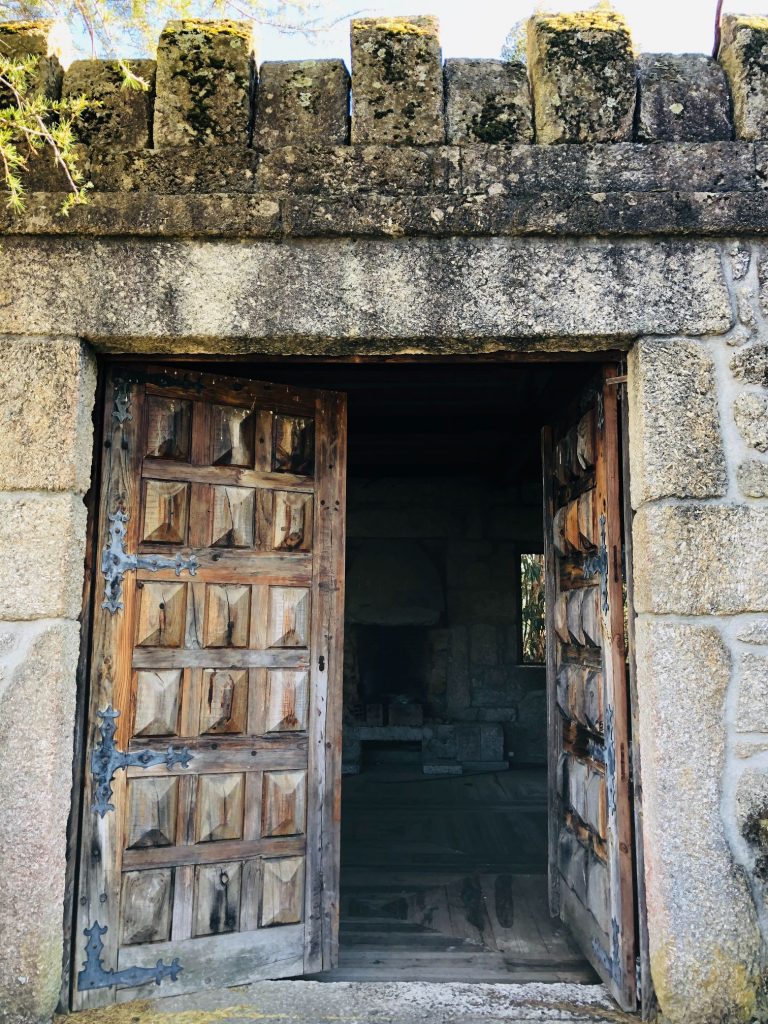


How amazing is this Door! 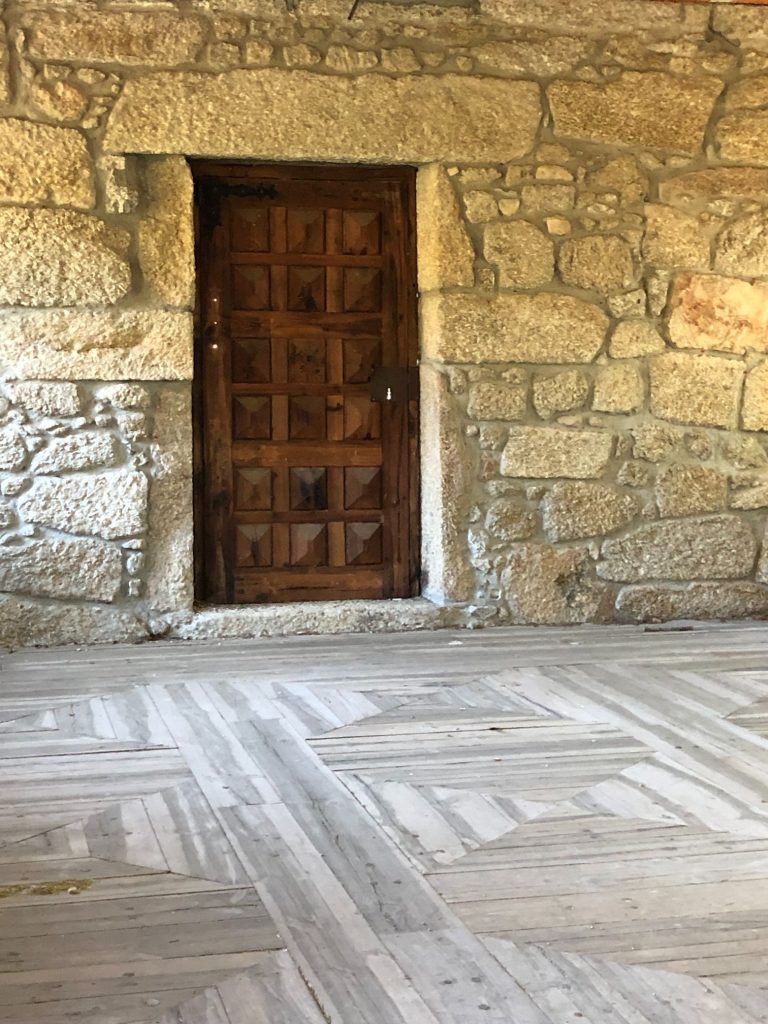


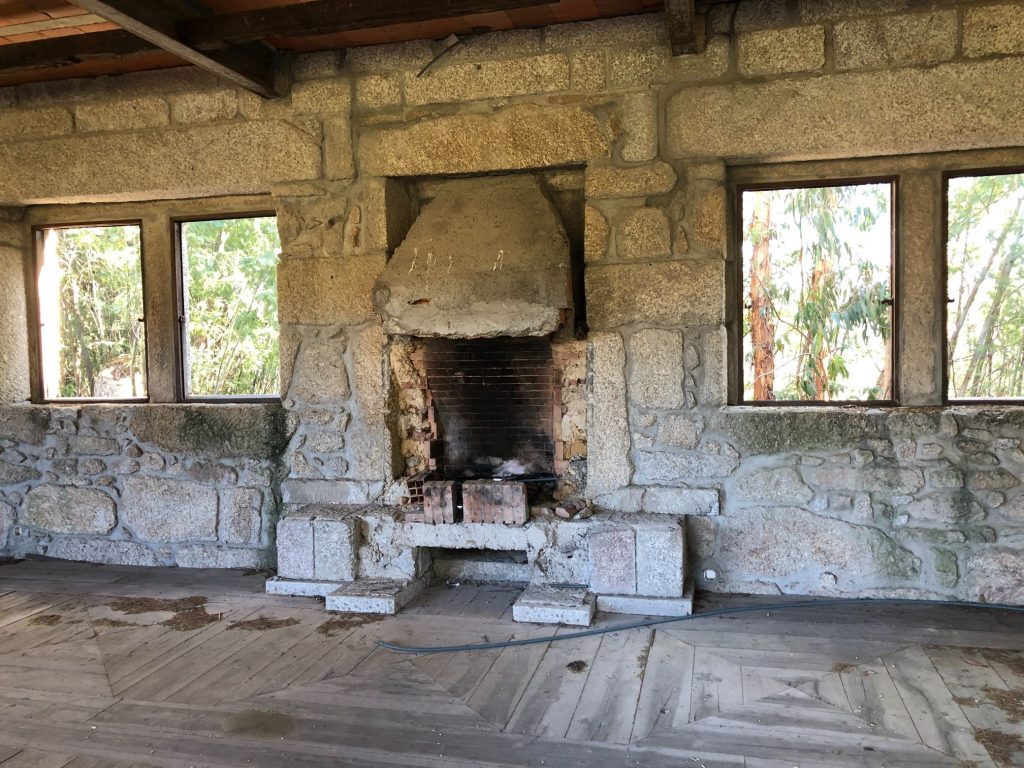


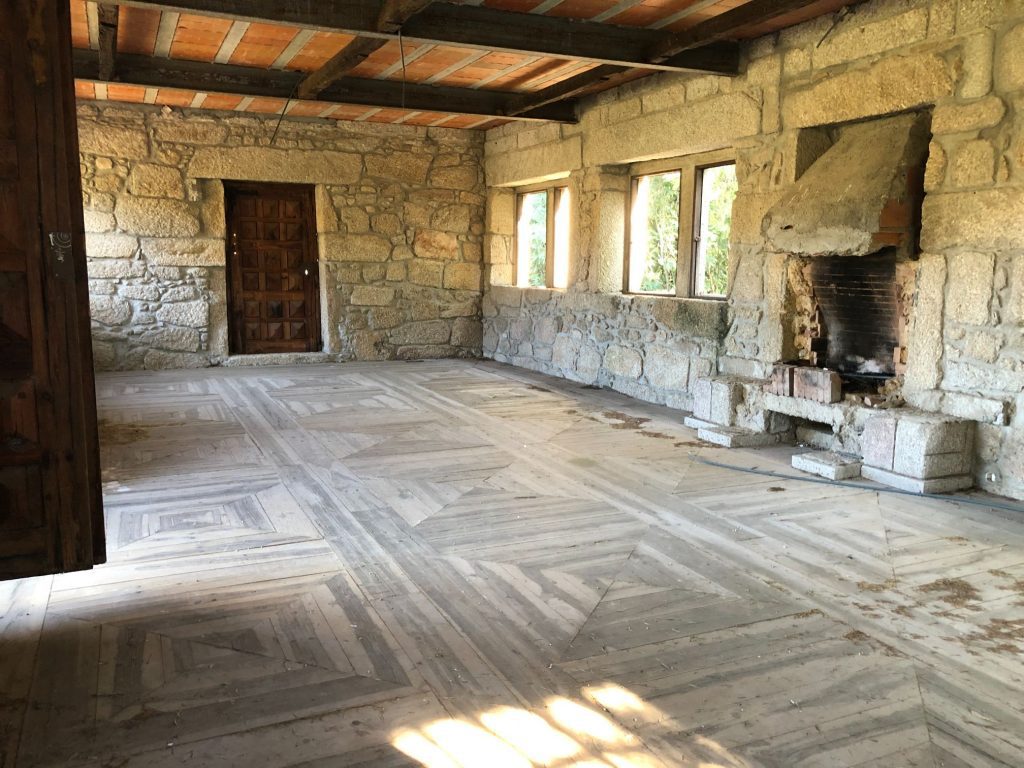


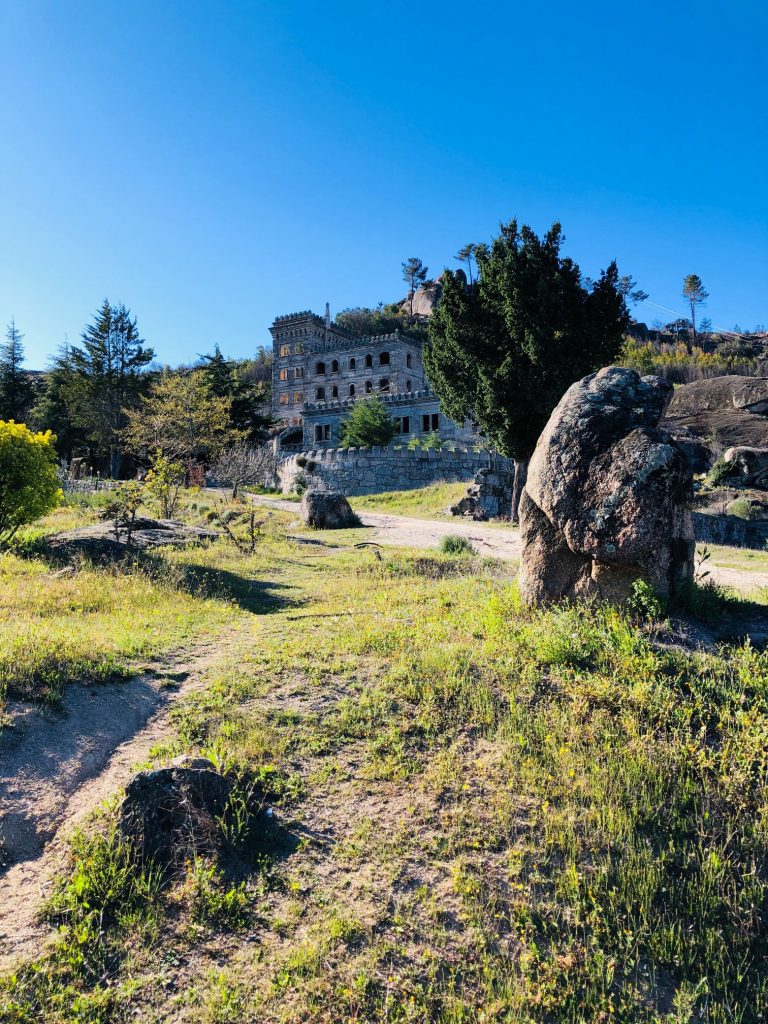


Wonderful Windows – Nature through a Window
Freedom is the open window through which pours the sunlight of the human spirit and human dignity.
I was fascinated by all the windows and doors and some of the well preserved floors. I absolutely loved the broken windows with smashed shards of glass on the window sill creating fabulous patterns and shapes with the bright blue sky and trees peeping through the exposed jagged sharp edges and gaps. Even the empty bottle of Sagres beer on the window ledge made me smile. It’s a work of art worthy of a Turners prize! Well if Tracey Emin’s soiled bed complete with skid marks on the sheets, menstrual knickers, used condoms and empty bottles of vodka on the floor can win an award then in my eyes this window definetely deserves a prize (ha ha).
Art and Graffiti
I had to laugh at the graffiti which says “I love Carlos” as this is my ex husbands name. I loved the artwork especially the bird.
Golfe de Sortelha
I was intrigued to explore the insides of the building and amazed at how some of the floors are well preserved. We found this Golf sign and it’s a crazy coincidence as the person who bought the property at auction had elaborate plans to build a state of the art hotel and golf course. I suck at golf as my eyesight is poor but I challenge anyone to a game of crazy golf because it’s usually located at the seaside with the opportunity of fish & chips followed by candy floss which always gets stuck in my hair (ha ha).
Dramatic & Dynamic
I just had to make one photo black and white as I think it reinforces the emotional impact of the whole place and looks so dramatic, a bit like me (ha ha).
Health & Safety (Out the Window)
I did look at these precarious angelic towers and all the fallen debris surrounding me and think please don’t topple on top of me (ha ha). If this hotel ruins was located in the U.K it would be closed off for sure due to health and safety as some drunken youth would cause havoc or kill themselves. I just love how you can wander freely at ones own risk around all these unique places of interest. I slipped on gravel climbing up an embankment and very nearly did the splits, I was 90% there! On a positive note I never knew my legs opened that wide and I think I have found myself a new party trick (ha ha). Luckily for me hubby was up close and personal and literally caught my fall by grabbing my fat ass and pushing it back up with all his strength (ha ha). I did see a couple all smartly dressed and the lady was wearing high heels. That would be a suicide mission for me, I had enough difficulty in trainers. She spent most of her time on her mobile phone getting in the way of me trying to take epic photos. If I knew the Portuguese words for “Look at the sky more than your phone” I would have shouted it at her then ran back to my car as fast as my stumpy sausage dog legs could take me (ha ha). They drove right up to the entrance in their fuel guzzling 4×4, need I say more! We ventured inside many of the rooms which was exciting yet scary as I was concerned the floors might collapse beneath me.
Scary Selfies
You can probably gather by now that we still have not got to grips with our new selfie stick. We did try and these believe it or not were the best of the bunch (ha ha).
Overview of Hotel das Águas de Radium – Creepy yet Compelling
We loved exploring the ruins of Hotel das Águas de Radium. It really is an abandoned paradise and would be a cool place to renew our wedding vows if we make it to 10 years (ha ha). Hubby really enjoyed himself and he took tons of photos which is unusual for him. It was very surreal clambering around the ancient crumbling skeleton of a building, shrouded in mystery and an erosion of time. I couldn’t help getting a glimmer of sadness wash over me. This place has such potential for an investment project if you have deep pockets. It definitely is one of the most fascinating abandoned ruins that I have explored in Portugal. I have not visited anything like this before, it certainly is a unique find. It would make a great setting for the perfect gruesome horror movie packed with ghosts and spirits. Creepy yet compelling, what an enigmatic place!
Pizza and the Pooch
We stopped at a local Pizzeria (Pizzeria Flor de Lis) on the way home and enjoyed a fantastic pizza (my favourite food). There was a private function so we had to order a takeaway and couldn’t eat inside the restaurant which was a shame. Luckily for us hubby checked the pizza before we left as they had not cut it into slices. We asked them to cut it up for us and I overcame my social anxiety and asked for paper napkins and 2 cups. The lady initially asked us if we wanted cups then gave us 2 glasses which we obviously couldn’t take away with us. They only had coke zero in a huge bottle and eagle eyed me spotted disposable cups behind the bar and I always say “If you don’t ask, you don’t get”. The lady charged us 20 cents each for the cups which at first I thought was a little cheeky after spending over €14 but in hindsight they are strong recyclable cups so the frugal me has washed them out and I will keep them in the car for other future beverage emergencies. The pizza was delicious and I am getting used to the bizzare toppings in Portugal and embracing all the weird and wonderful e.g. boiled eggs and peas. The only crazy topping you will find in the U.K is pineapple which I actually quite like now. We googled the nearest picnic park and found one which was just a couple of minutes drive away. We enjoyed eating our pizza in the middle of a deserted forest and I found a dog like I always do and just about resisted taking it home only because it had a collar. This doggie loved me and the feeling was mutual. Unfortunately he arrived 5 minutes after we ate all the pizza. Hubby took a while picking off all the olives and I took one for the team and ate all 11 of them (ha ha). We said our farewells to the little friendly doggie and embarked on the long journey home.
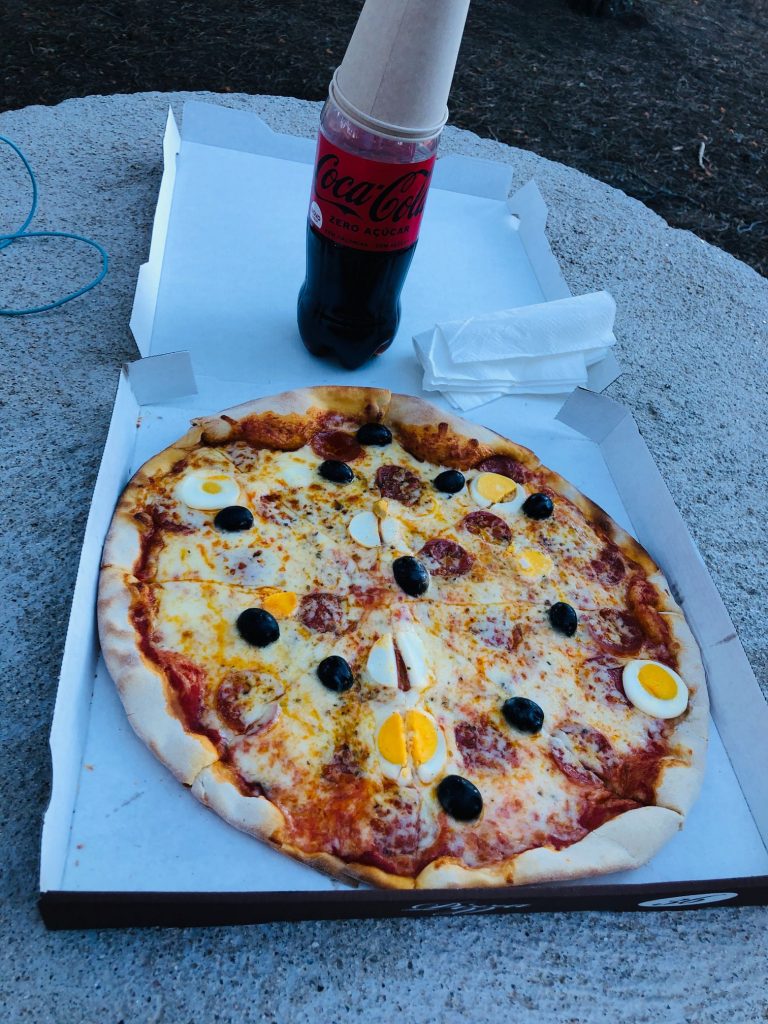


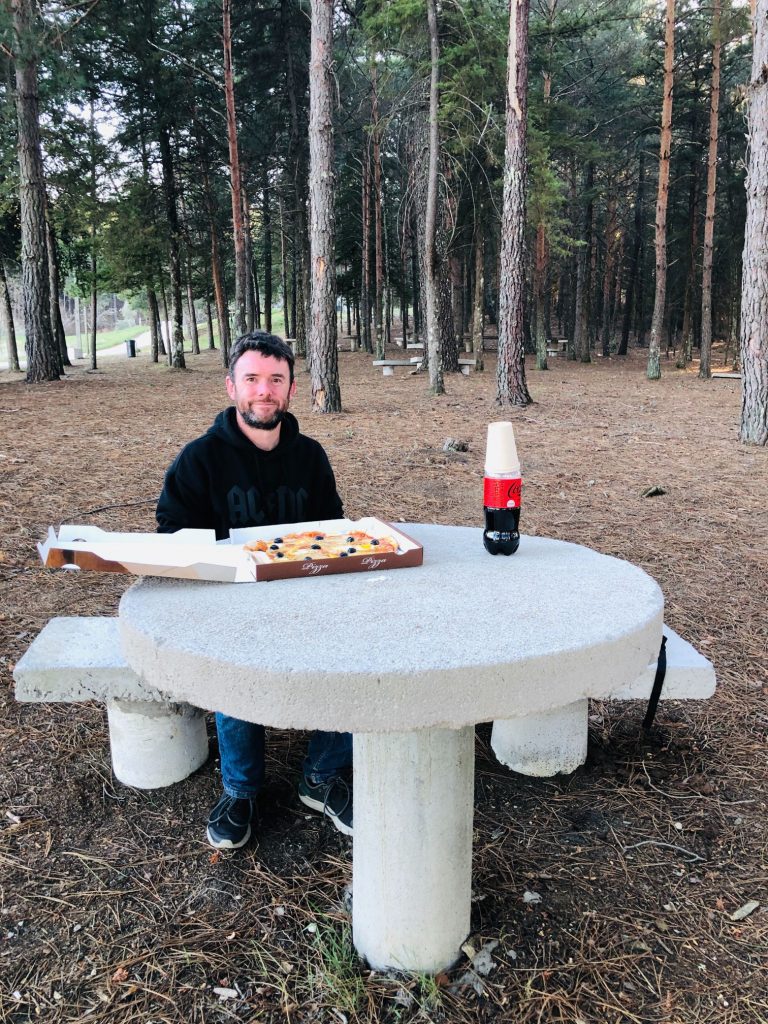


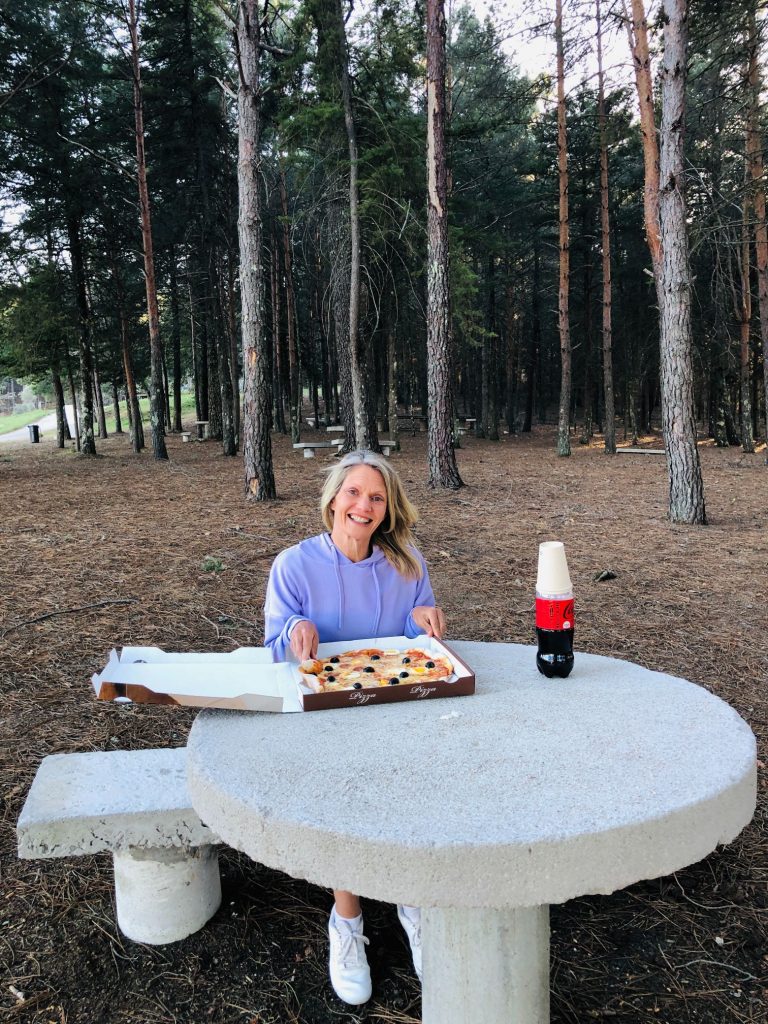


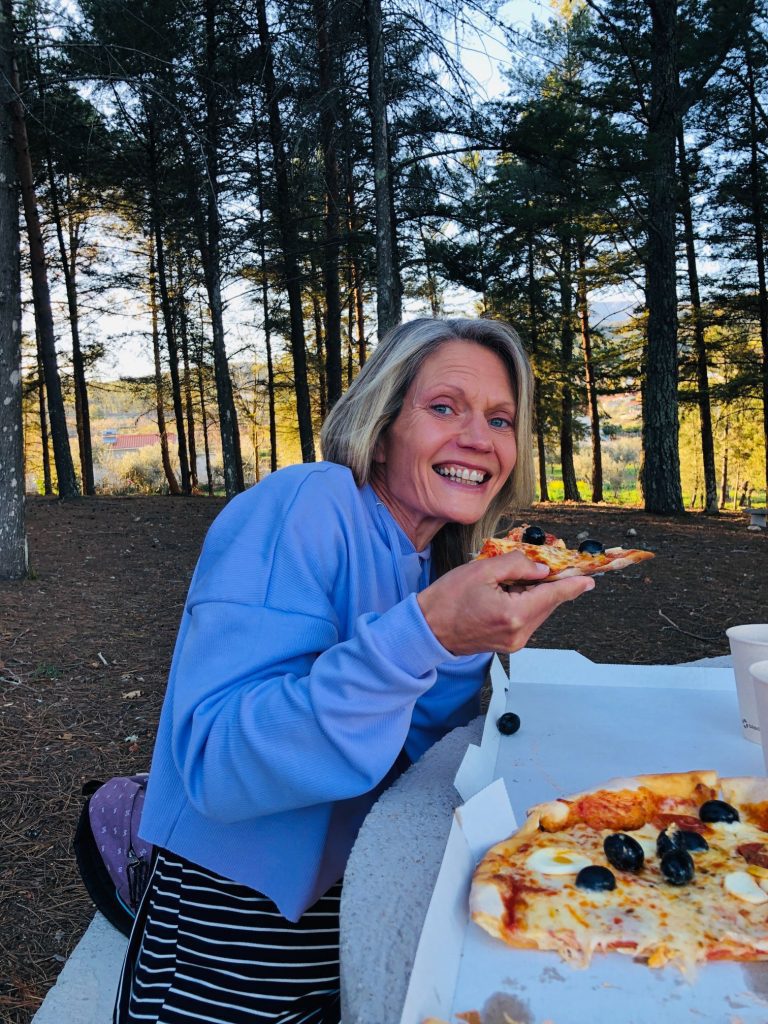


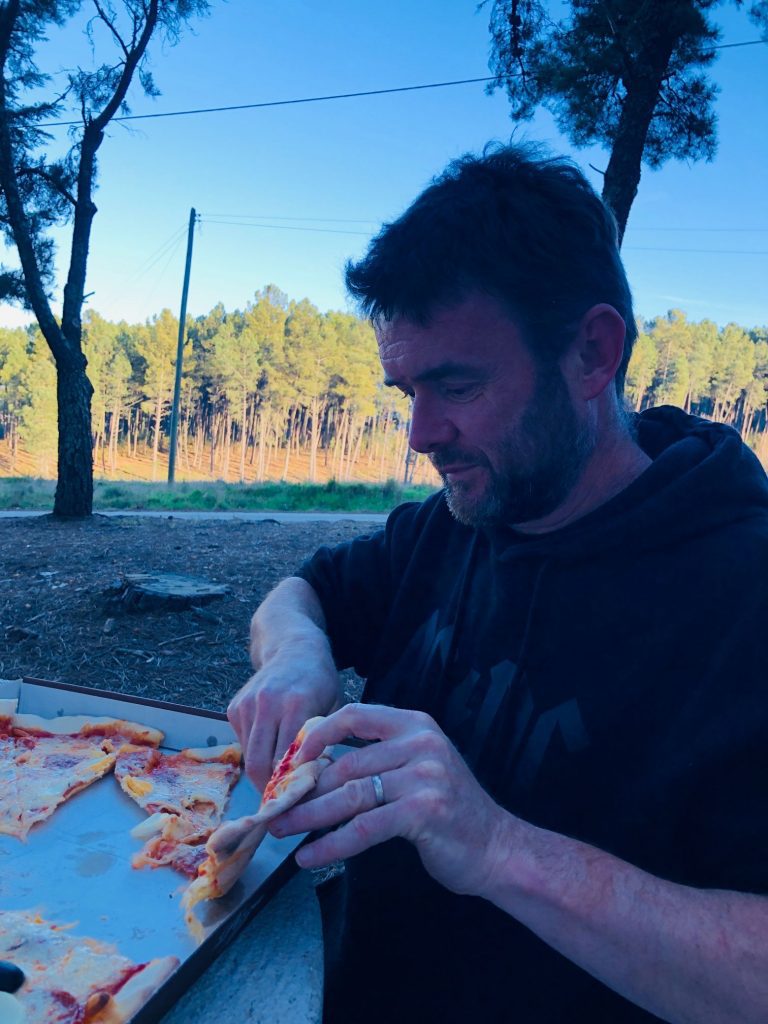


Hubby removing every last olive with precision (ha ha) 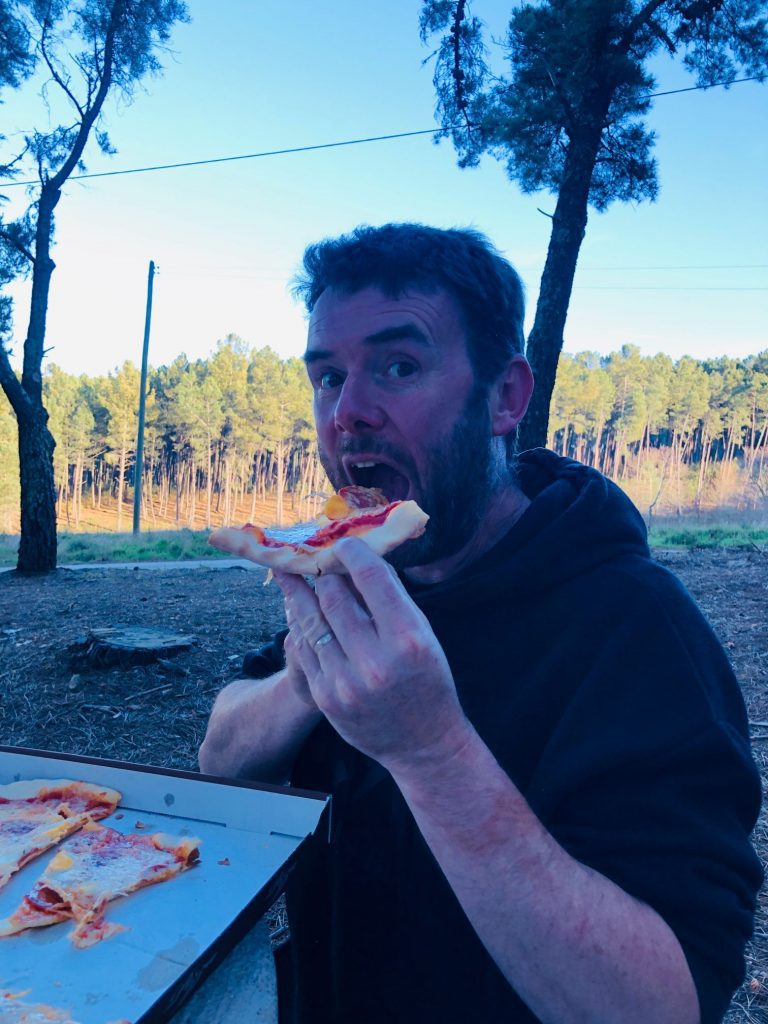





So sad the pizza was all eaten 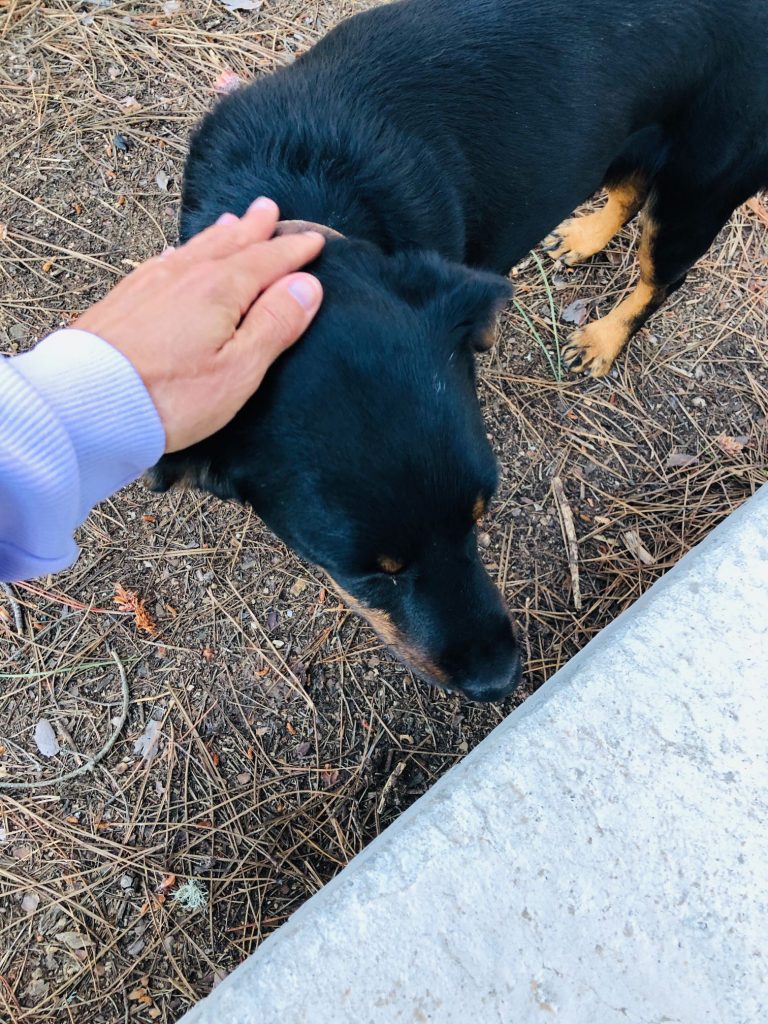


My New BFF 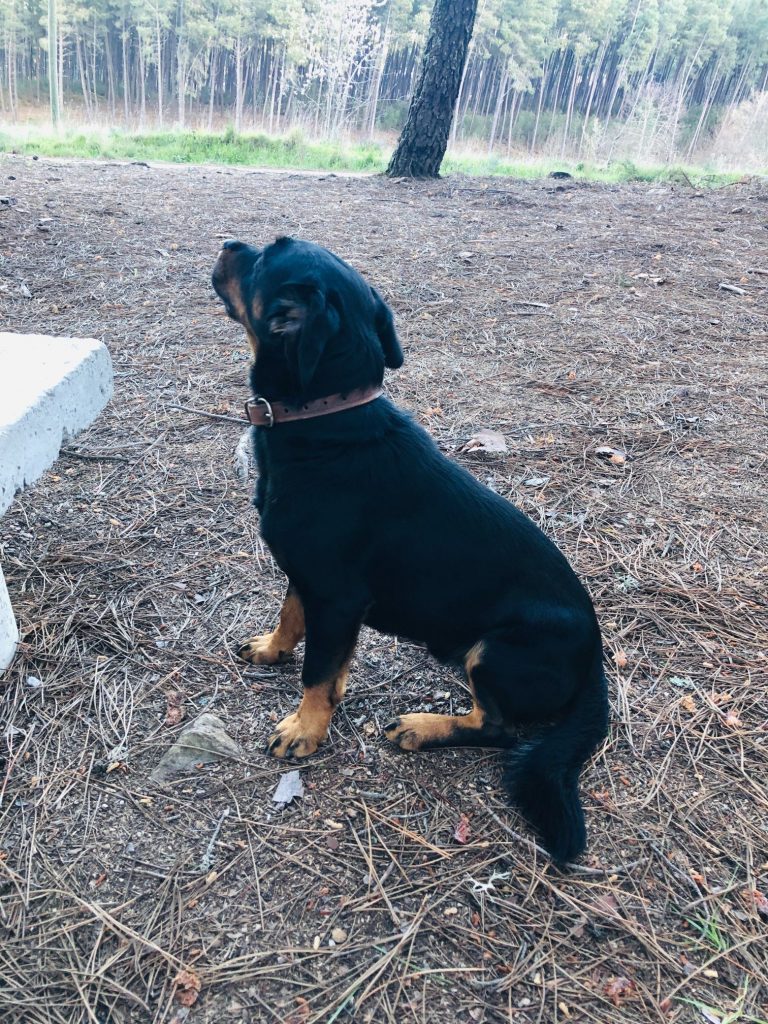


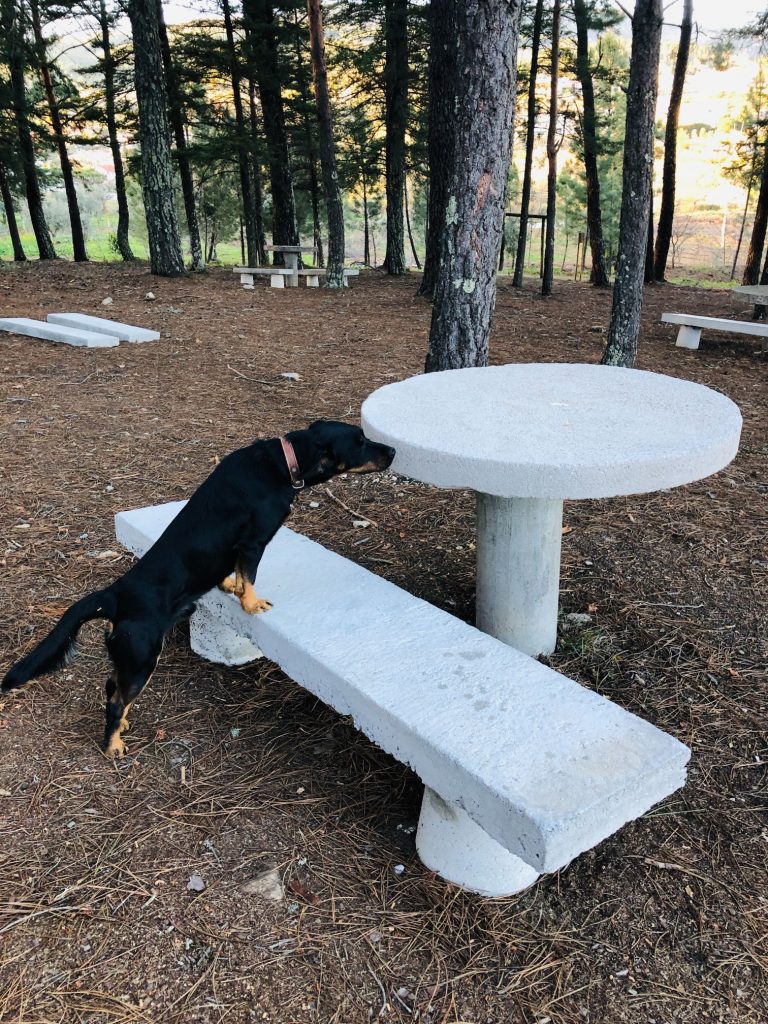


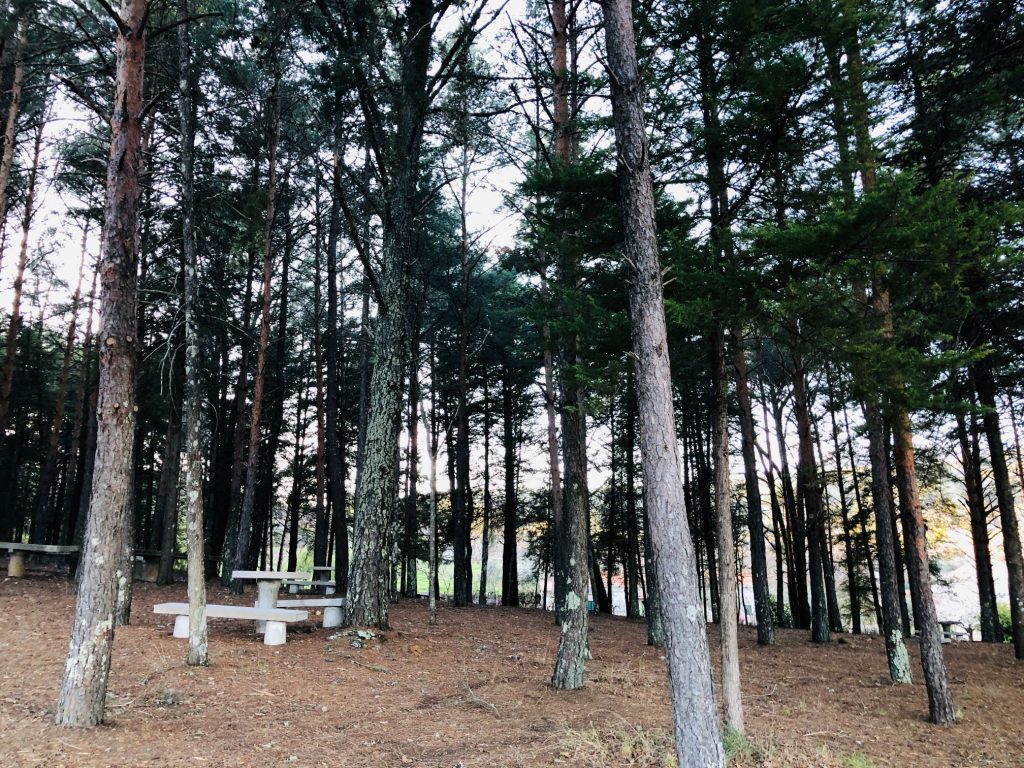


The 7 Year Itch – Wedding Anniversary Gifts
The traditional wedding gift for 7 years is Copper and Wool, while desk stationery sets are the modern gift. We decided not to bother with cards this year and to buy each other a loaf of chocolate bread instead (ha ha). Hubby bought me a surprise gift of a cute little sheep which I named Sindy the Sheep. I probably should have called her Sortelha, Ella for short. We also indulged in our liquors that we previously bought in Covilhã. The 7 year itch is a popular belief that happiness in a marriage declines after around 7 years. I have also read statistics on divorce (don’t ask me why) and apparently years 7 and 8 stand out as the most common years for divorce. I can’t speak for hubby but this myth is the absolute opposite for me as I feel our relationship and connection has grown stronger since we relocated to Portugal and we are pretty much living the dream. We are now at the 7 year marker and the only itch I have is from mosquito bites (ha ha). Although if he were to buy me the modern gift of a desk stationery set I would have to kill him or at least divorce him (ha ha). It’s not easy to have an argument with hubby as he is so mellow and laid back. I can’t even recall any argument in all our time together. We obviously have mild disagreements which is healthy in a partnership but mostly we compliment each other’s personality so well. Usually we embark on lengthy debates and discussions rather than arguments until I get to the stage where I phase out and blame my menopausal brain fog. Our last debate was whether it was acceptable to pay €1.60 for a can of baked beans, apparently the answer is a big fat NO, hence why I recently made my own baked beans from scratch and they were the bees knees! Apparently a bee’s knees is also a cocktail as well as a term for excellence. I might have to try one of those at our home bar (ha ha).
We have a standing joke between us that if one of us dies the other can go on and find happiness with a new soulmate. I have already picked out hubby’s 3rd wife. There is not much choice in our small village and the average age is about 70 but I have chosen a friendly lady who works her ass off and carries a bucket full of cabbages so is fierce and strong. She also has a pair of leopard print leggings and wears them with her tabard so I think she has a wild animal streak like me and for all these reasons I give them my absolute blessing (ha ha). Hubby won’t choose a man for me so if the worst was to happen I need to source my own 3rd husband. I’m so indecisive so I will probably just grow old(er) alone and collect more chickens and bunnies for company (ha ha). I was full from my pizza so we ended up taking the chocolate bread home and enjoying it there after our dinner had digested a bit. Here we are happily indulging in the best ever tasting Pão. The 3 of us then hit the retro lounge bar (not forgetting Sindy the Sheep). Sindy is a light weight! I then got the shits at 1am from all the gluten (ha ha).
Sindy the Sheep
How awesome is Sindy the smiling sheep!



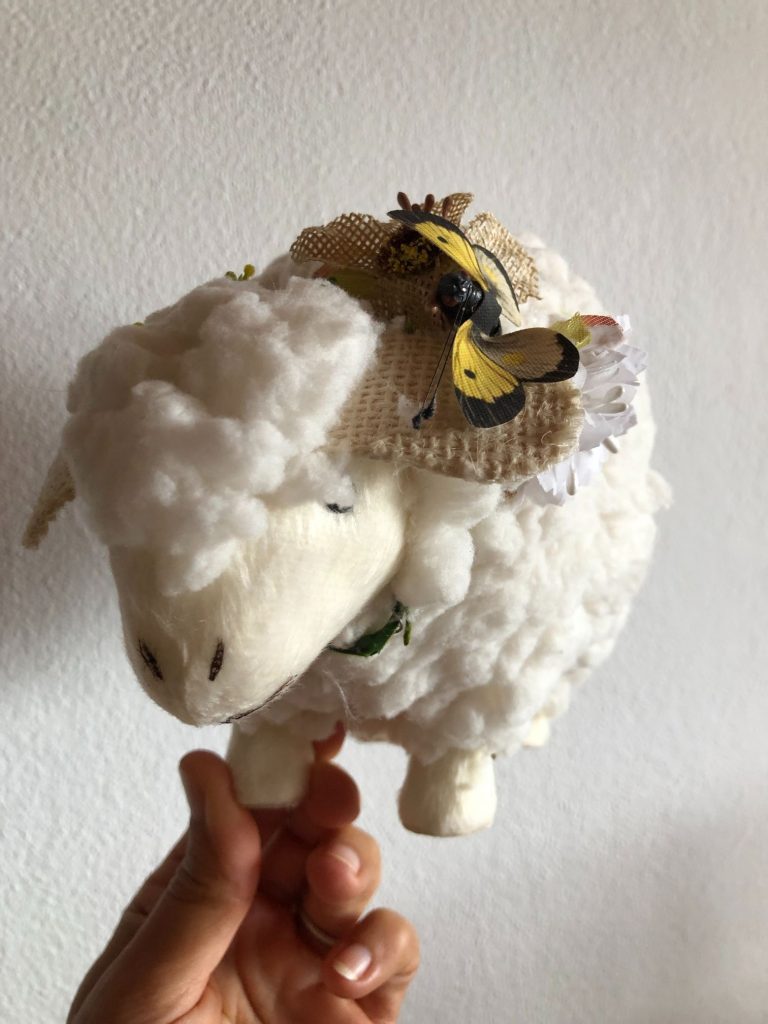


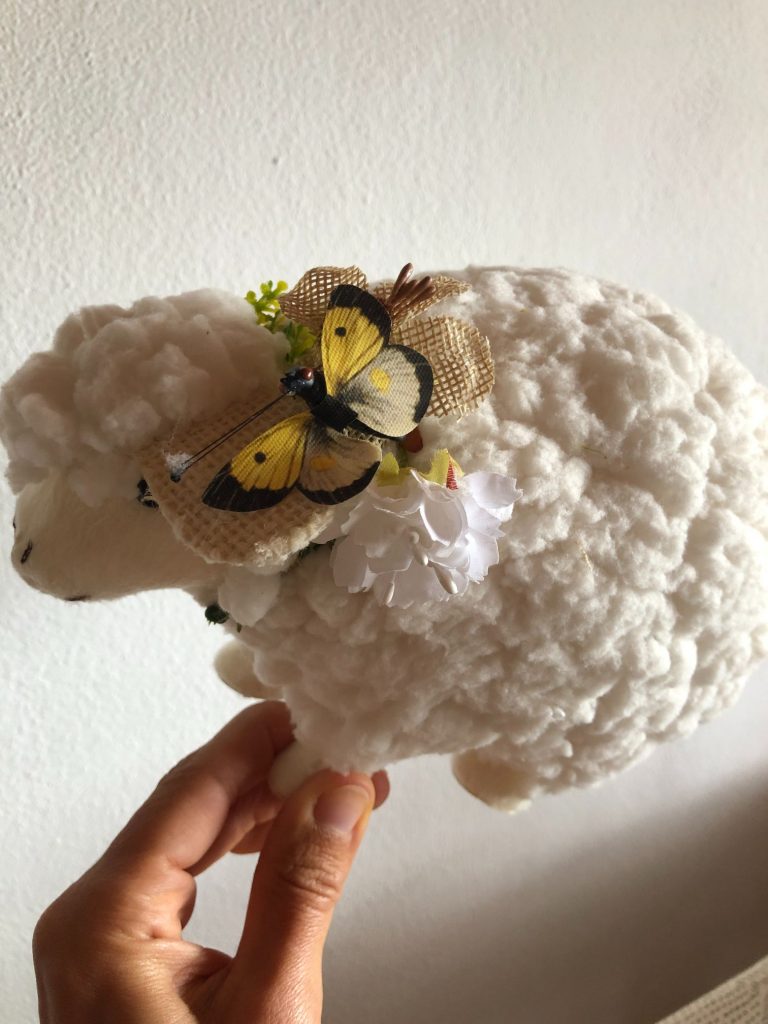


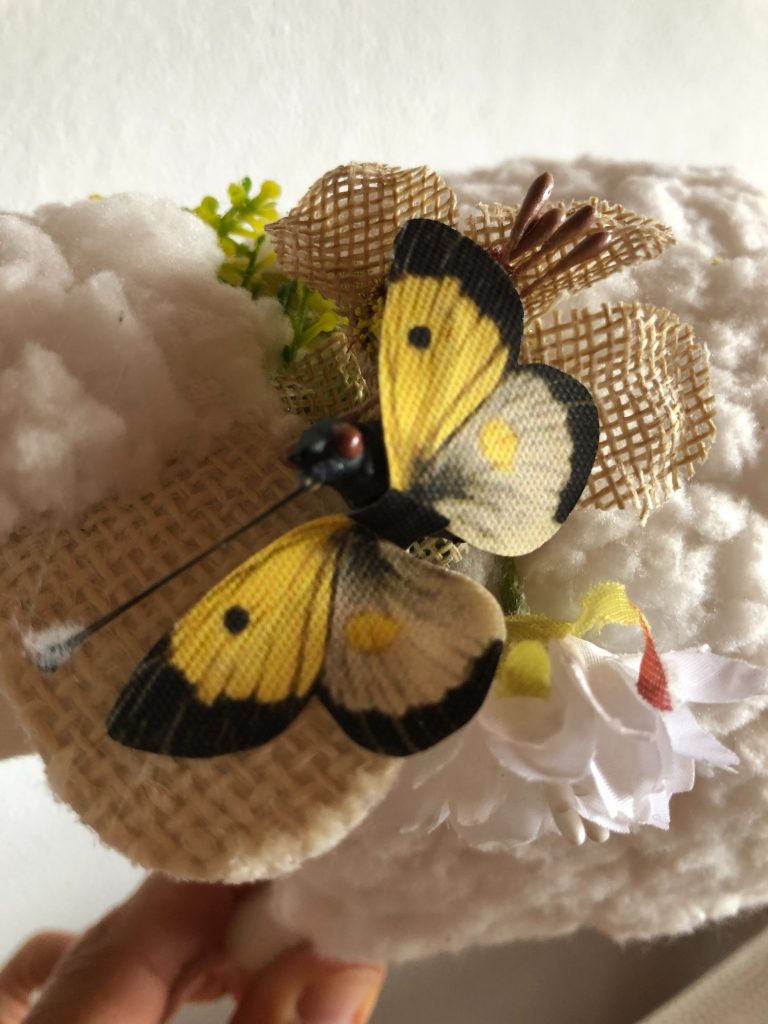


Cute yellow Butterfly
Fashion Faux Pas
I just realised that I am wearing the same dress as my last birthday trip. I wanted to wear a dress for our anniversary and all my other frocks are short, sleeveless or don’t match with white trainers. I didn’t want to freeze or expose my knickers to the world, it’s often cold and windy so high up in the mountains. I also wanted to wear comfy clothes for the long car journey and sturdy footwear for all the walking and climbing up castle walls. I think I need to invest in some more casual dresses at some point. I was going to wear my floral cotton trousers but someone (not mentioning any names) said they looked like pyjama bottoms (ha ha). Then I thought I should wear my leopard print dress but after the P.J comment I was a bit worried someone would say I looked like Pat Butcher minus the earrings (ha ha).
Overview of Sortelha – The Medieval Village Frozen in Time
Sortelha was the absolute perfect destination to celebrate our wedding anniversary. The historic medieval frontier village of Sortelha has won an award for the most romantic historic Portuguese village and with its ancient legends of besotted forbidden lovers and kissing stones, it was just surreal and an untouched paradise. The whole village is hidden and protected by the majestic defensive castle walls which makes it such a perfect haven. It is so tremendous and grand, we loved walking hand in hand around the entire circumference of the stone ring of walls that surrounds the village and clambering up to the tower to stand and gaze in awe, savouring the special moment and enjoying the breathtaking panoramic 360 views over Sortelha, the magical mountains and valley below. Such spectacular greenery to marvel at too. The medieval village offers a unique authentic journey into the past and I will not forget this place in a hurry or its crazy atmosphere which made me wish I had access to a time machine.
You can easily view Sortelha in half a day and add on another nearby tourist attraction as there are so many other local delights. I will definitely return in the near future as there are other nearby places that I want to explore but just didn’t have the time. I wish there were more than 24 hours in a day! I loved the fact that it was not overrun by tourists and although we were not the only ones there it was very peaceful and tranquil. I am already planning in my head my next adventure of a day trip at Easter to the Portuguese historic village of Mansanto.
We fell in love with the characteristics of the medieval era which are still present today. It was an epic day trip with many picture perfect moments and reminded me a little bit of our wonderful 2021 trip to Óbidos. We both agreed that Sortelha is one of the most beautiful and picturesque enchanting historic villages we have ever visited and definitely our favourite so far. A true small fortress with impressive walls, a medieval village frozen in time. Such a great combination of history and culture where nature and architecture overlap in a pretty unique way. An absolute stunning village bursting with history and culture. I felt like I was in my very own childhood fairytale with kings, queens, brave knights and fair maidens. Such a romantic place to celebrate our 7 year wedding anniversary, simply heartwarming, magical and a perfect paradise for lovers.
Credits
Thanks and credits to: Aldeias Históricas de Portugal and Sabugal Municipal websites, where I gained a lot of my factual information and History of Sortelha.

